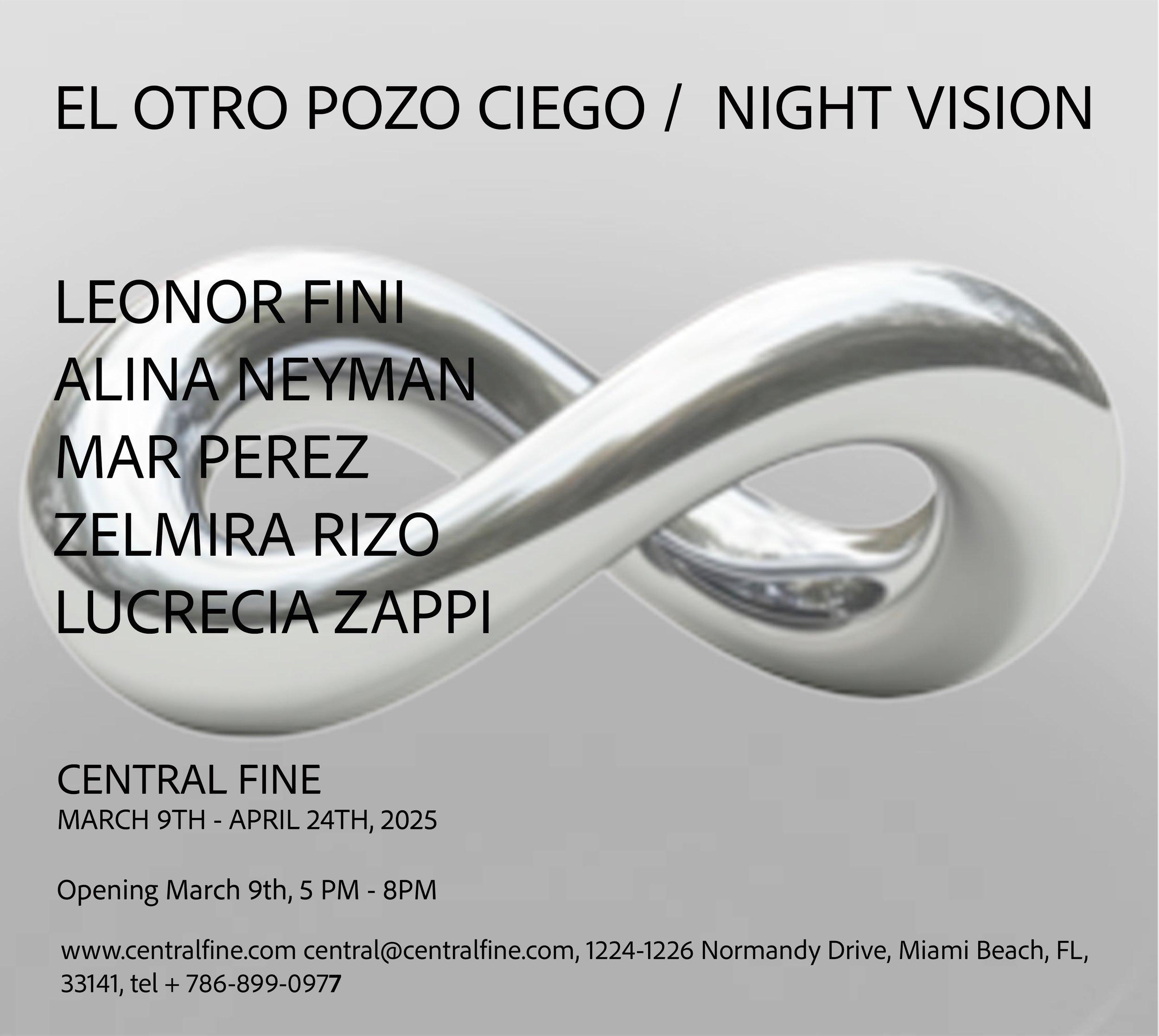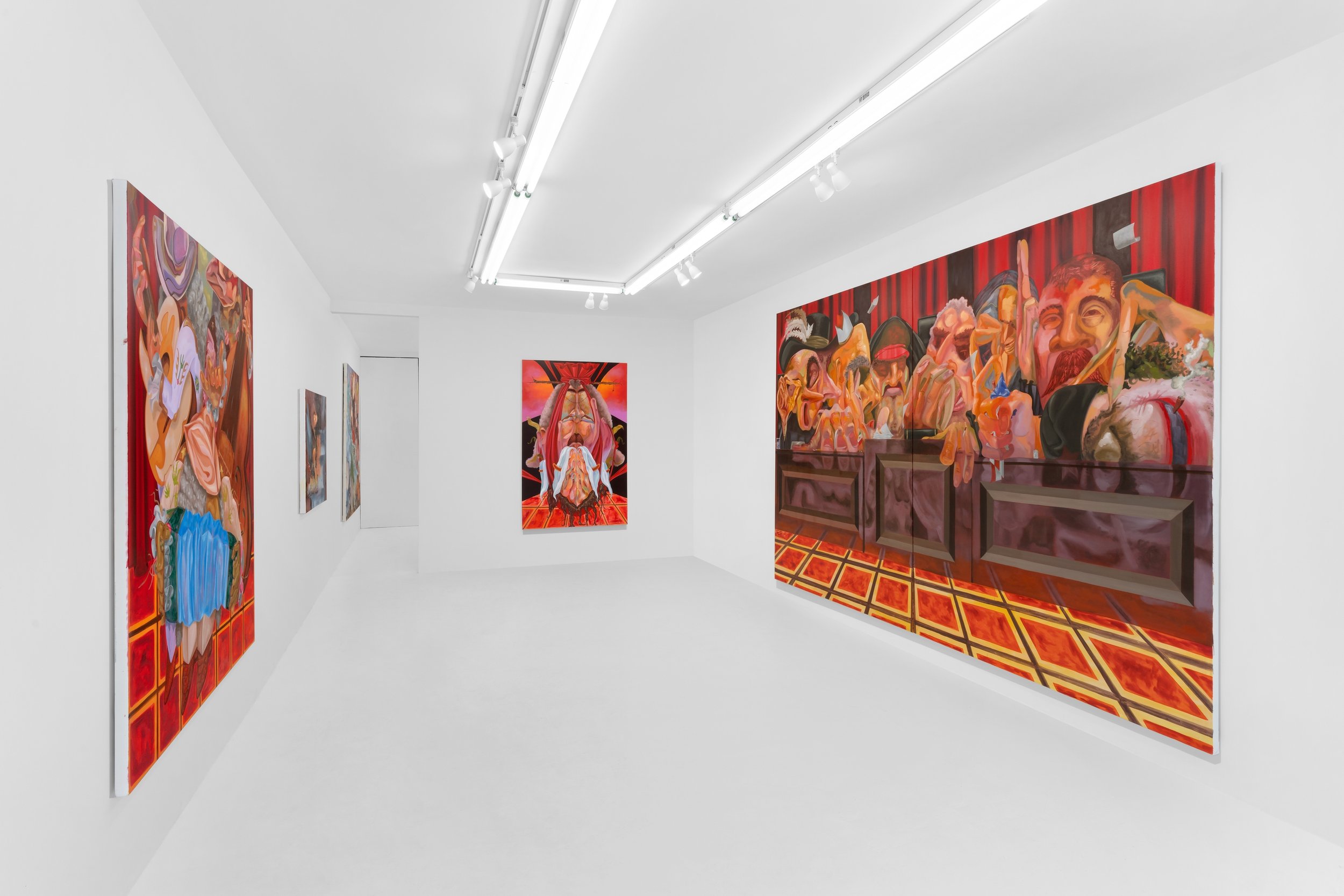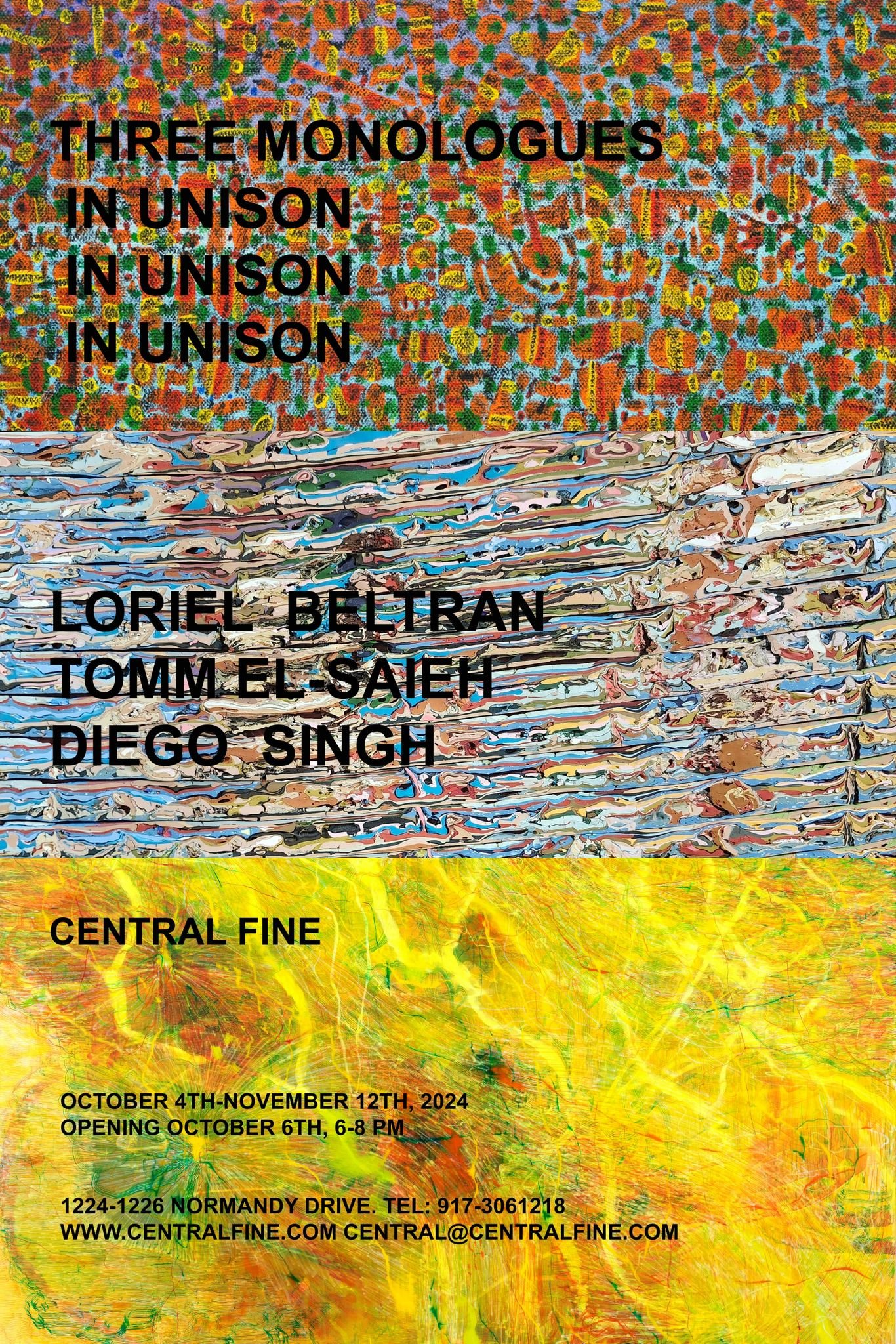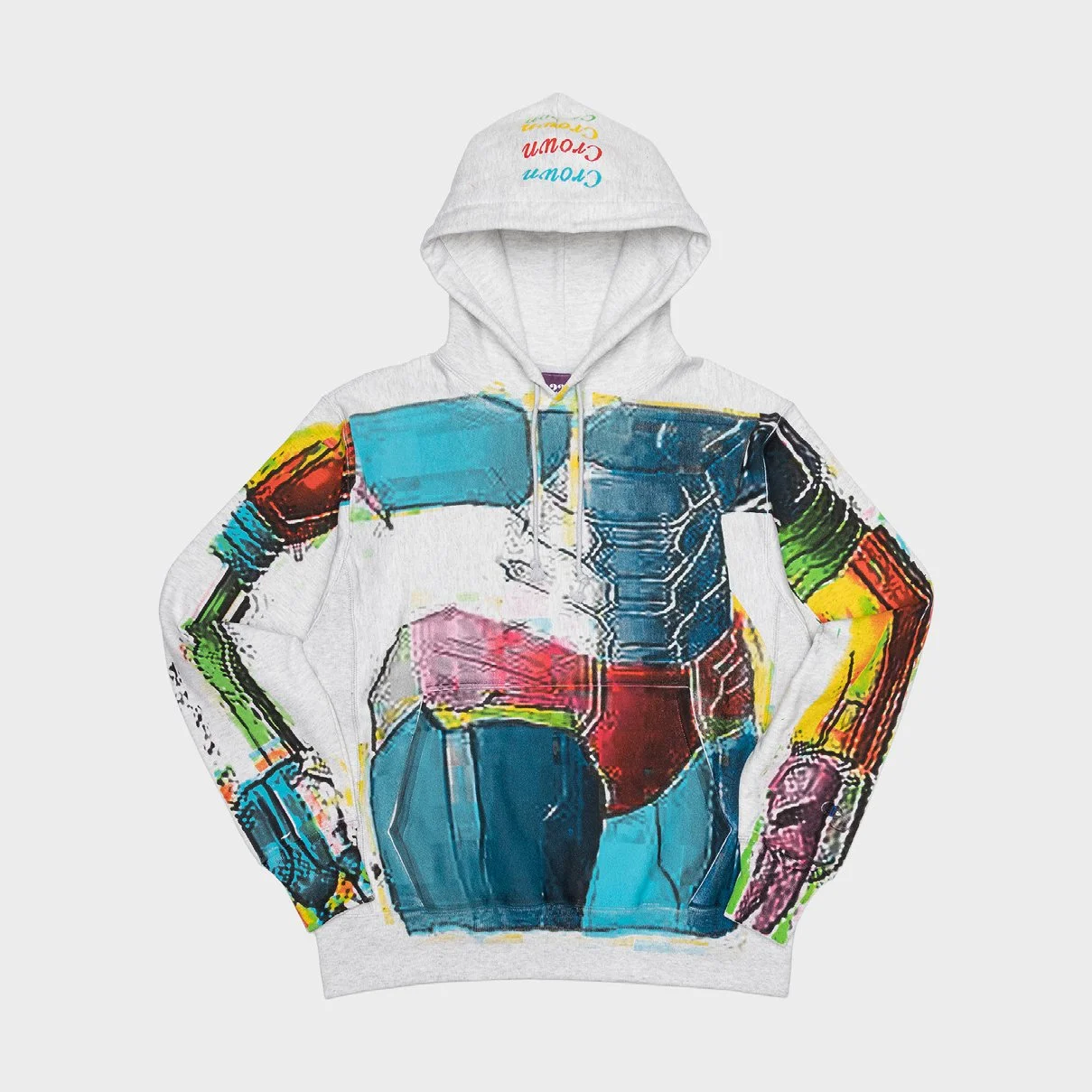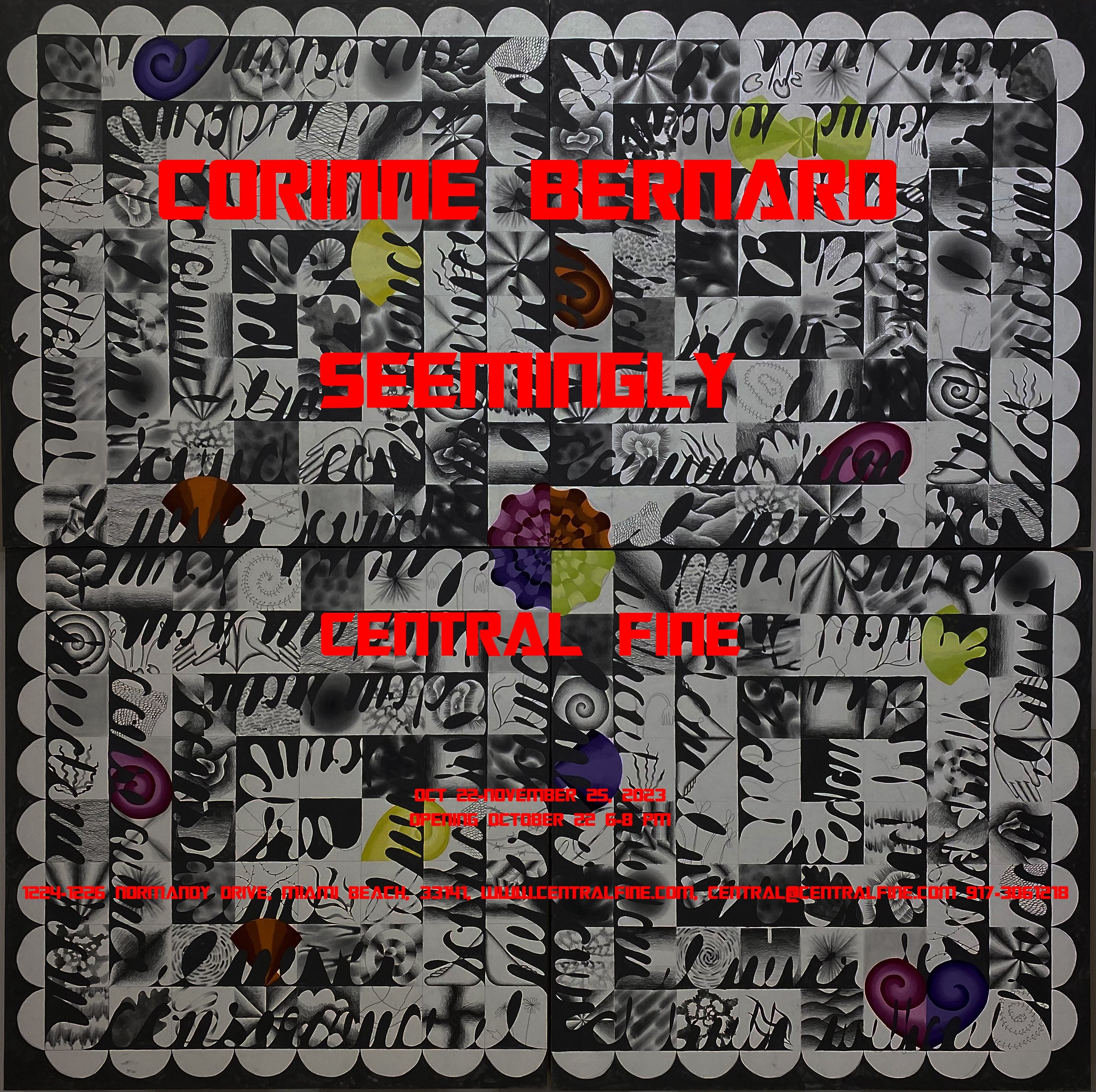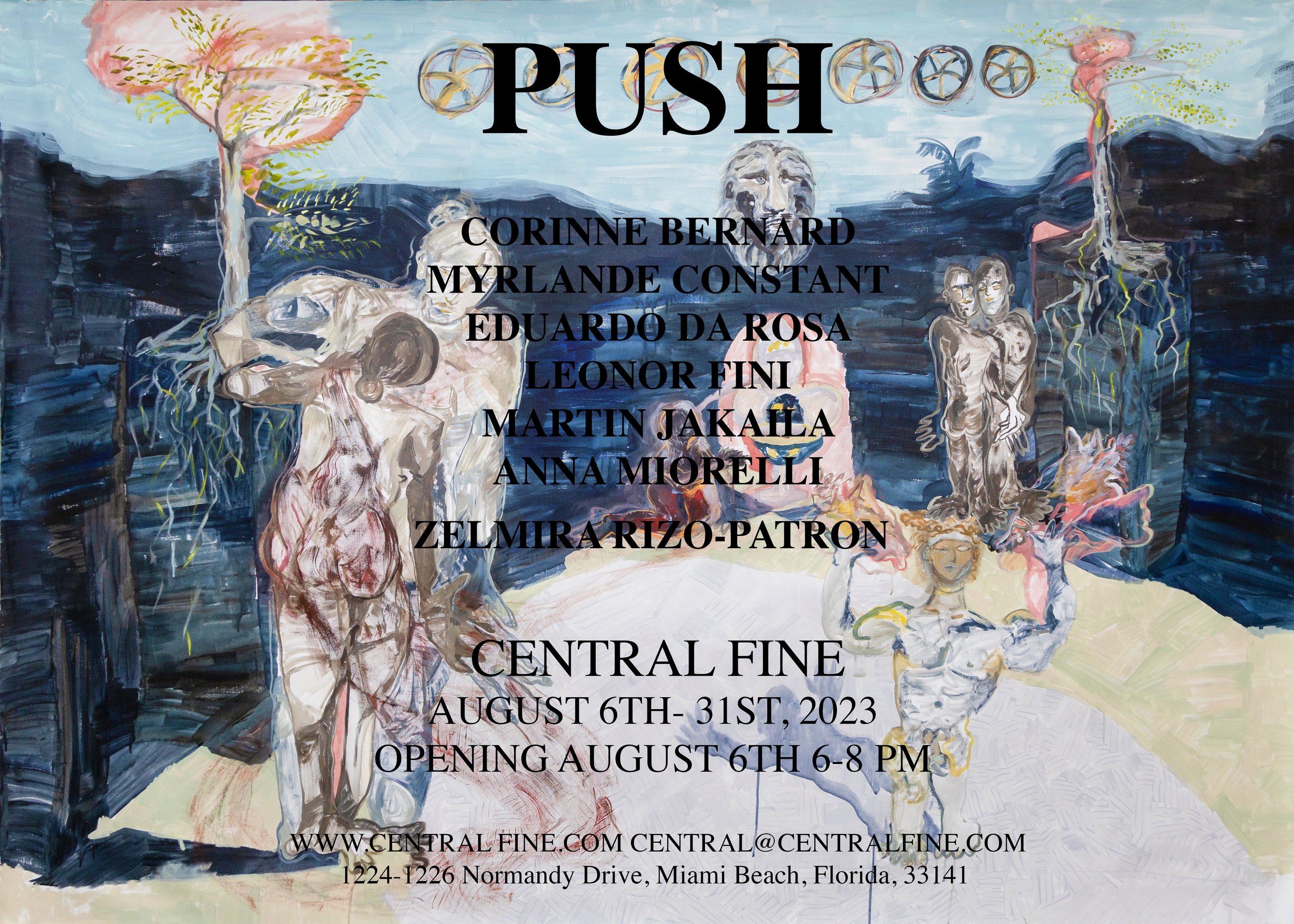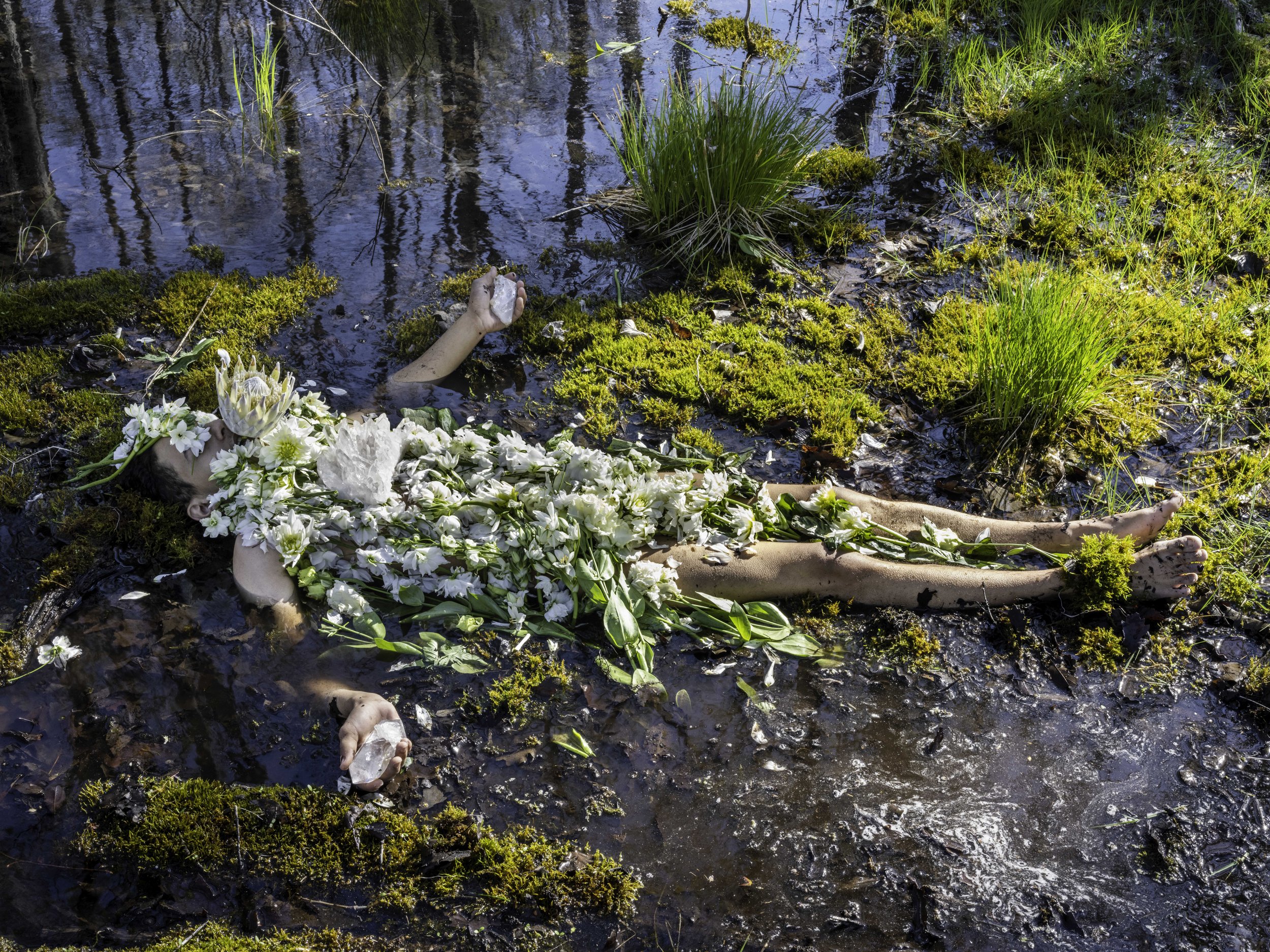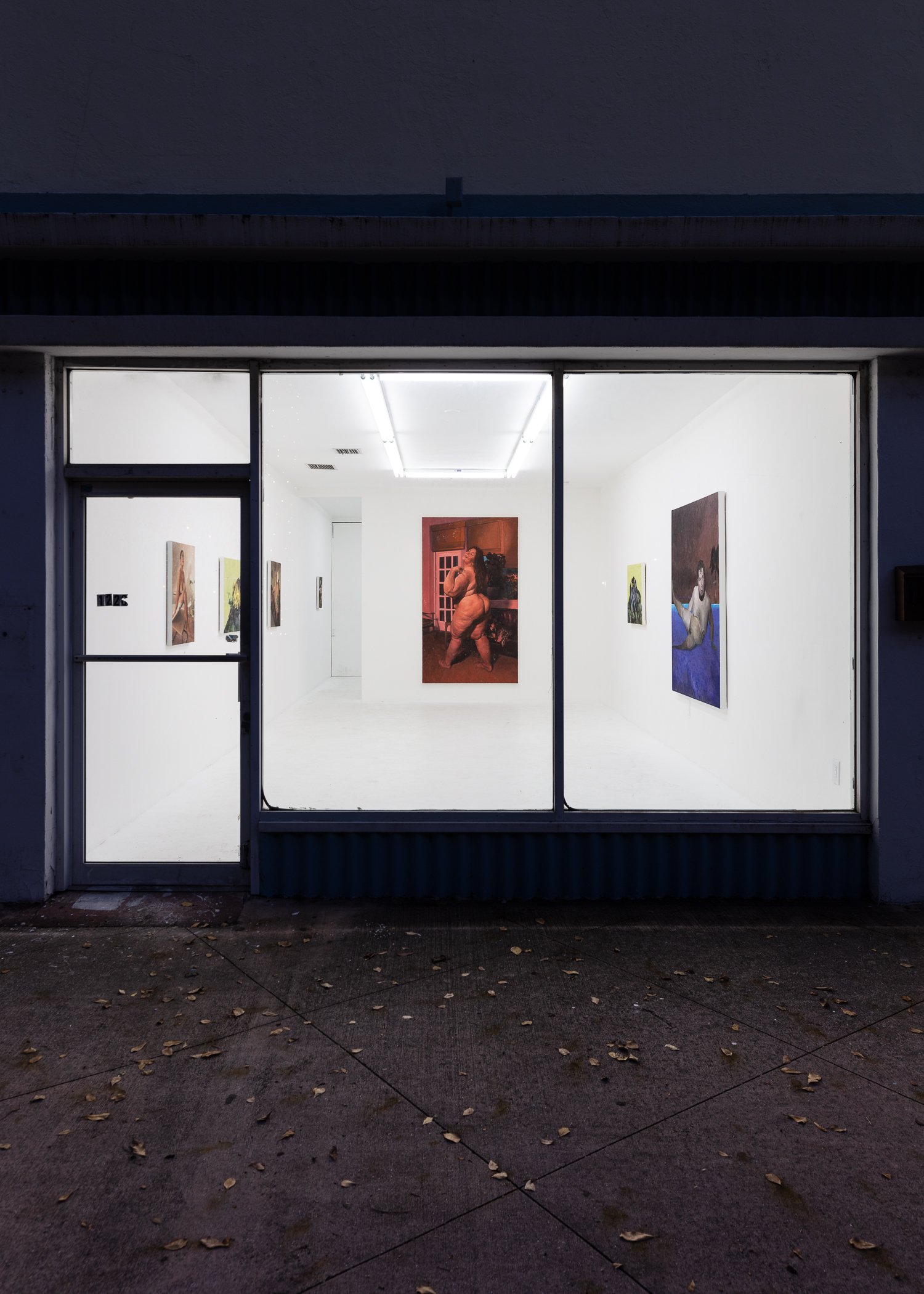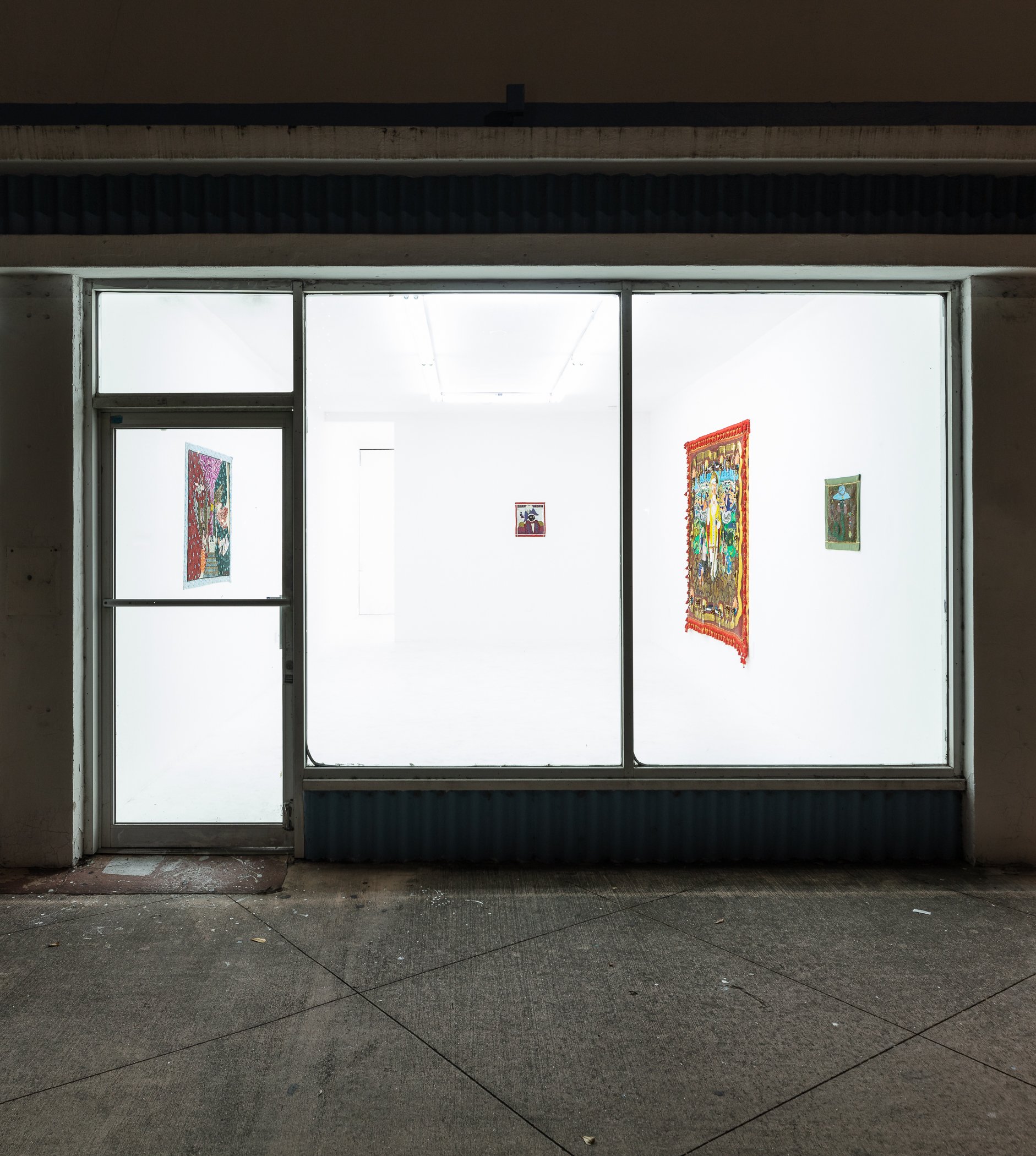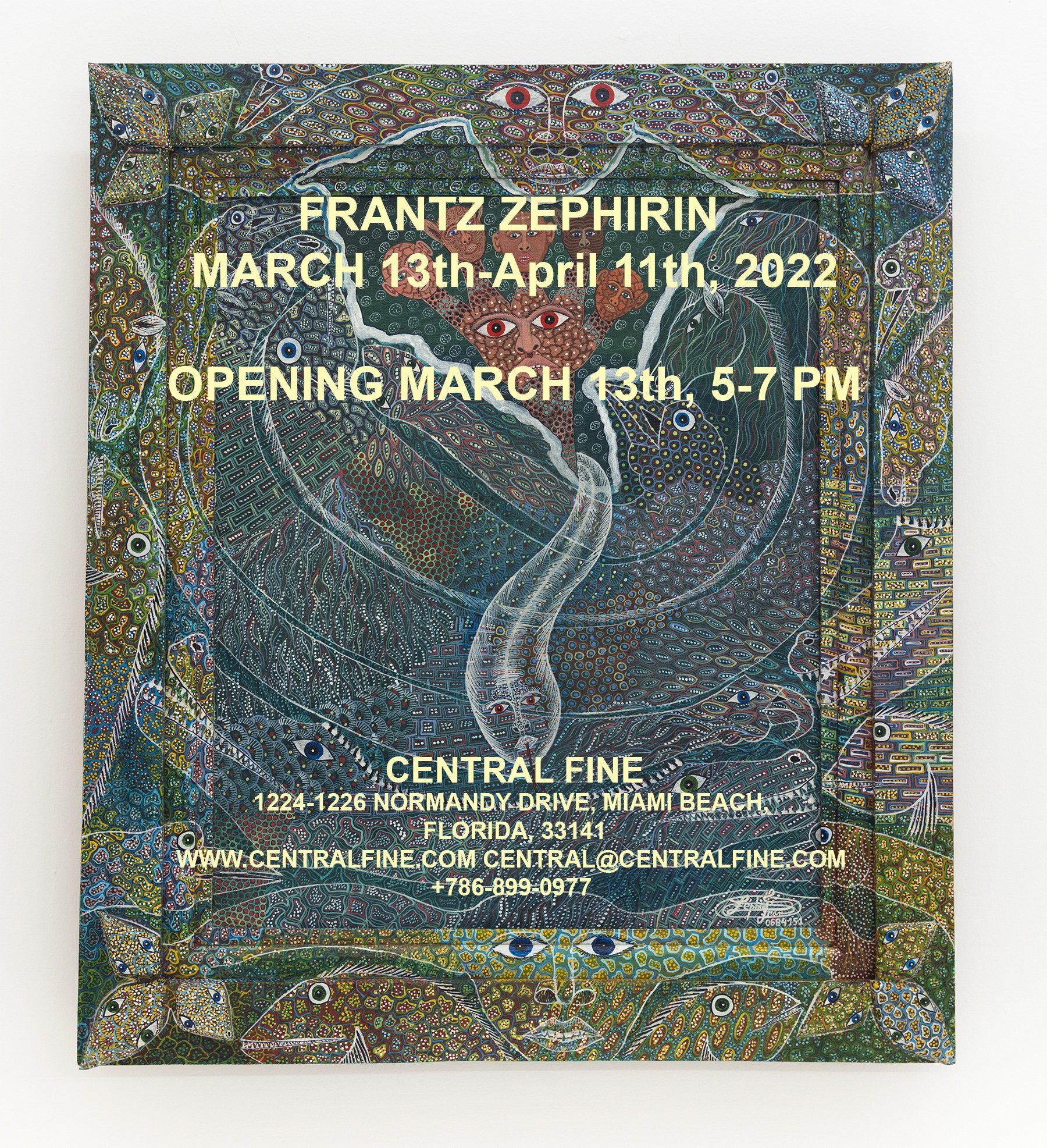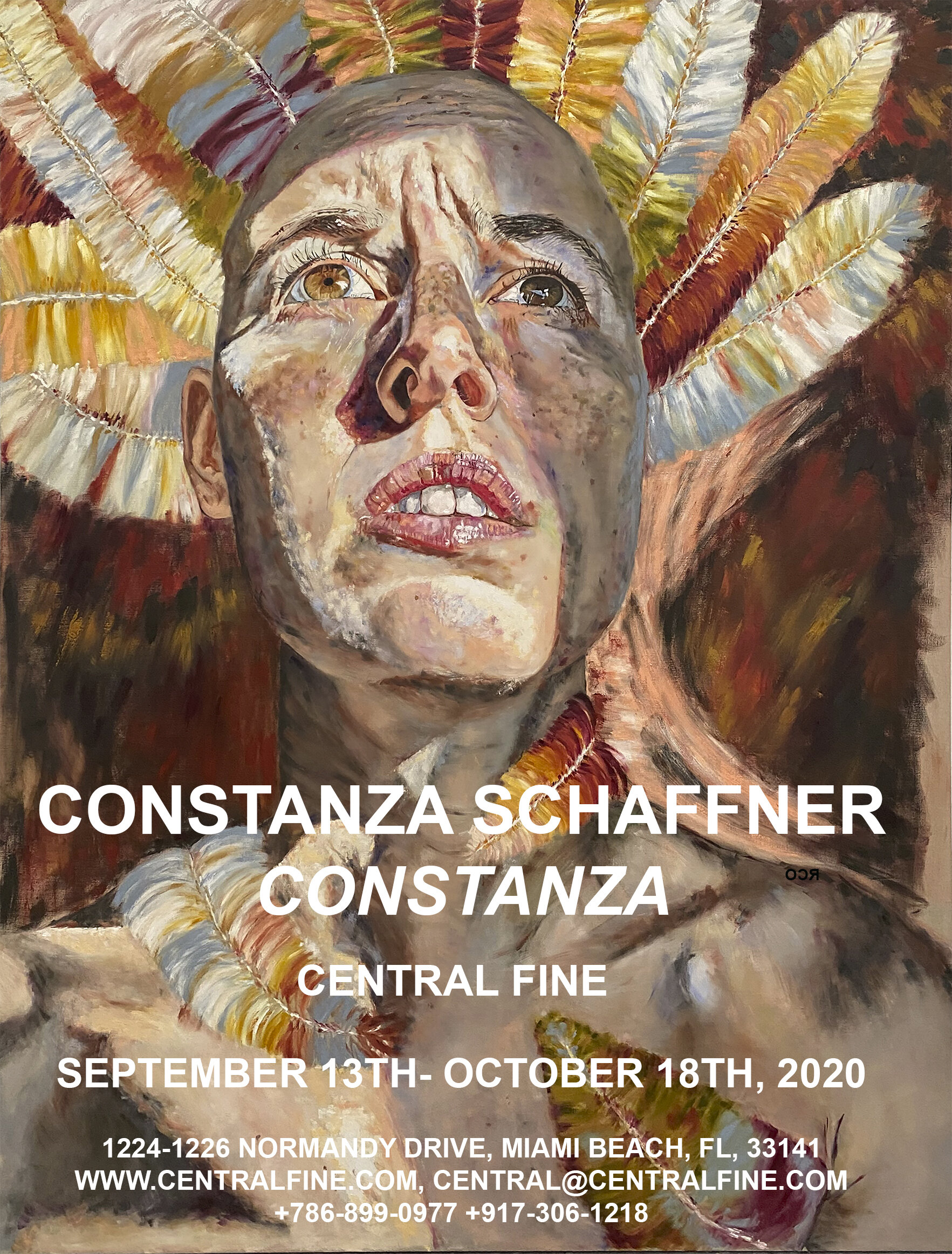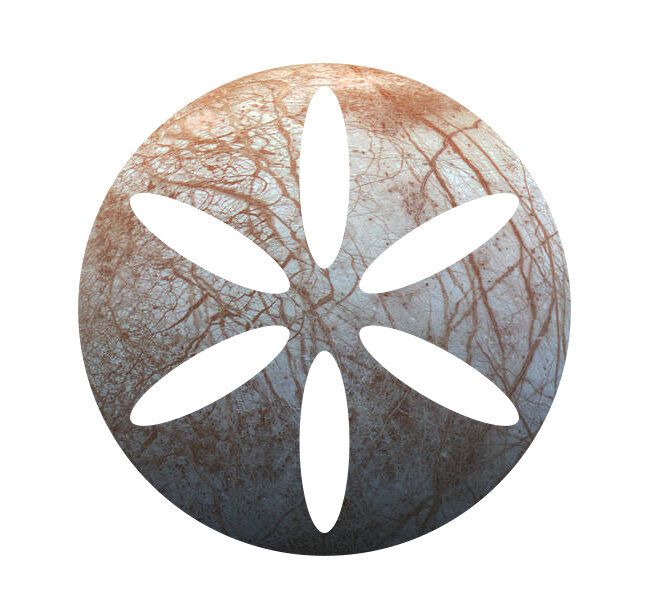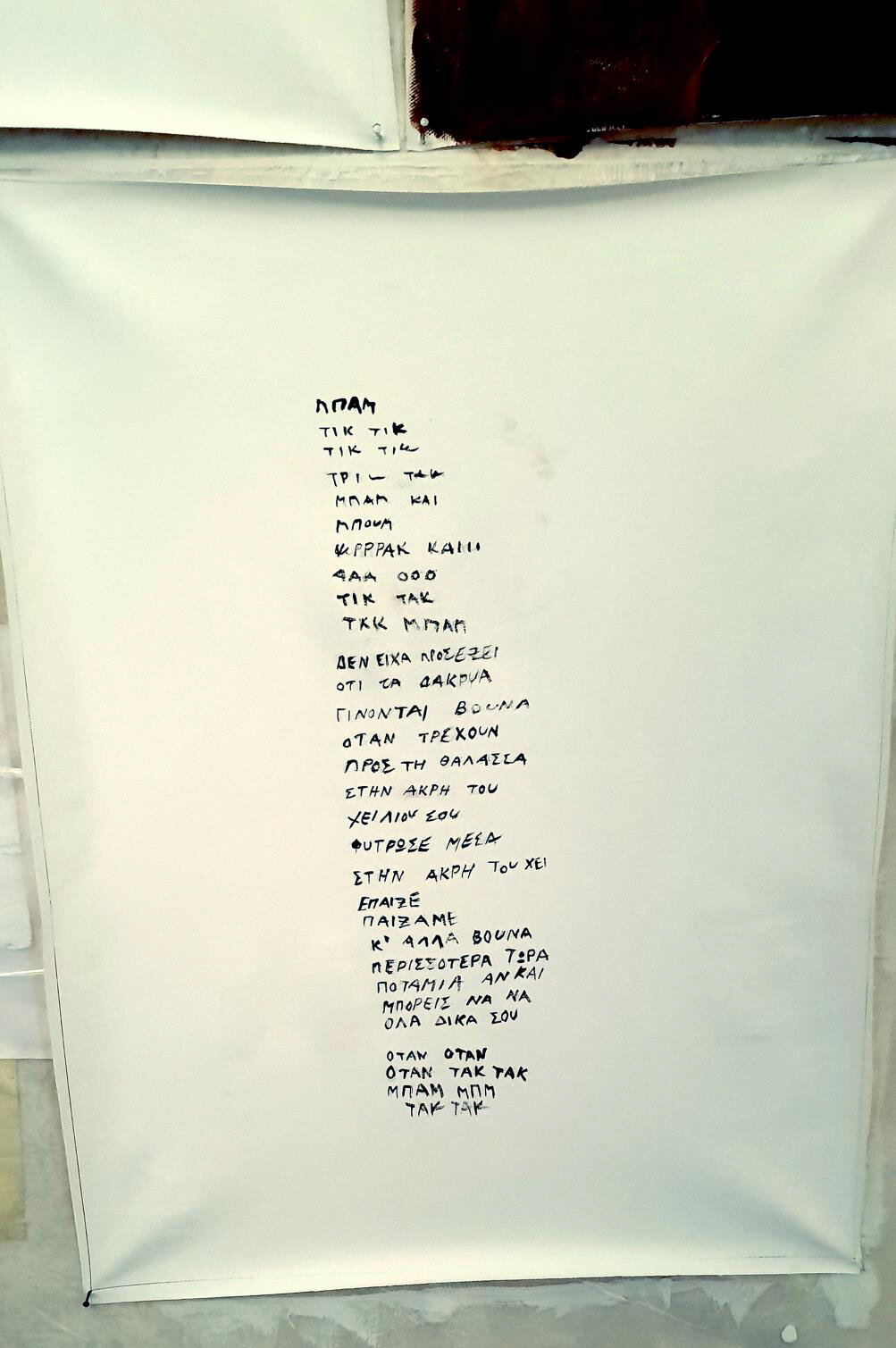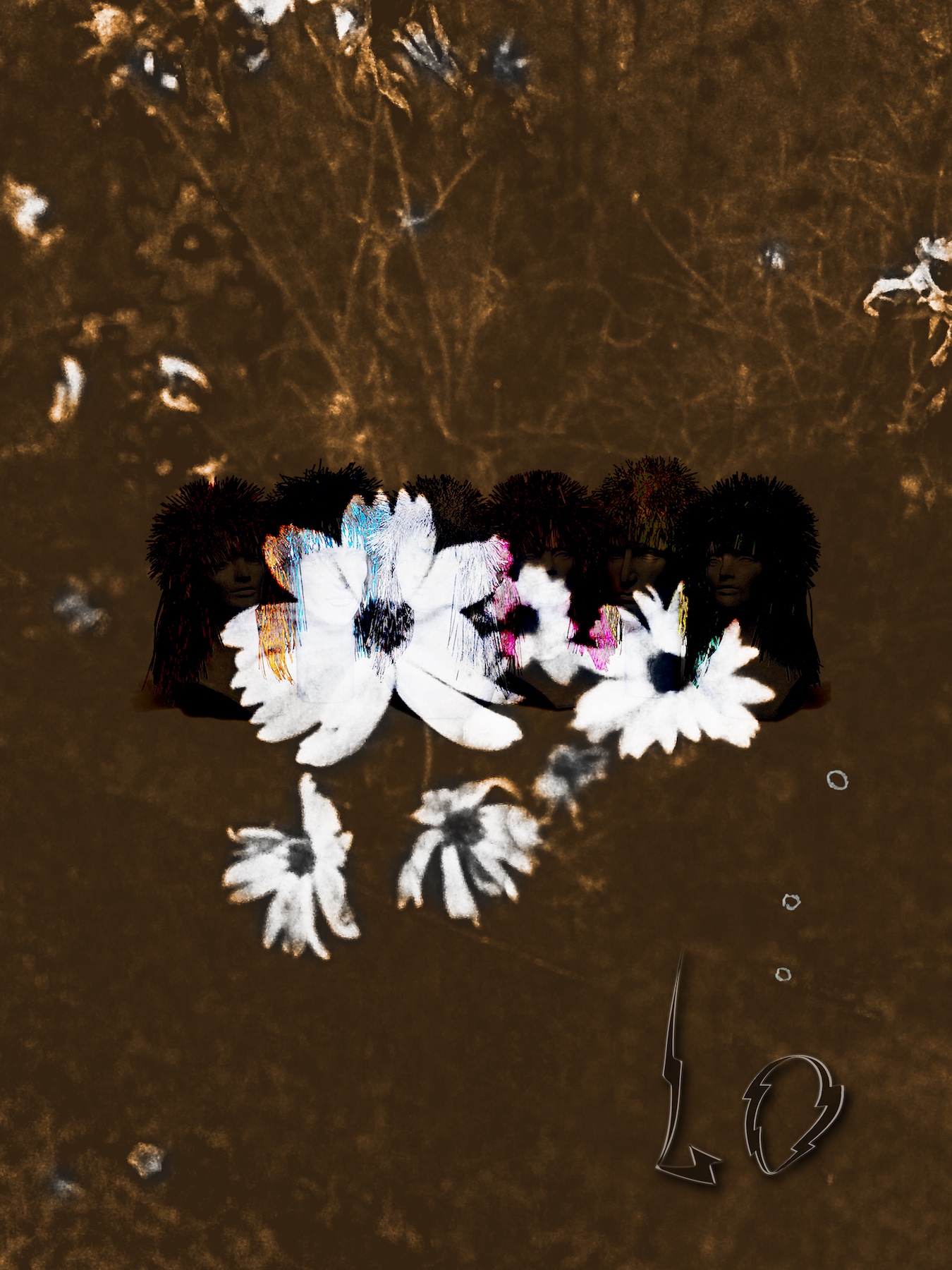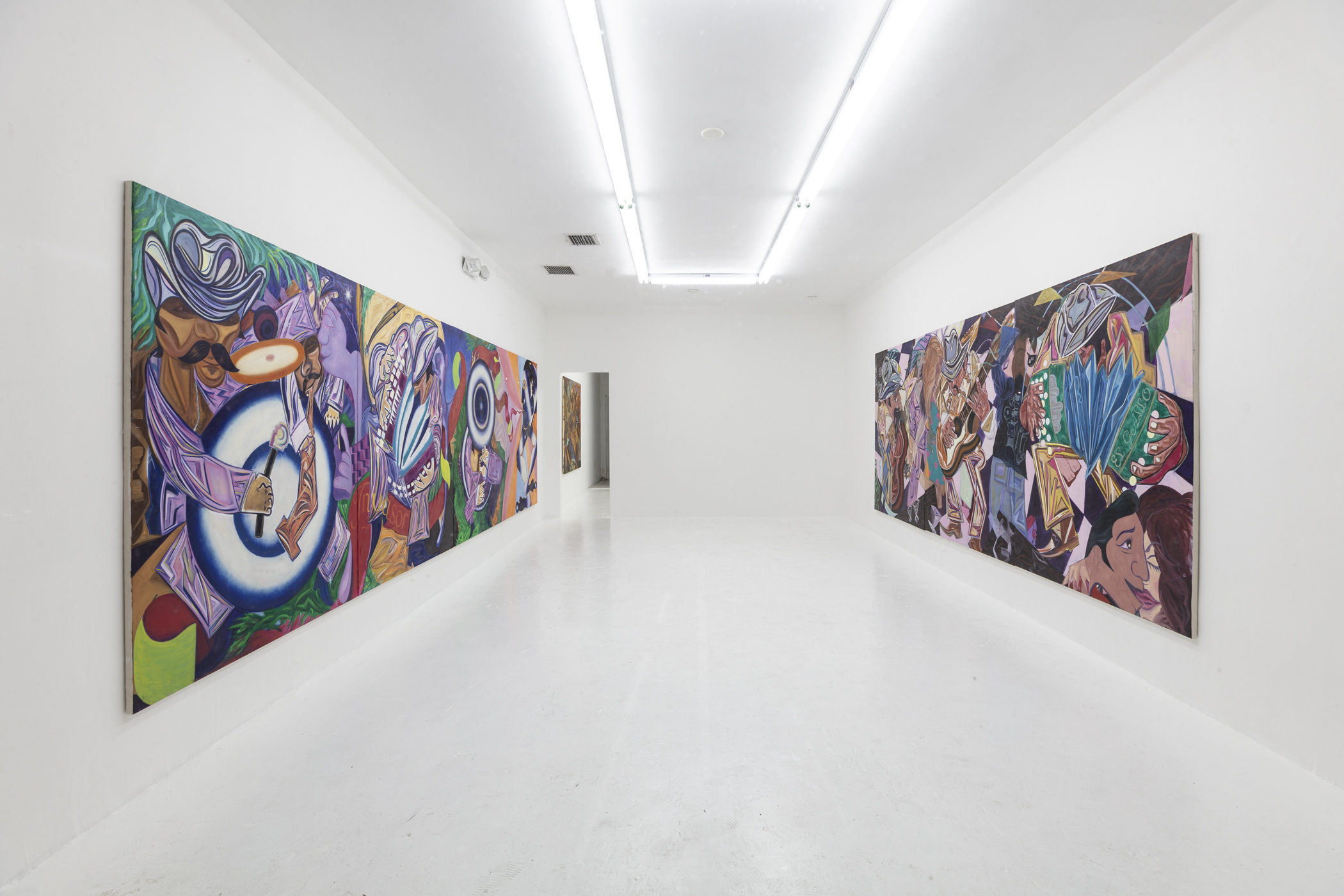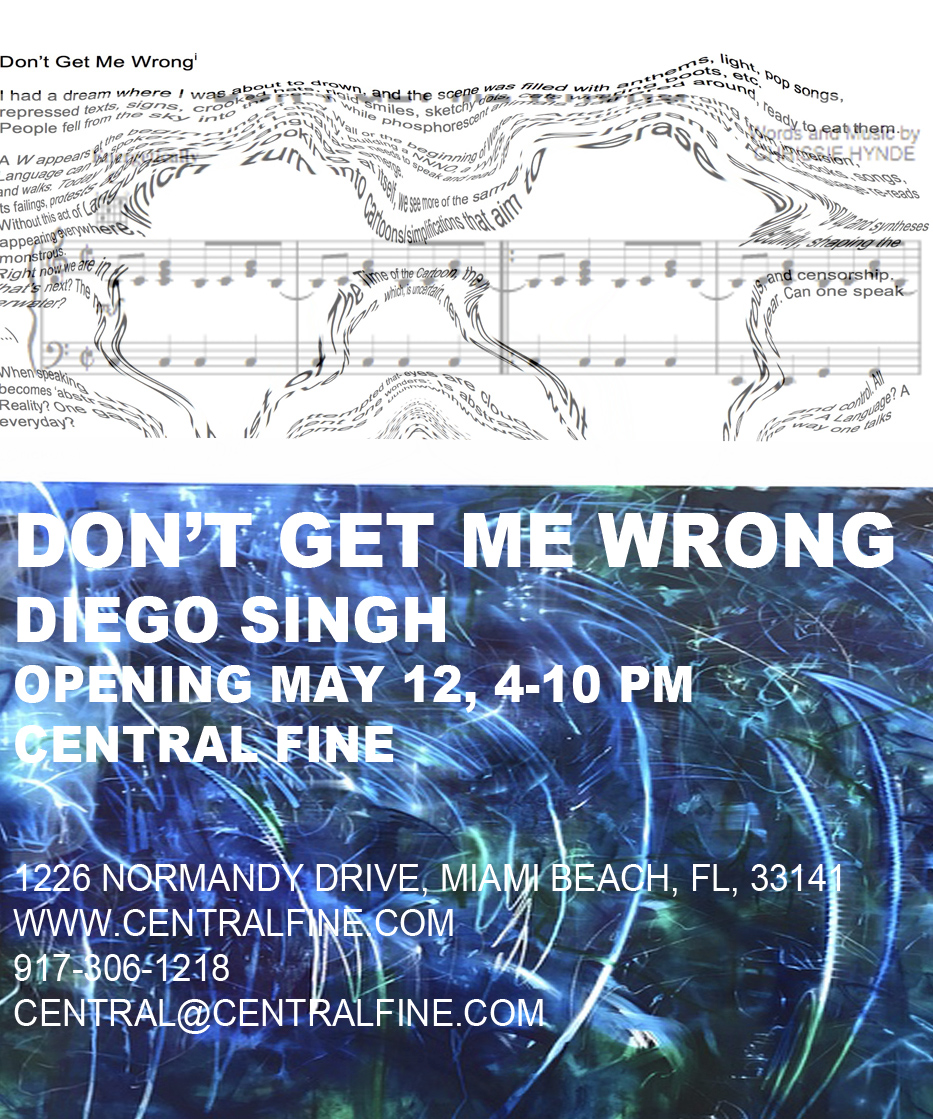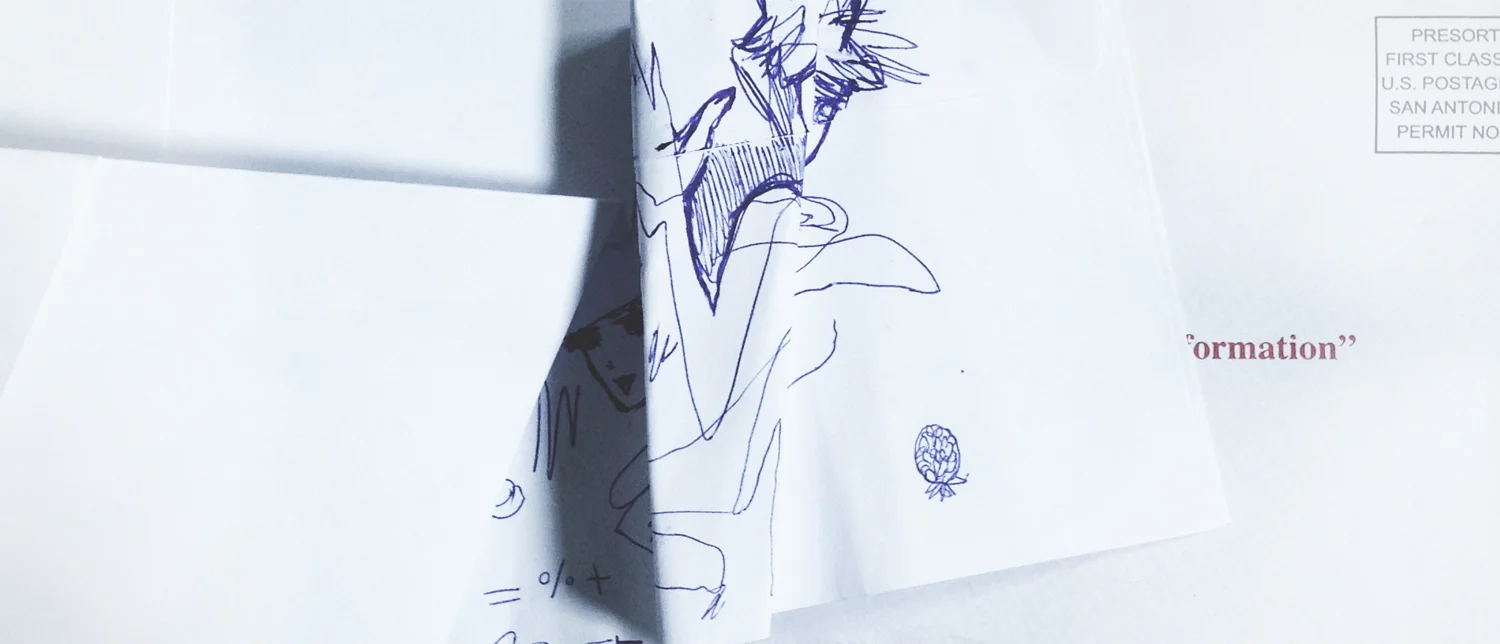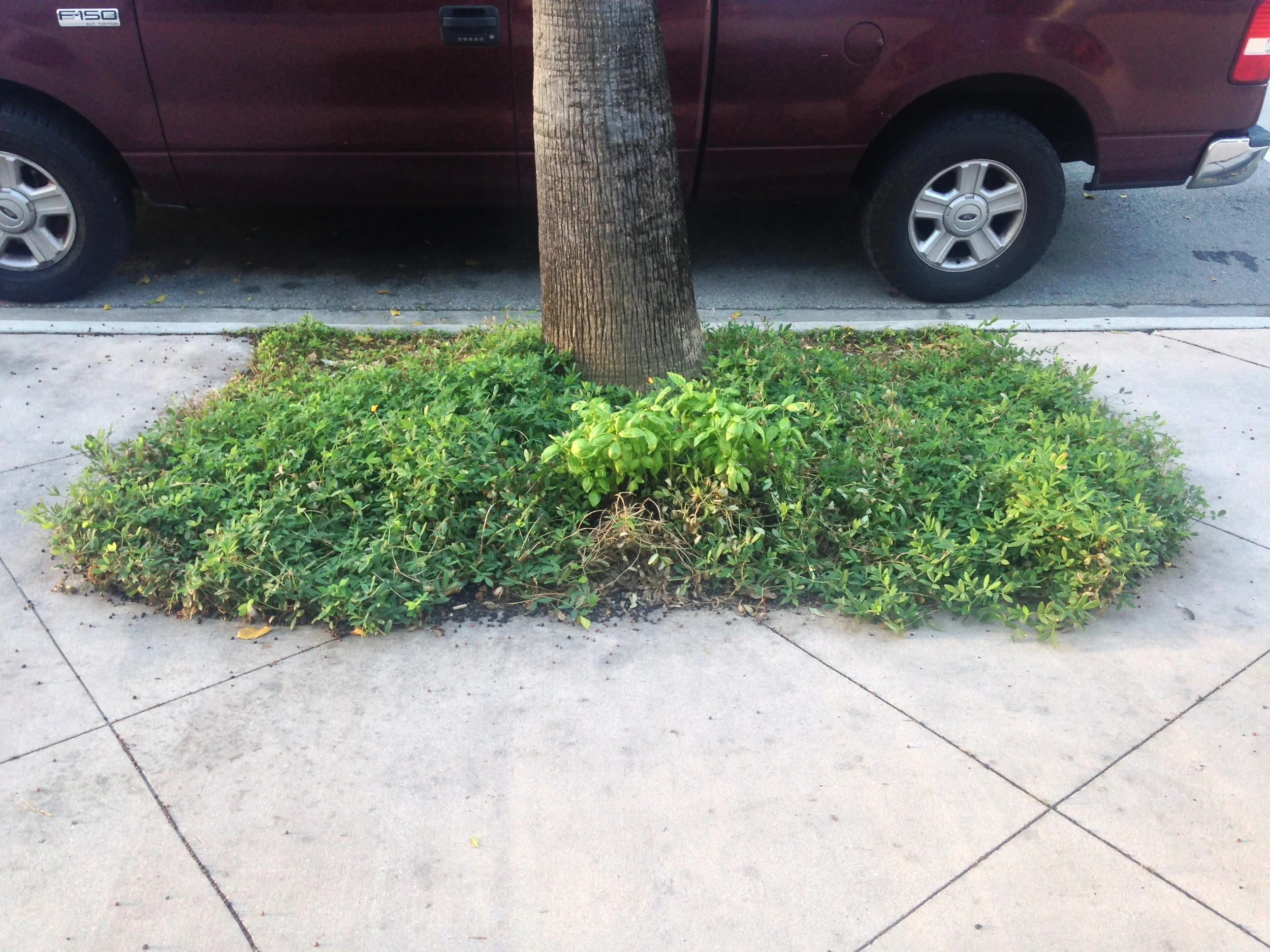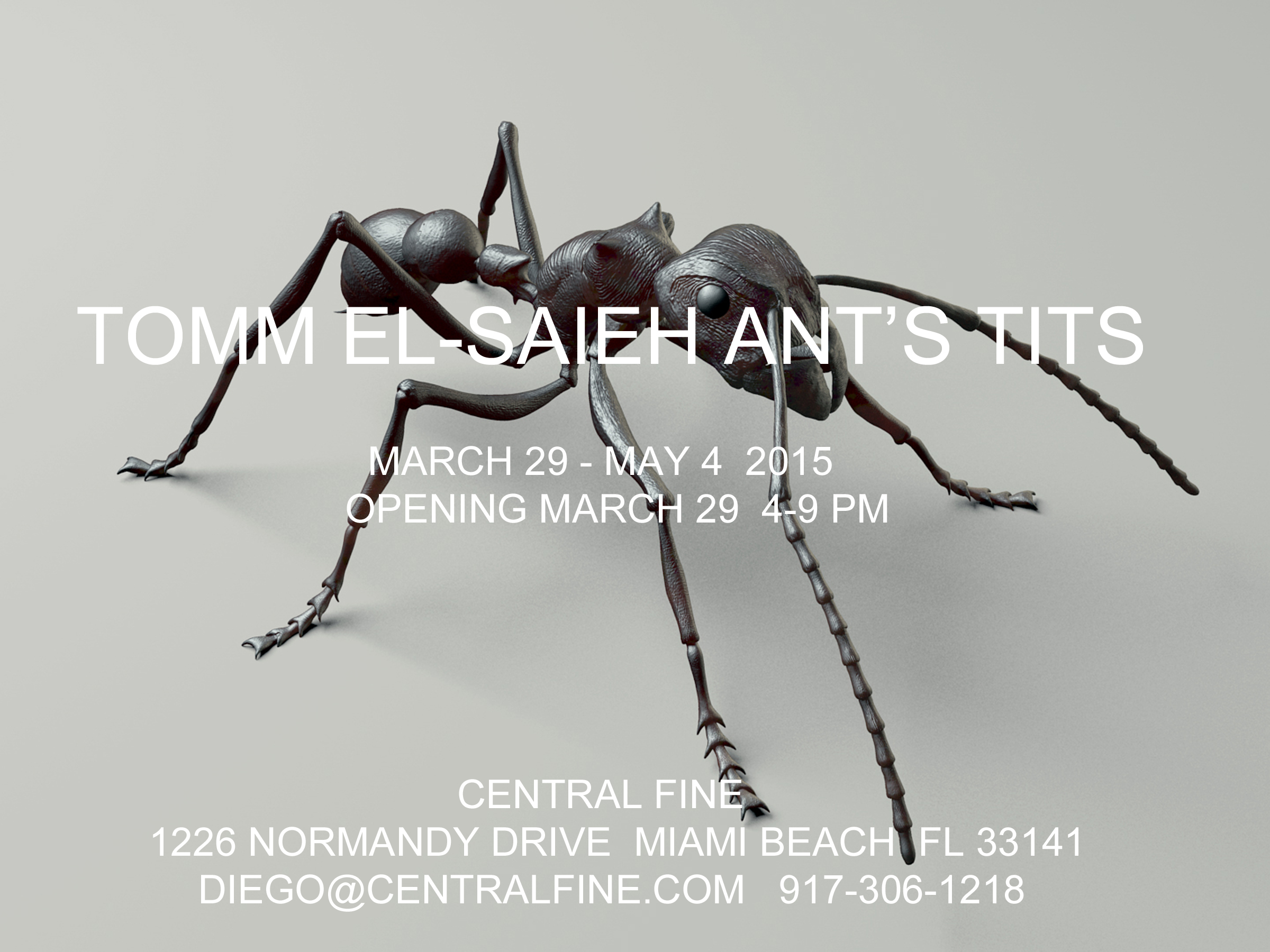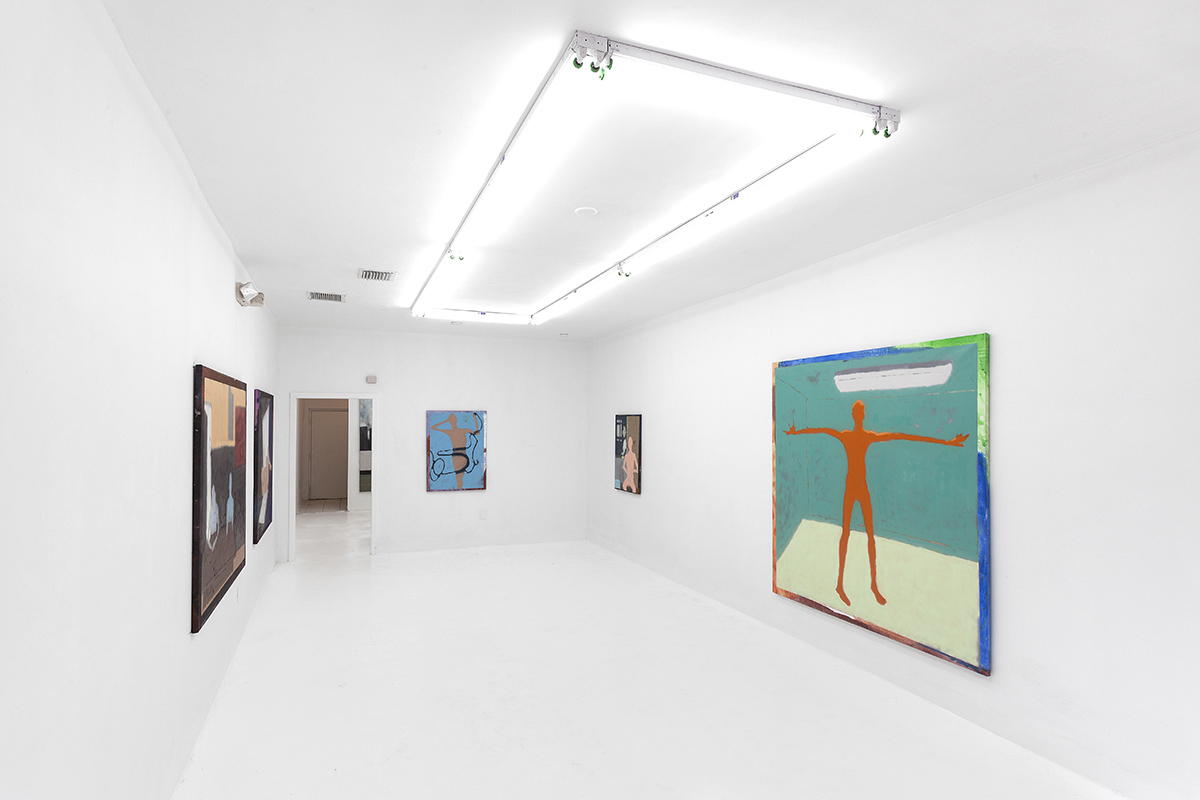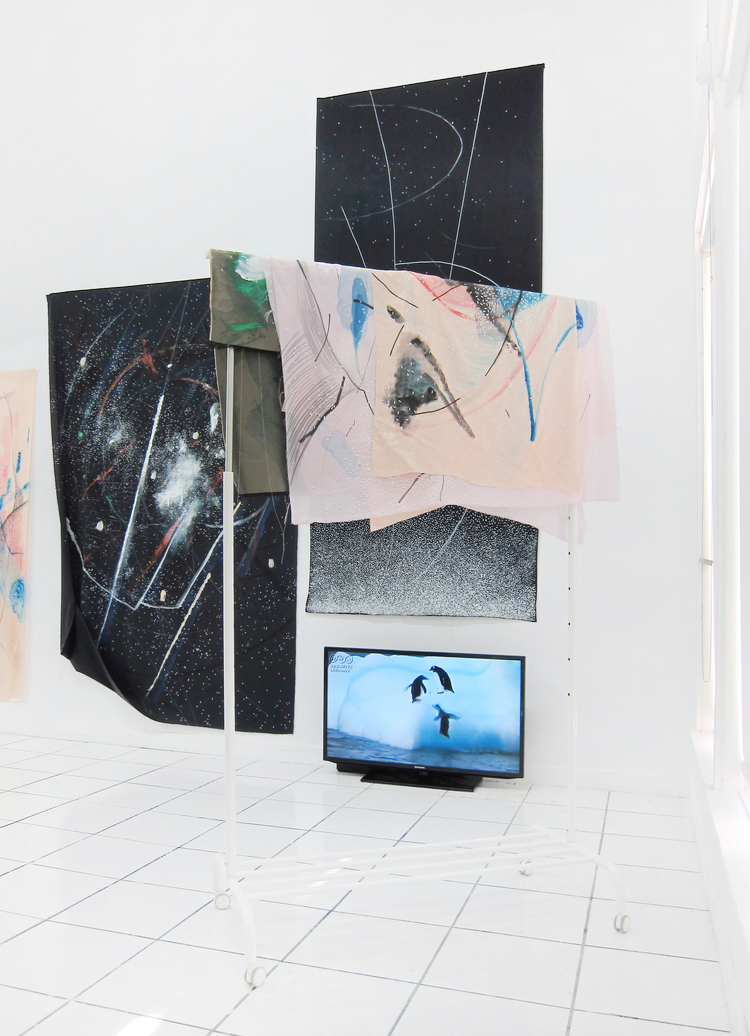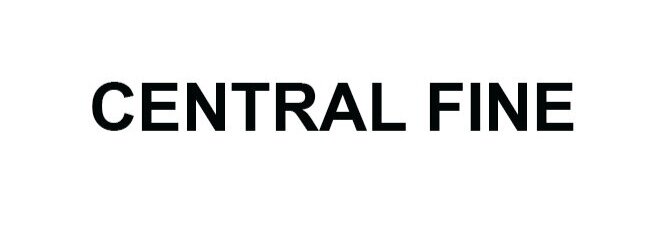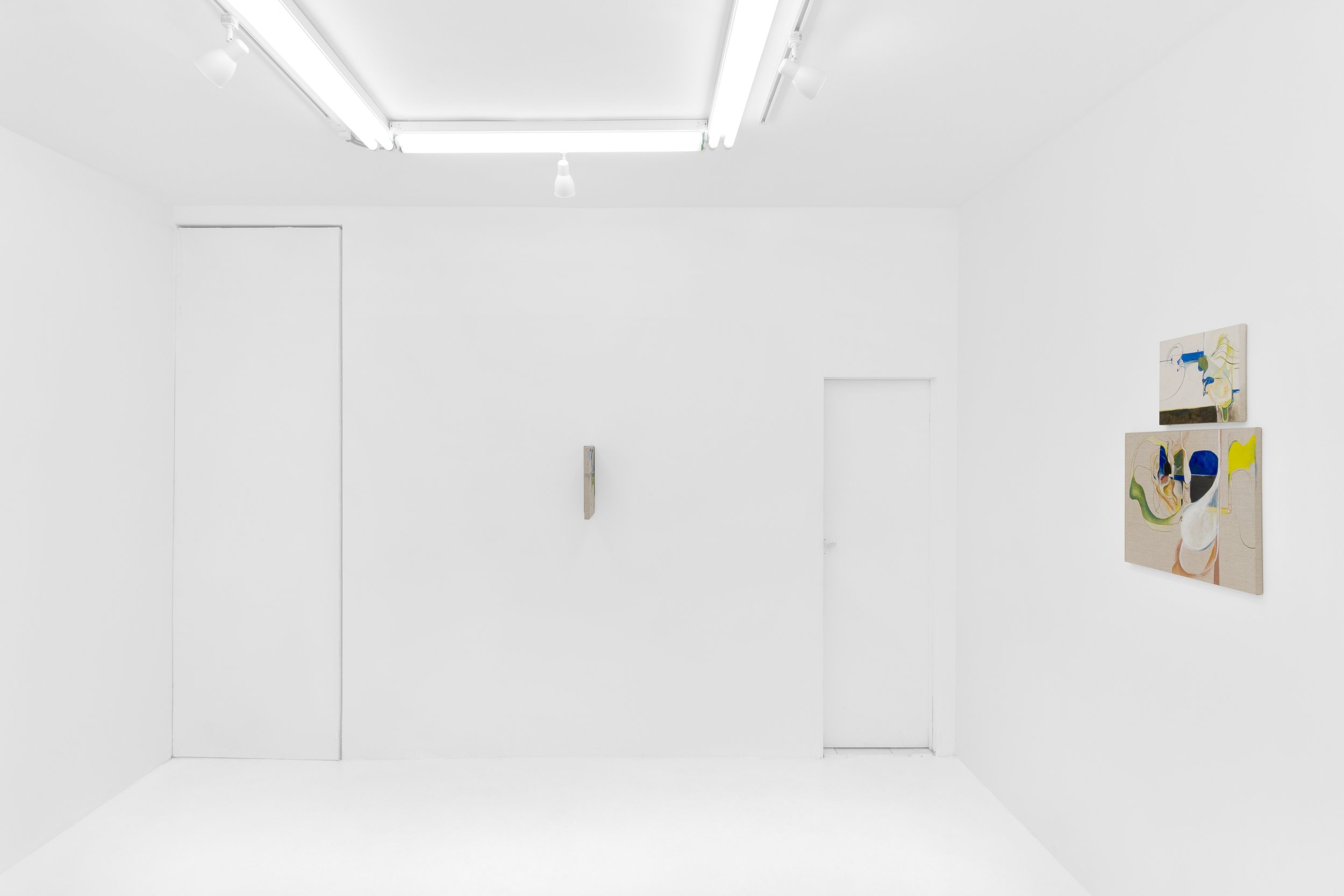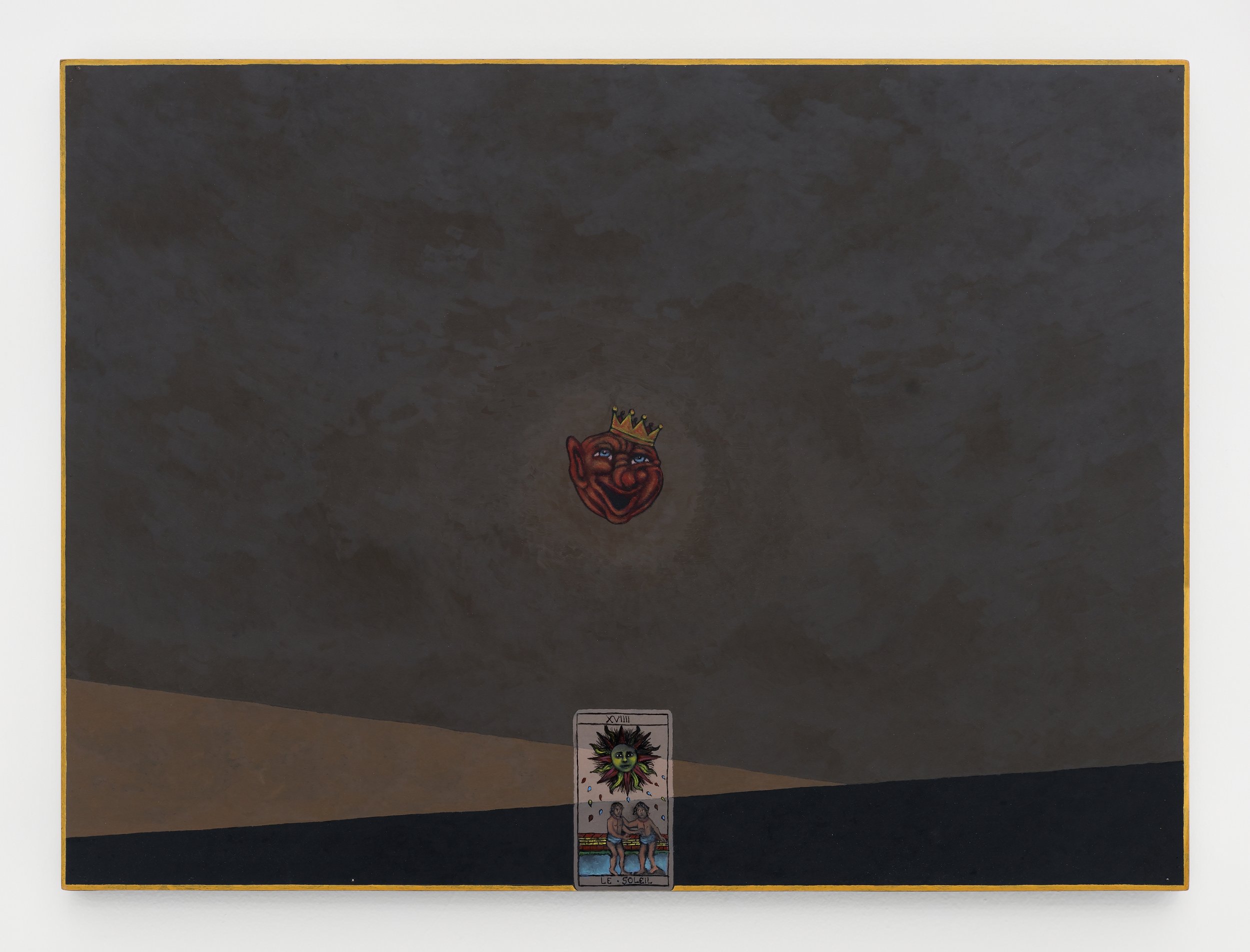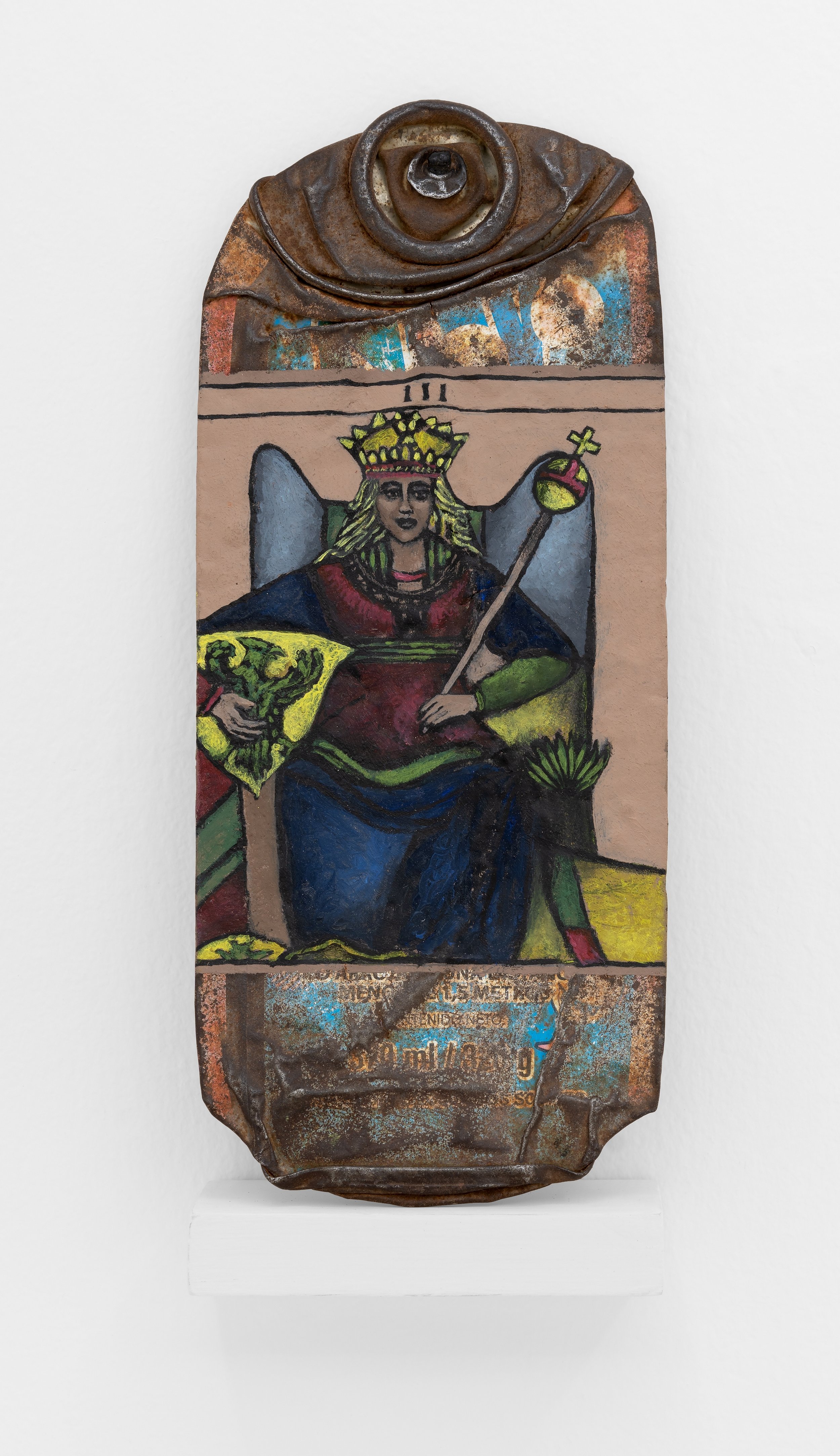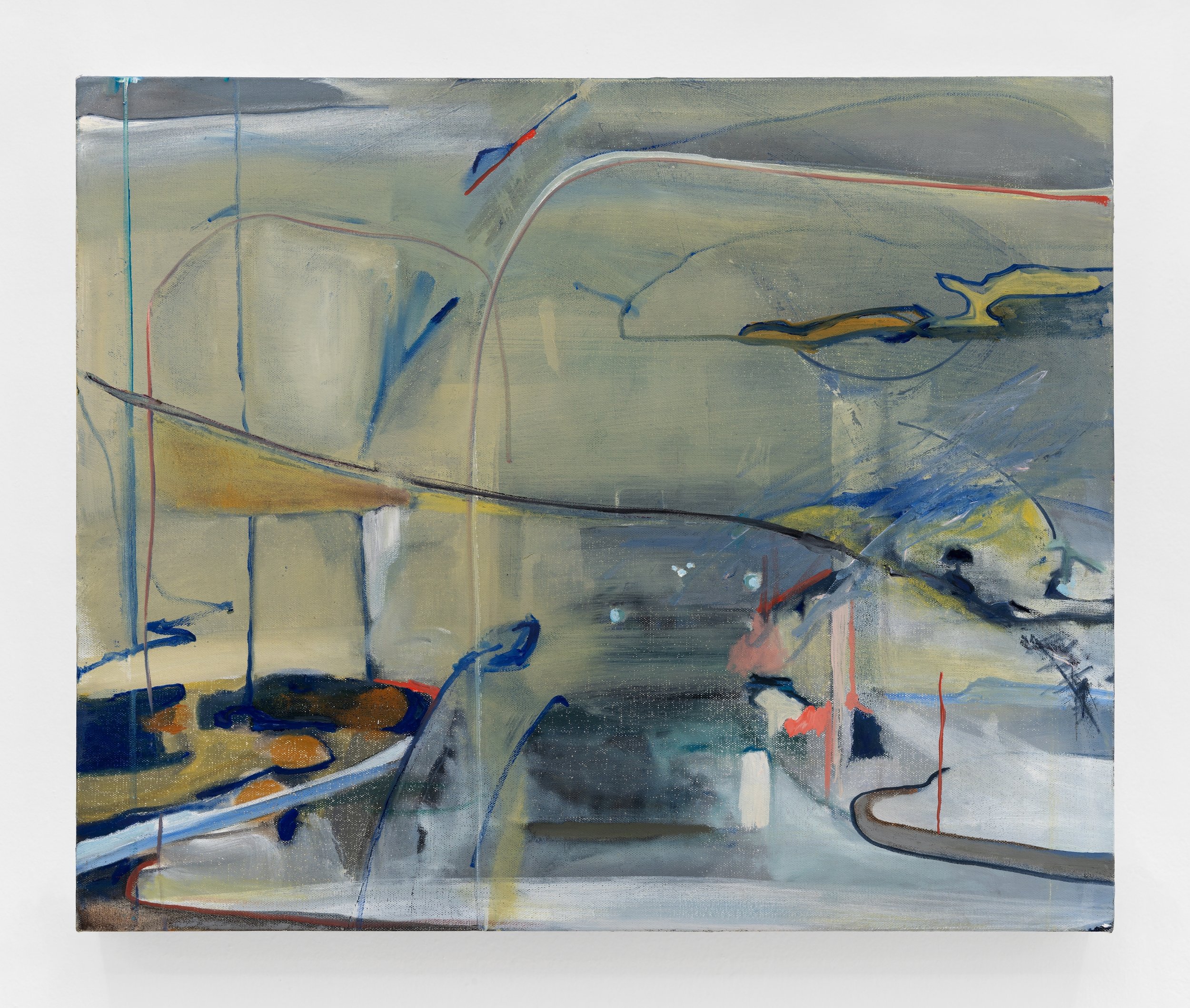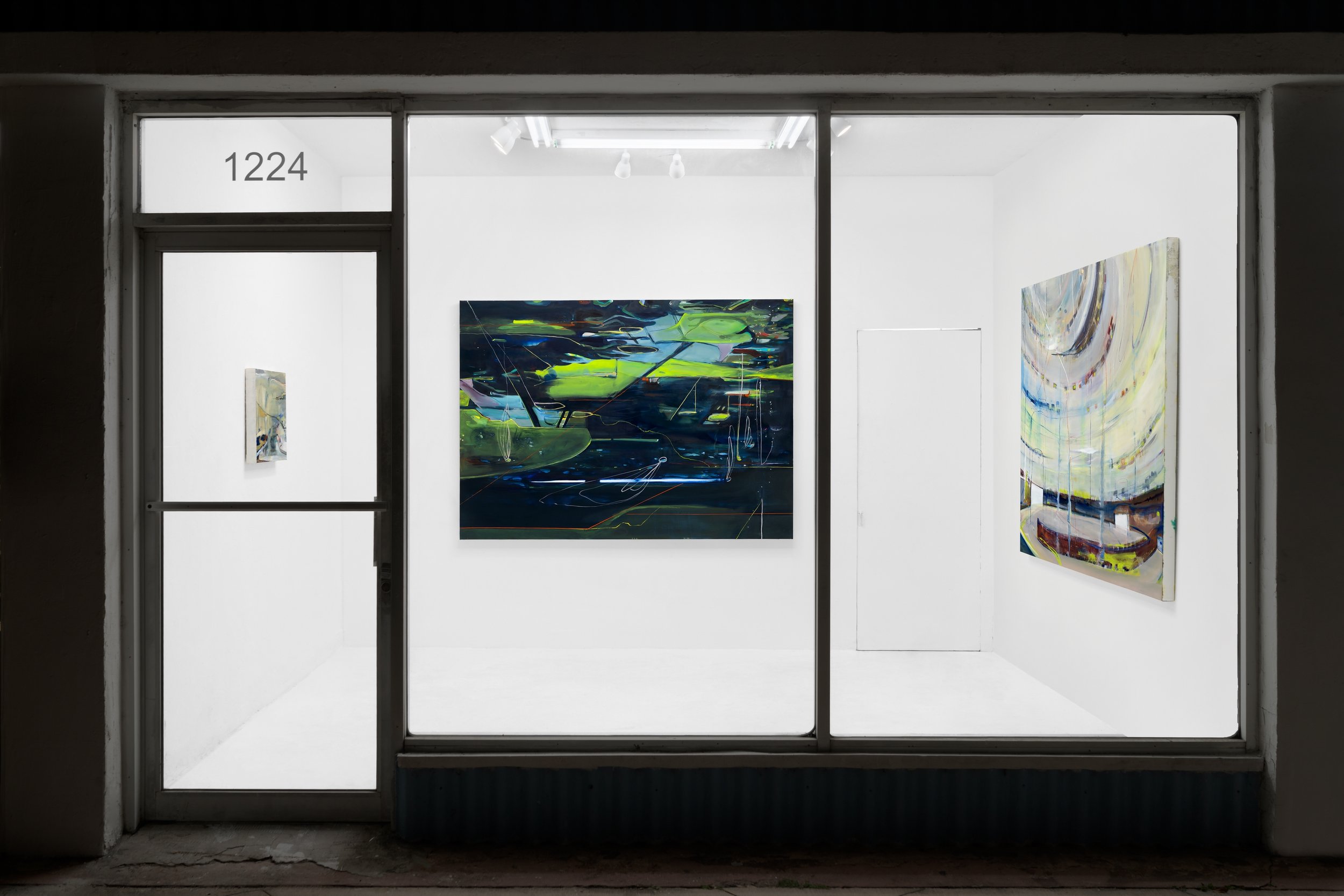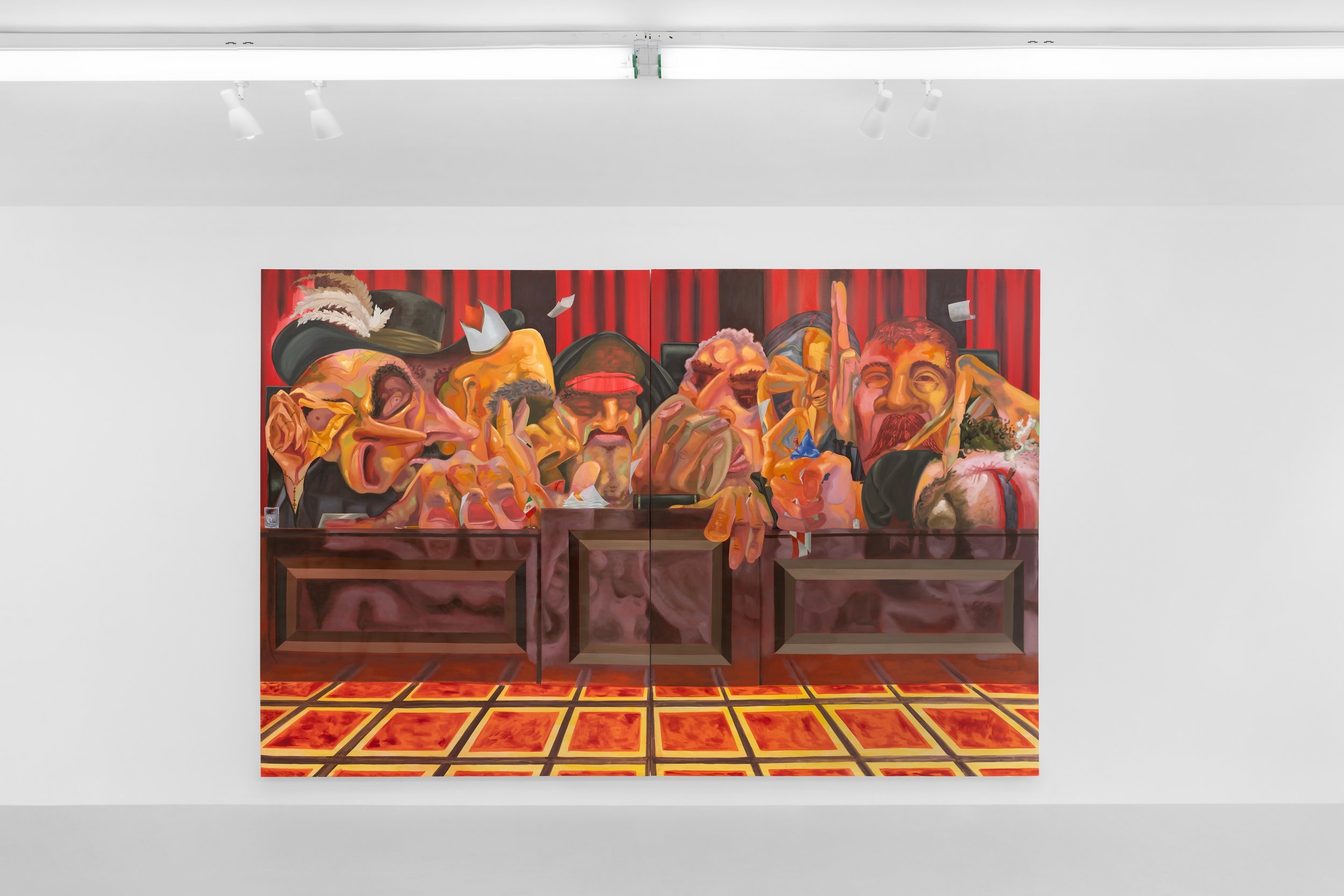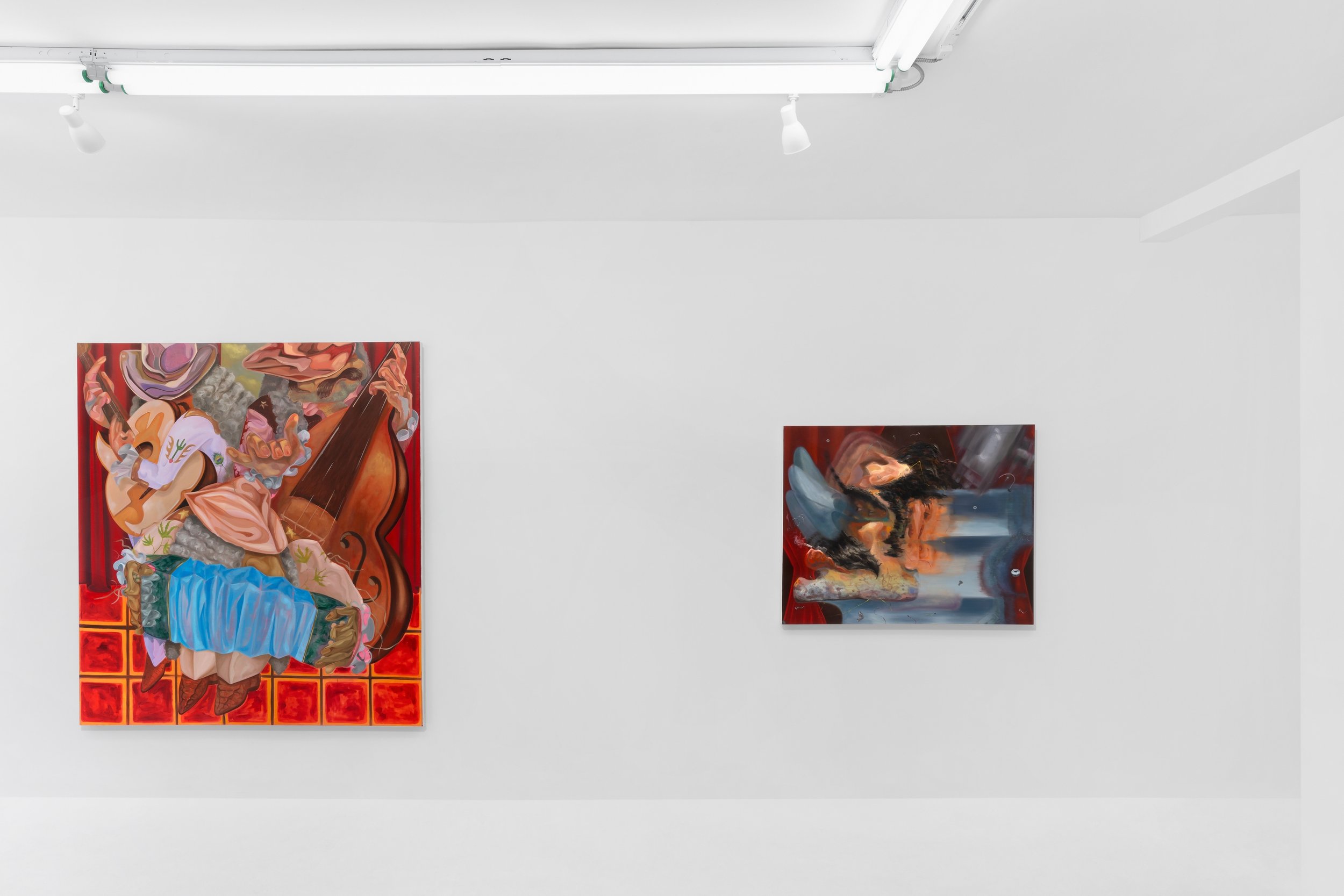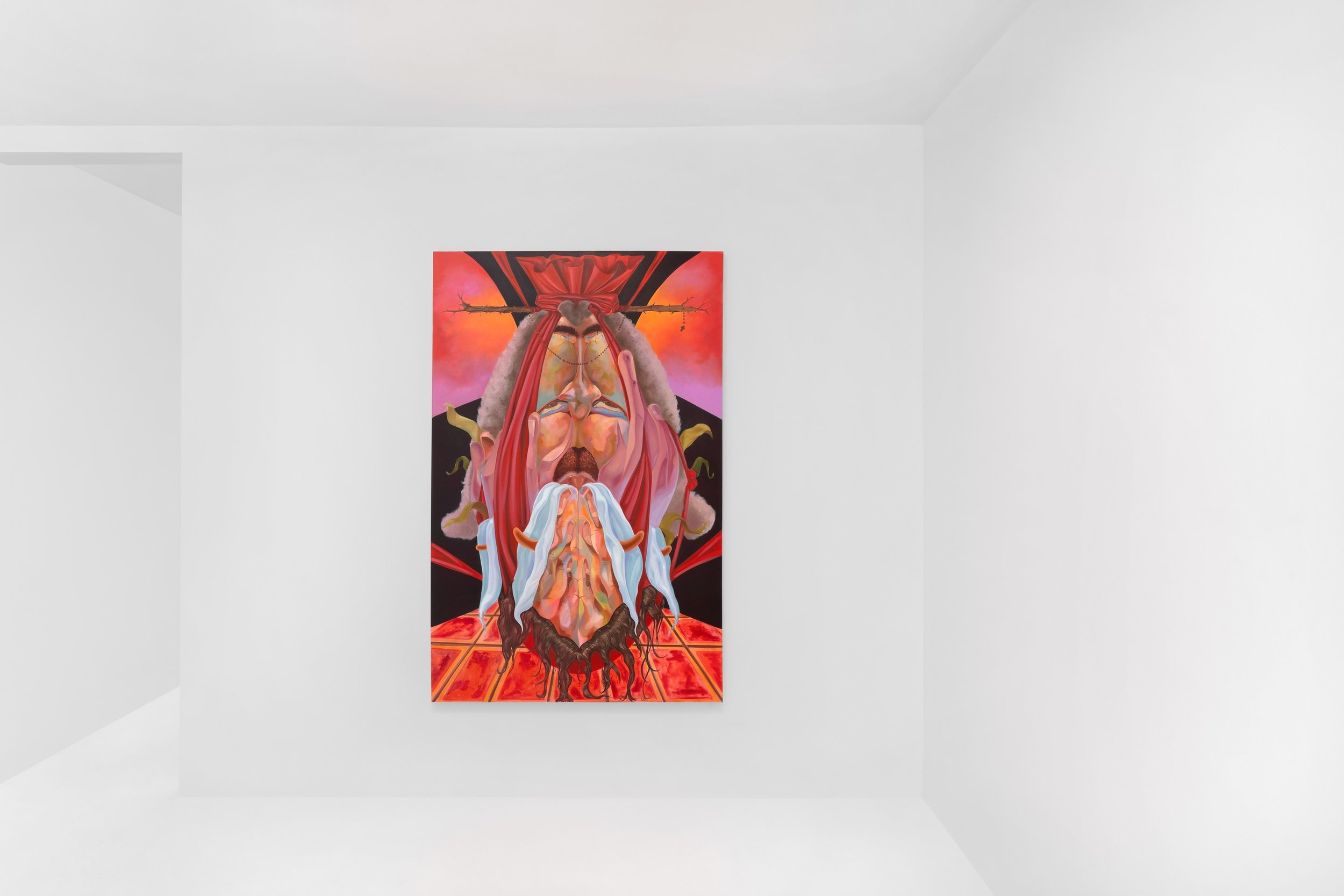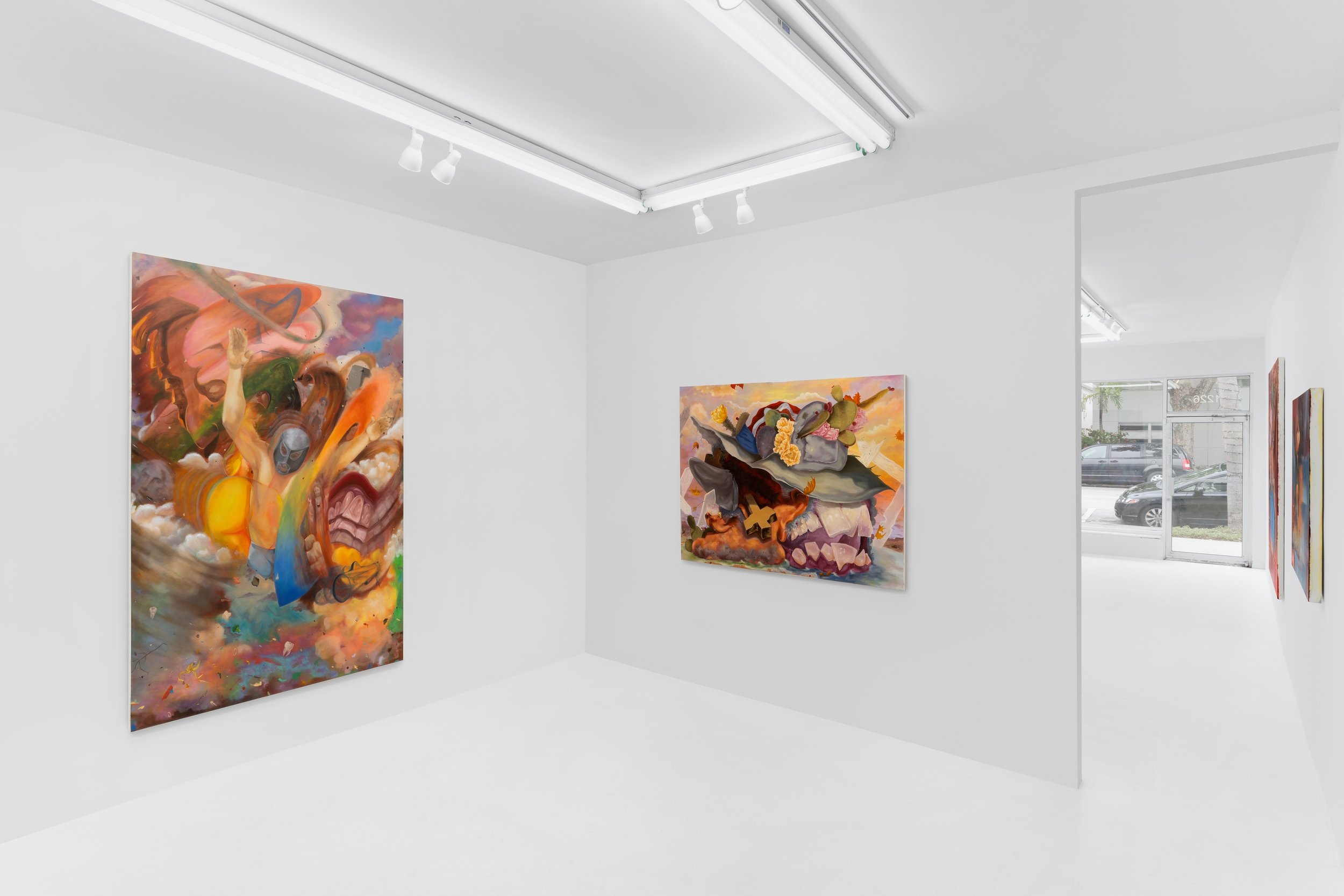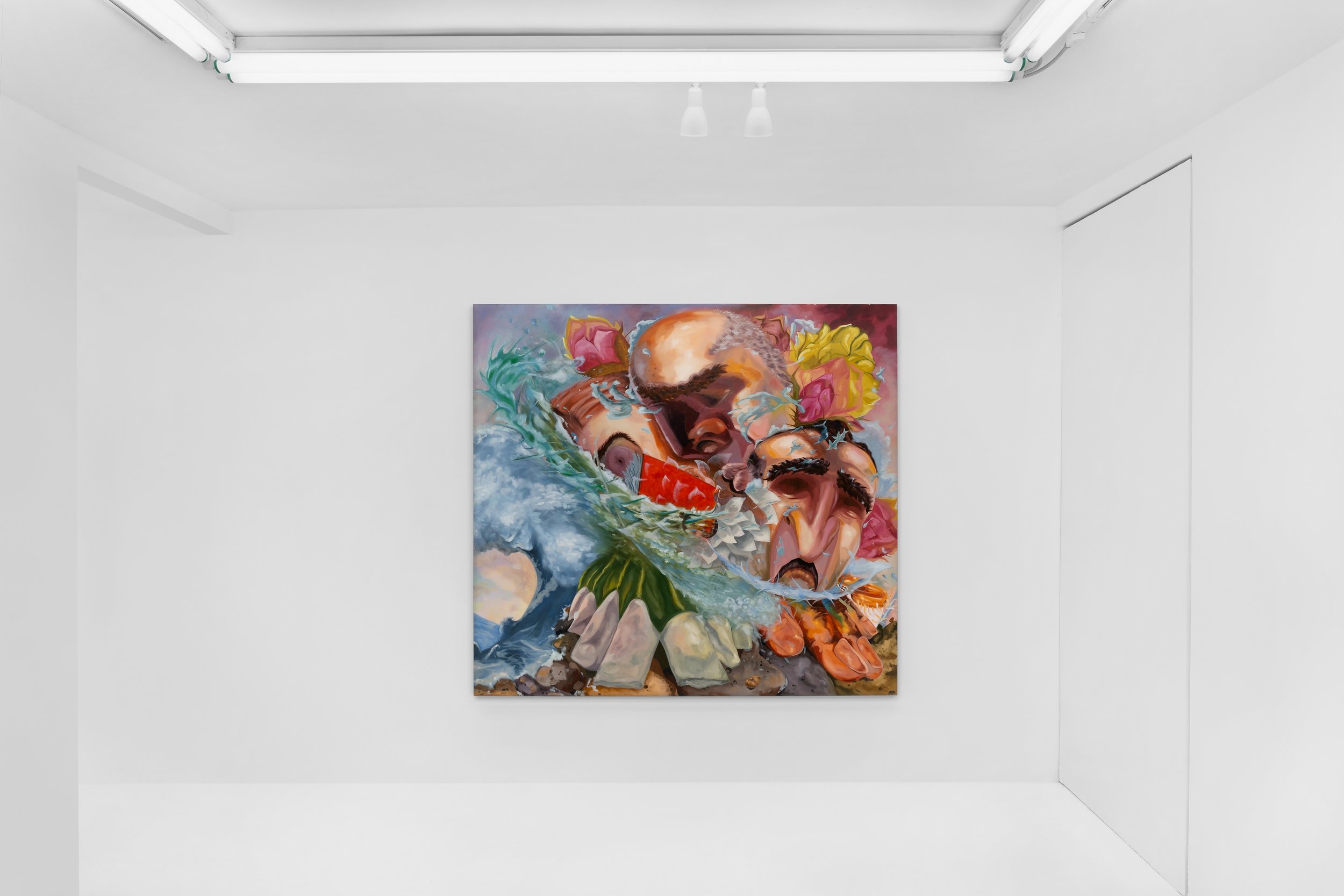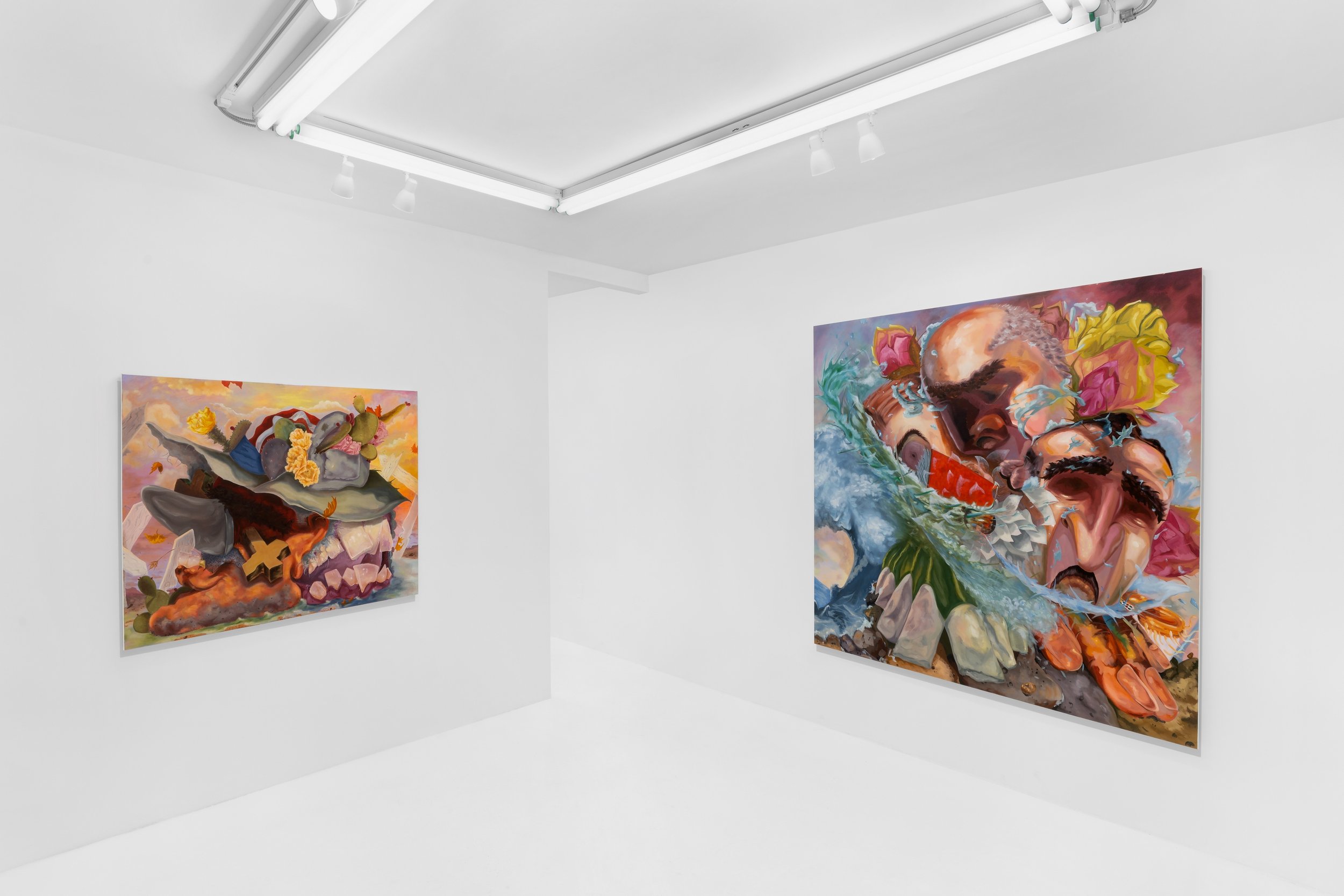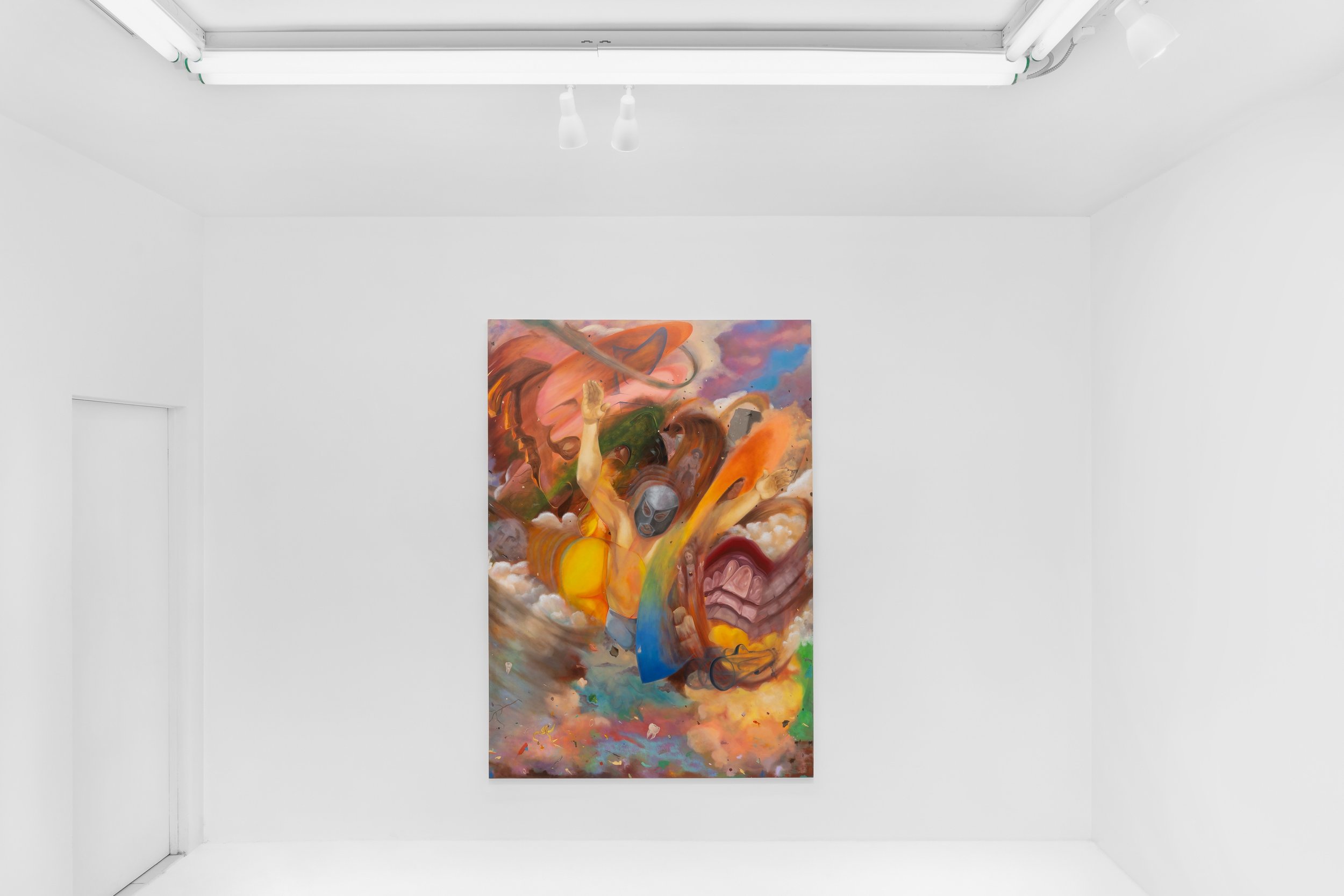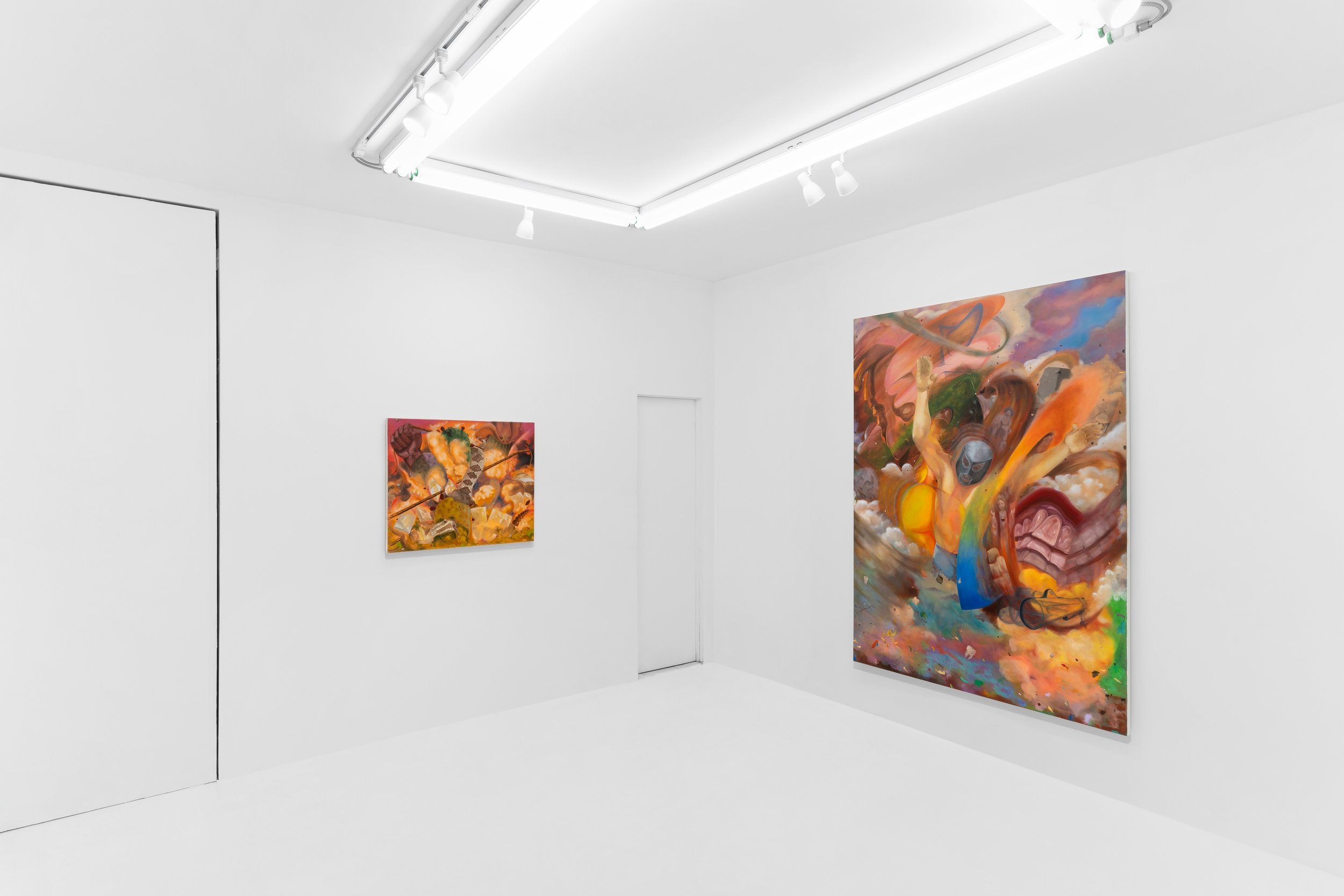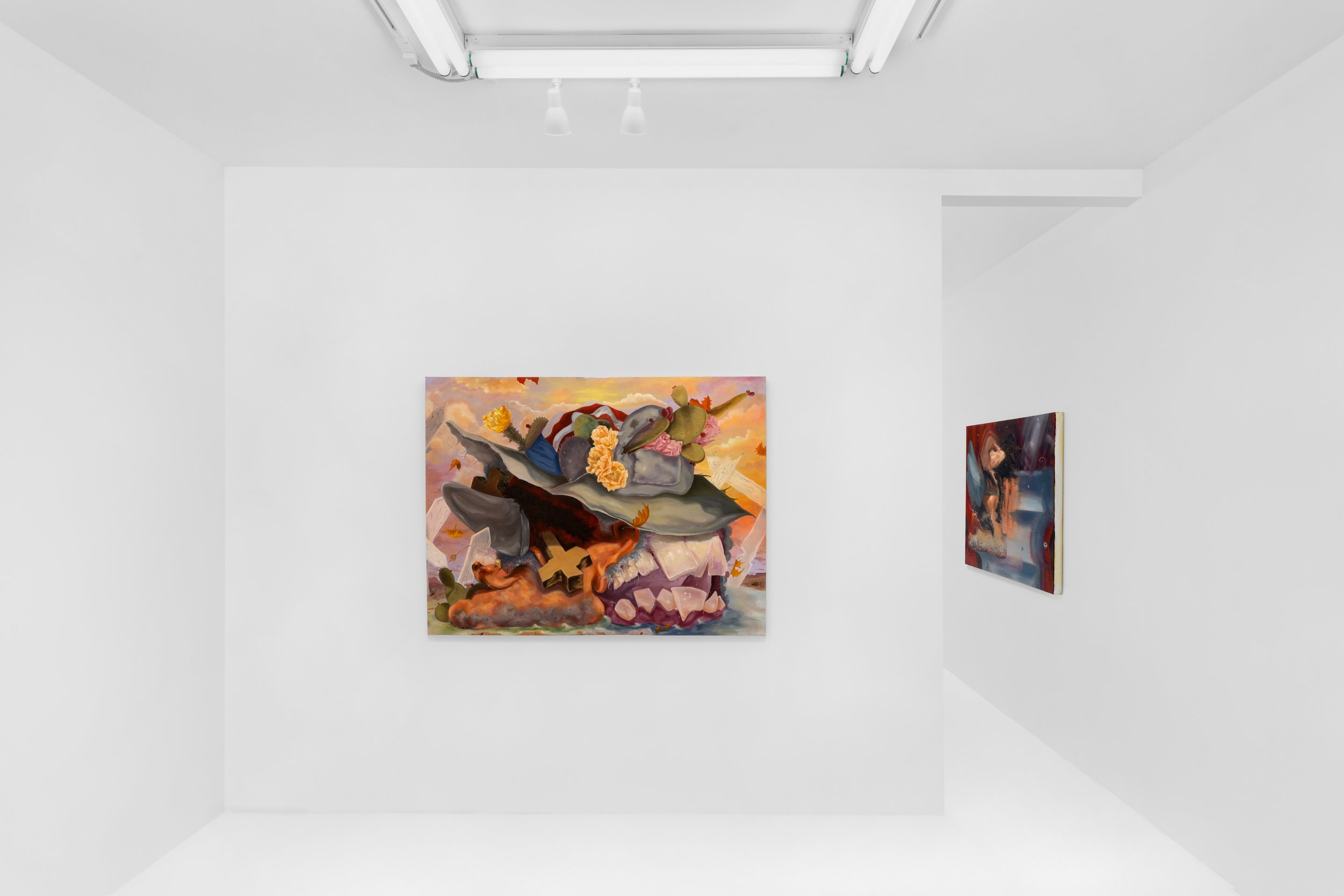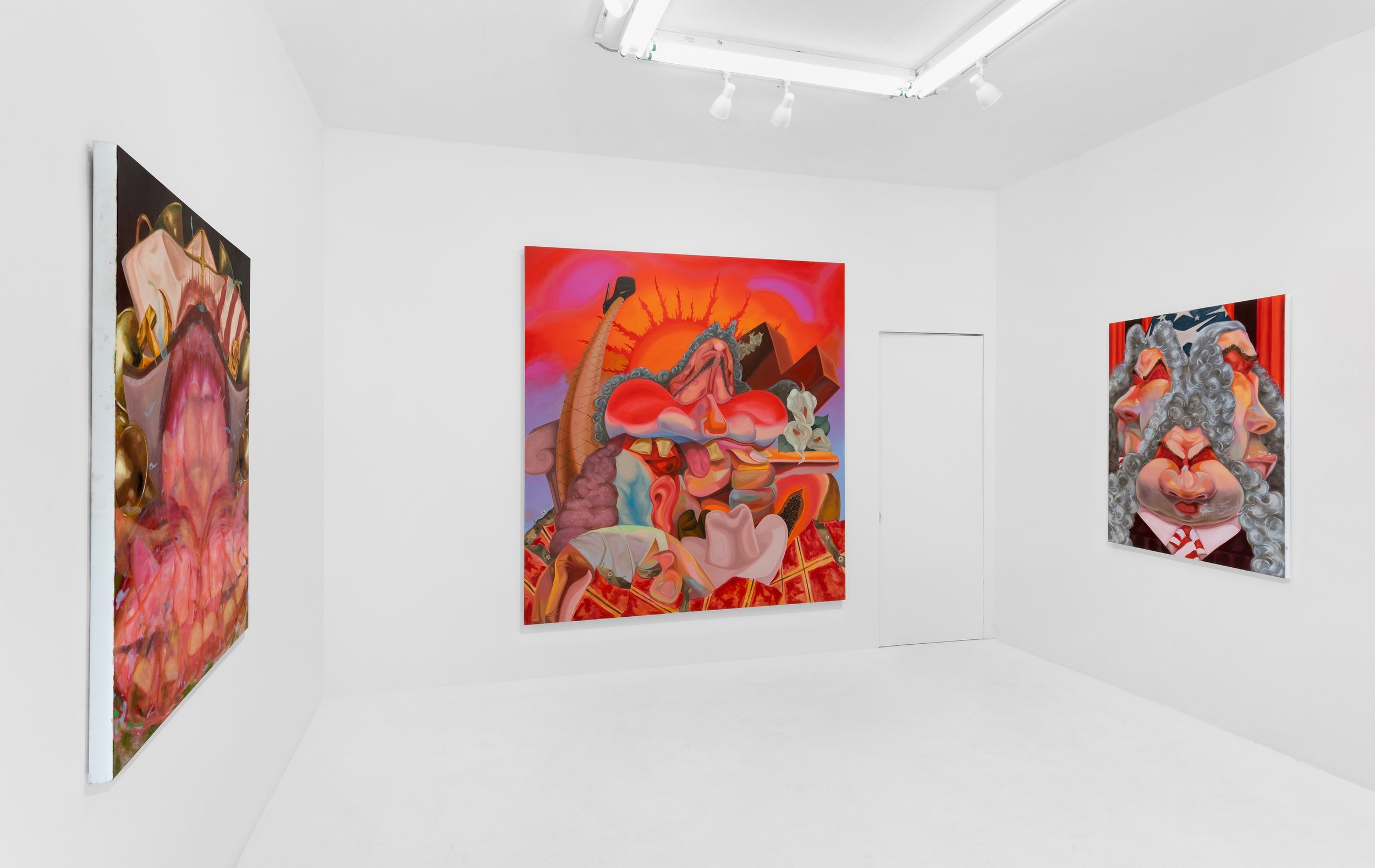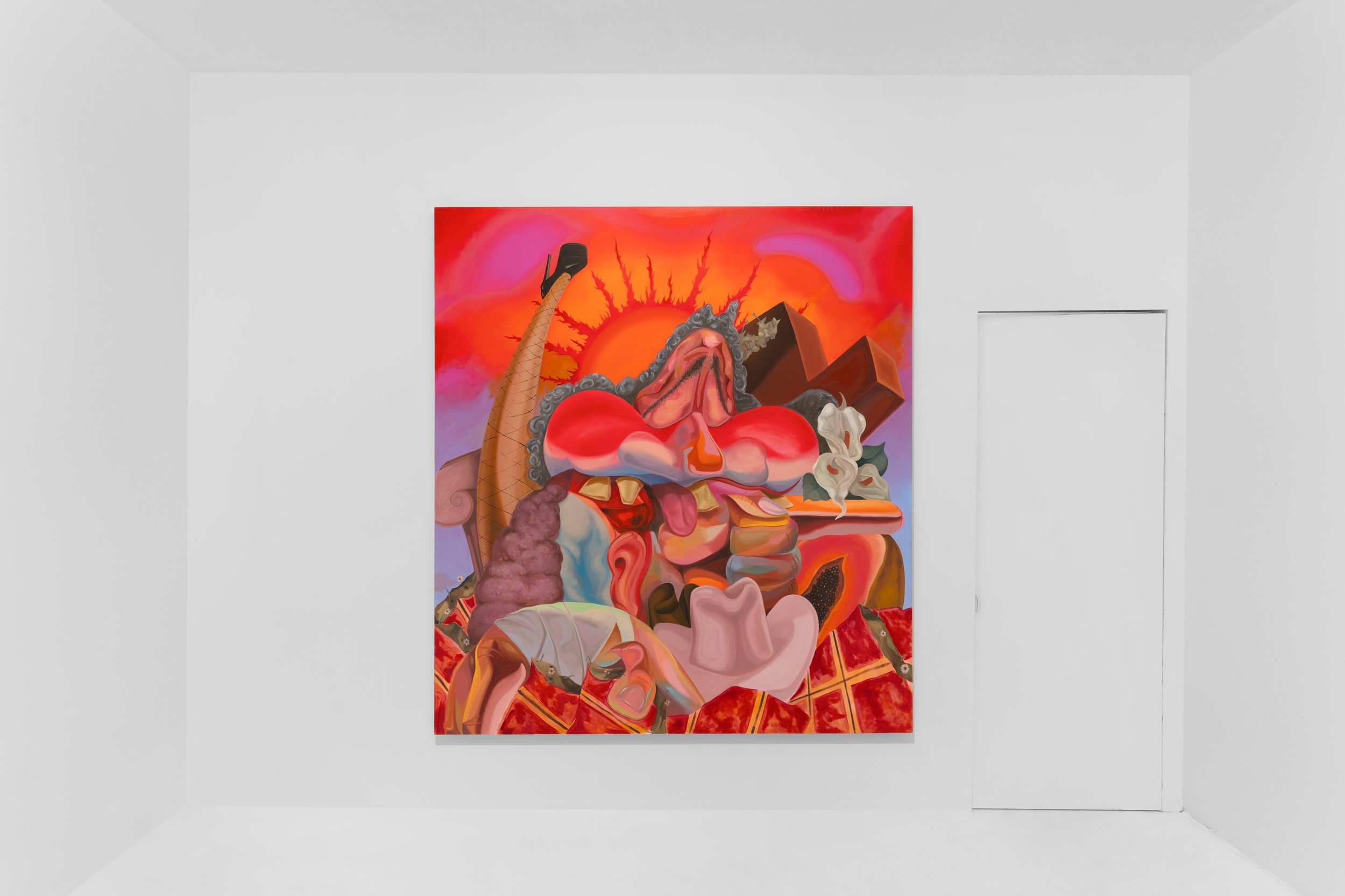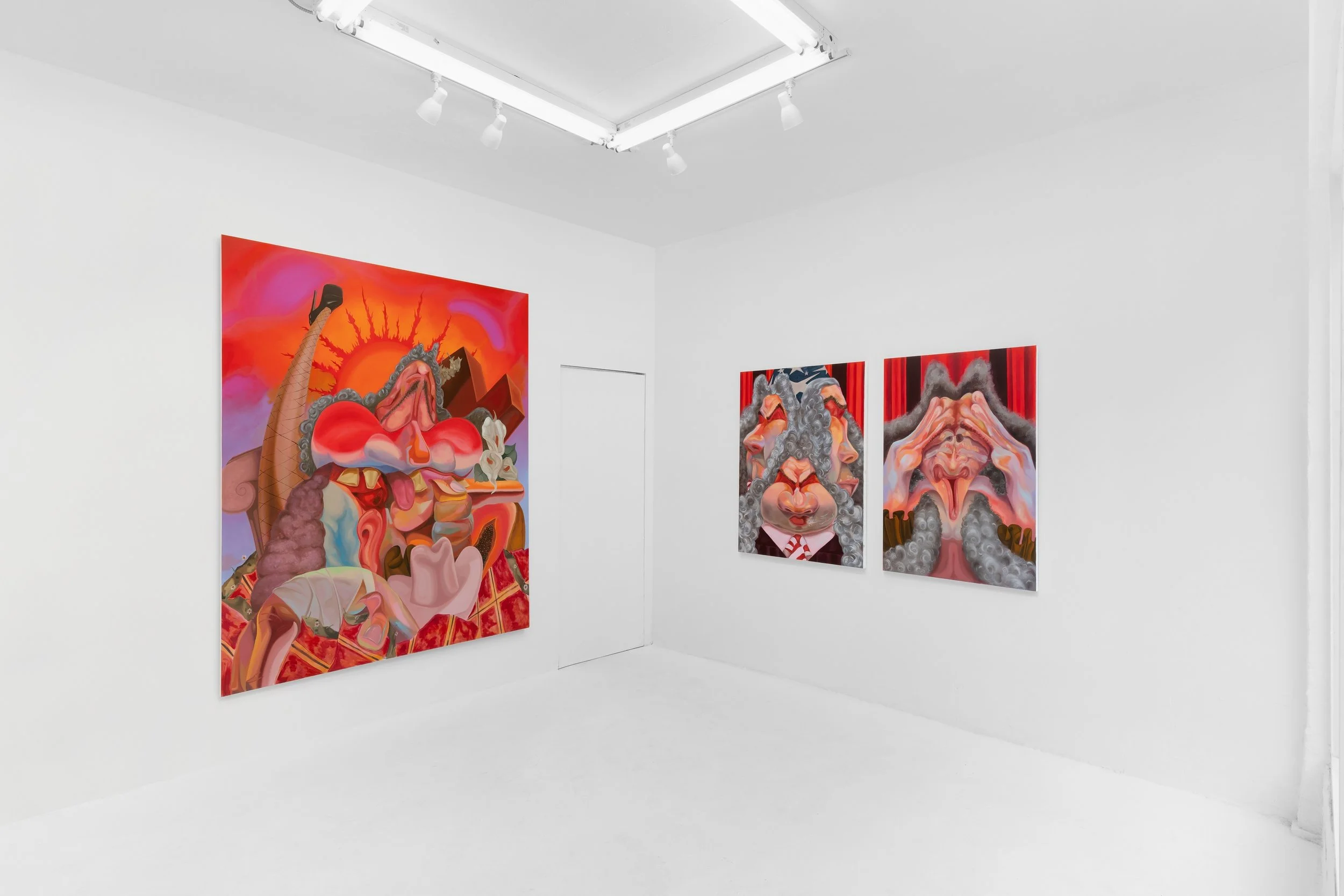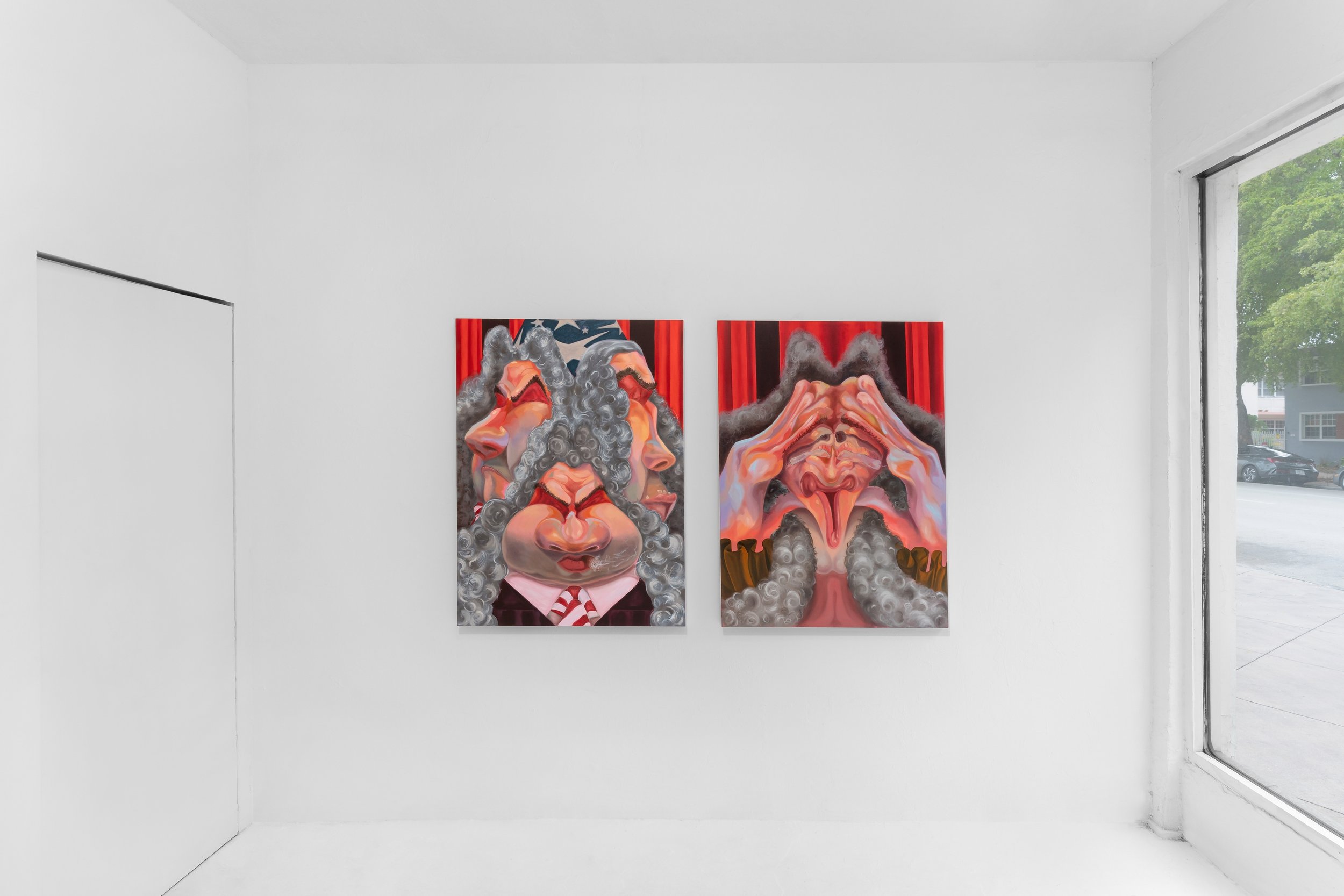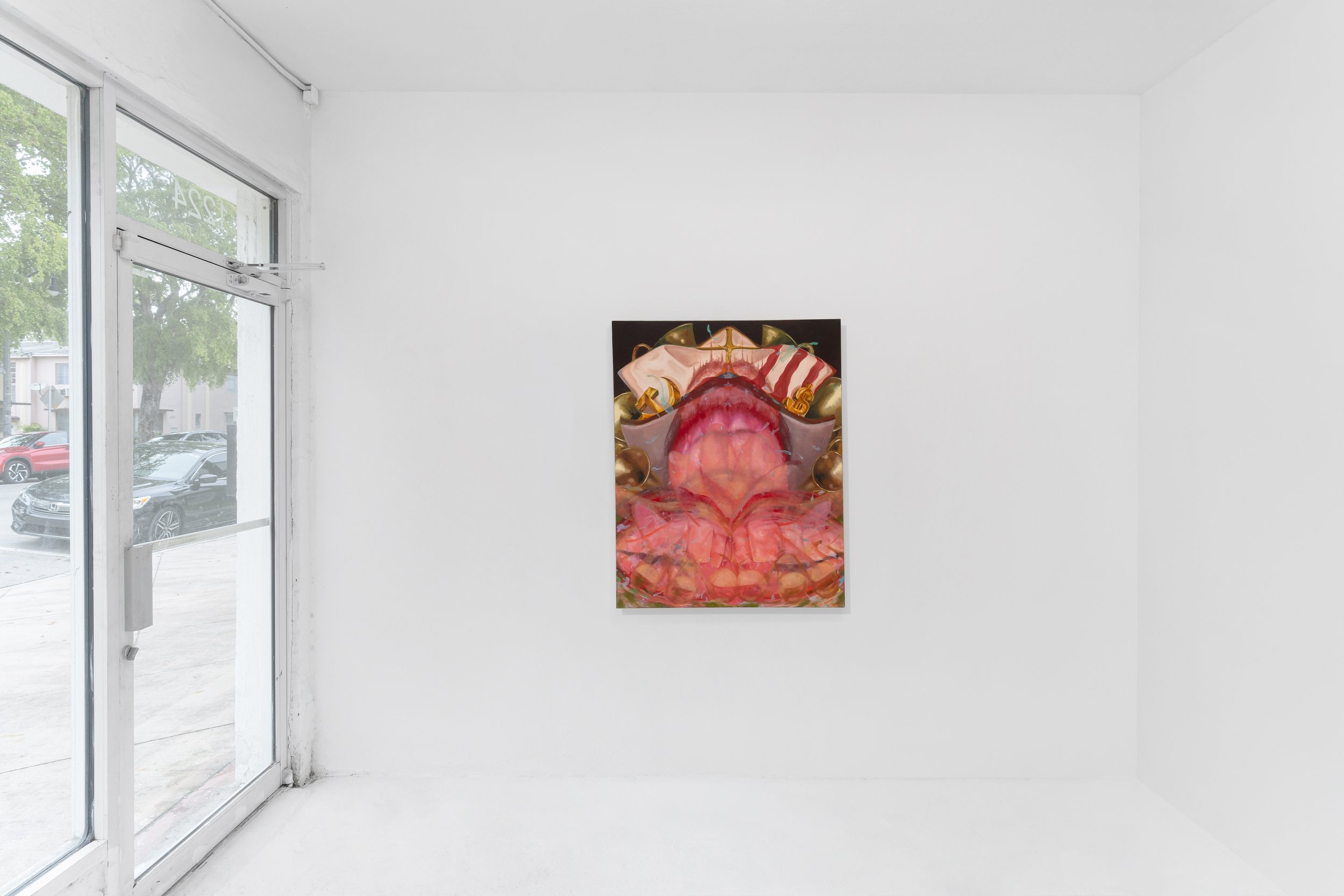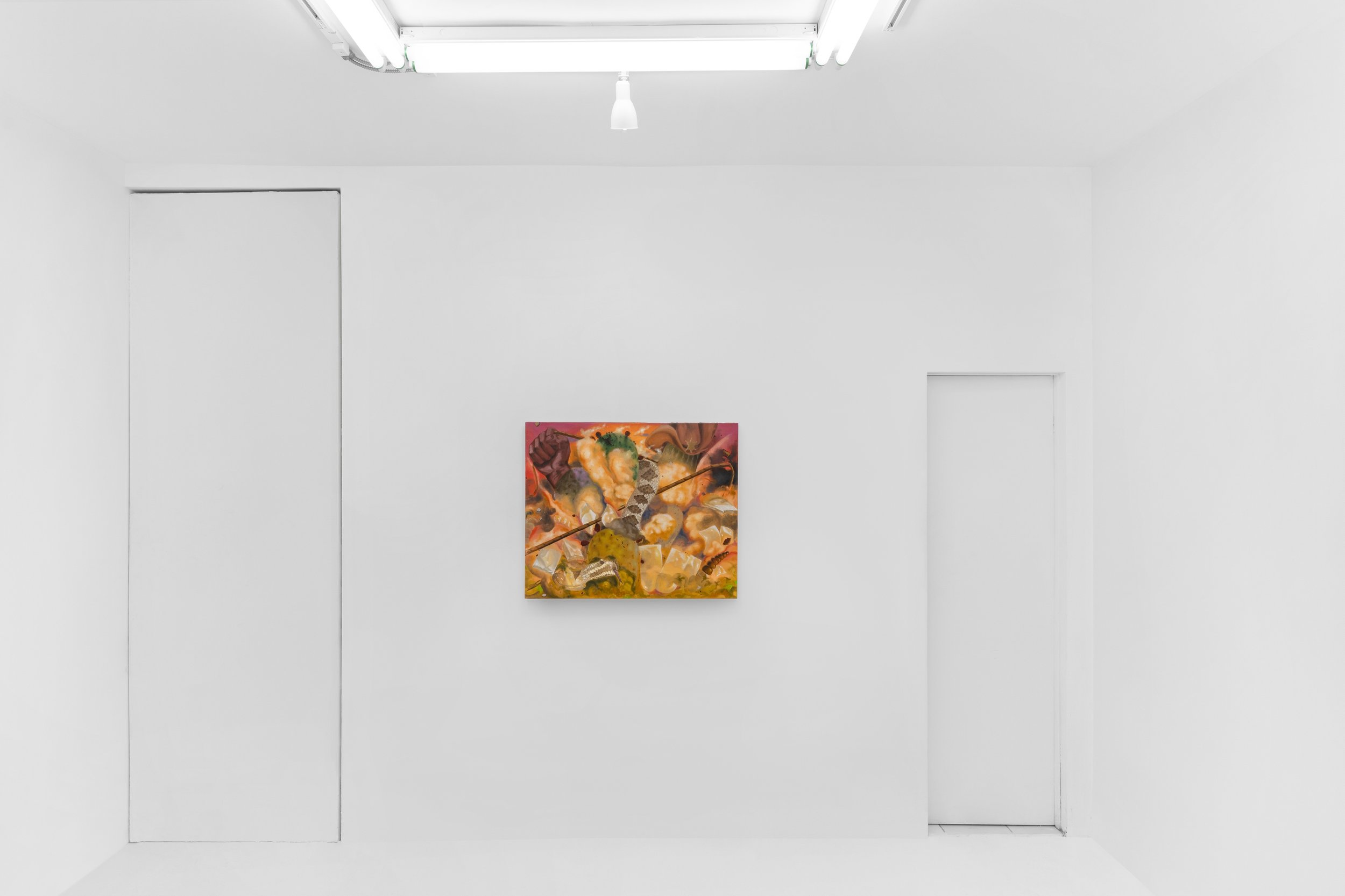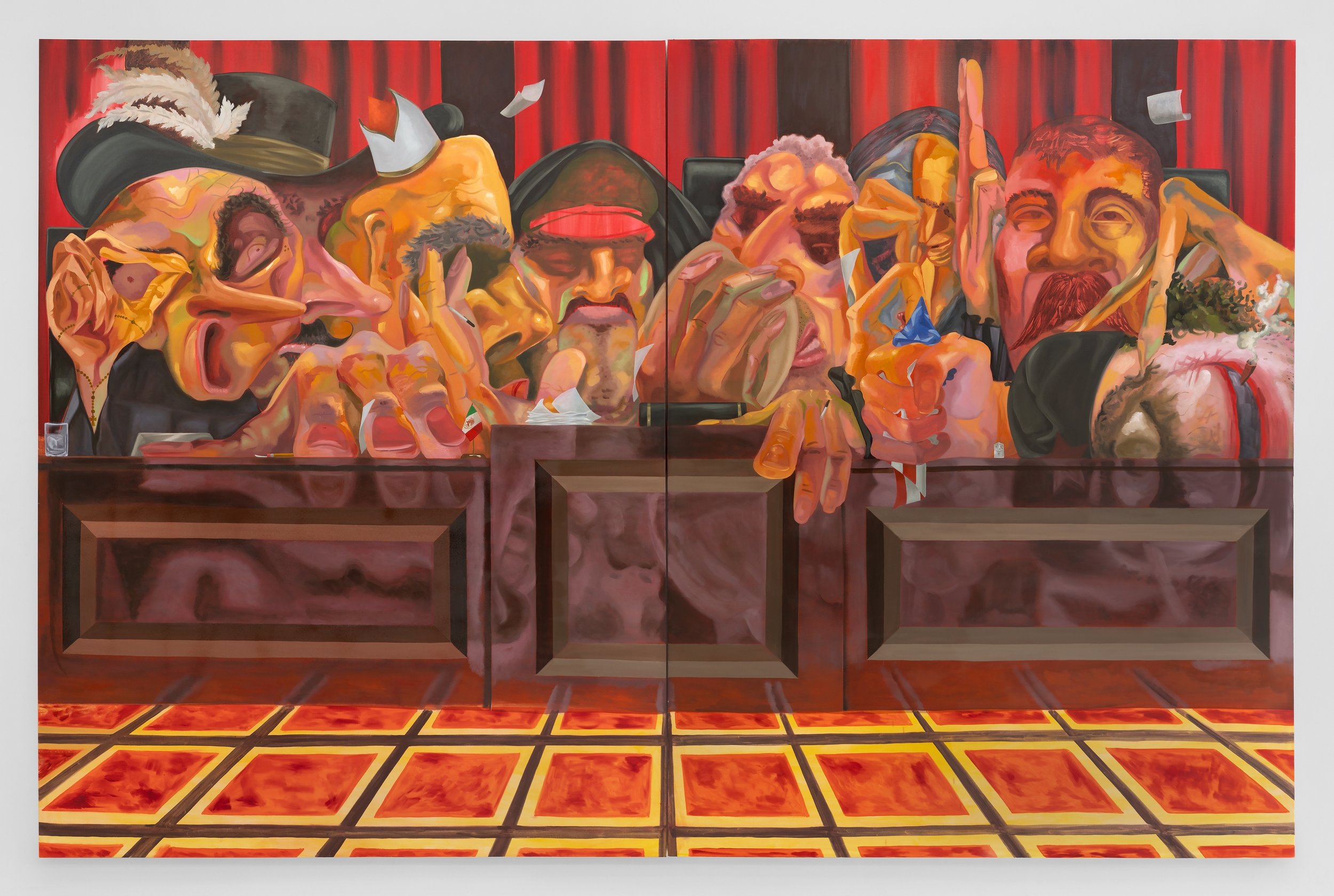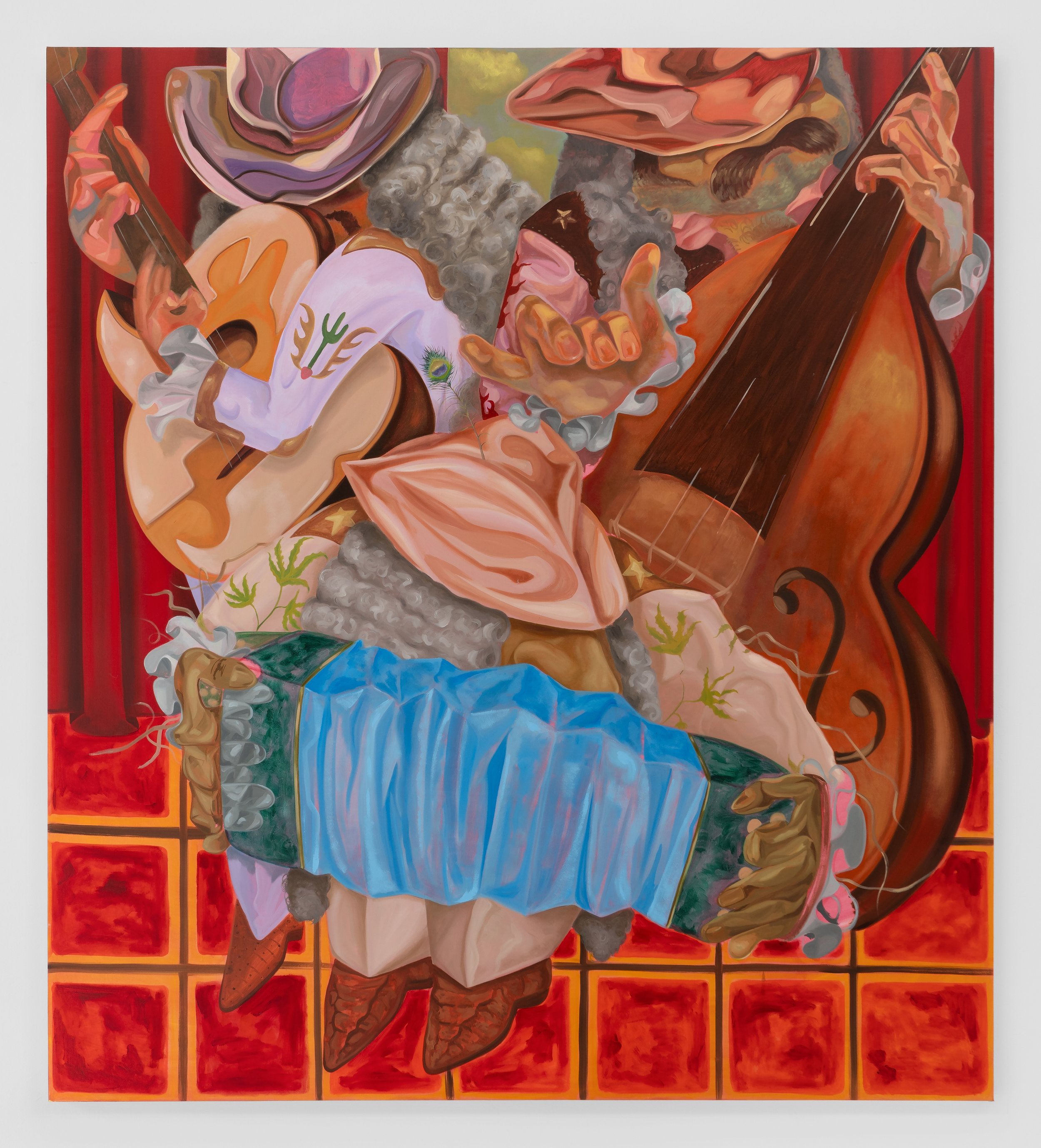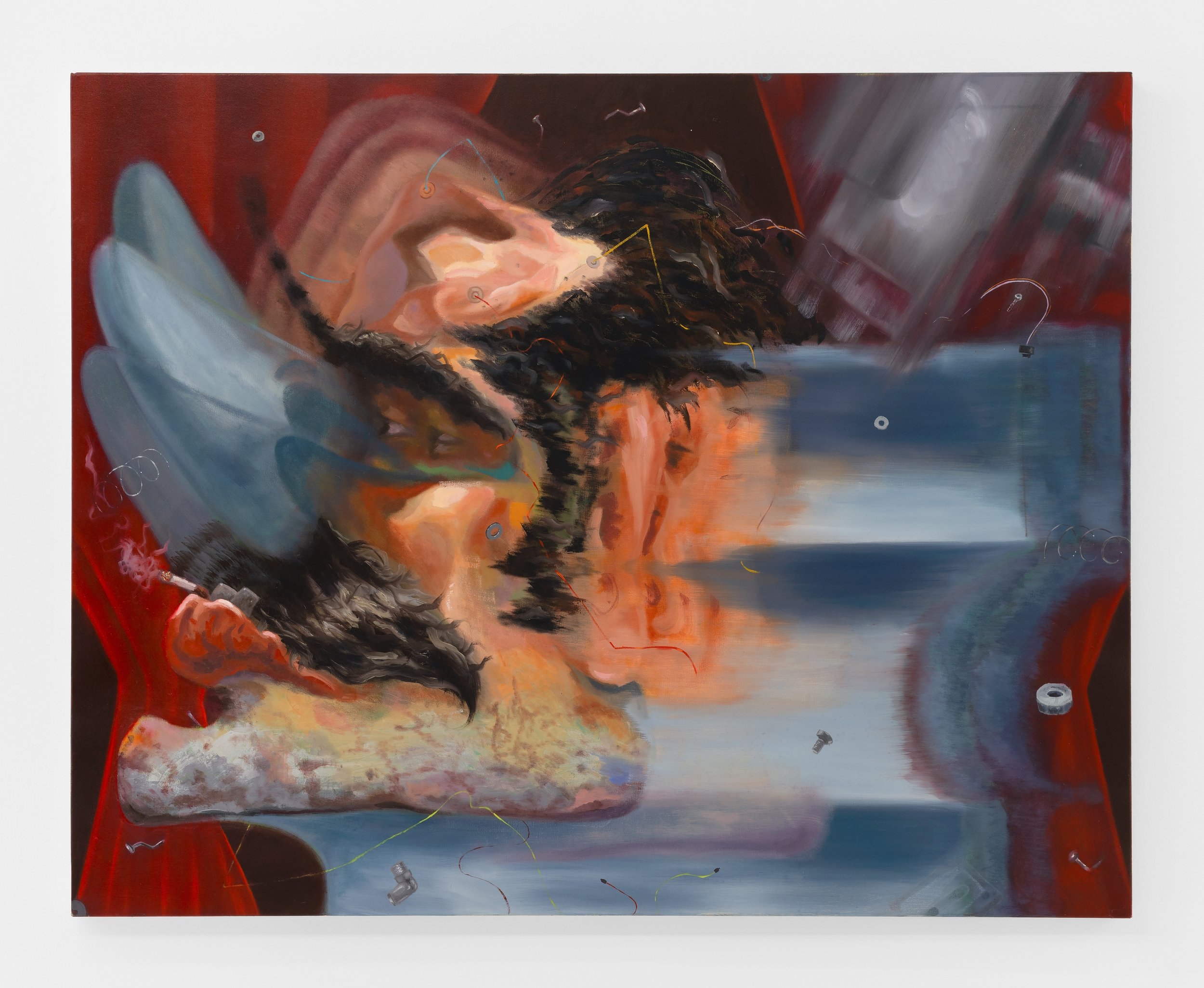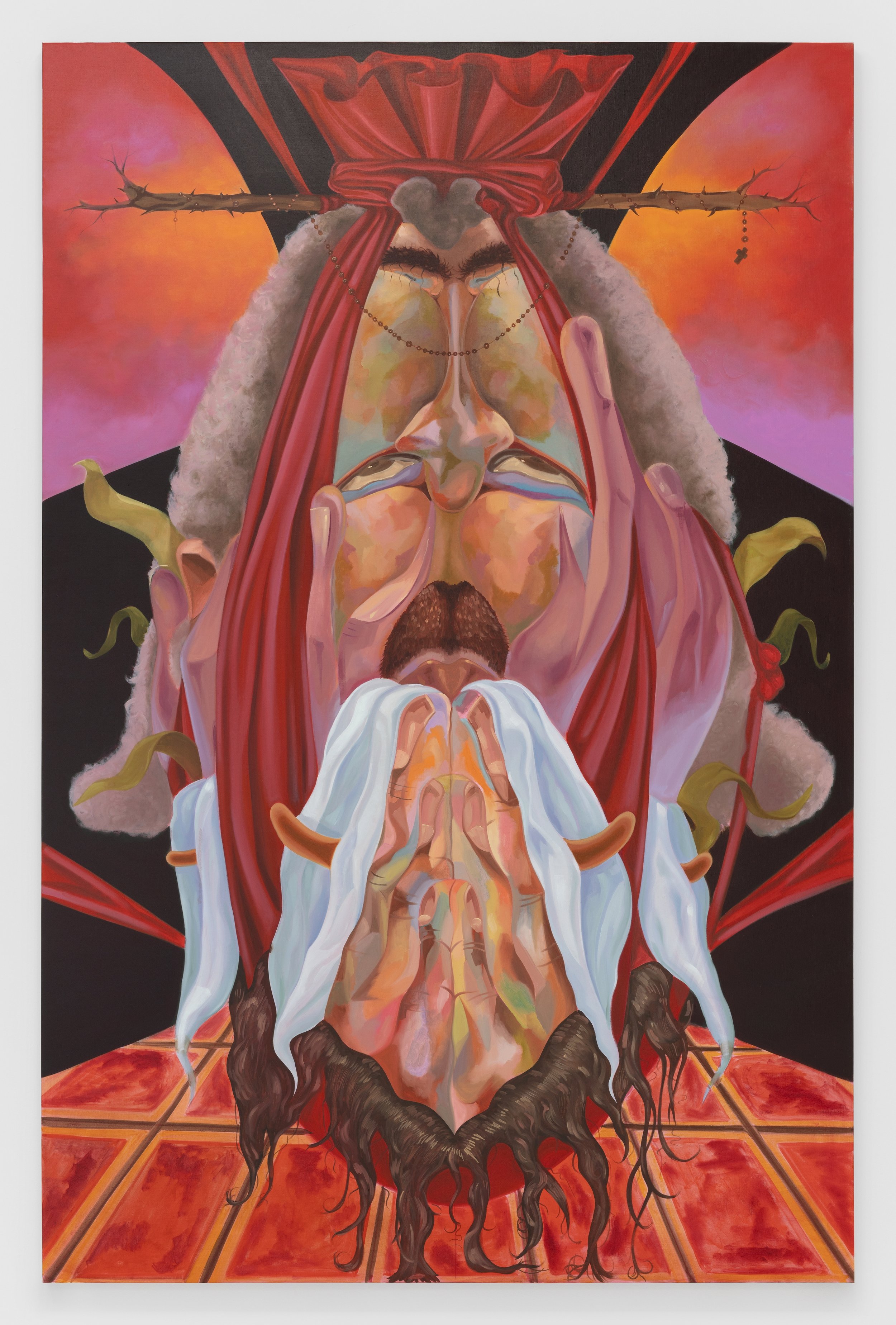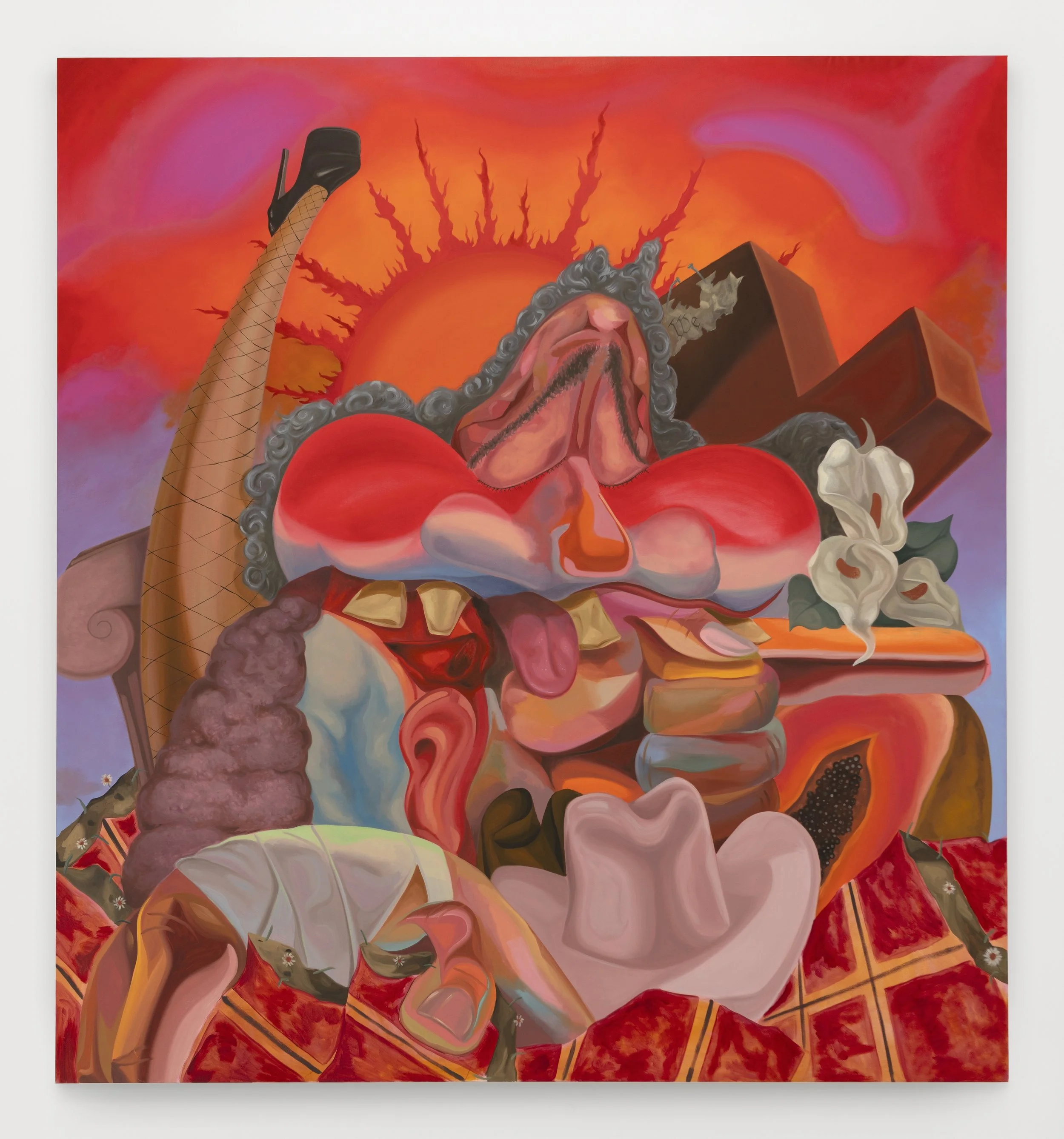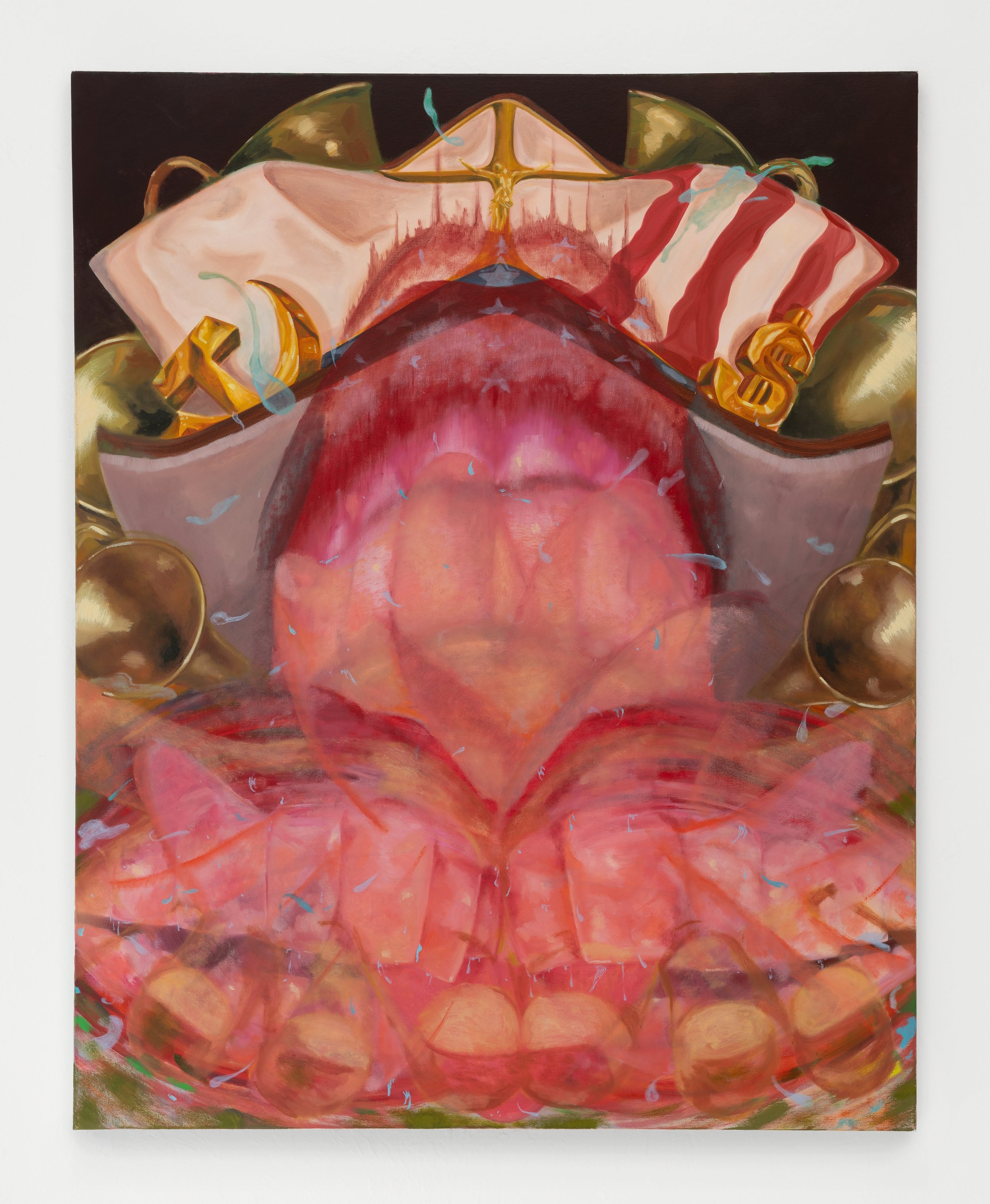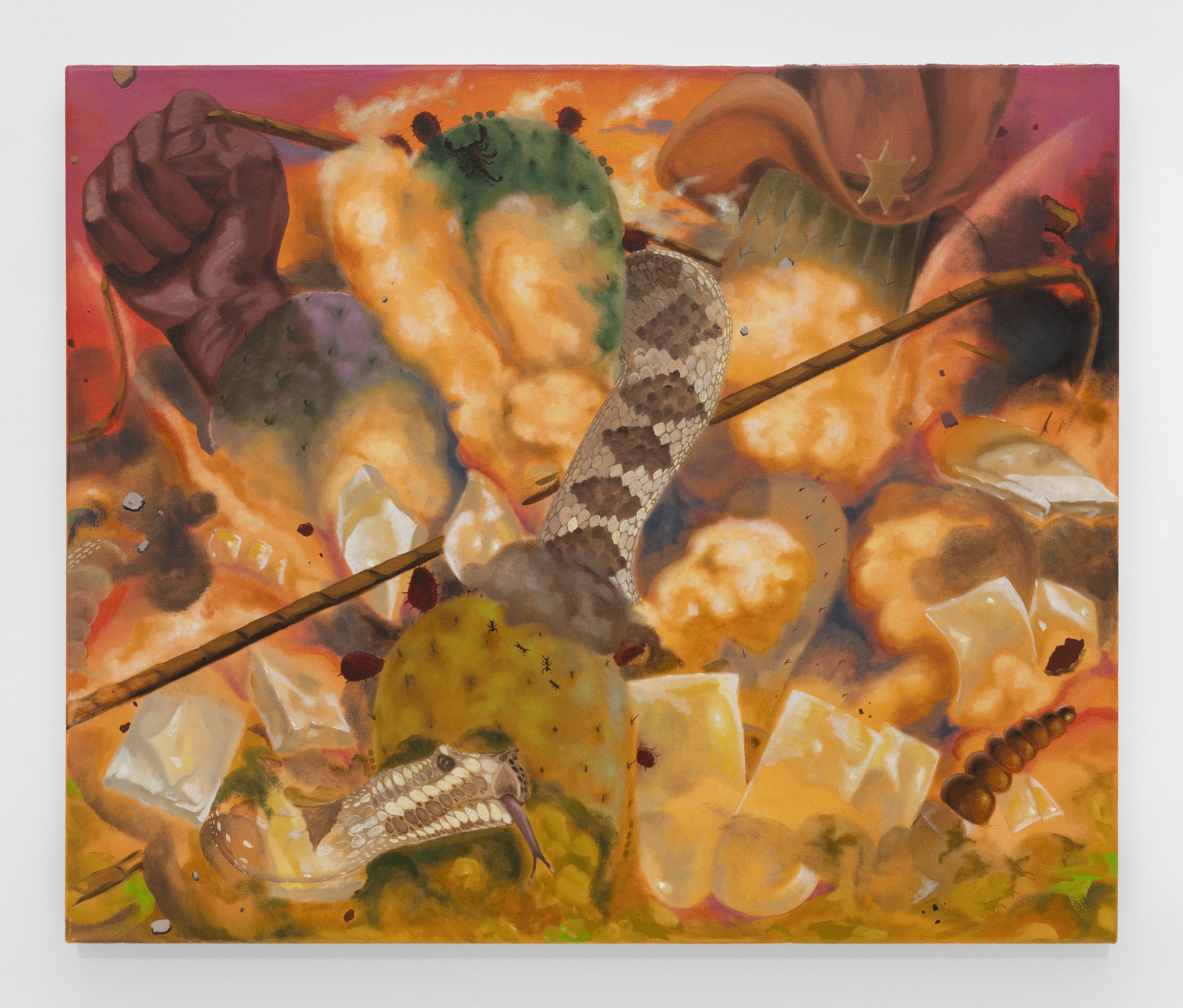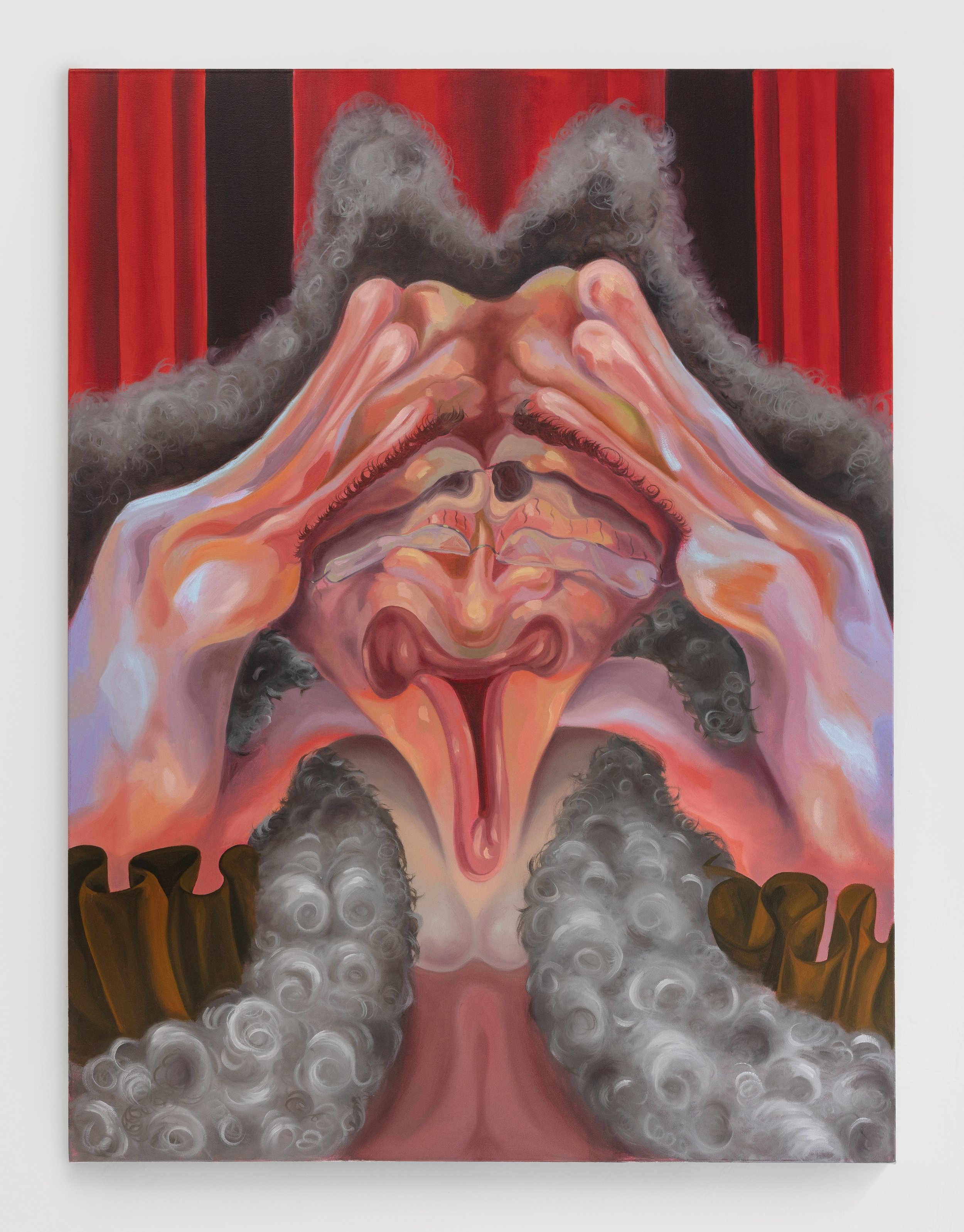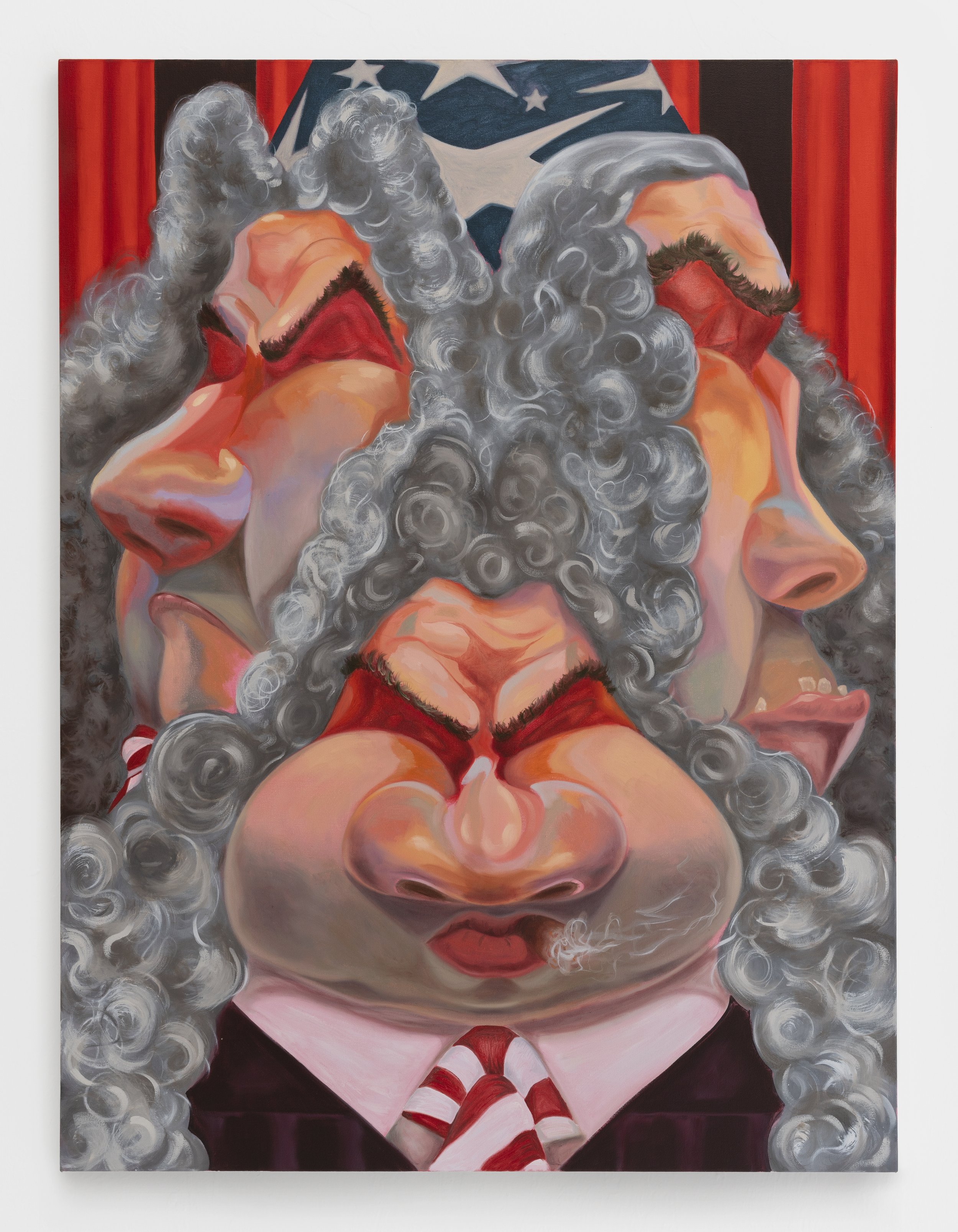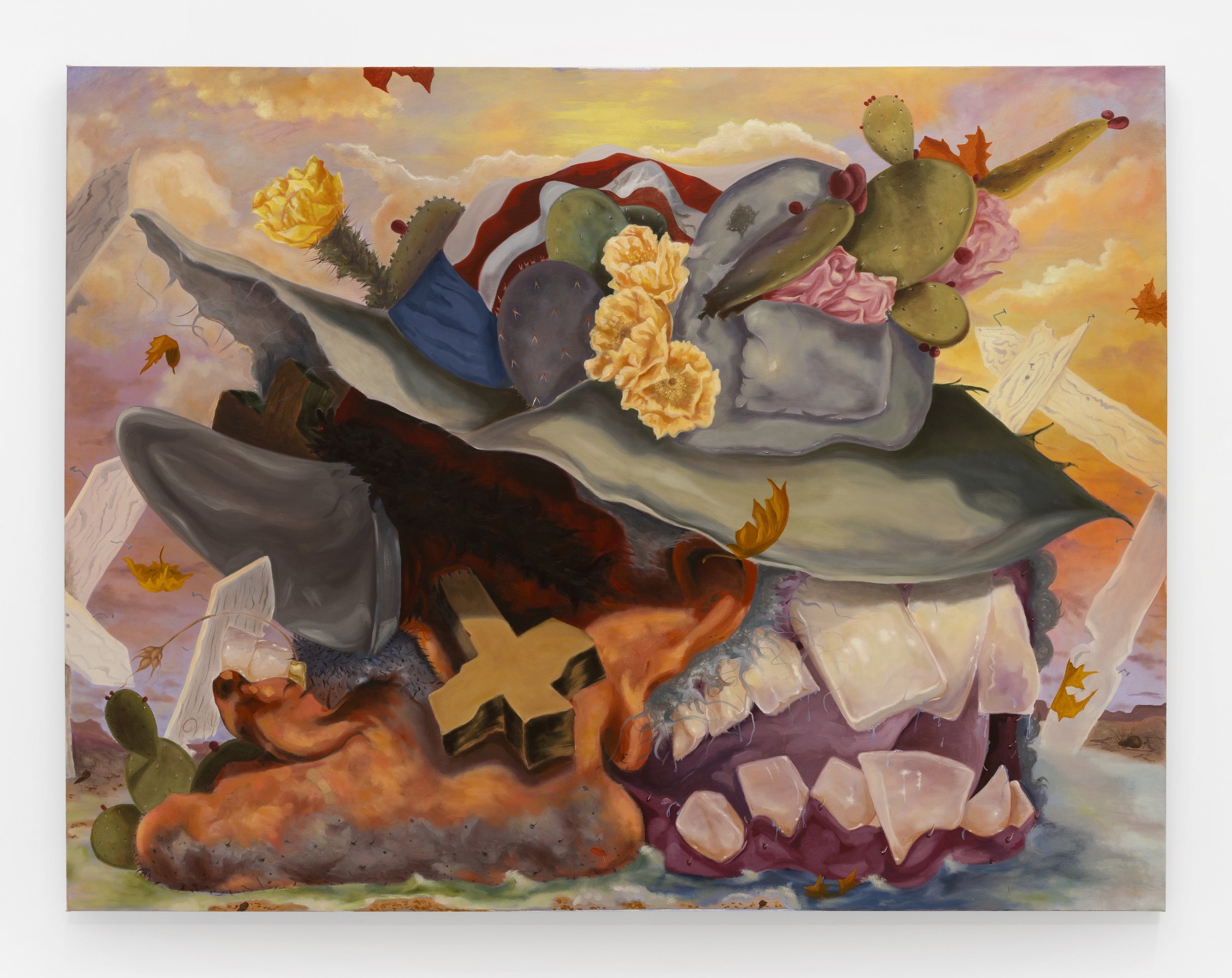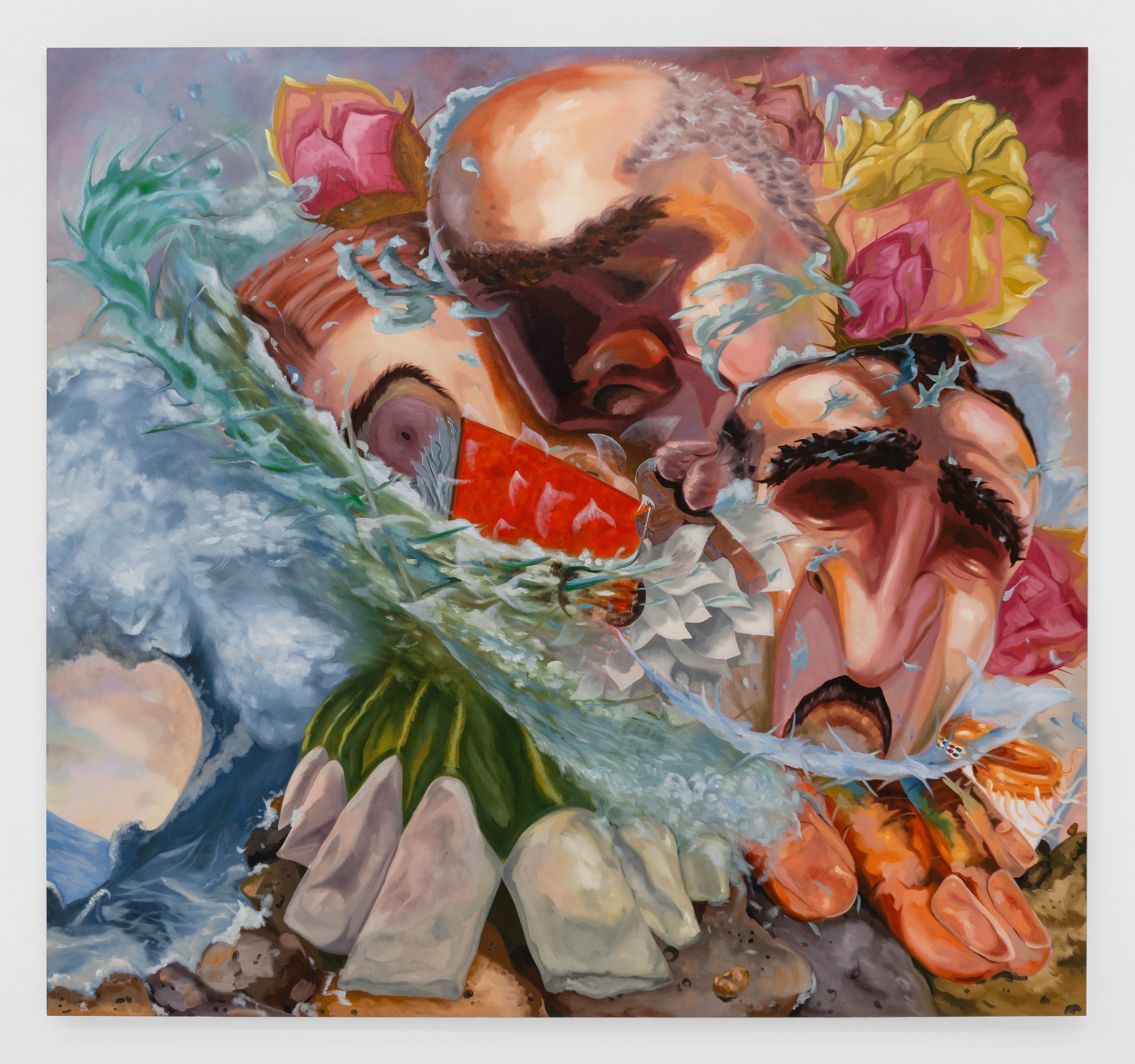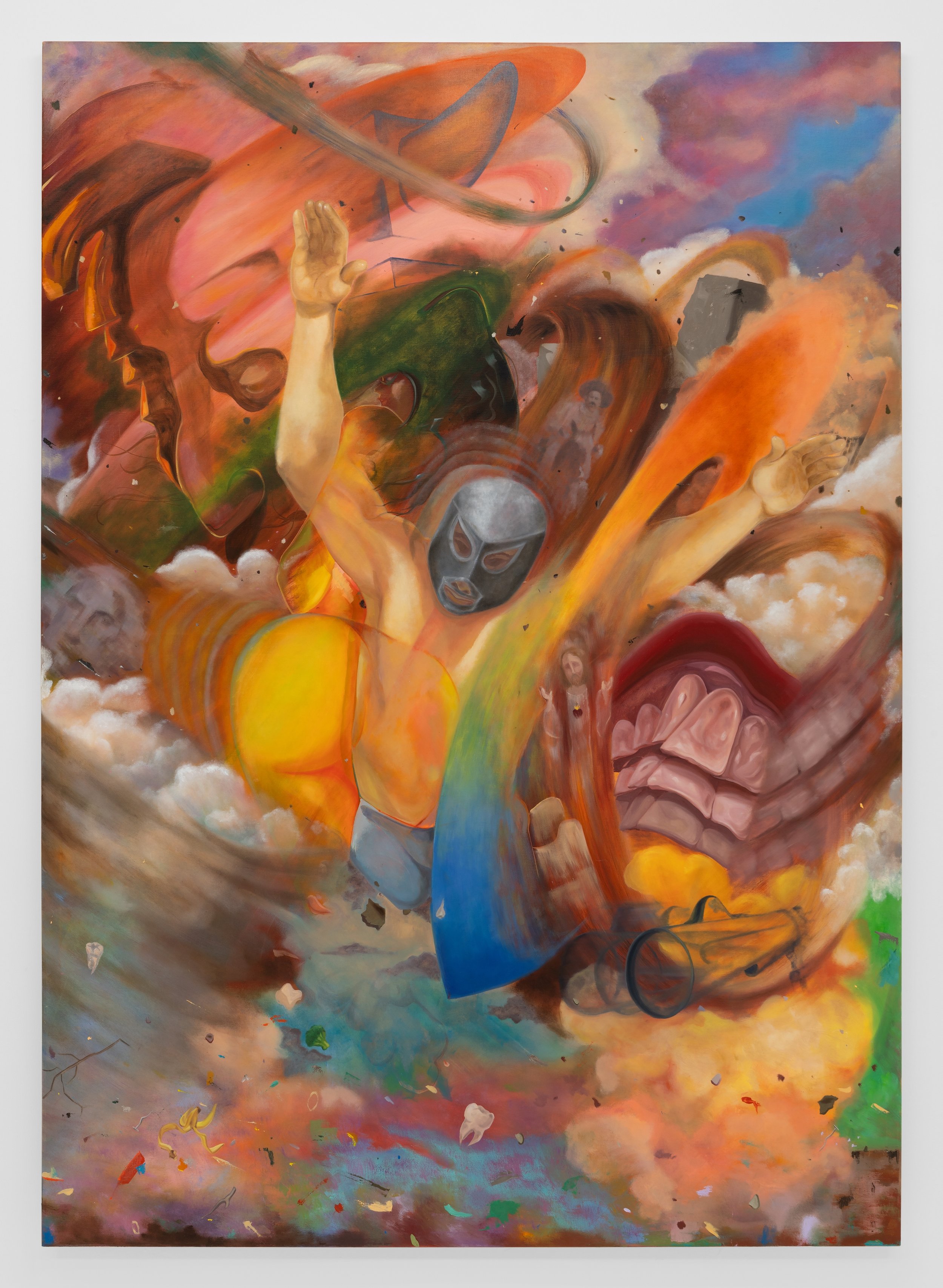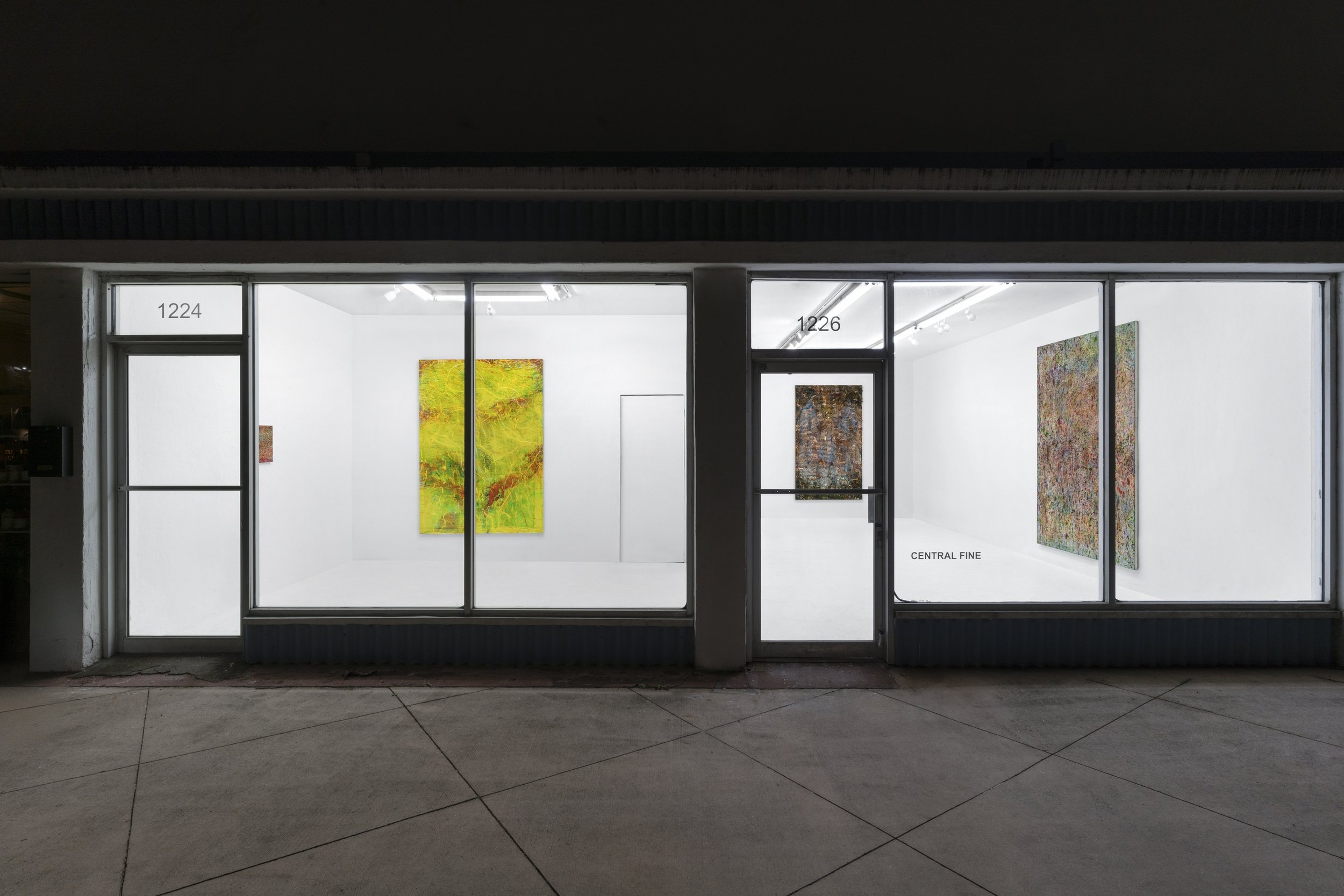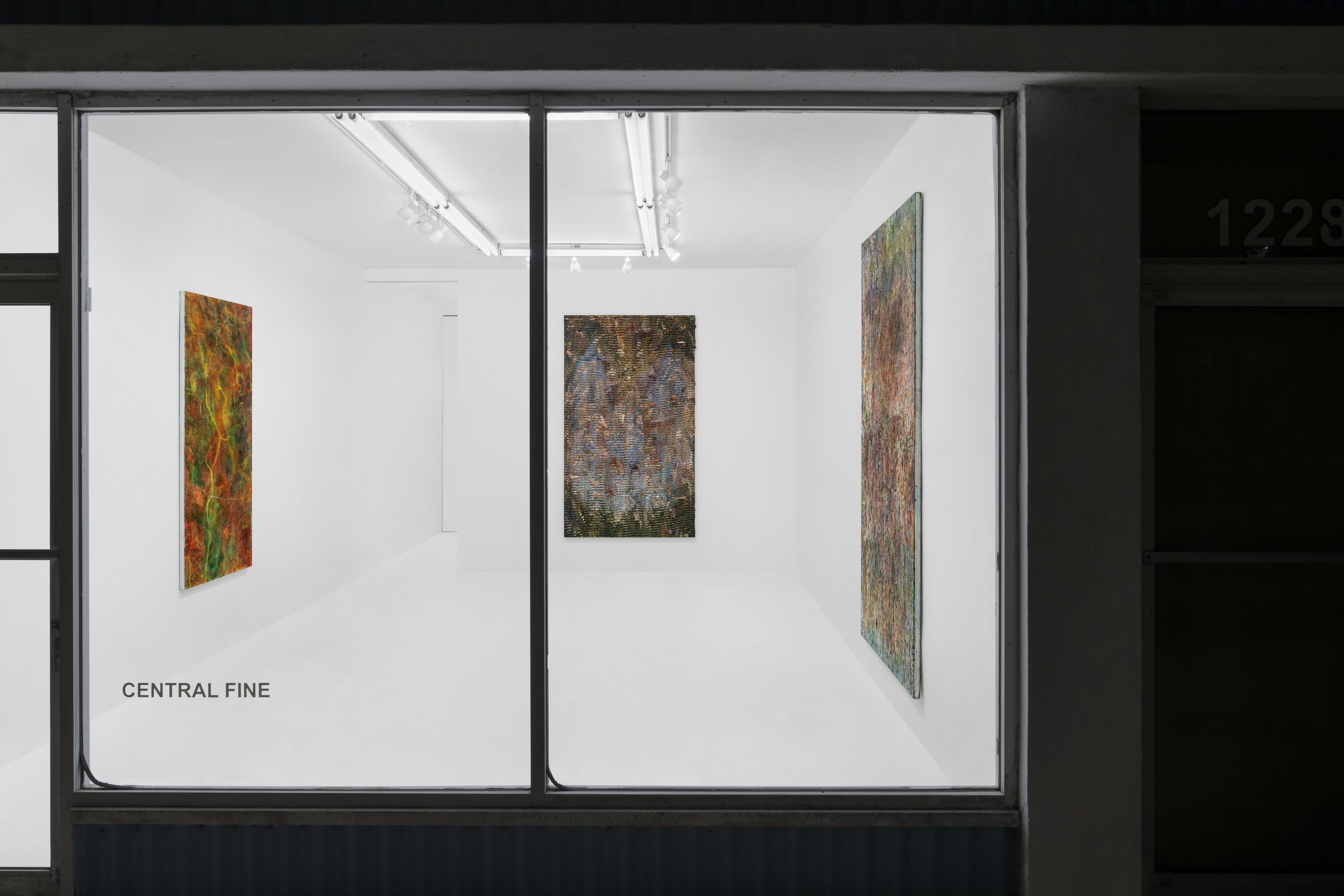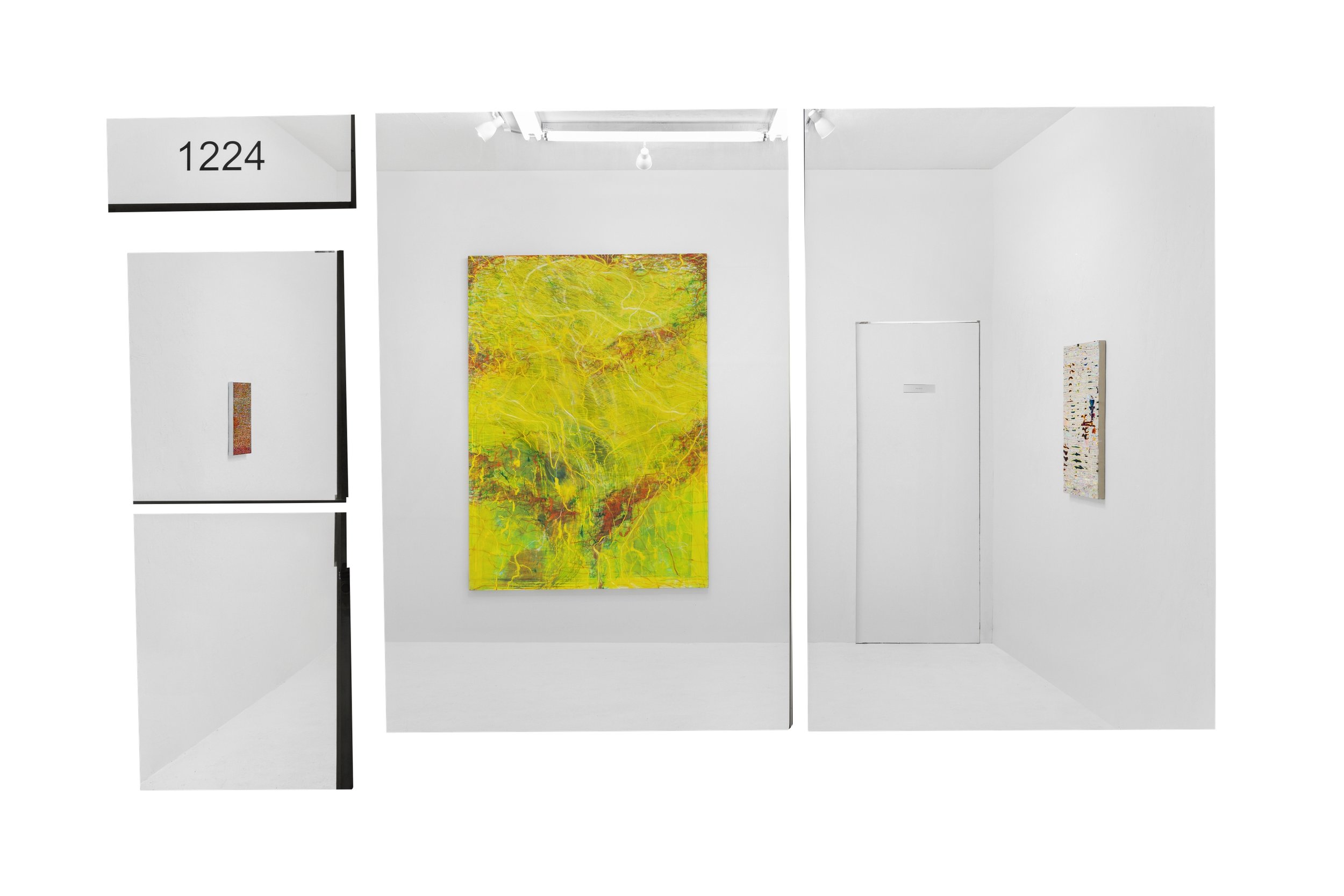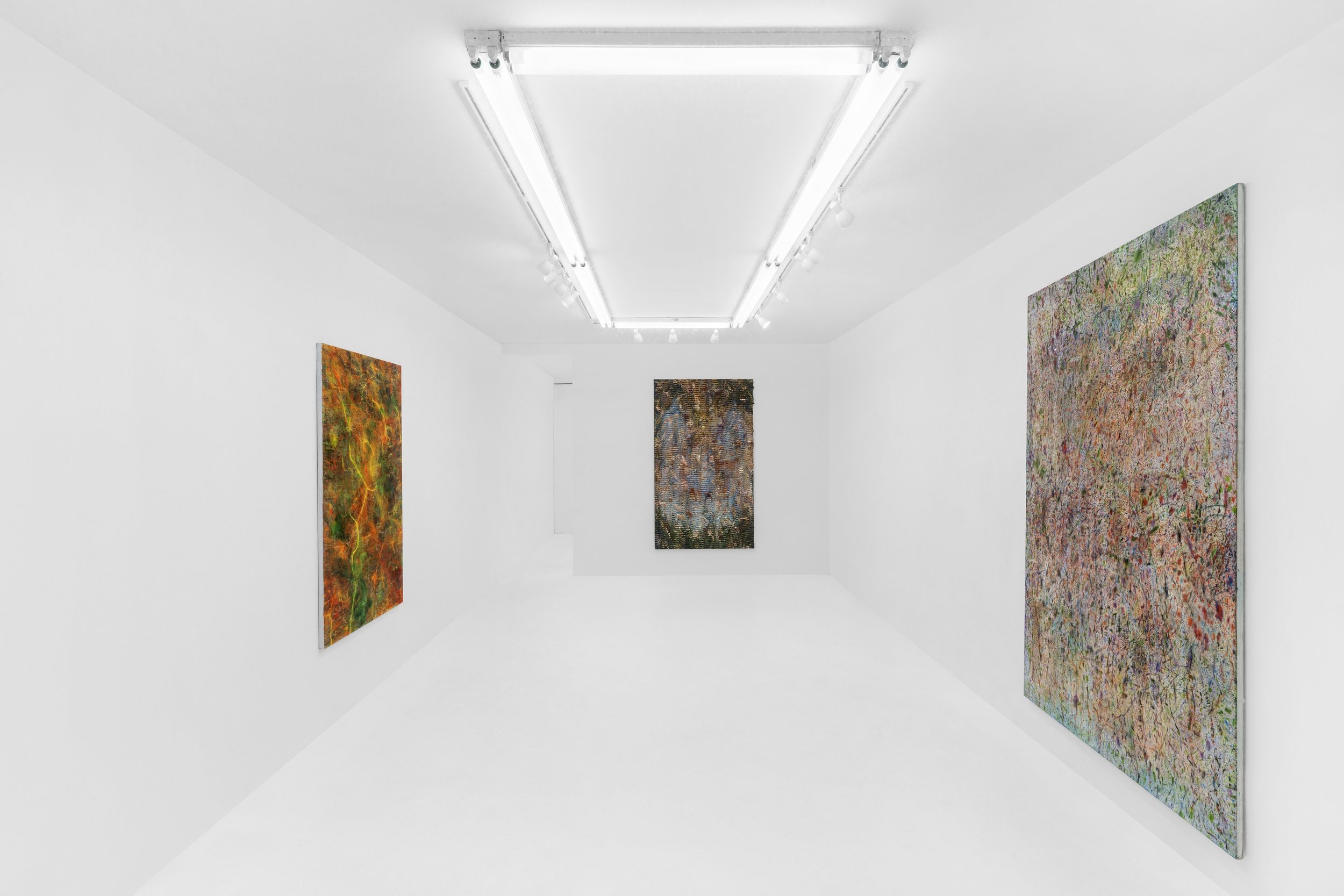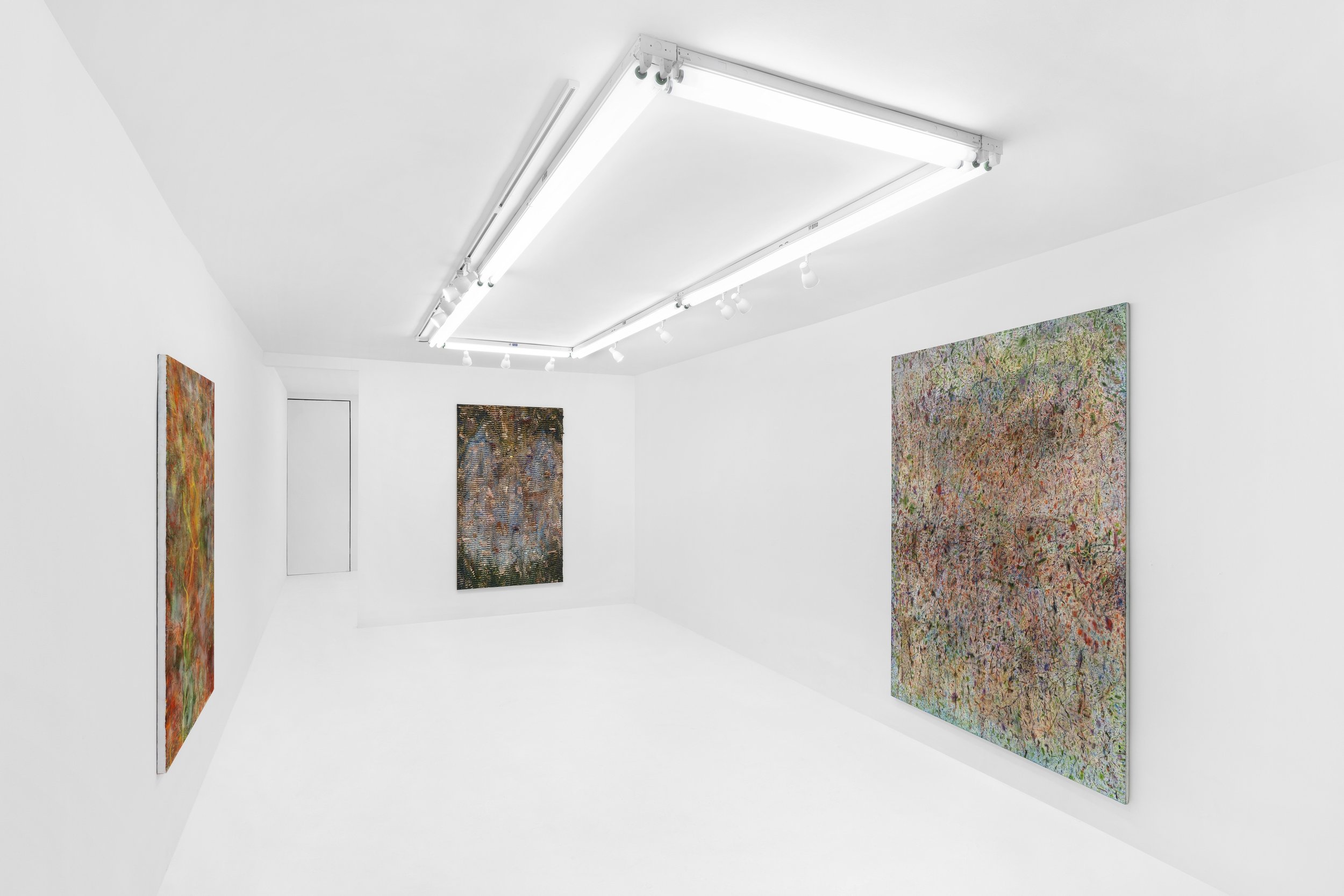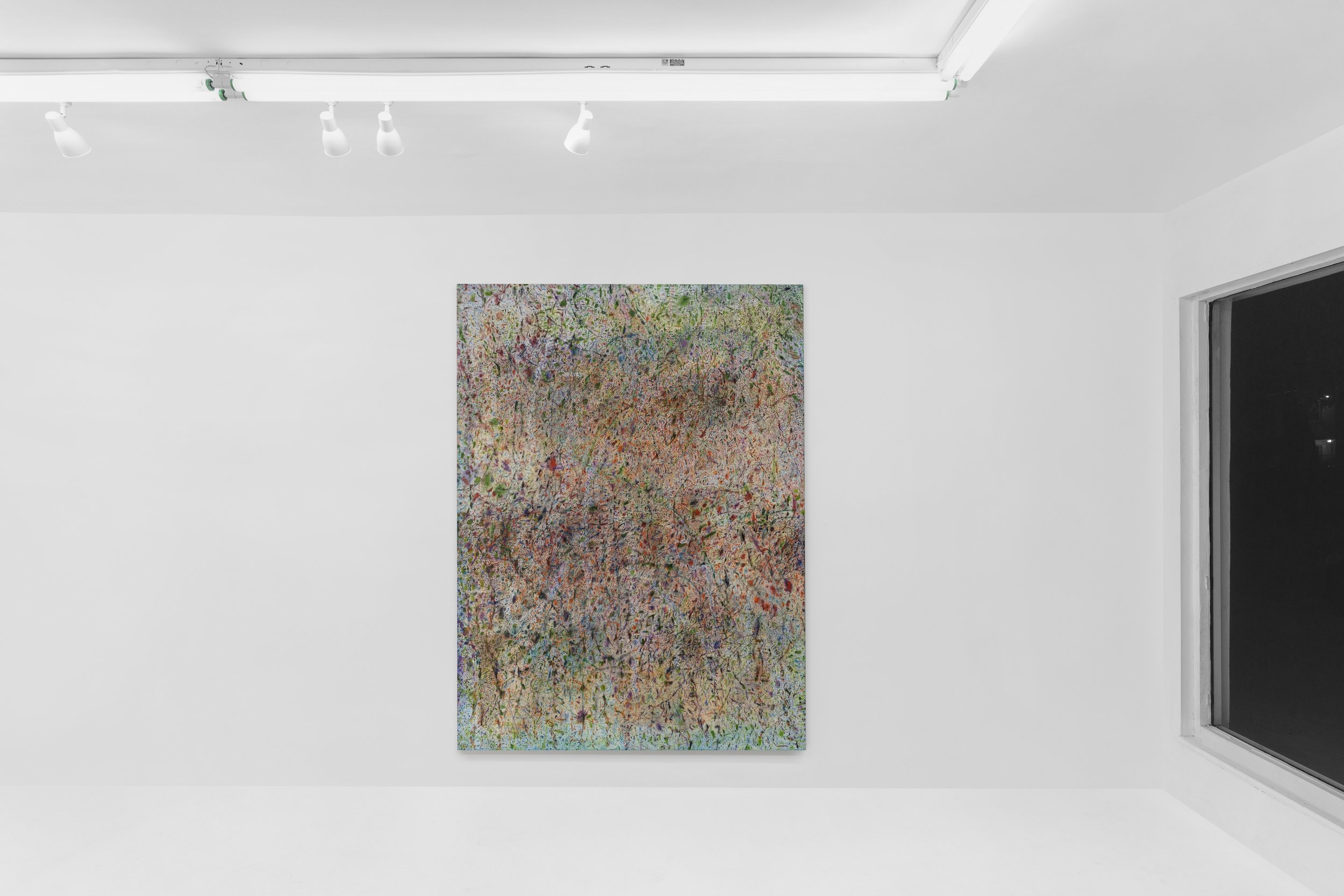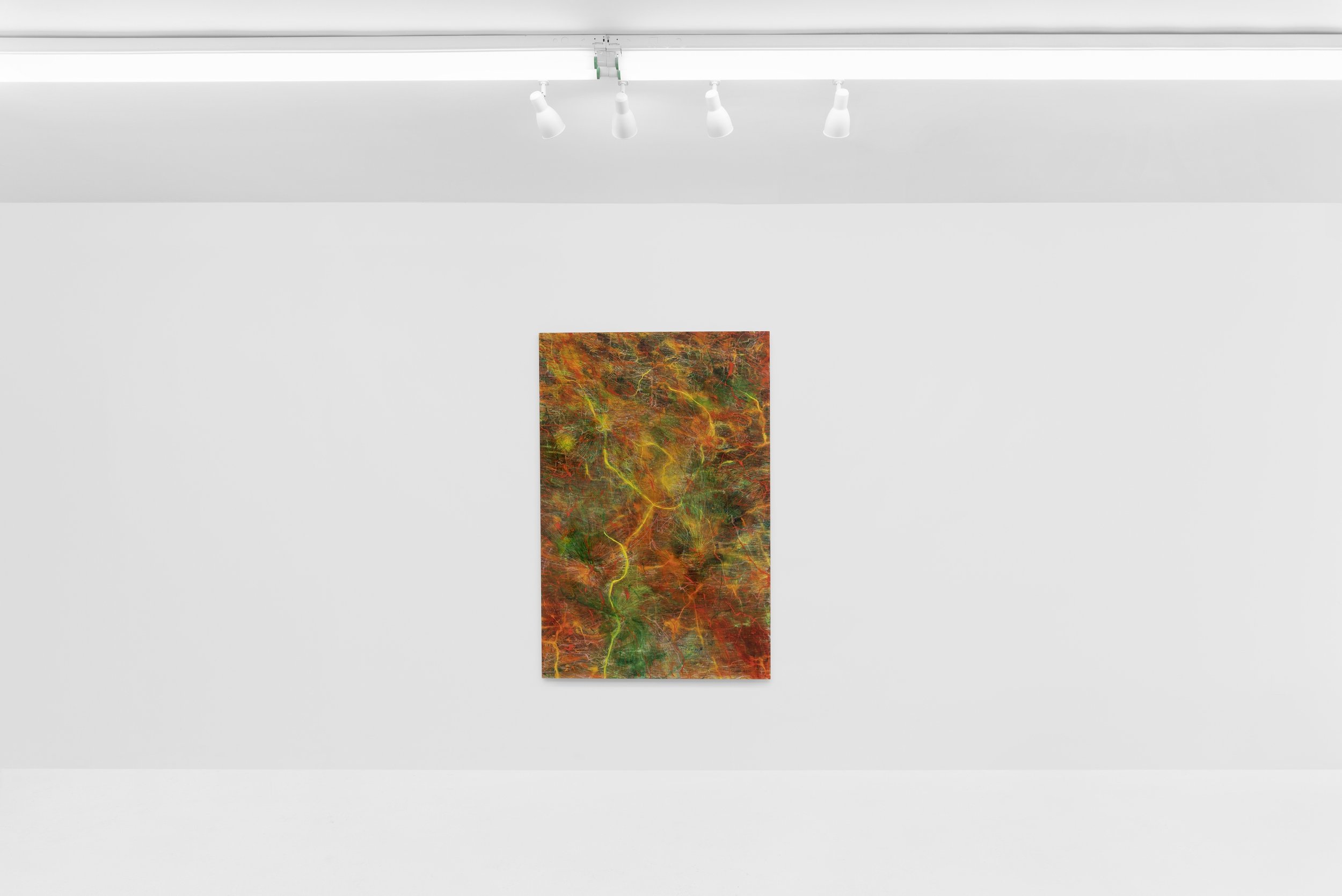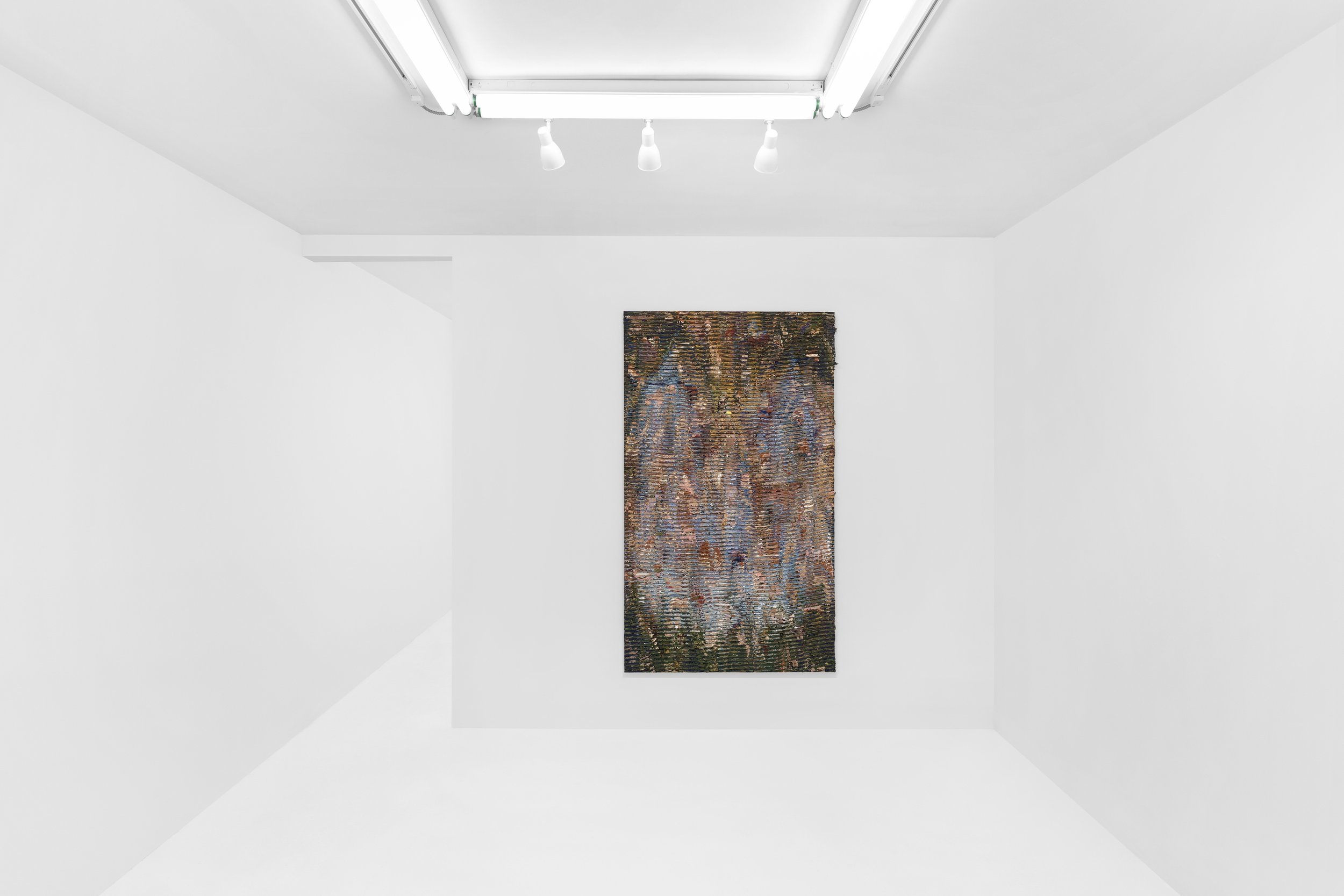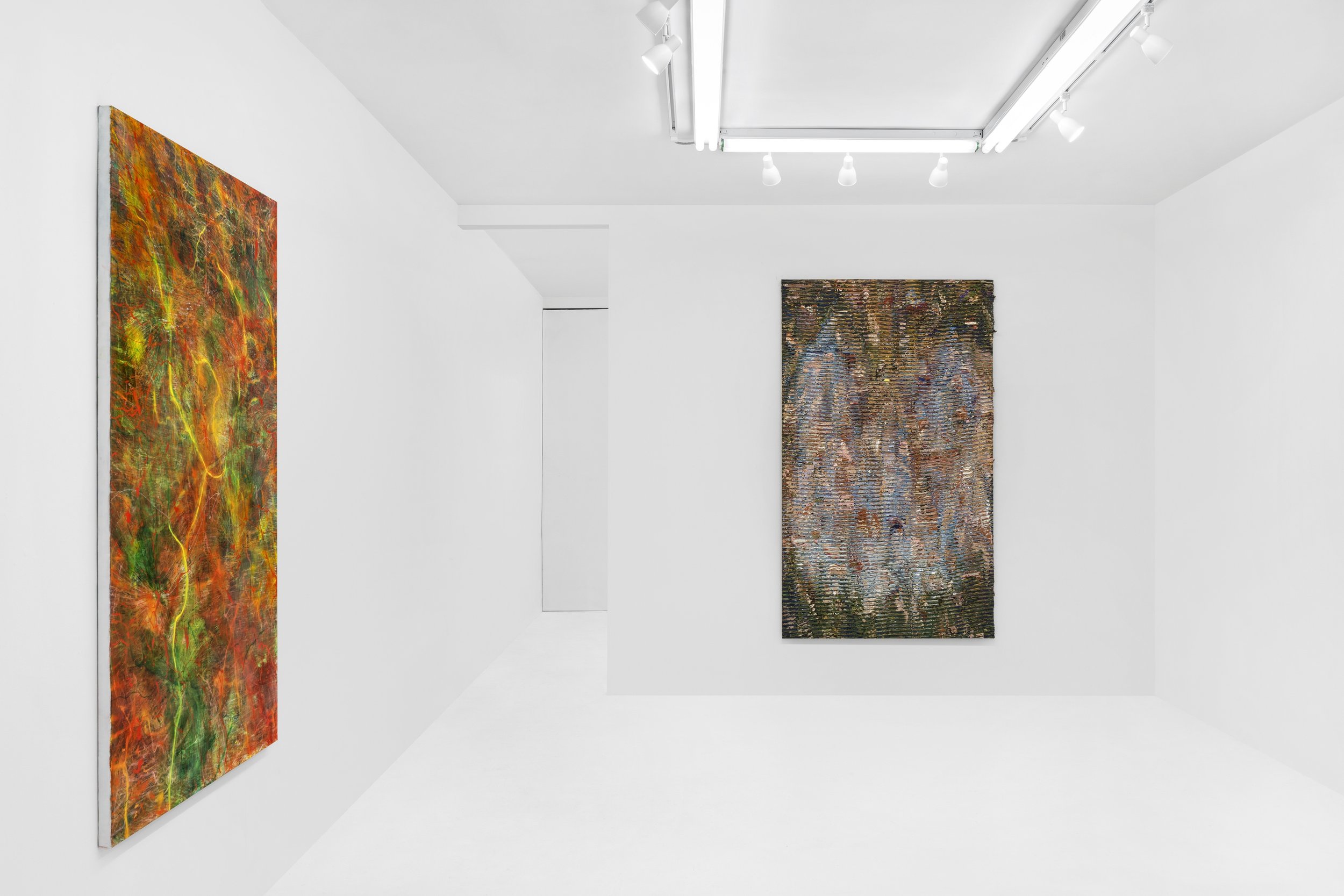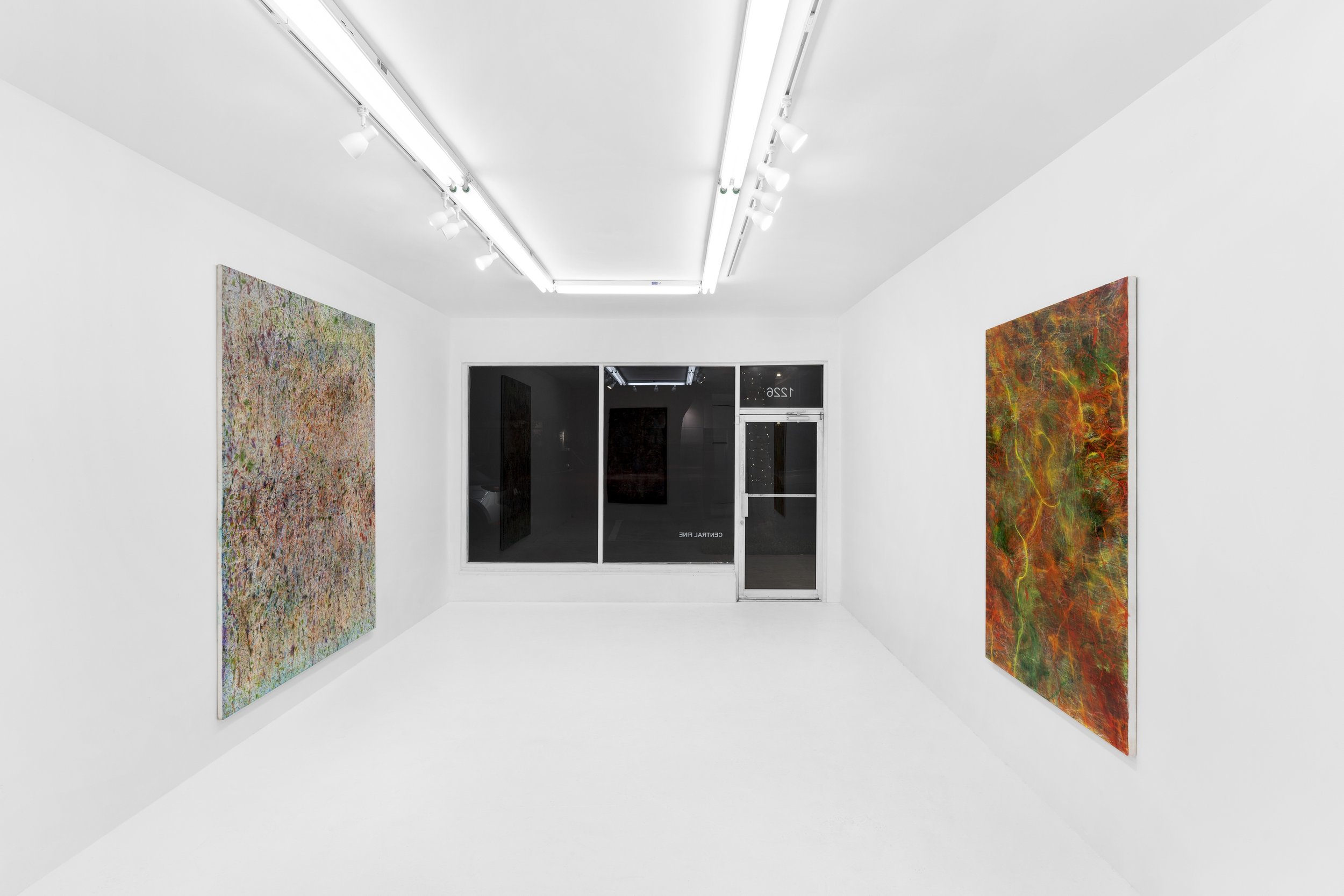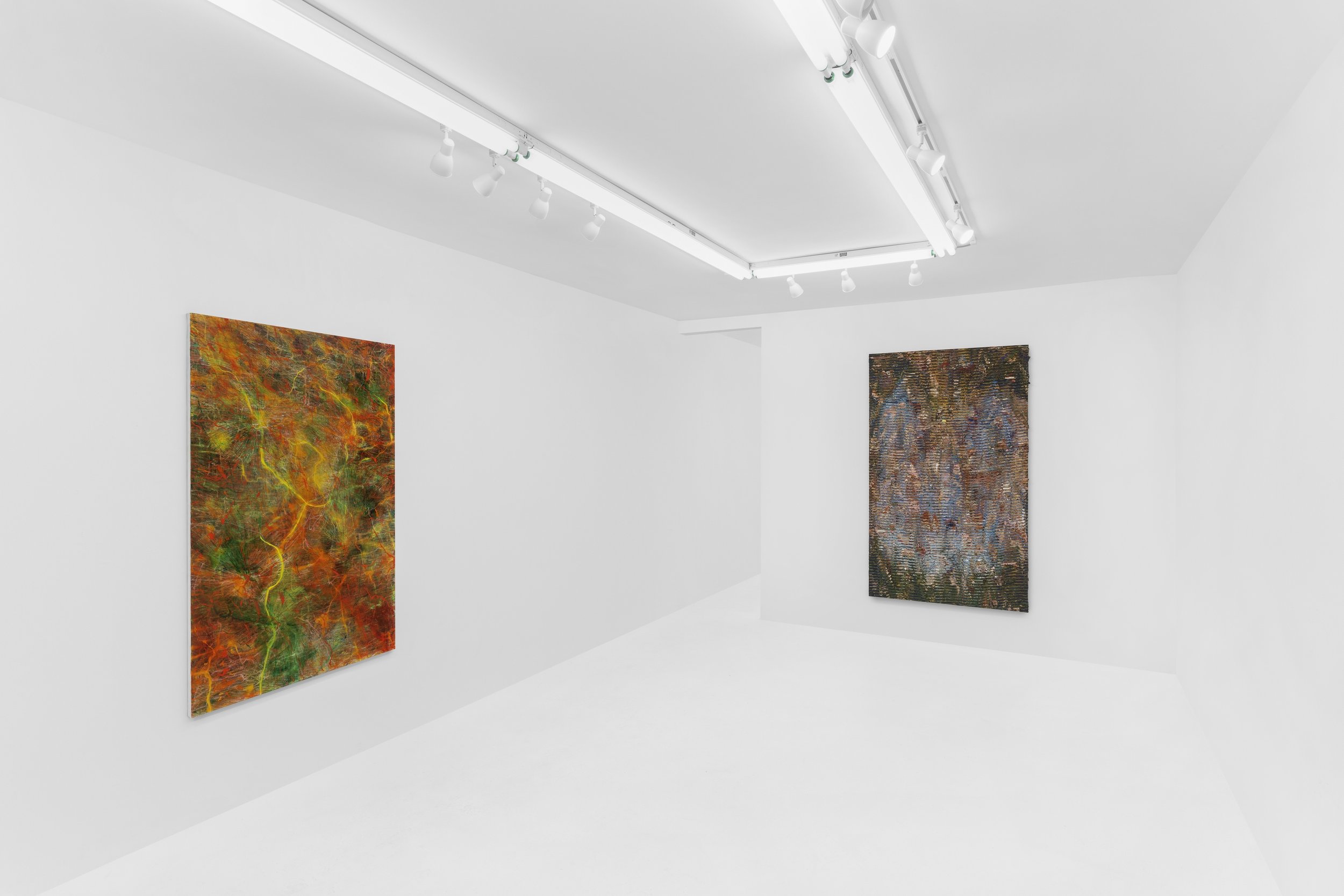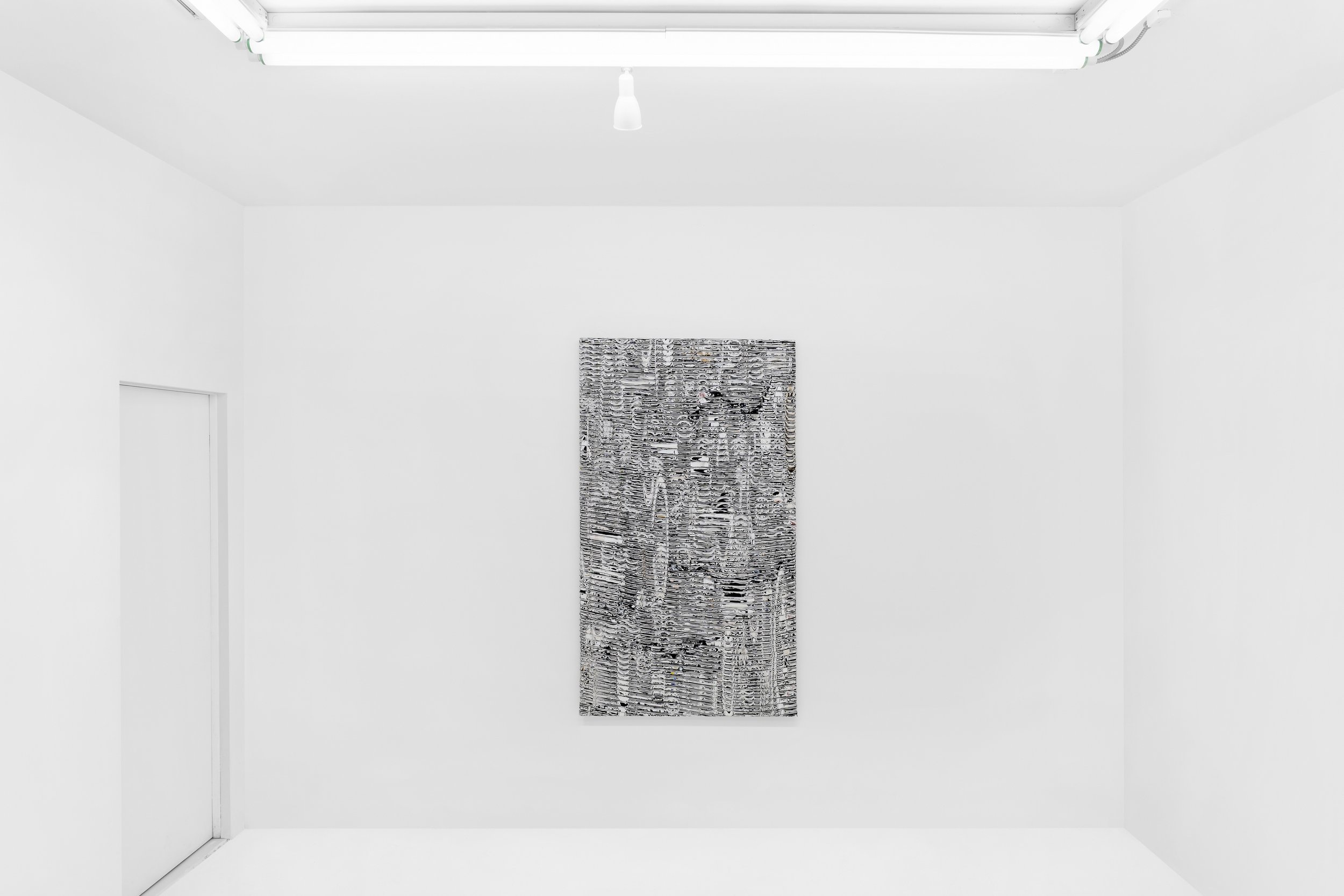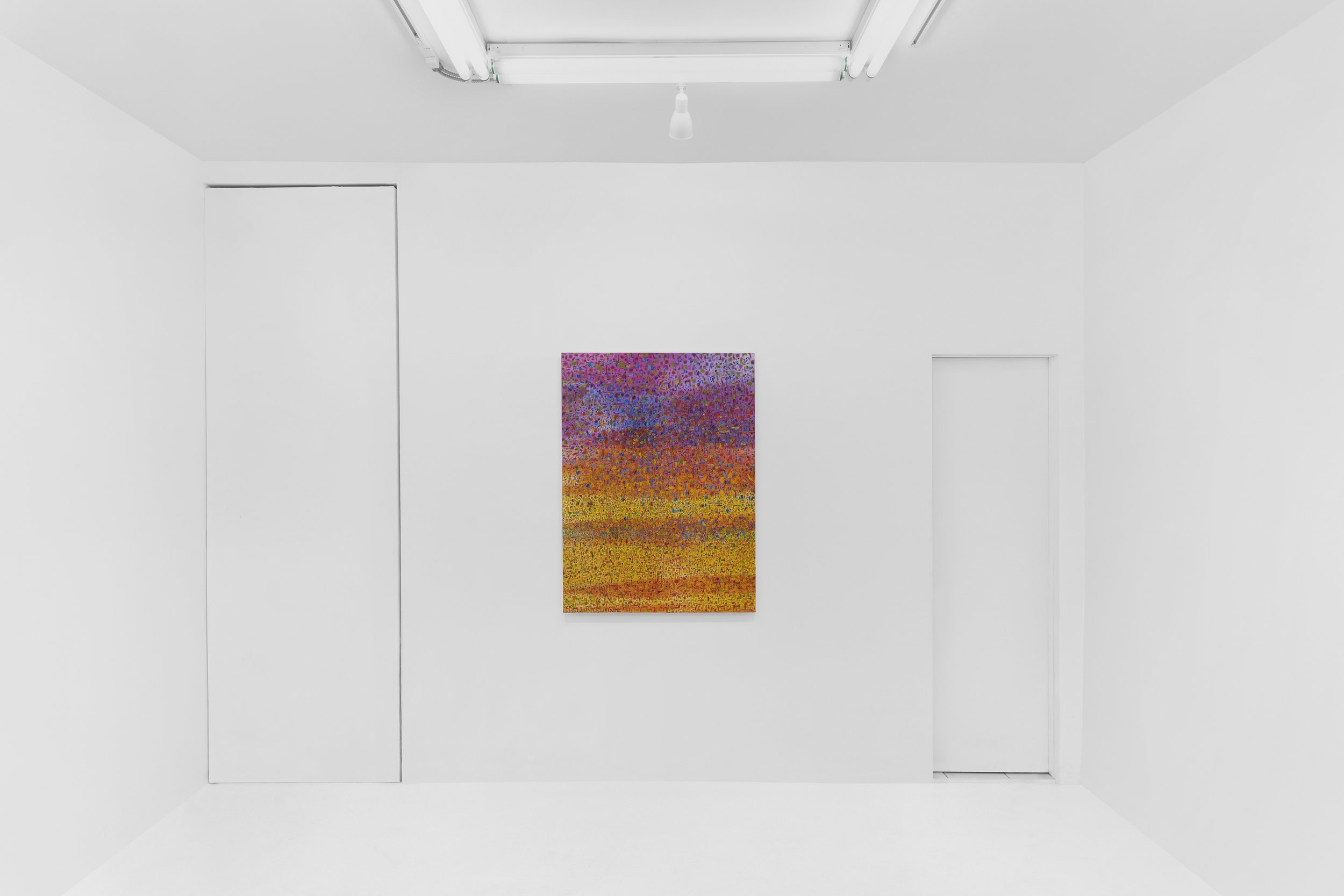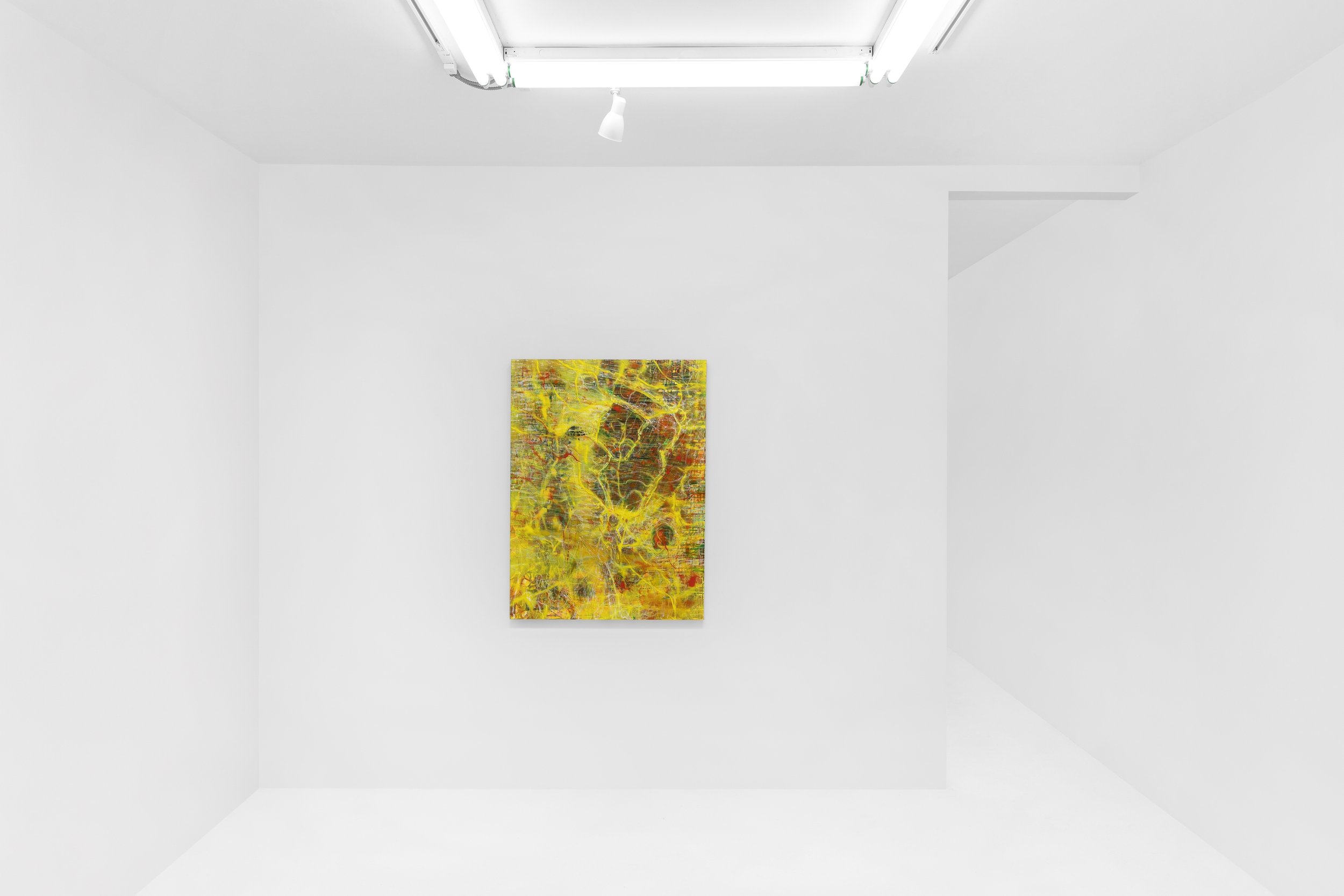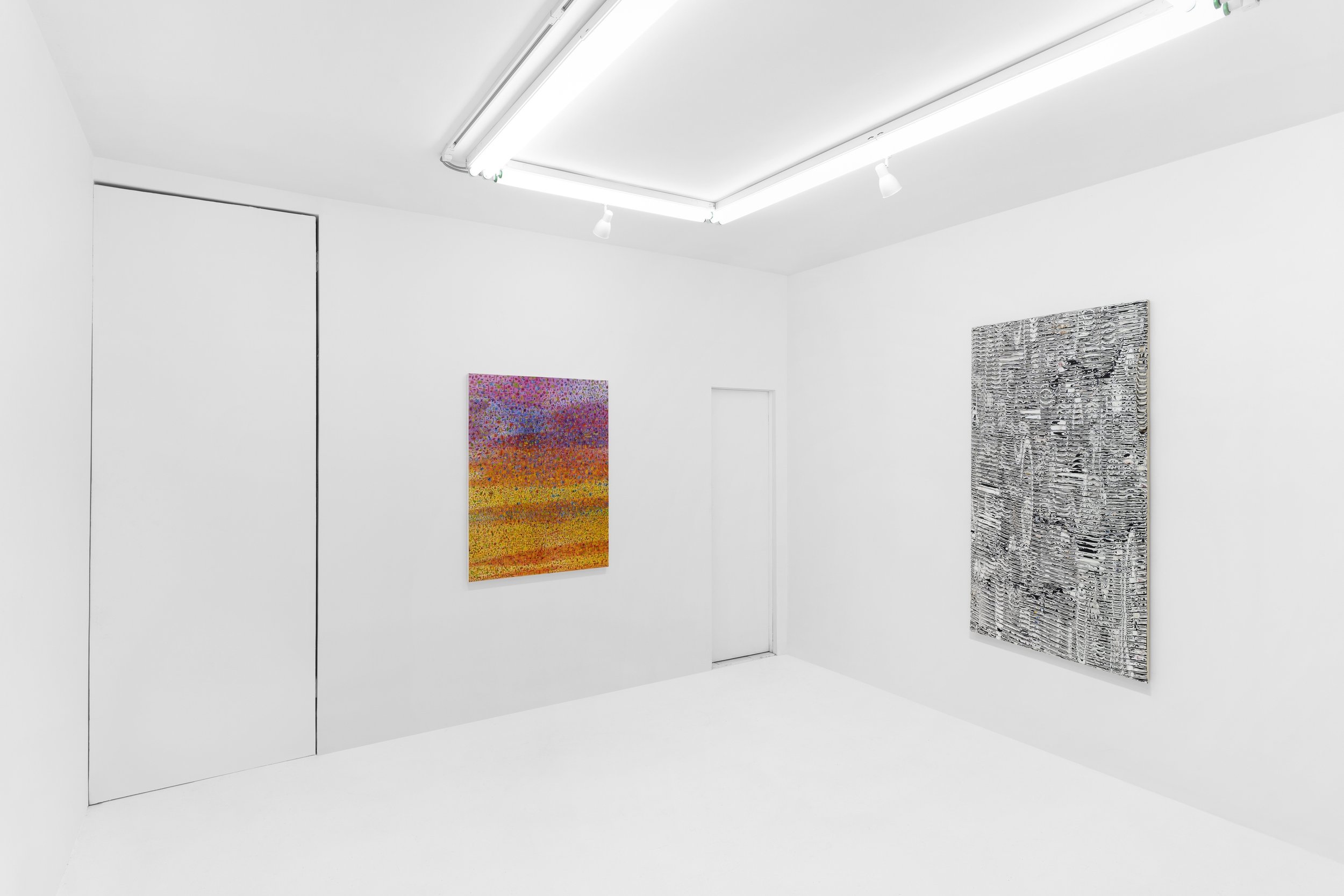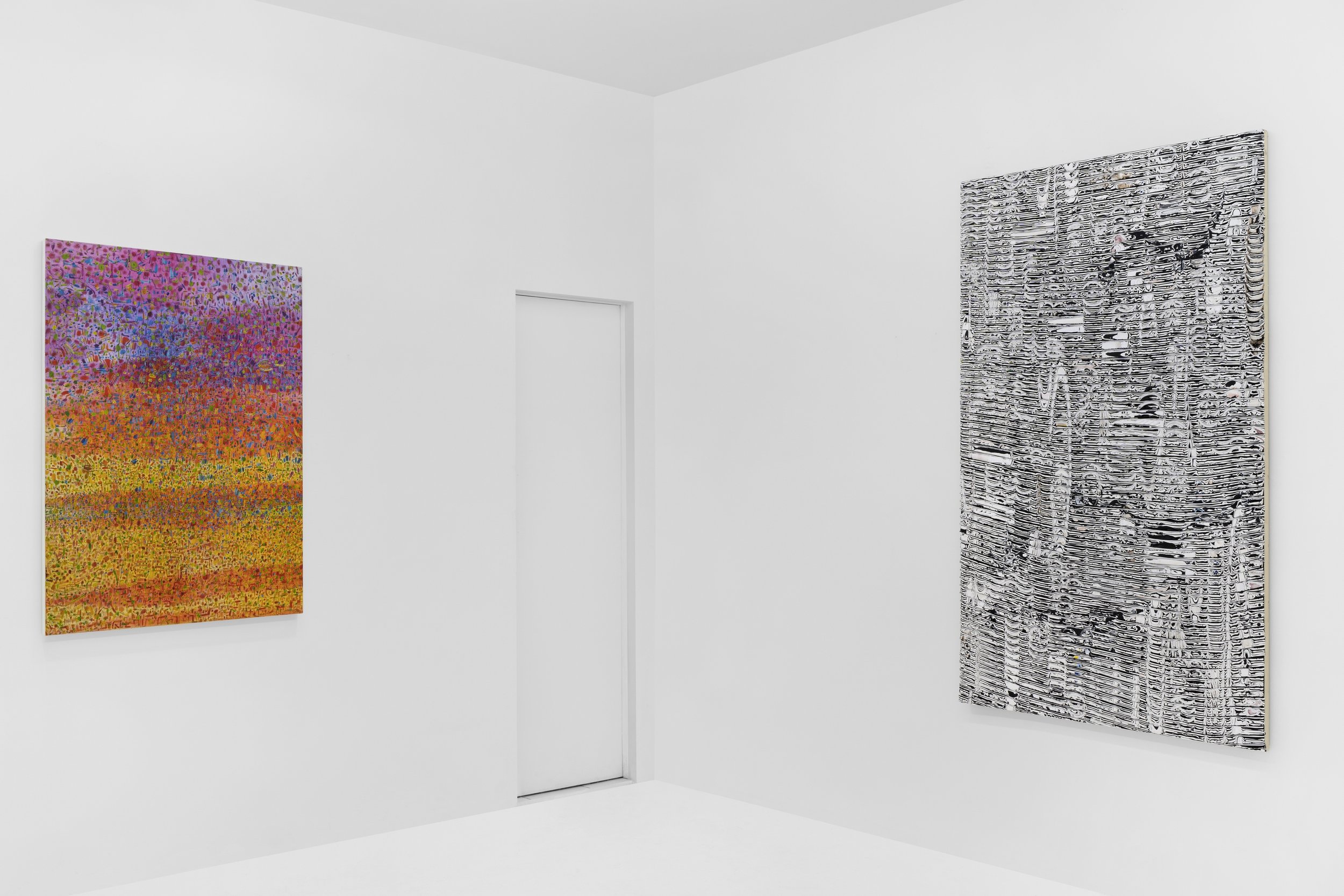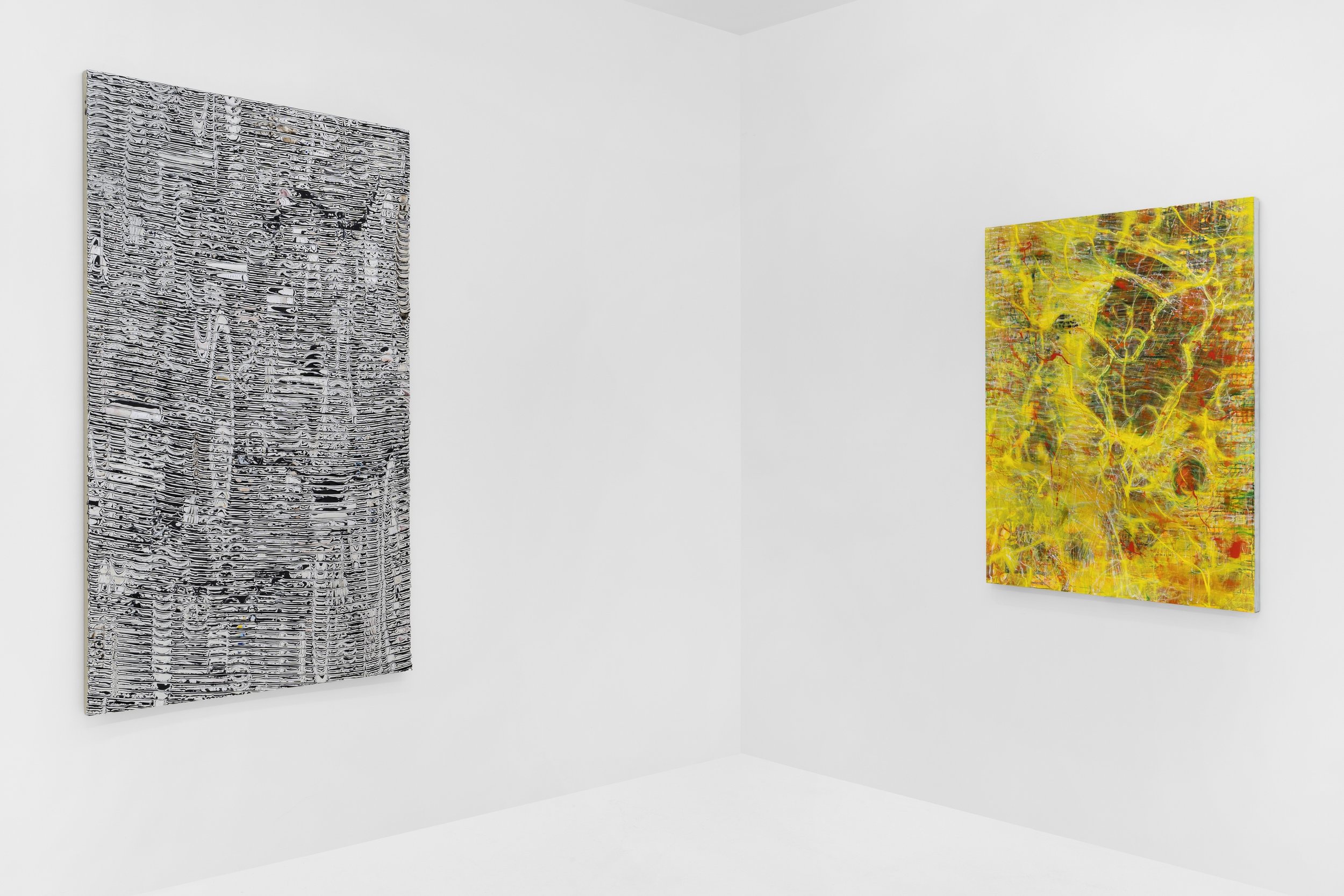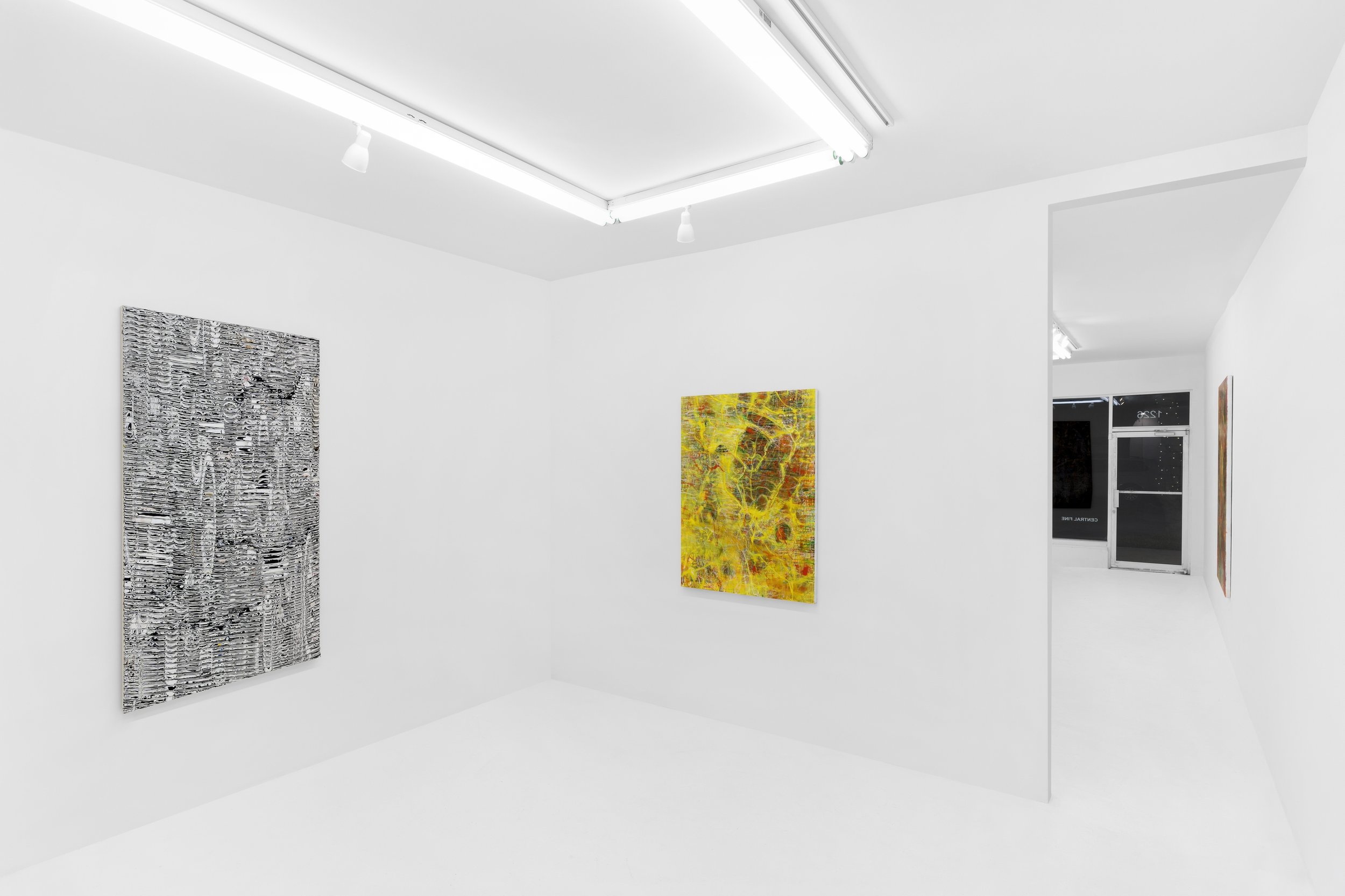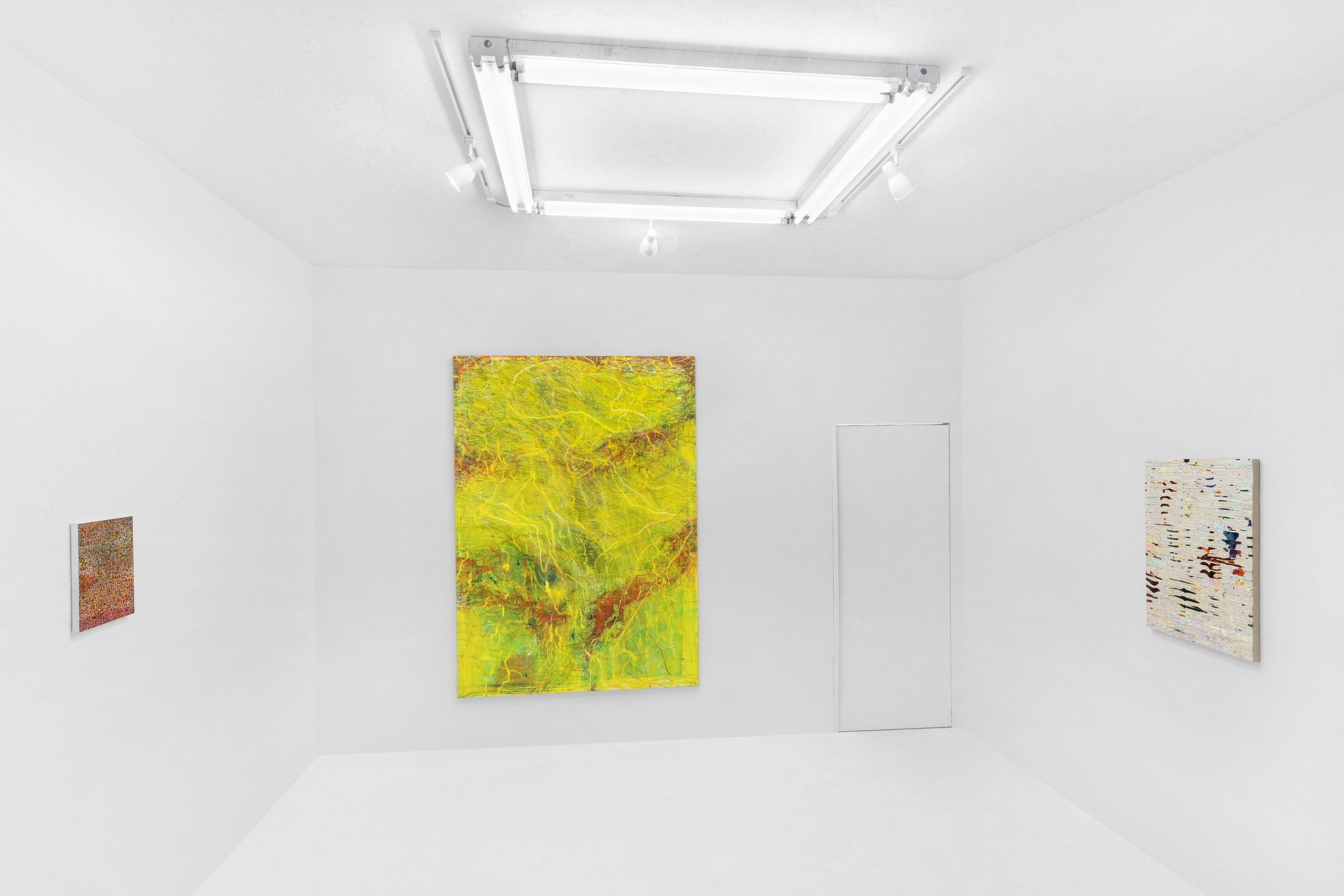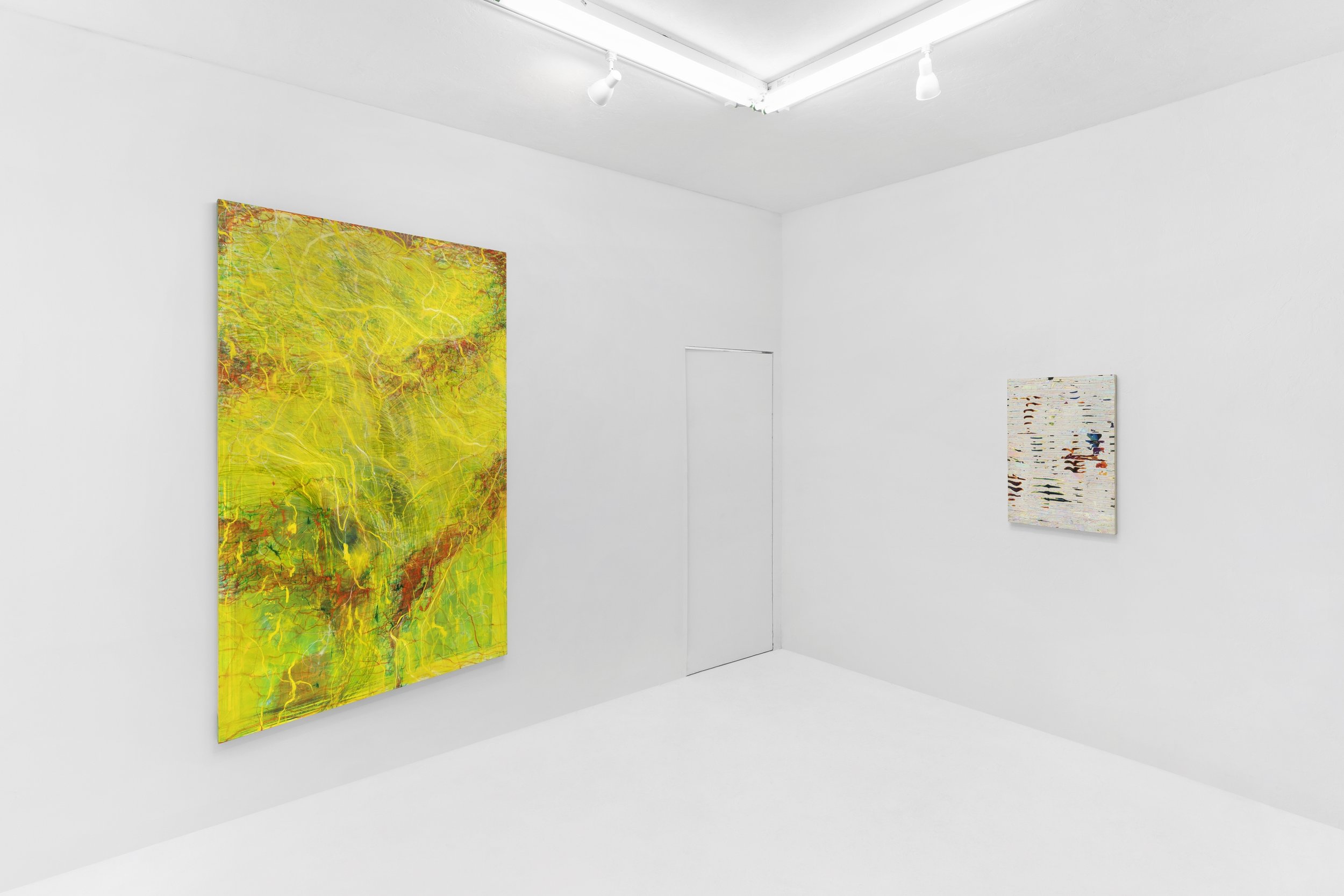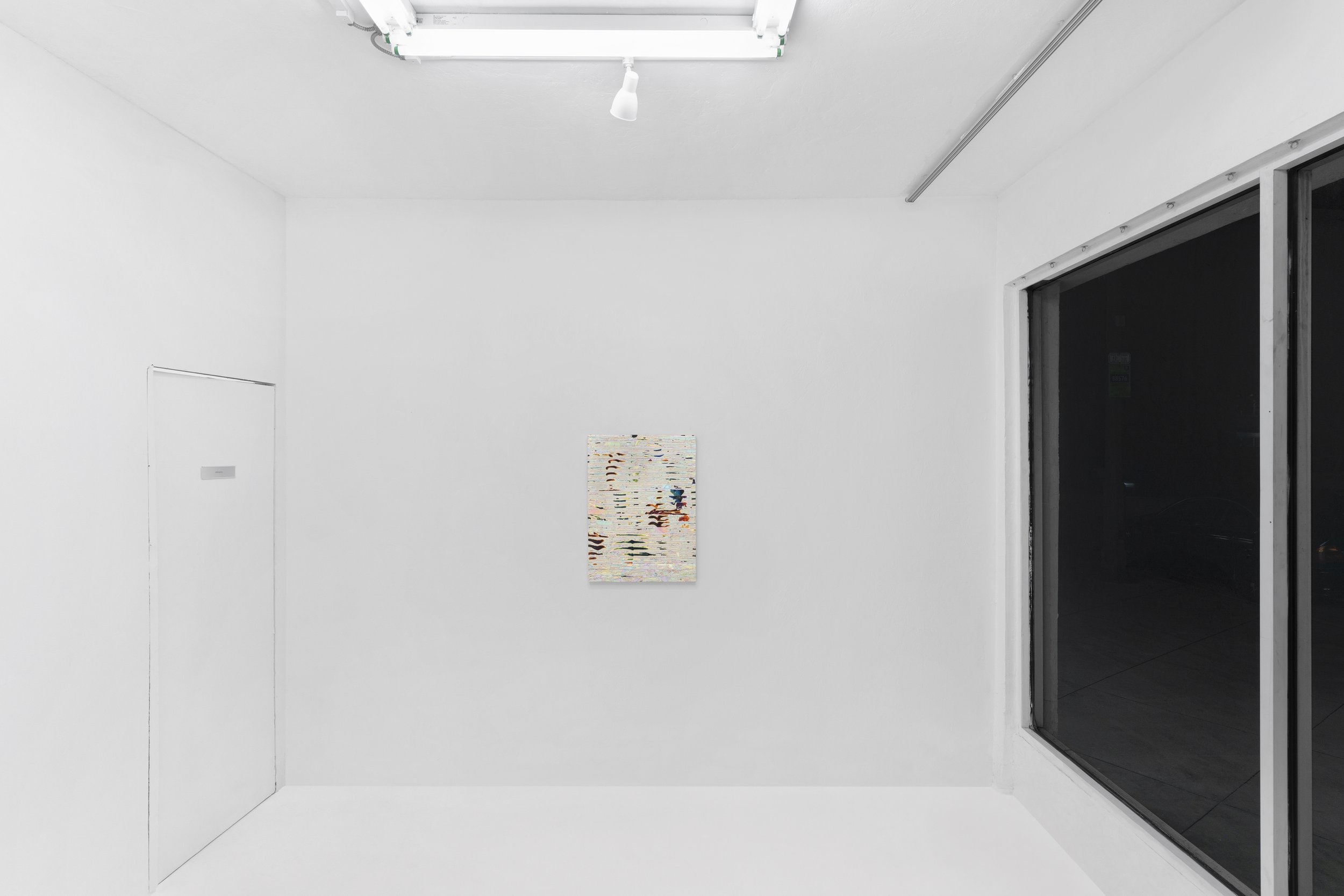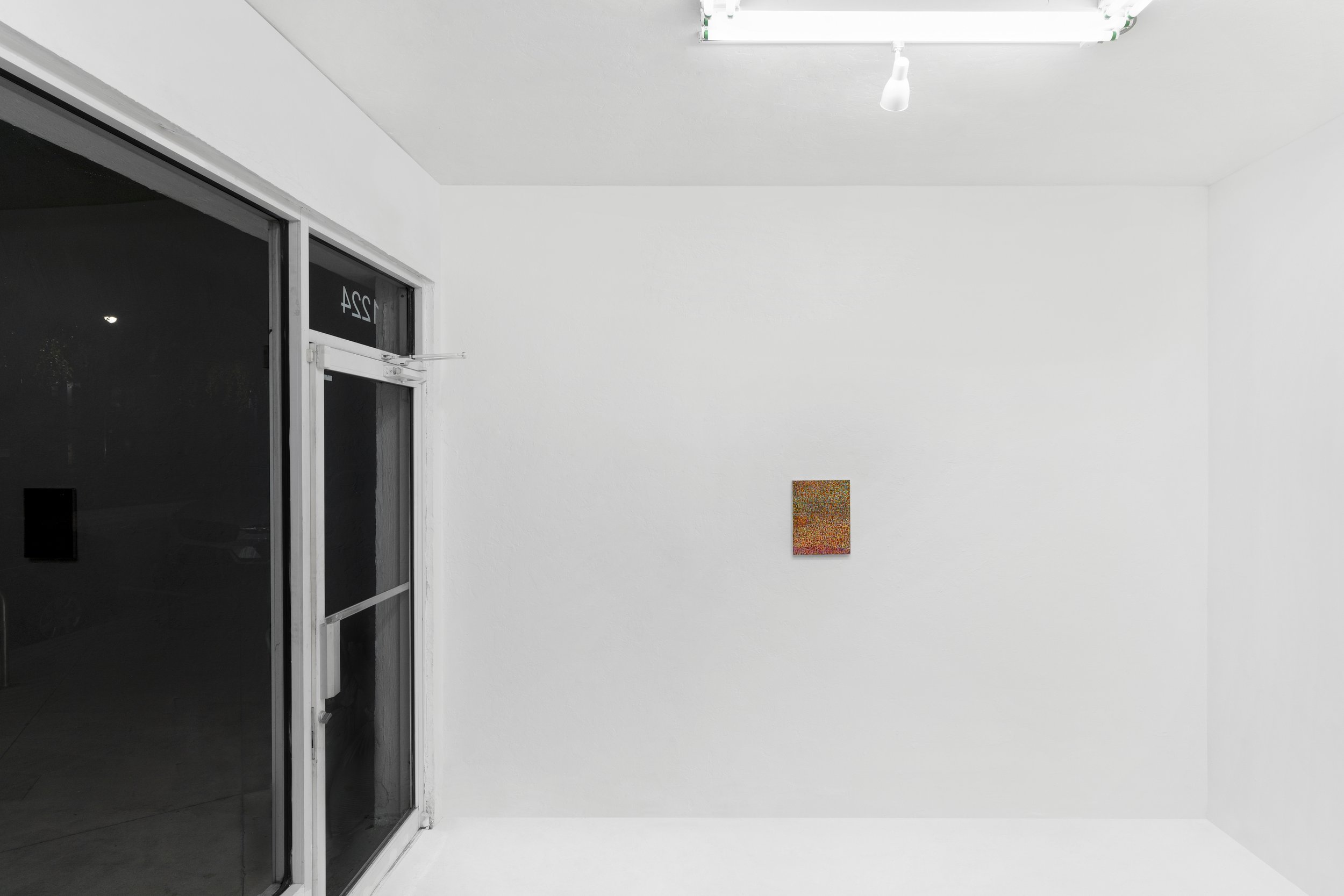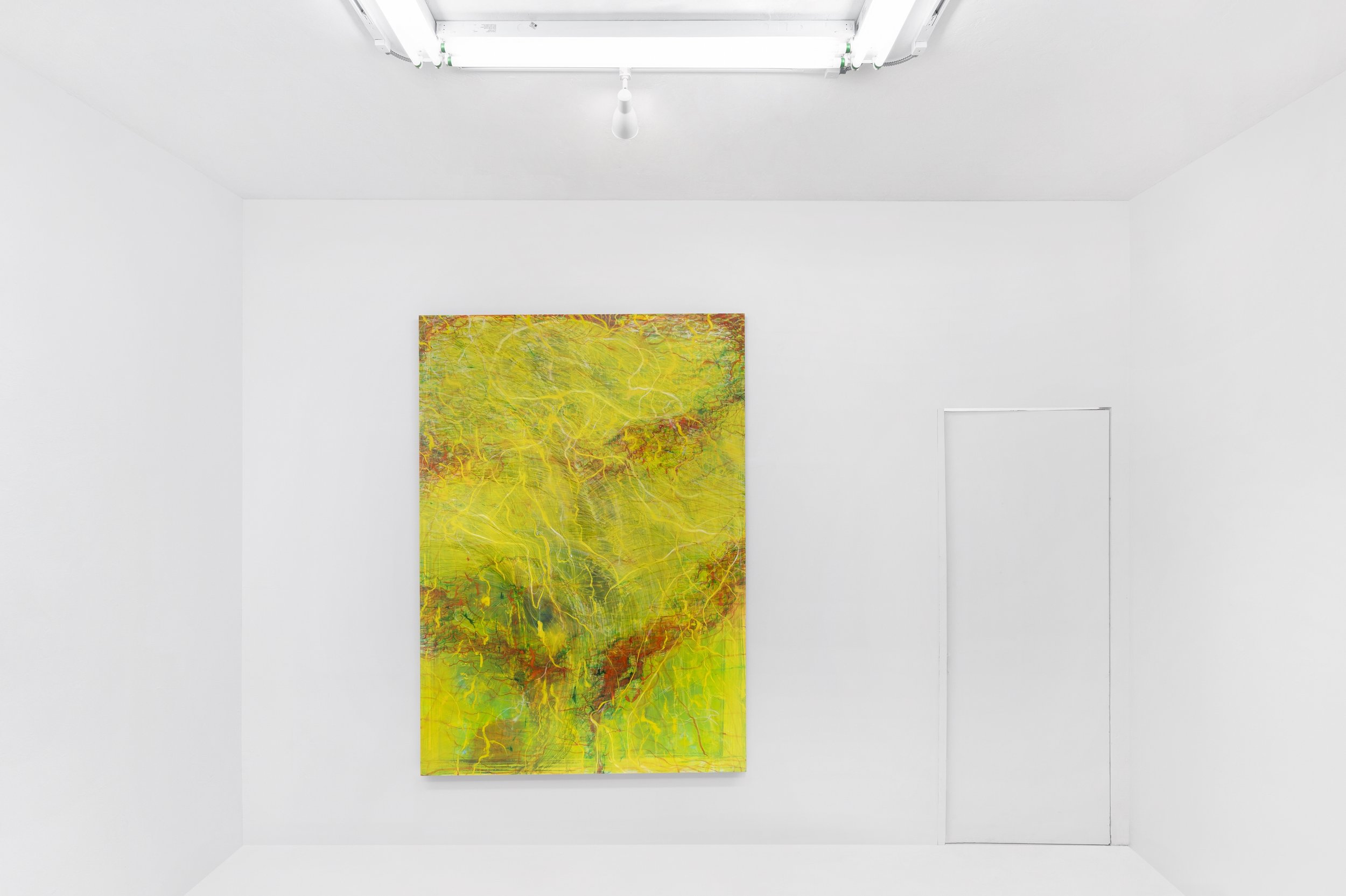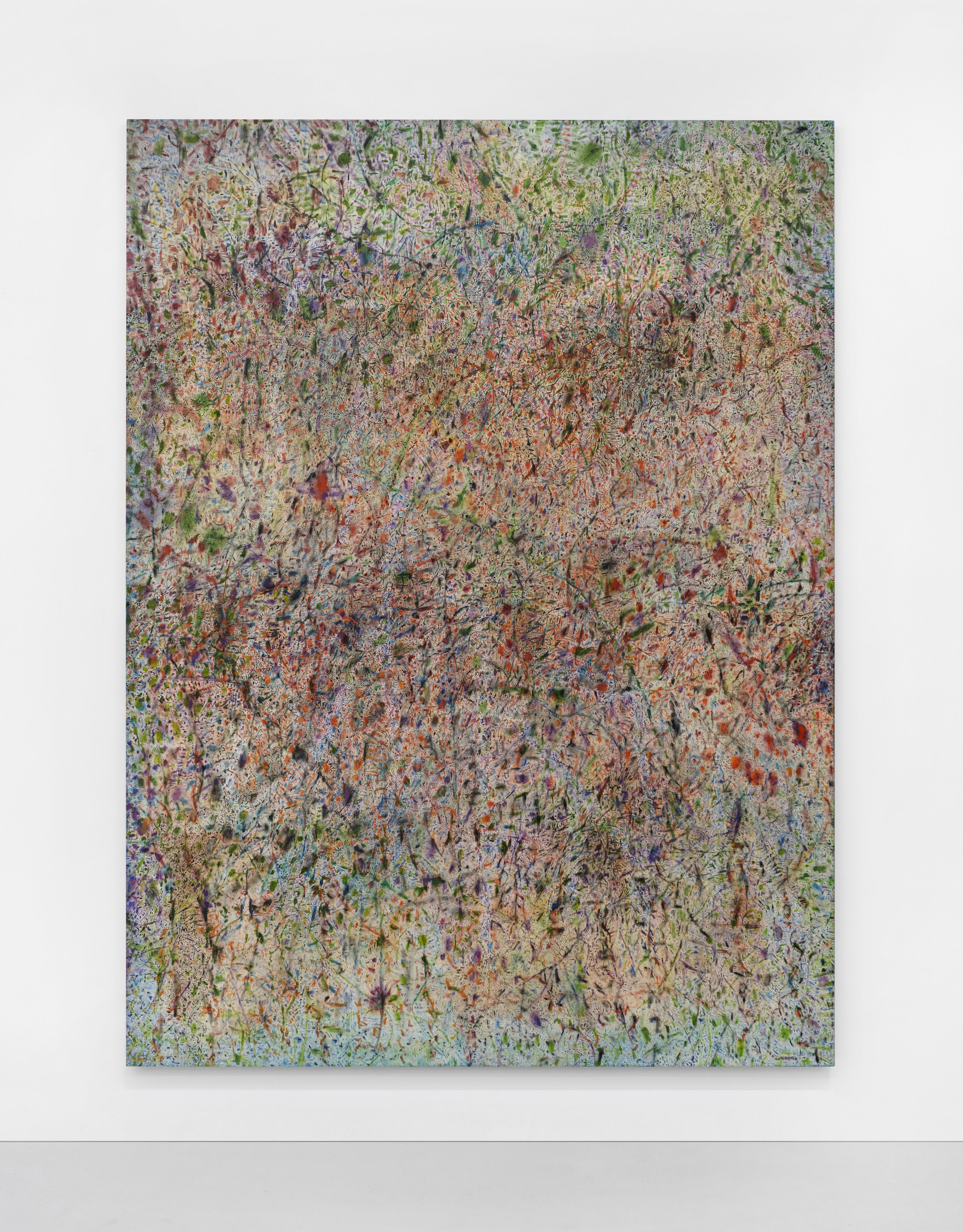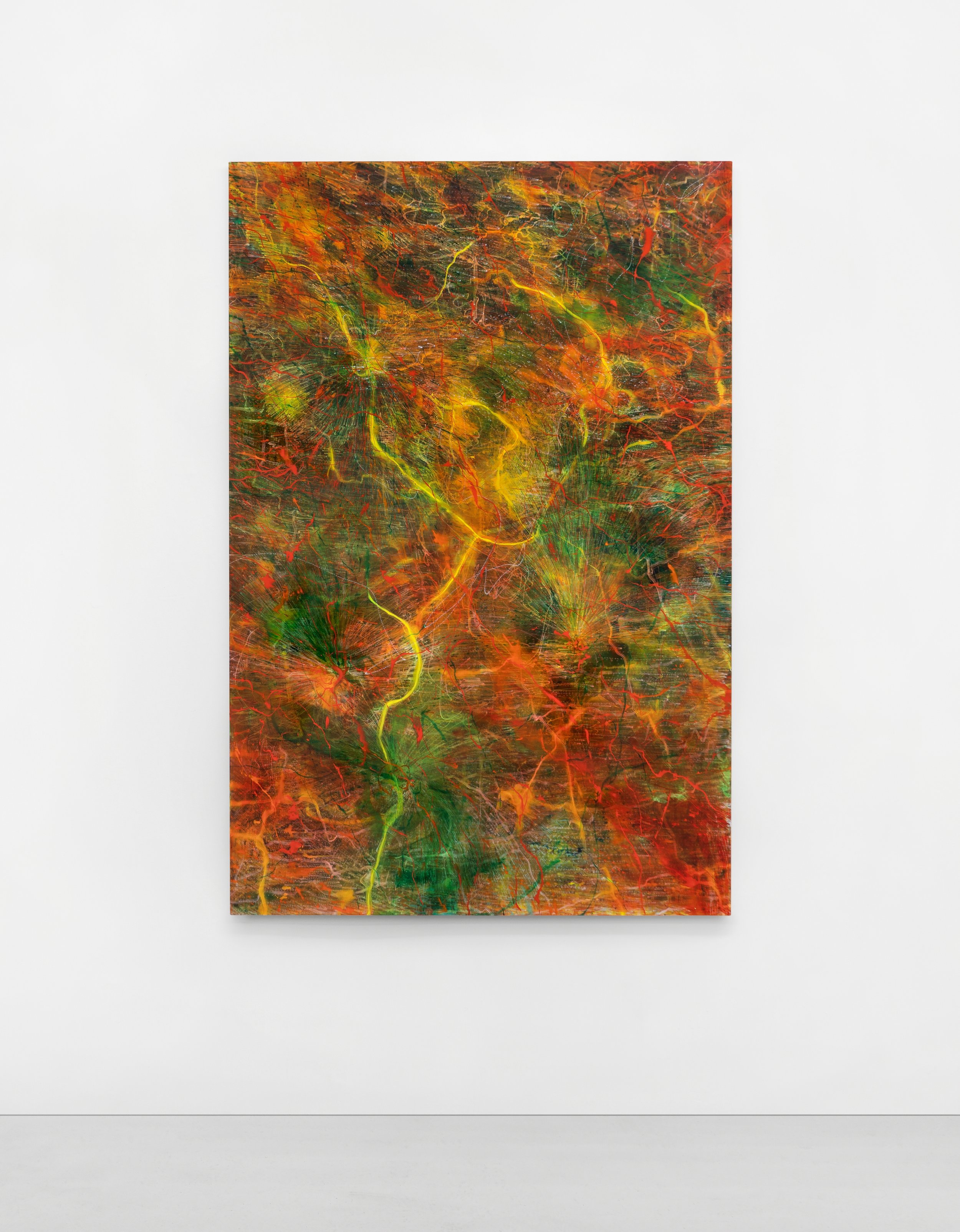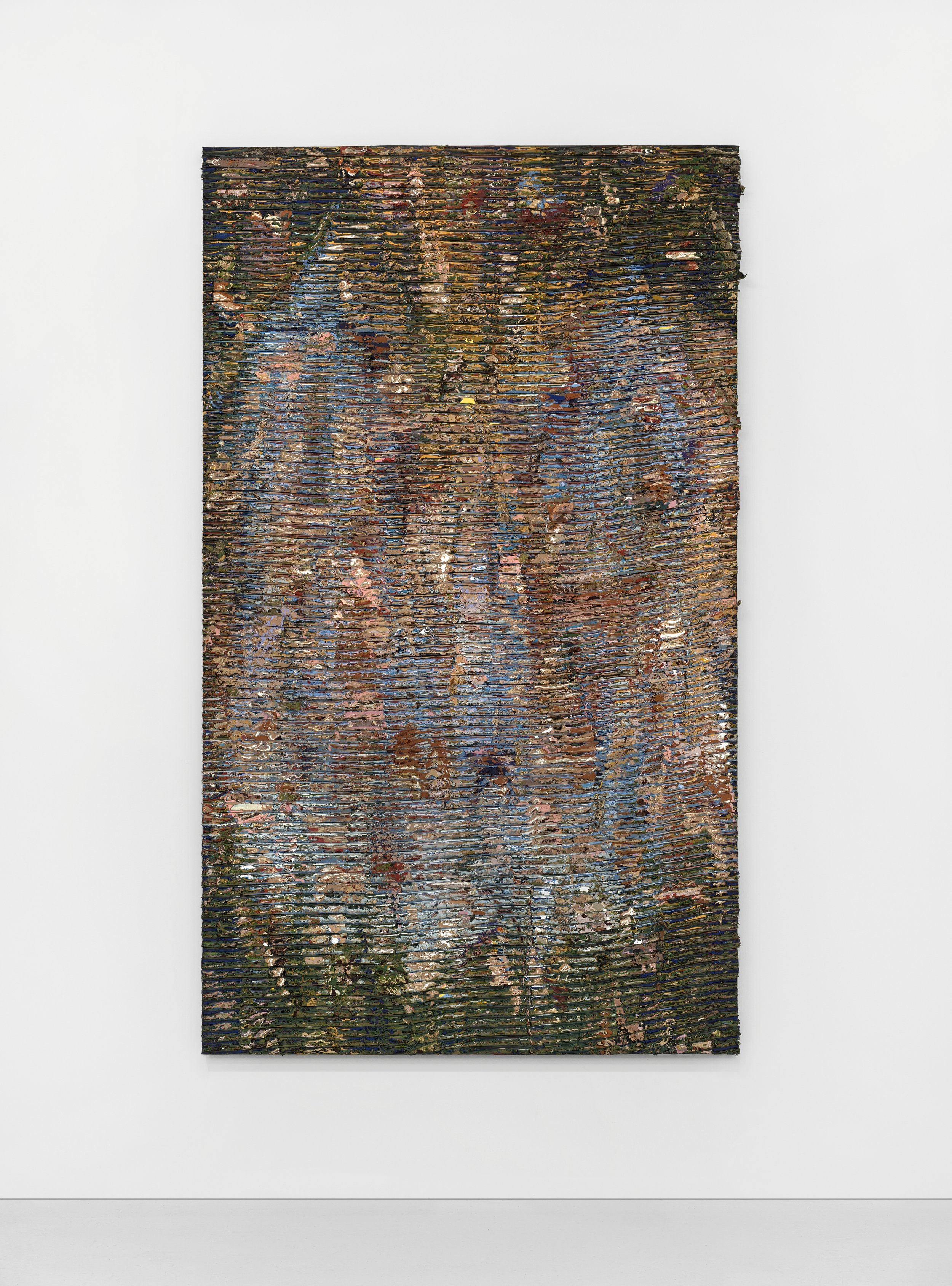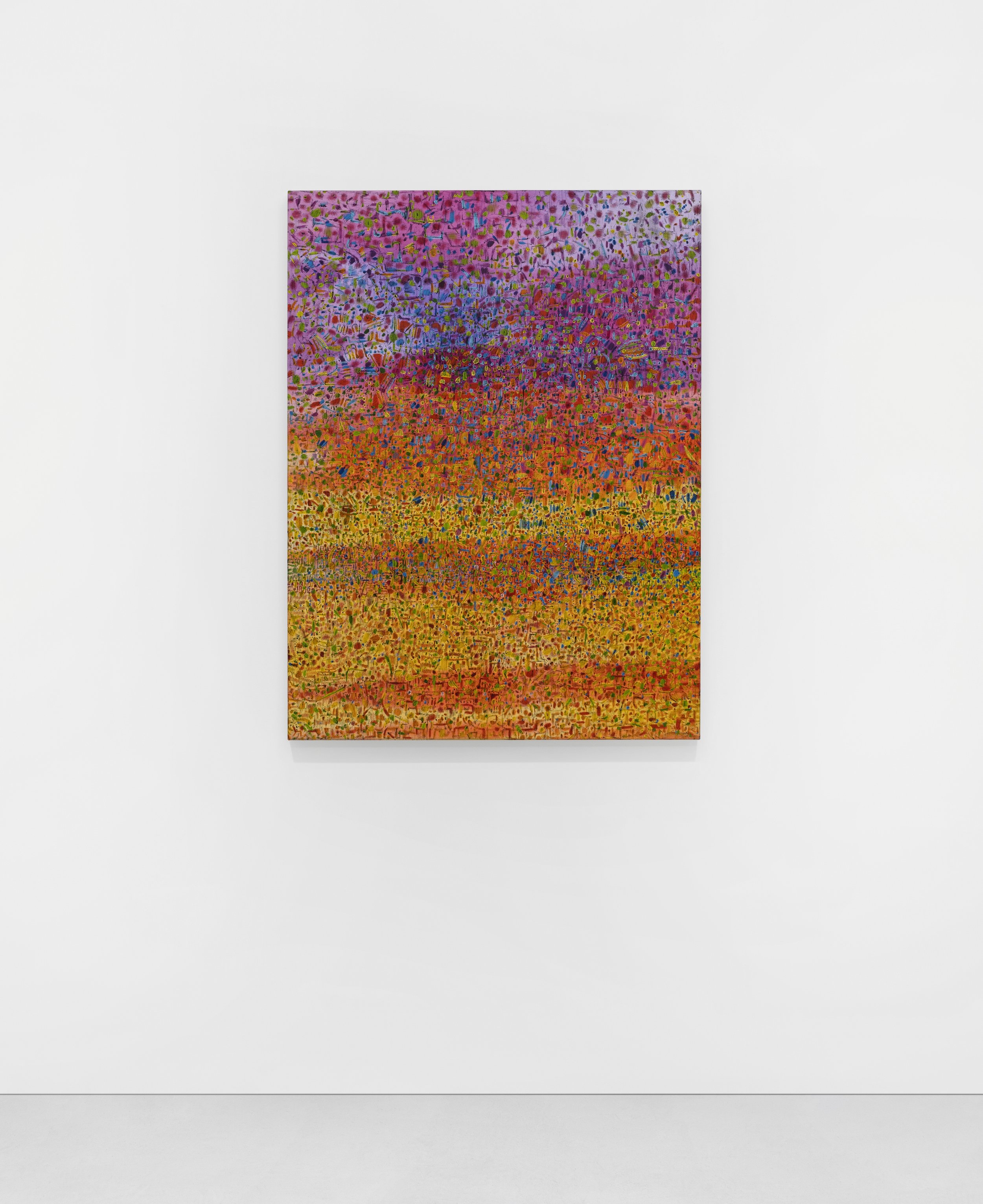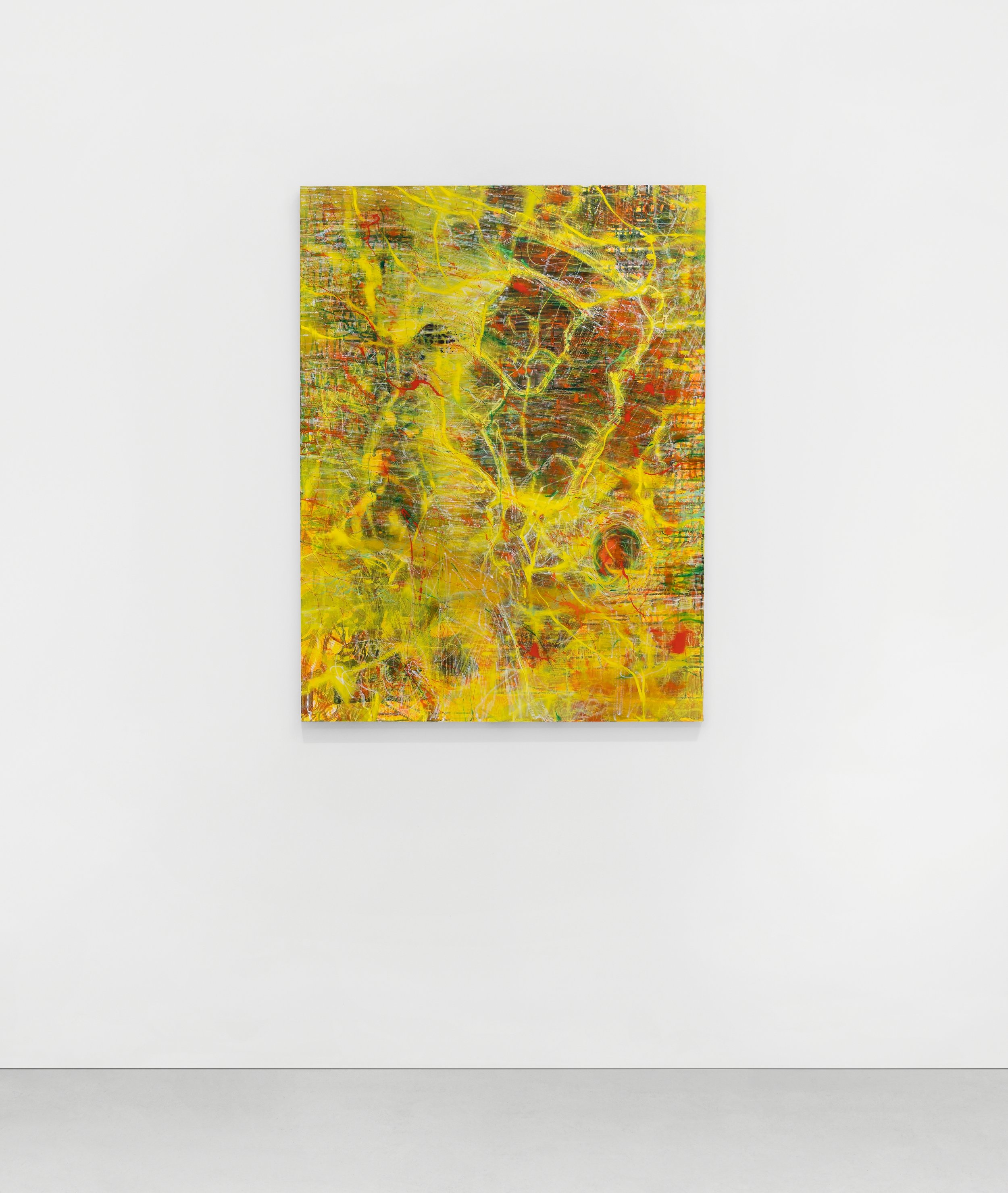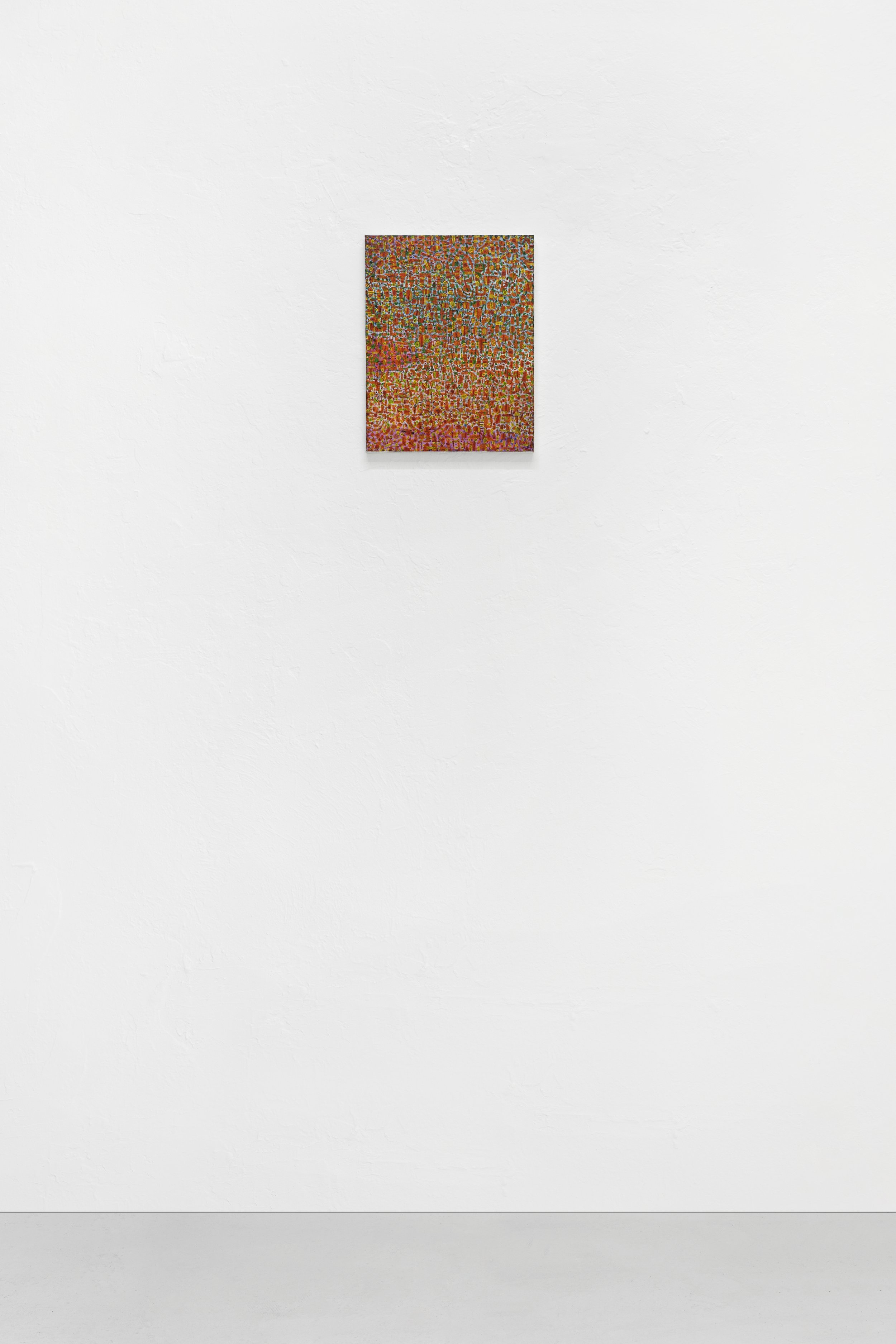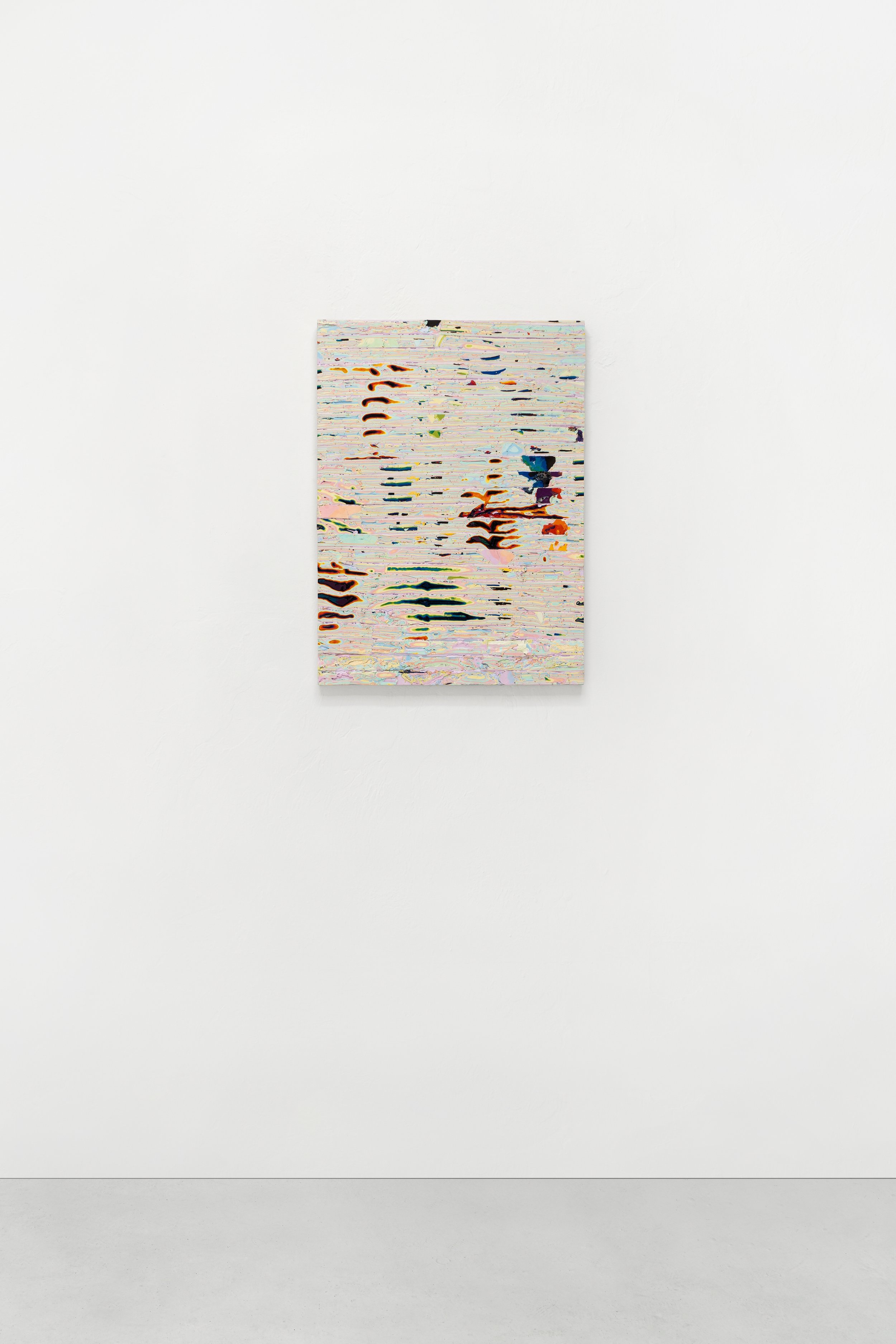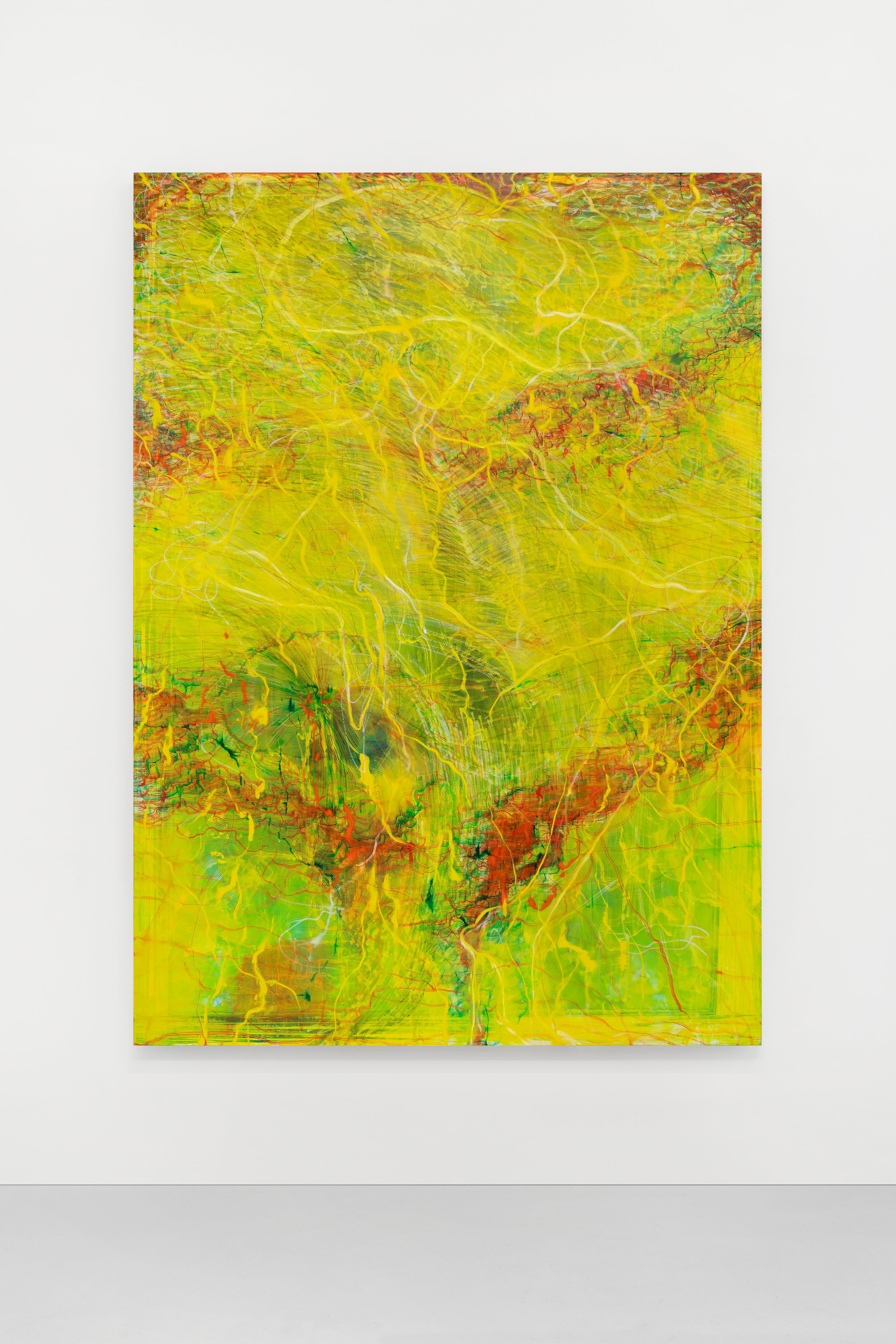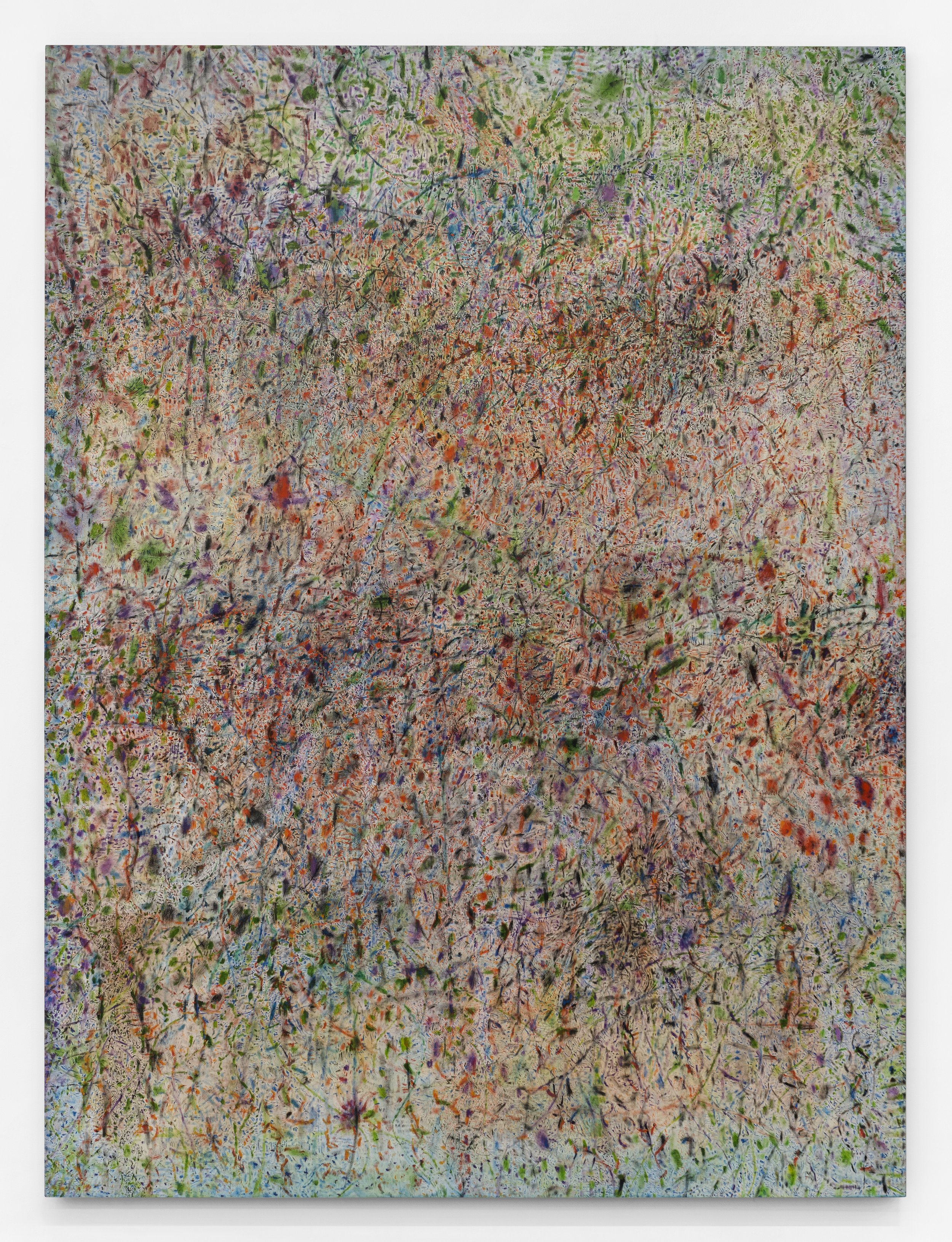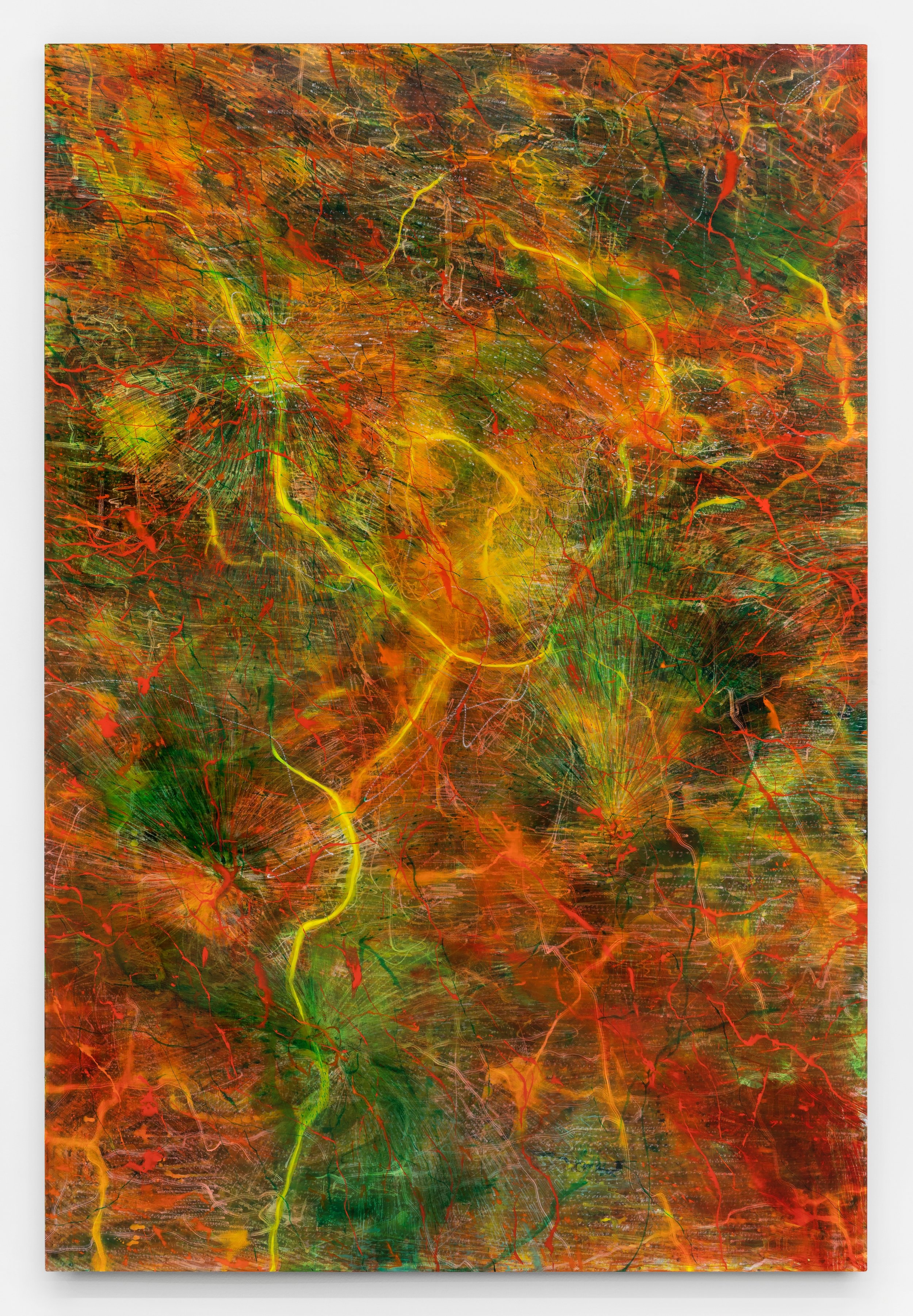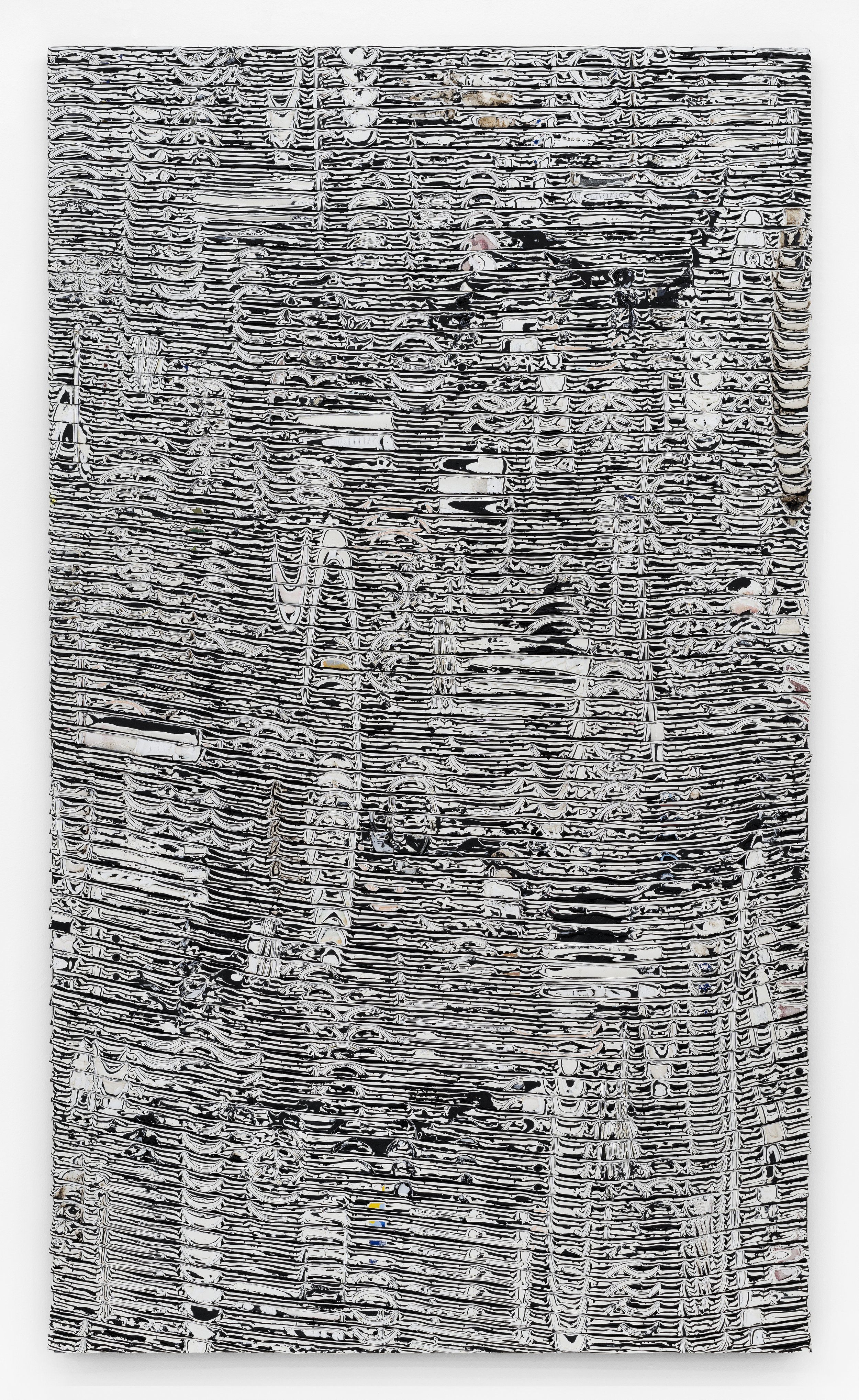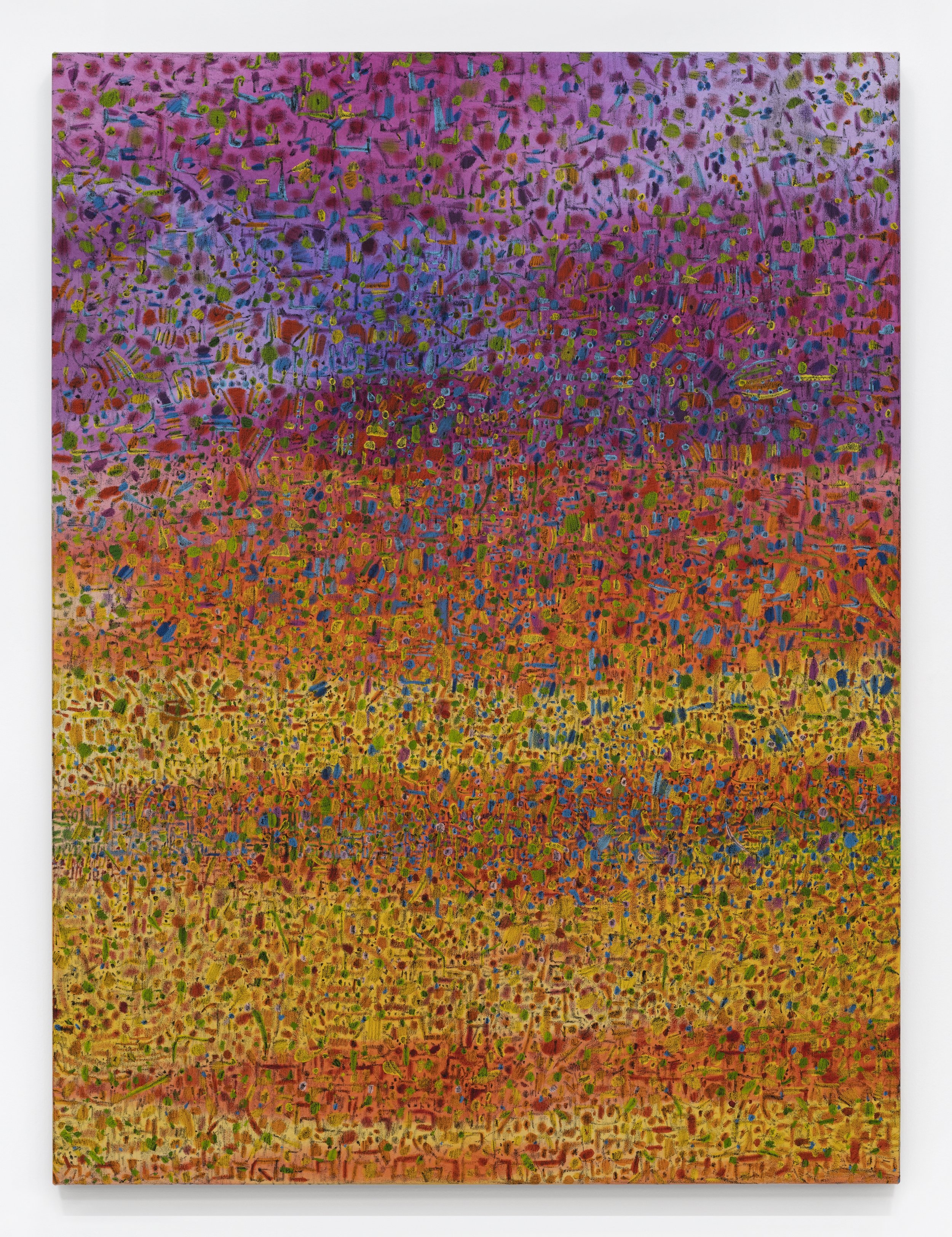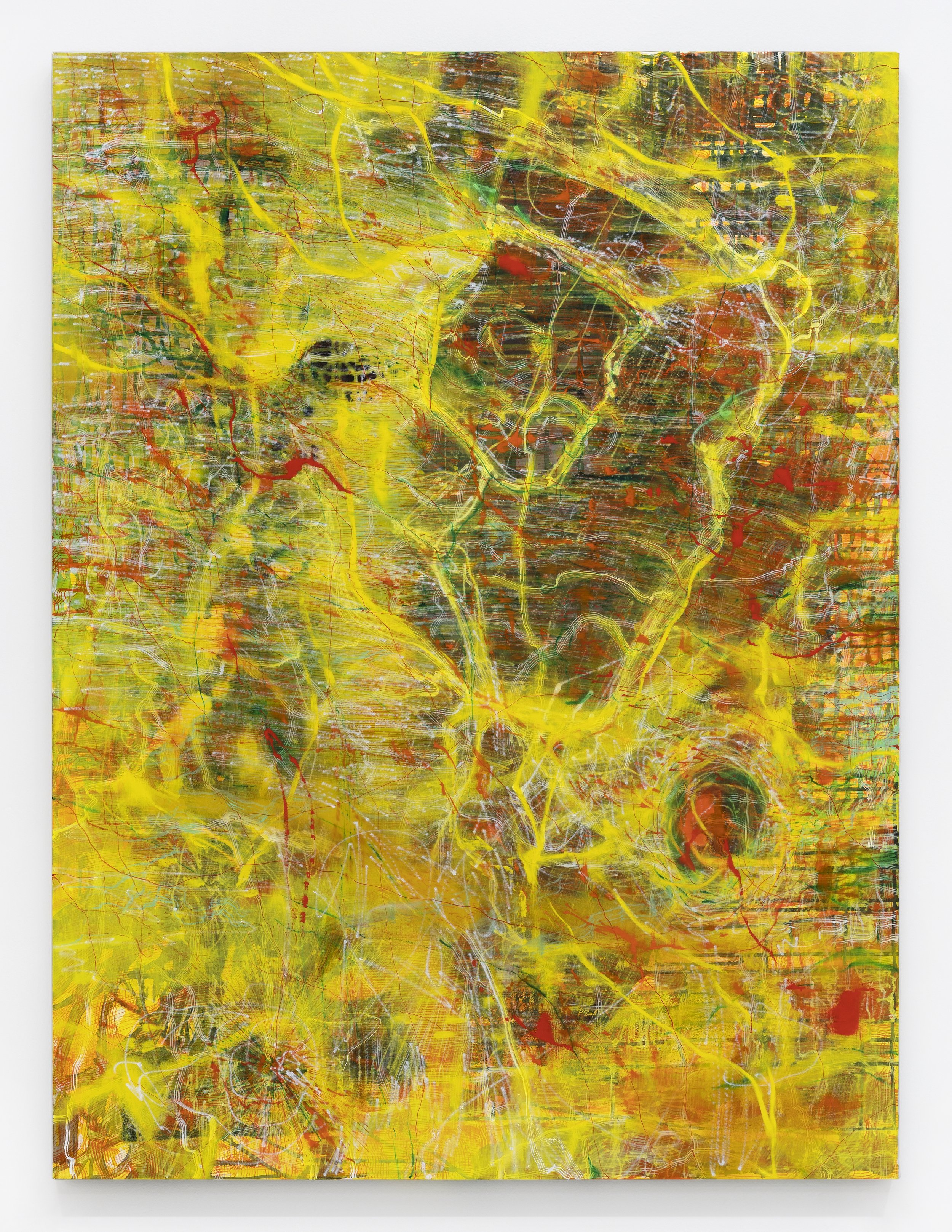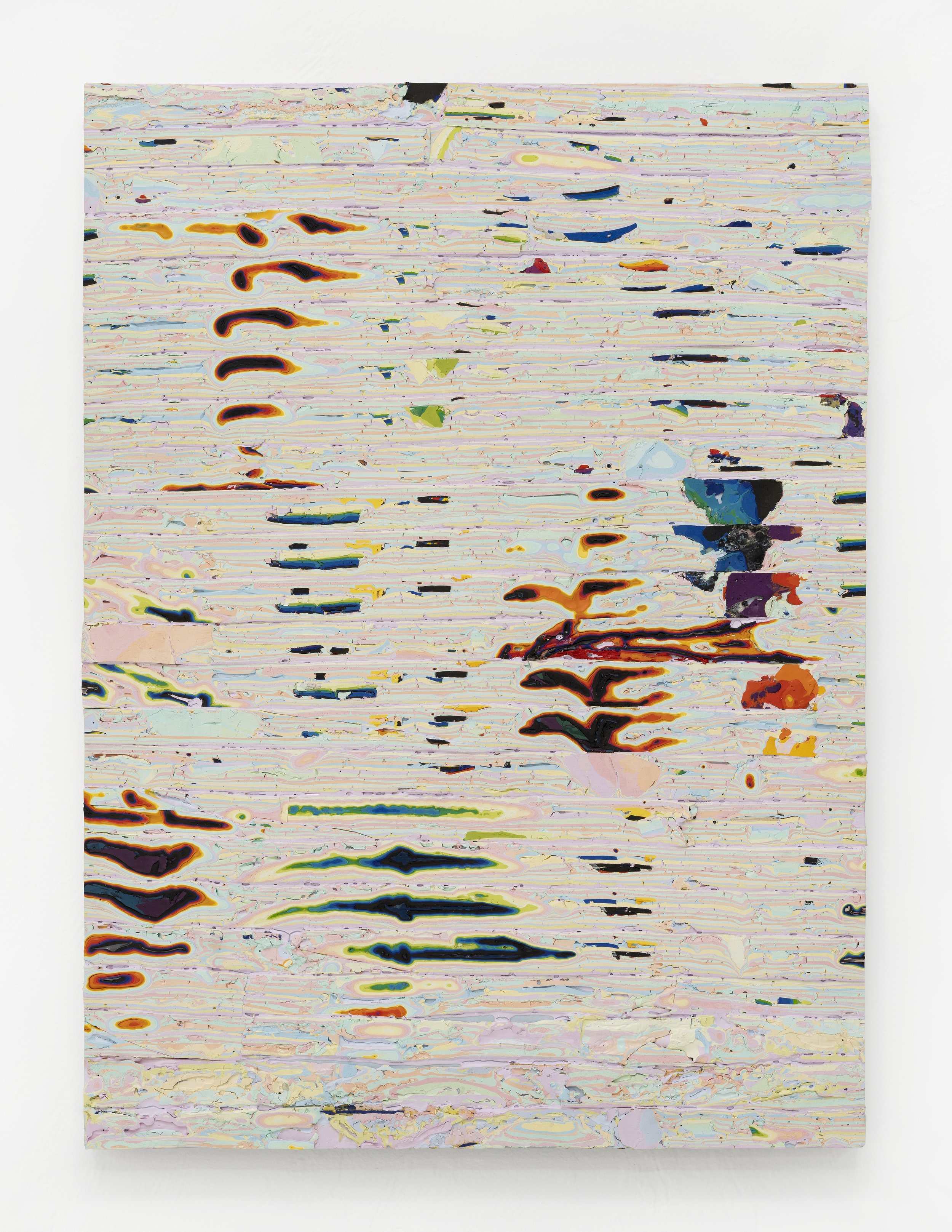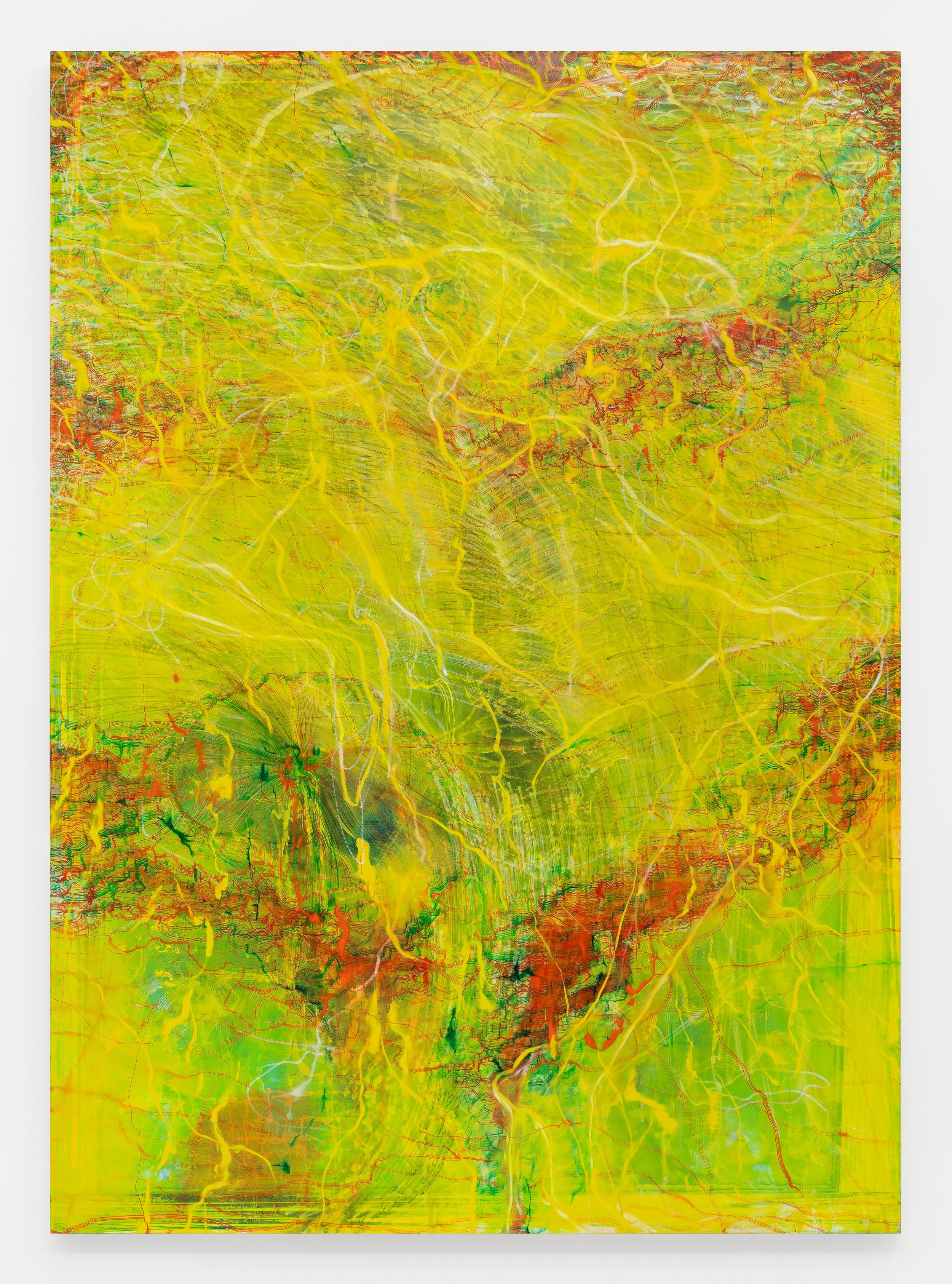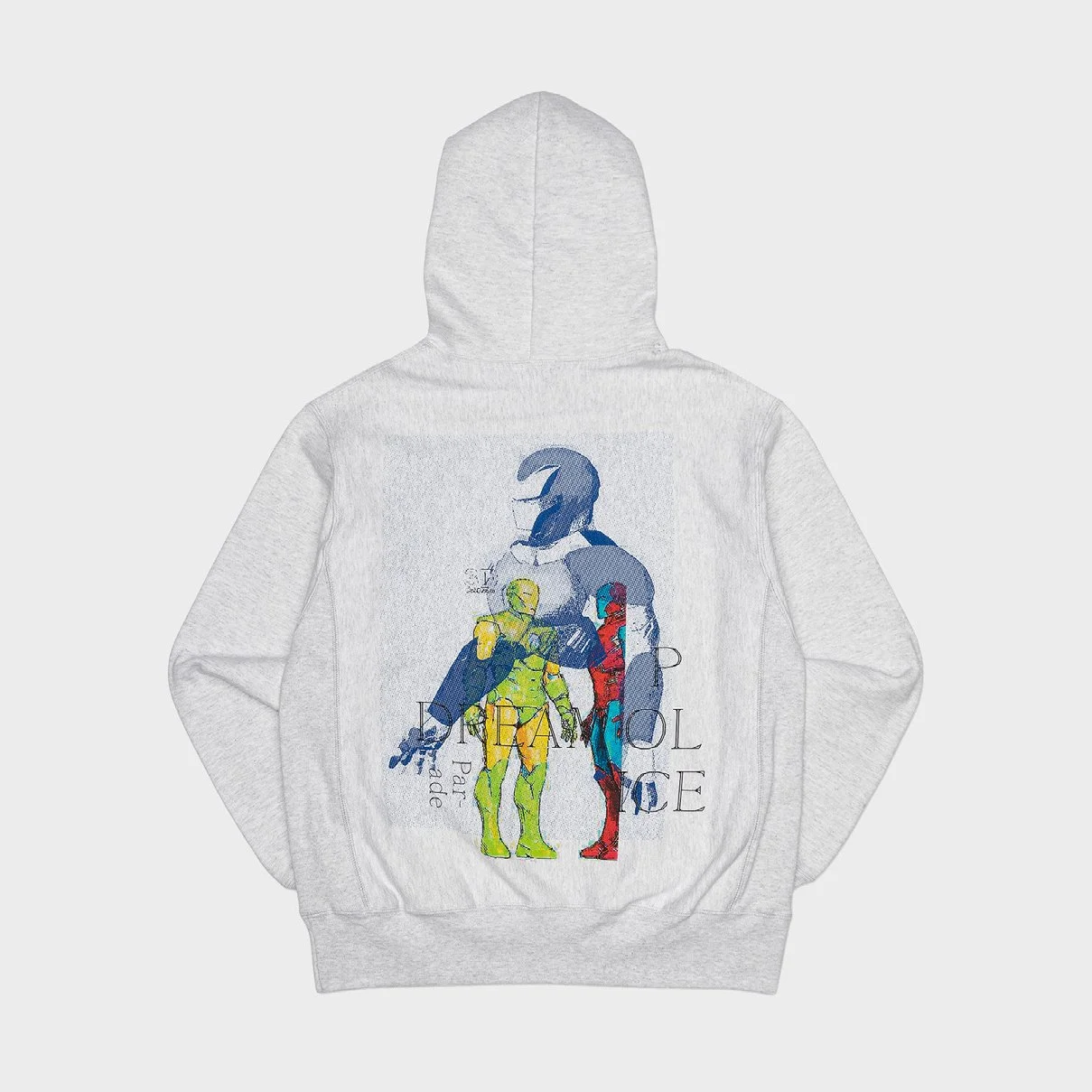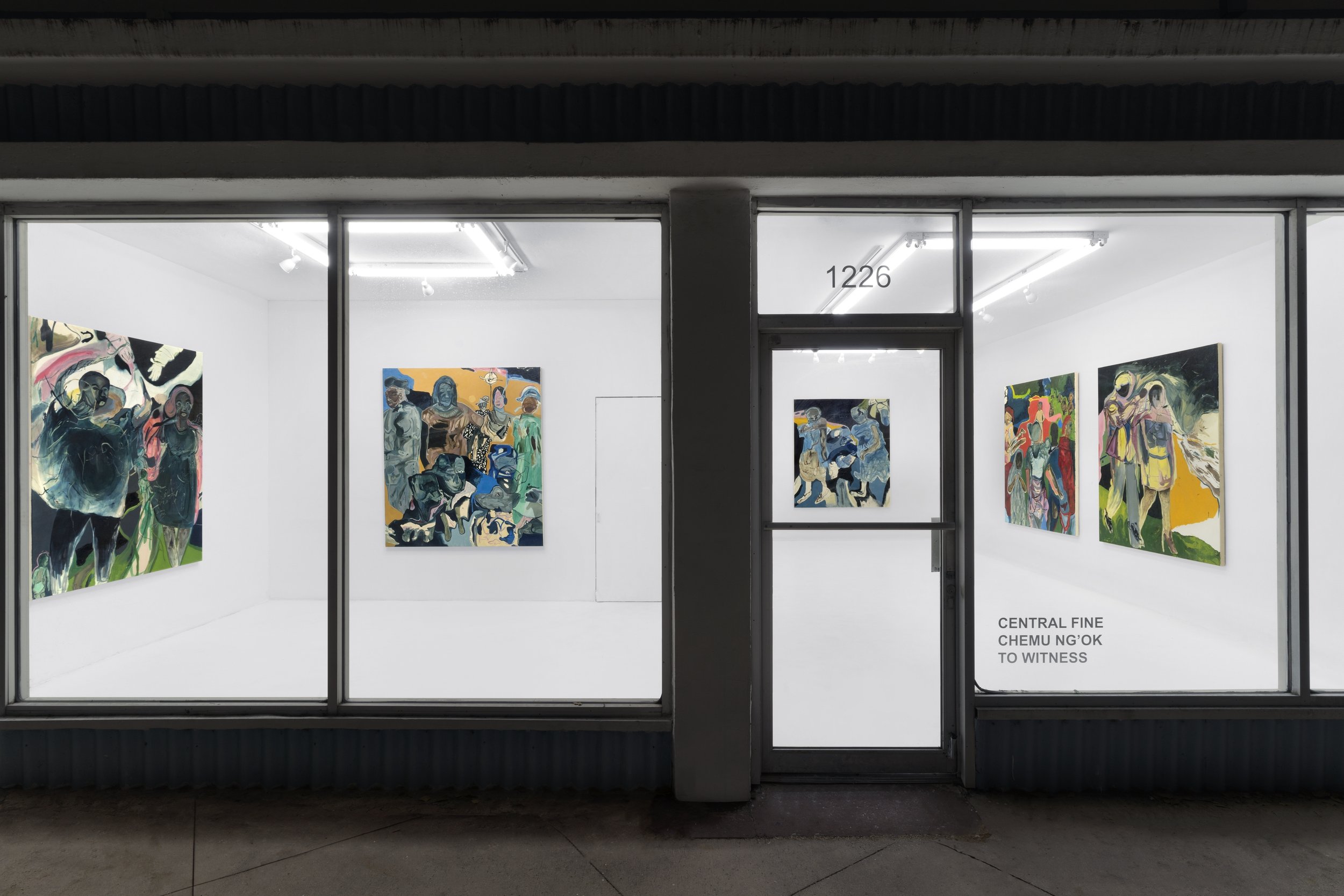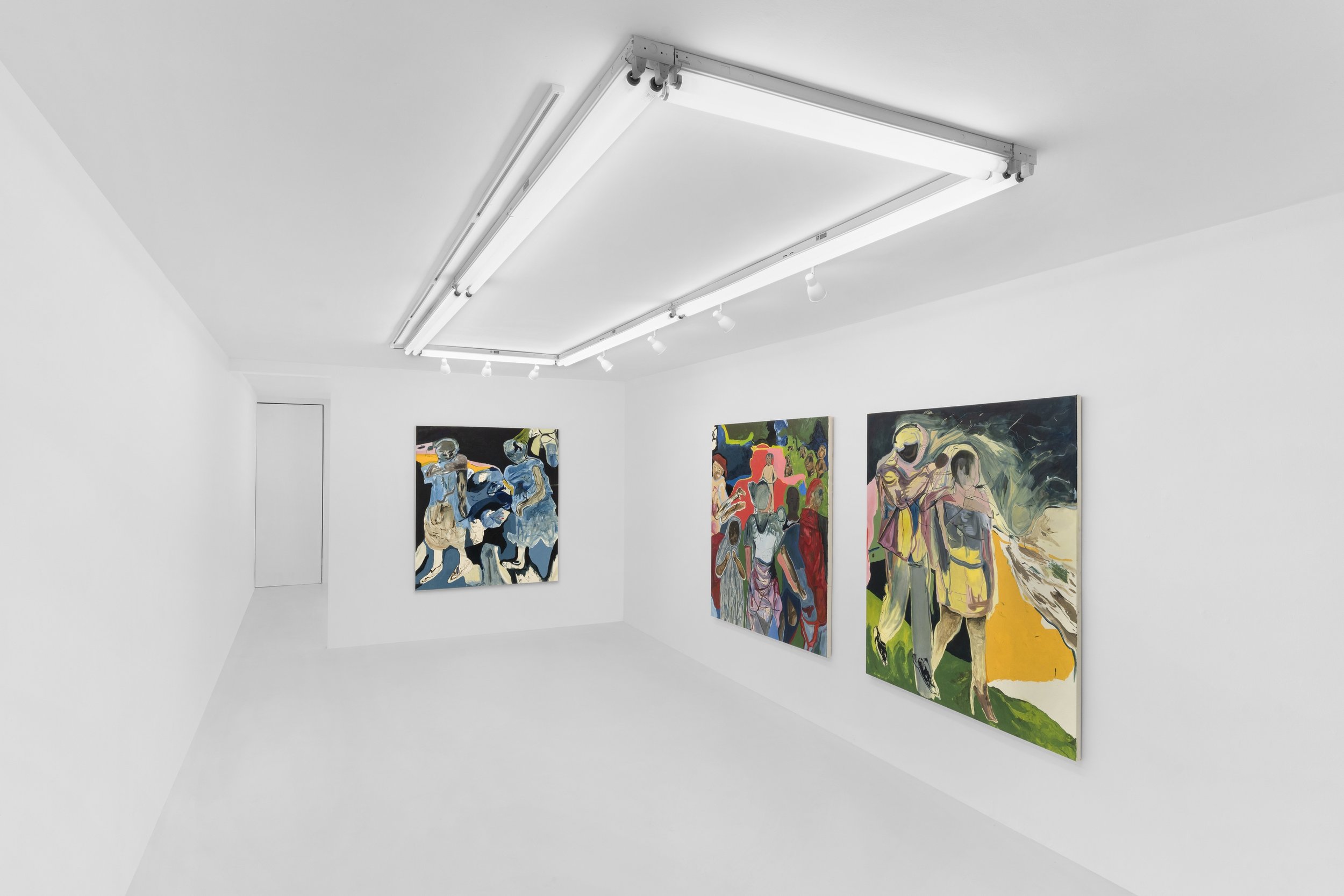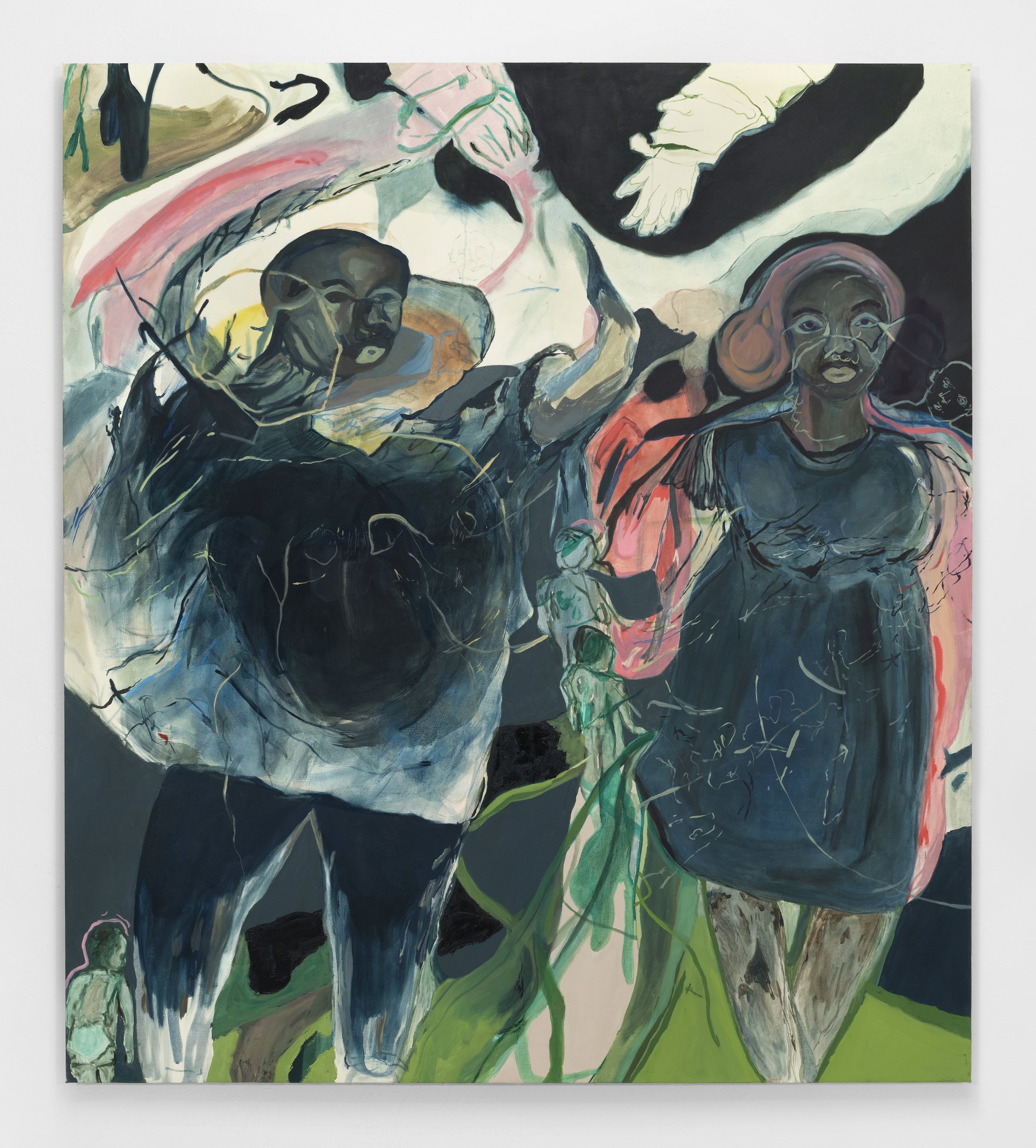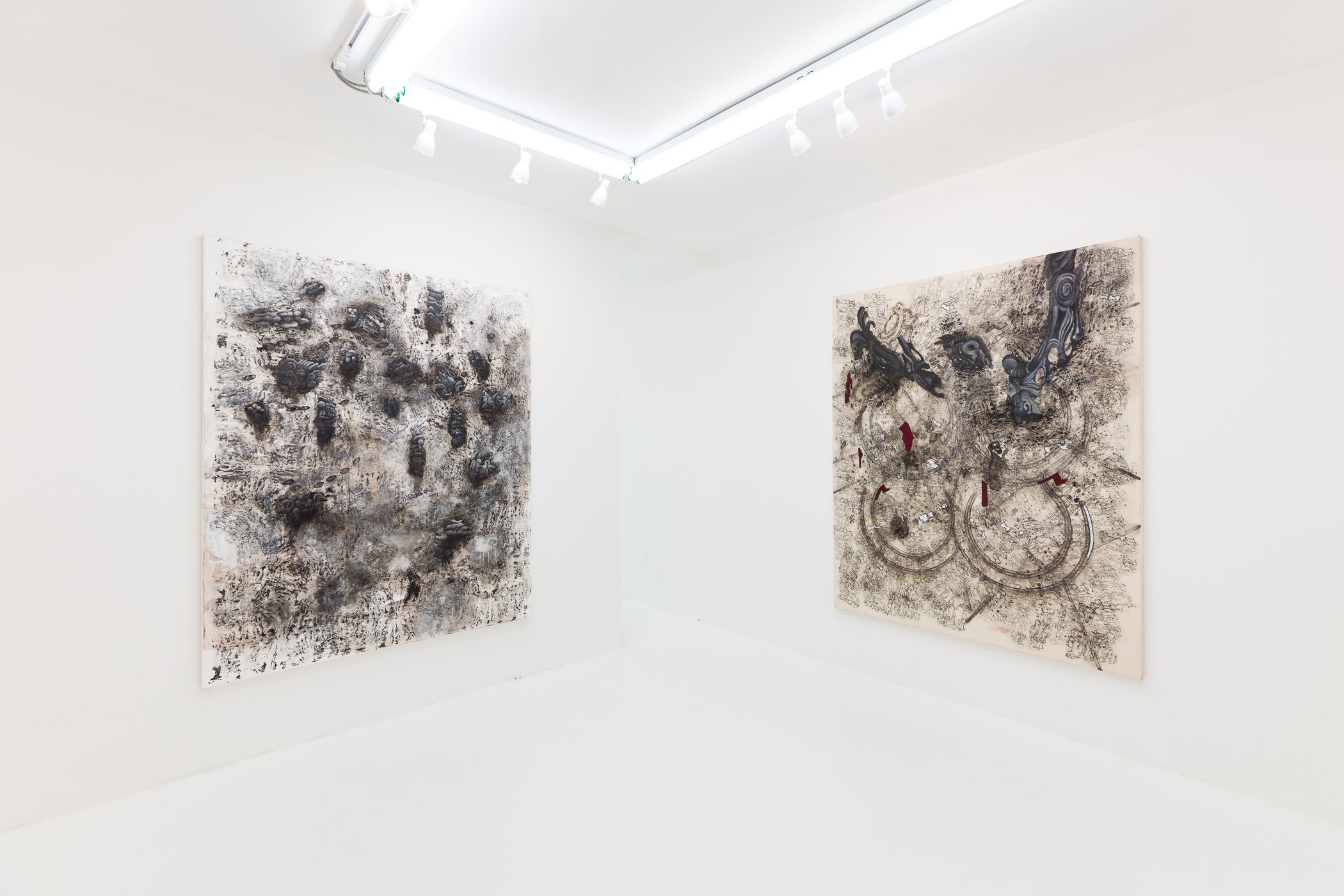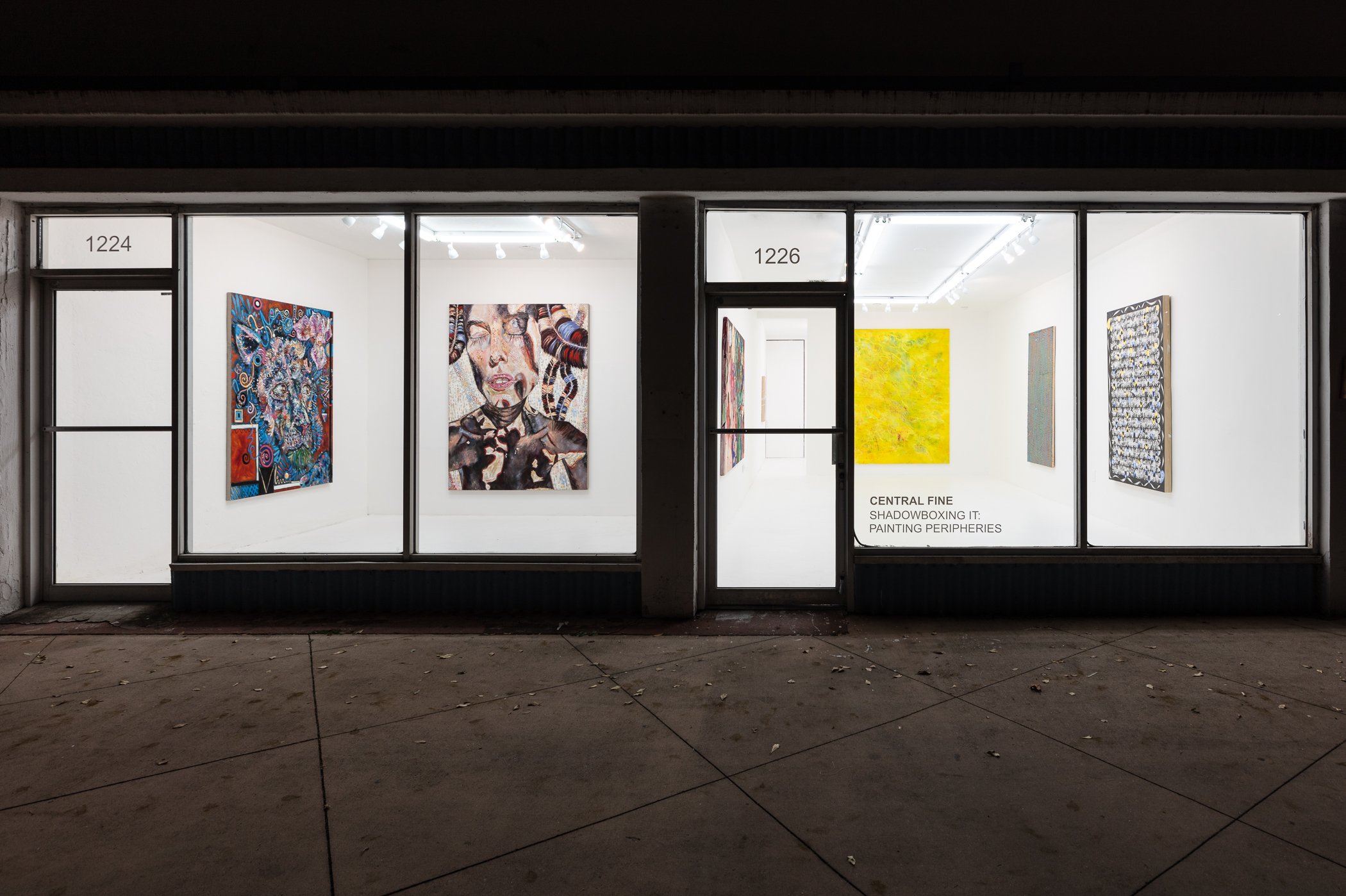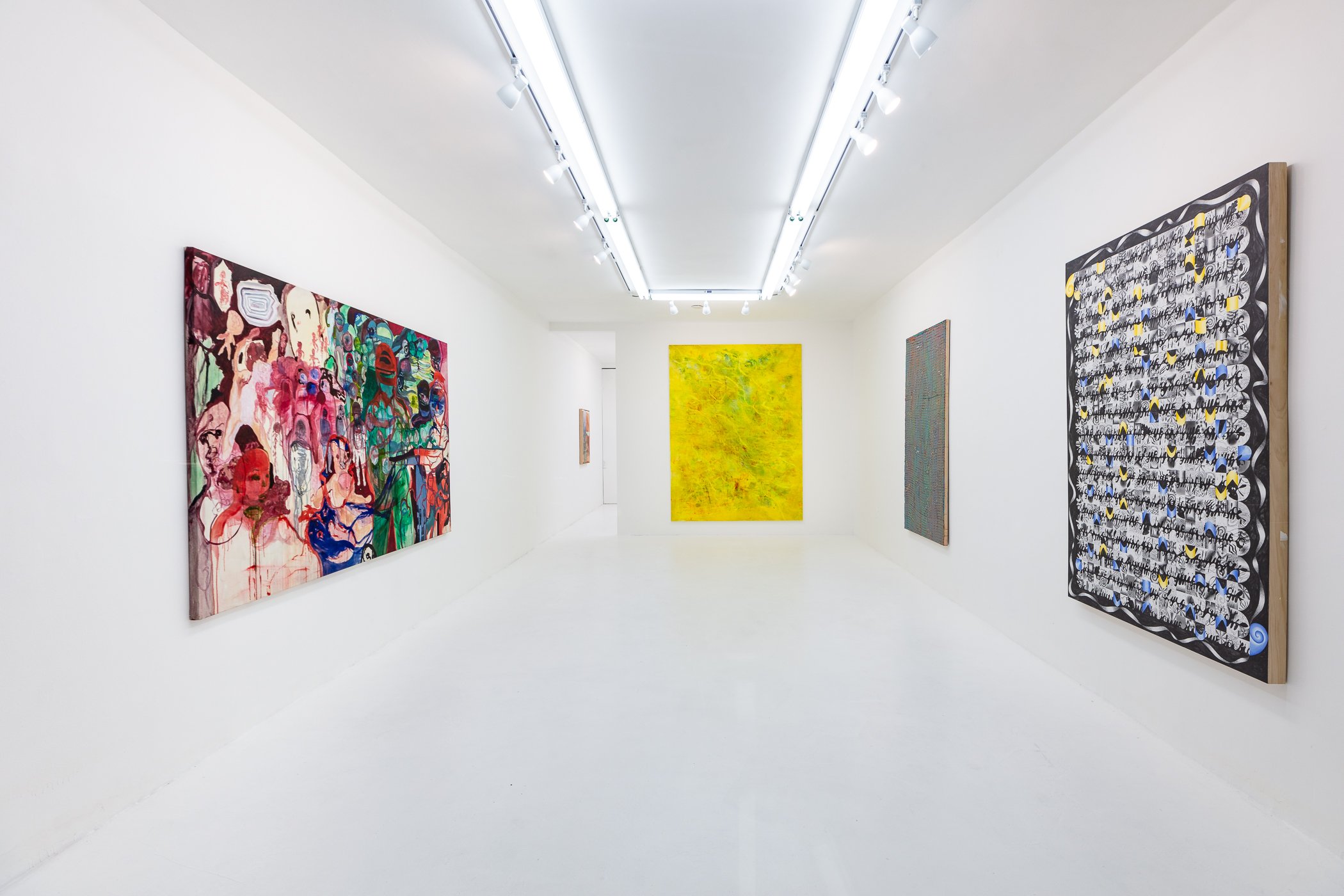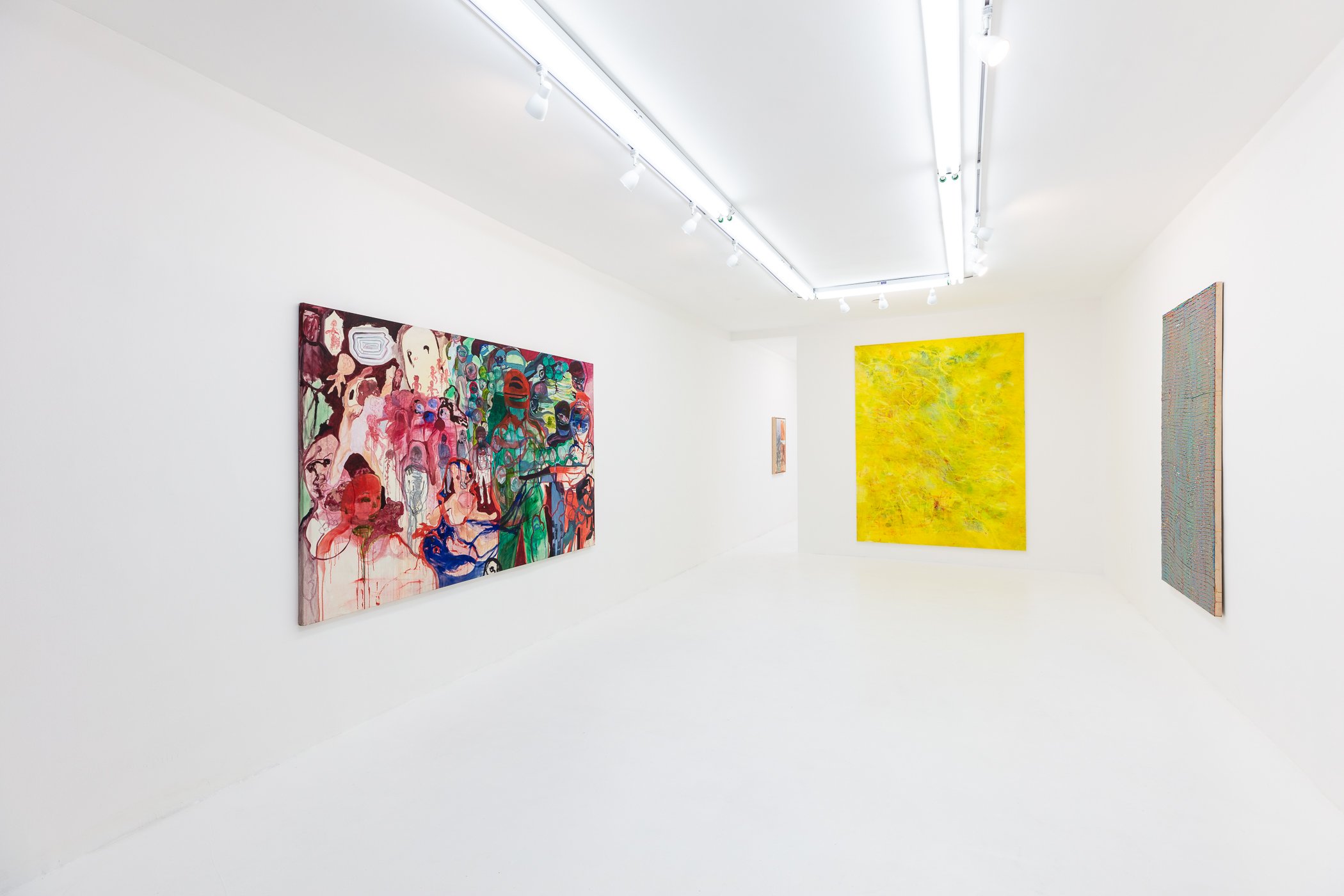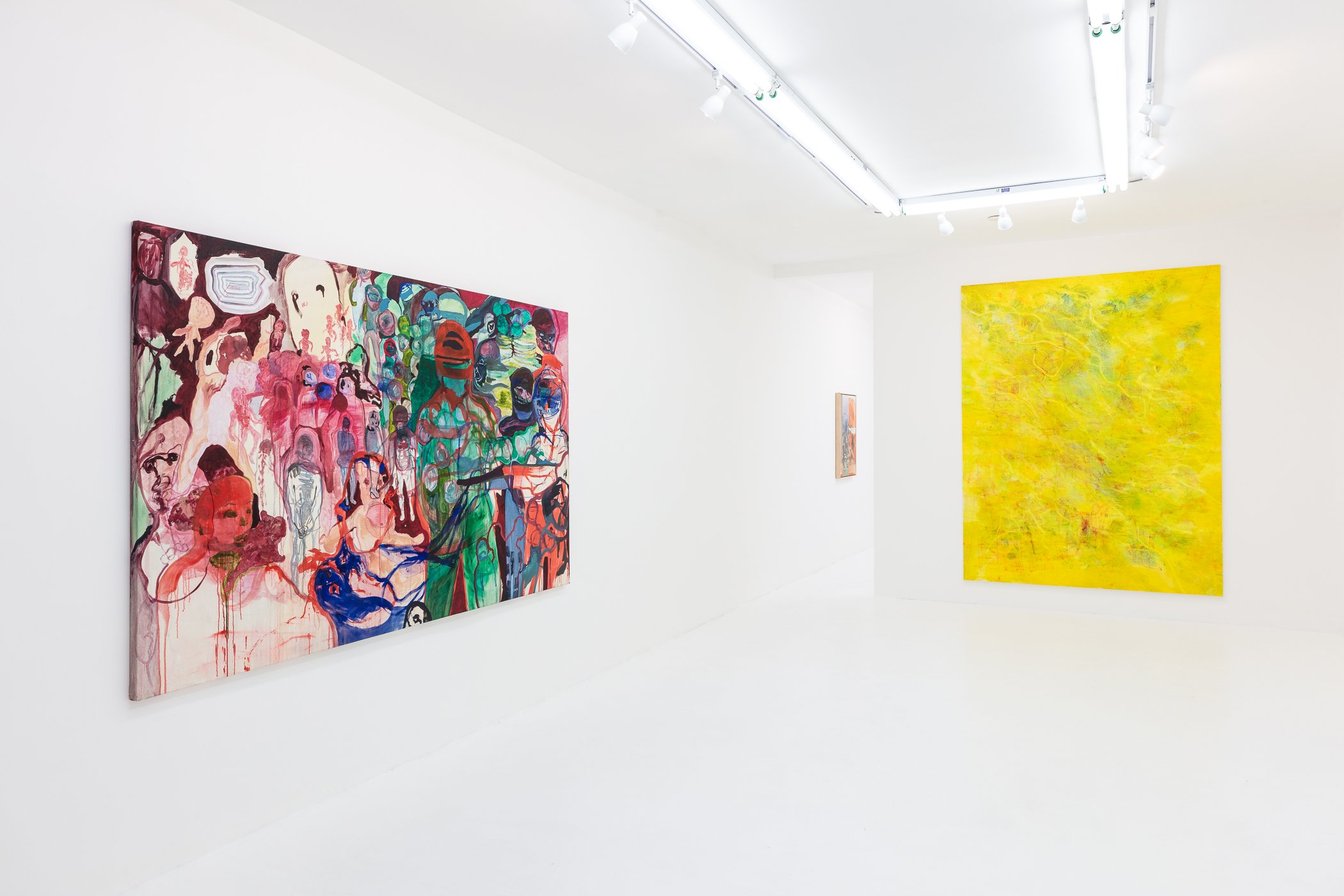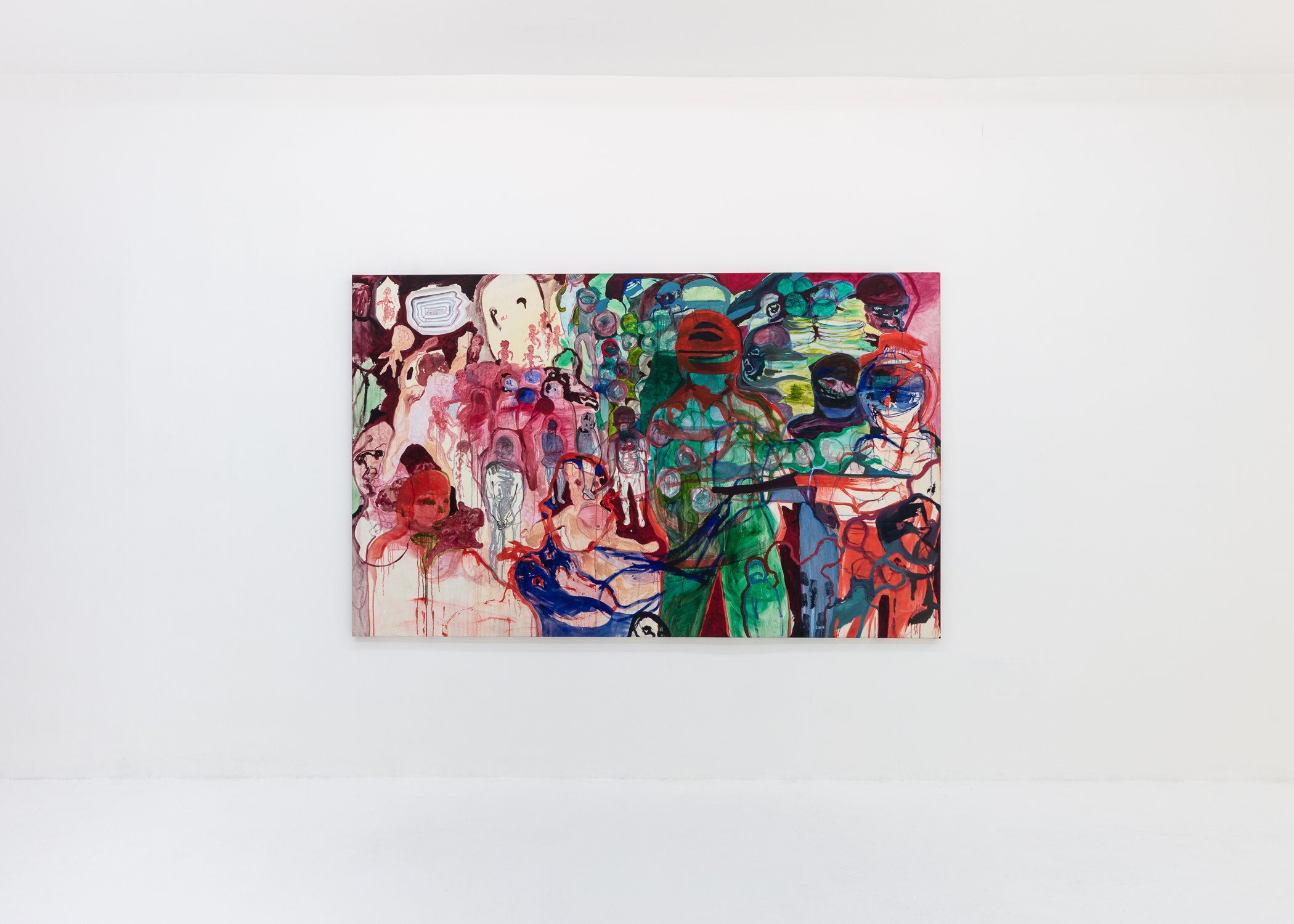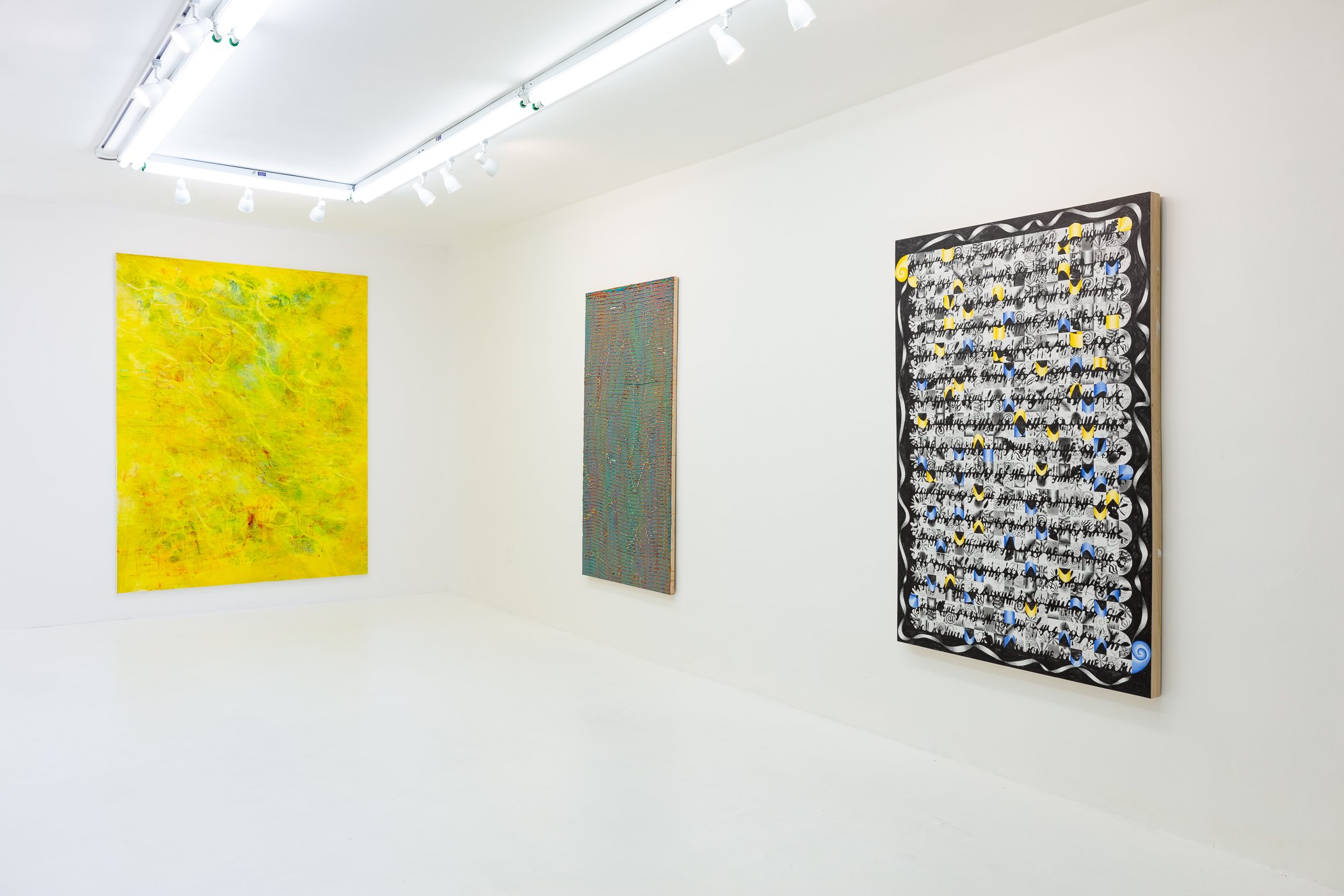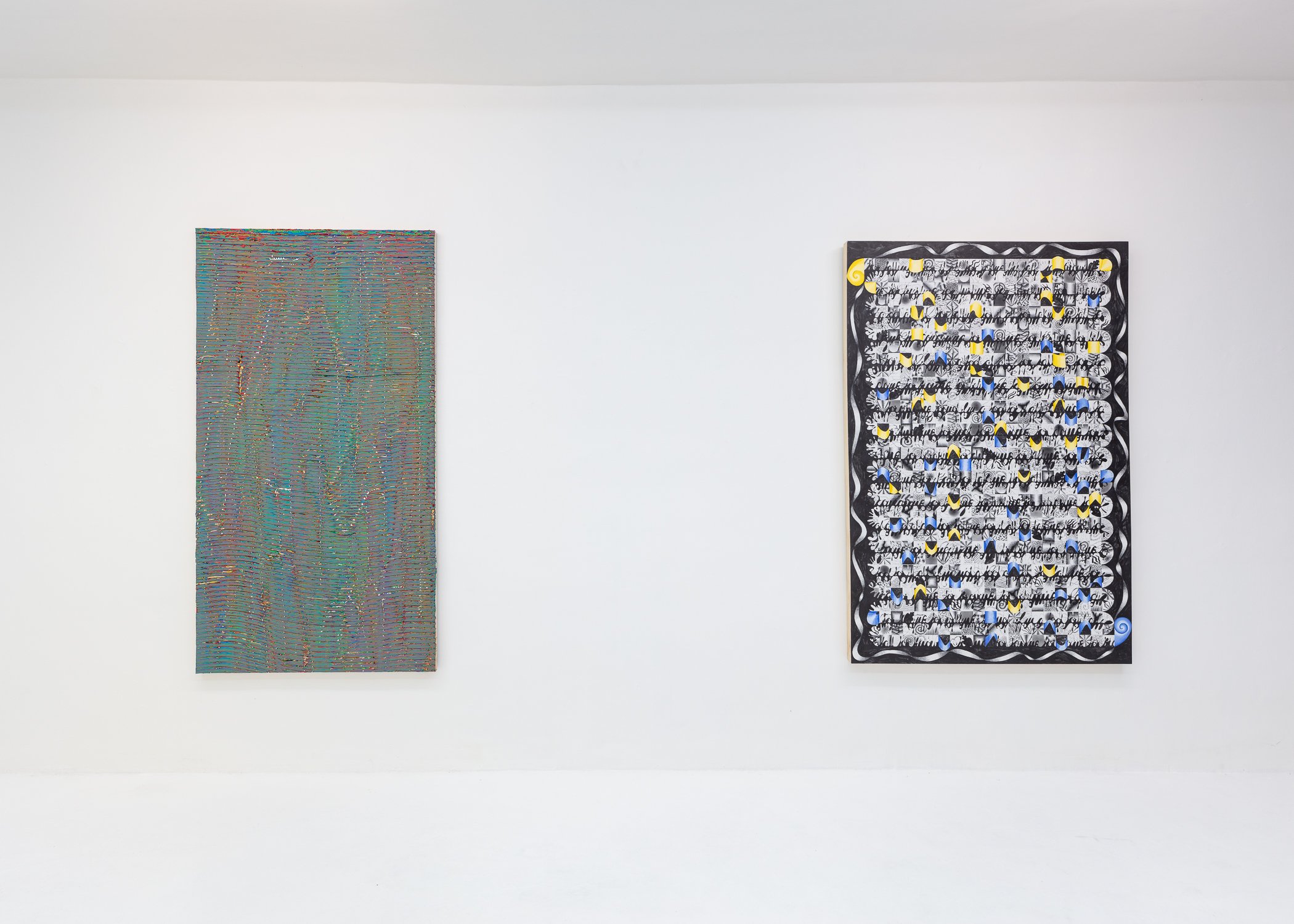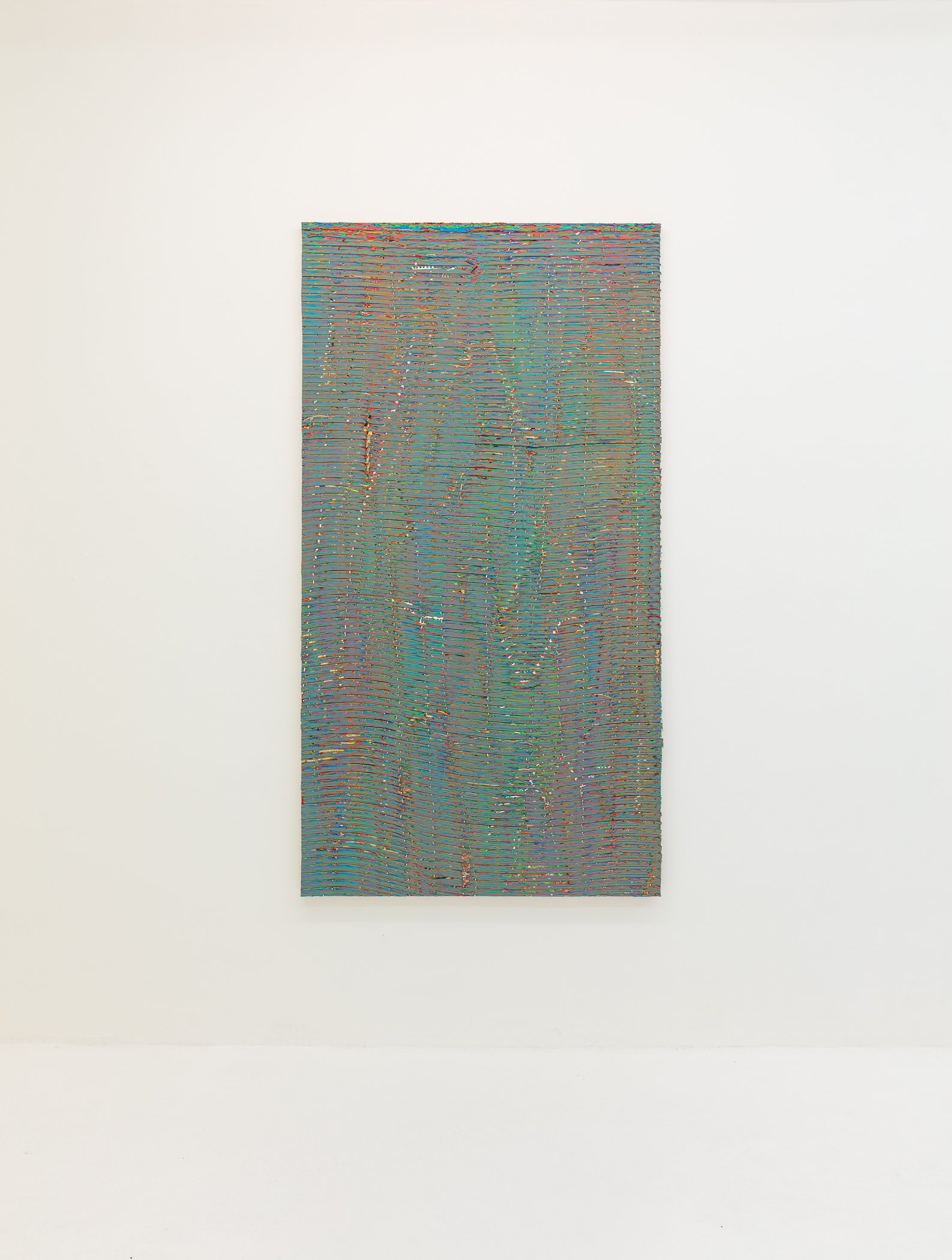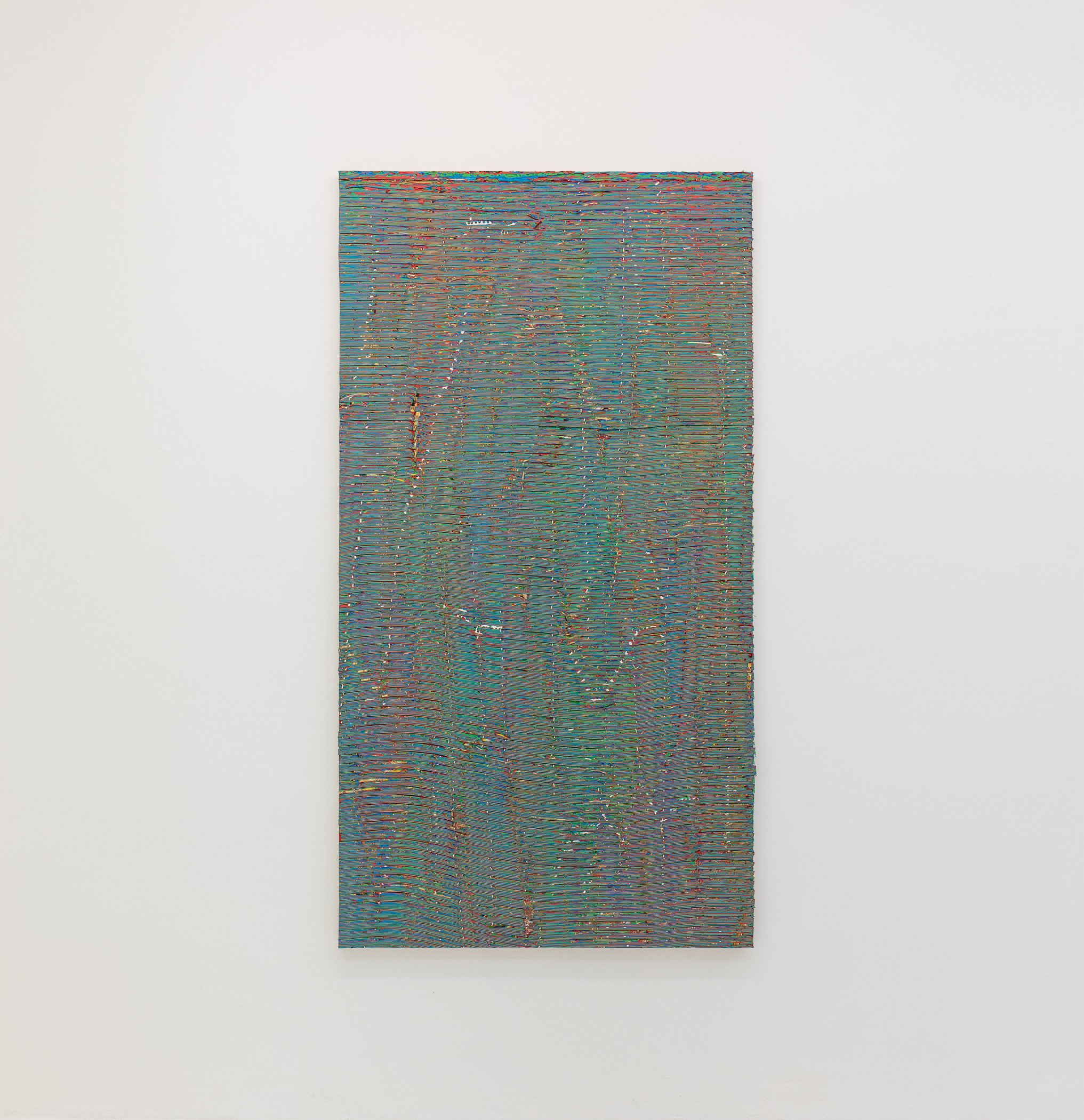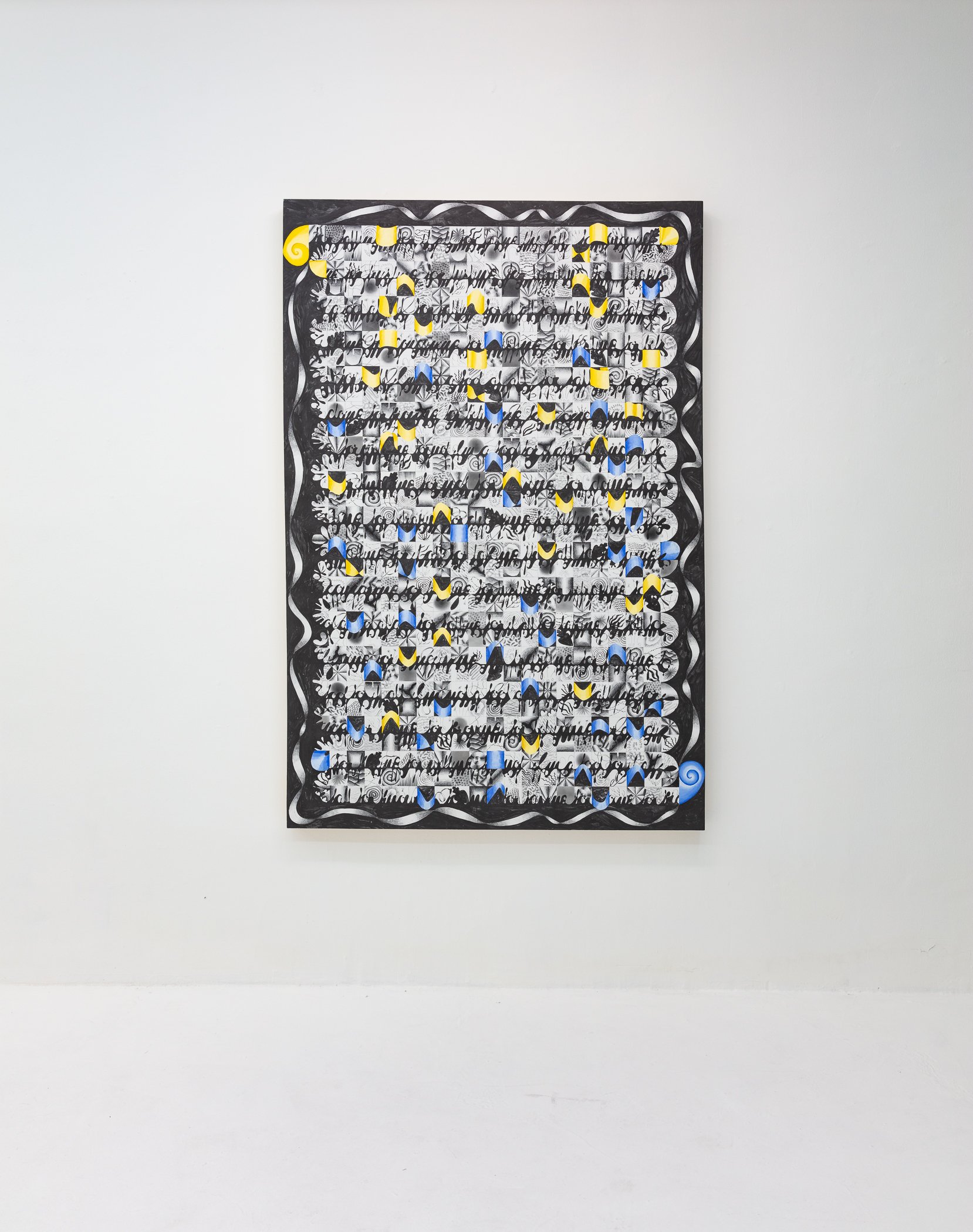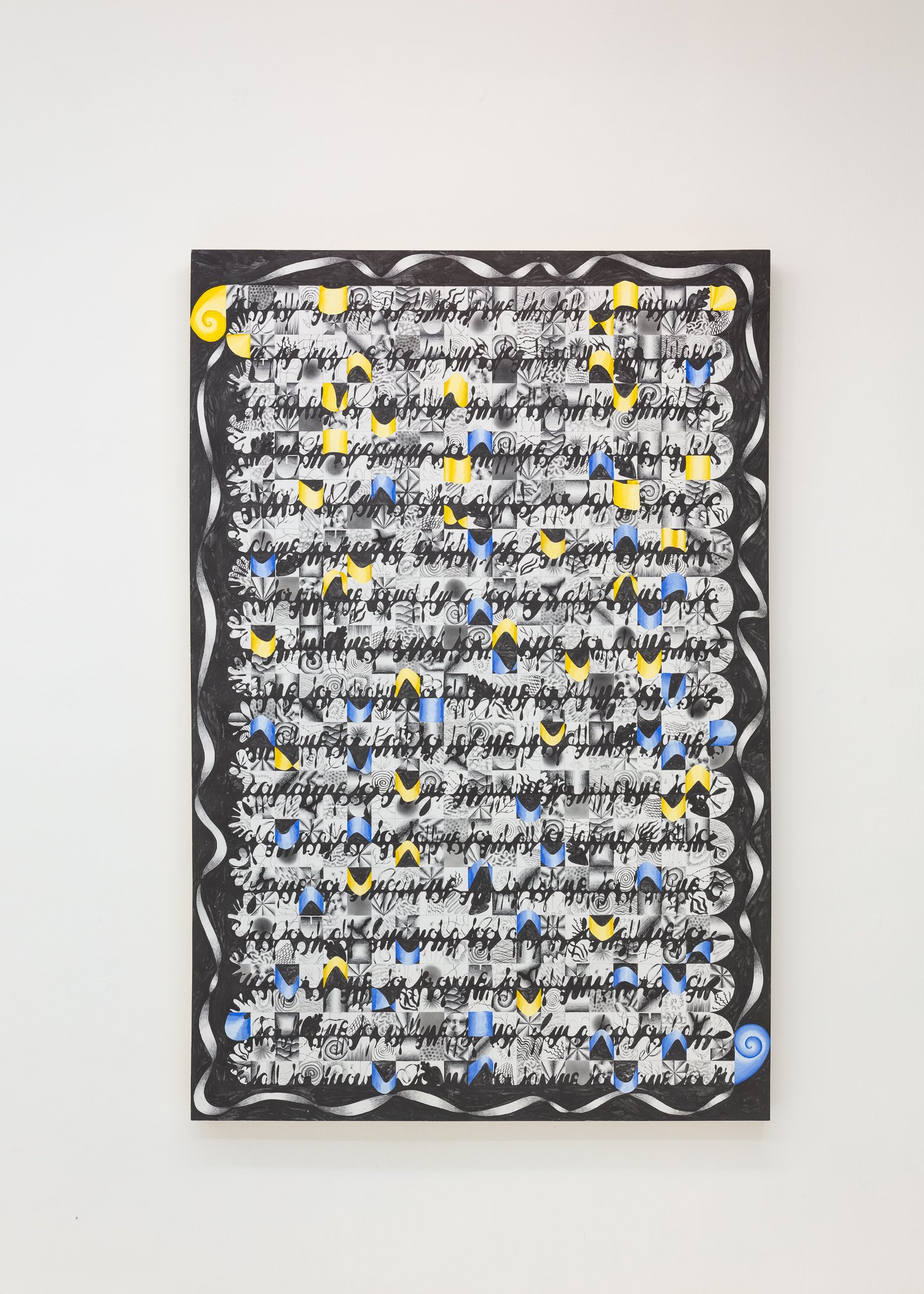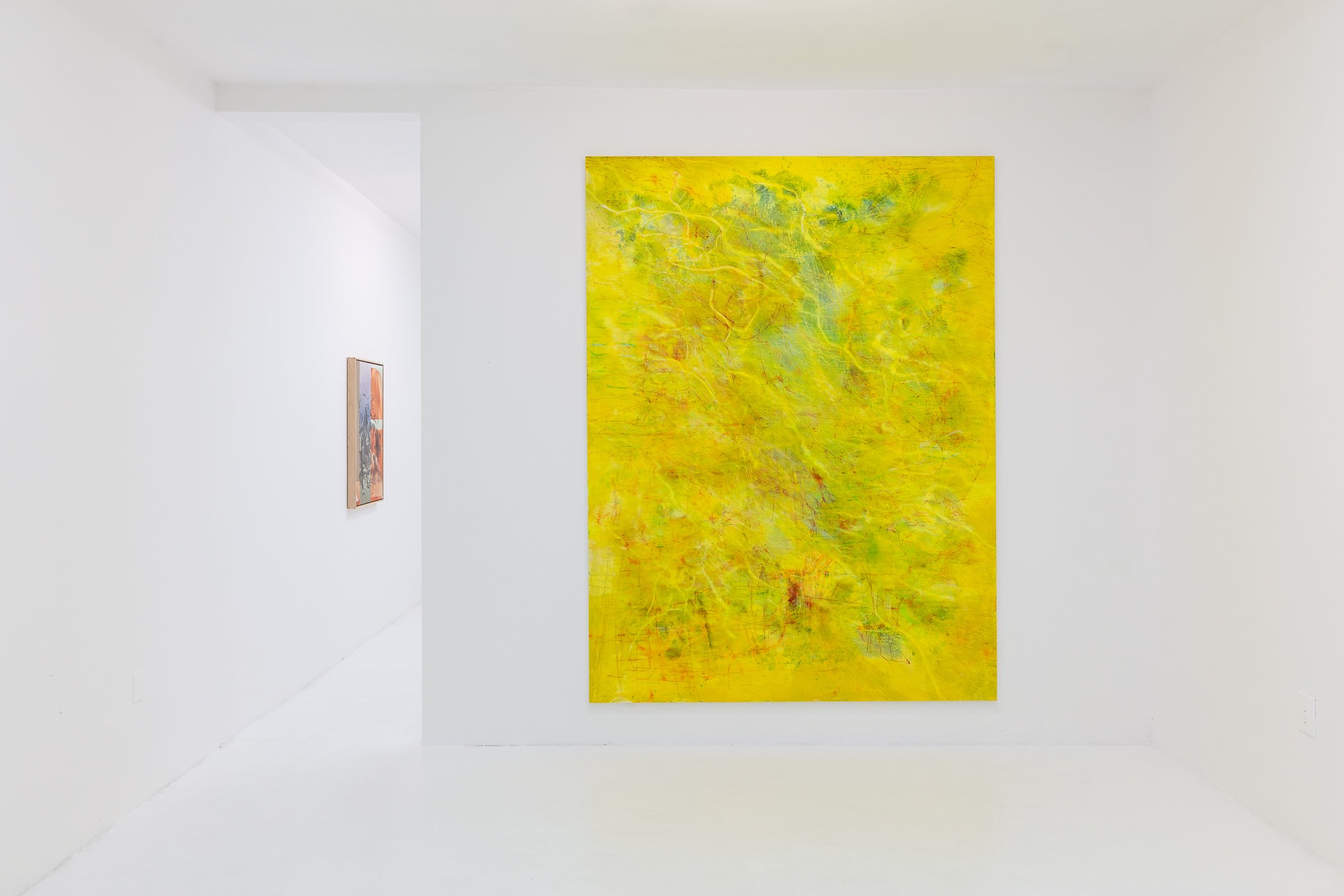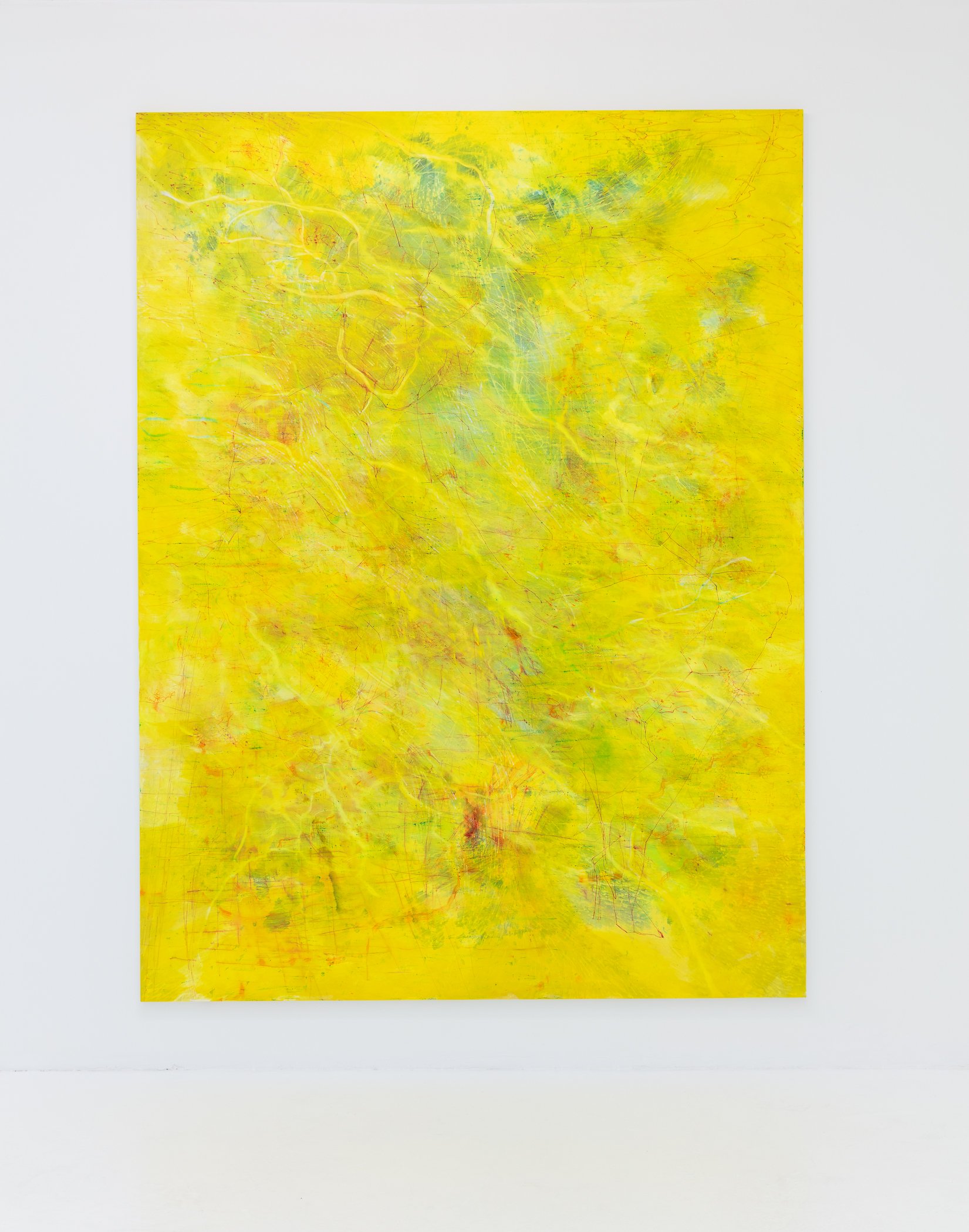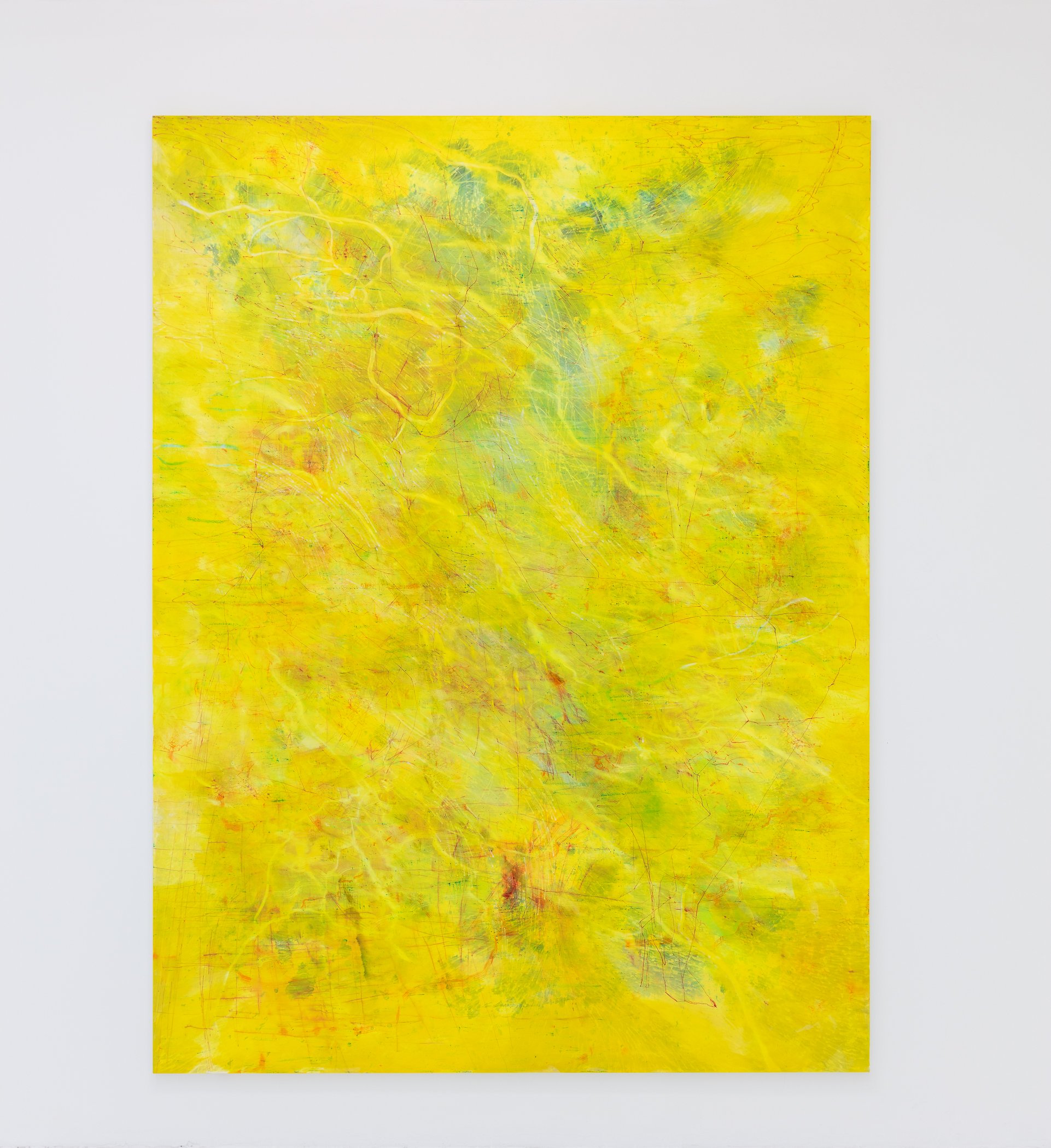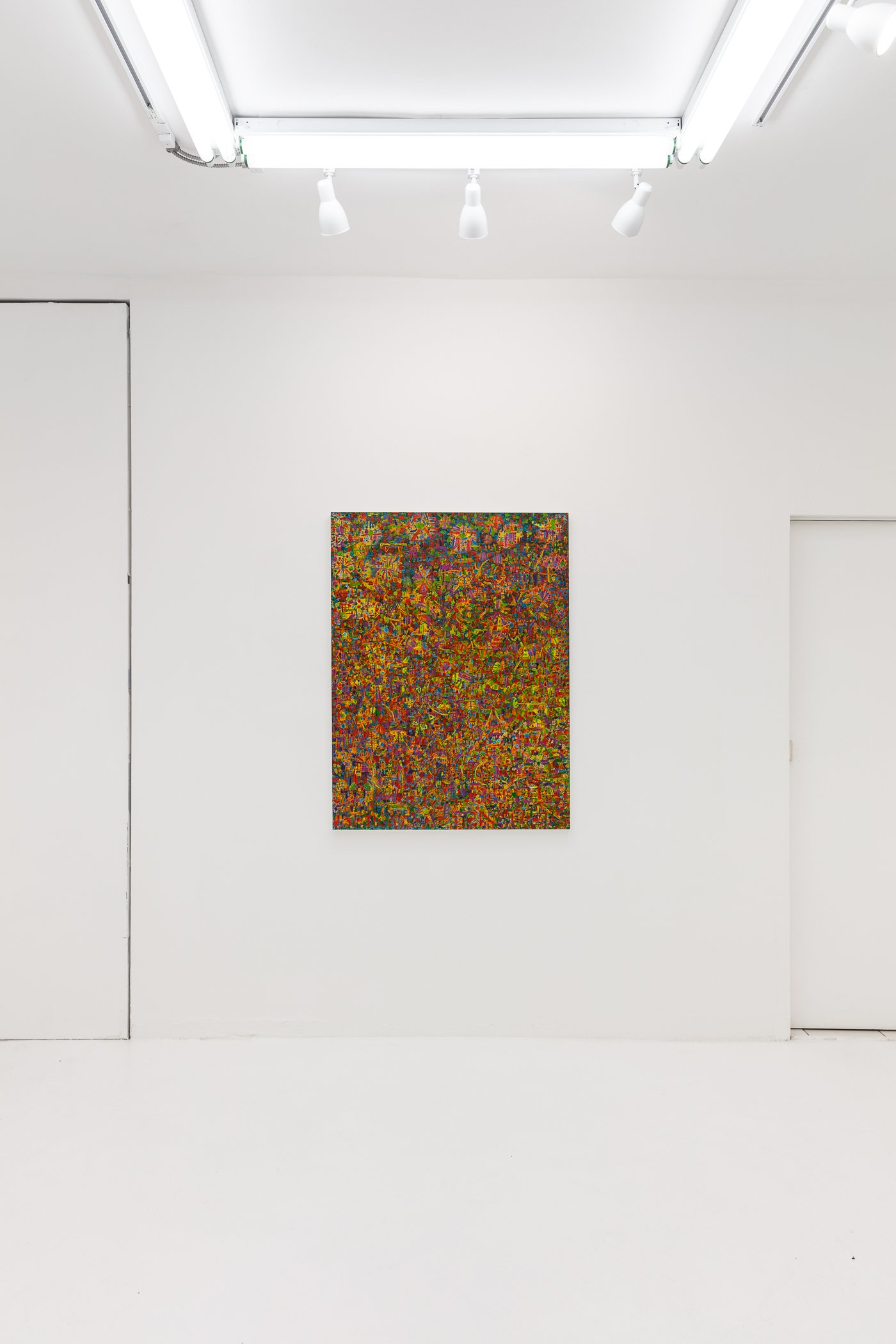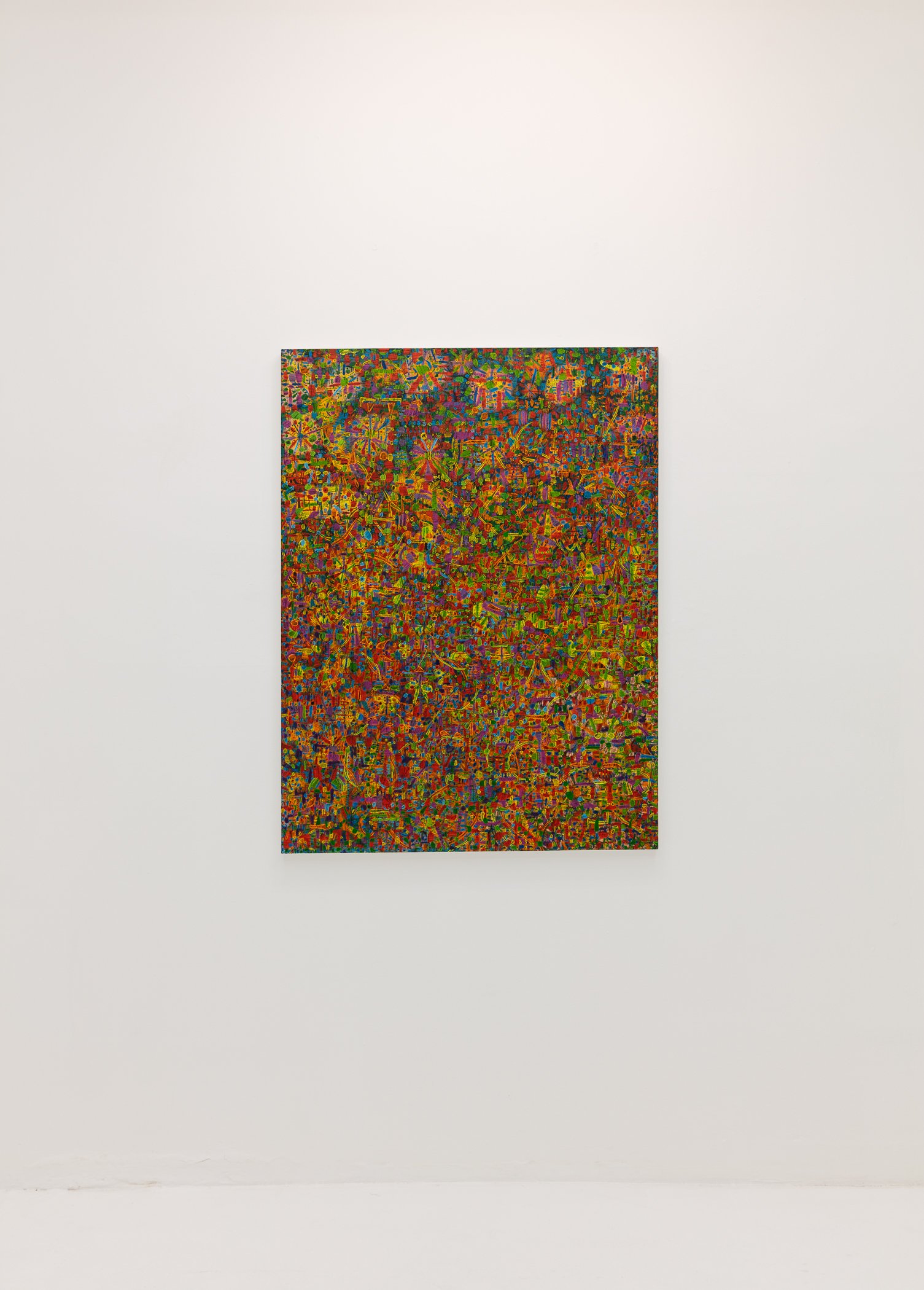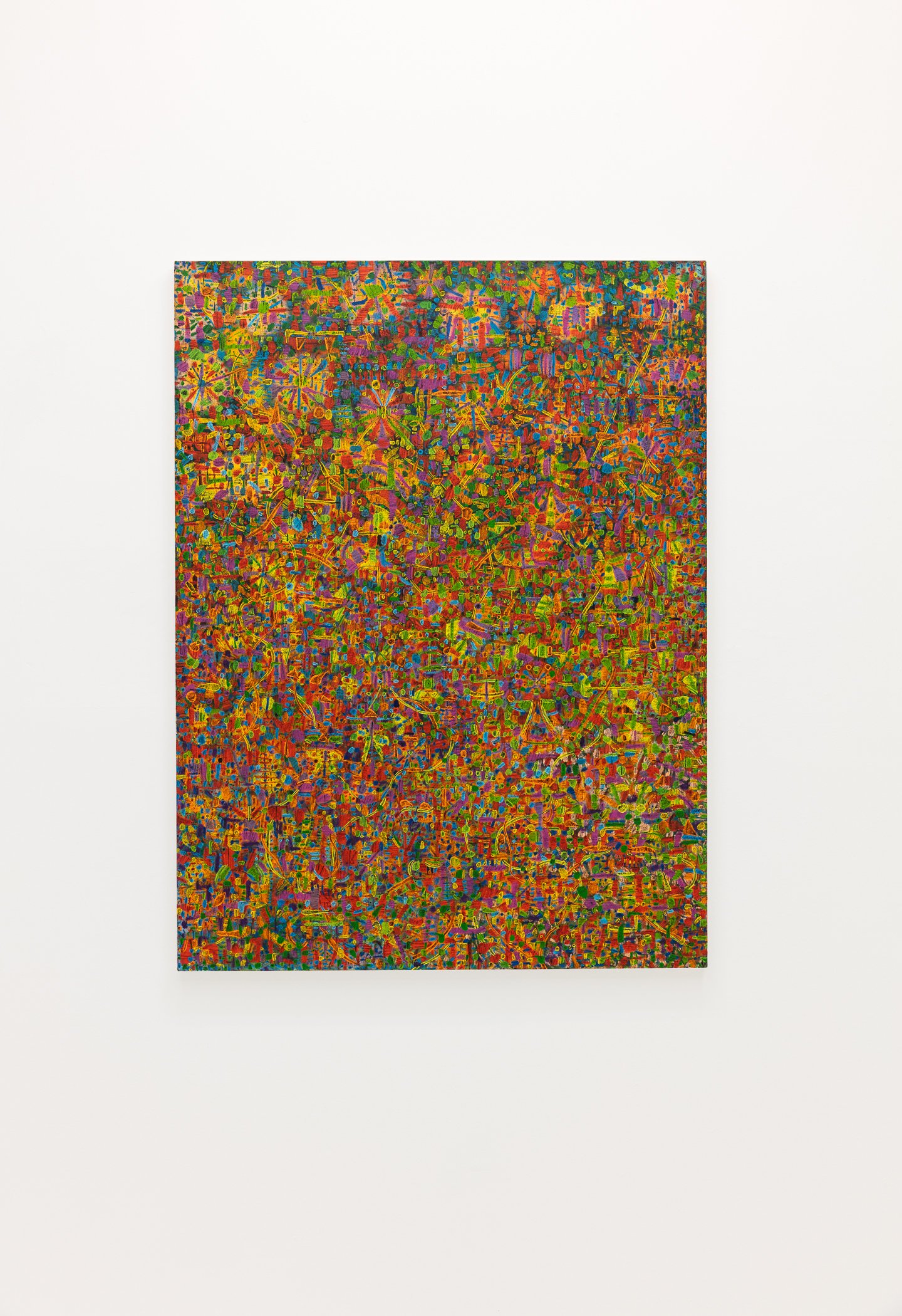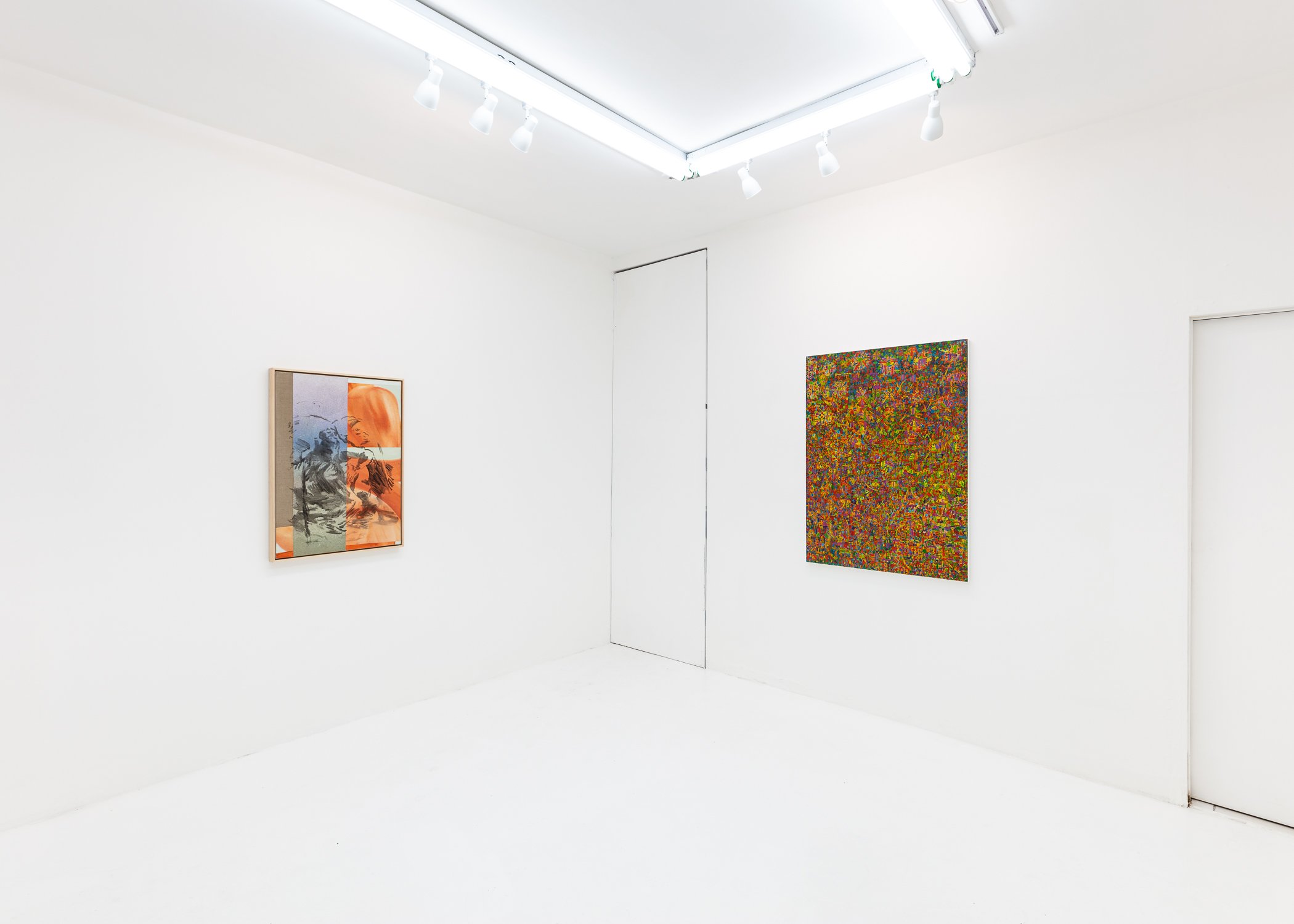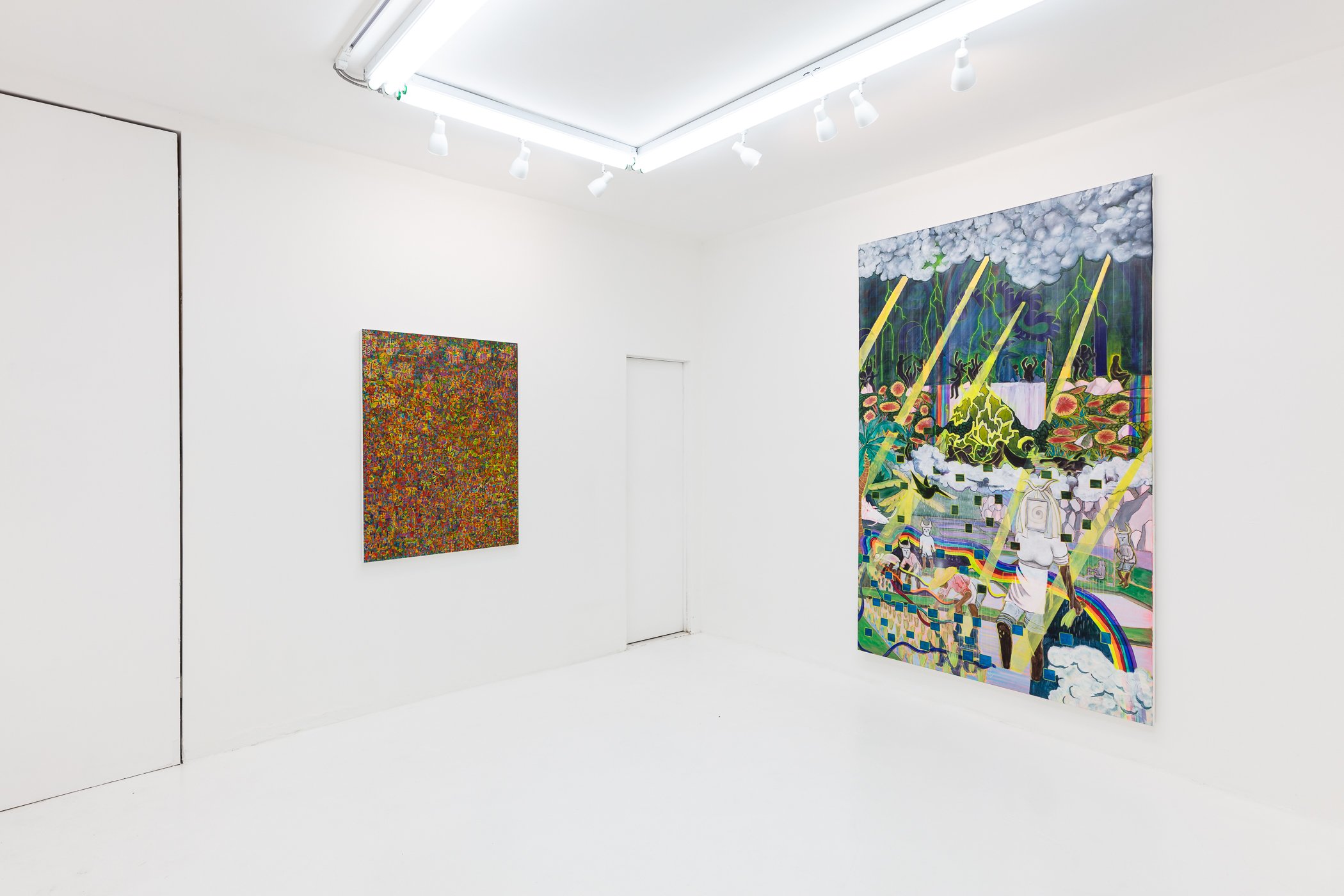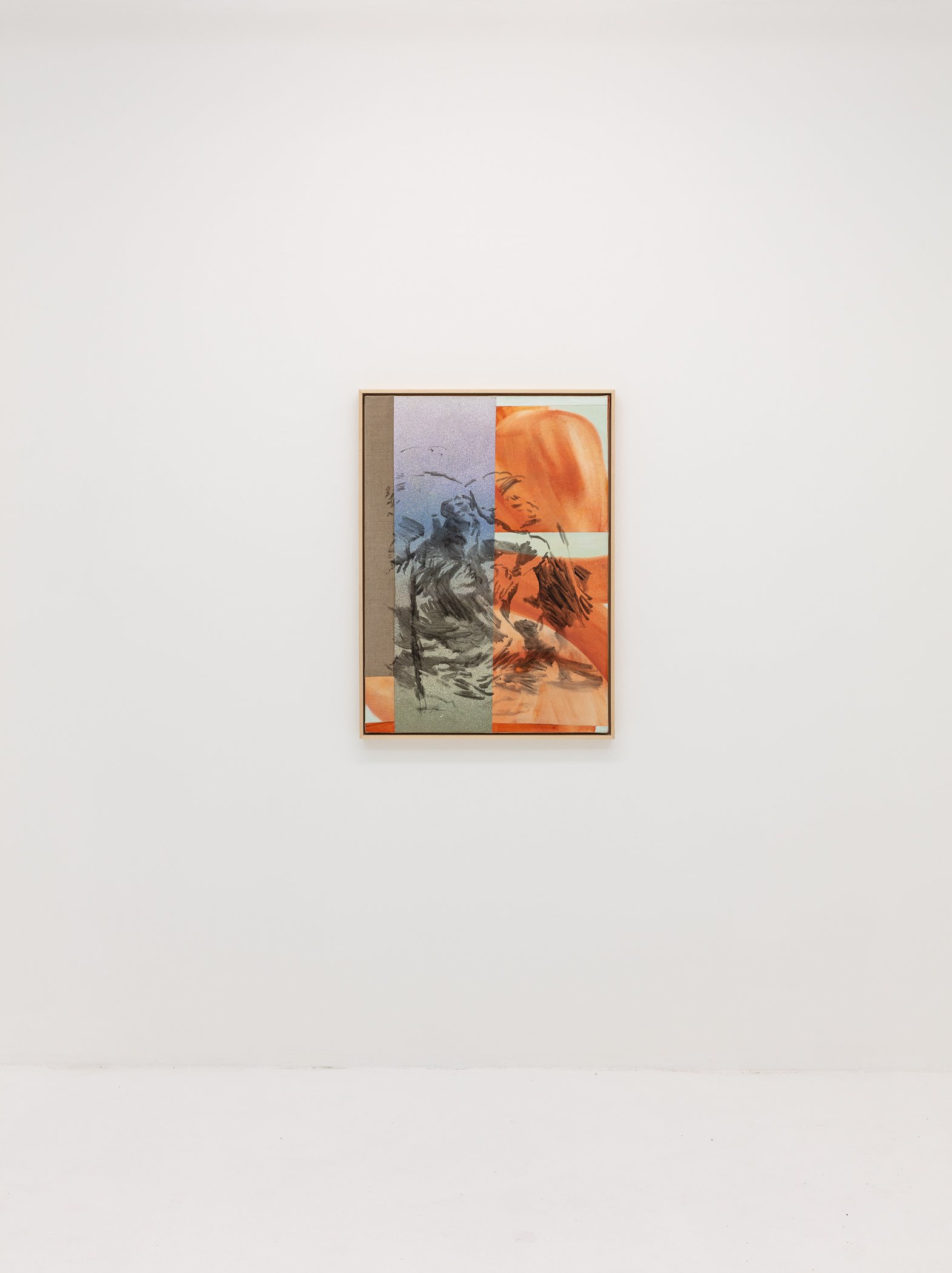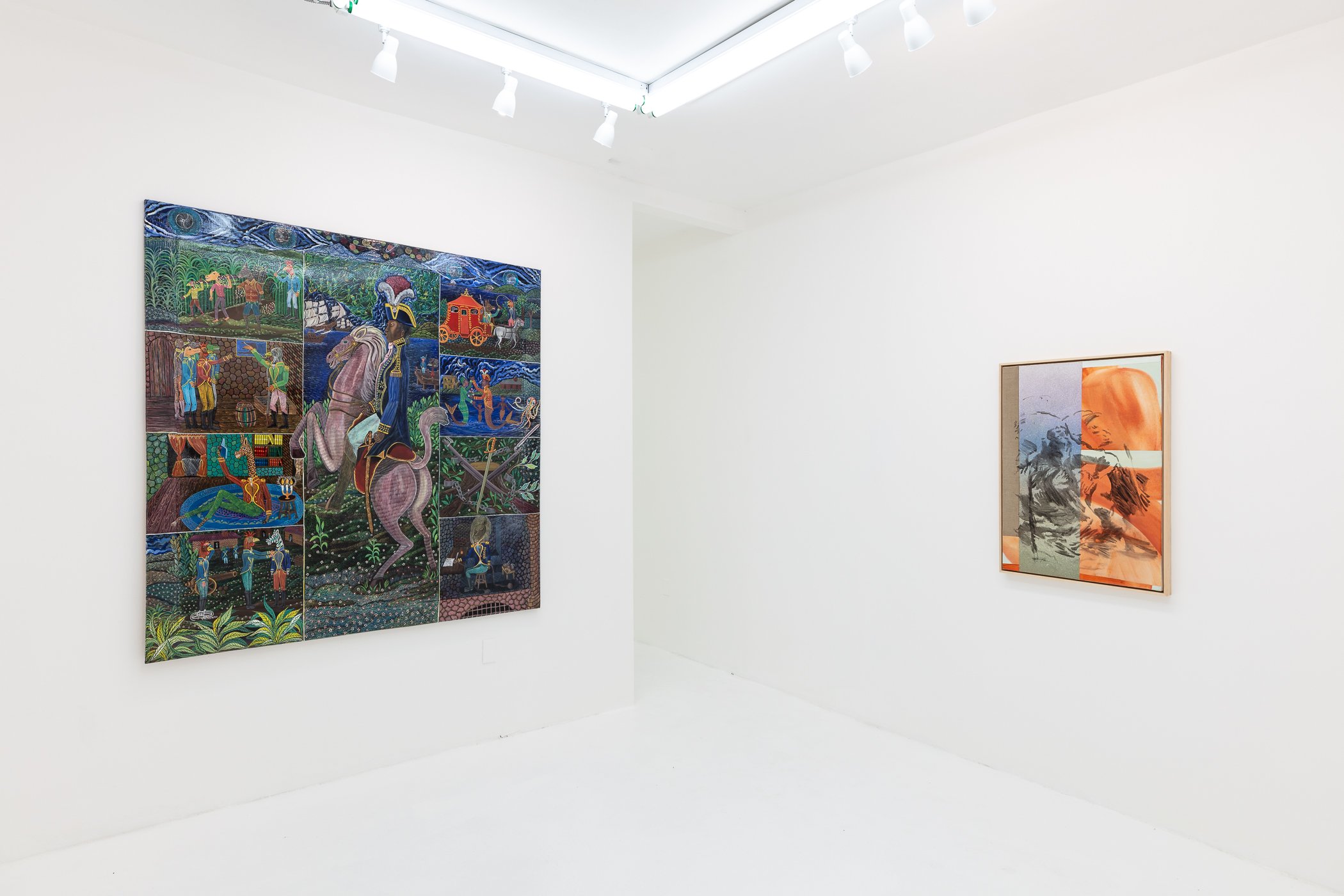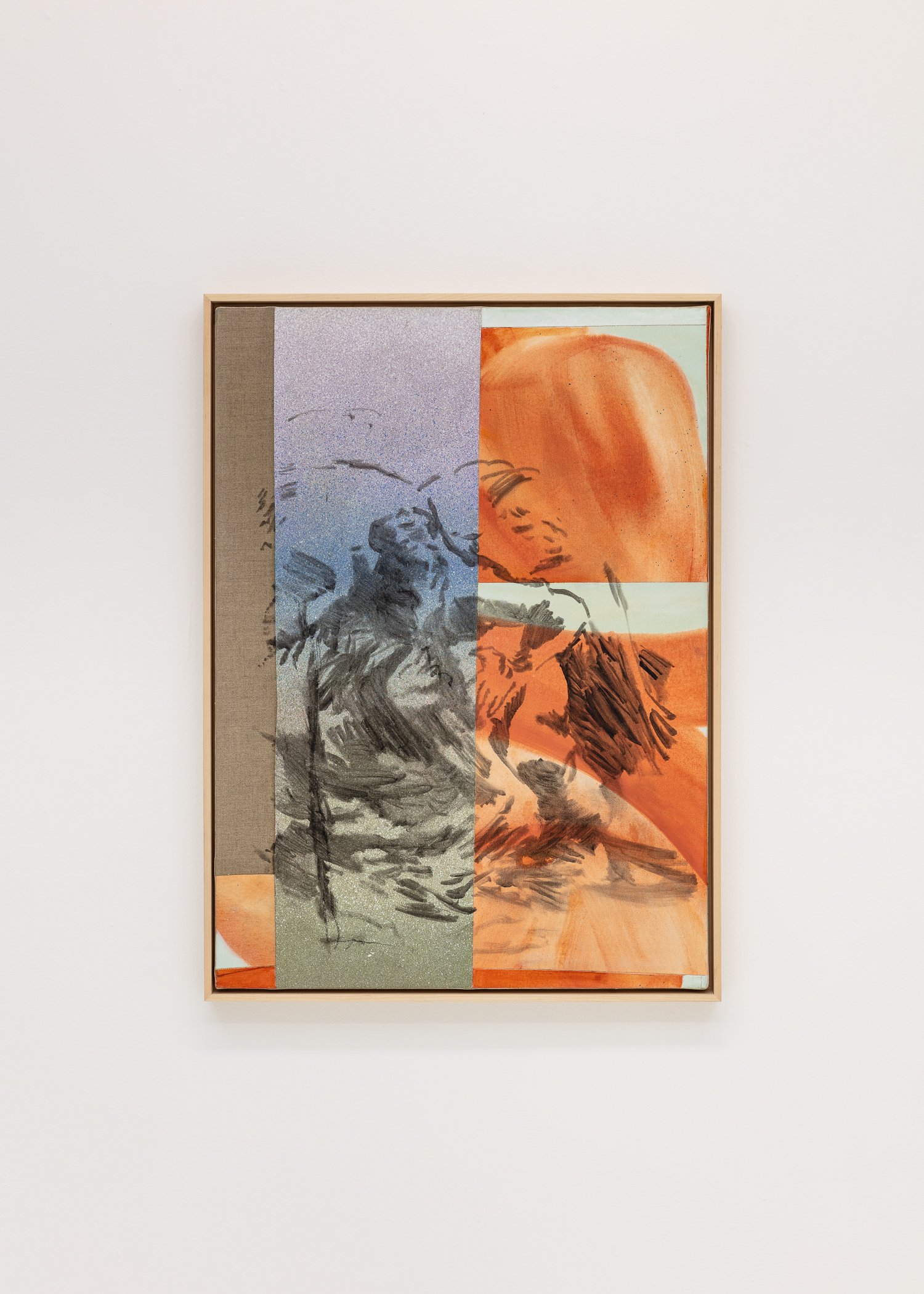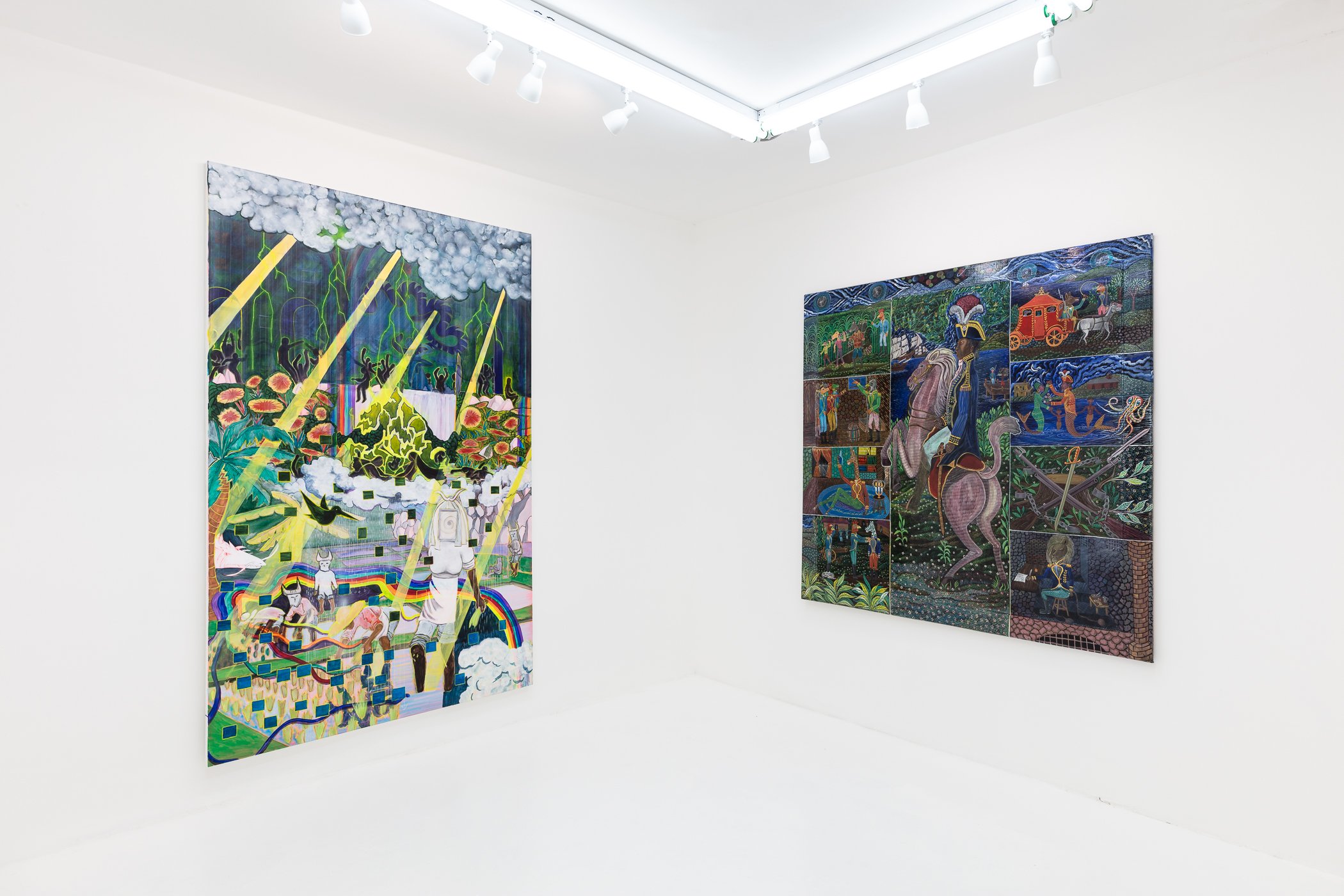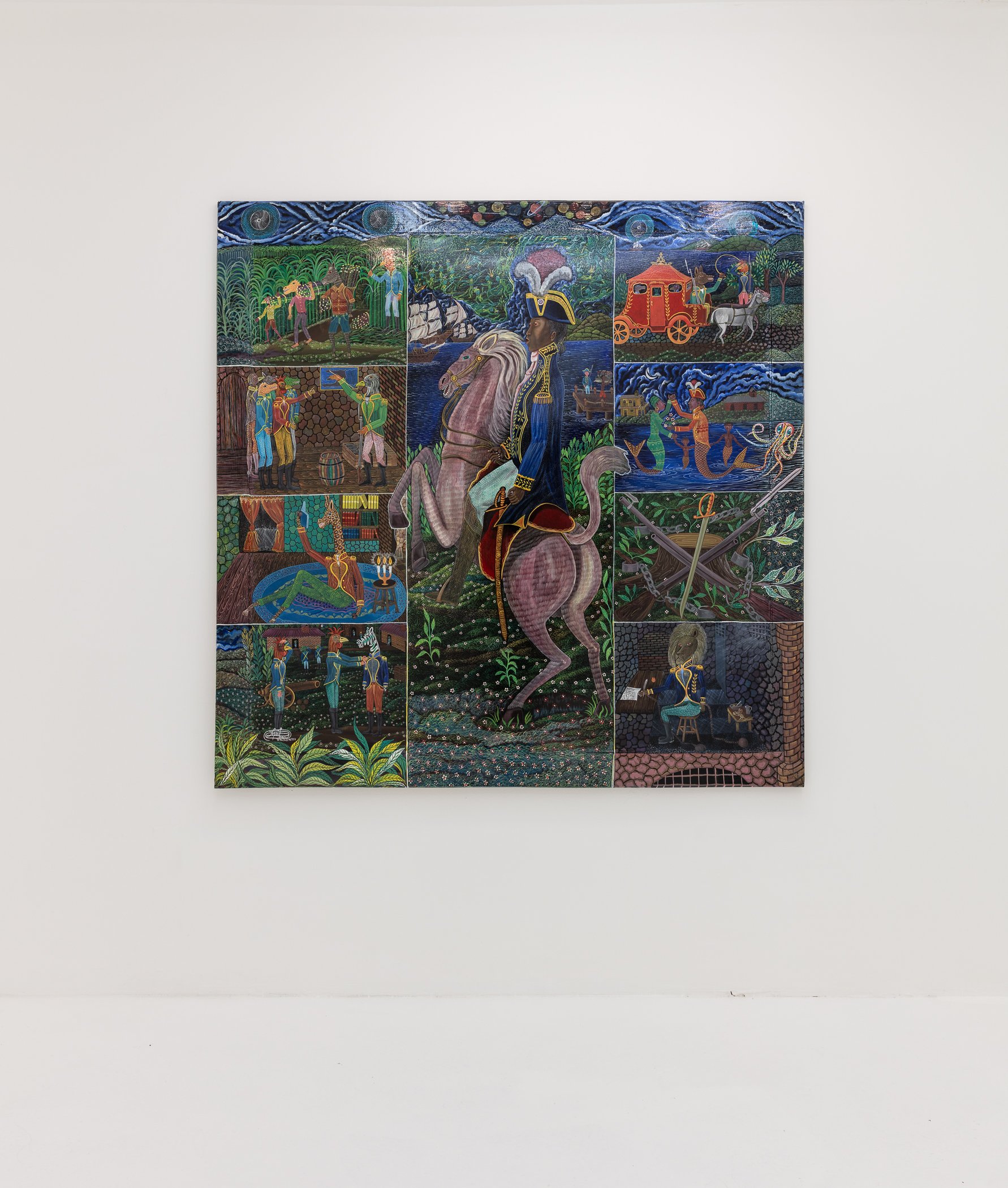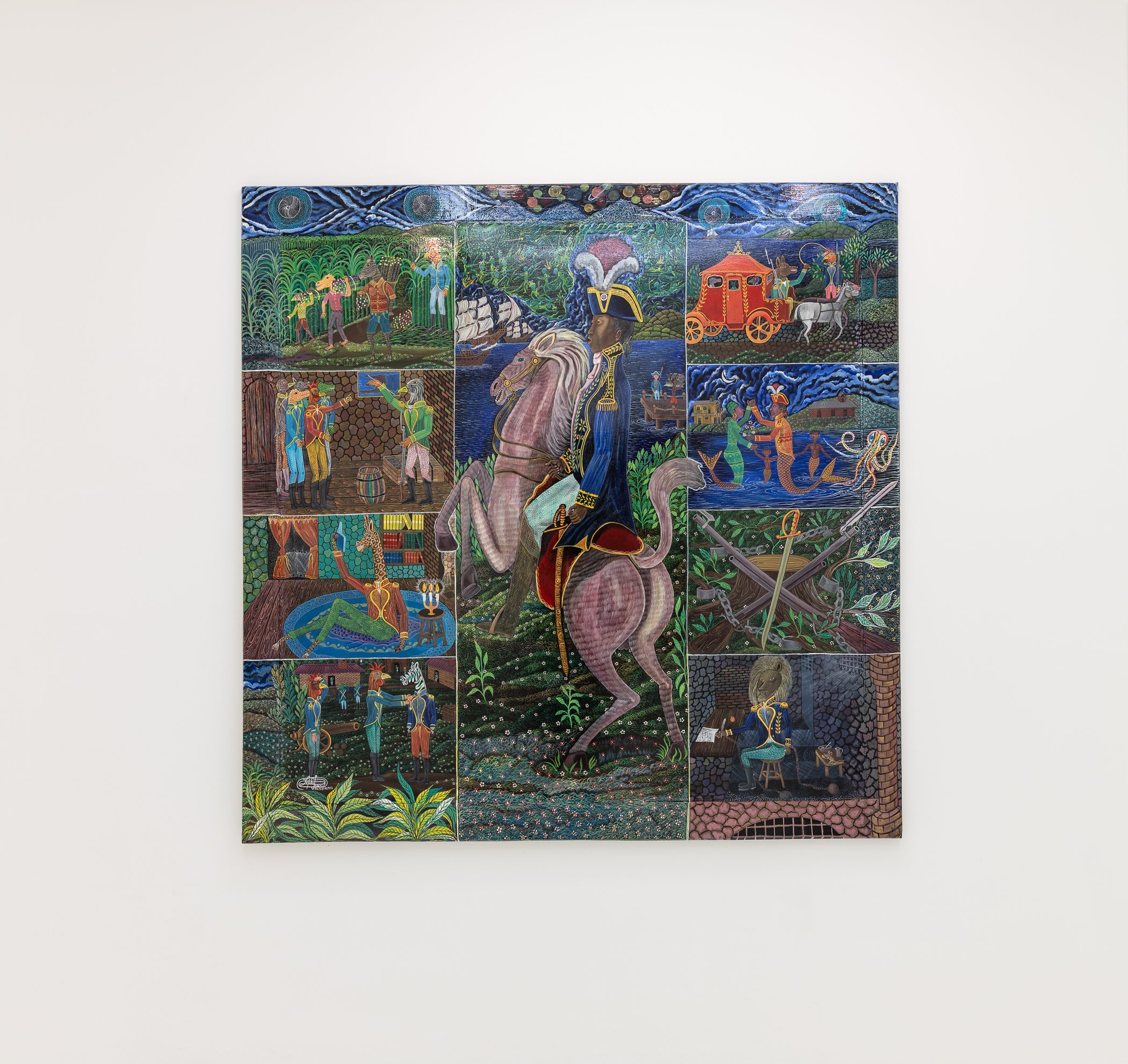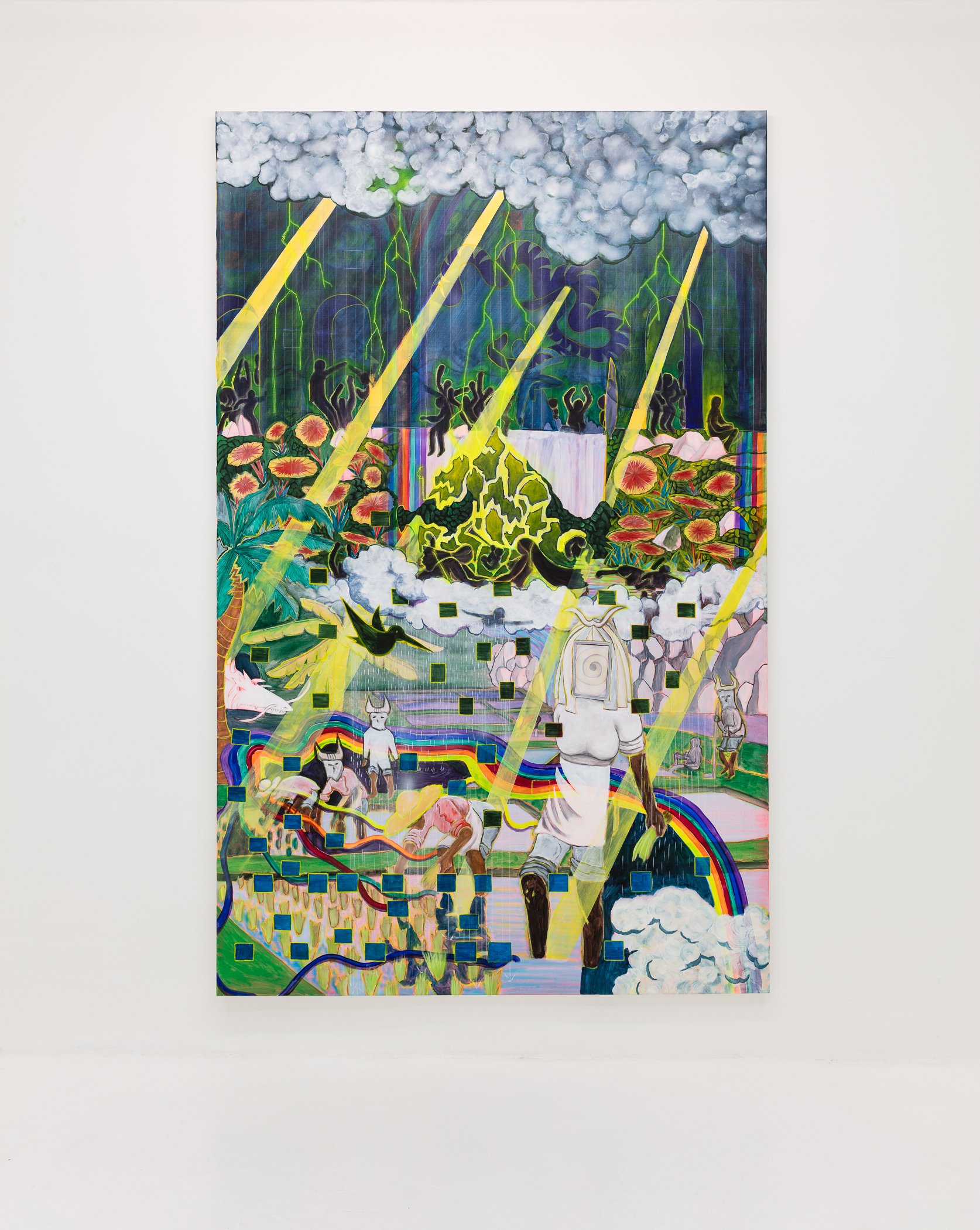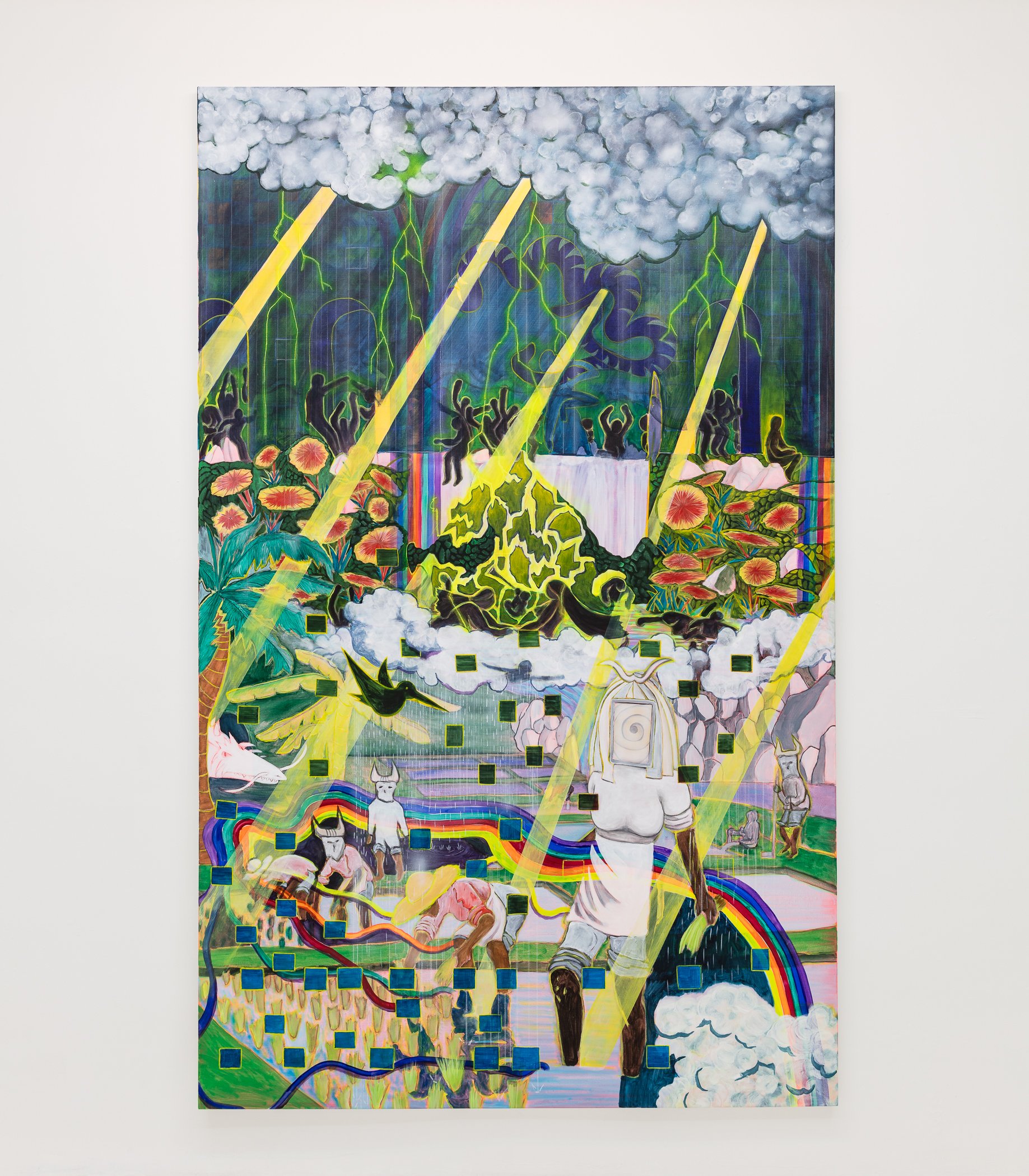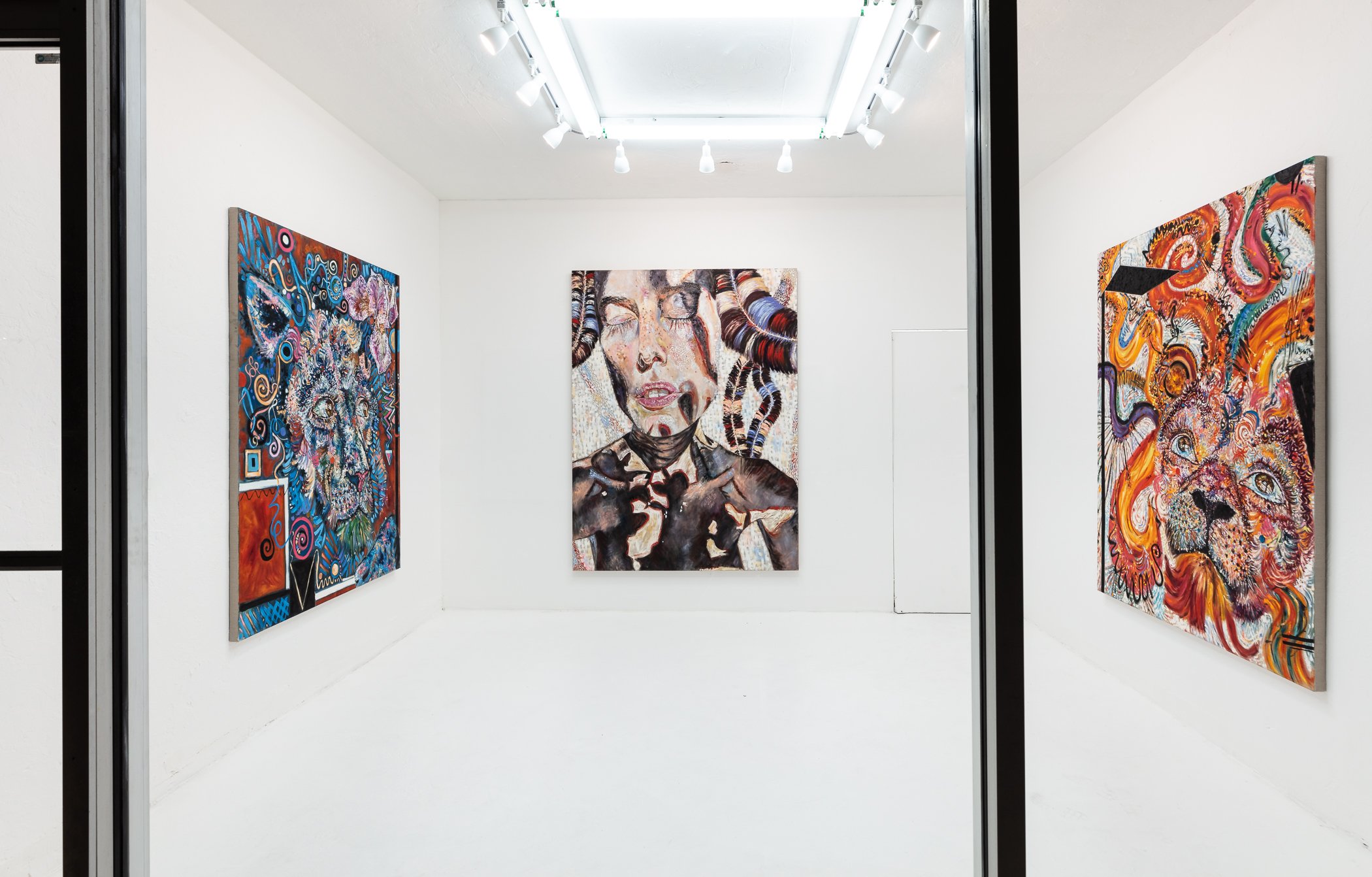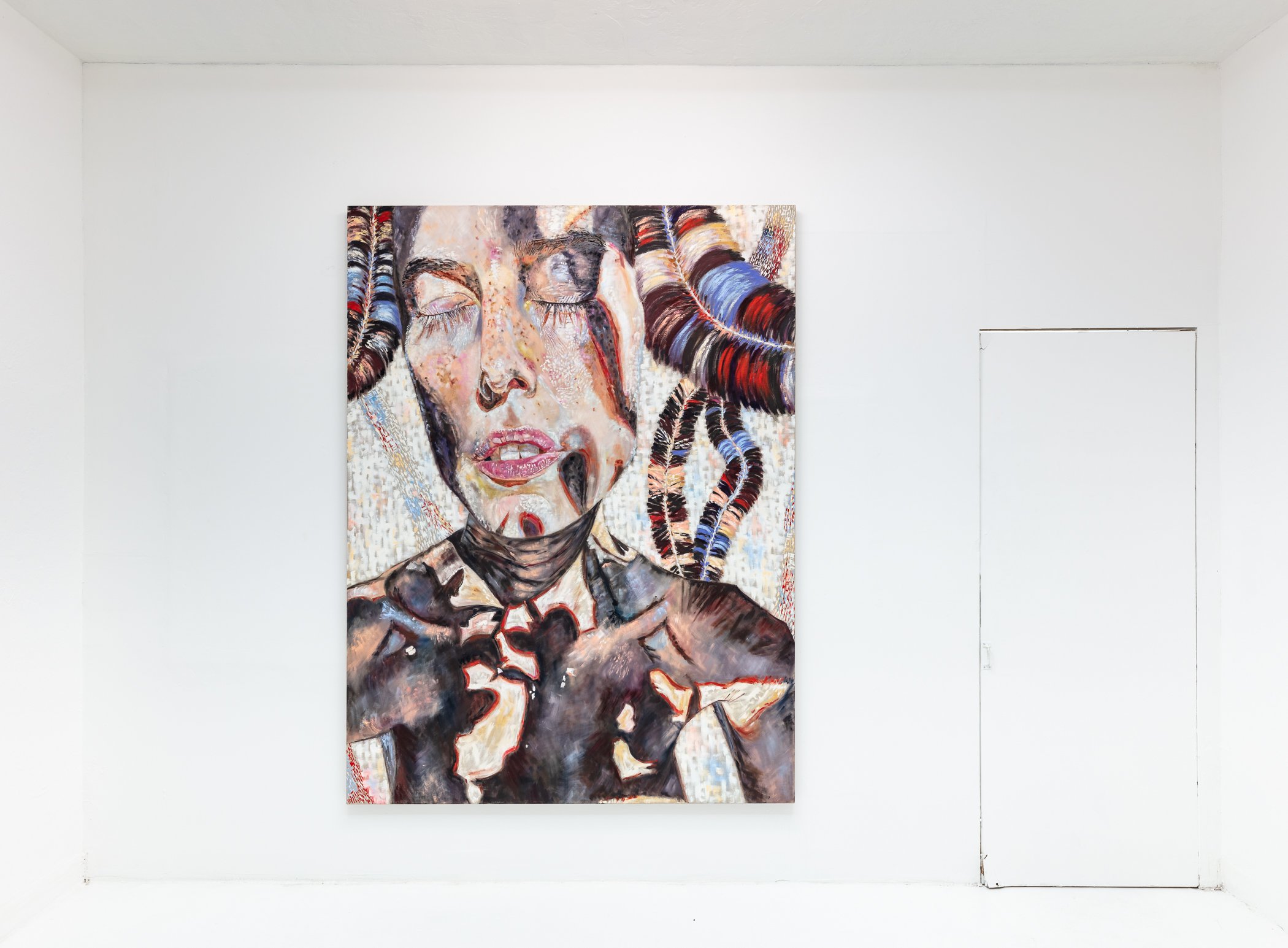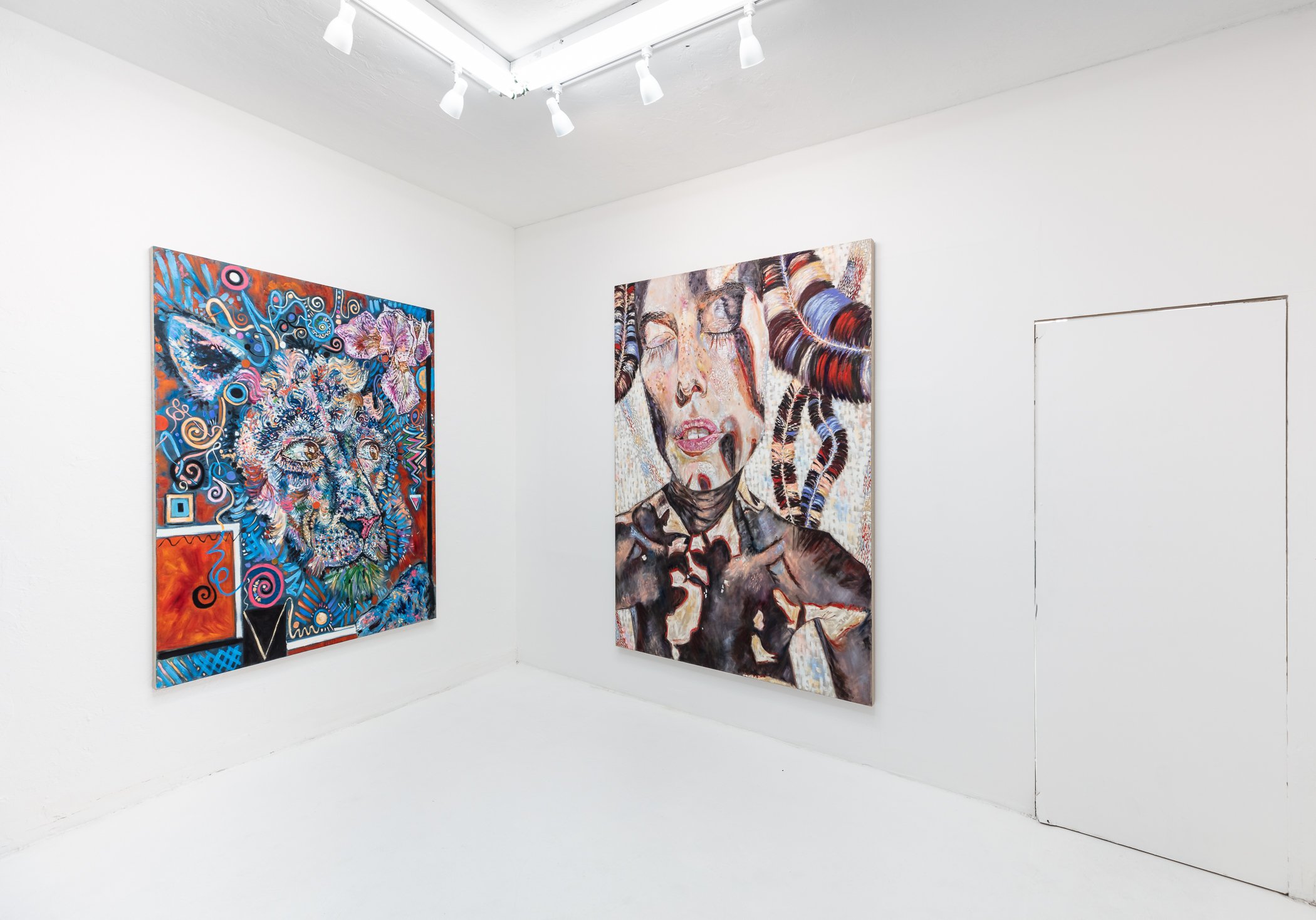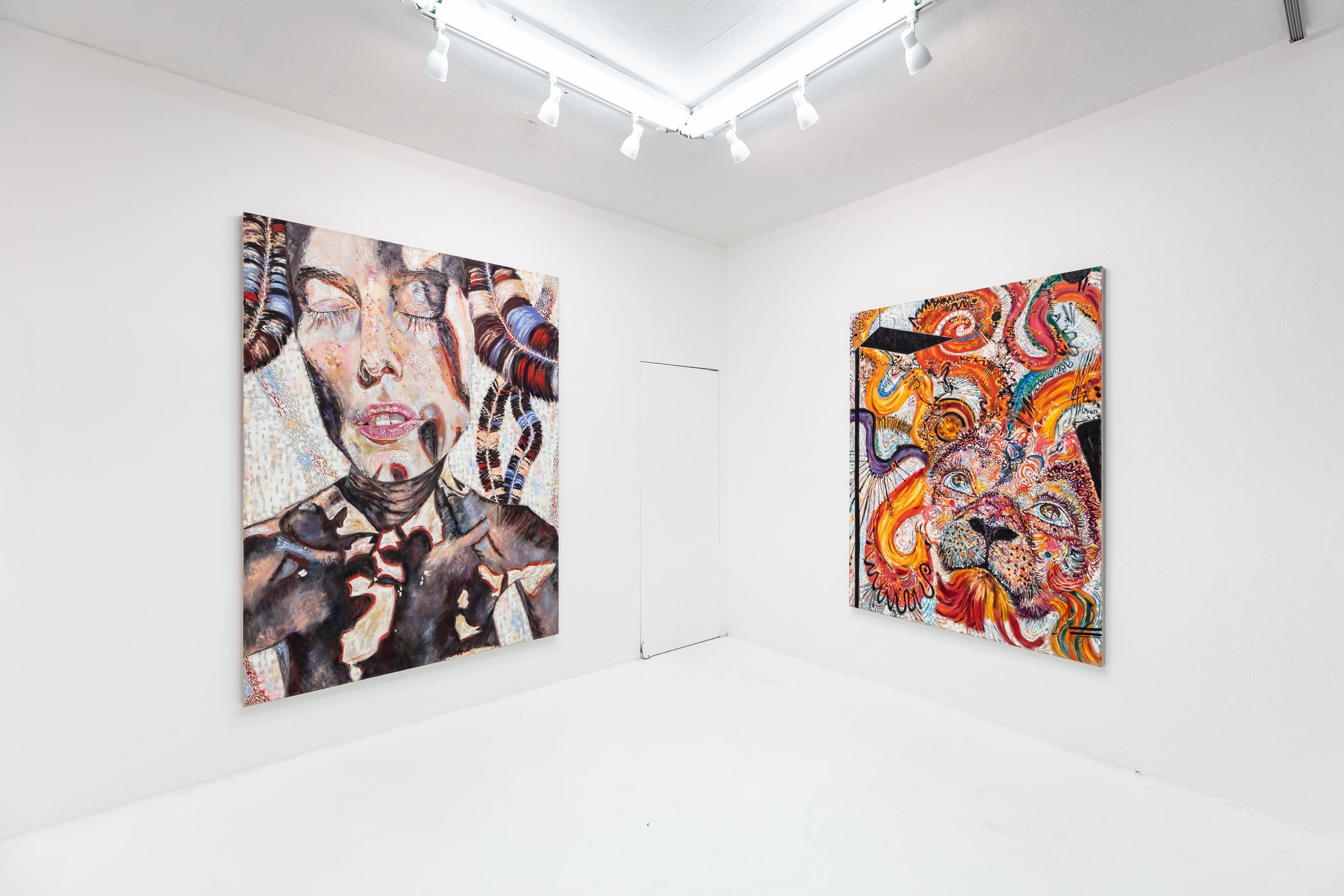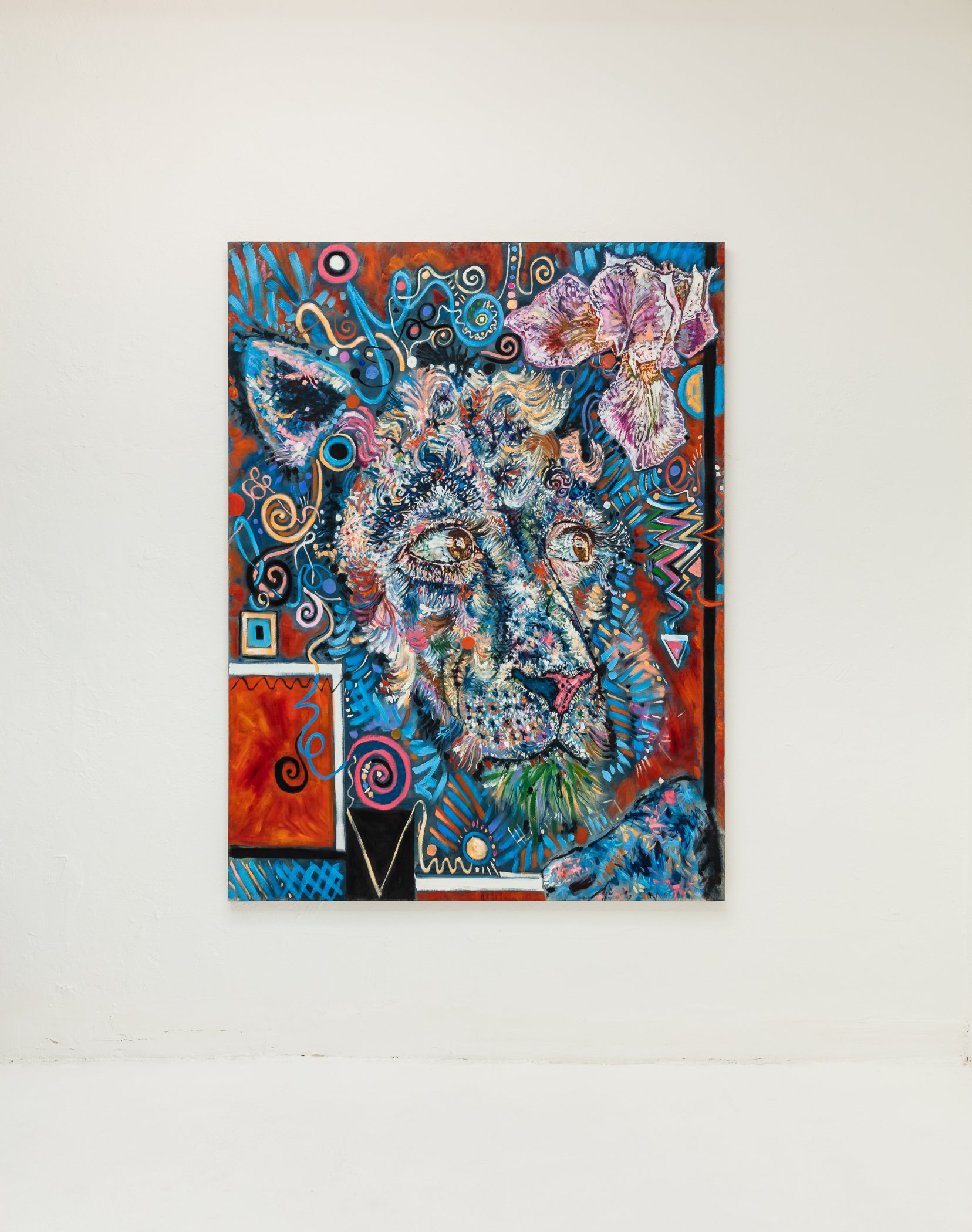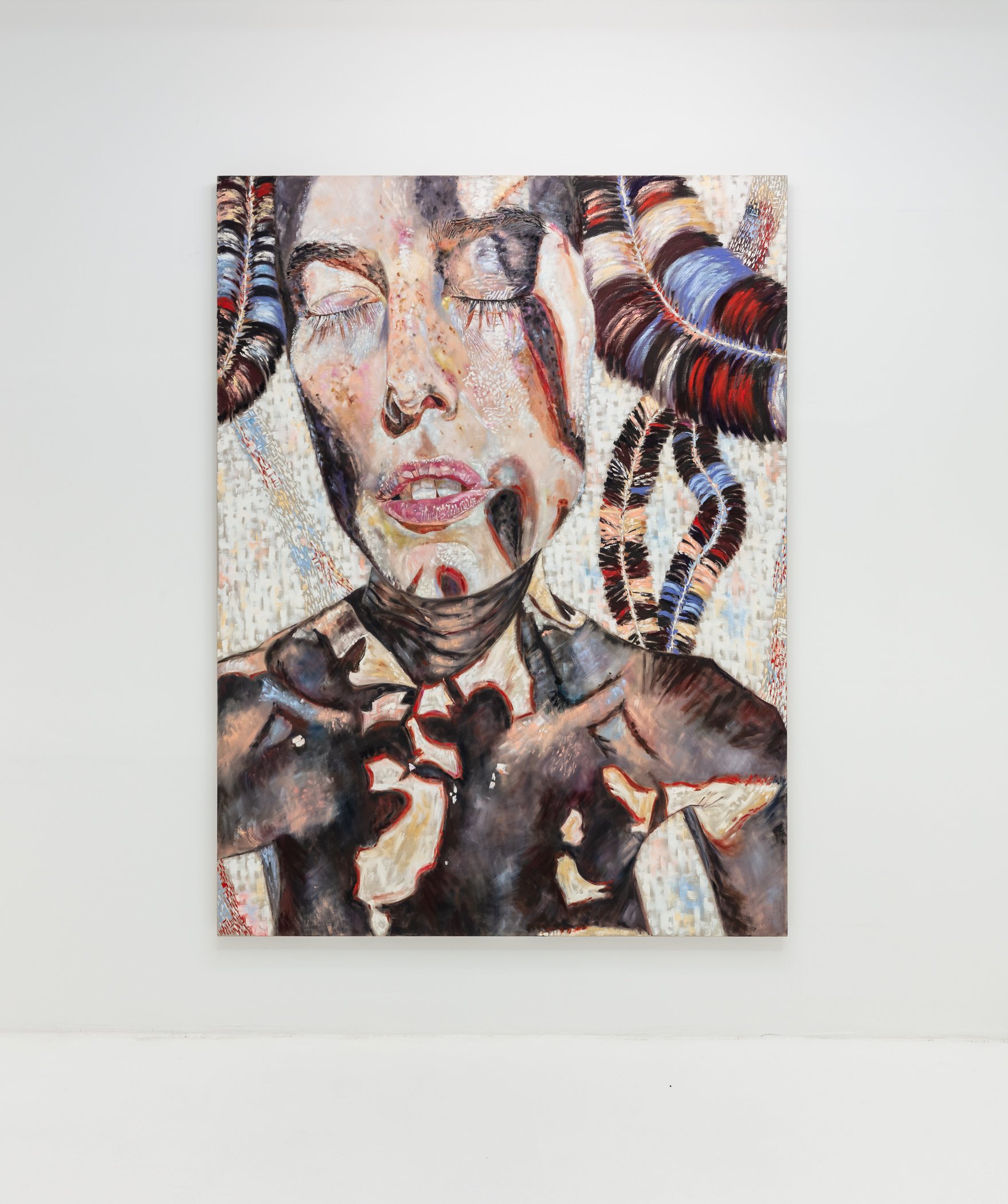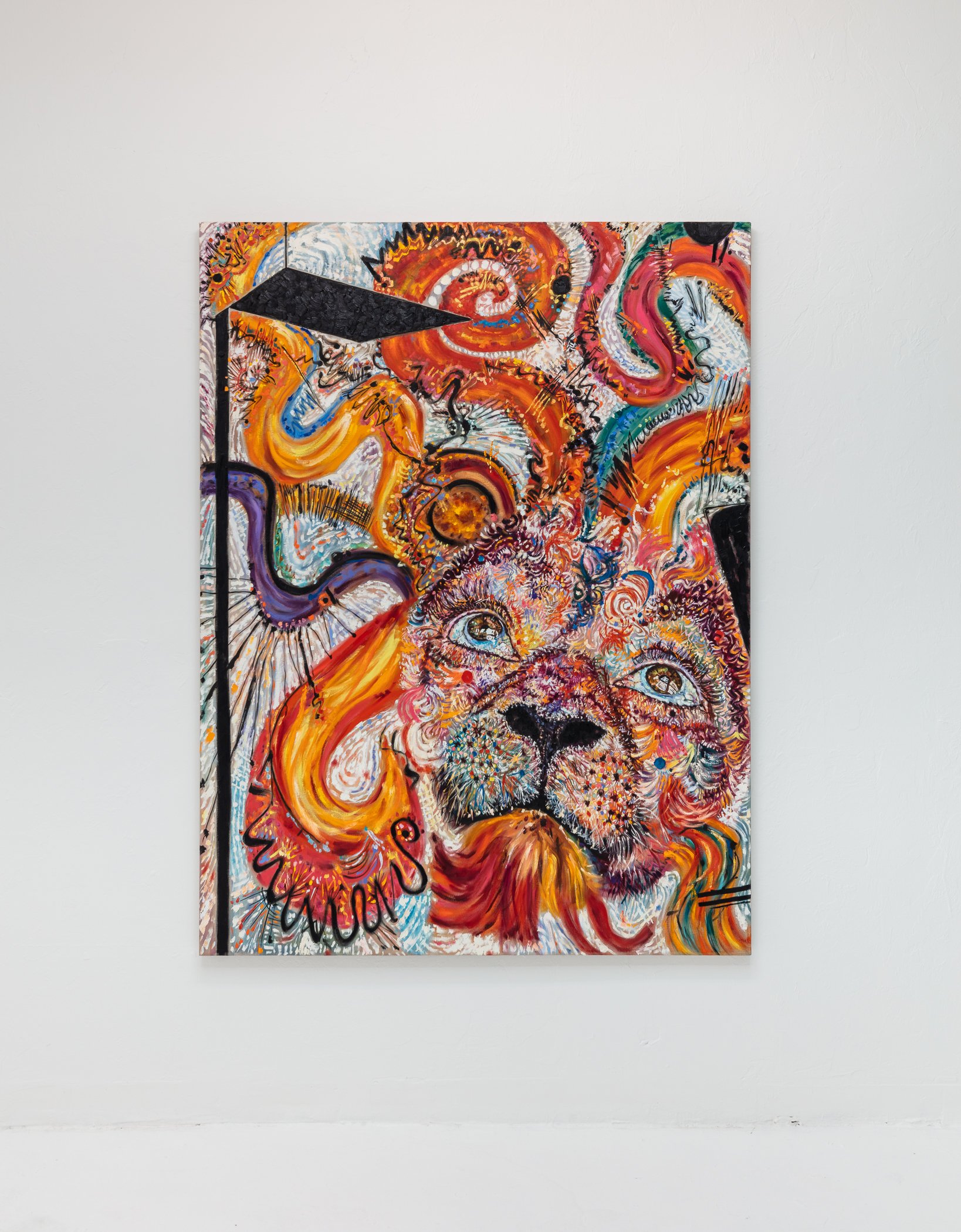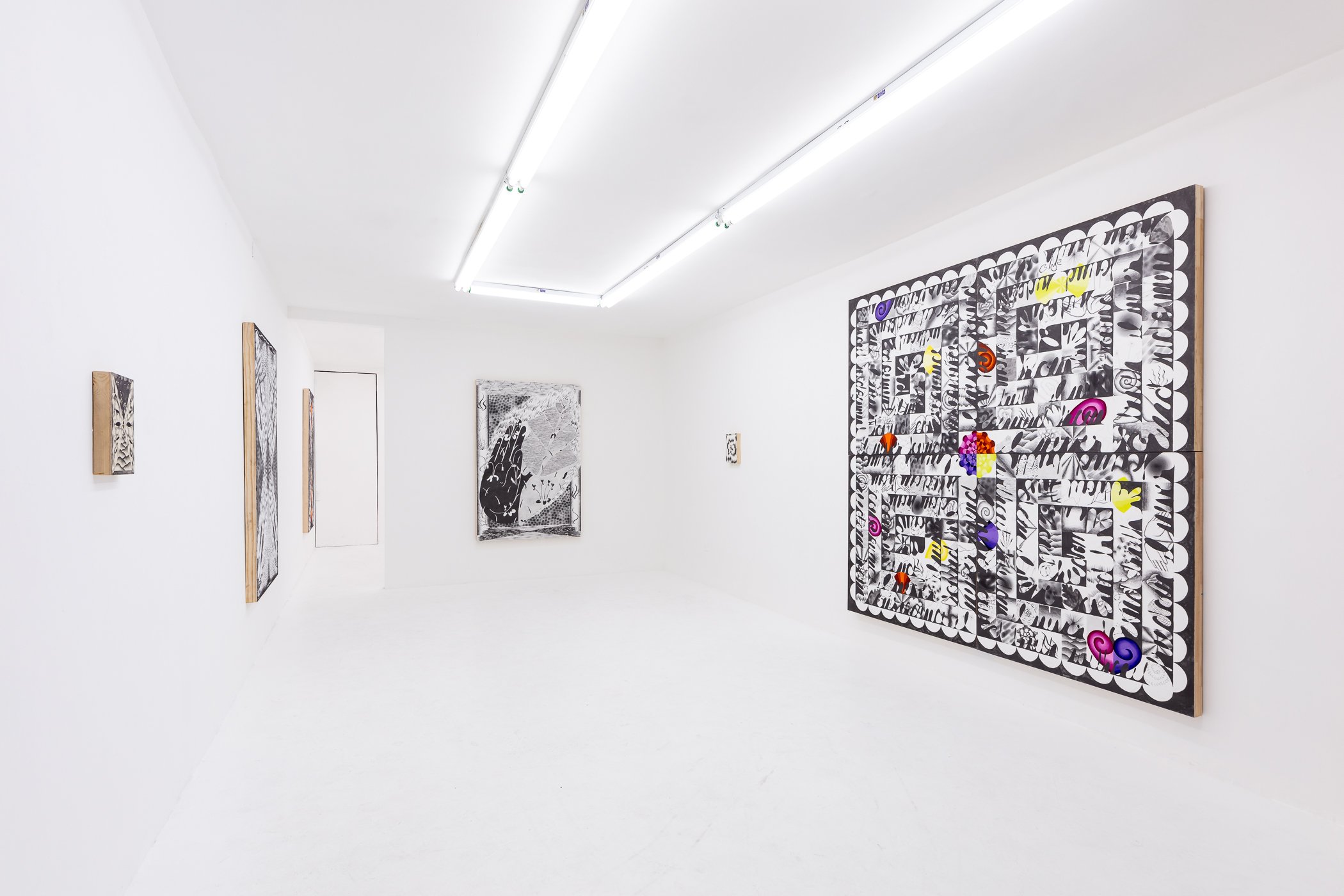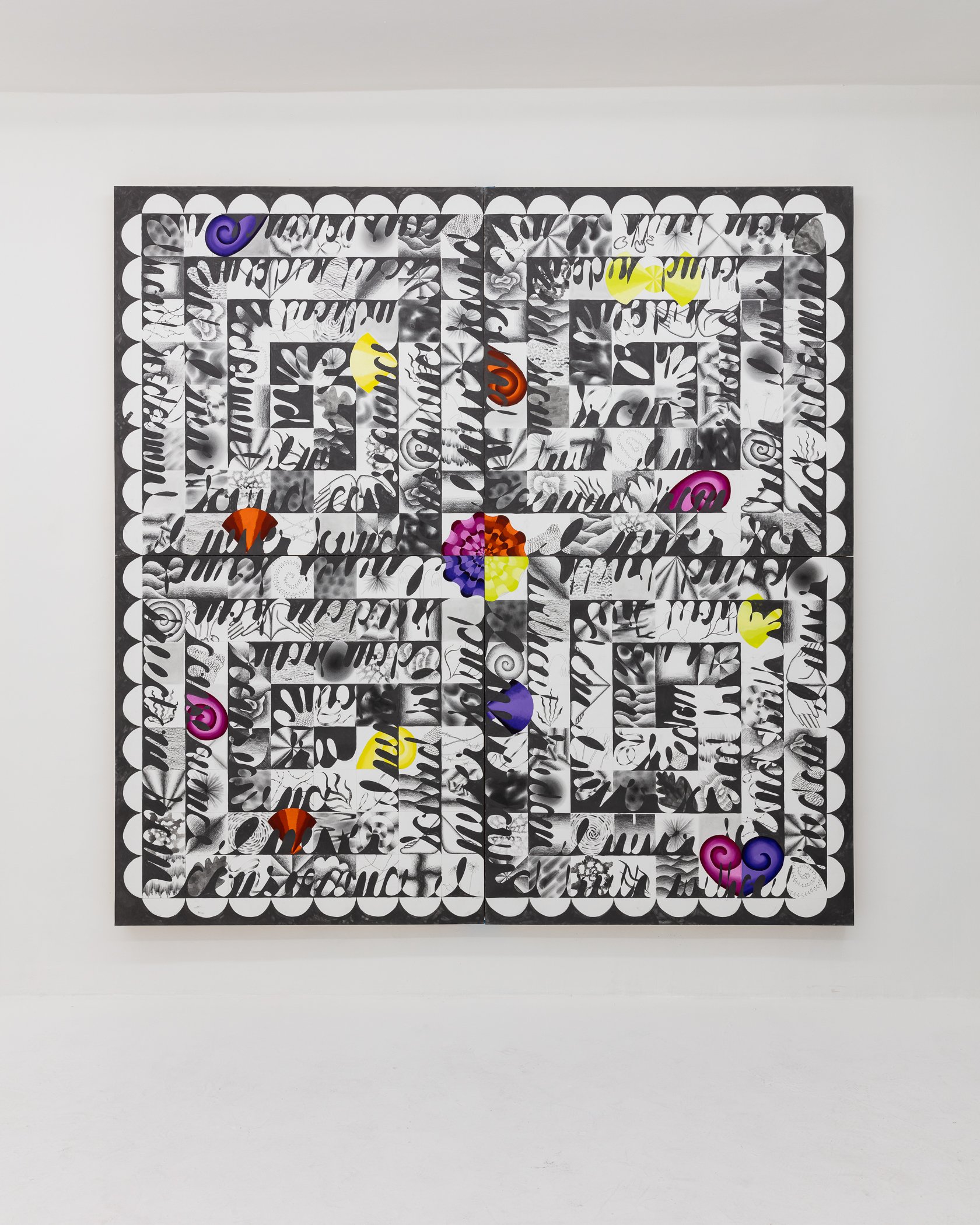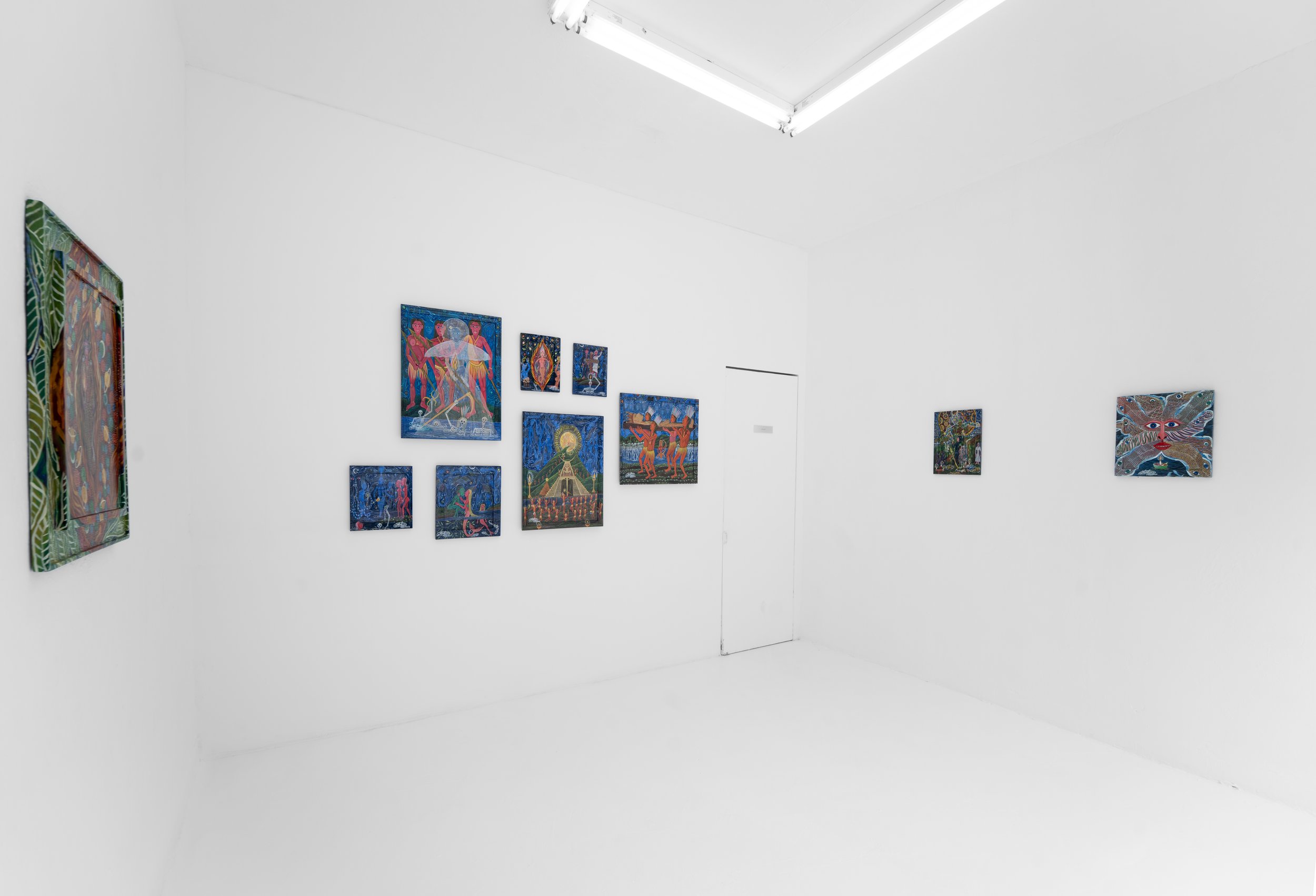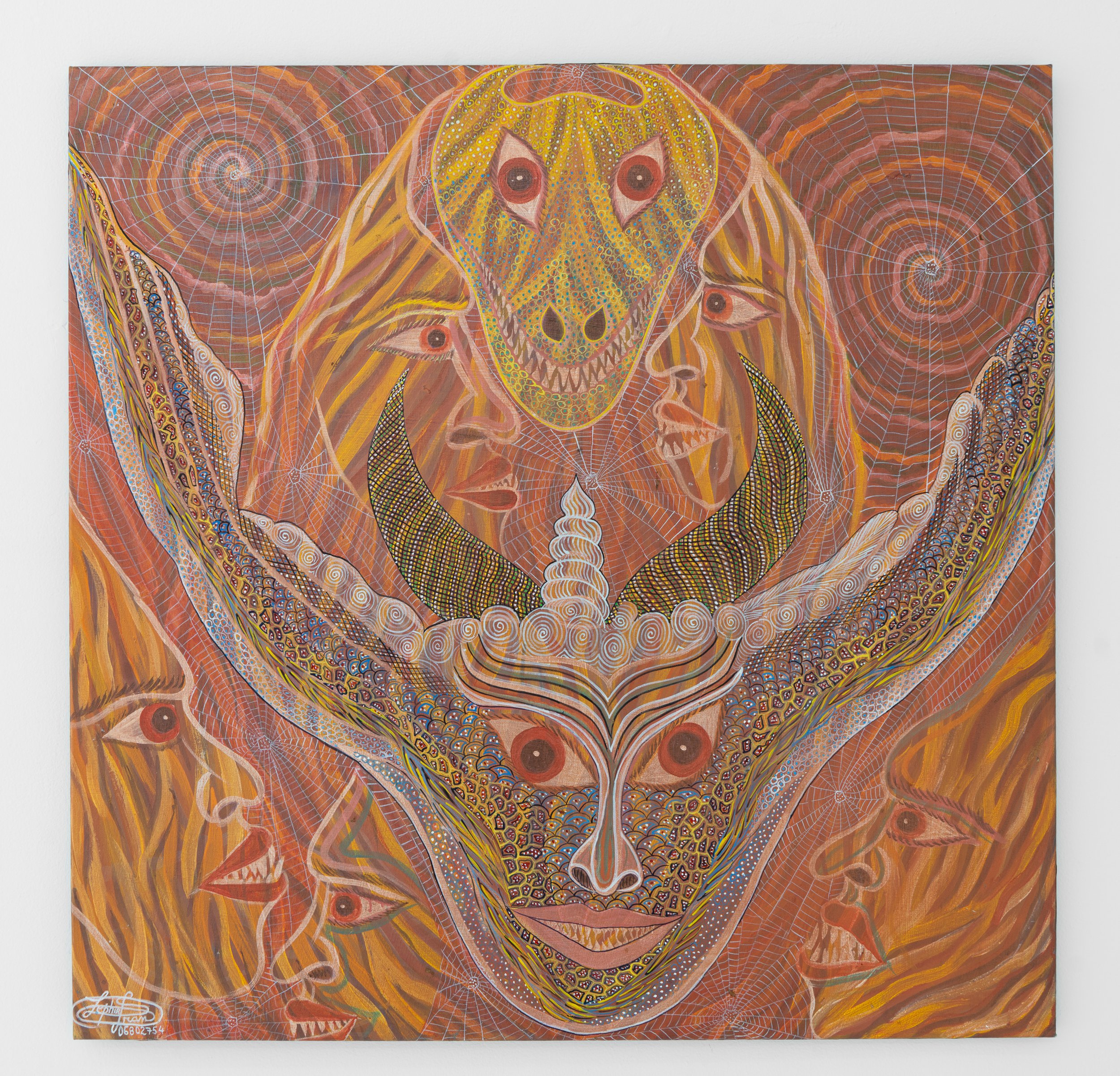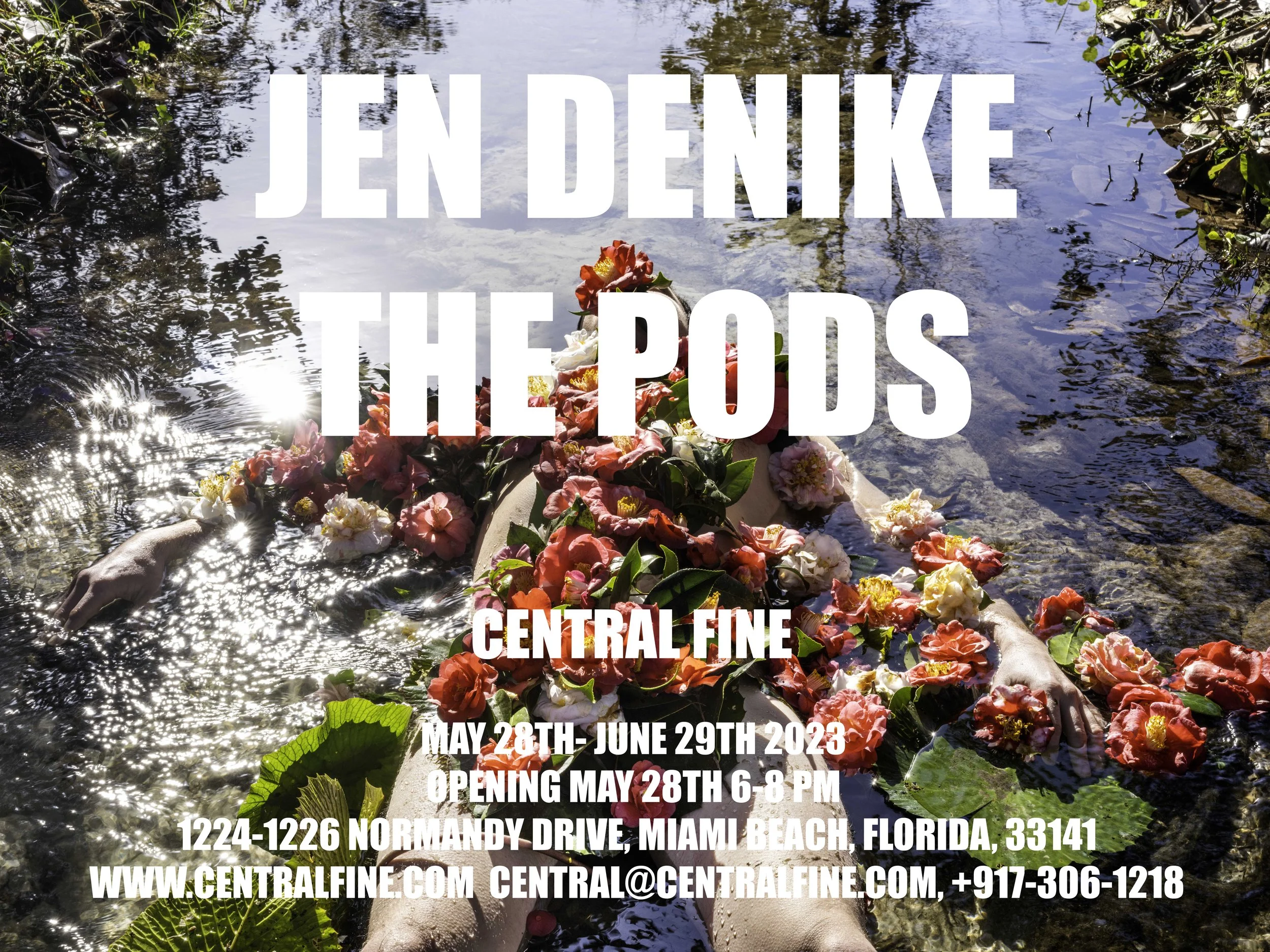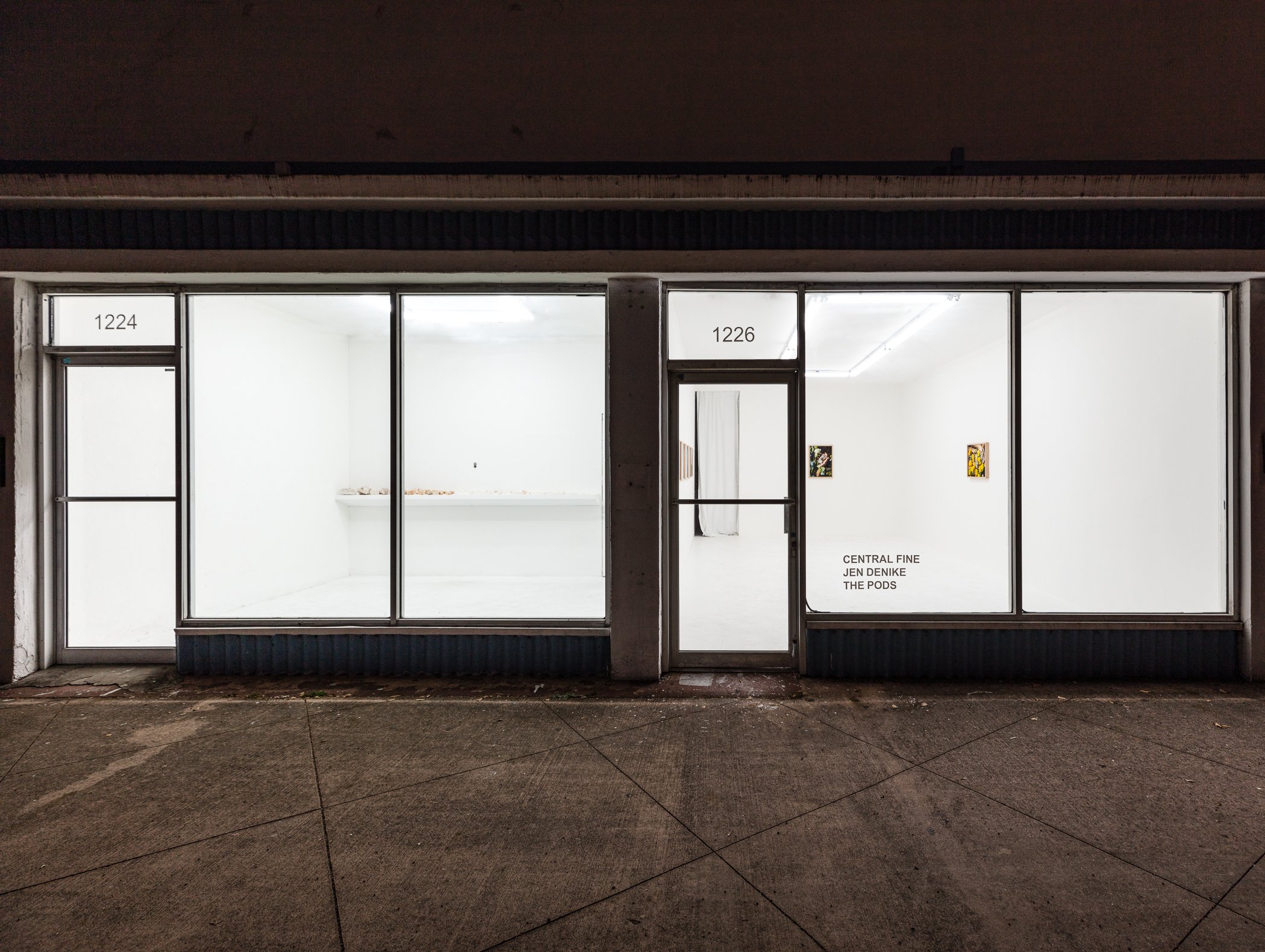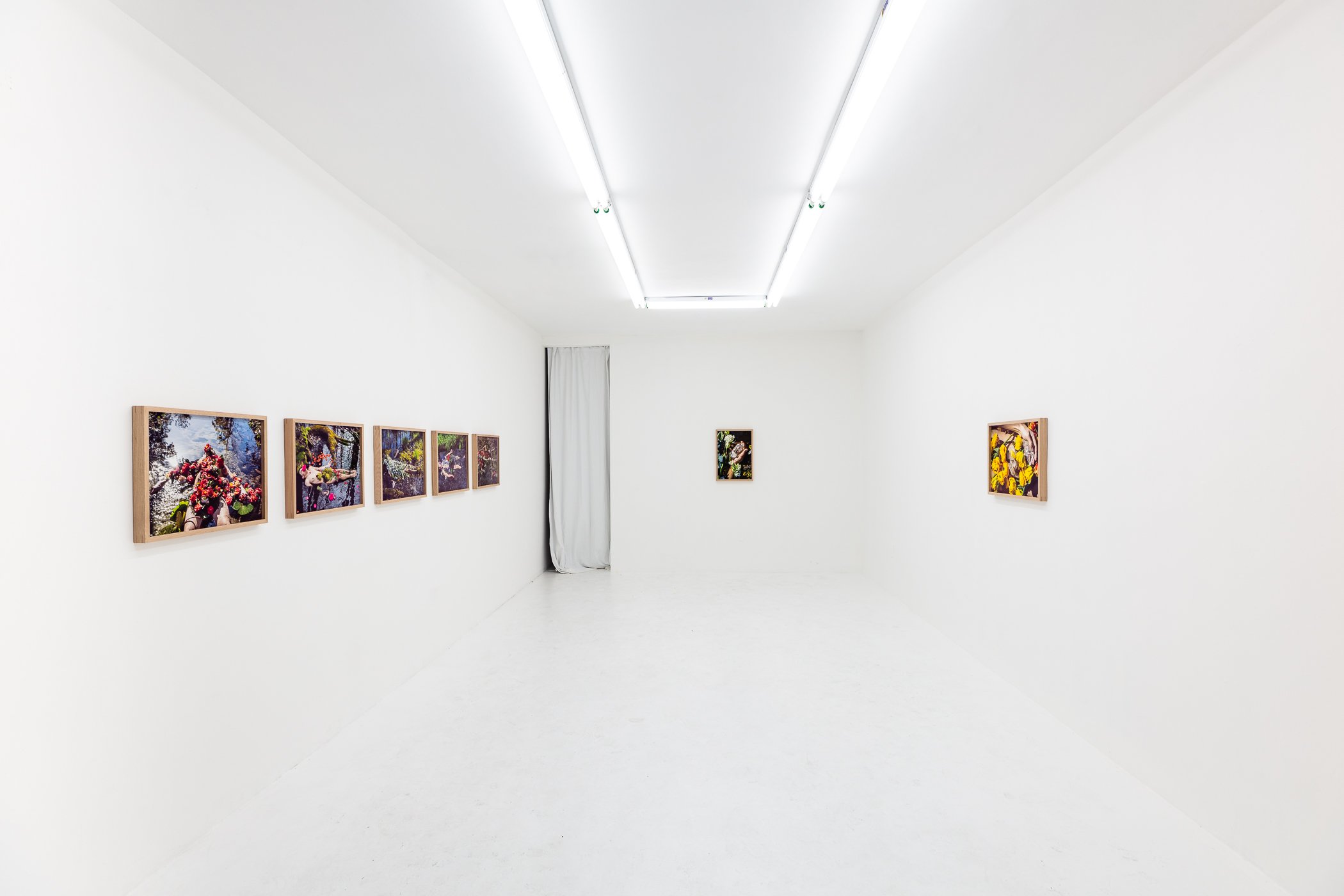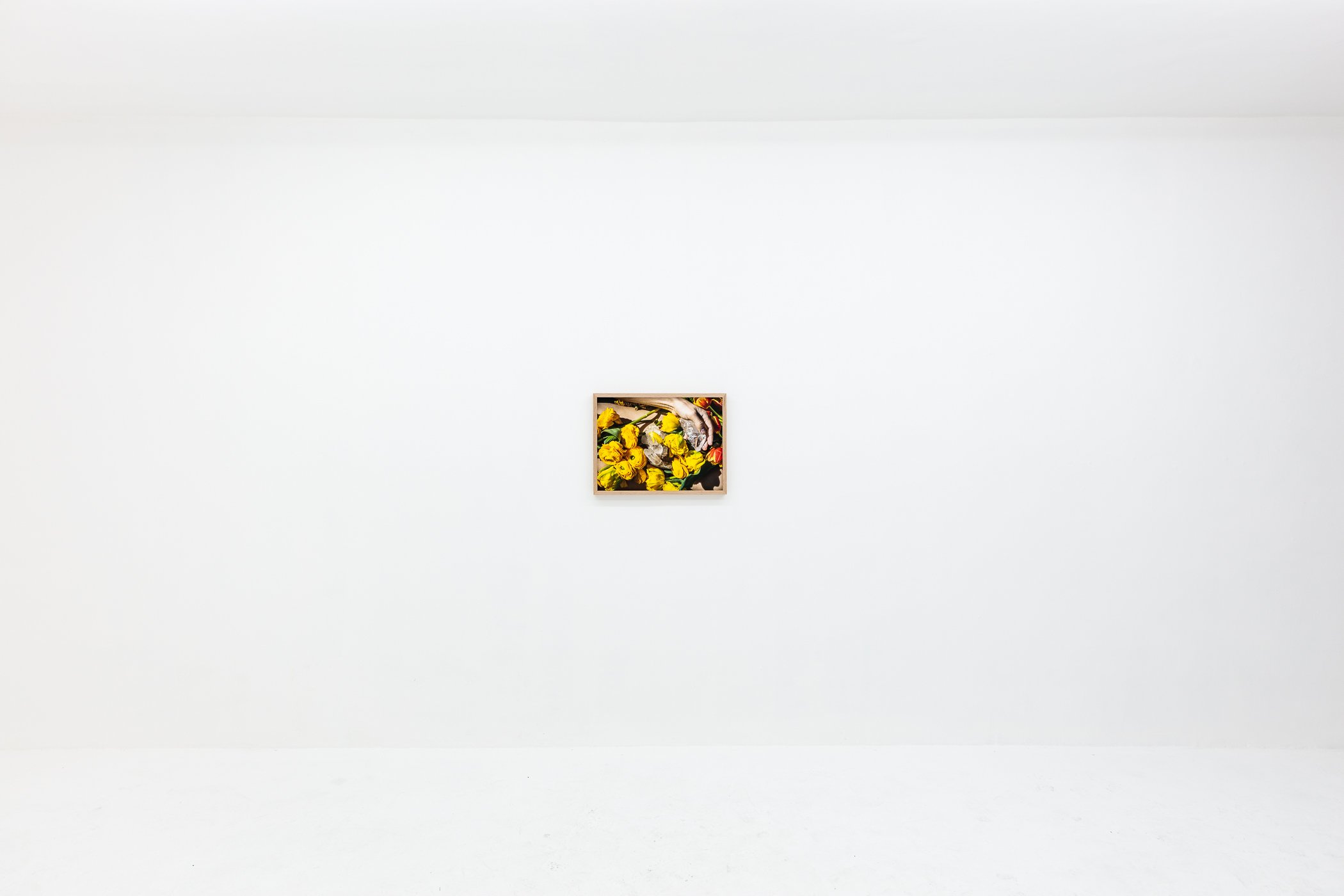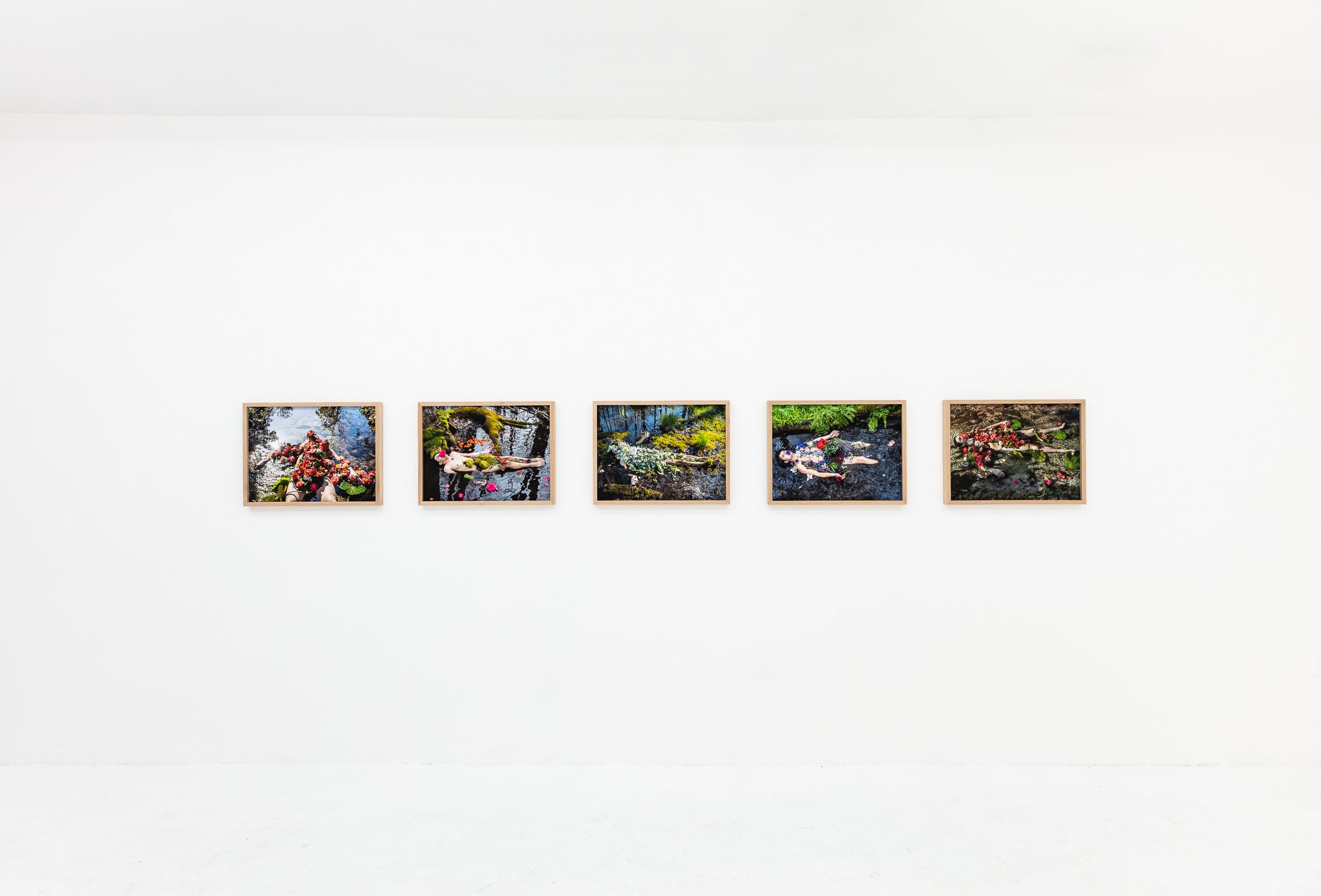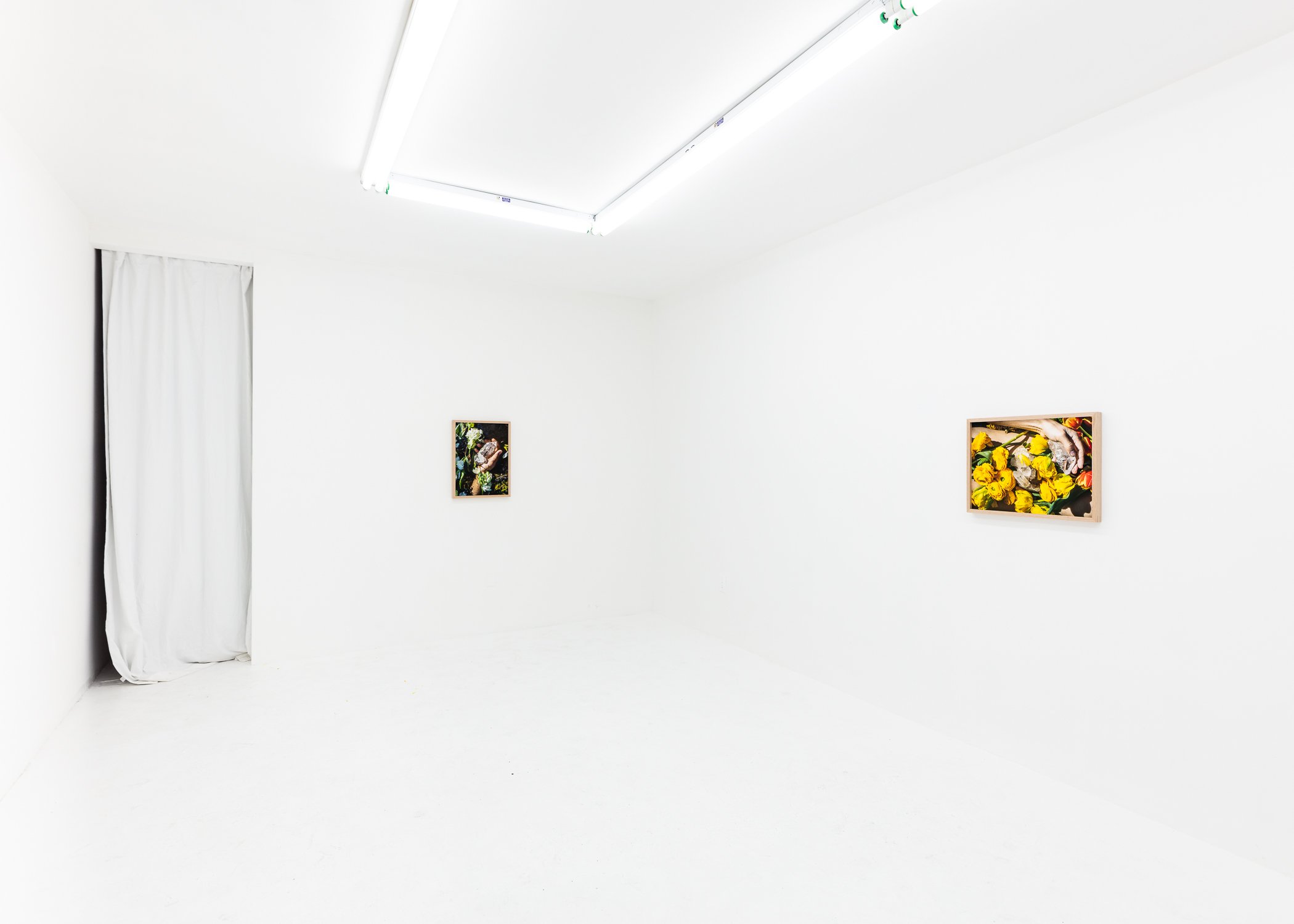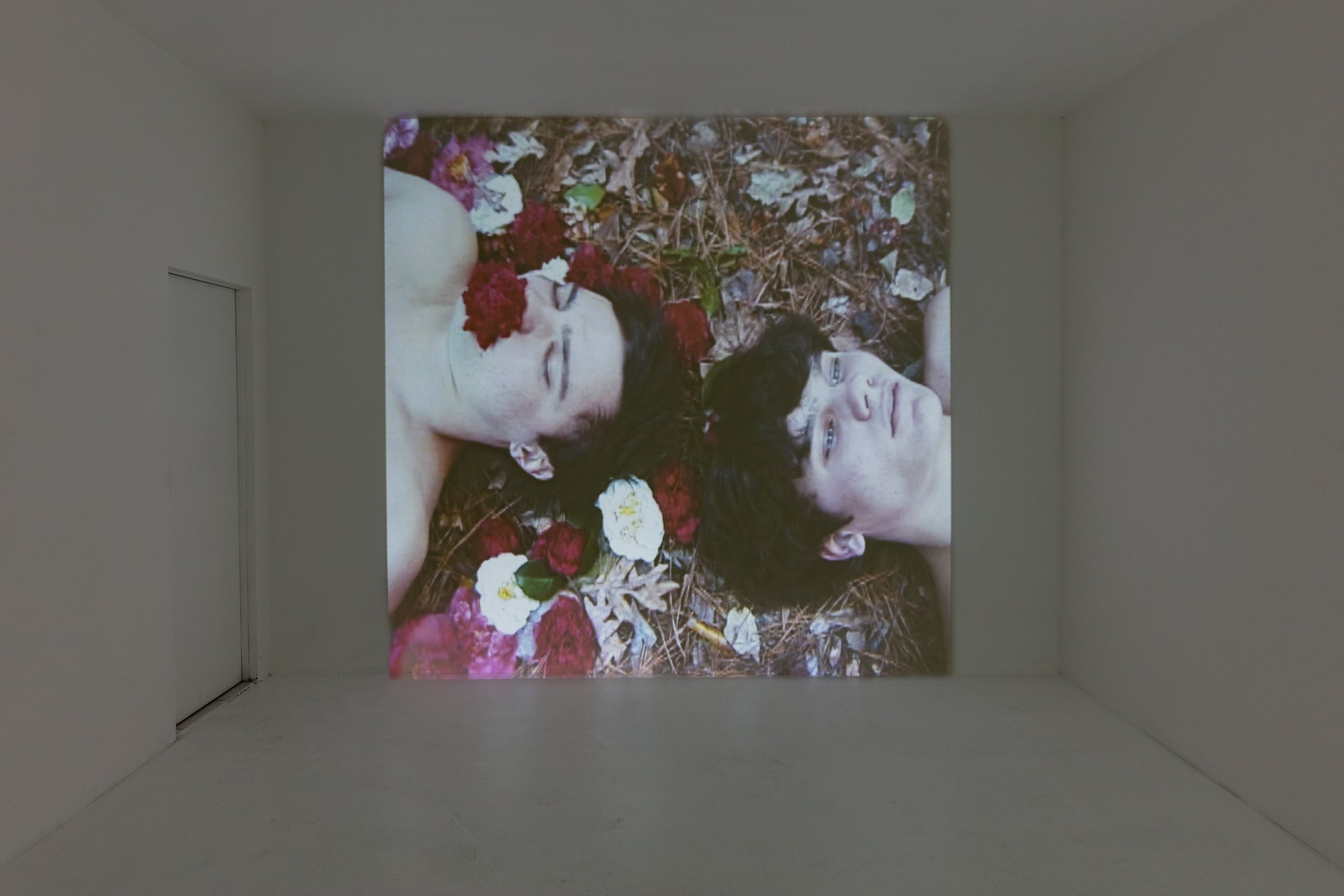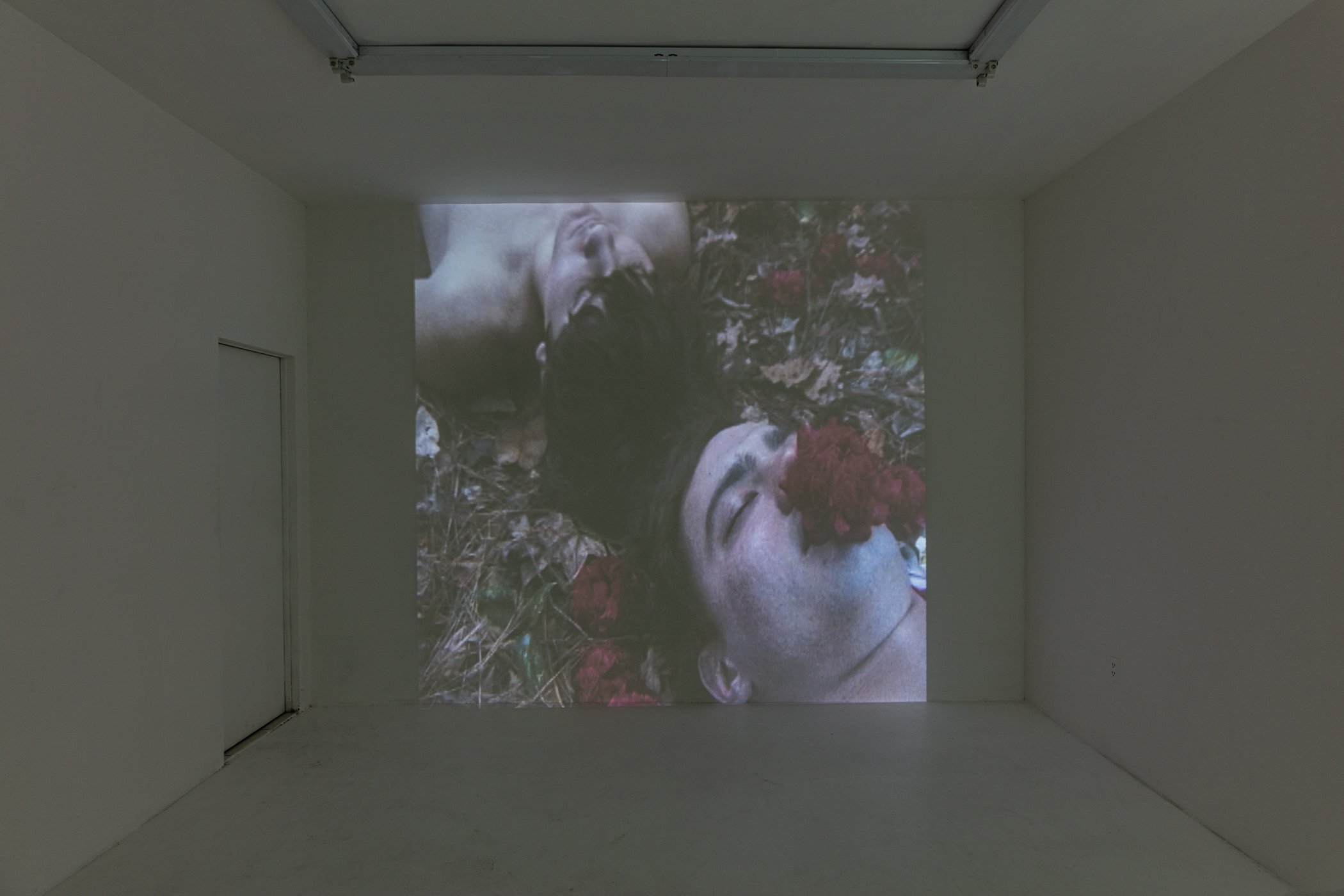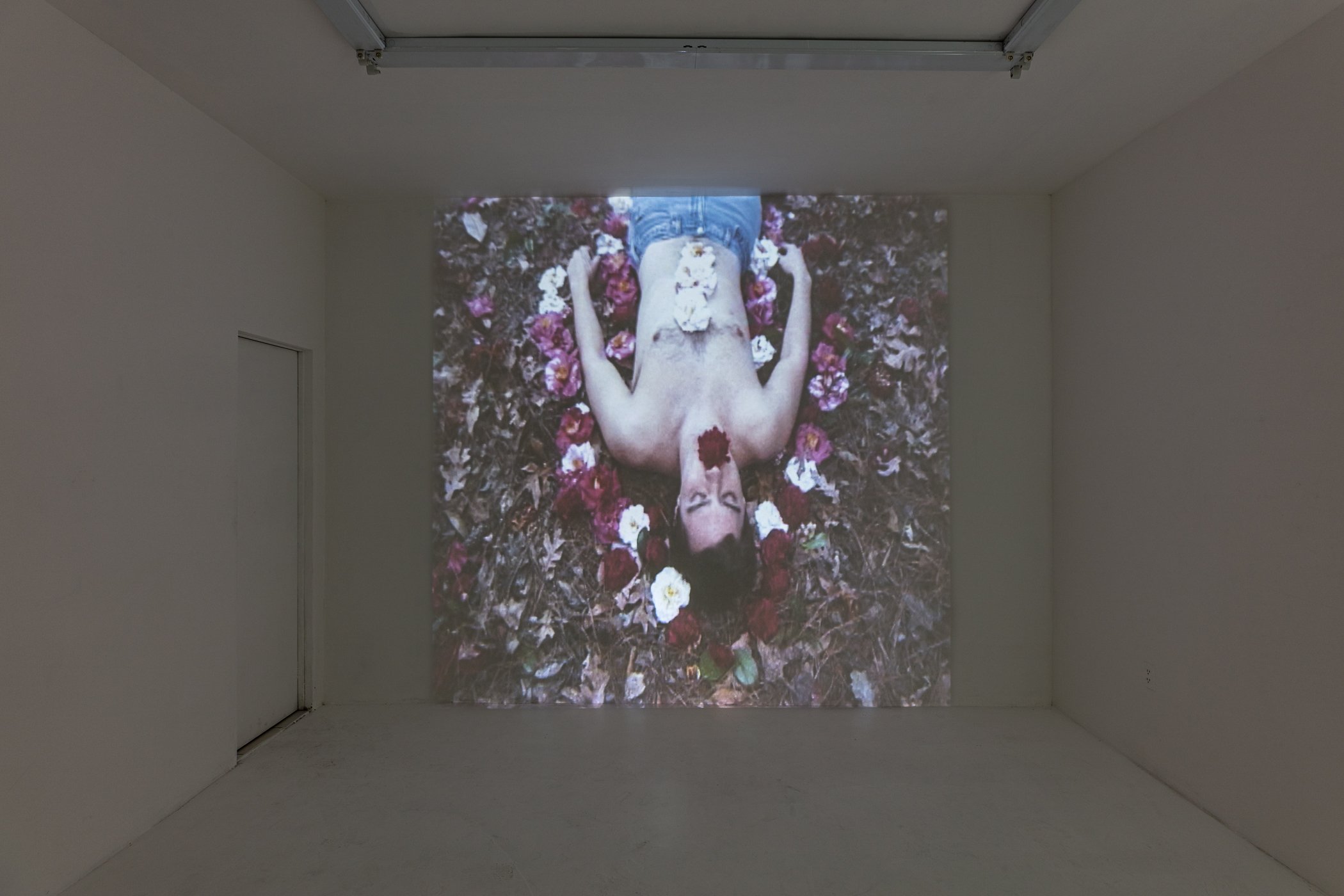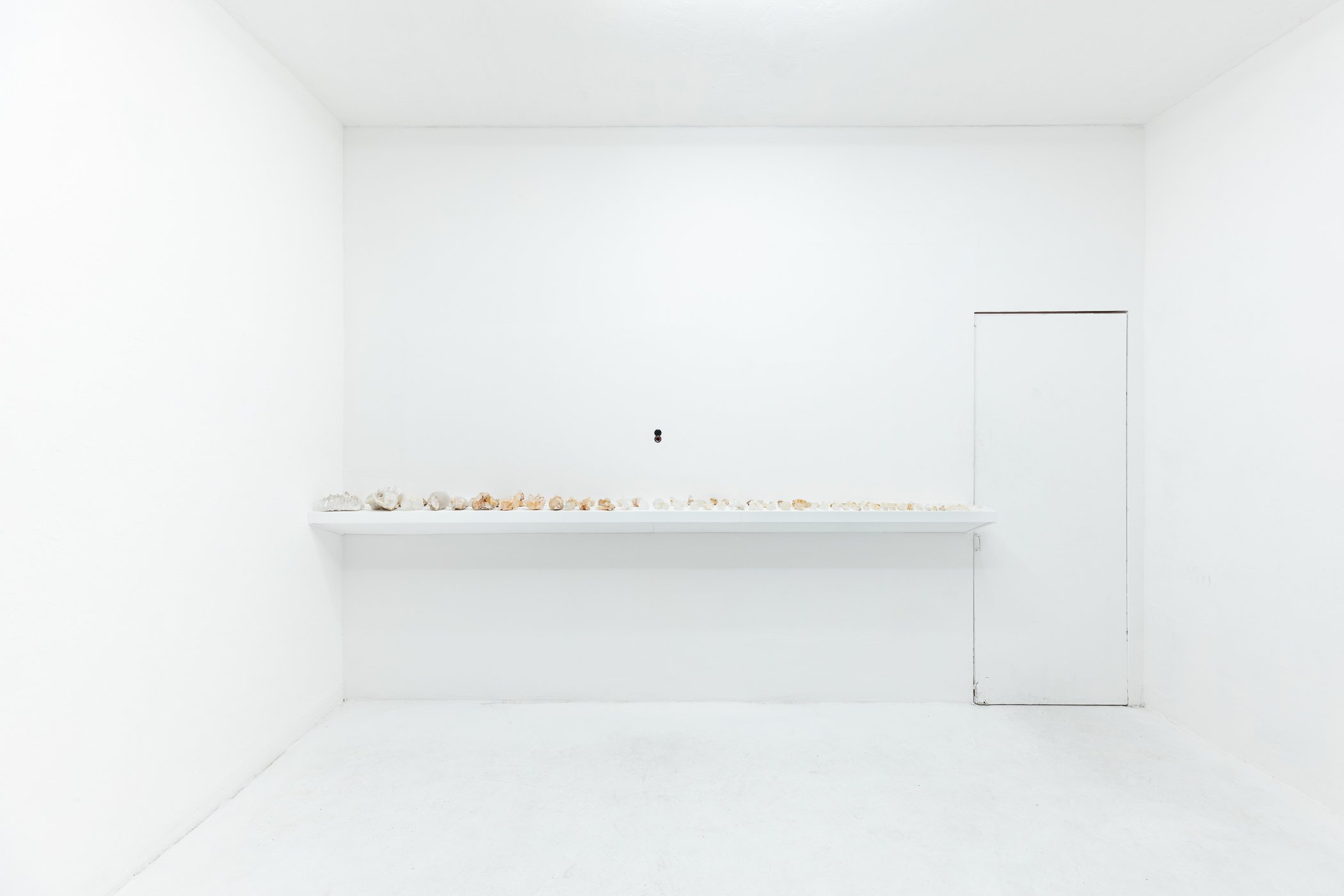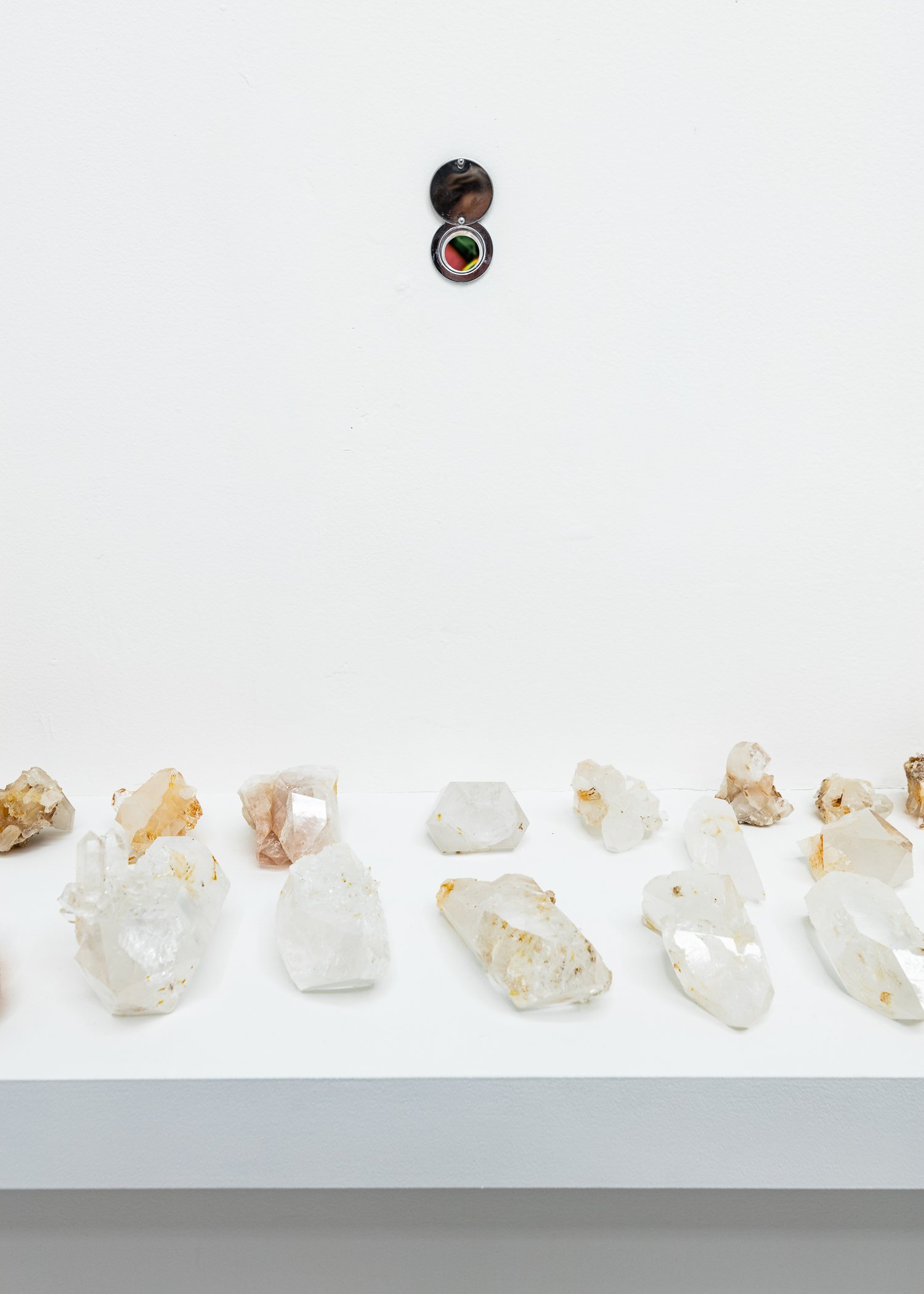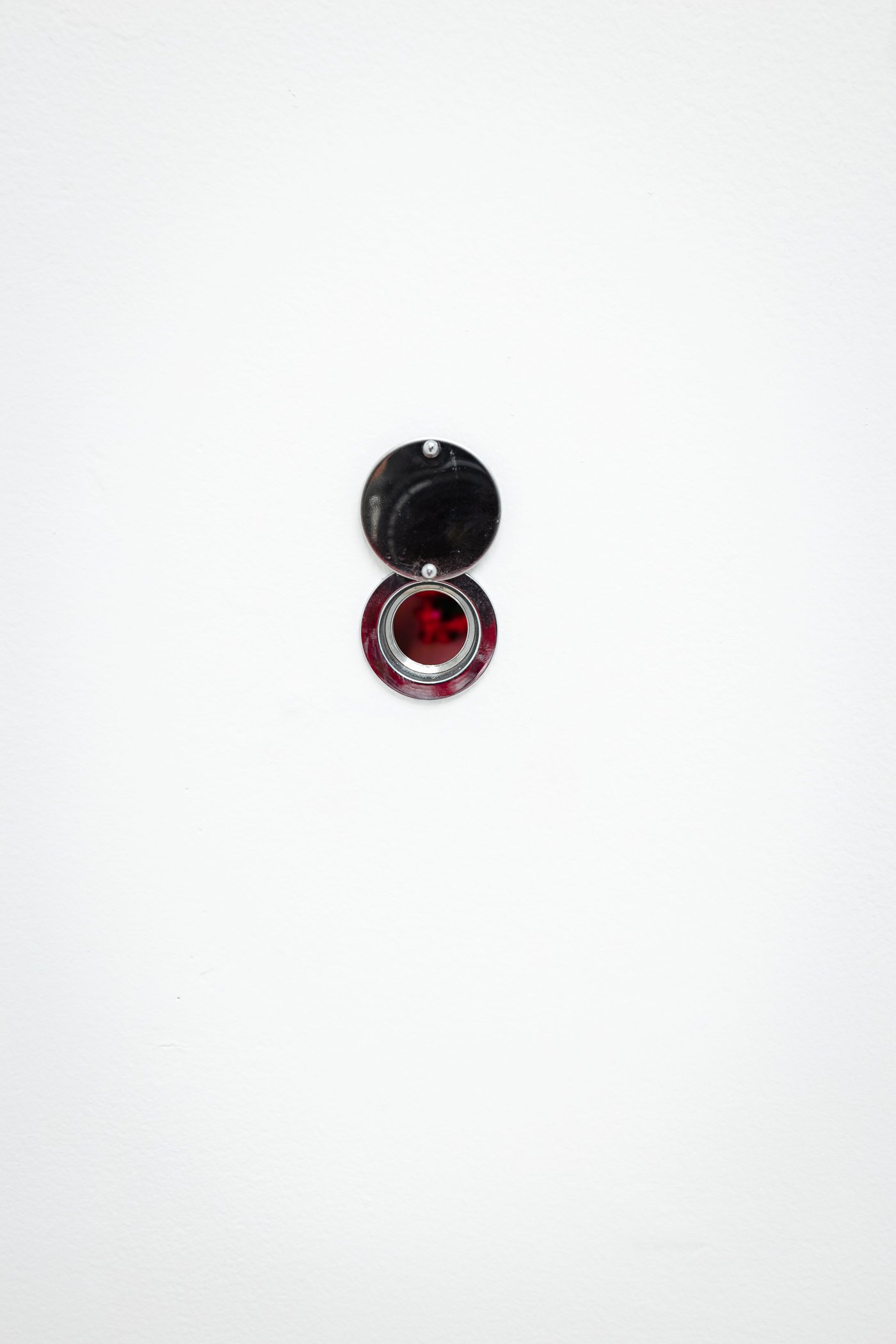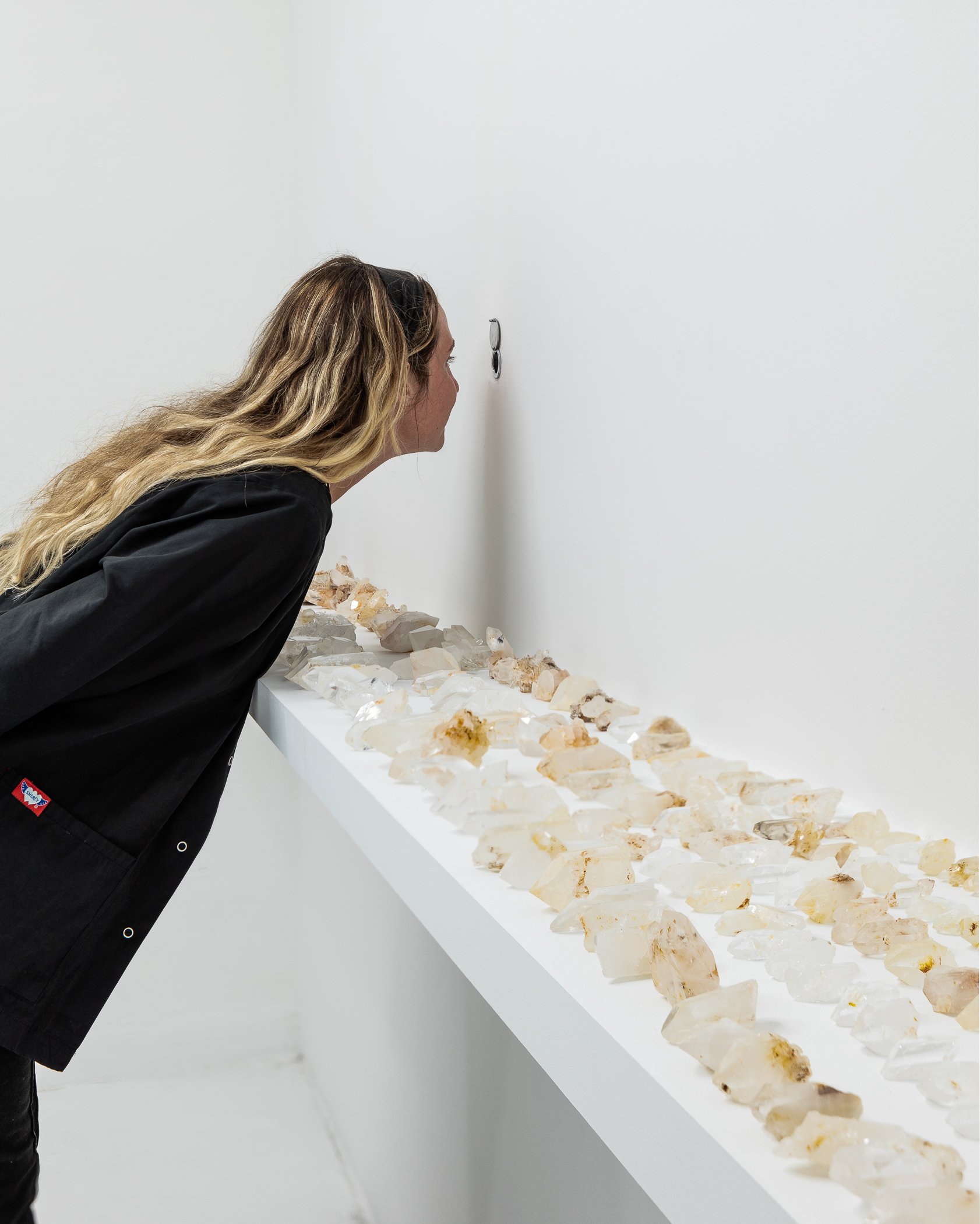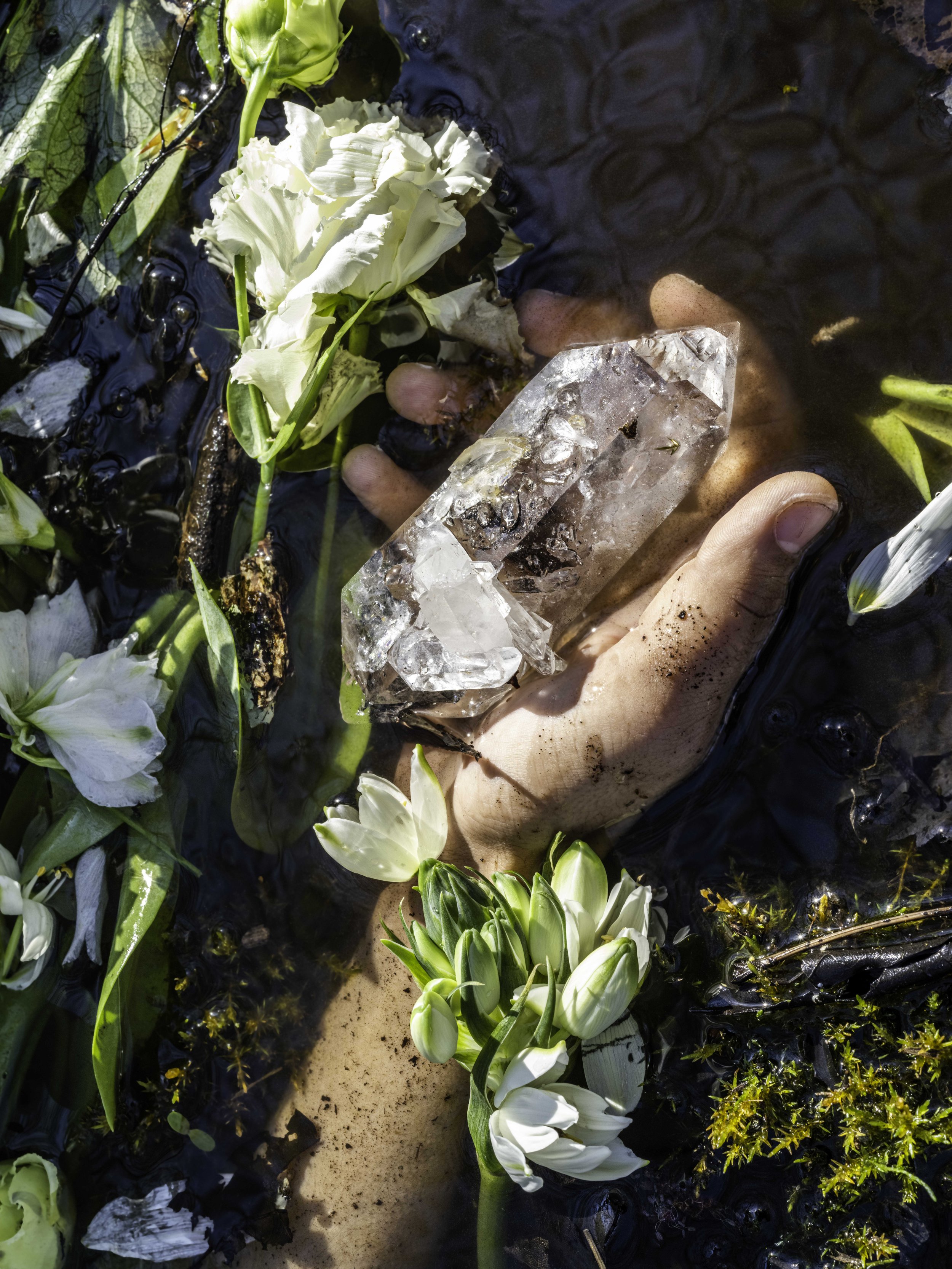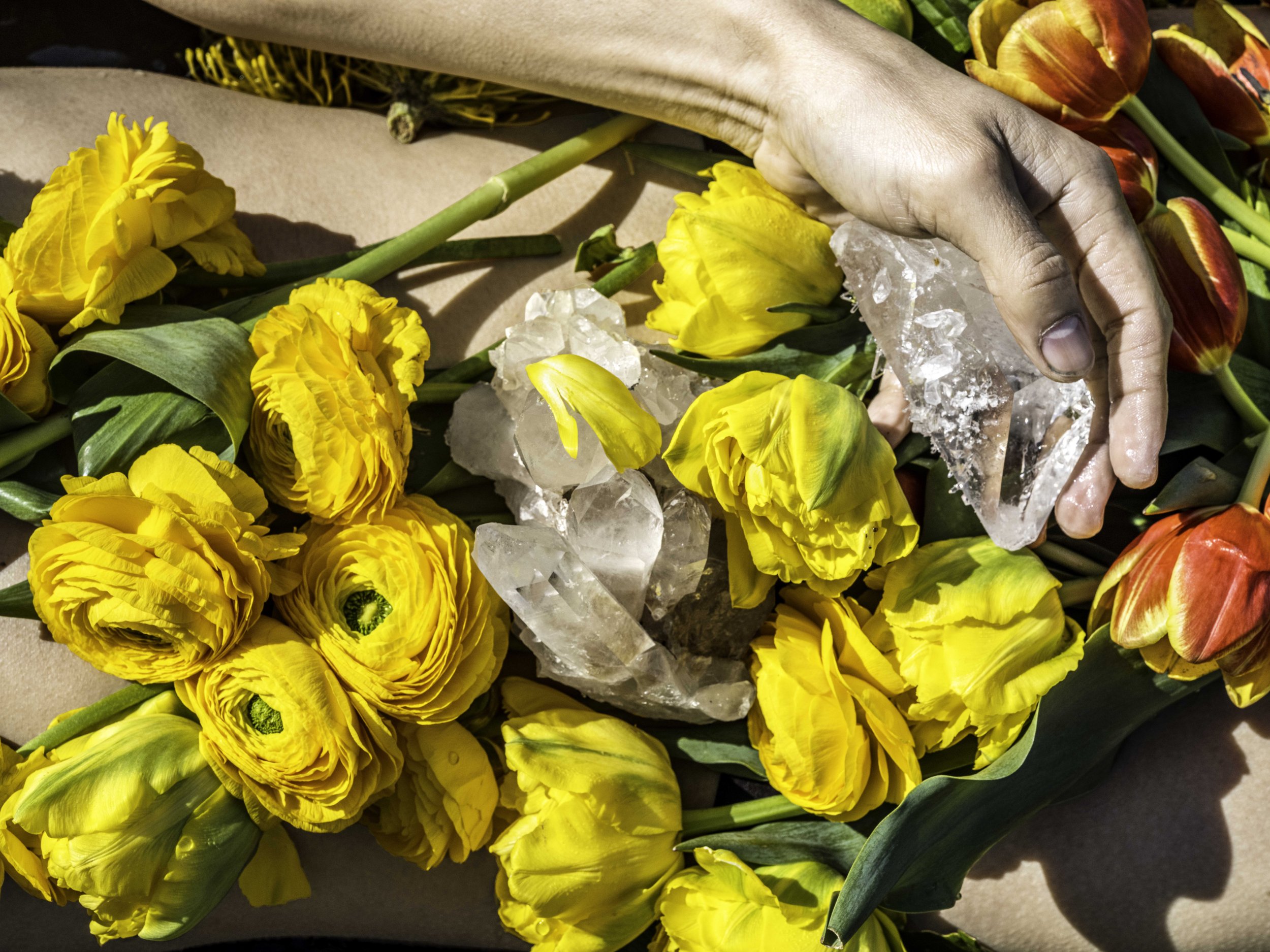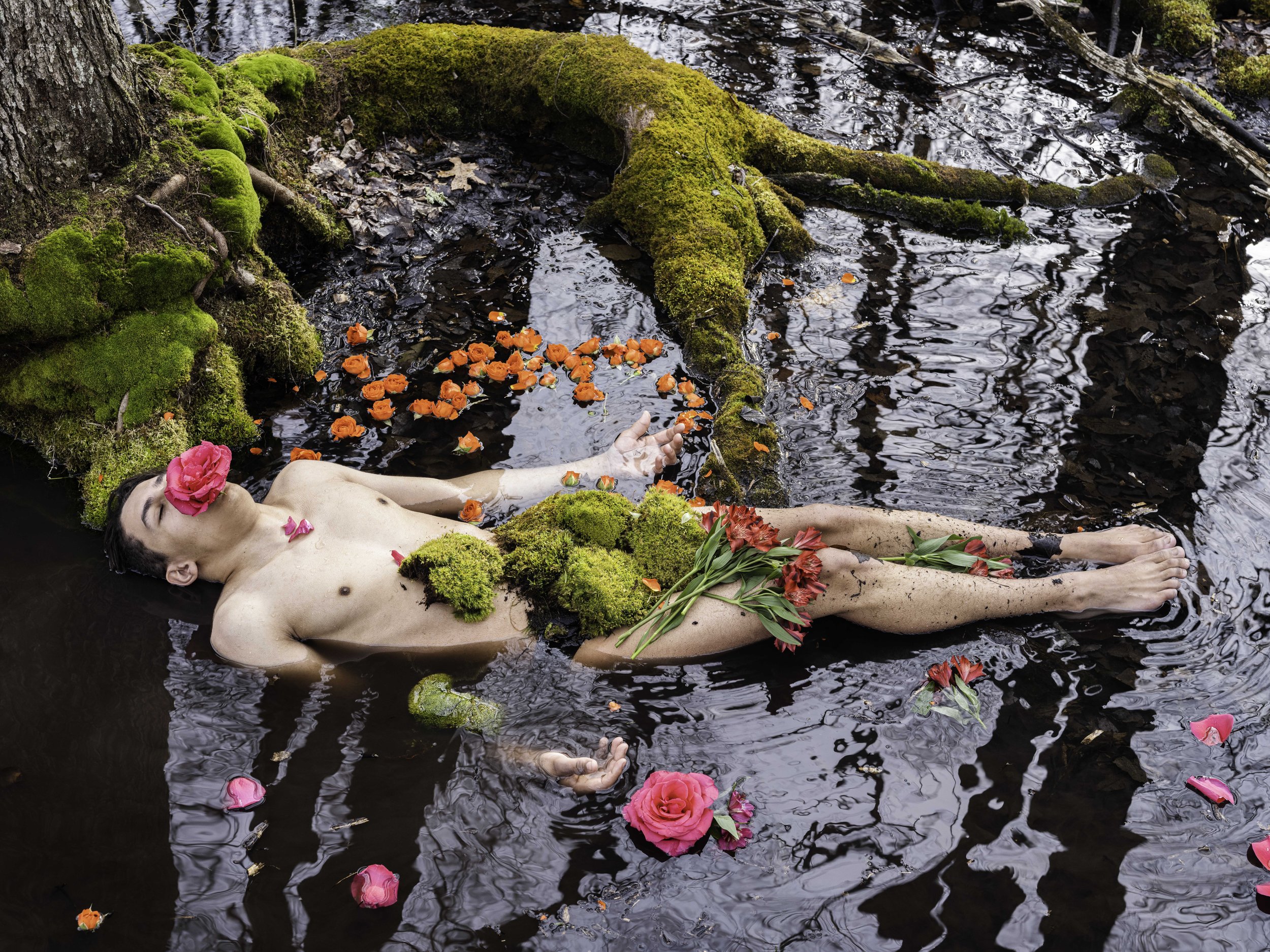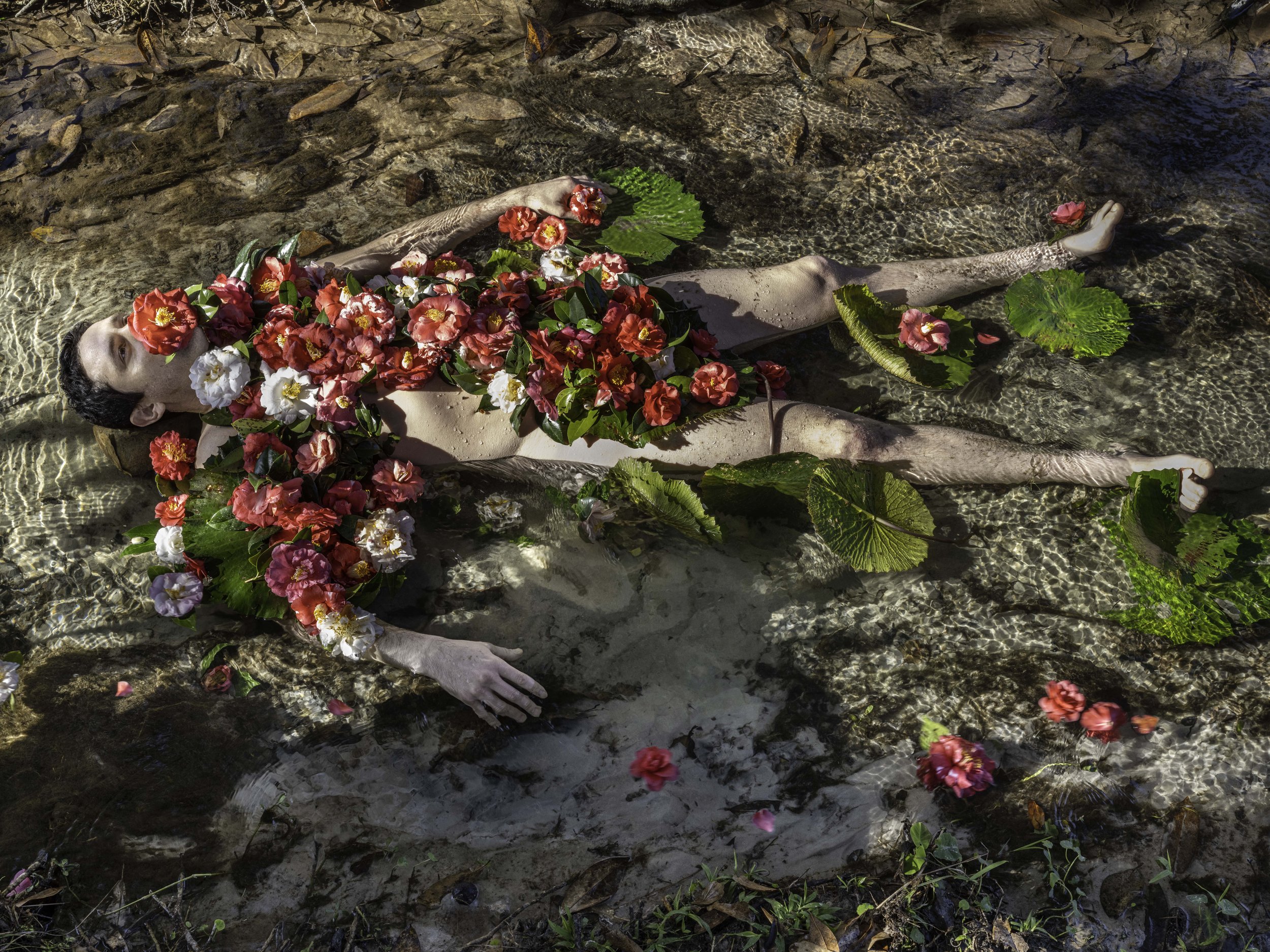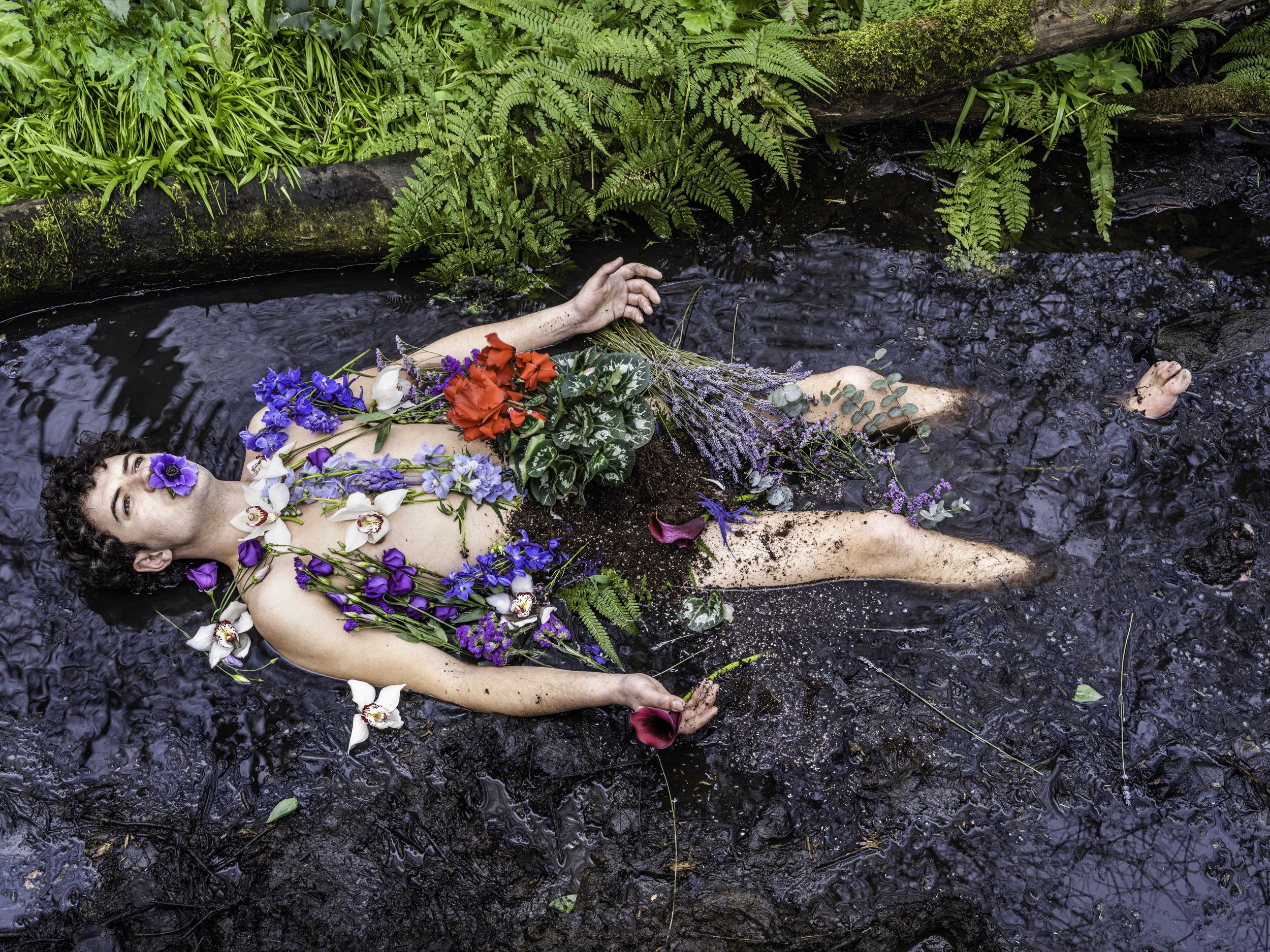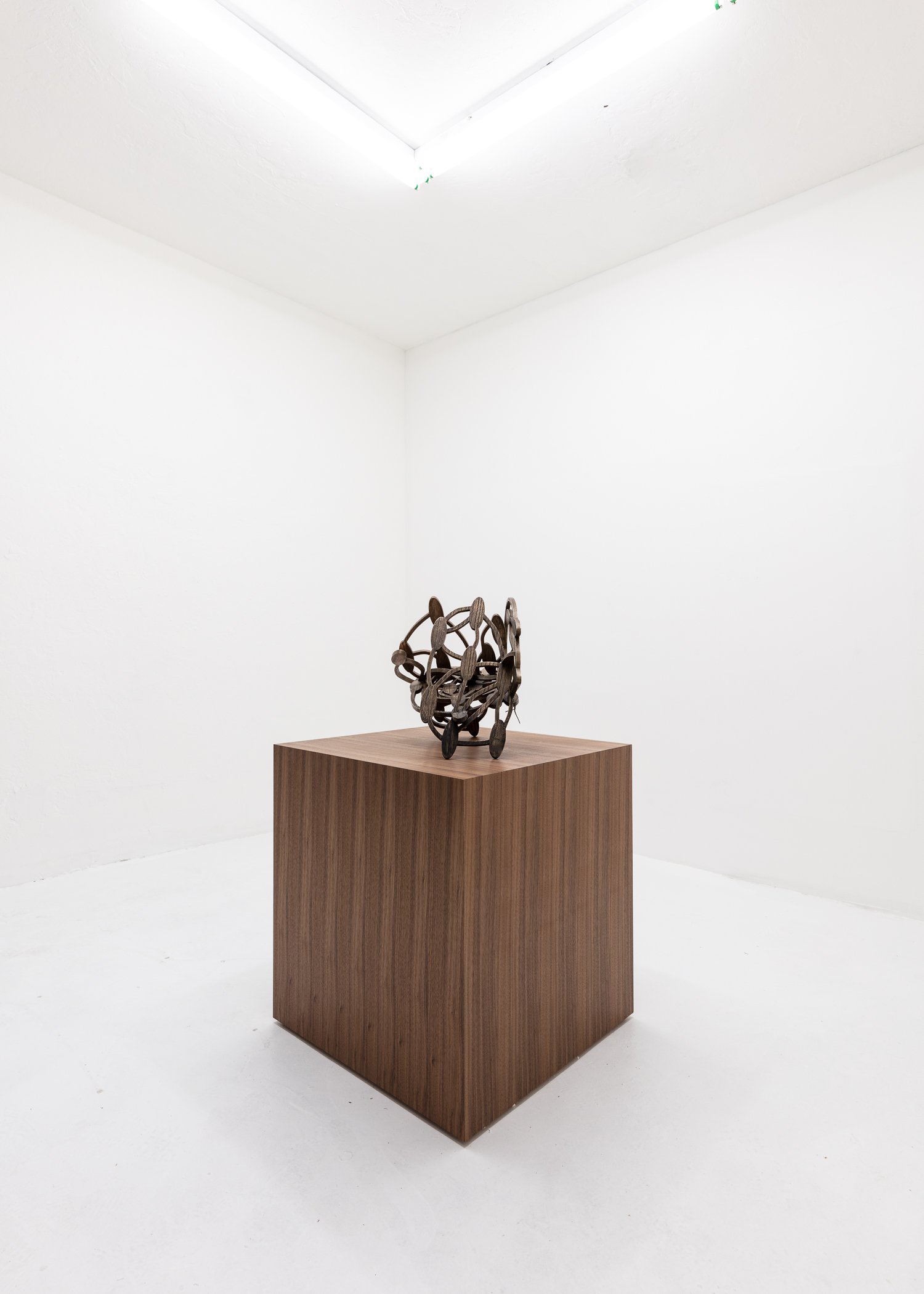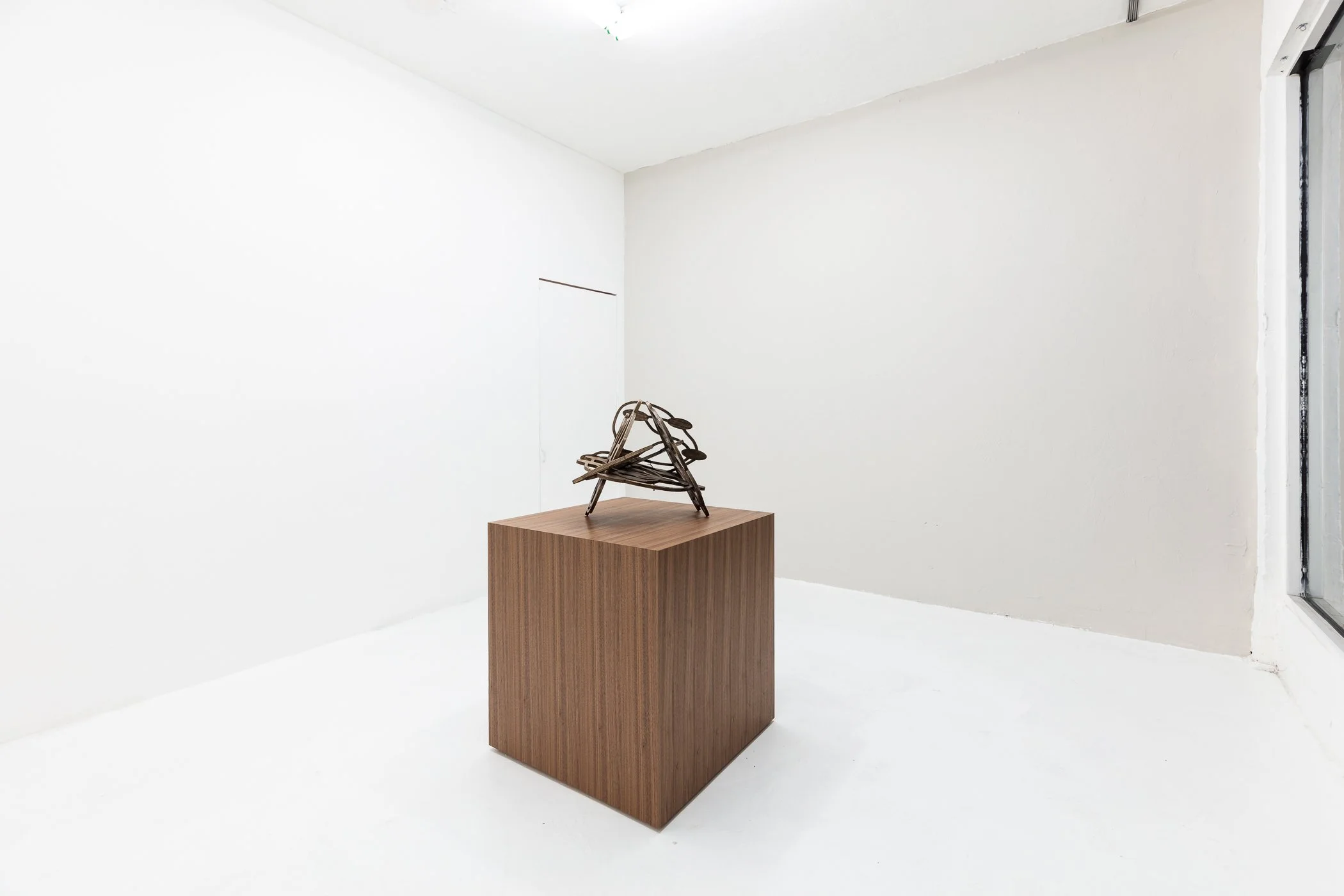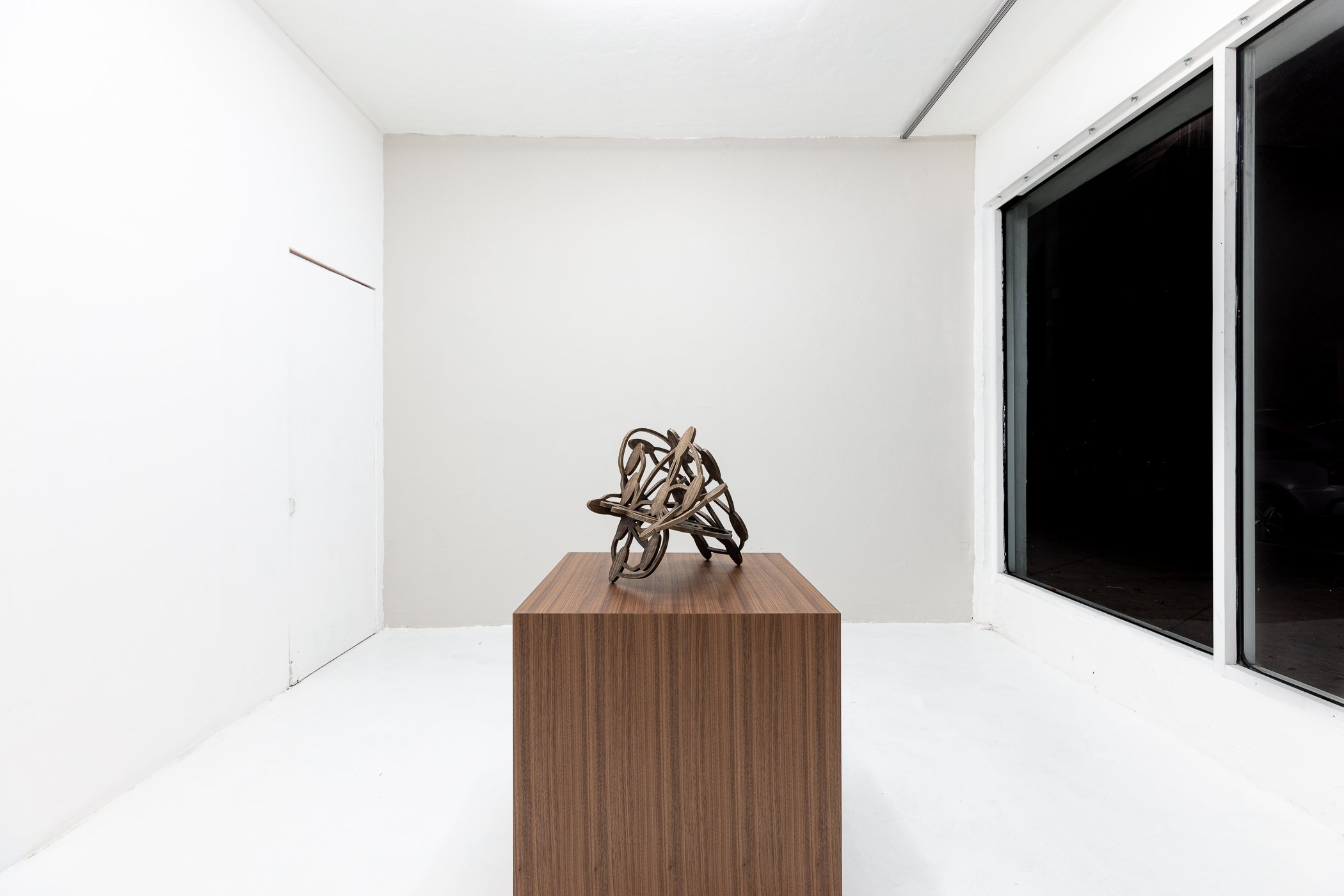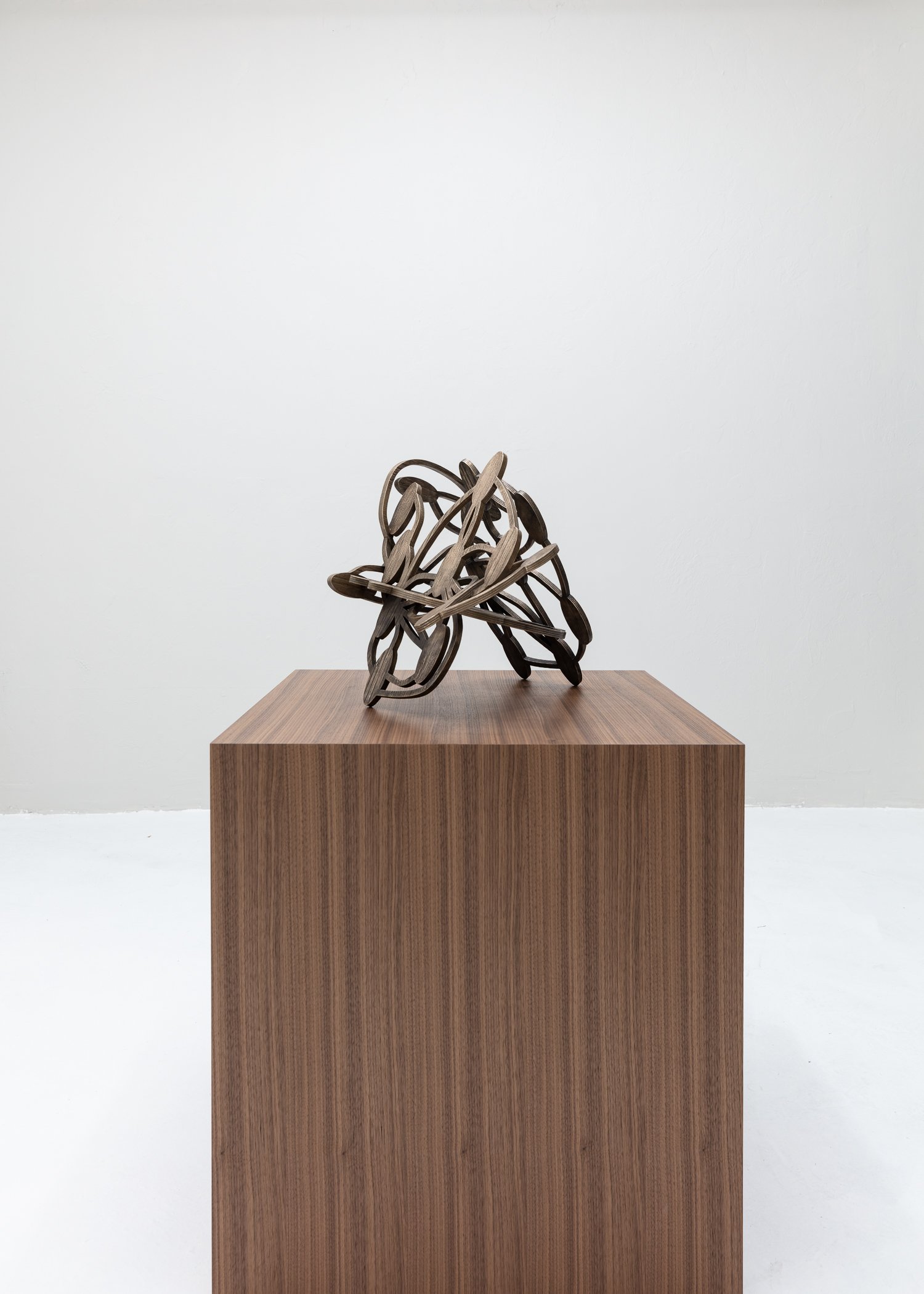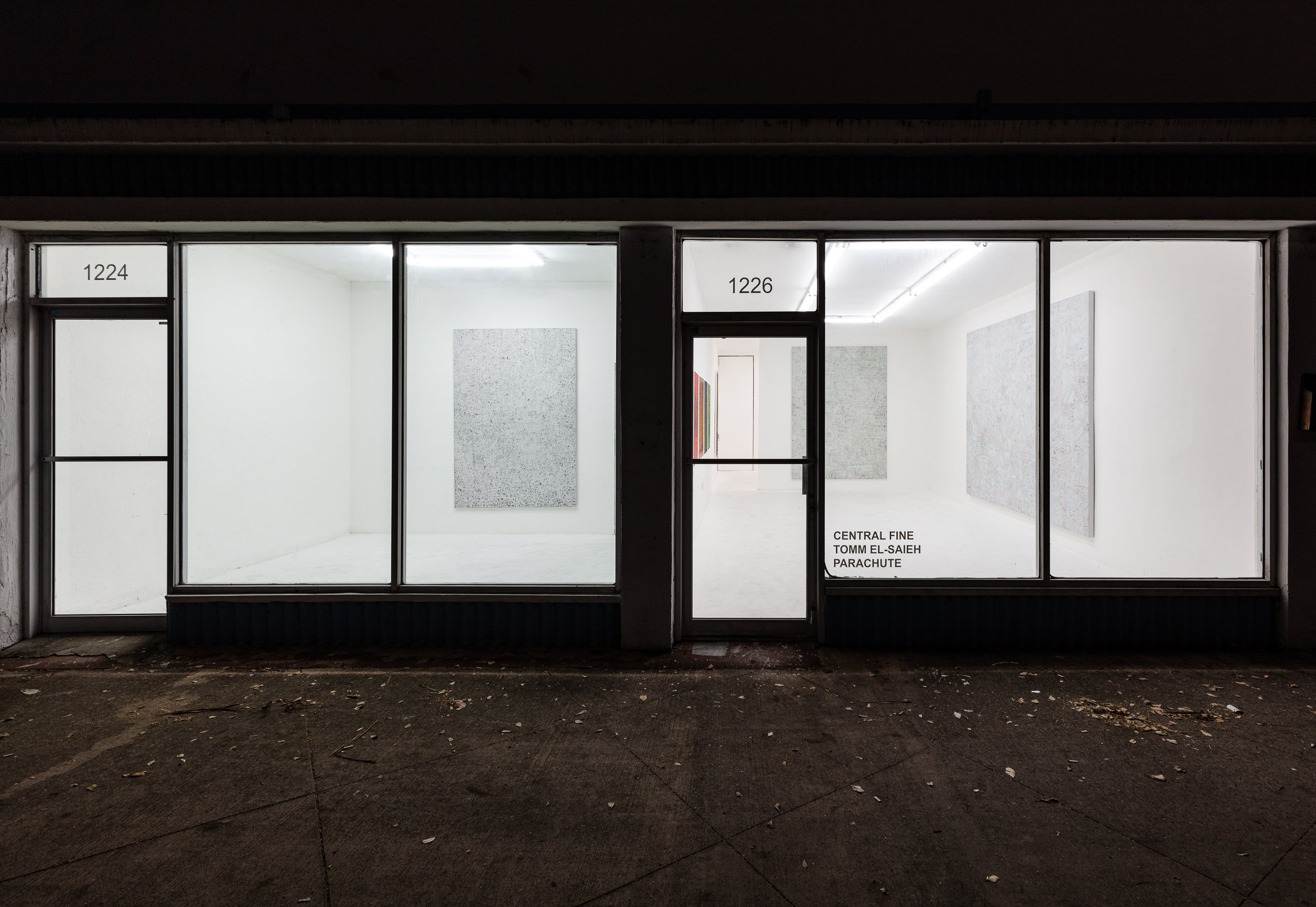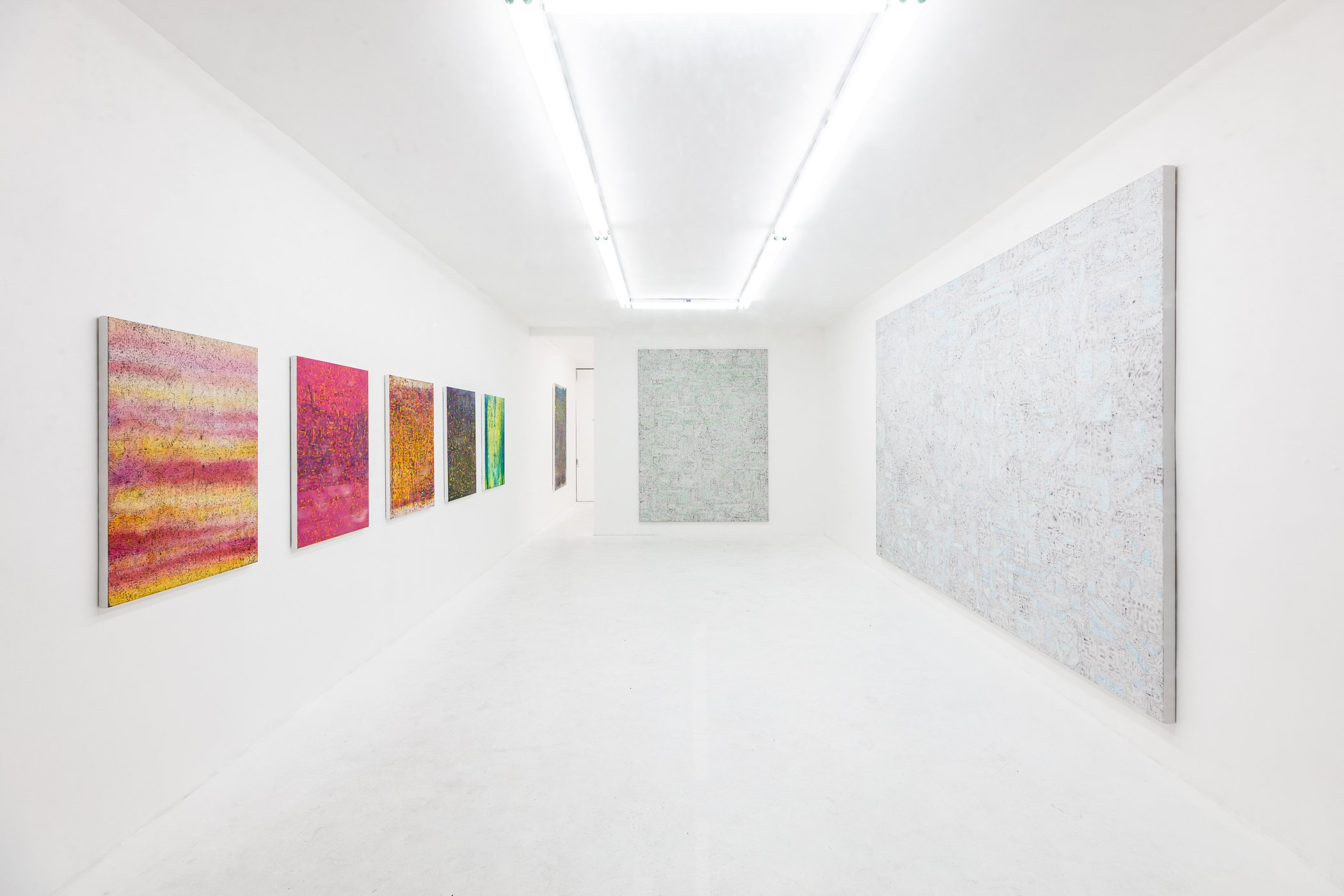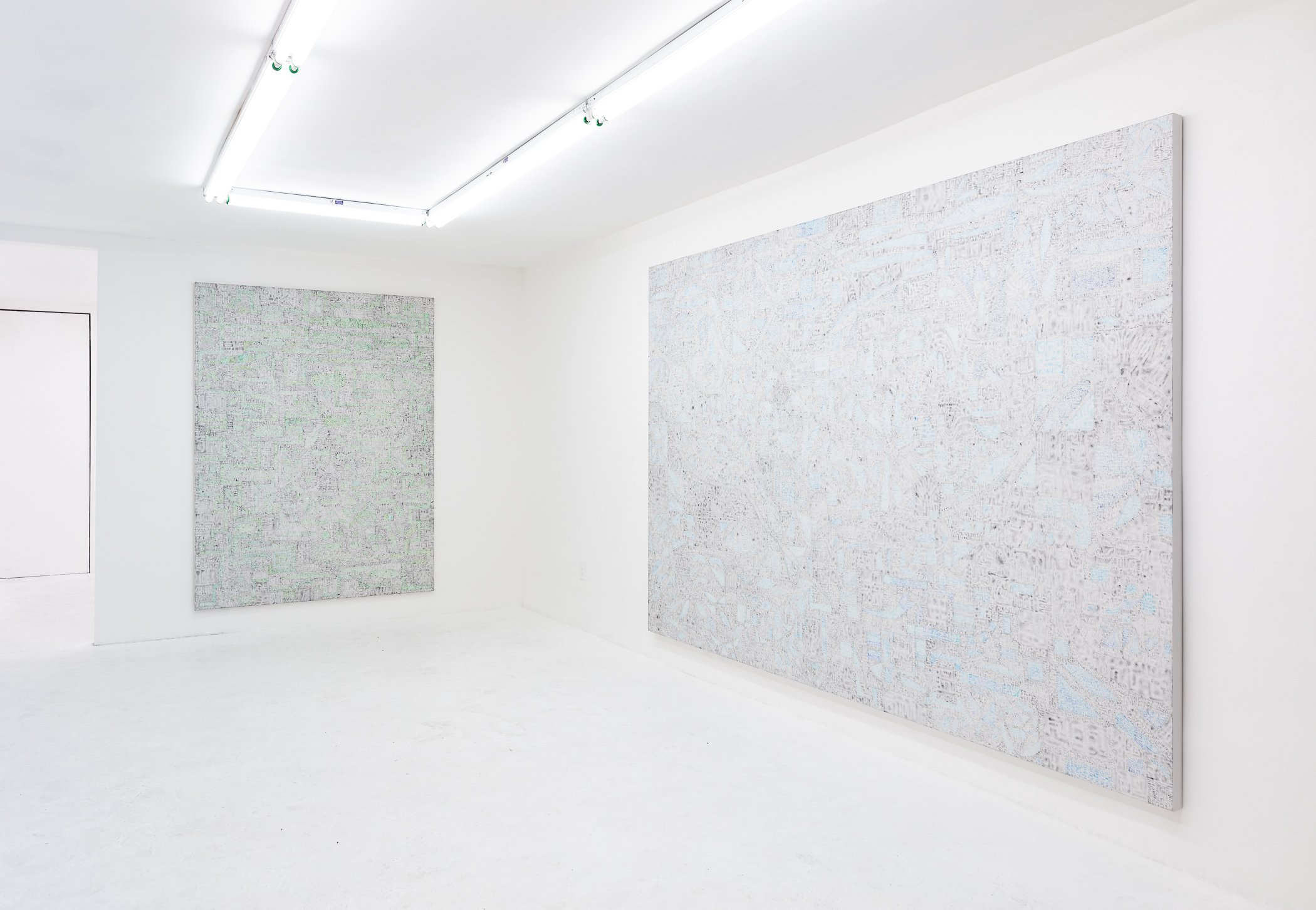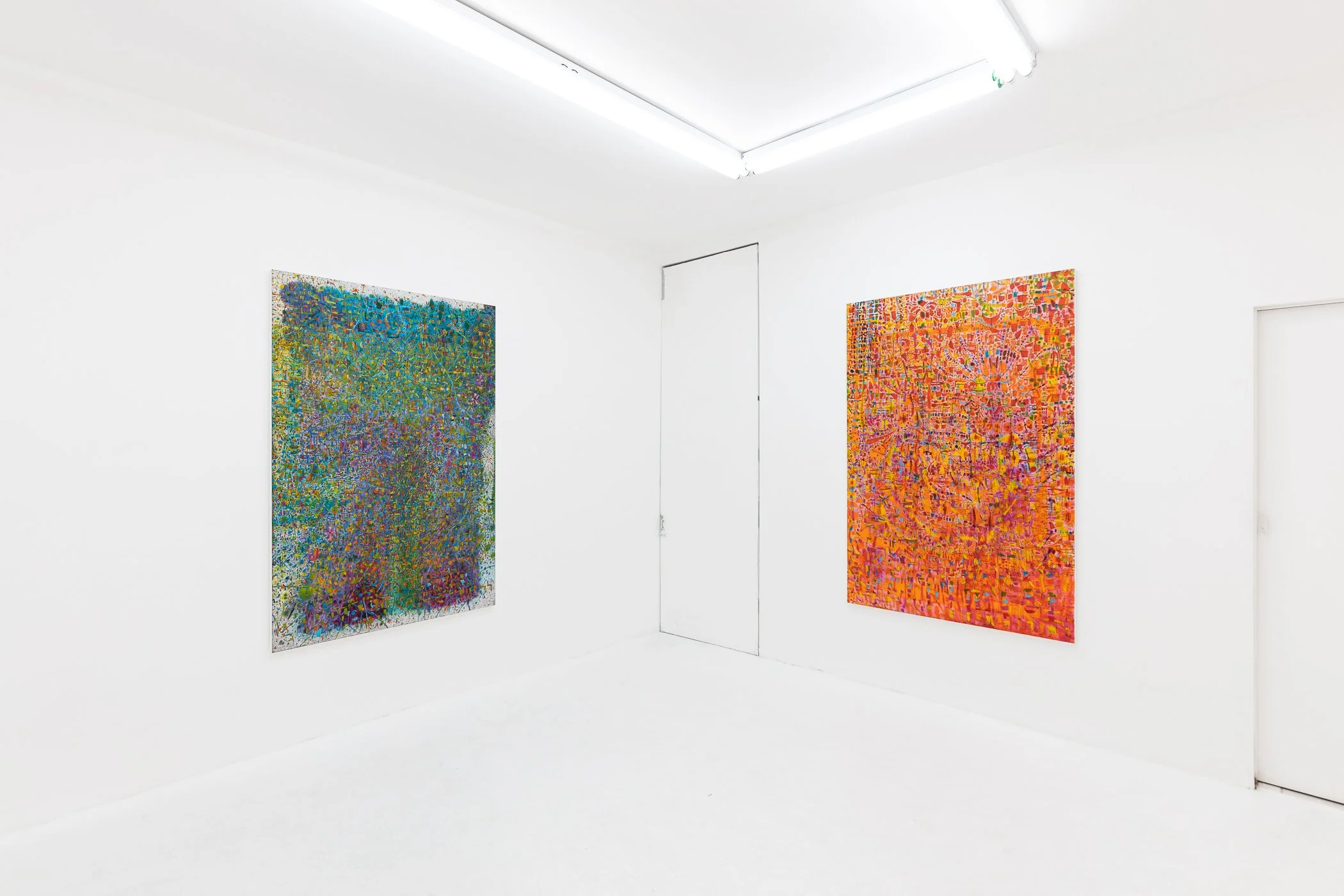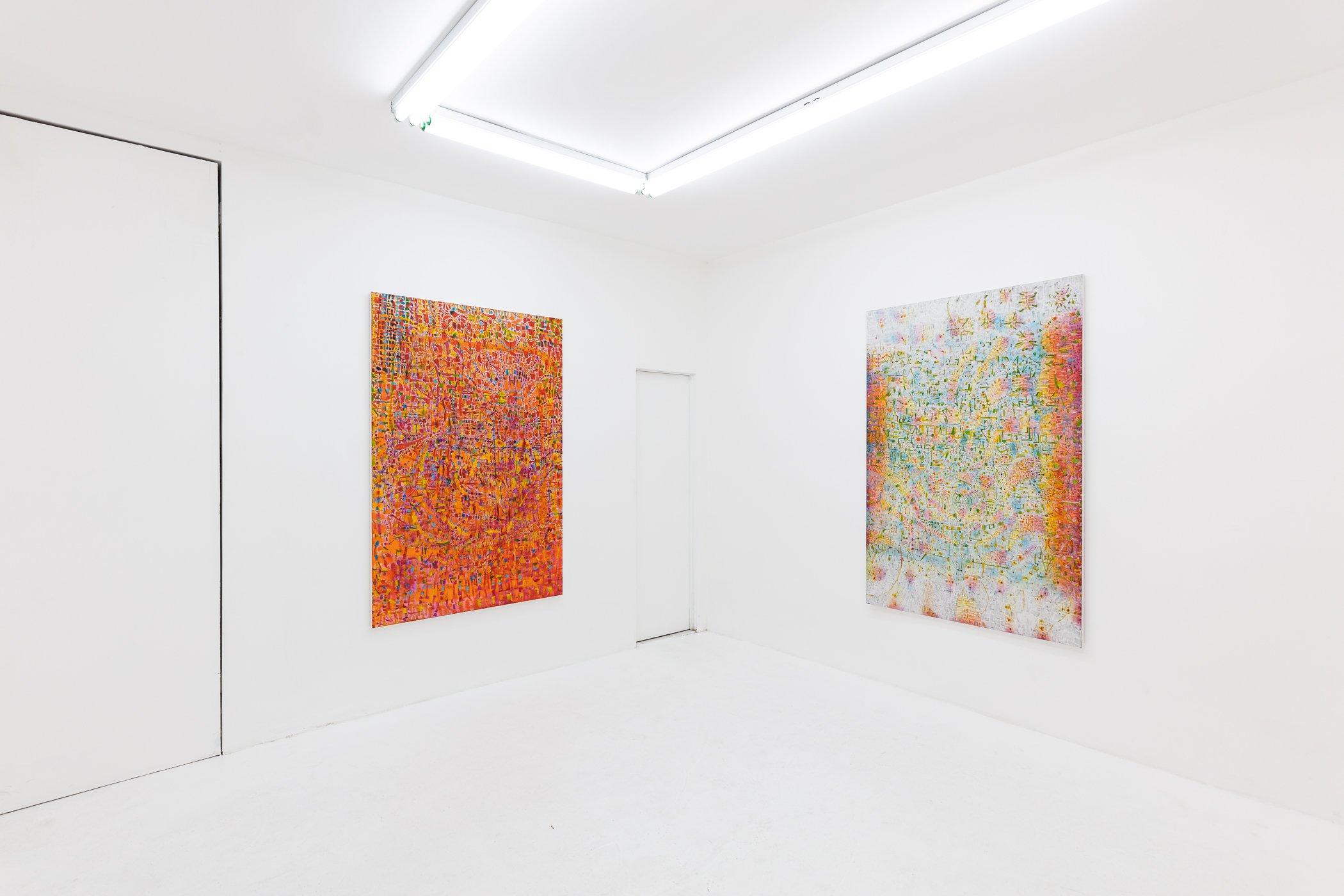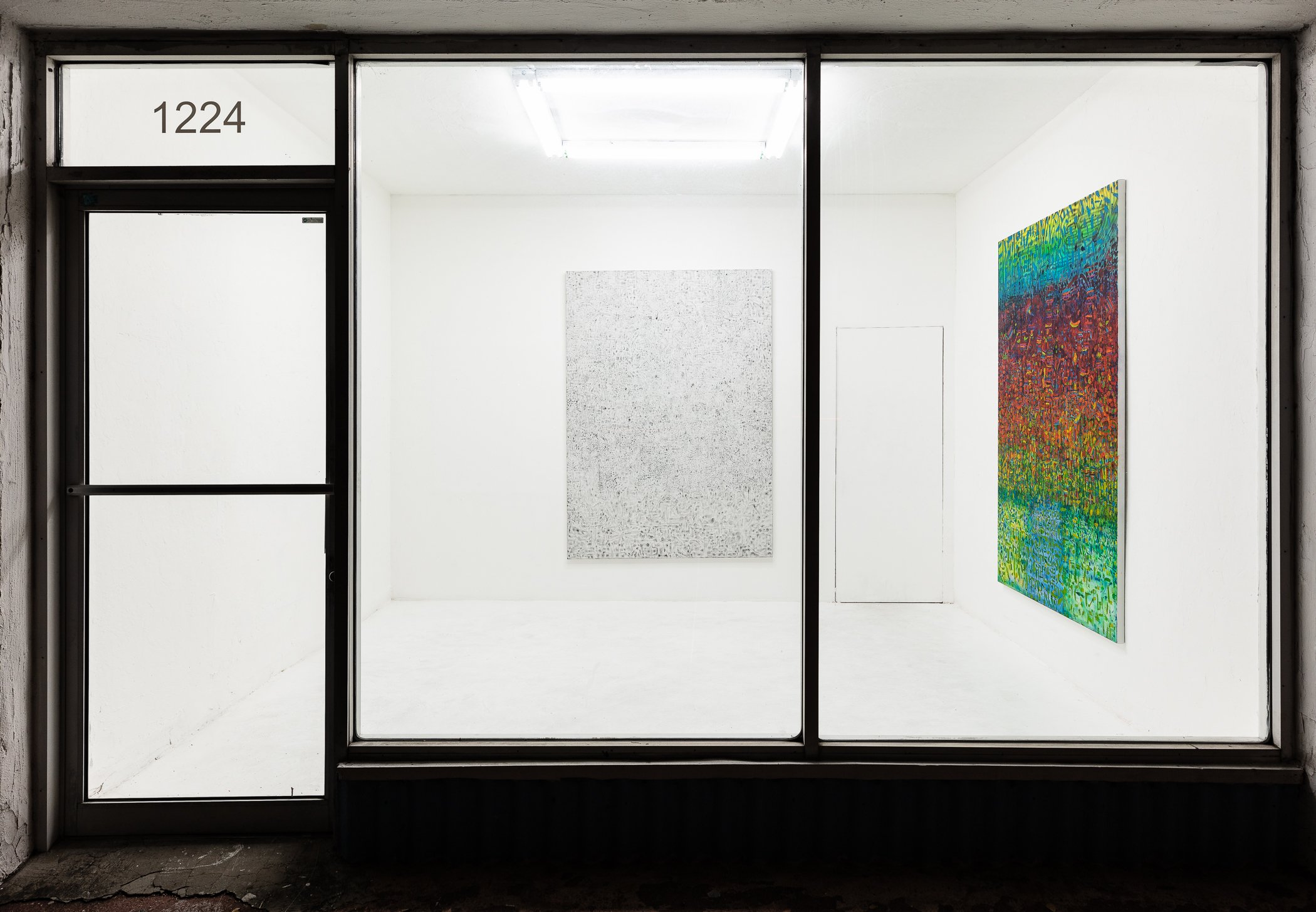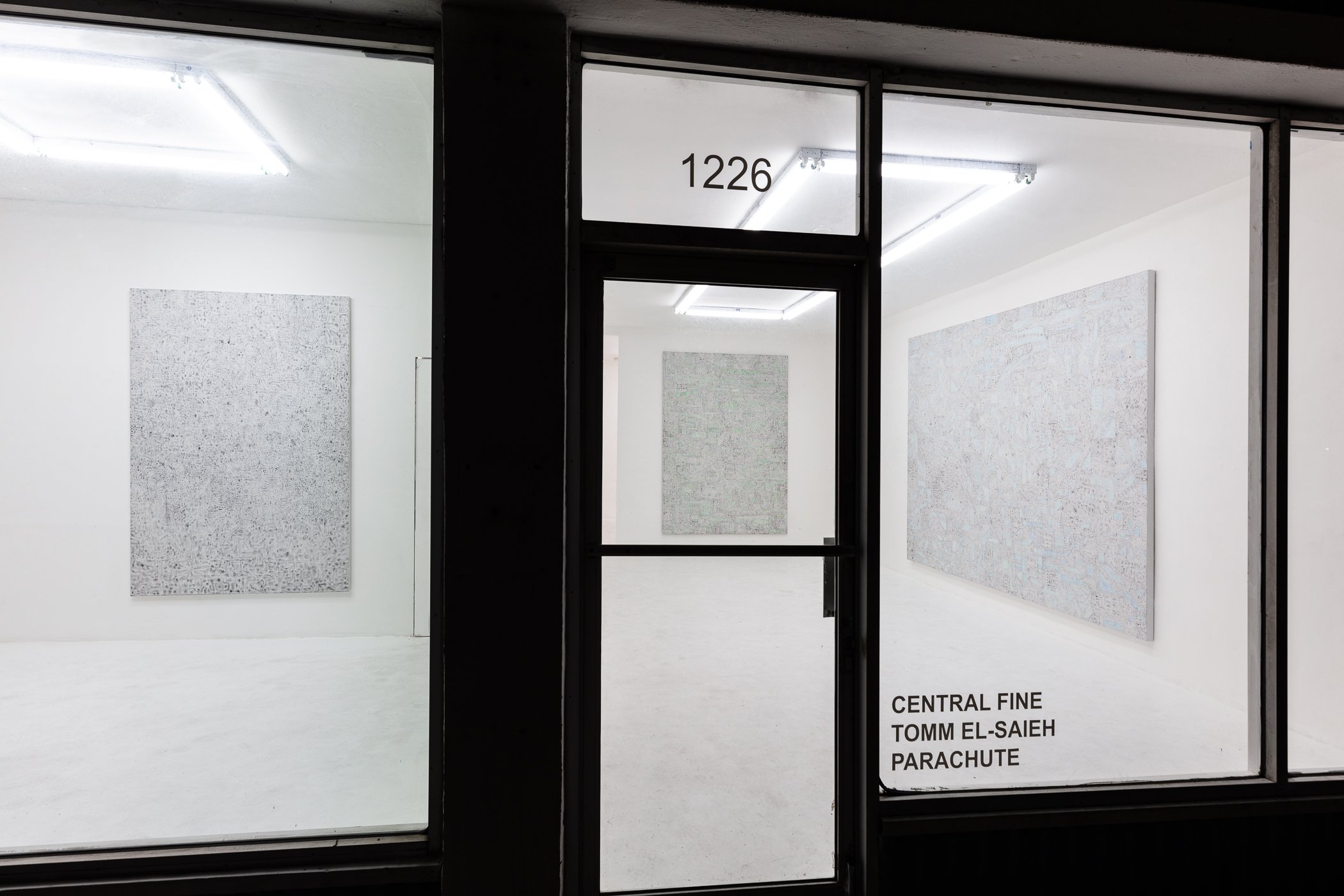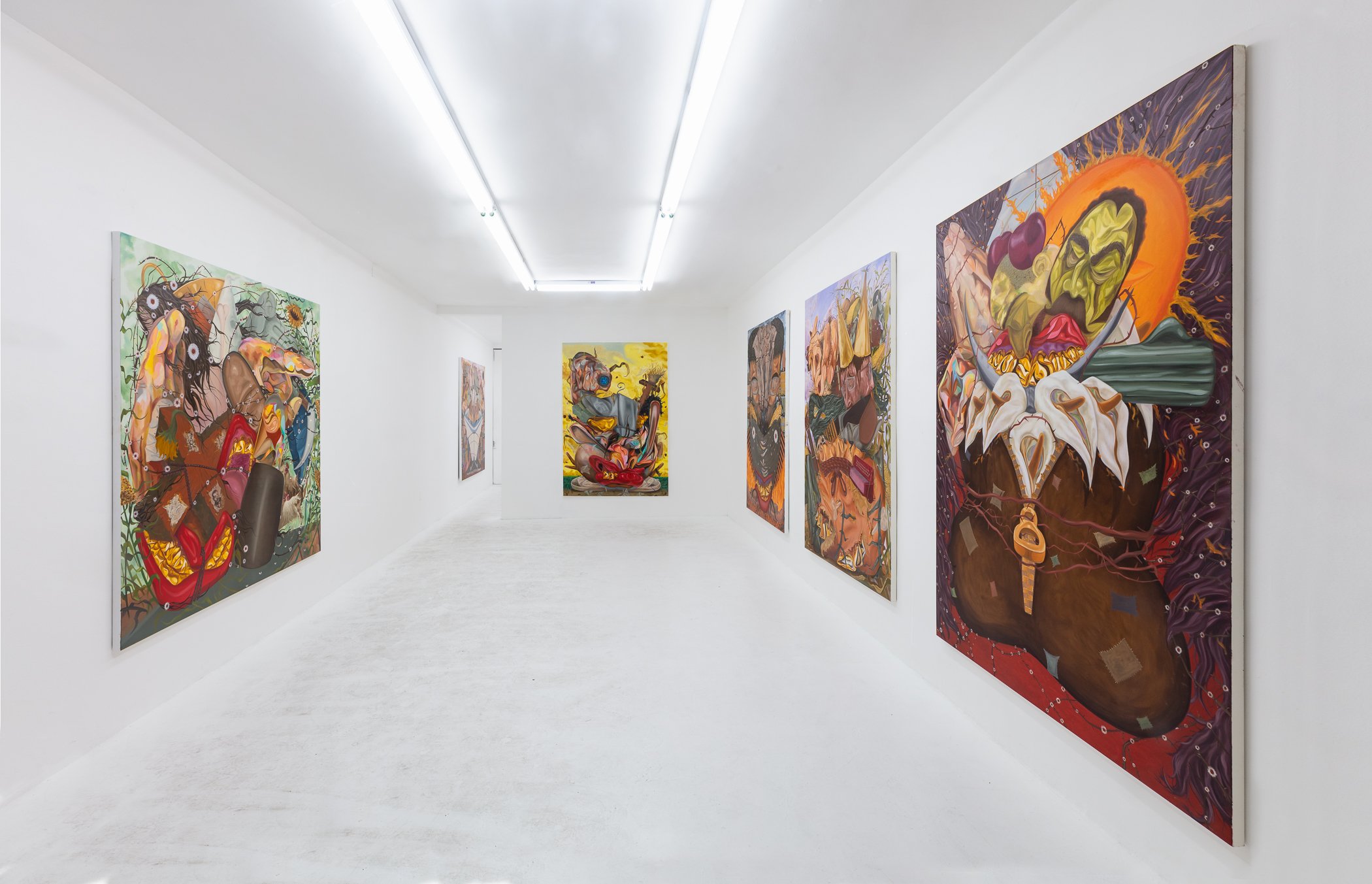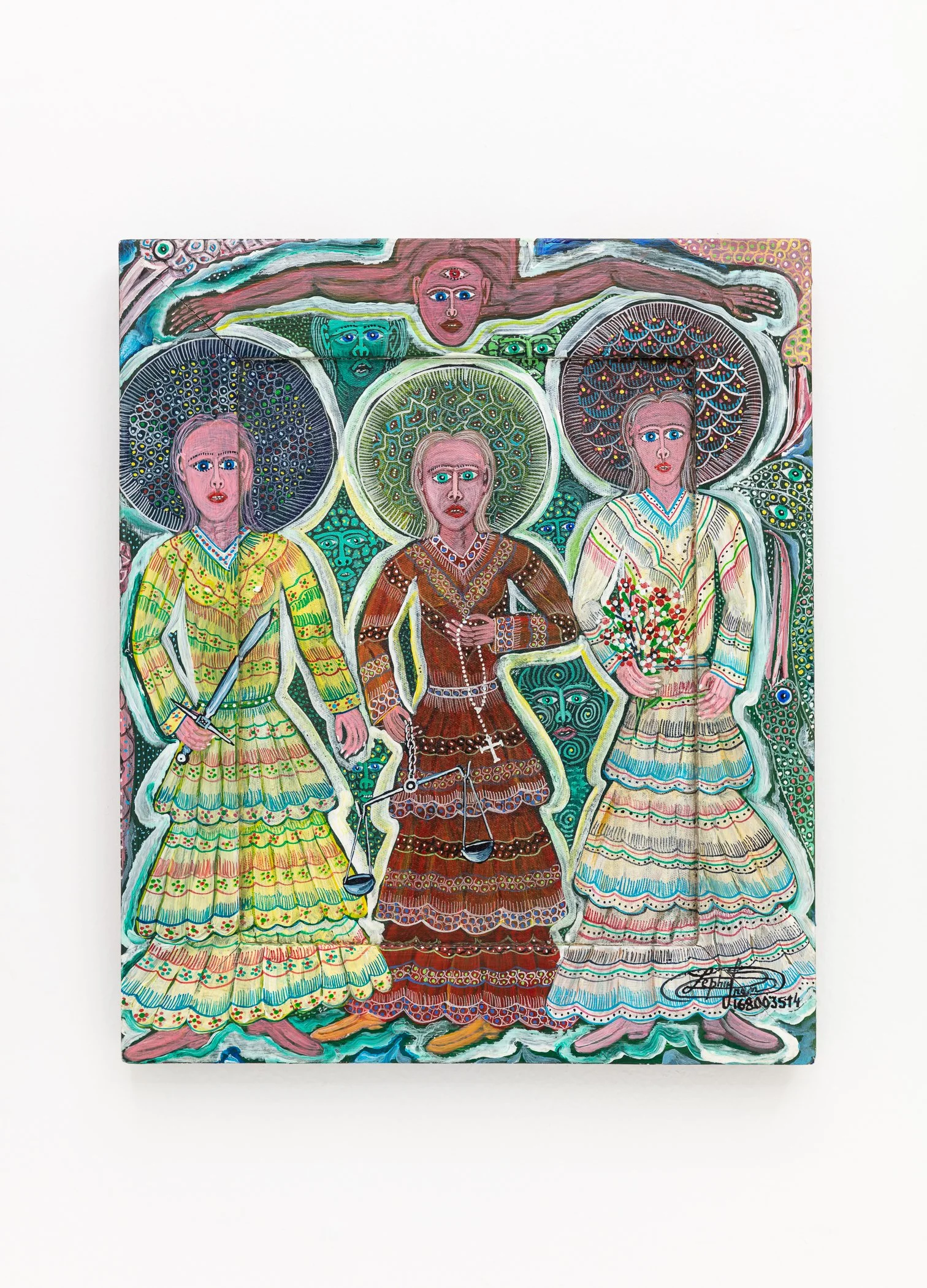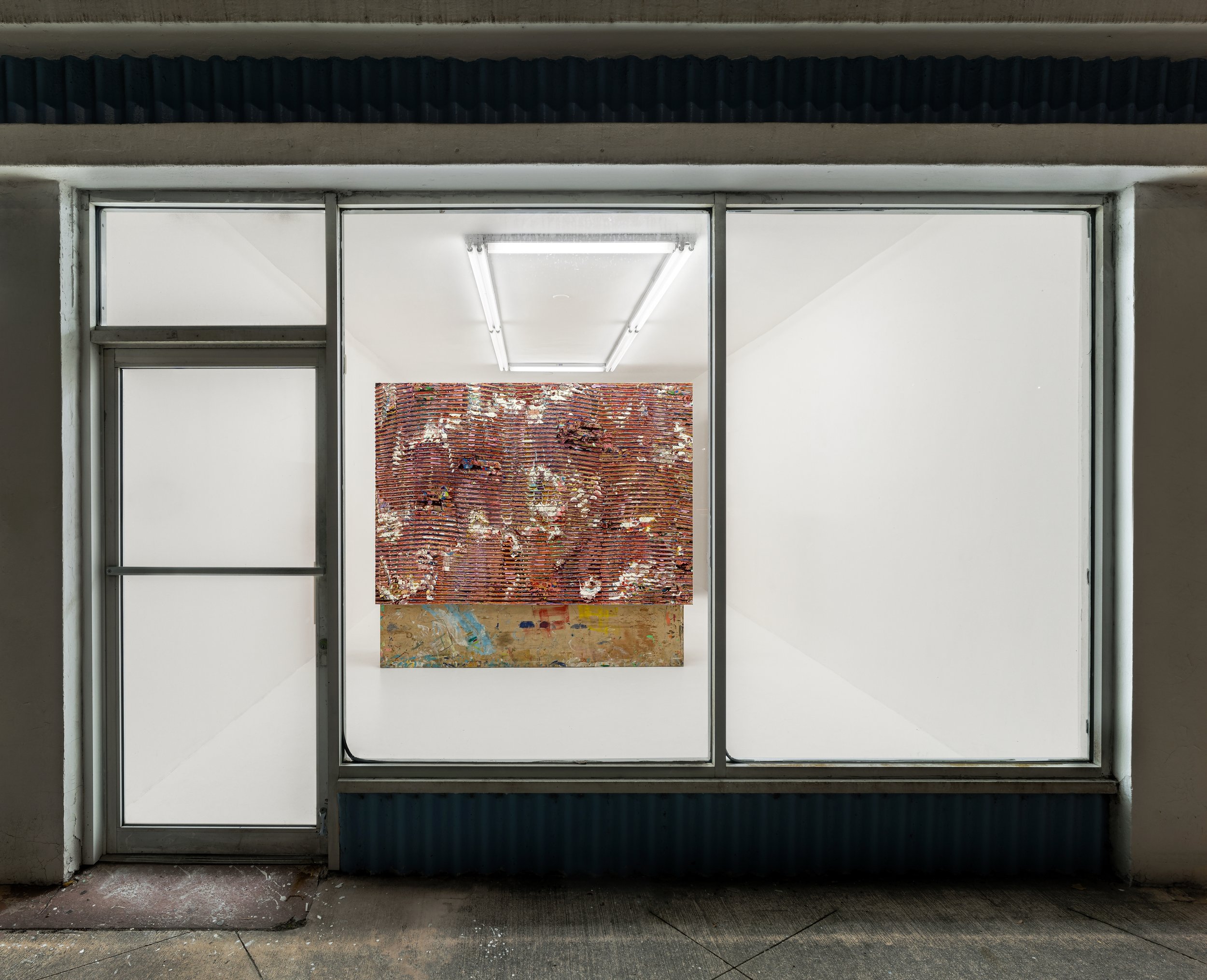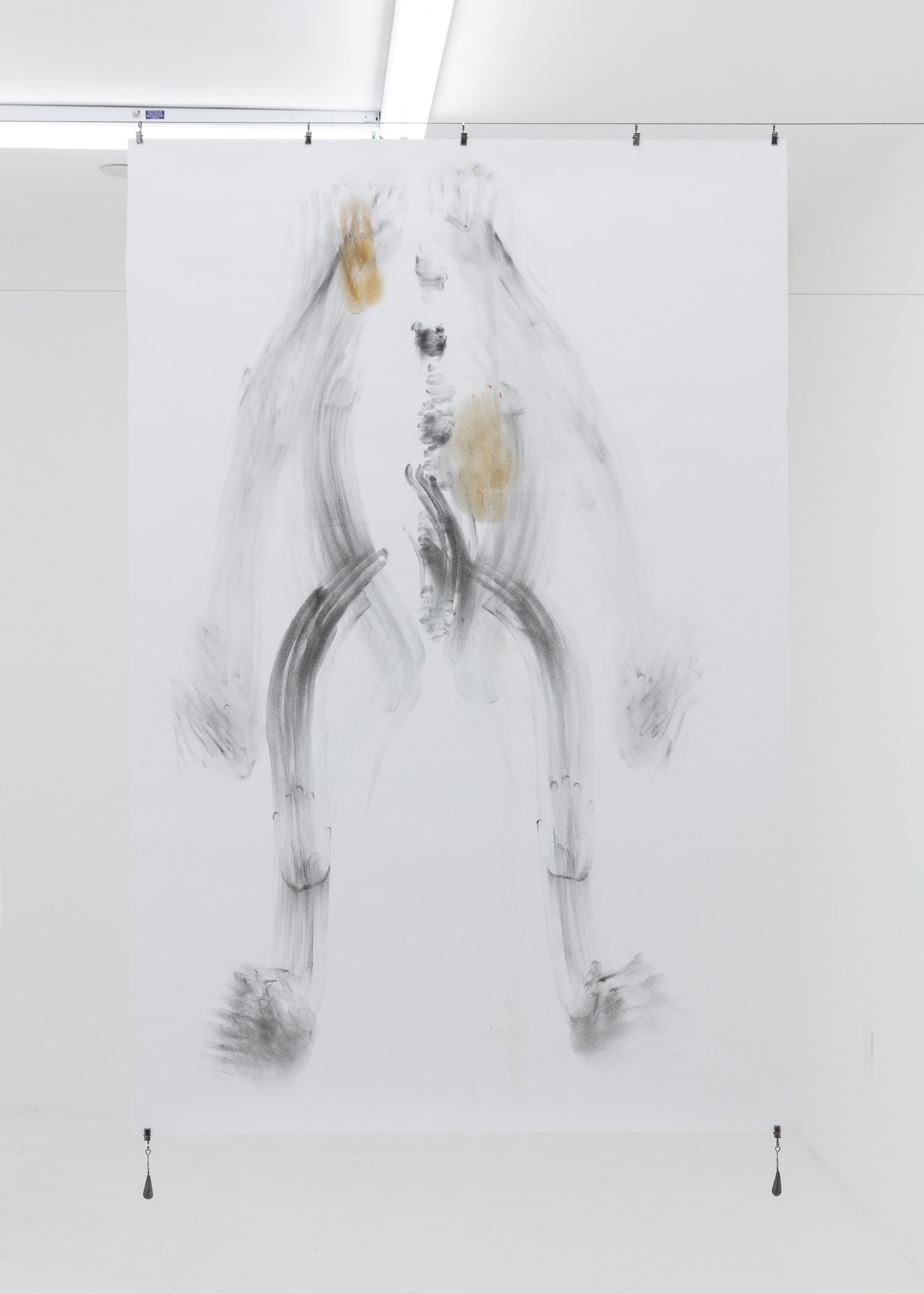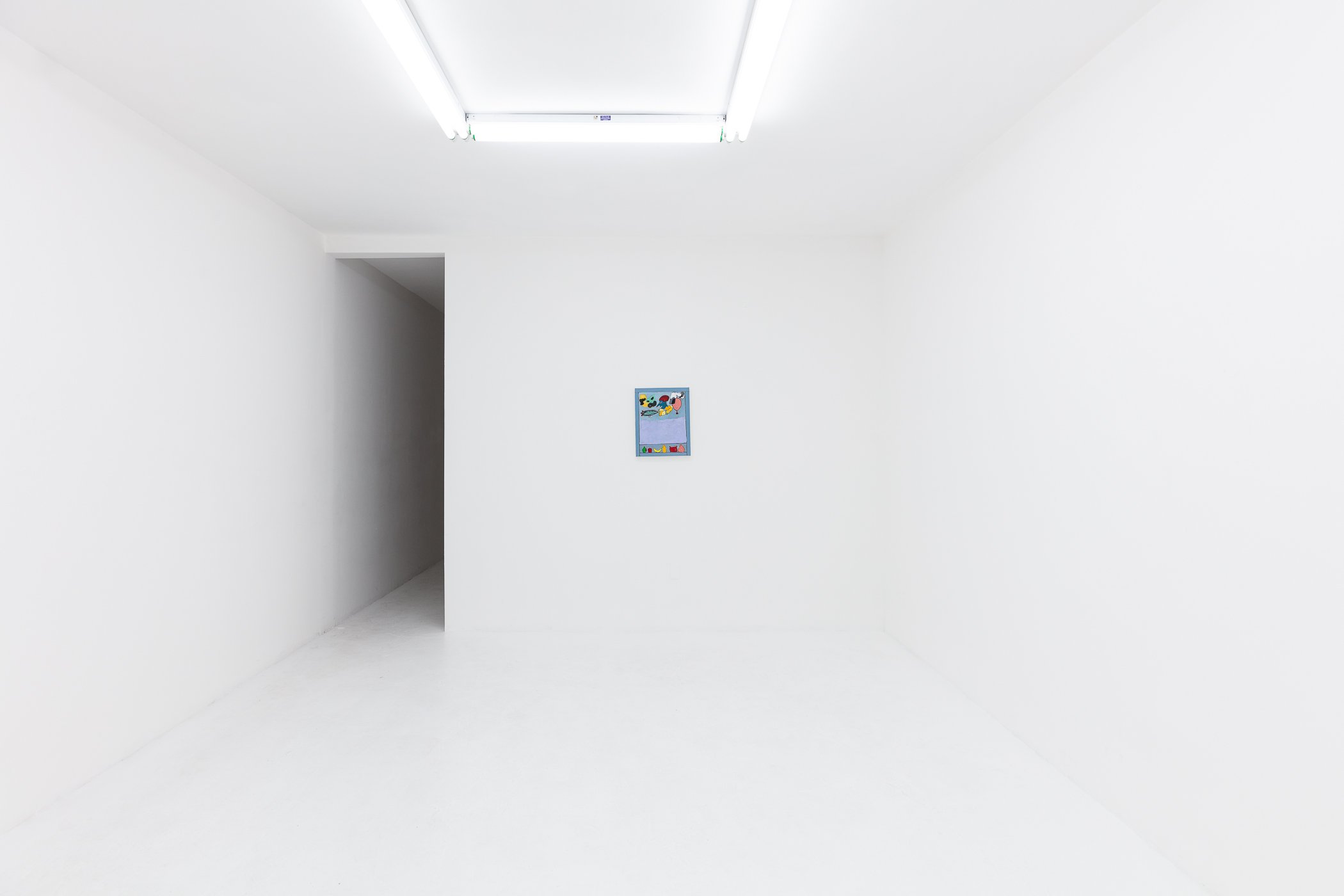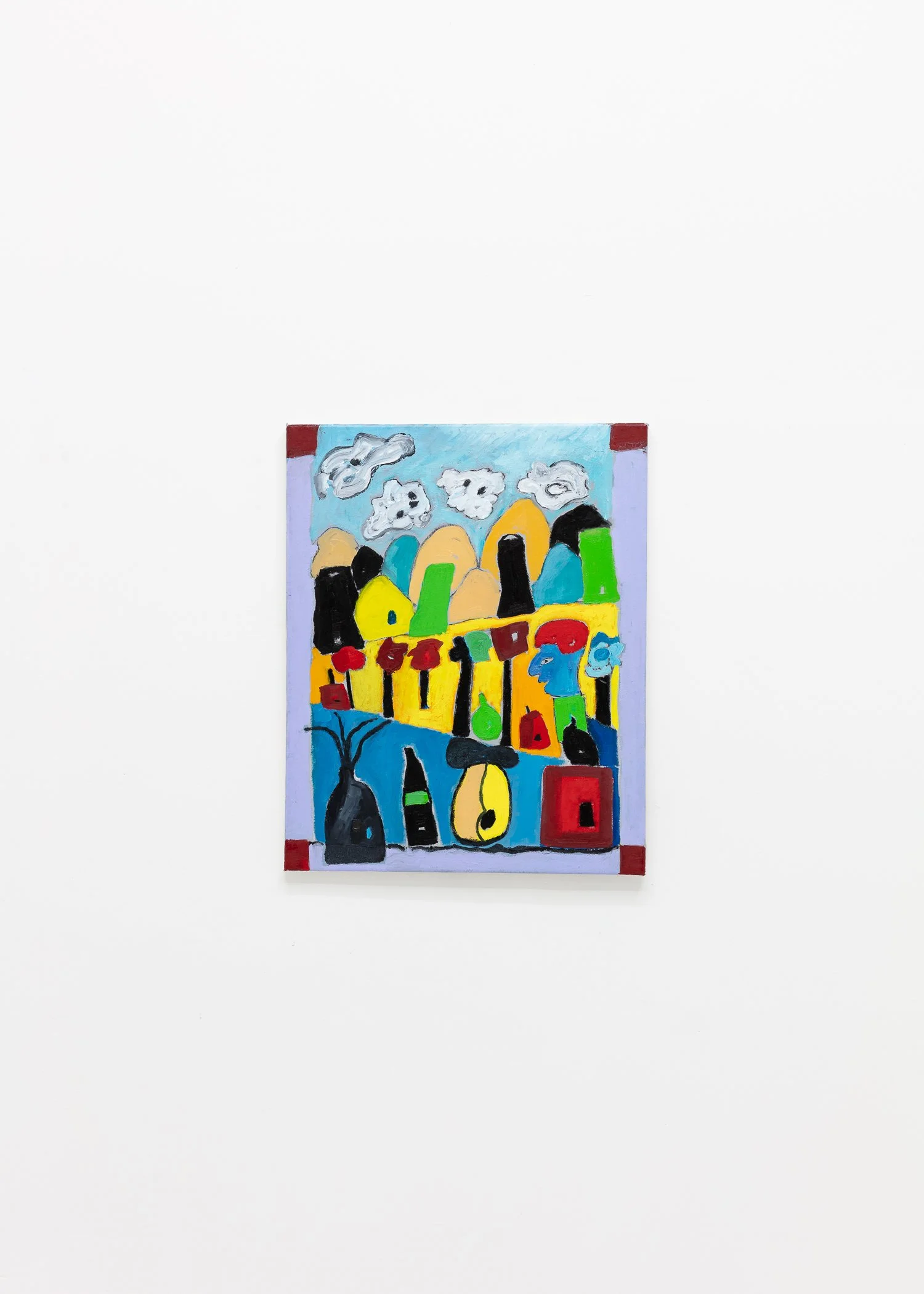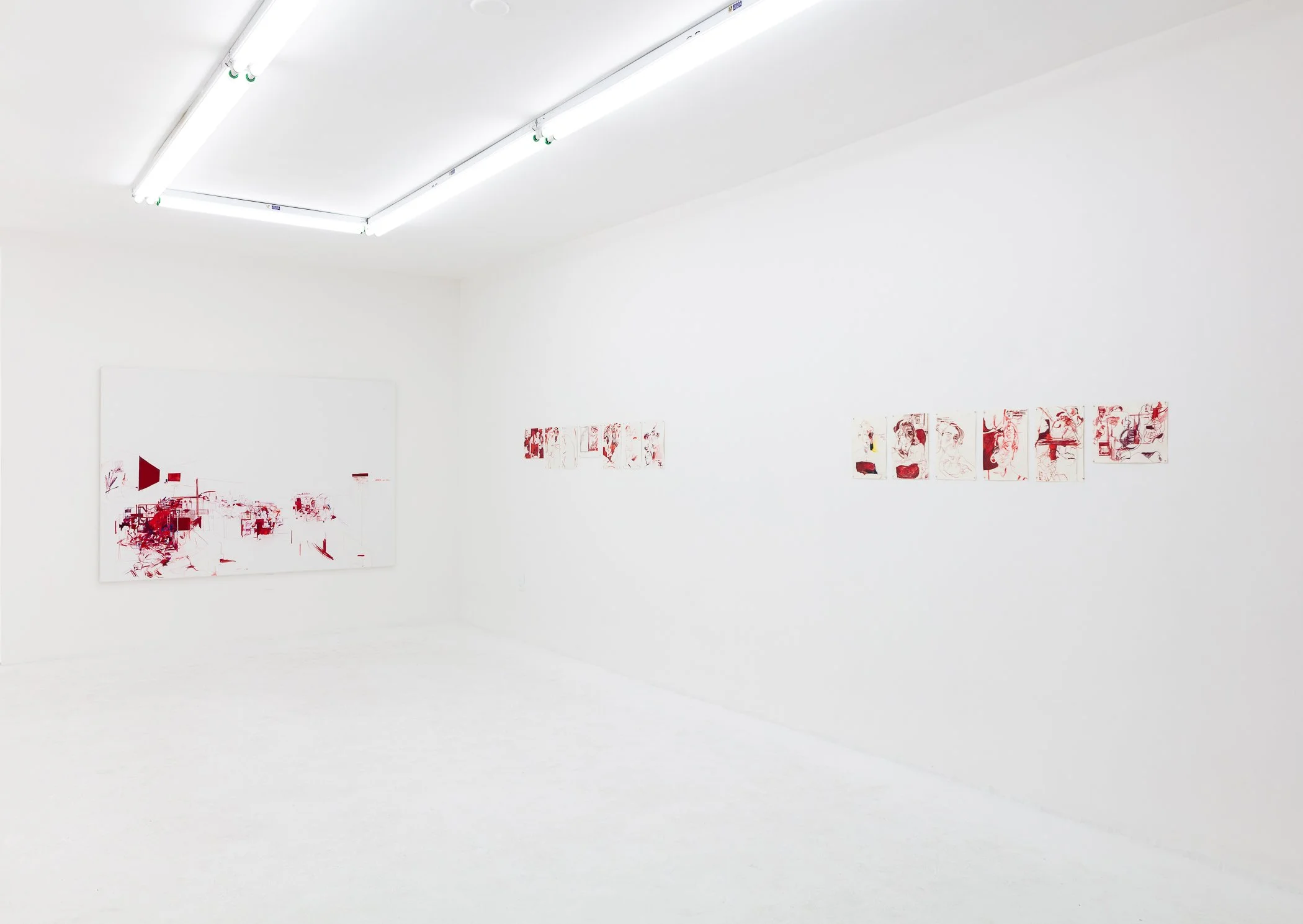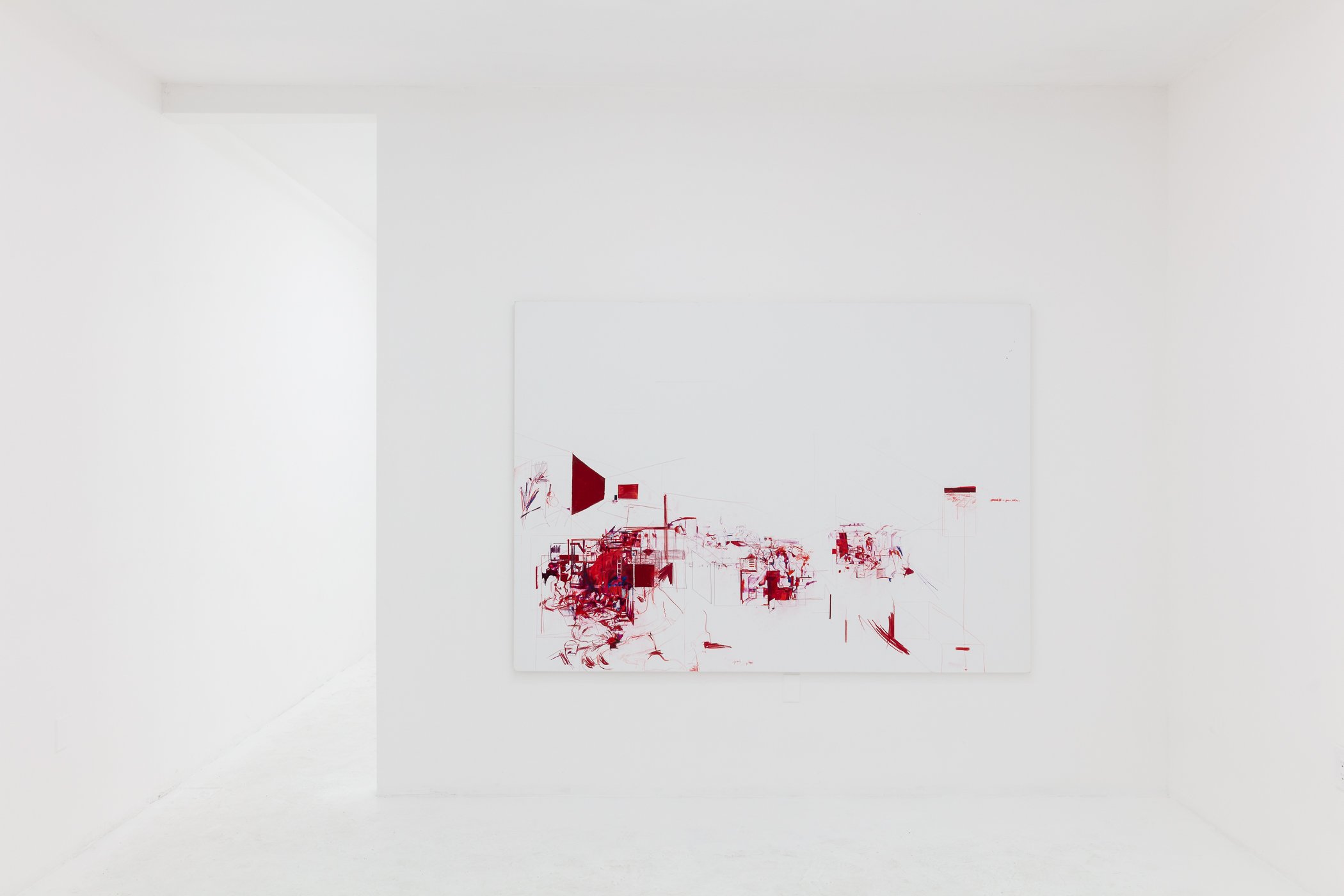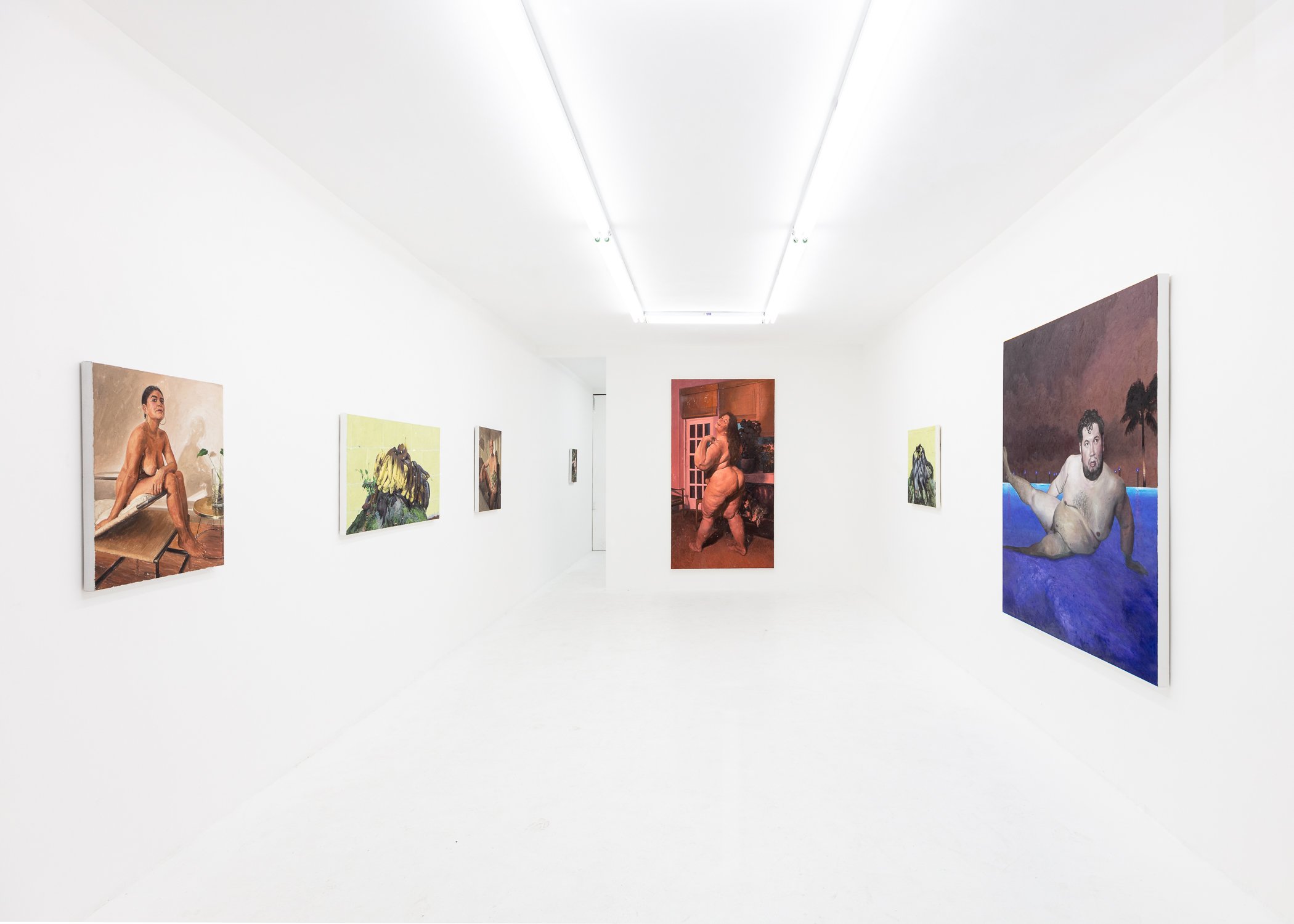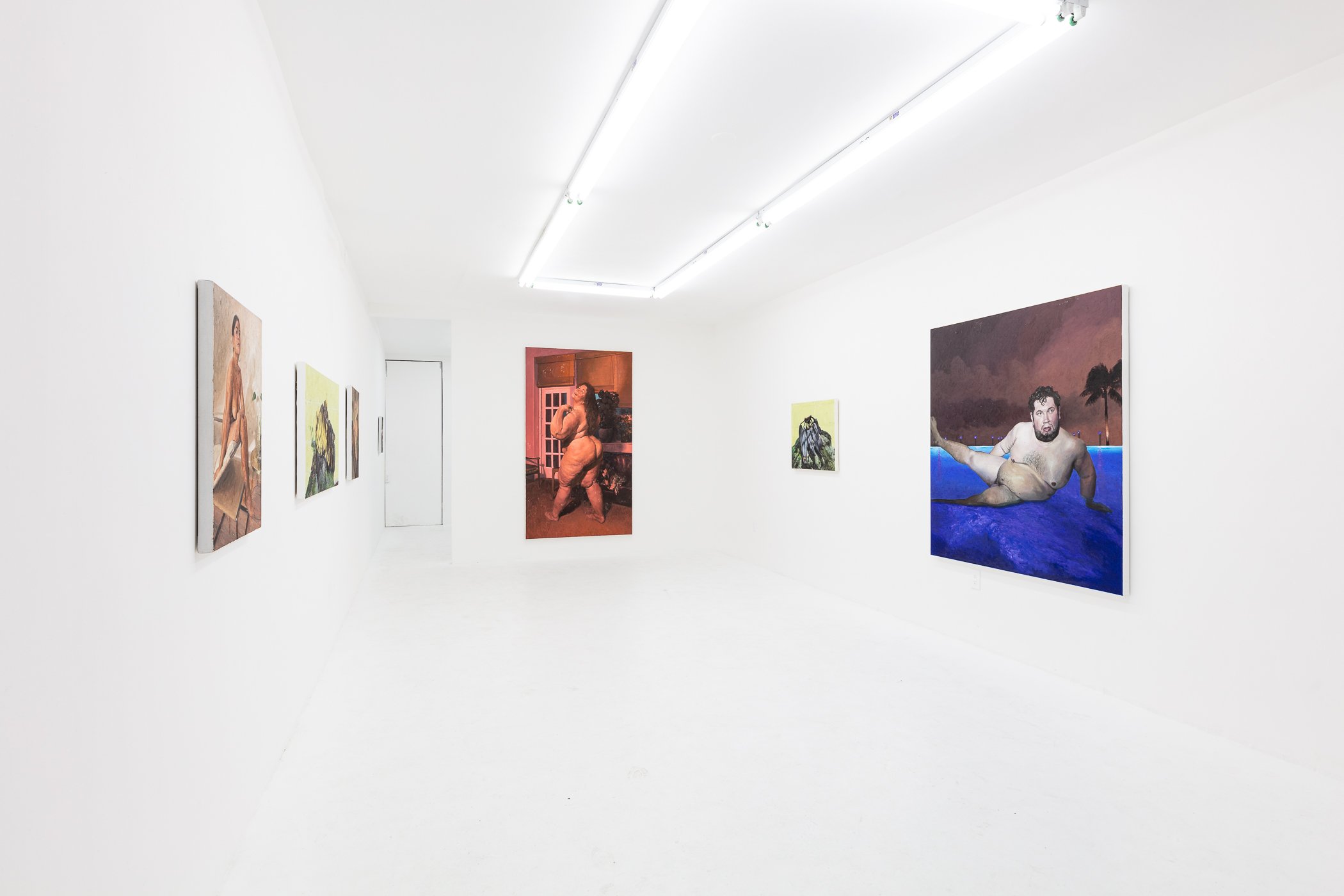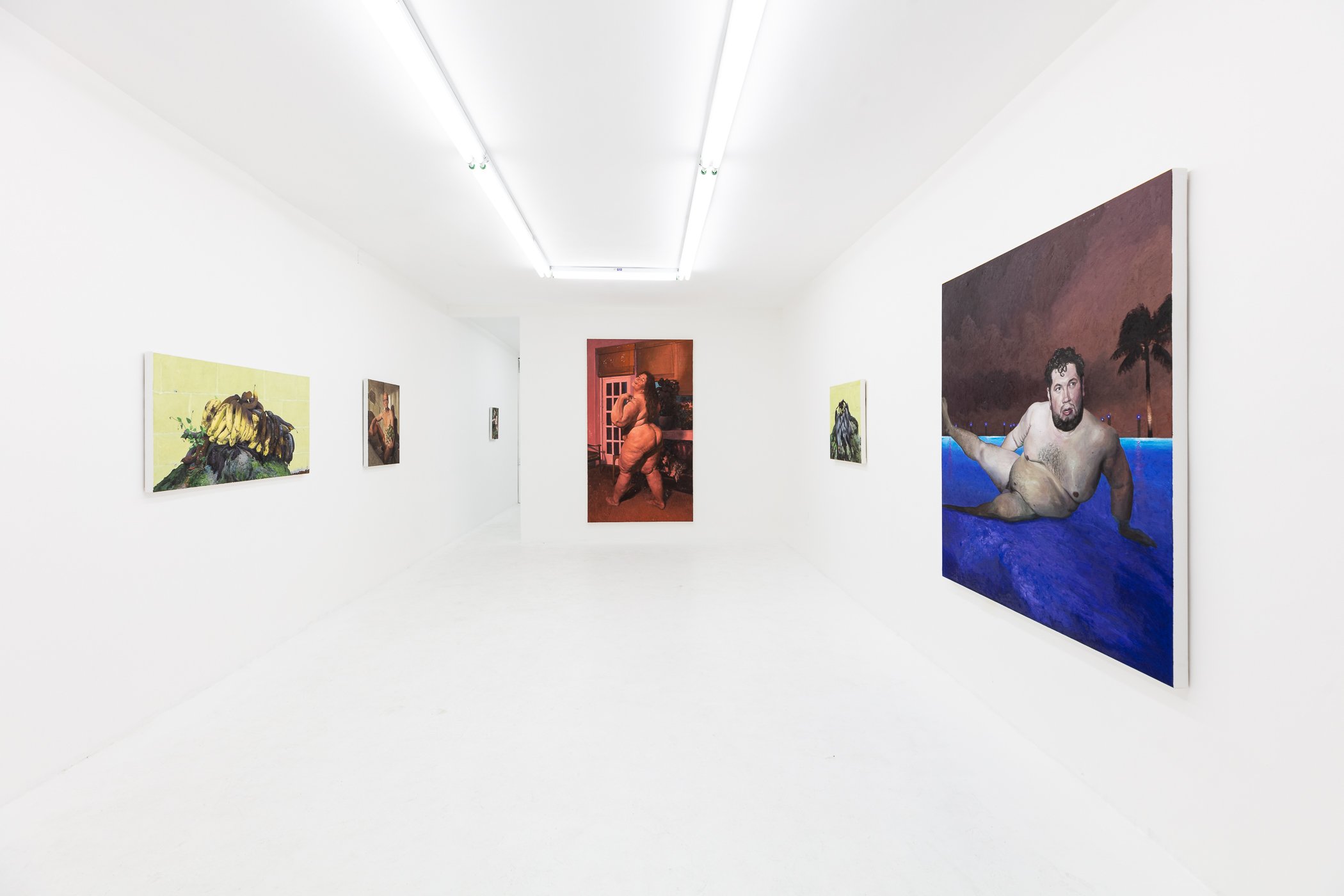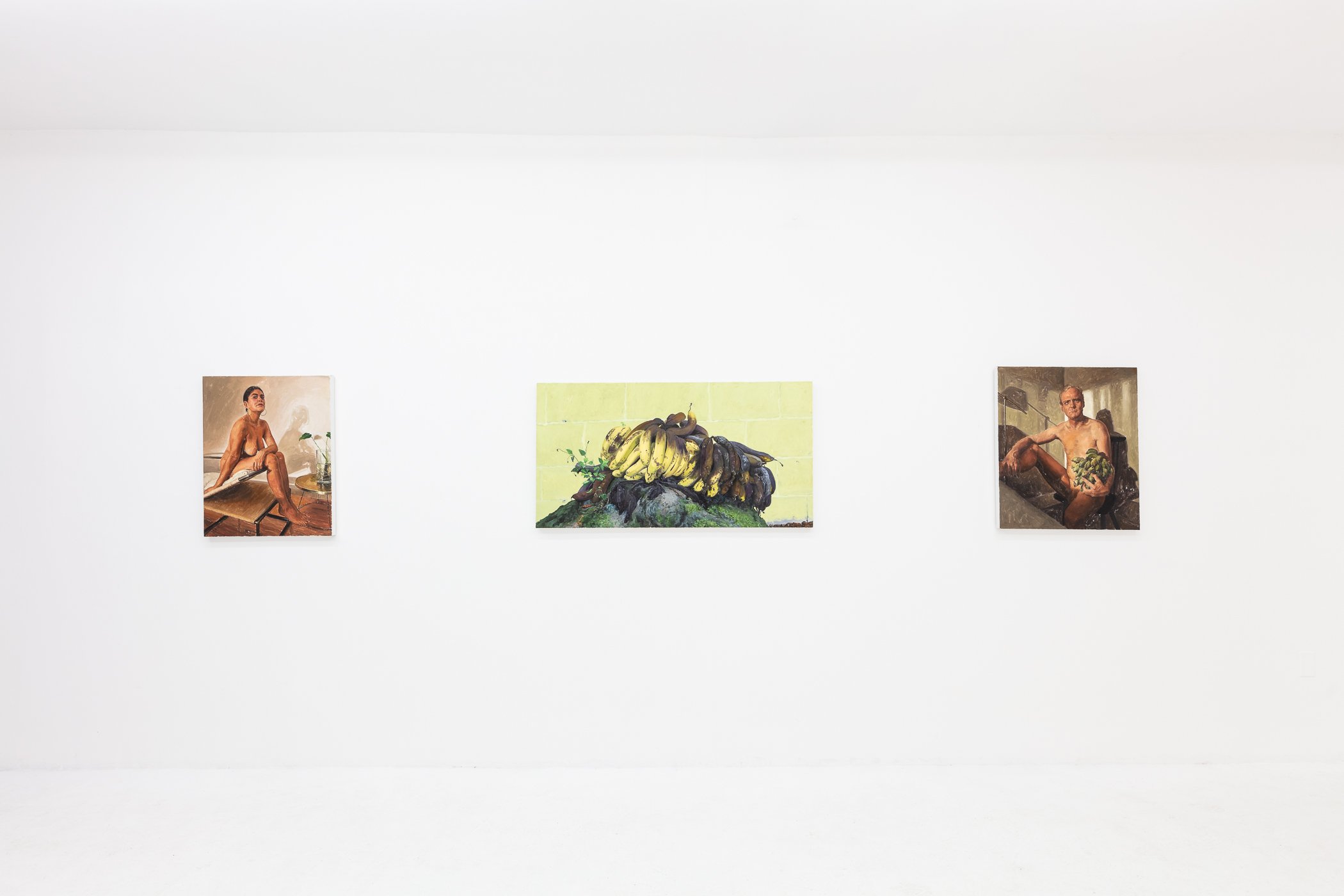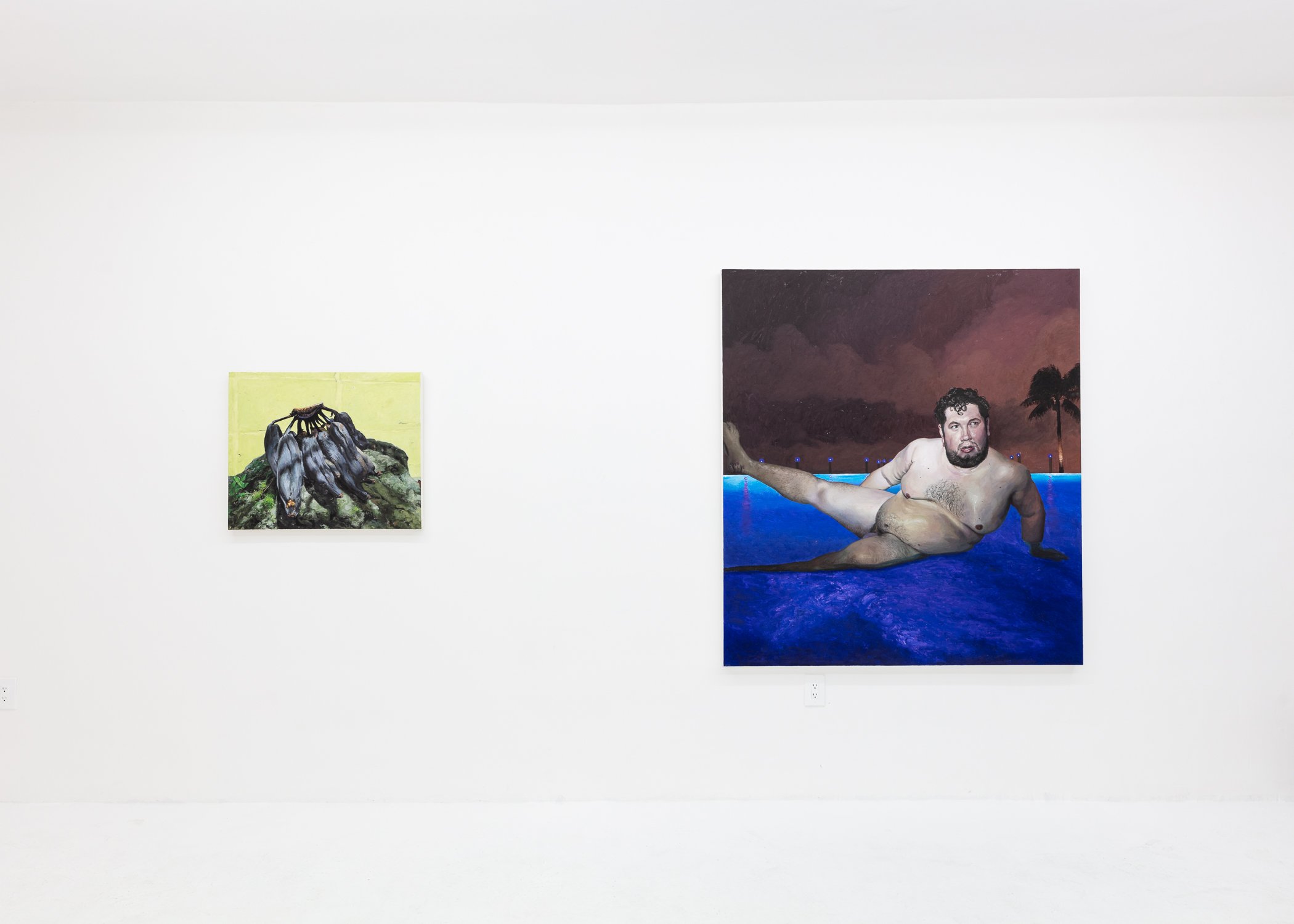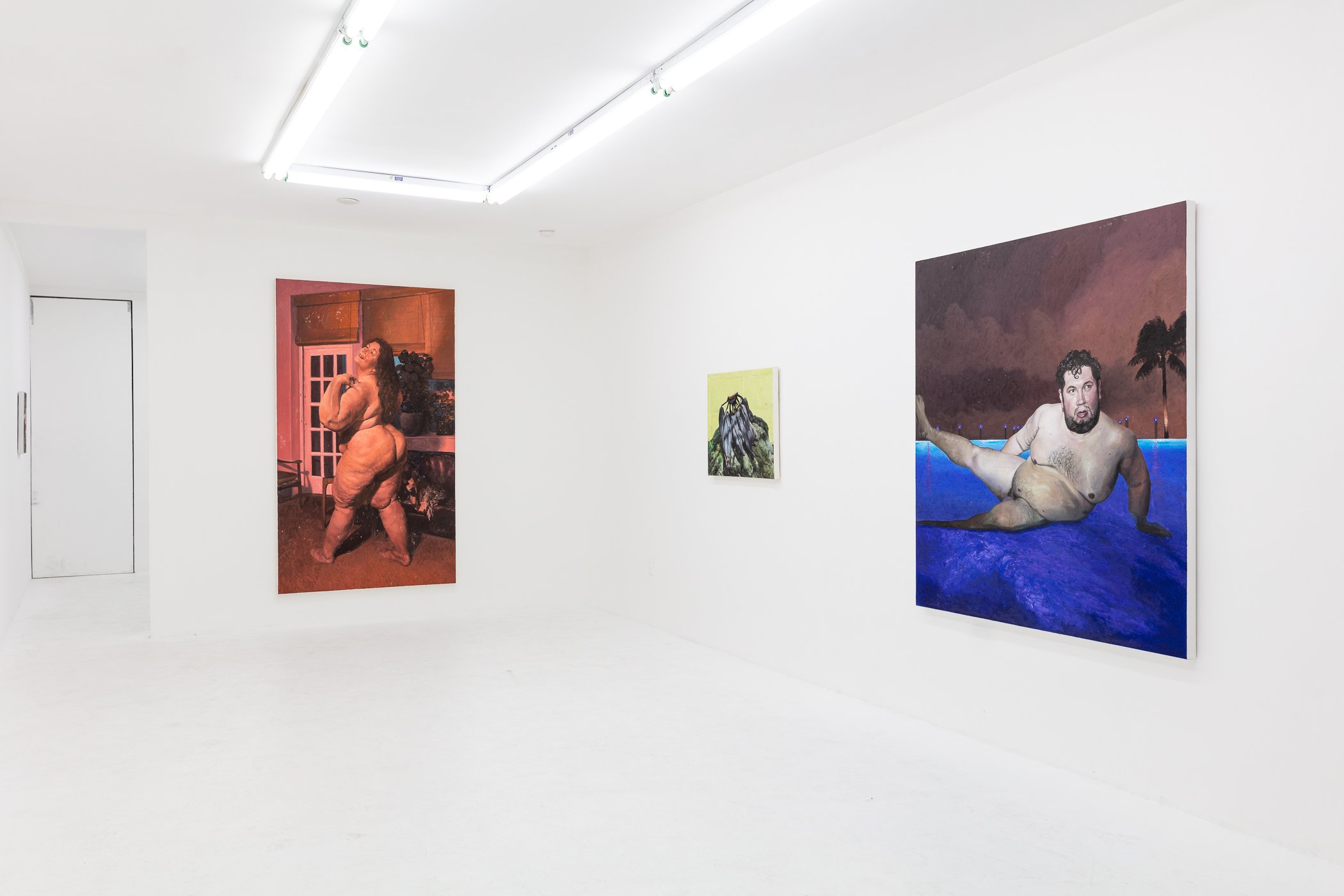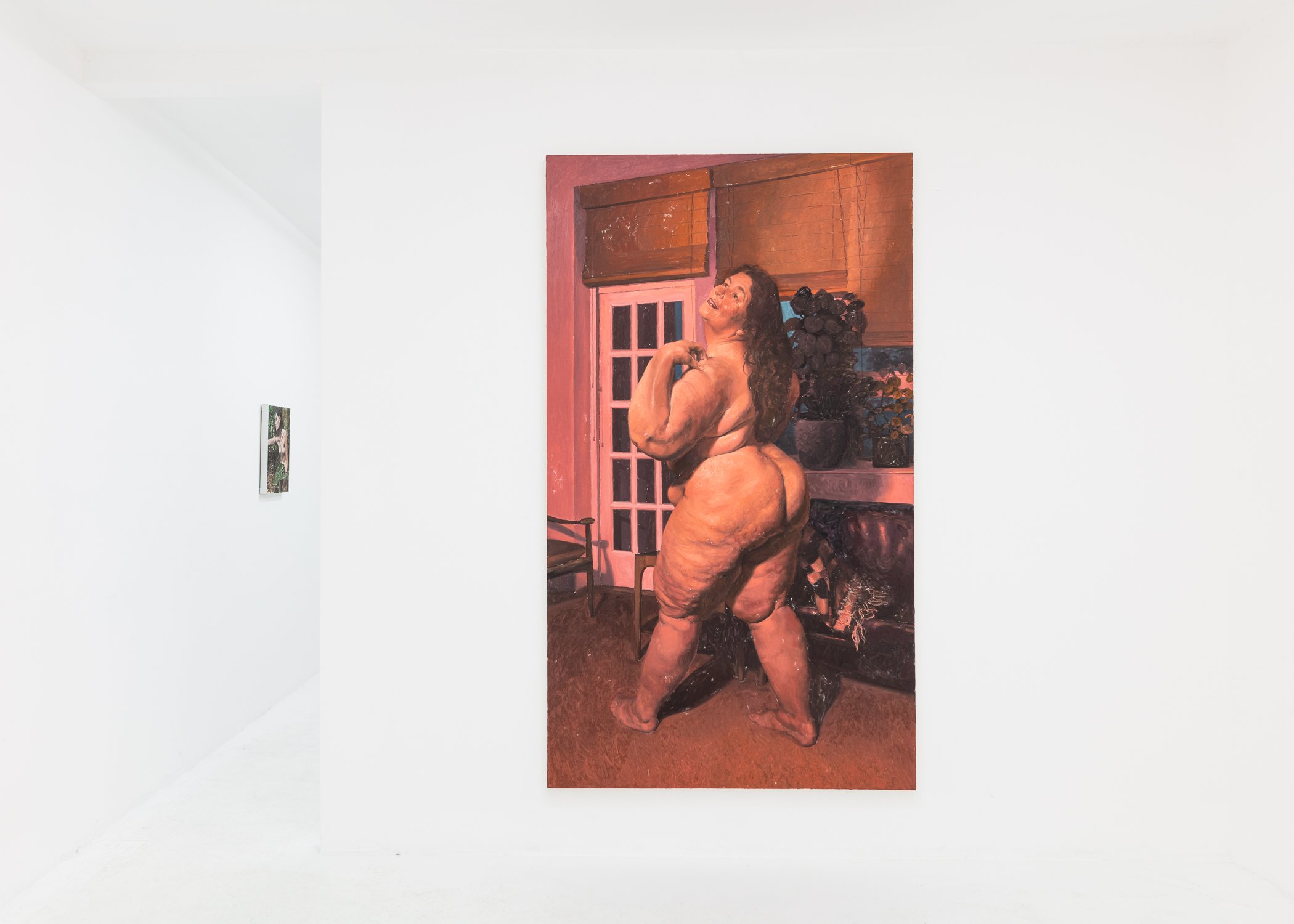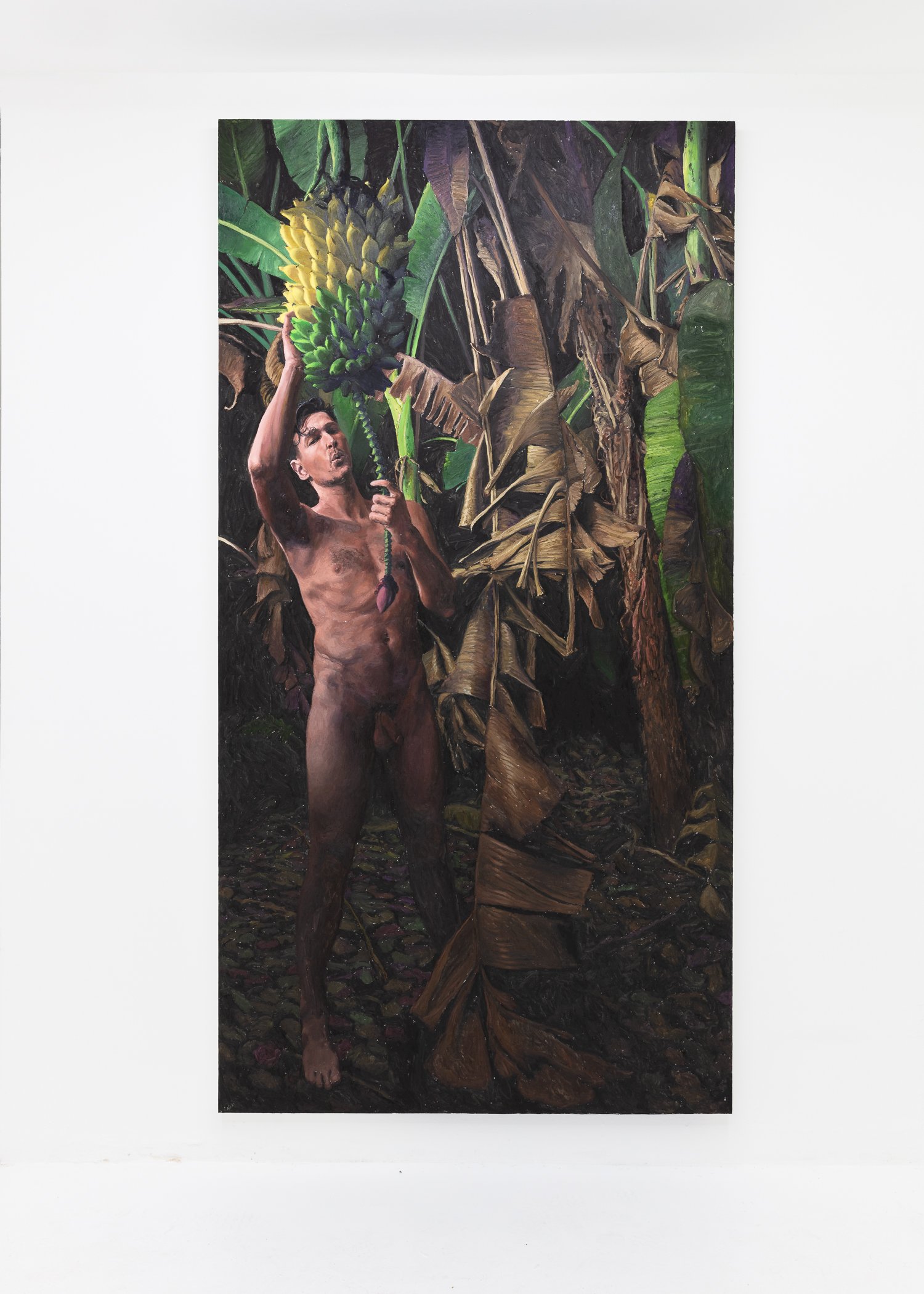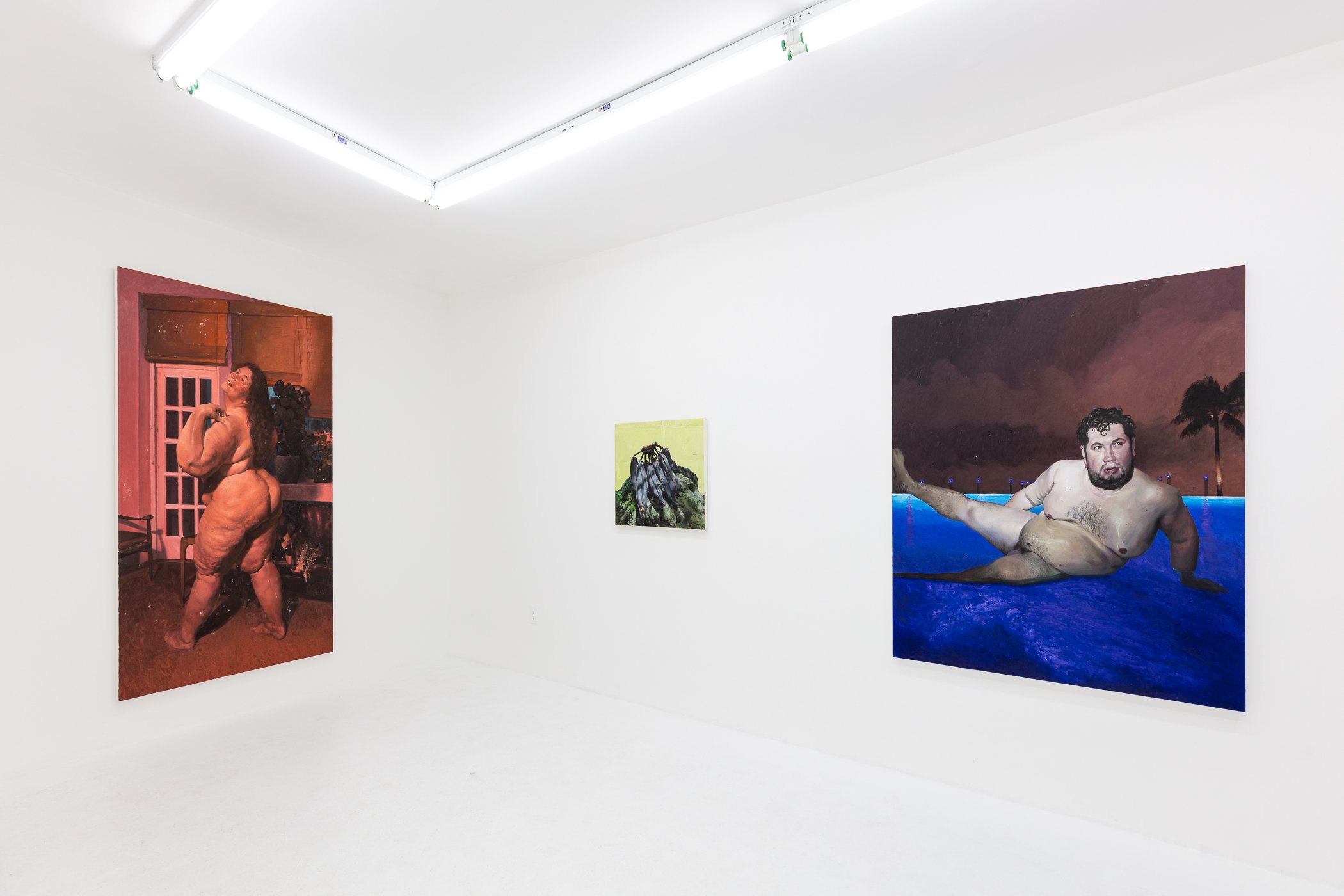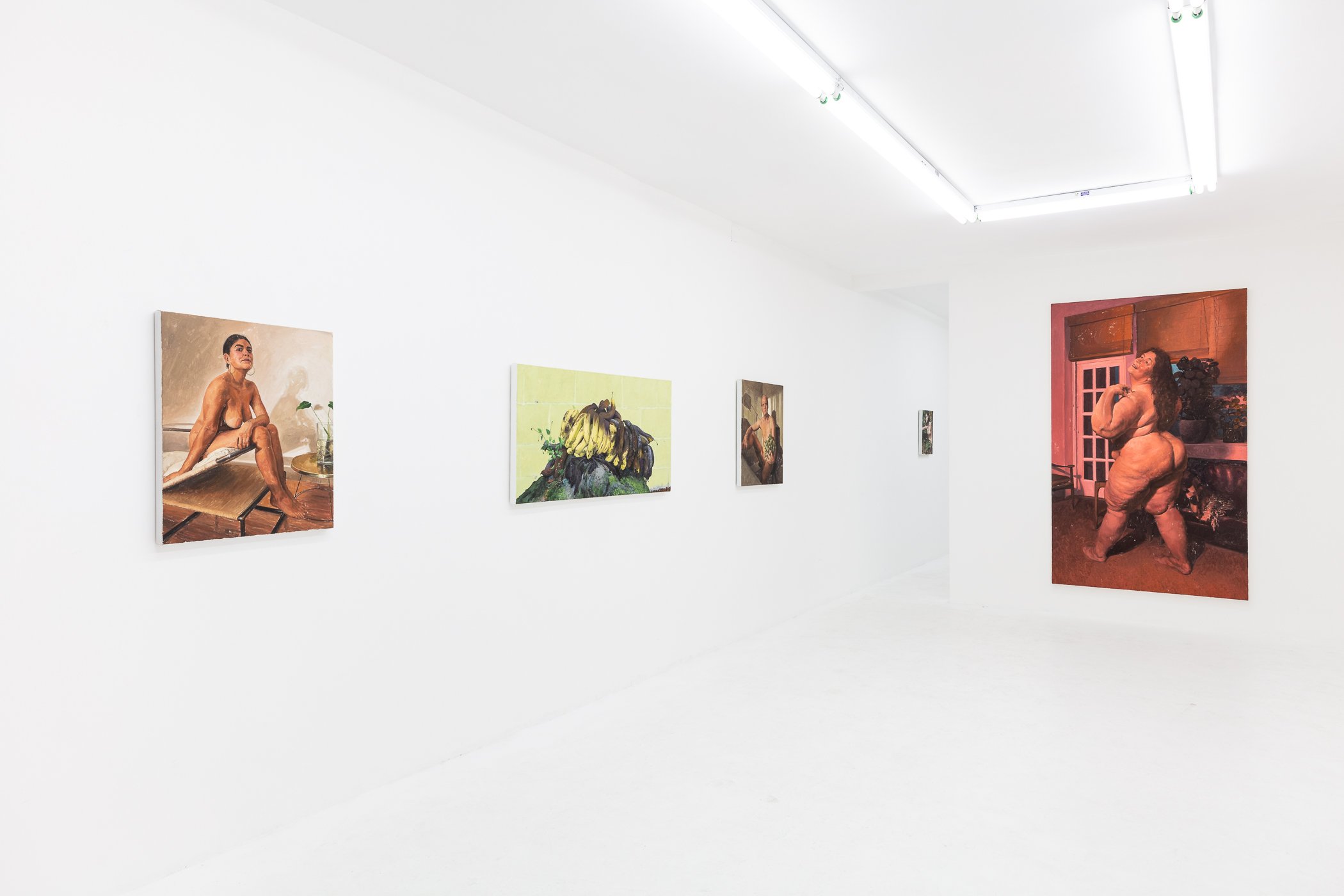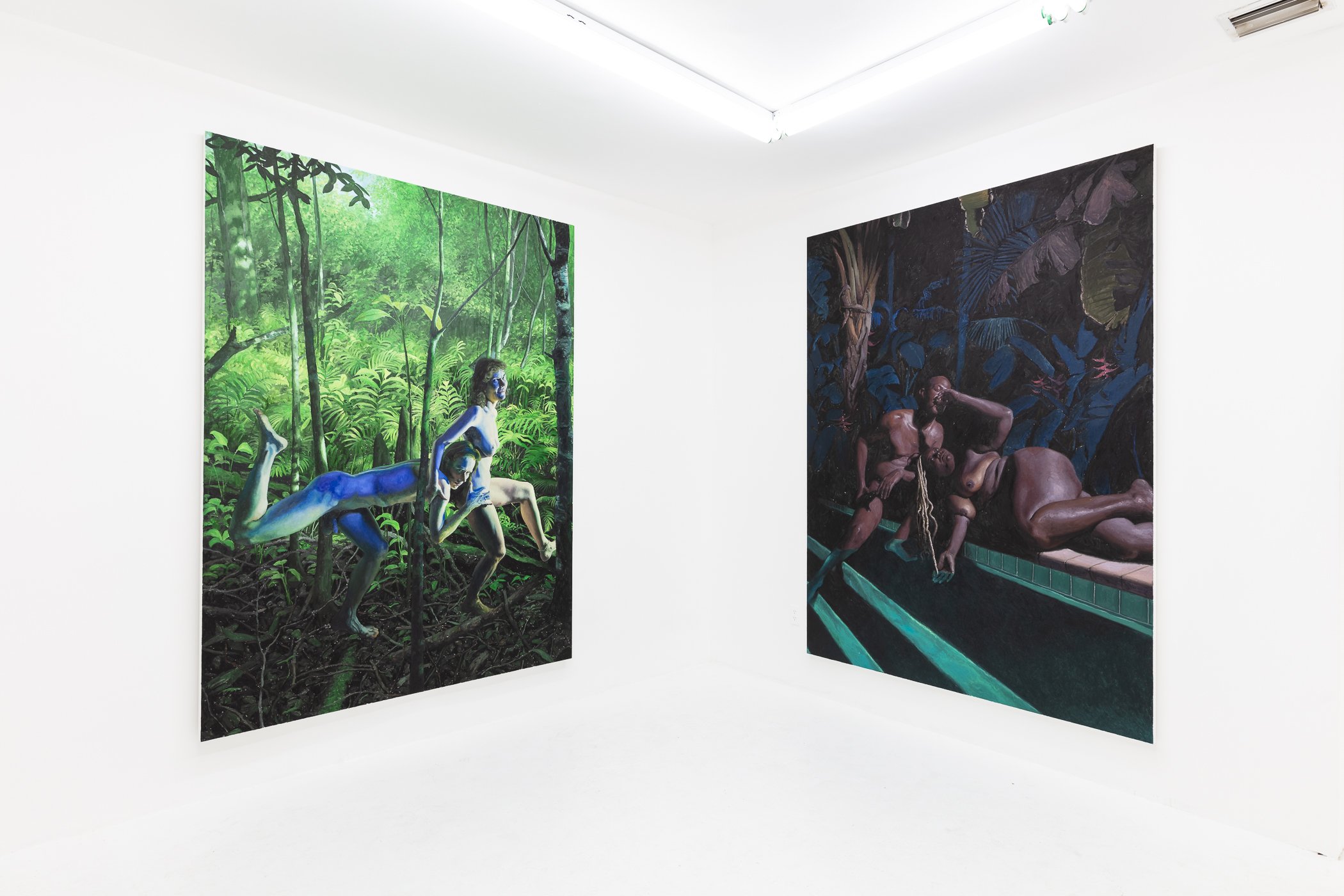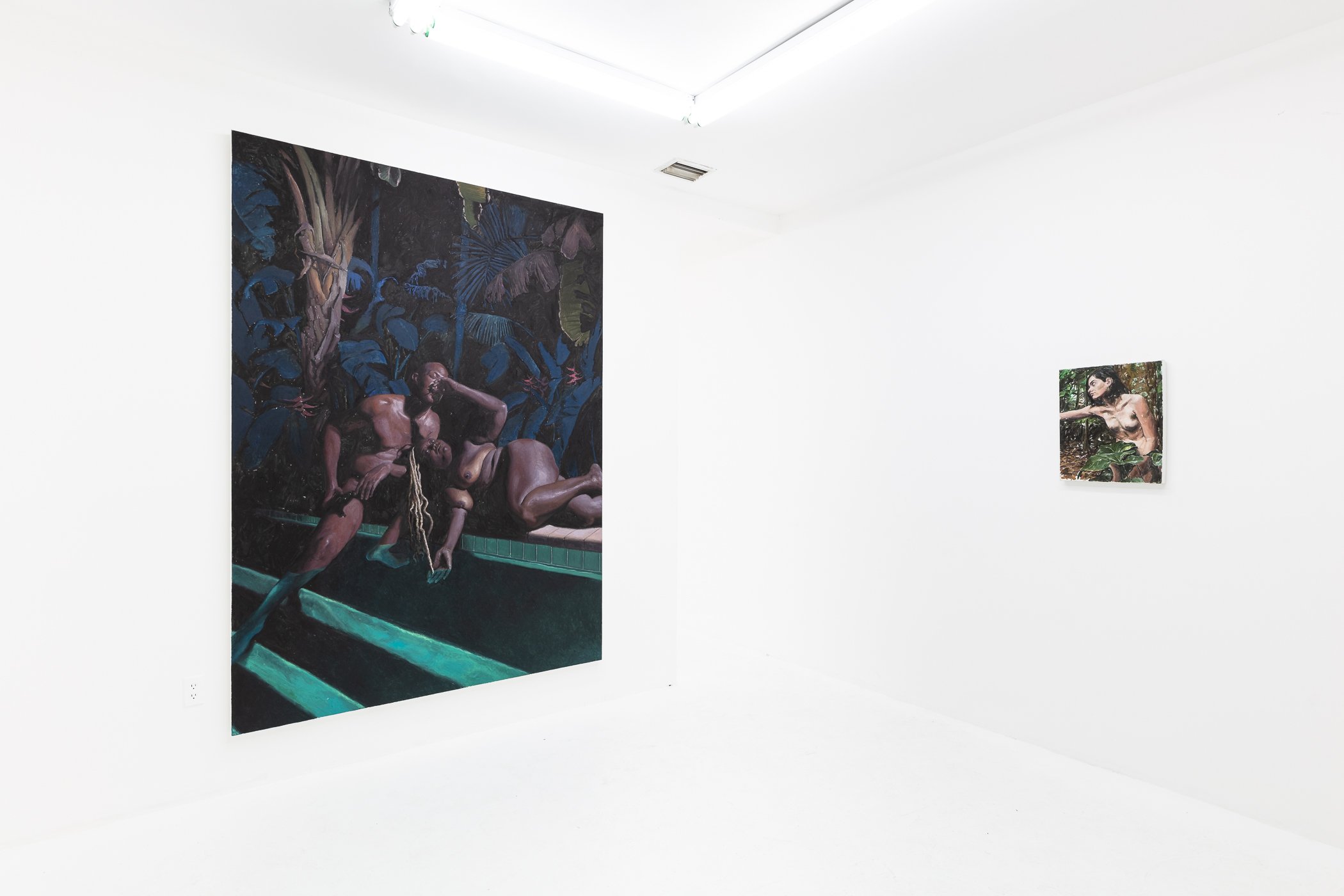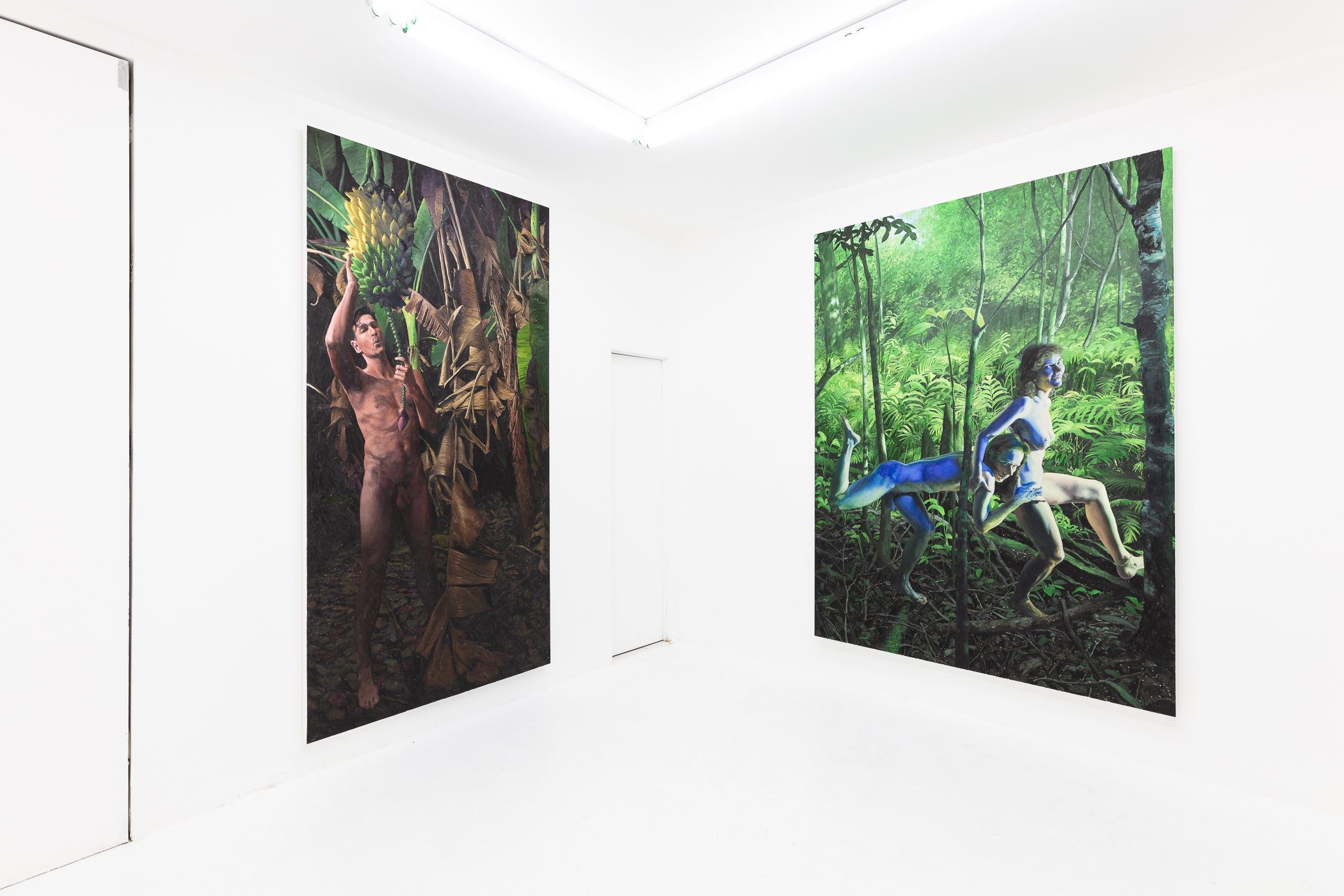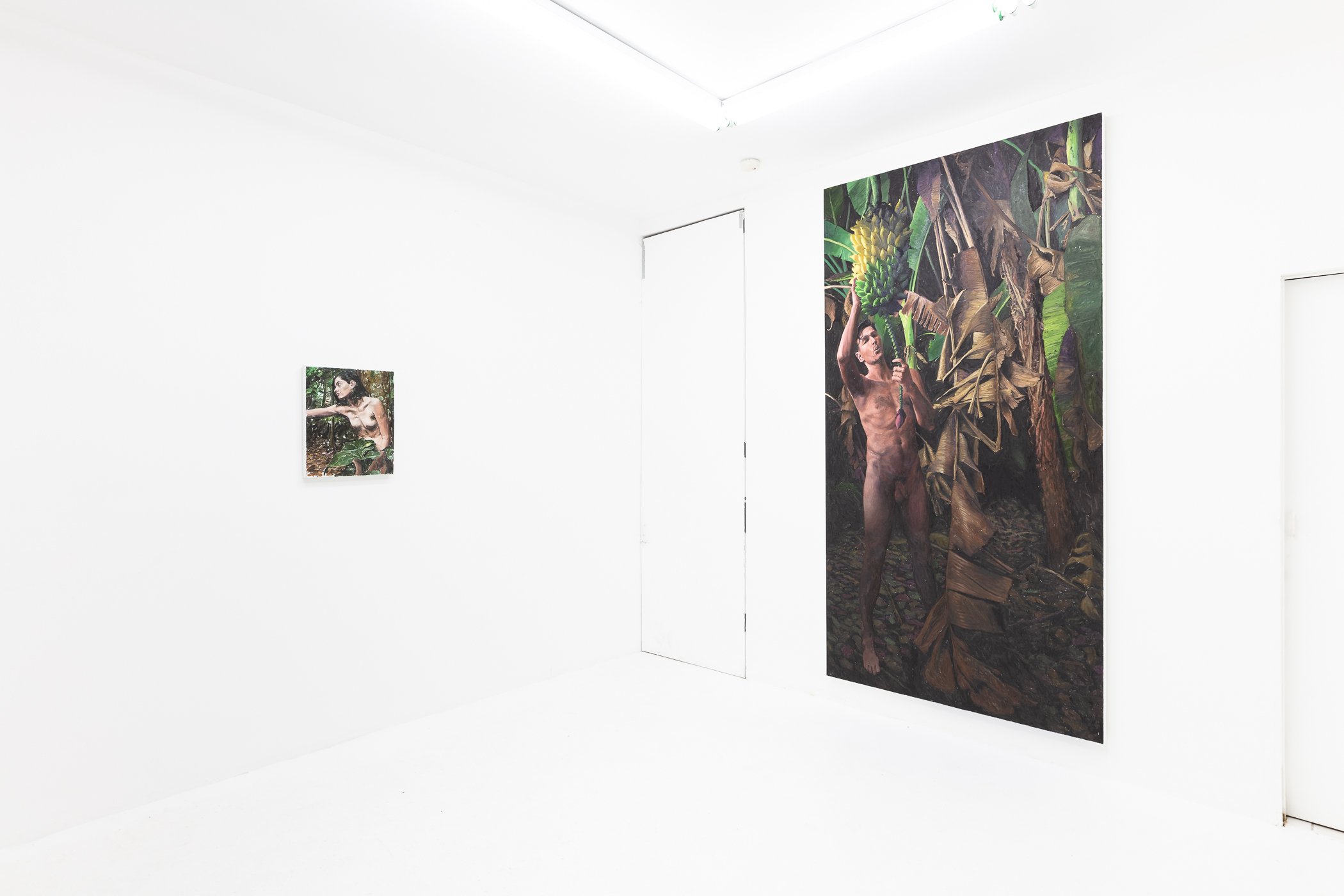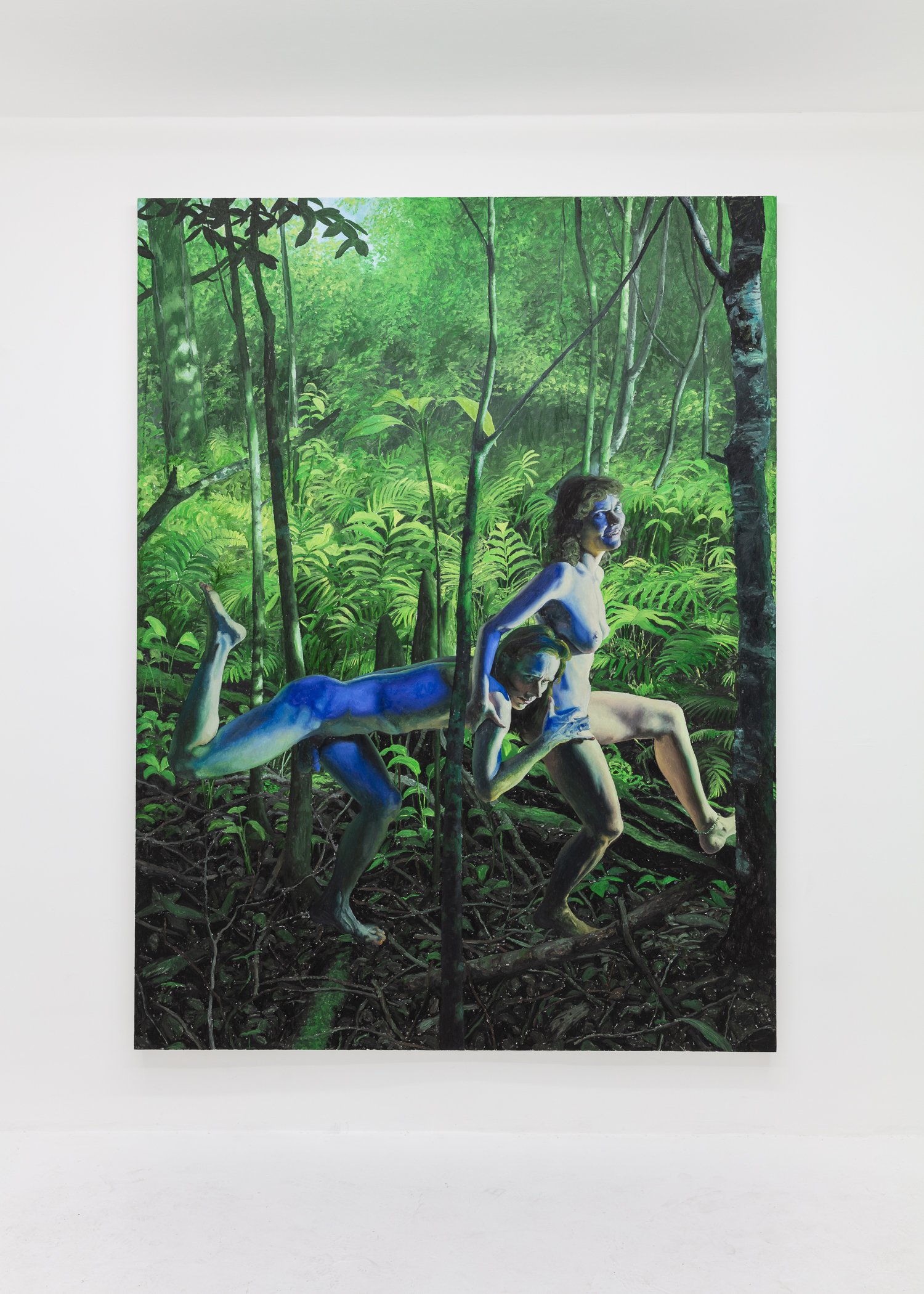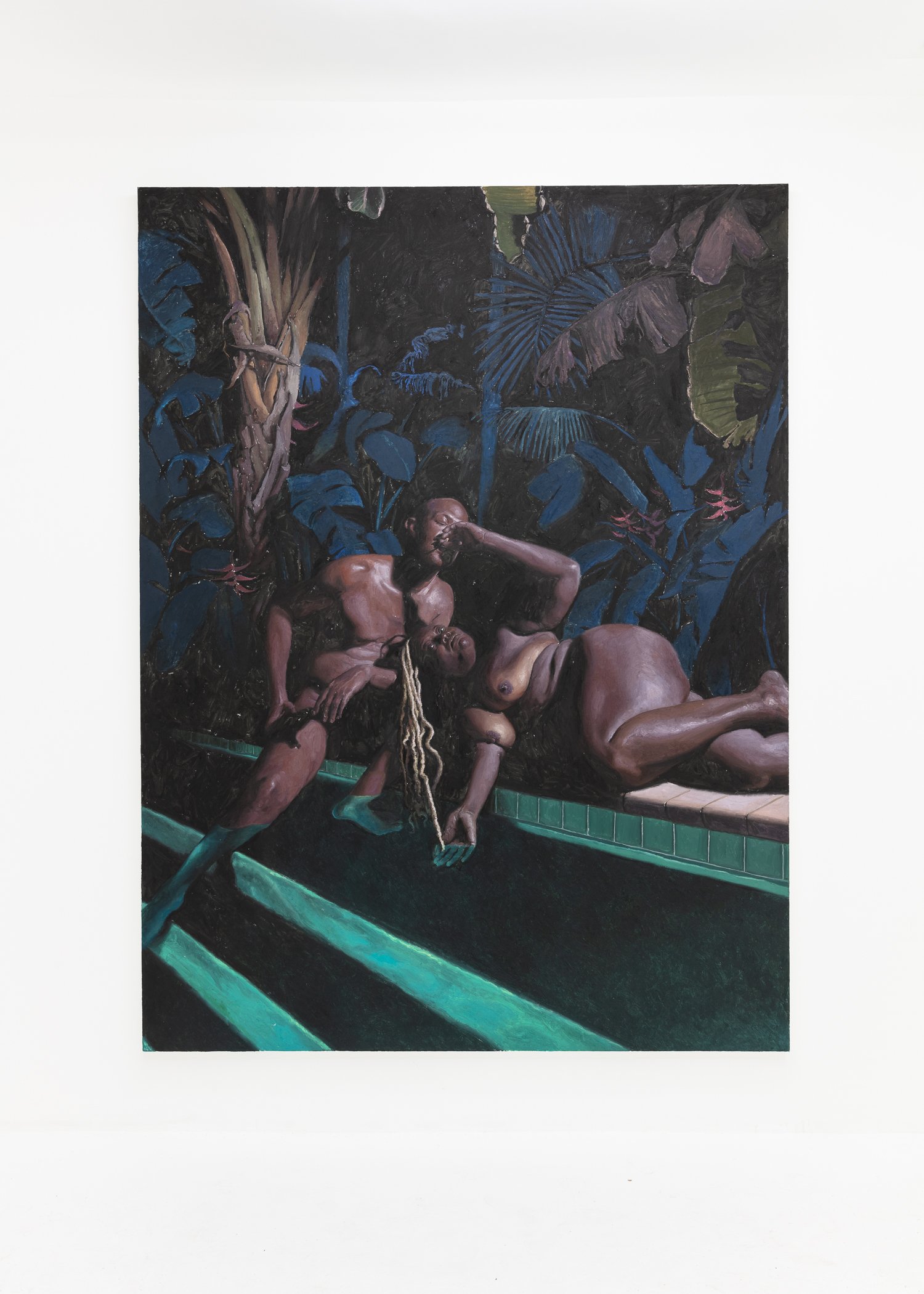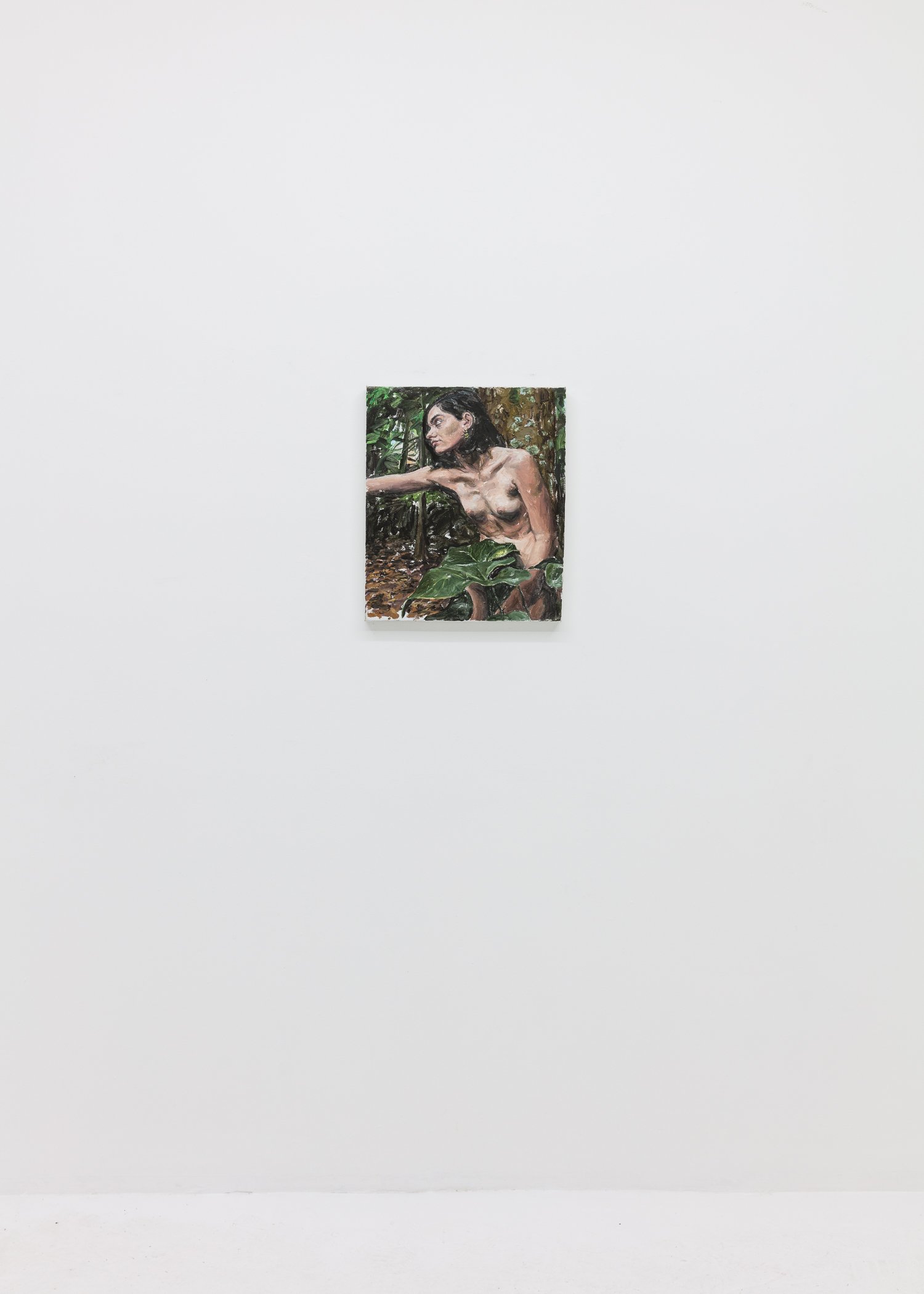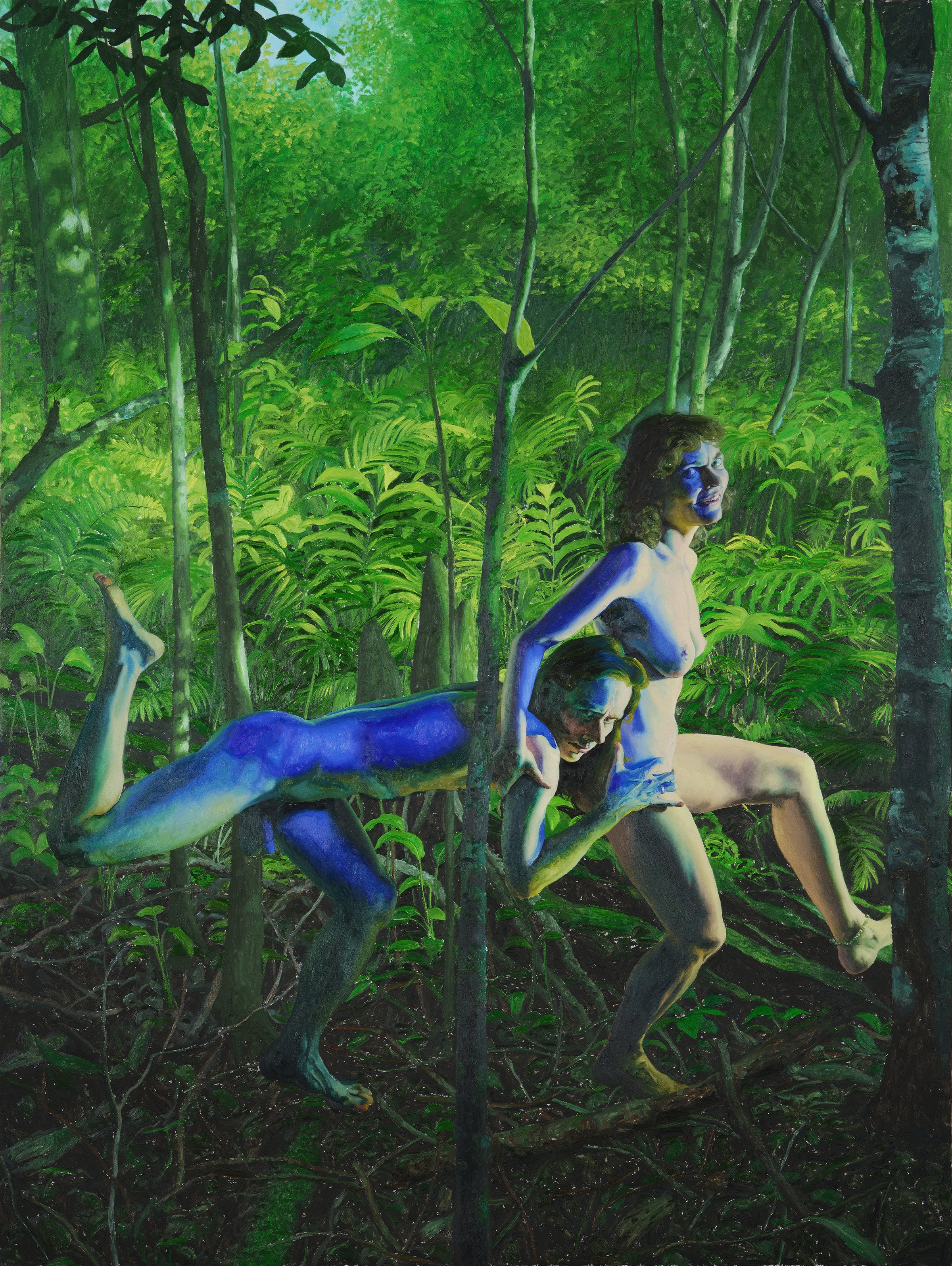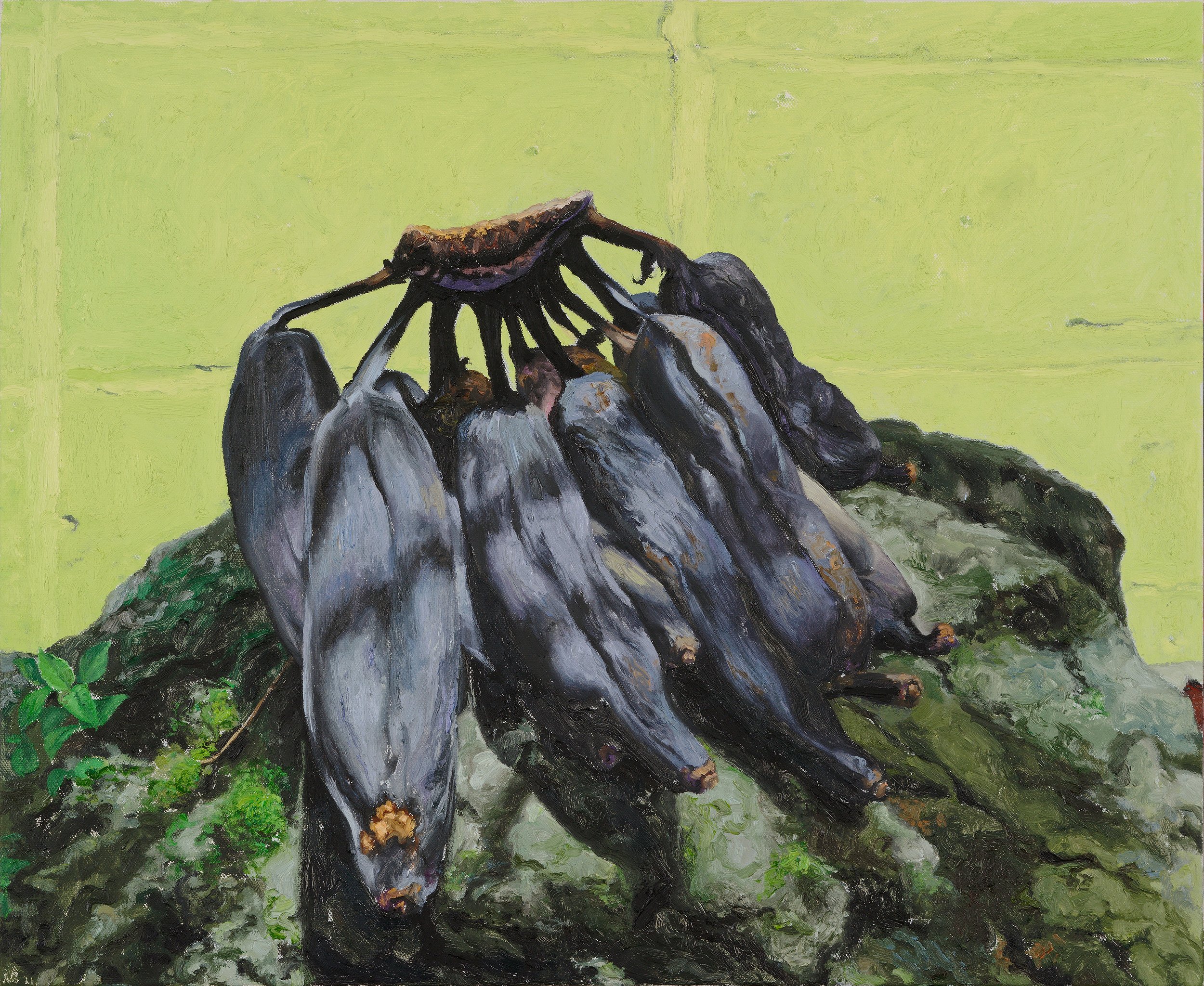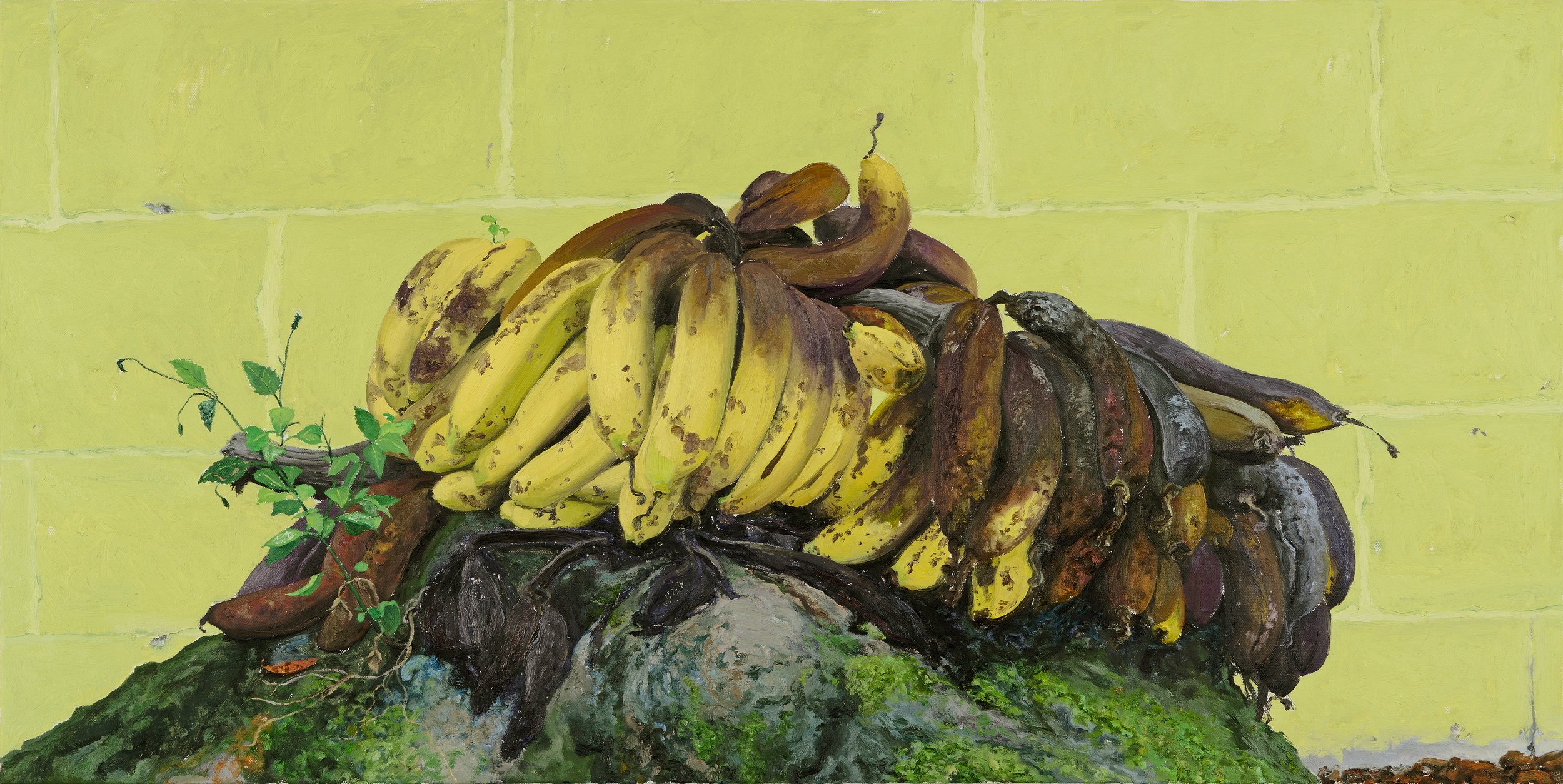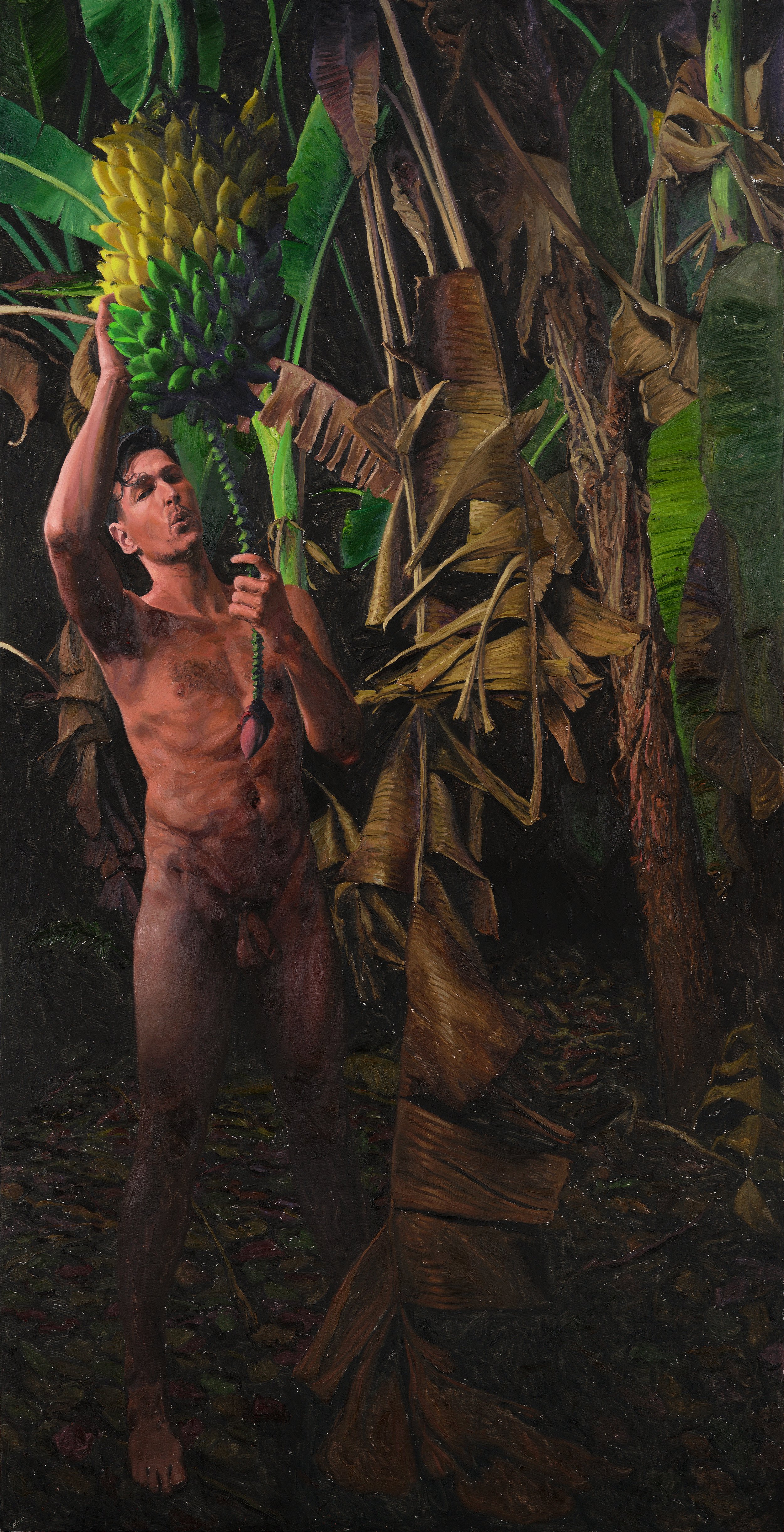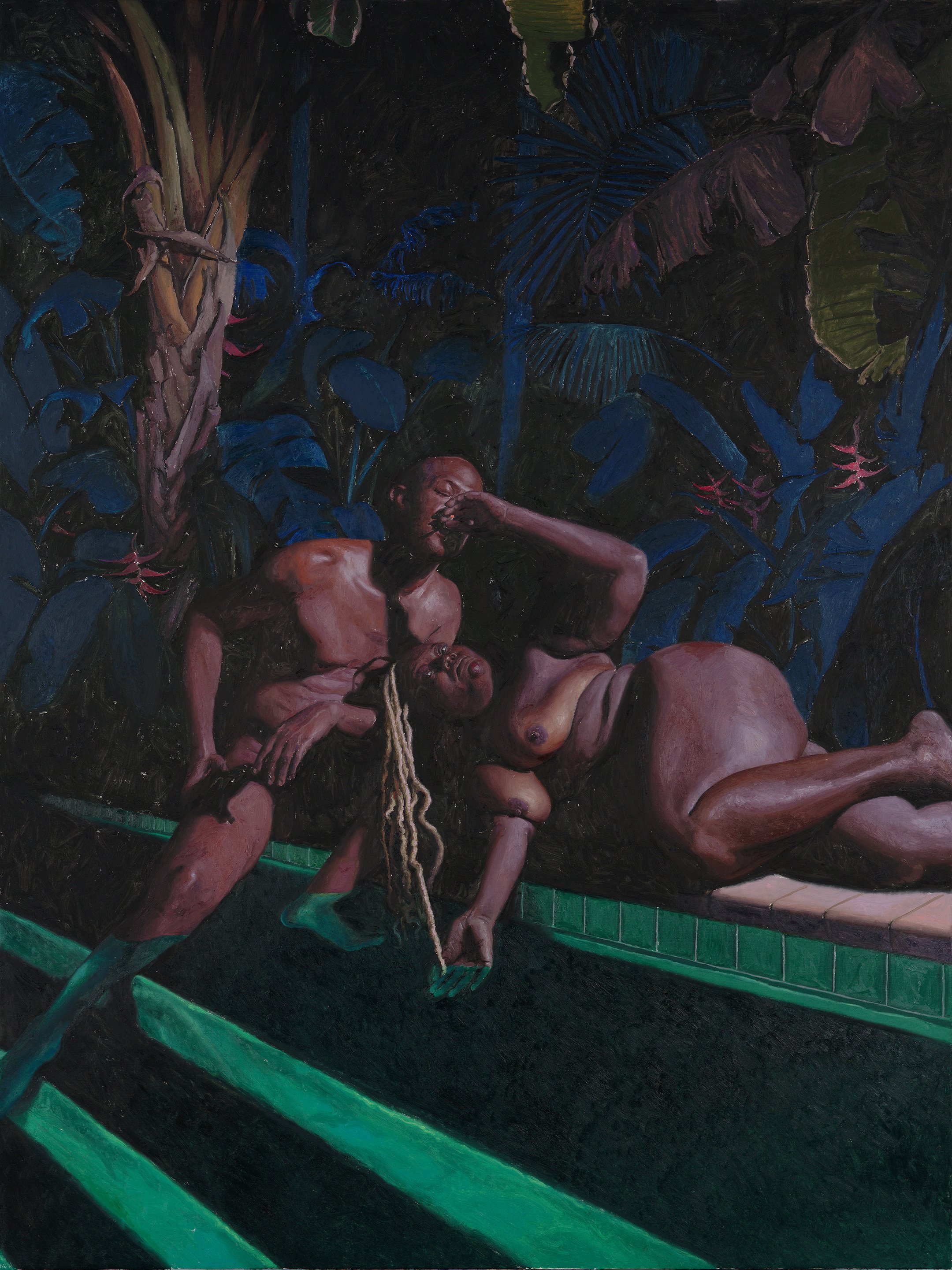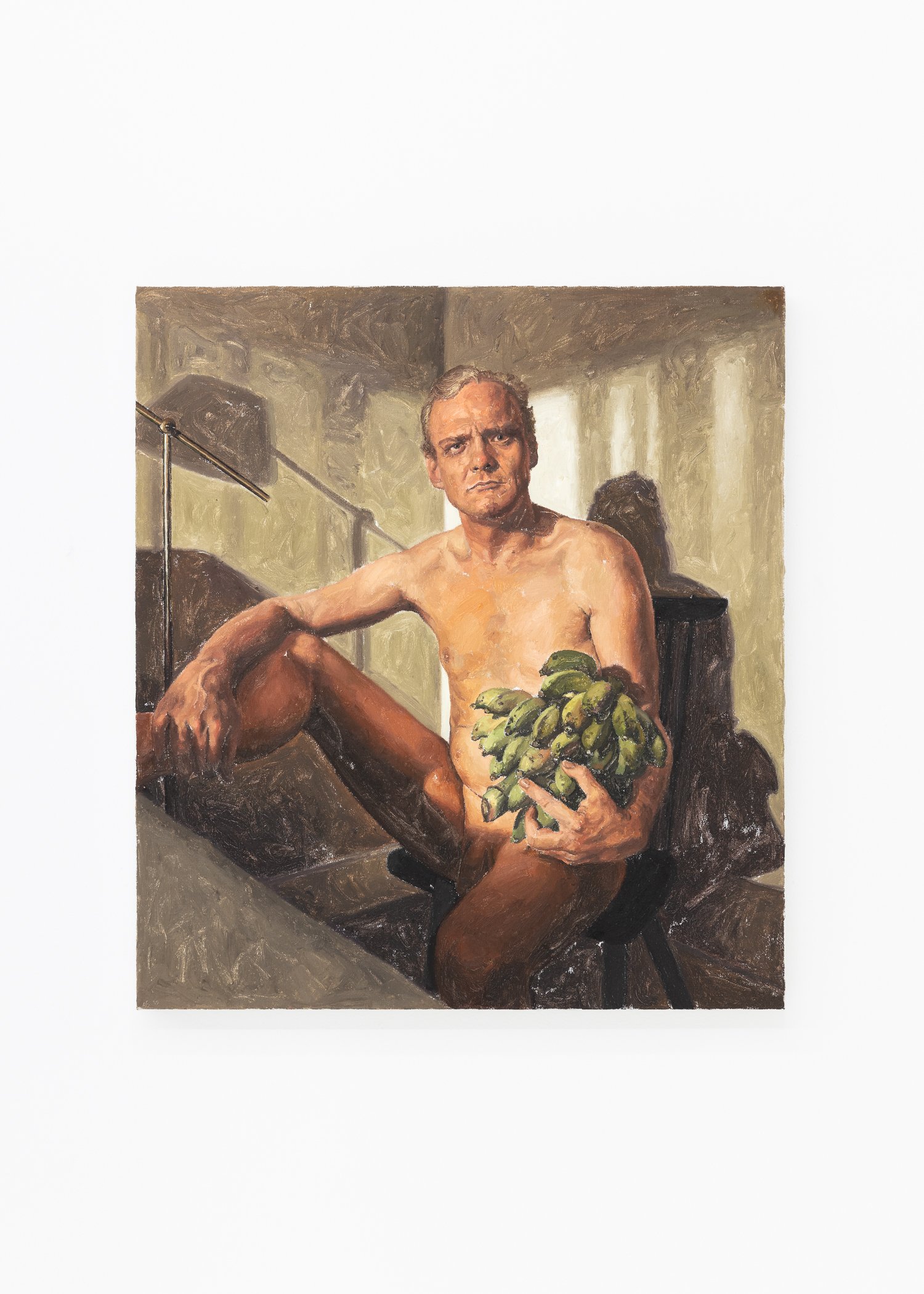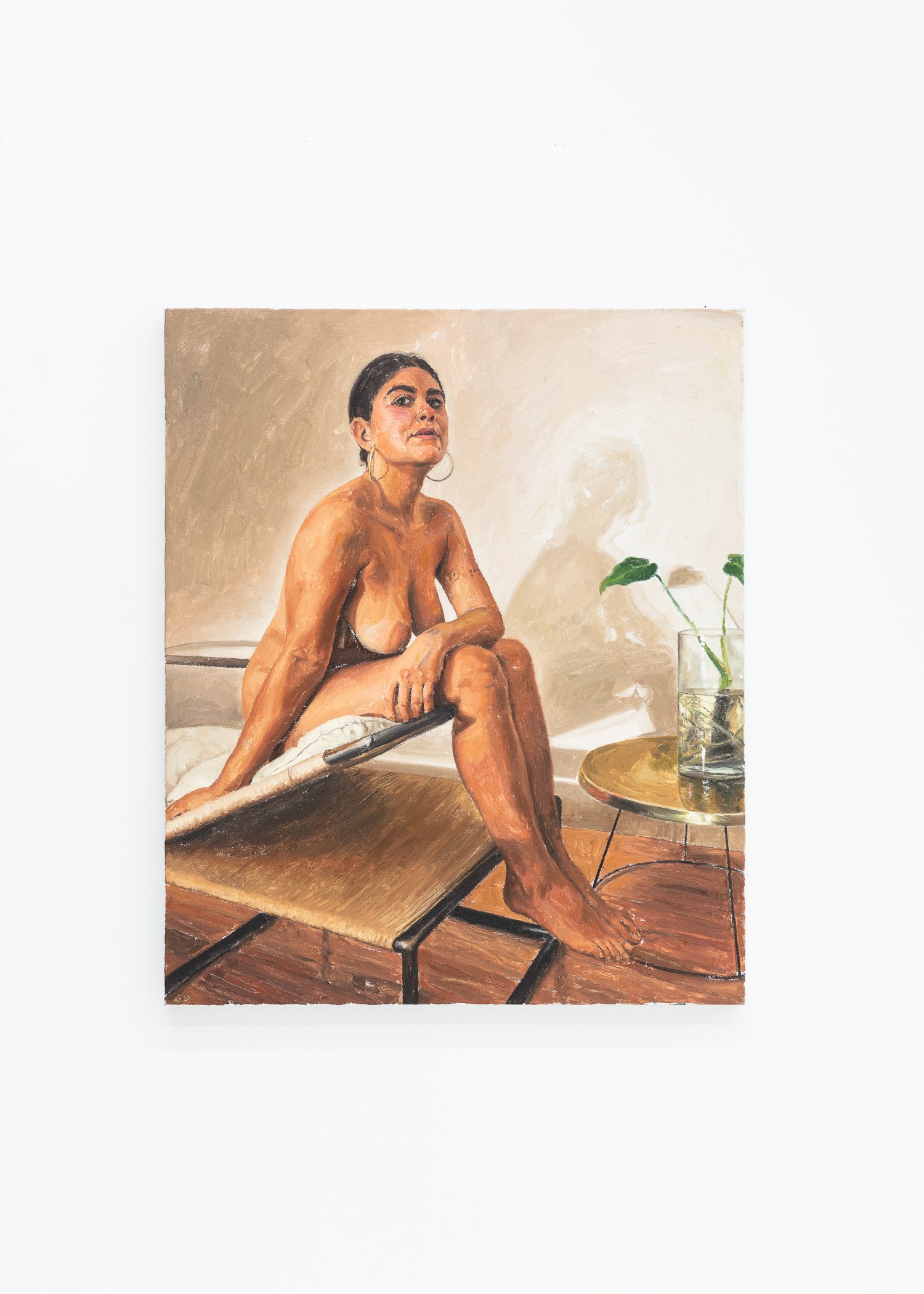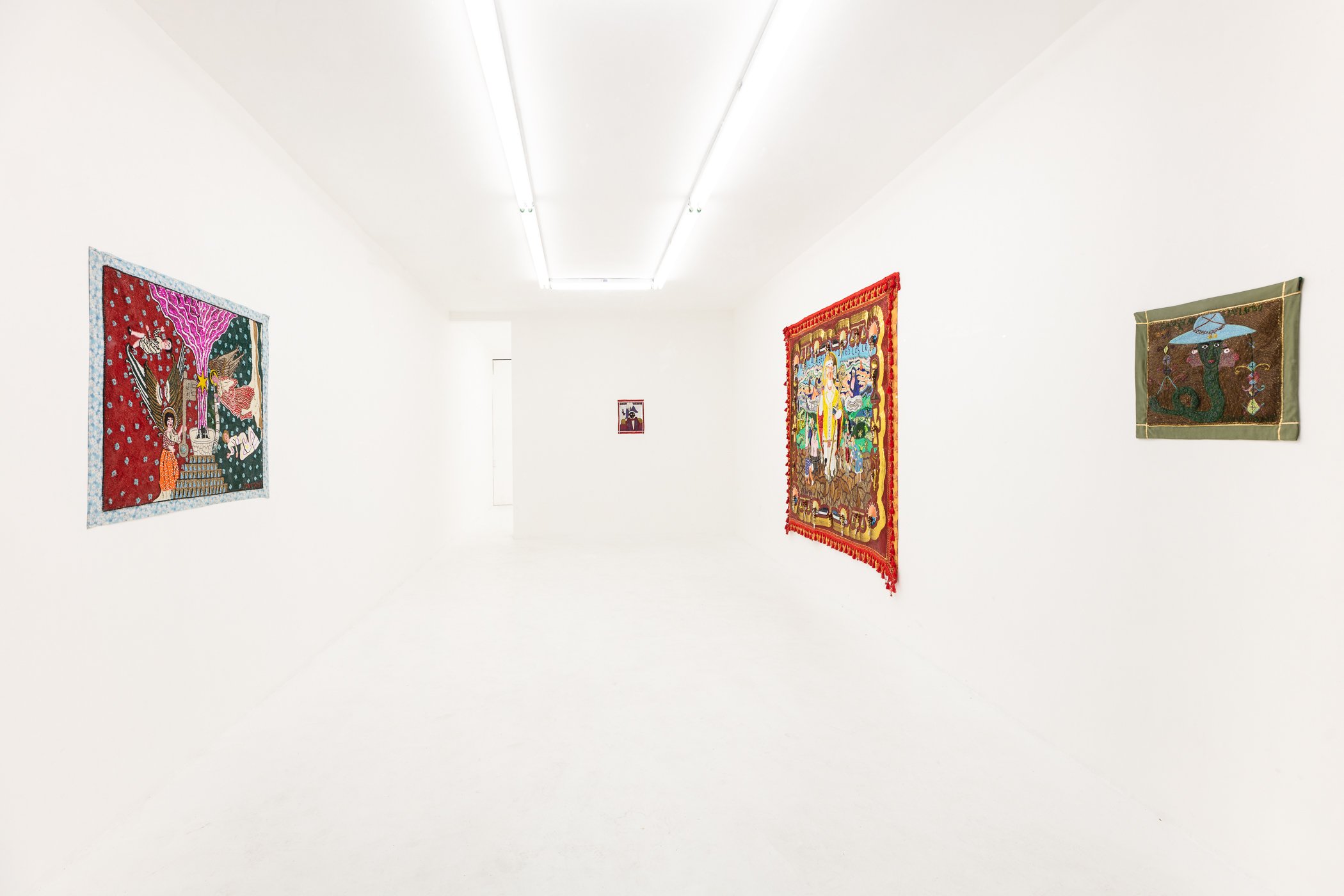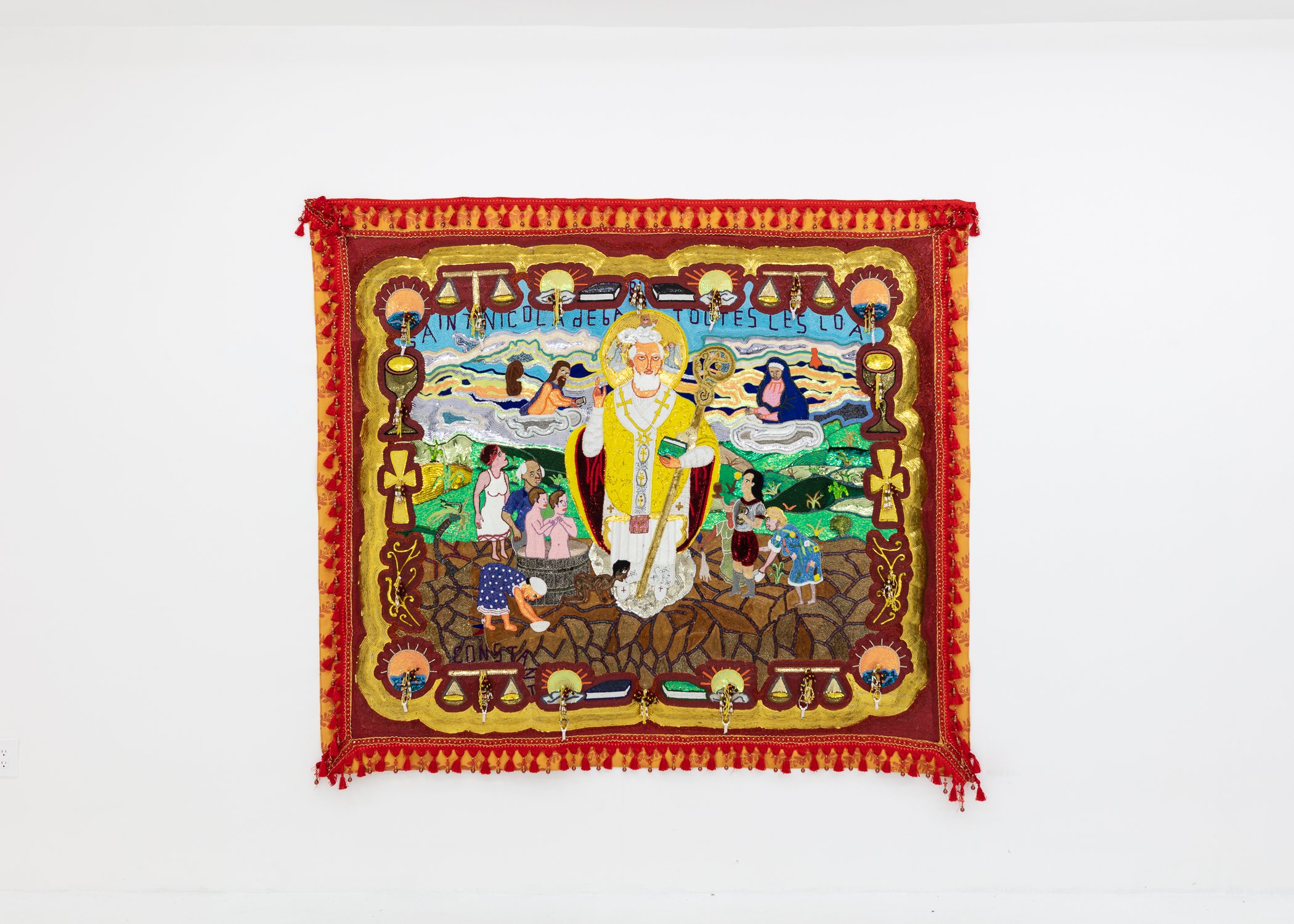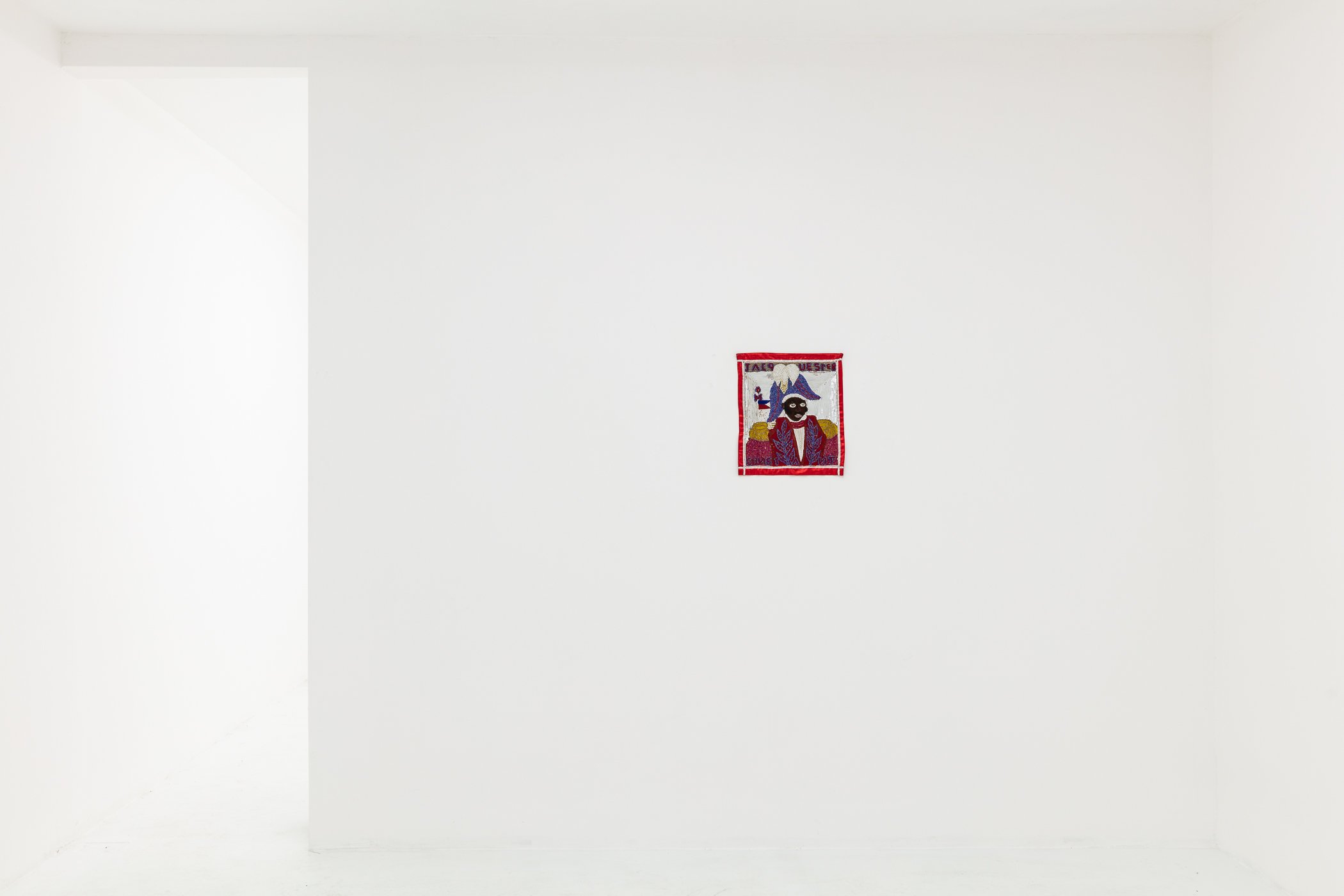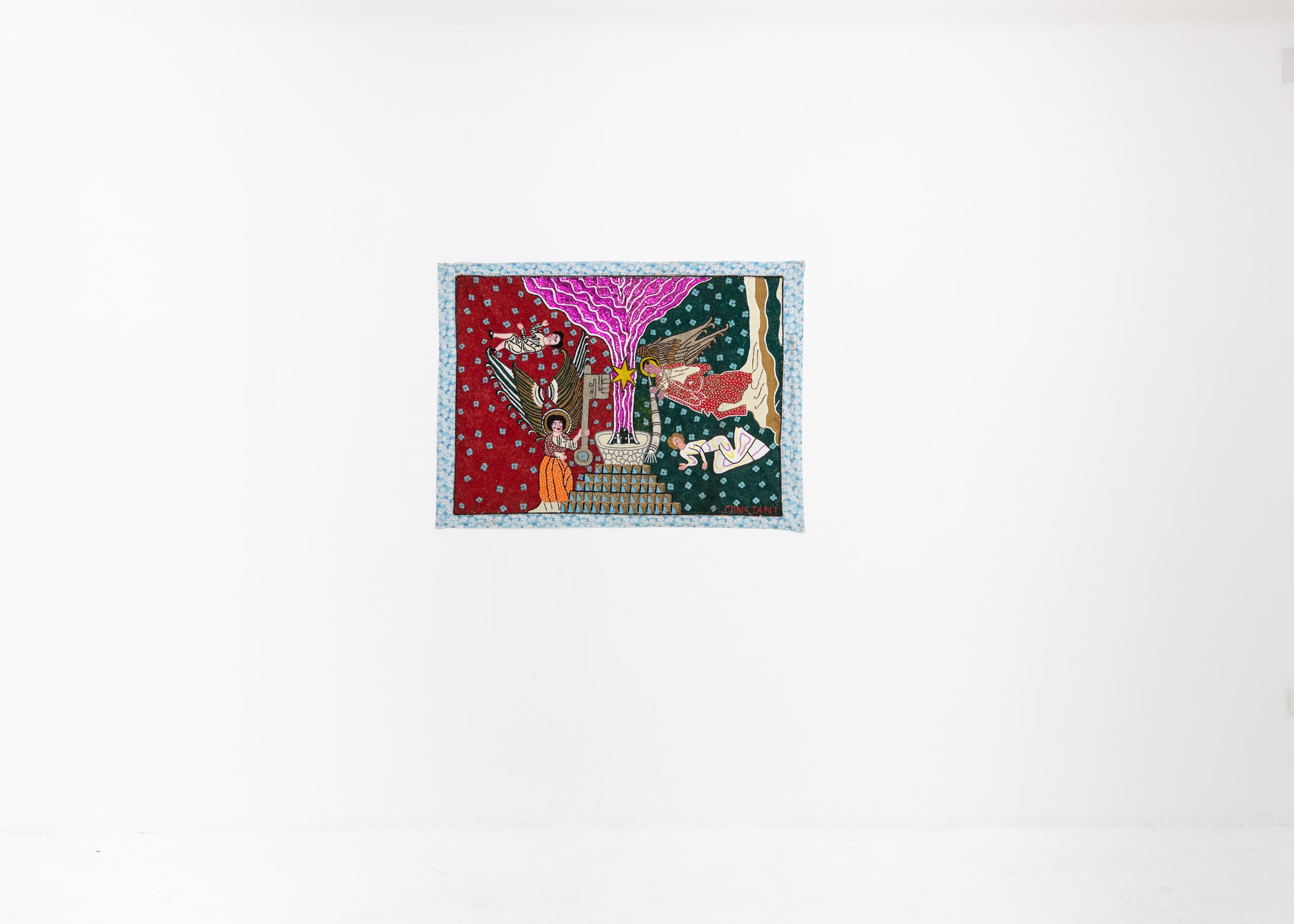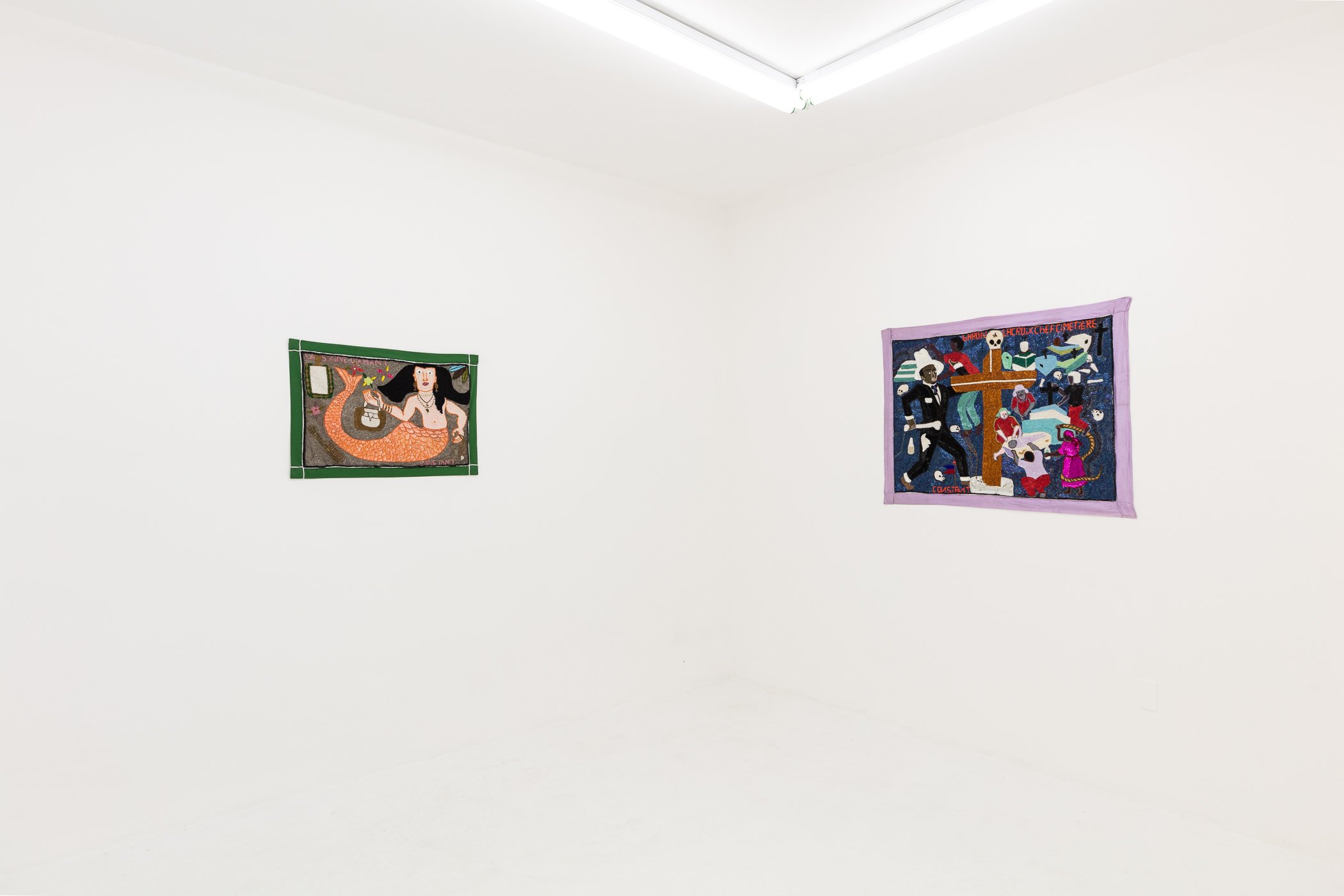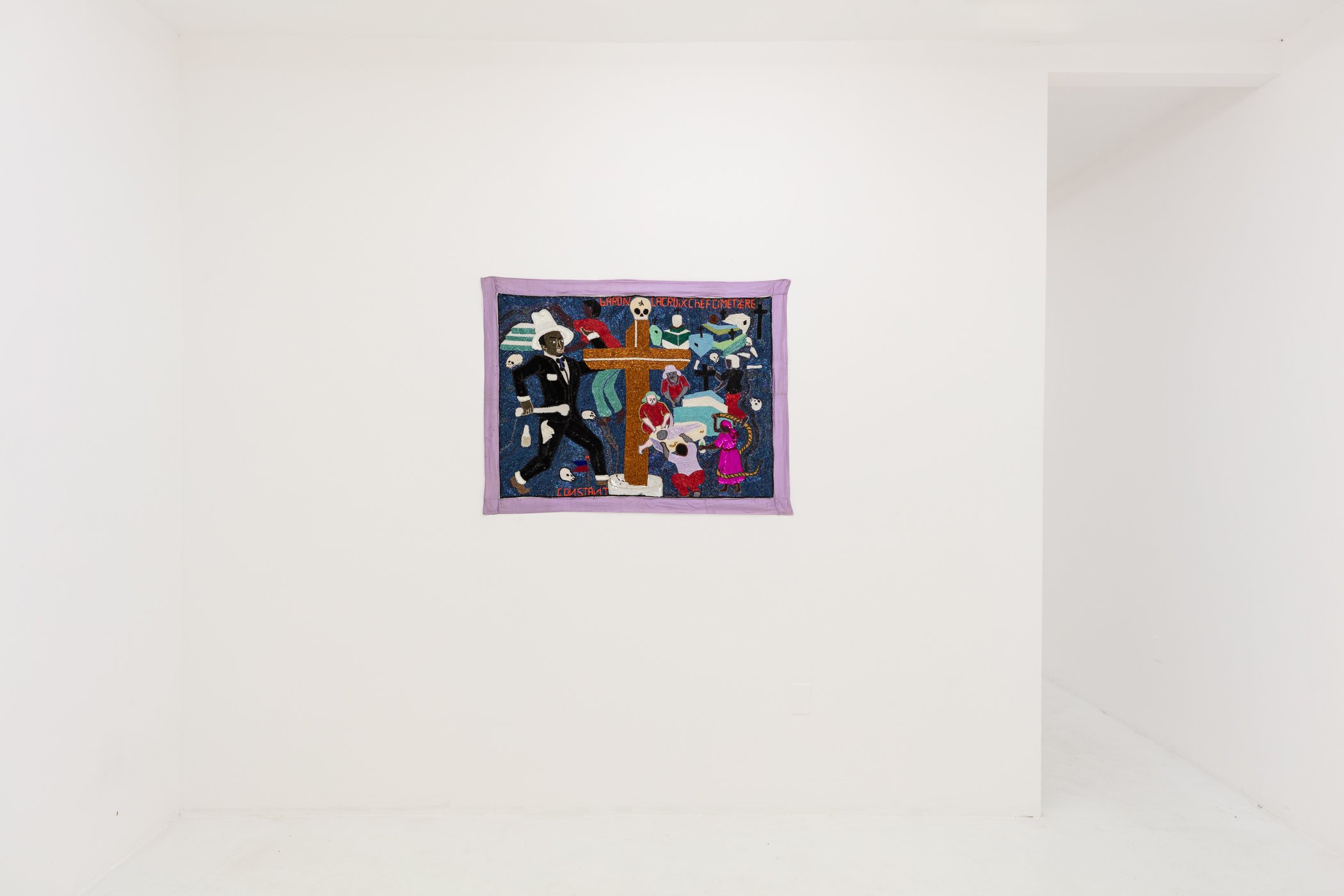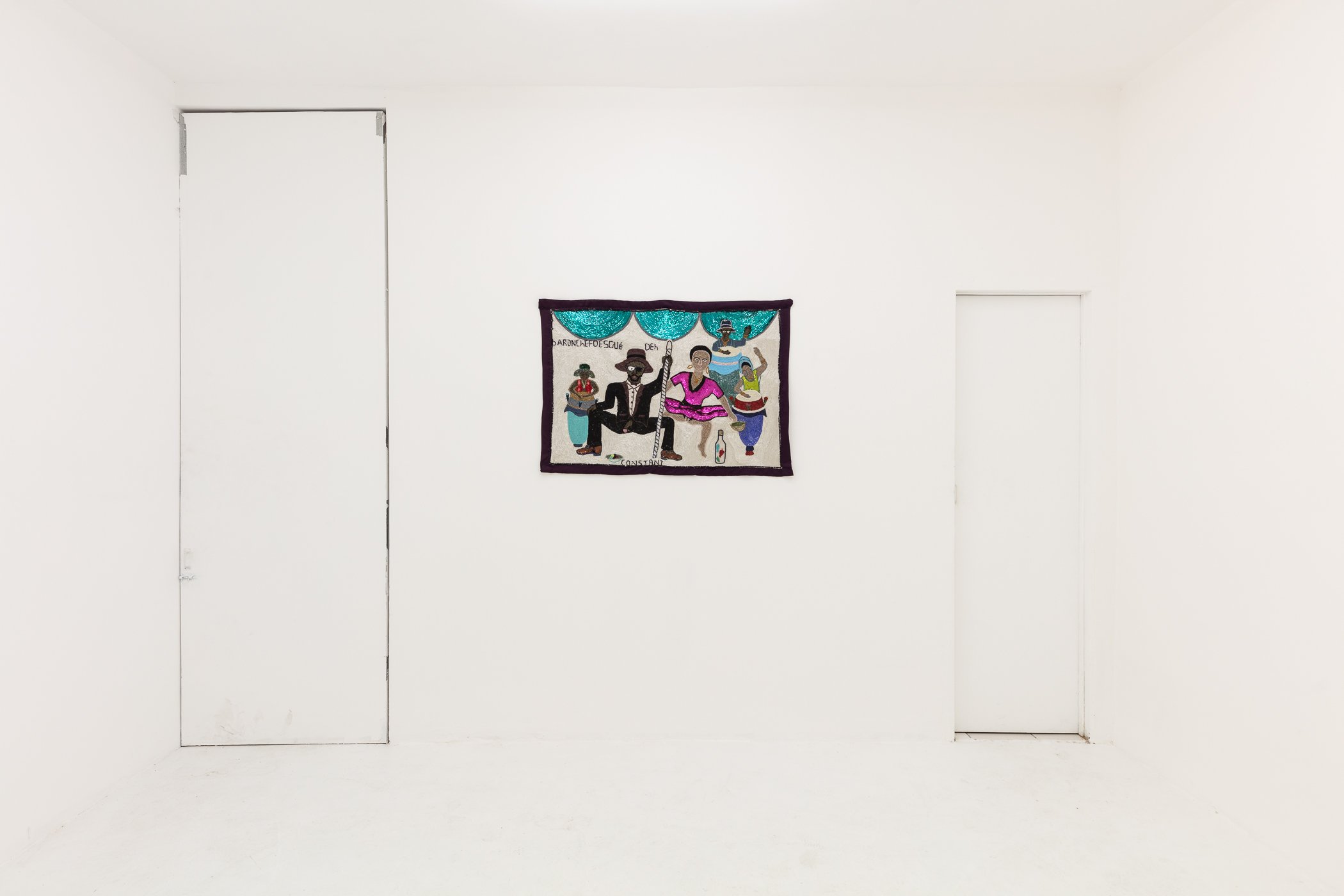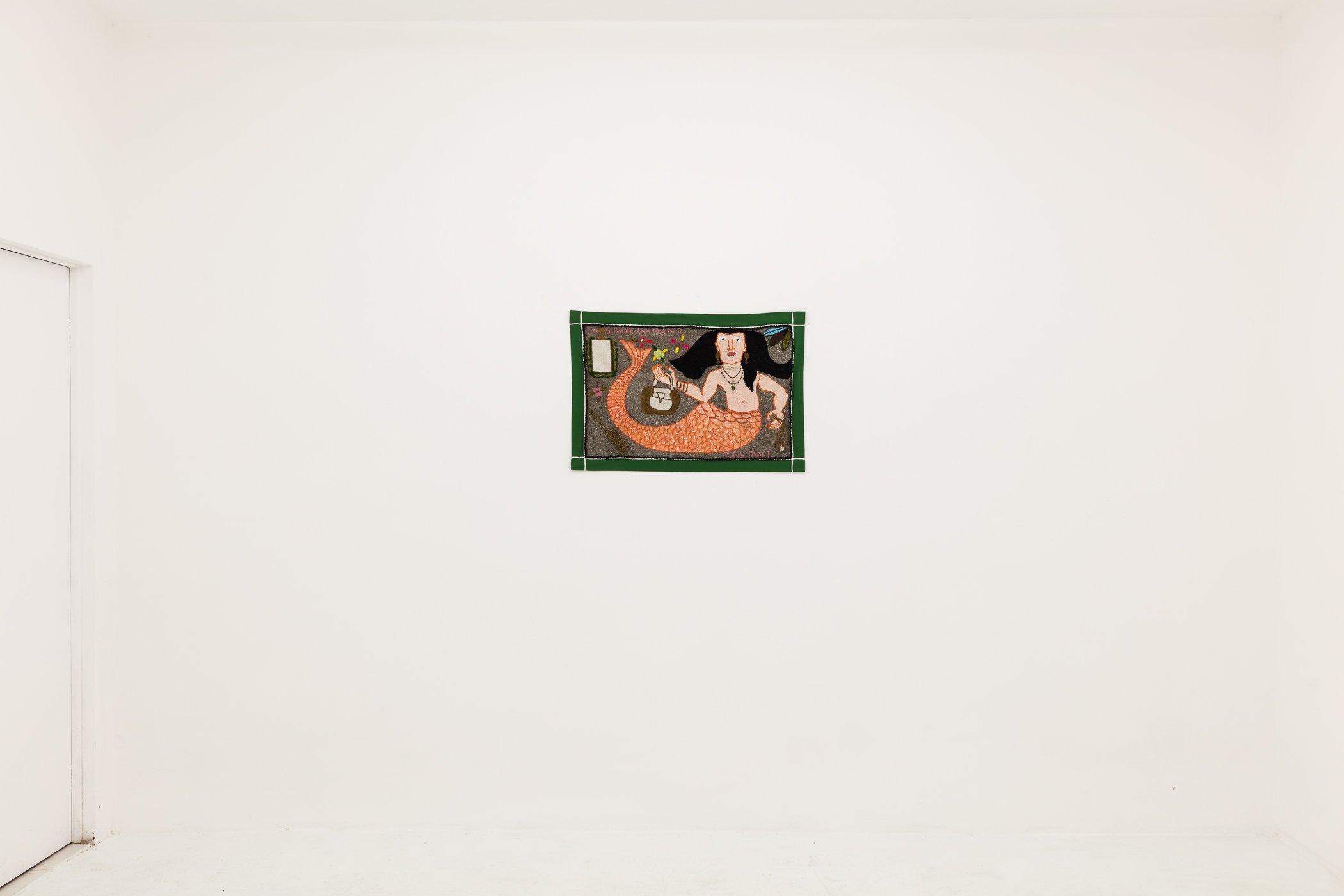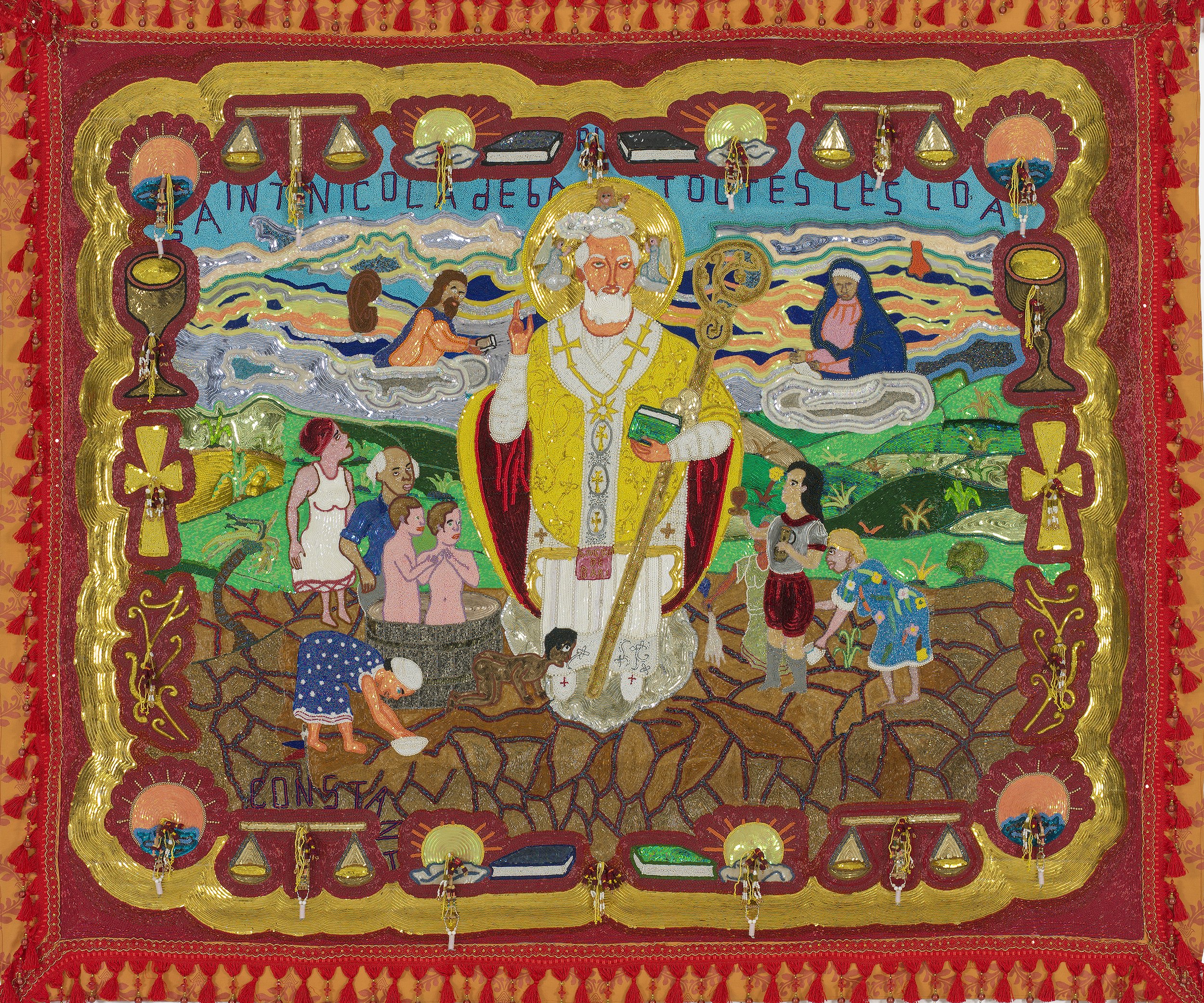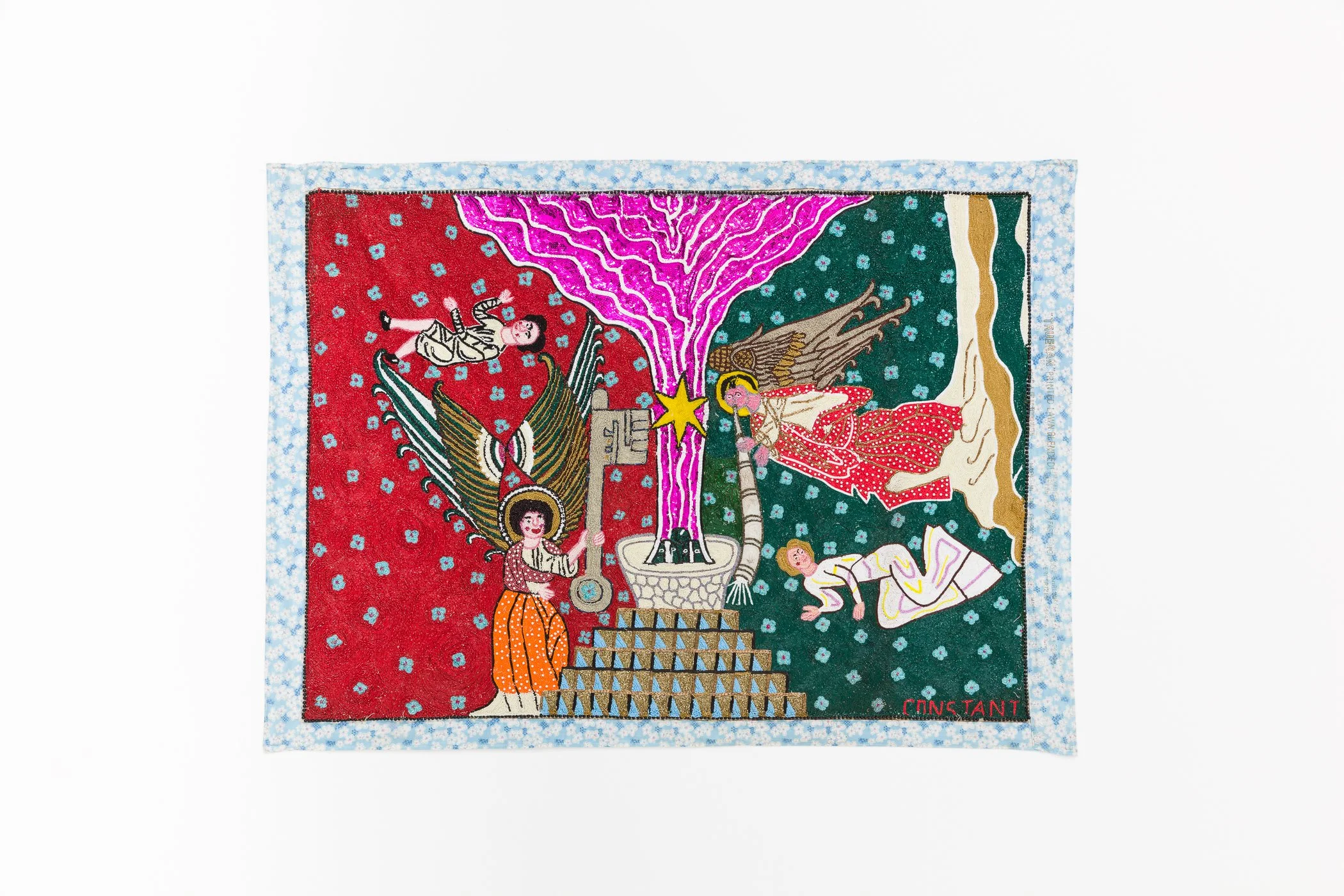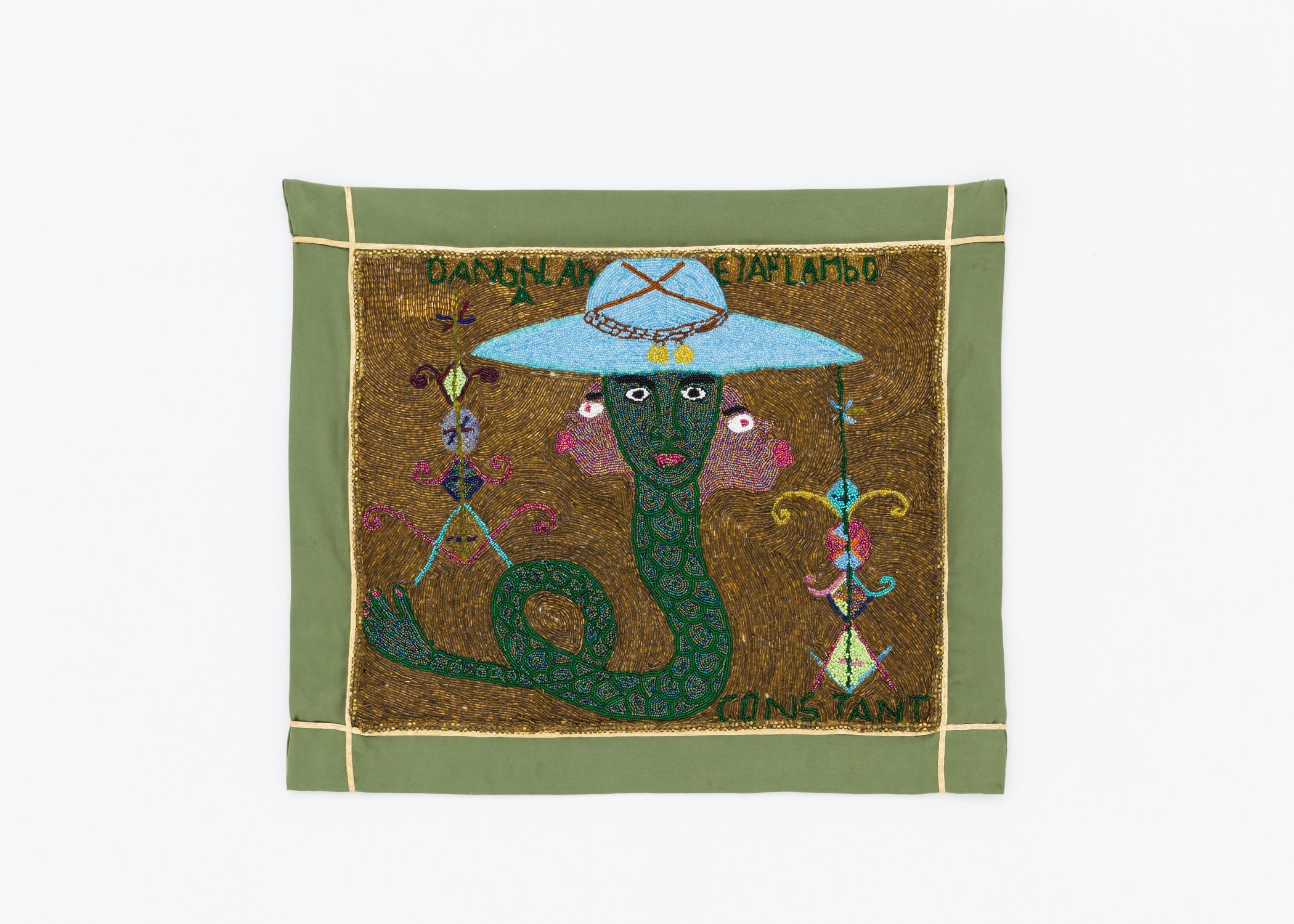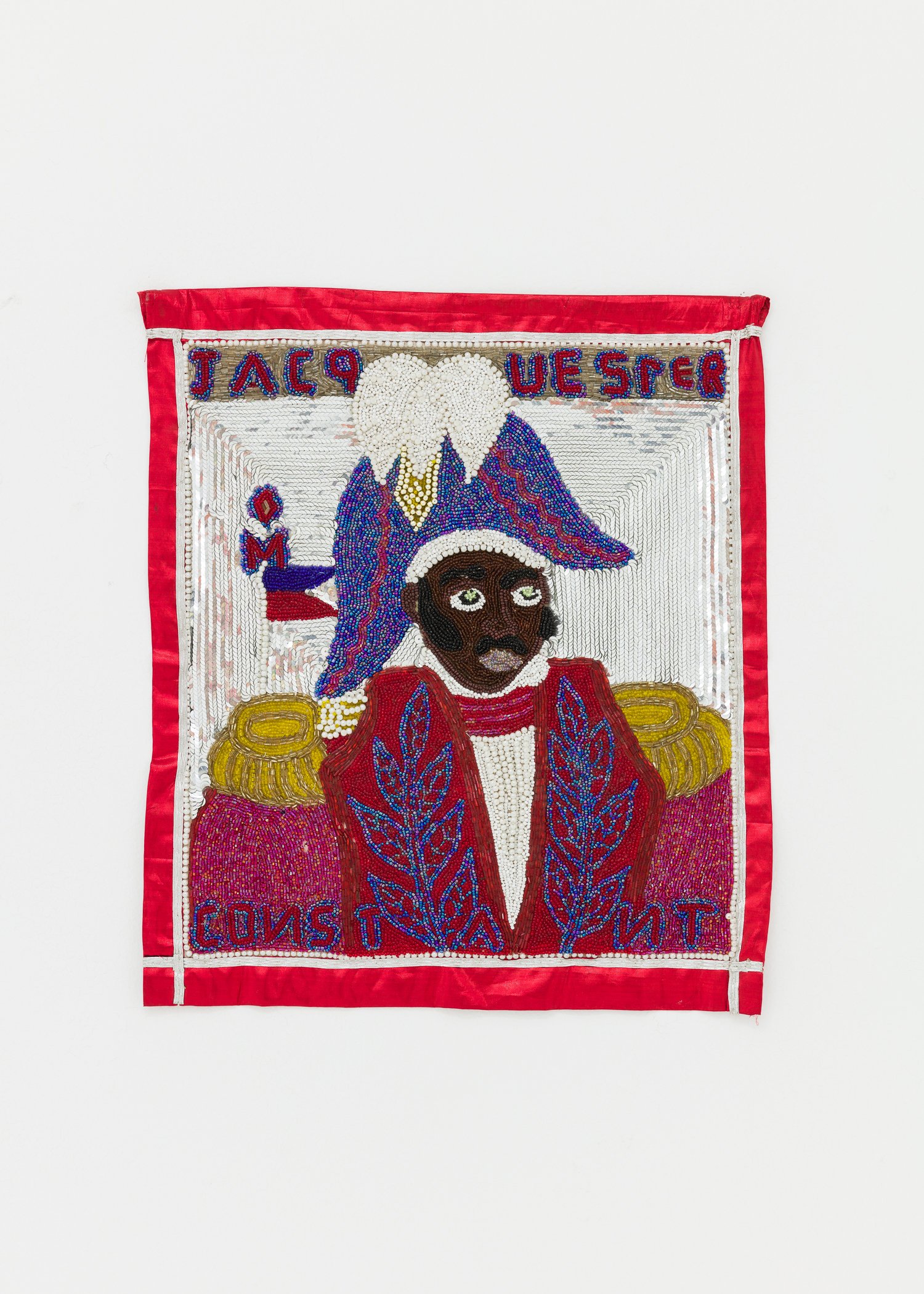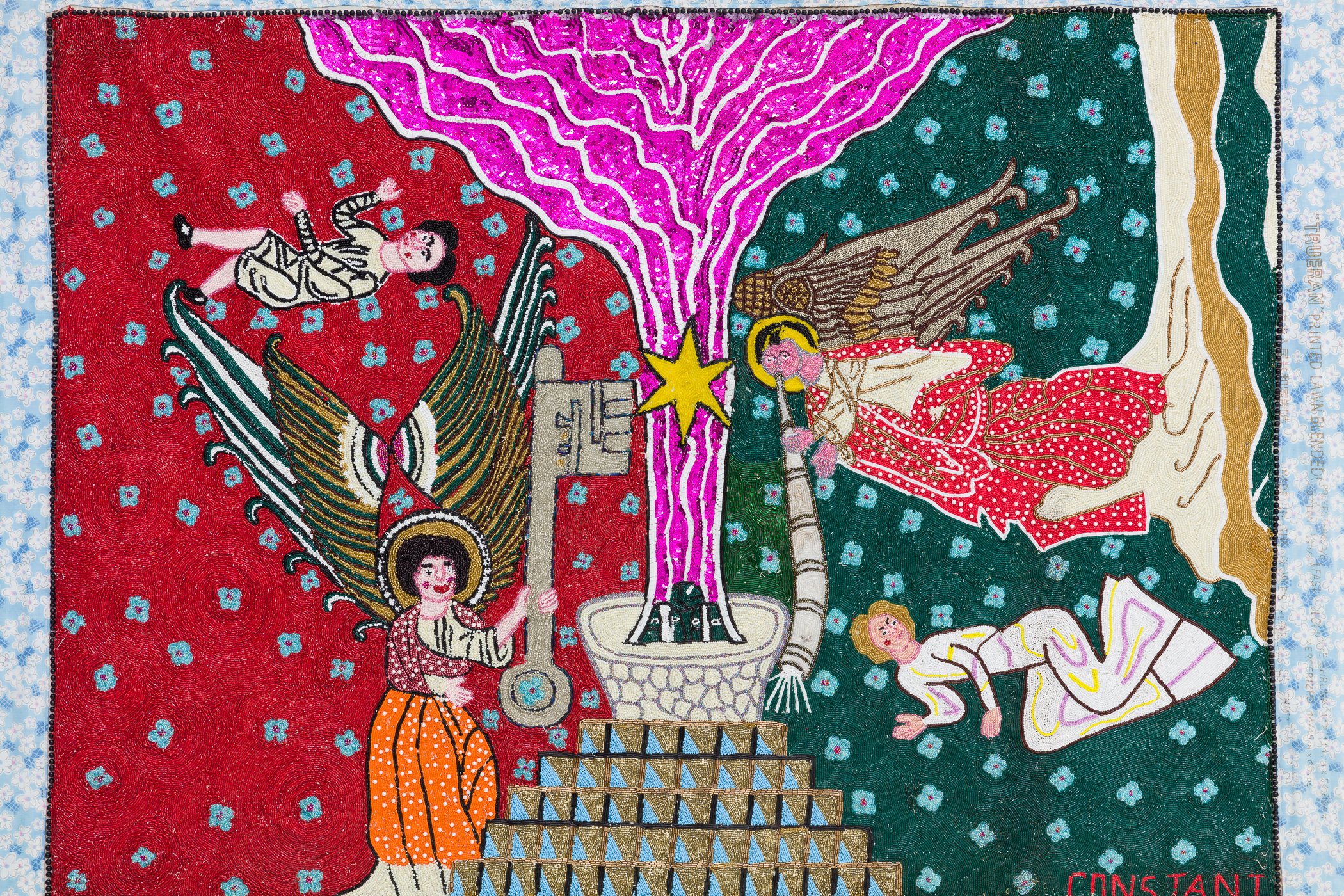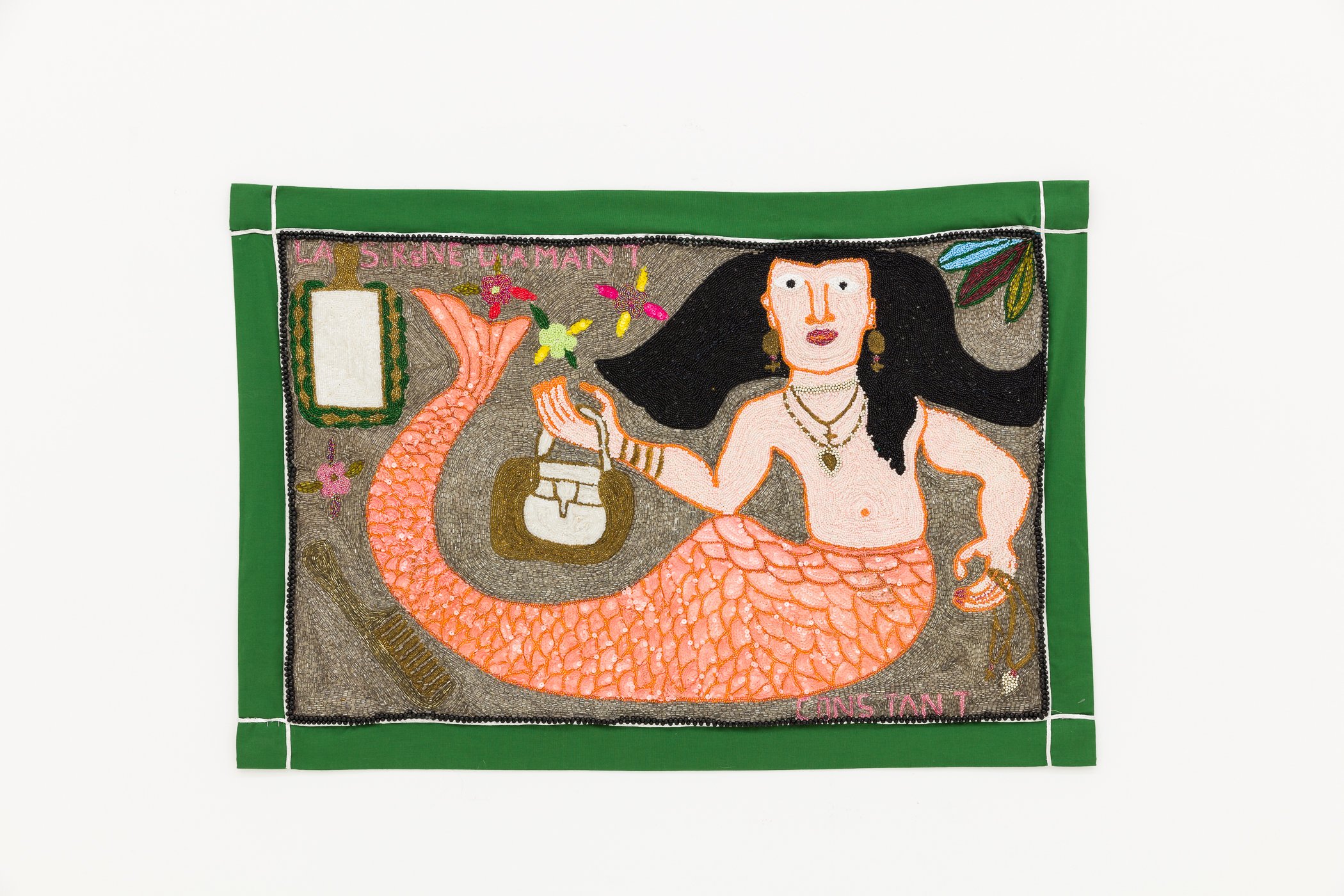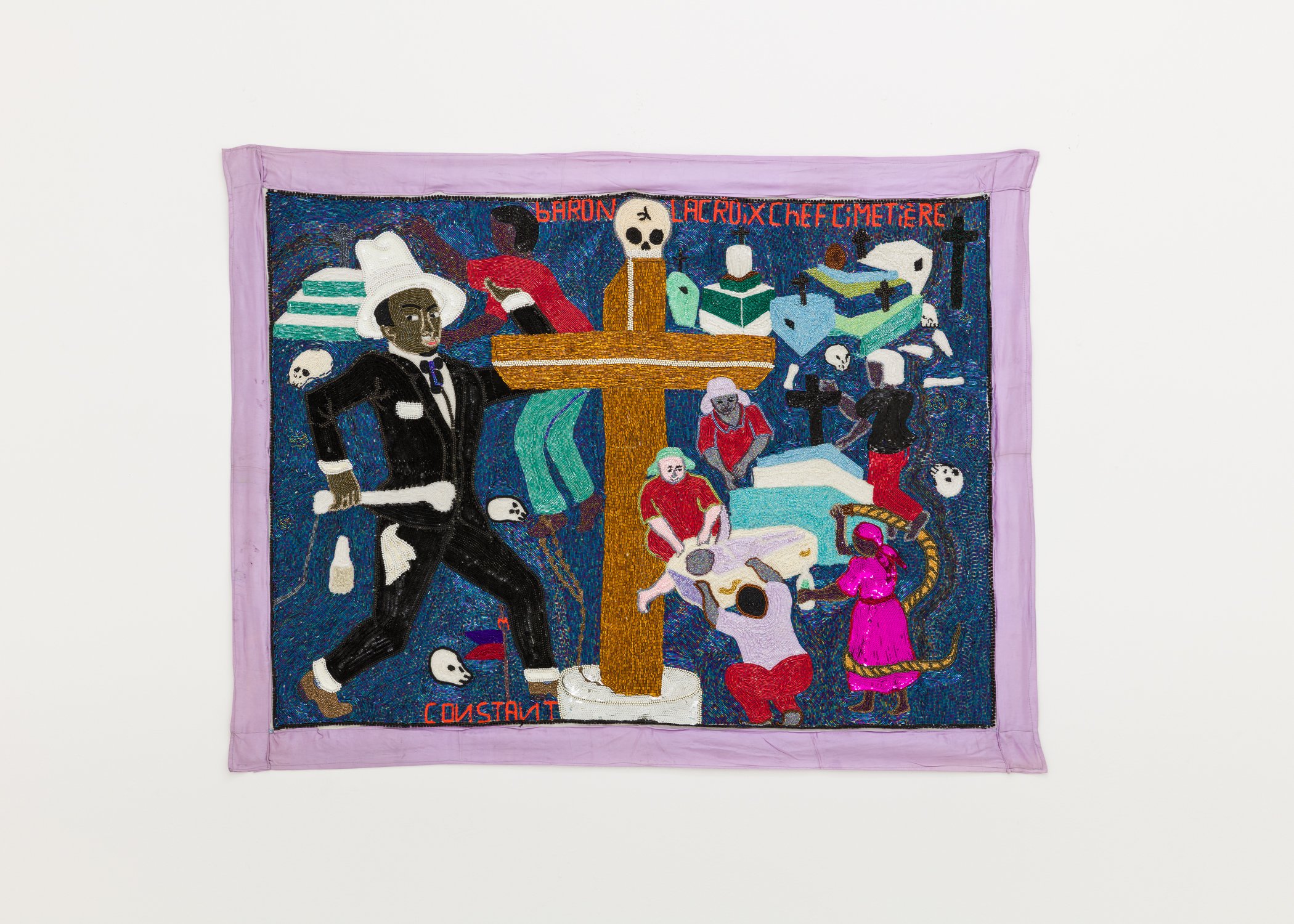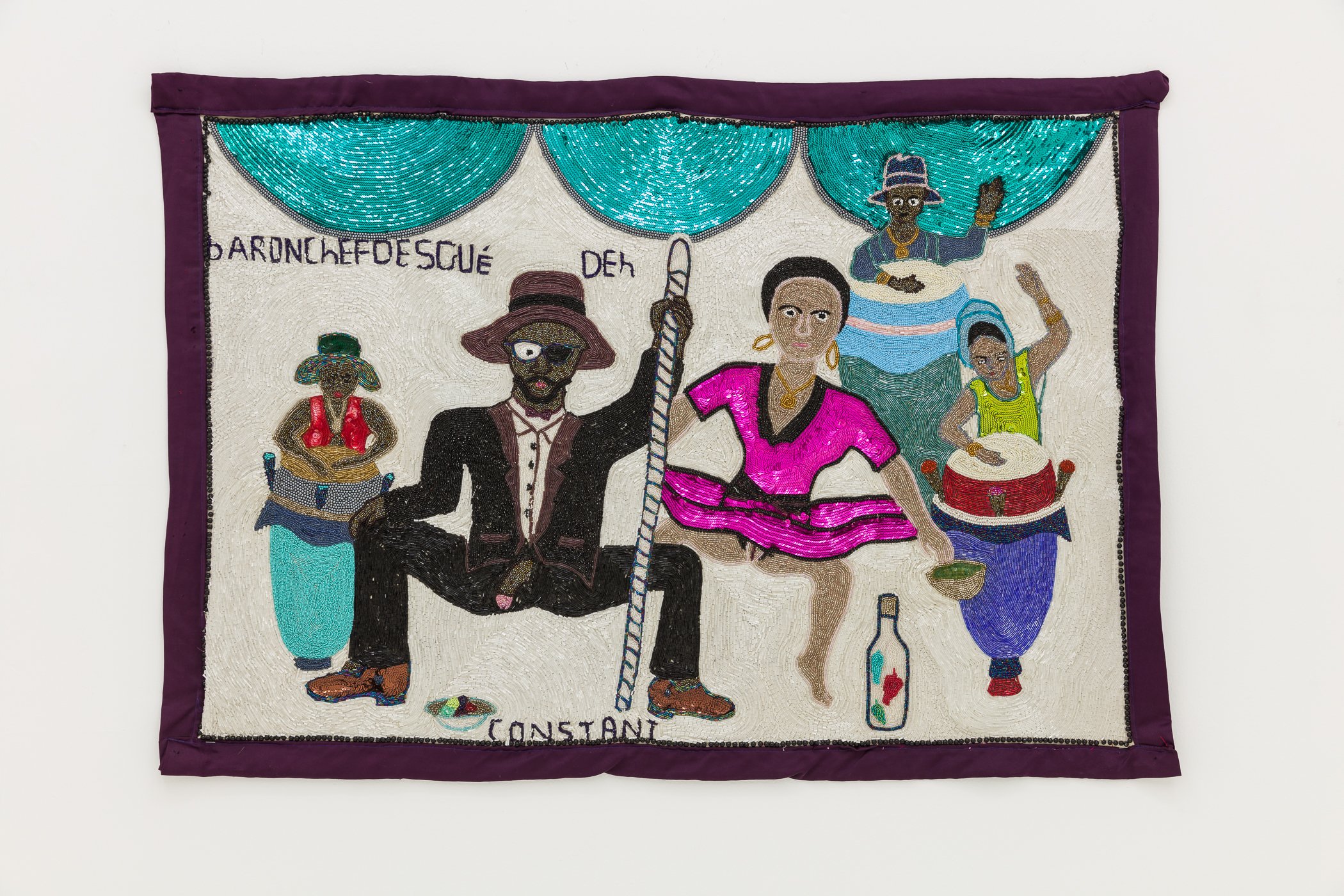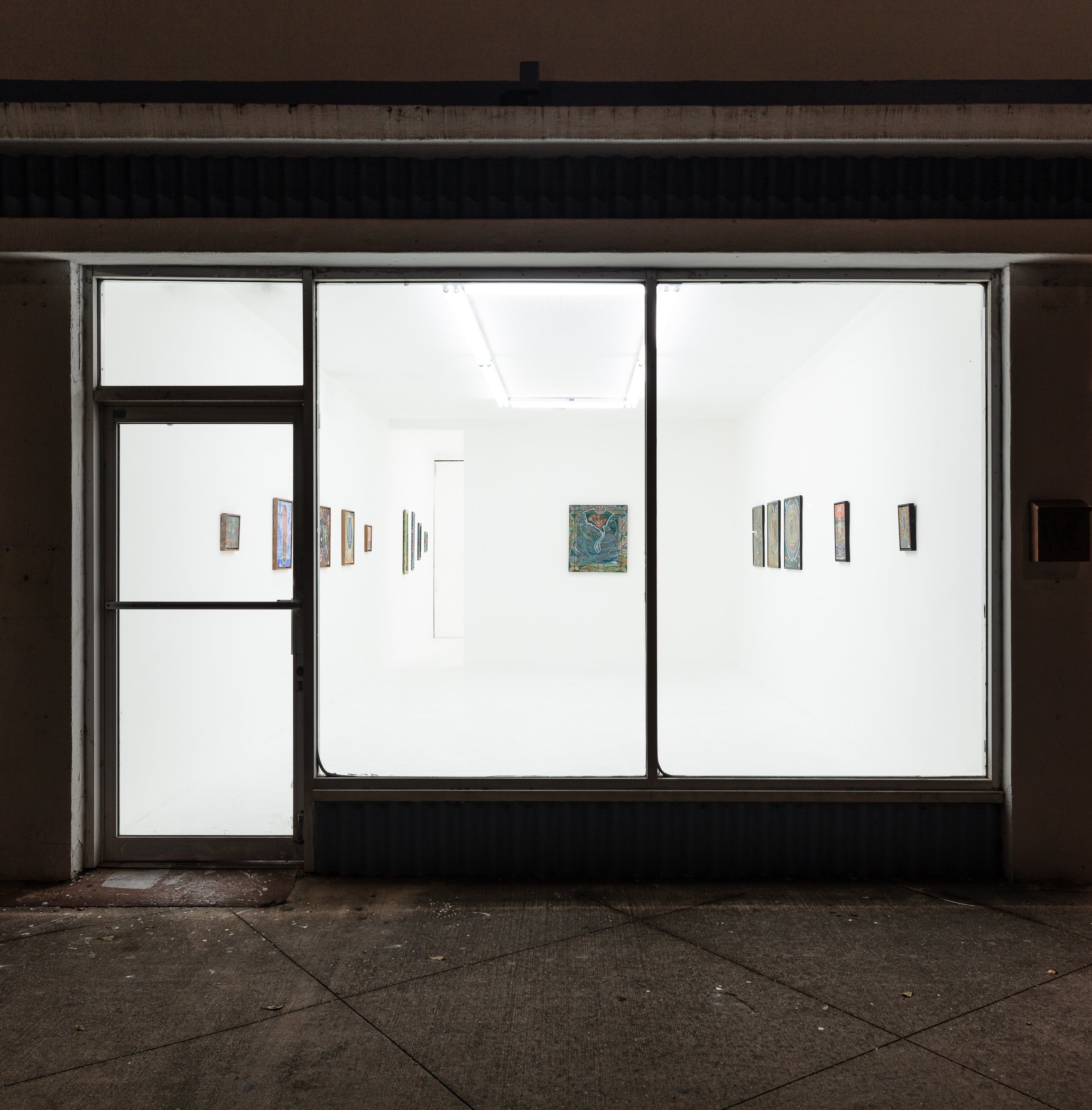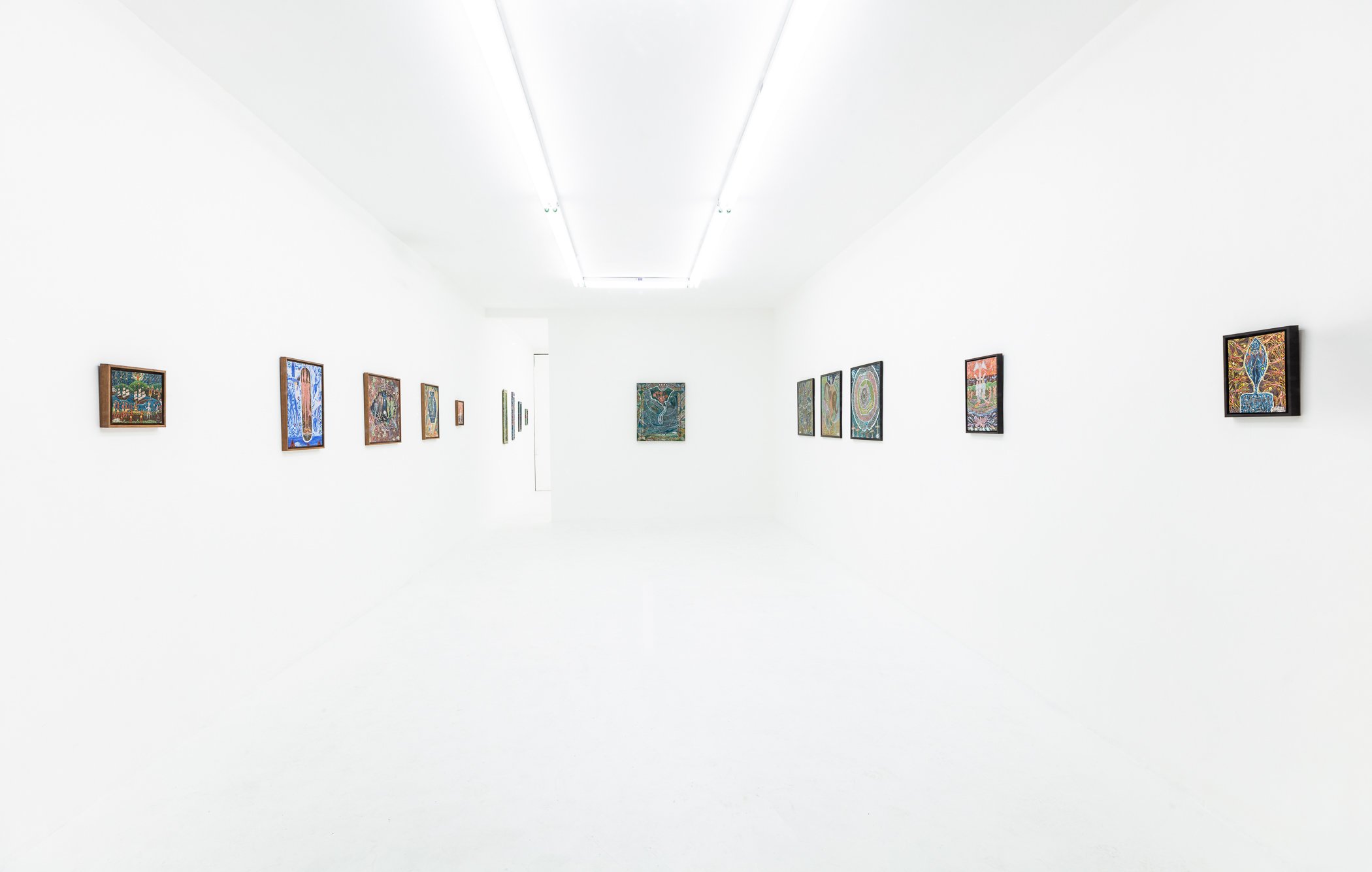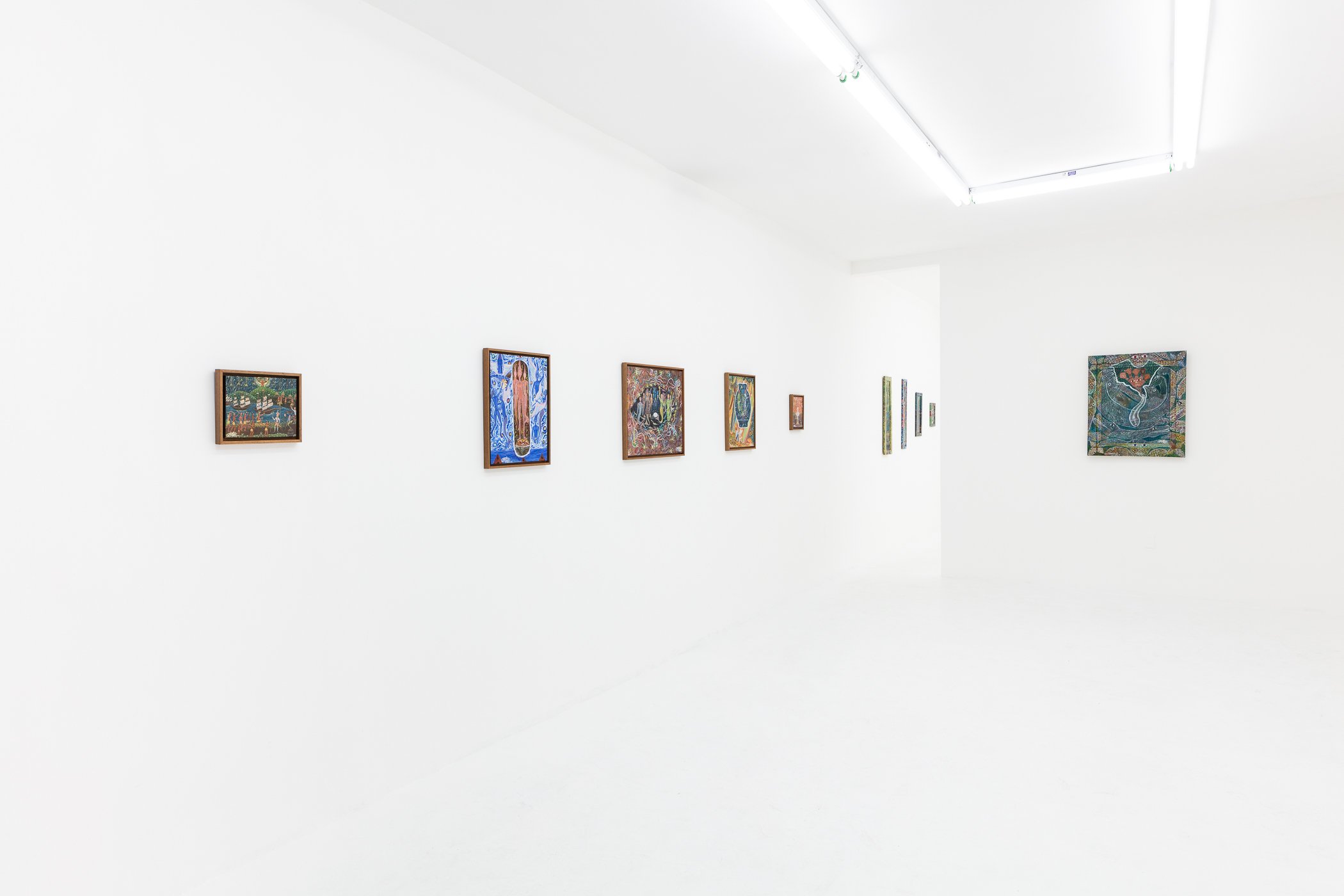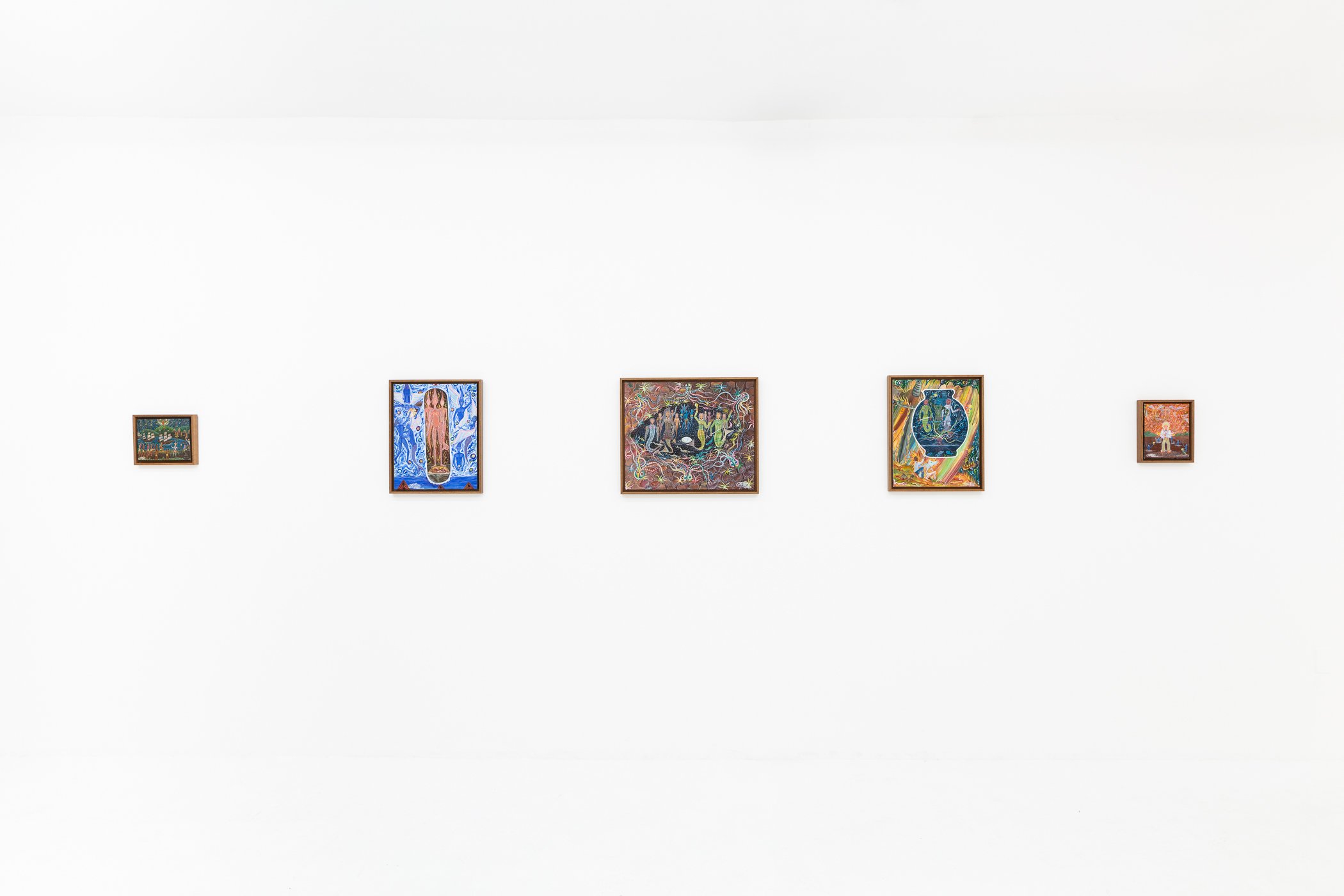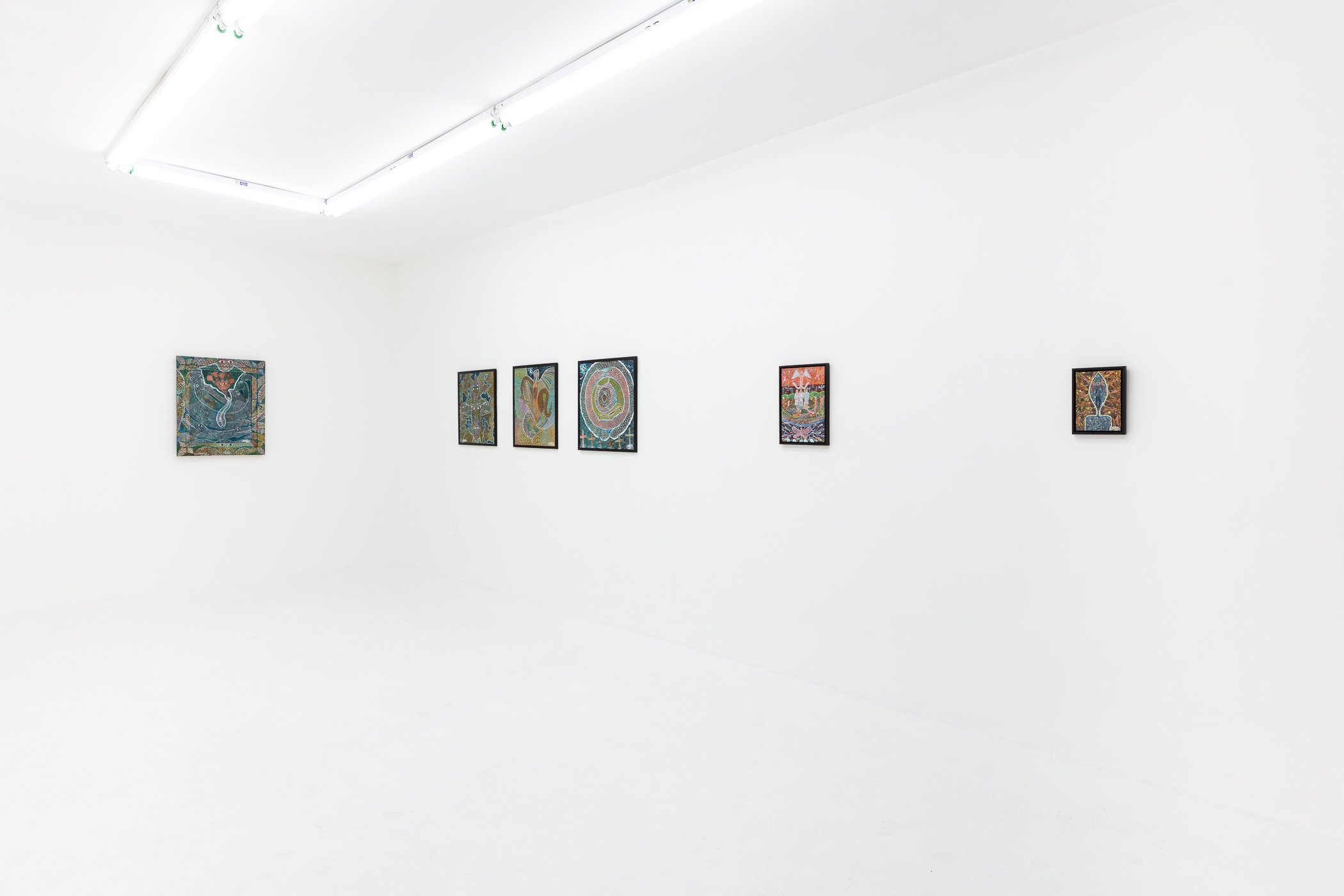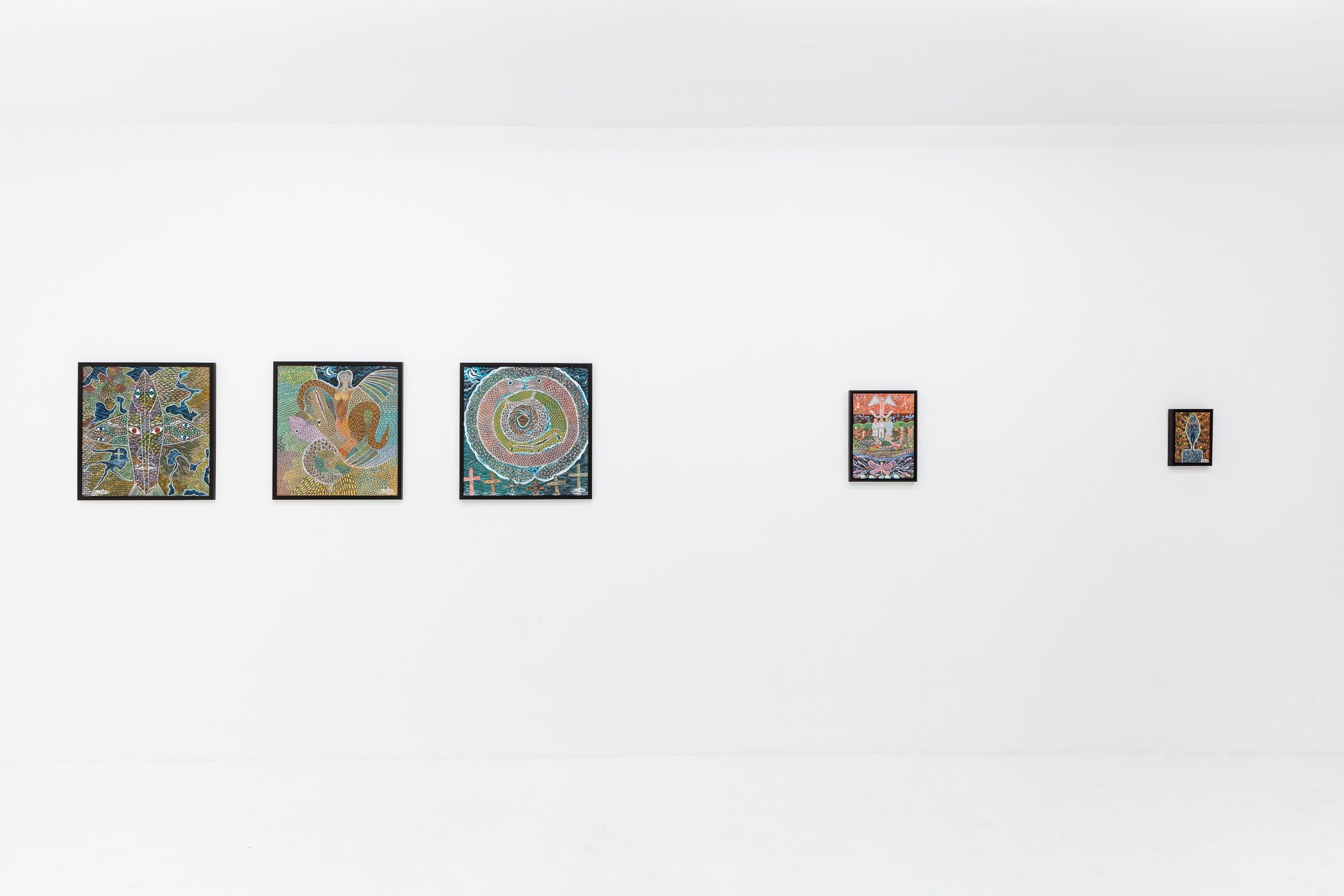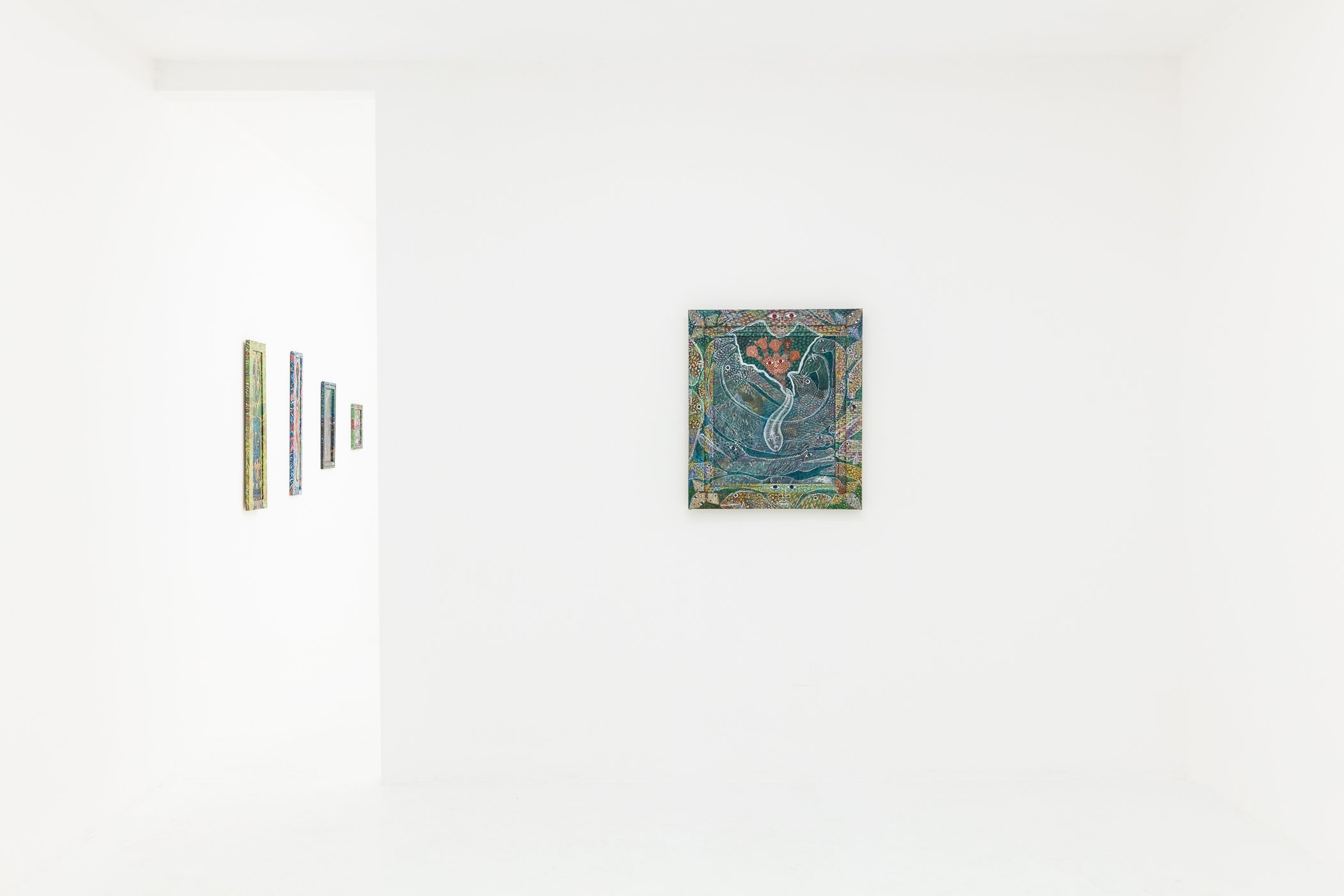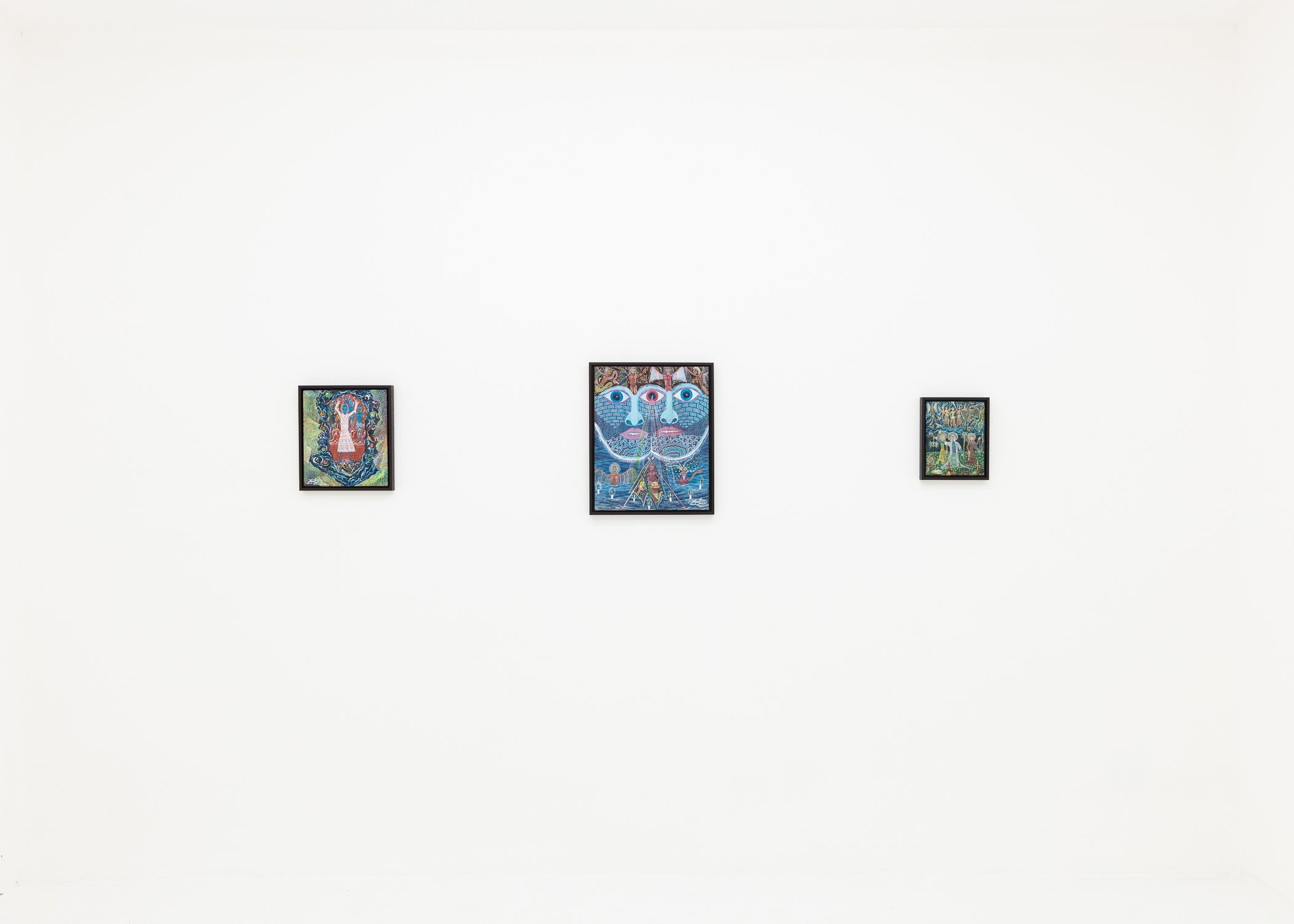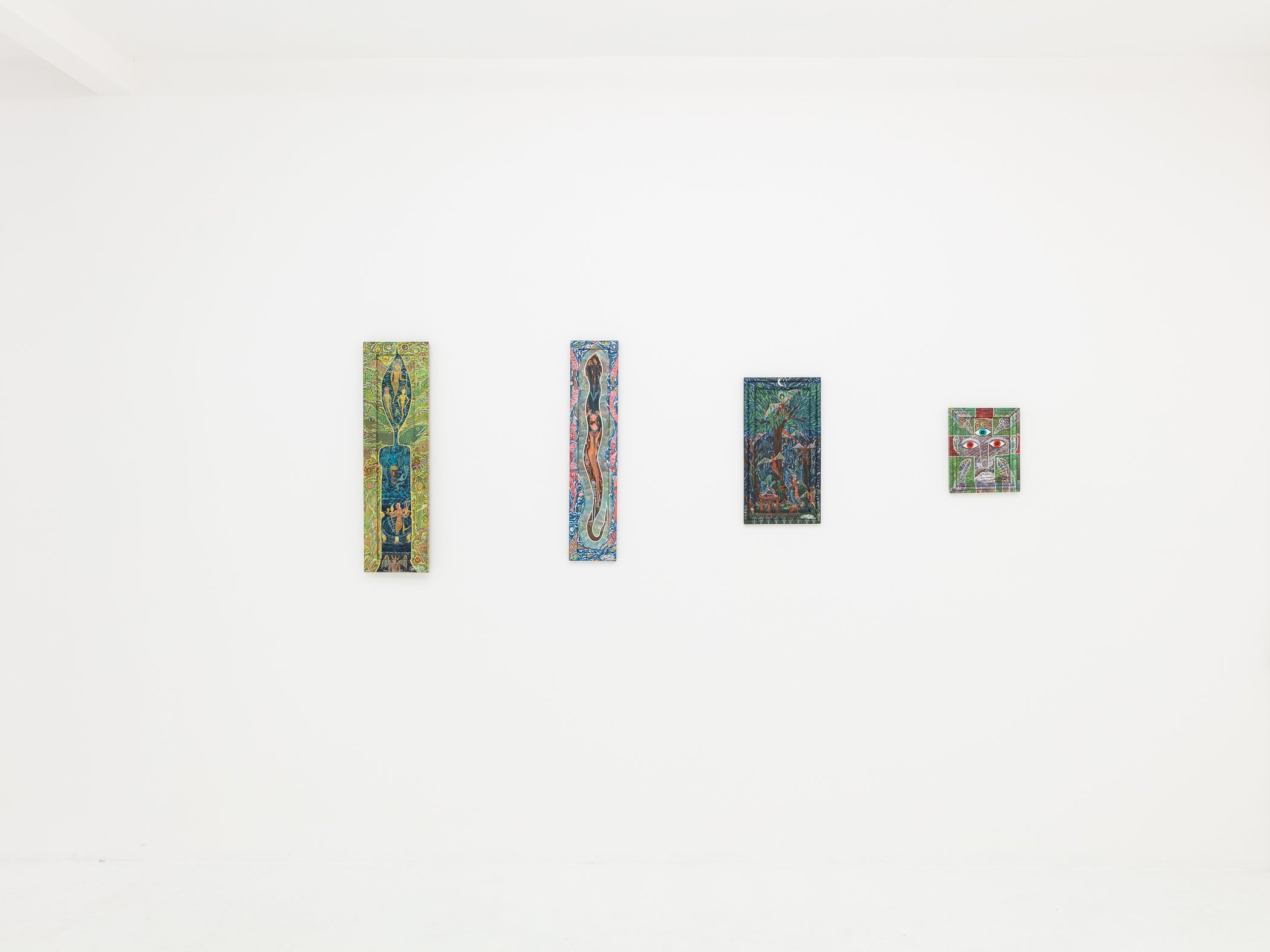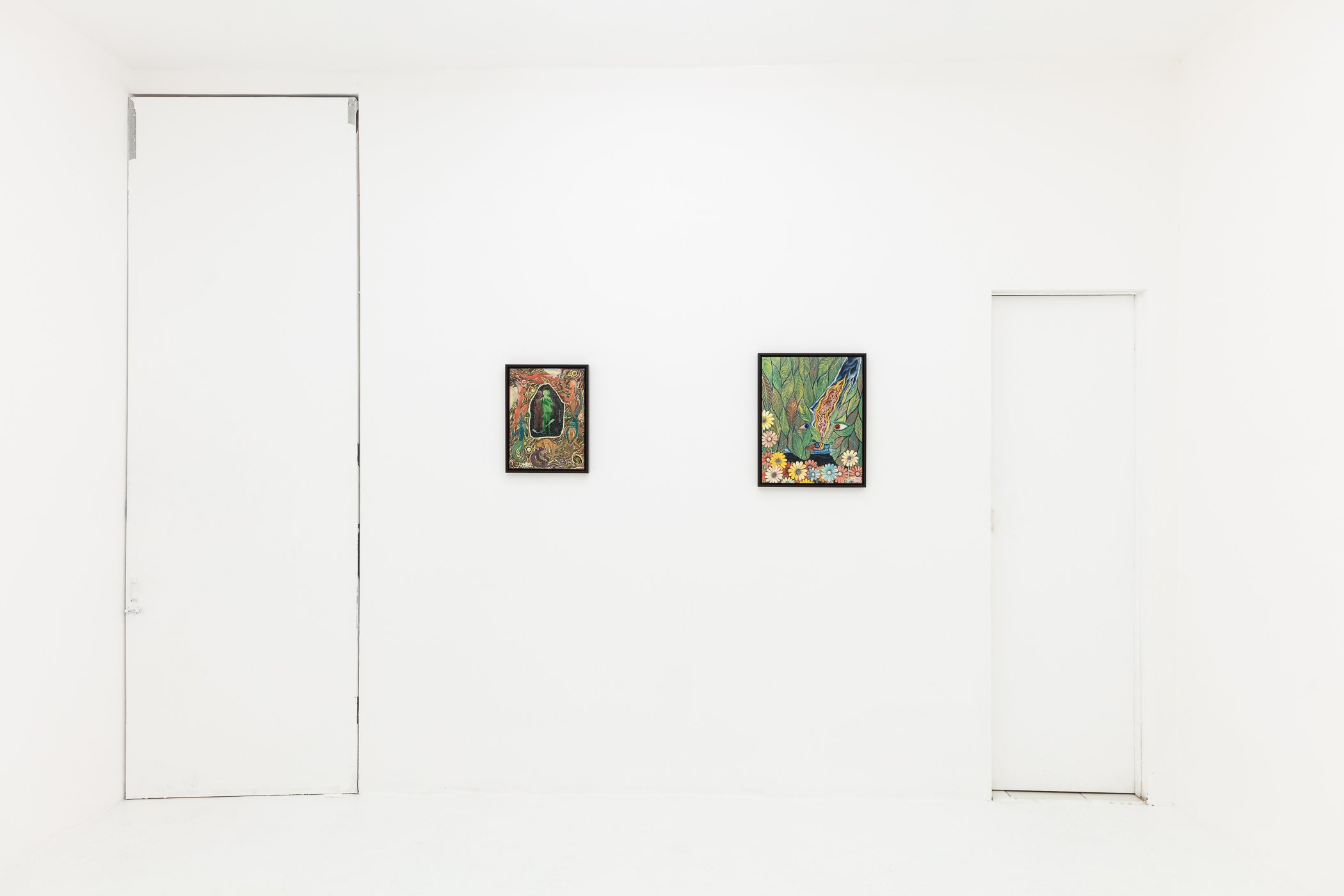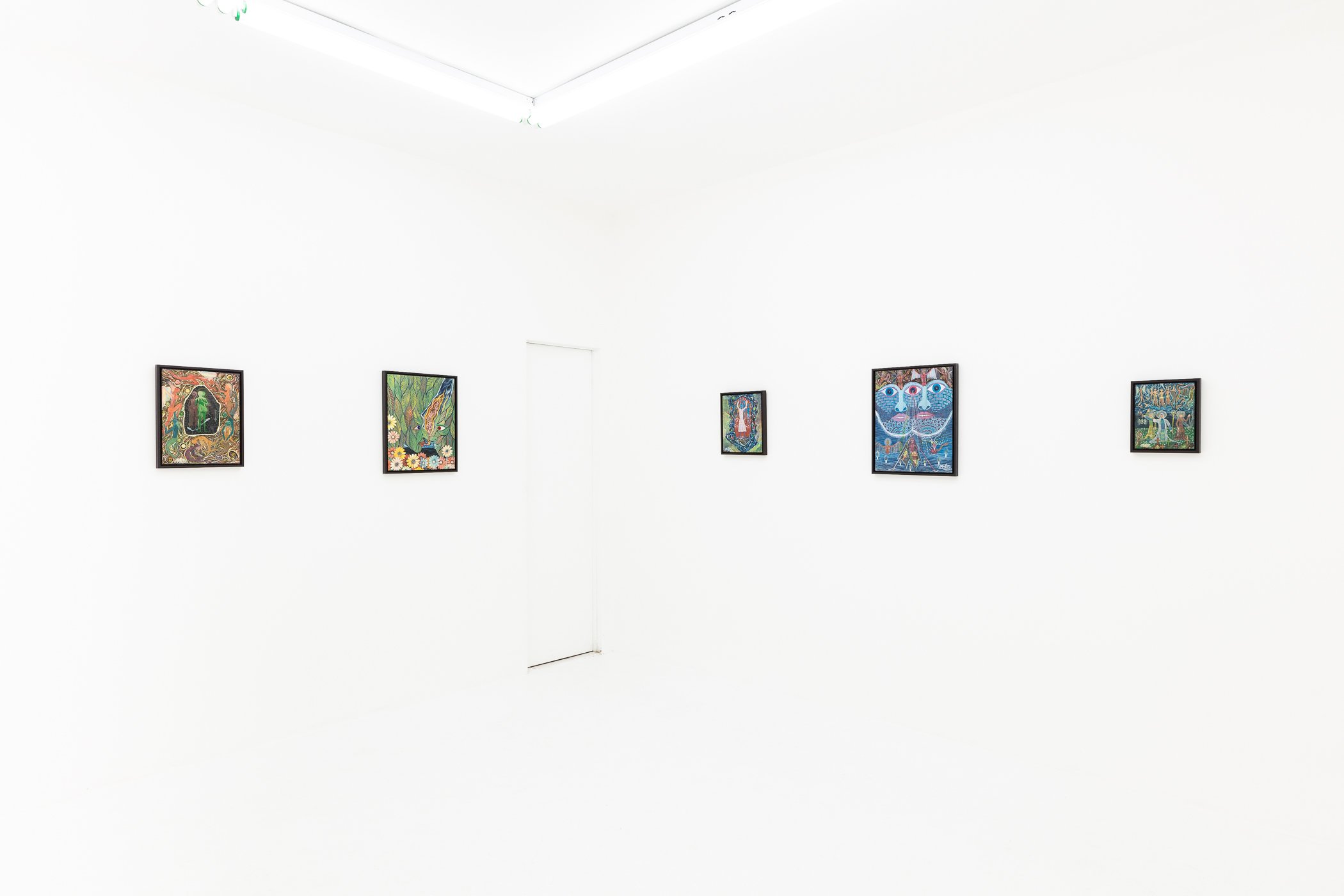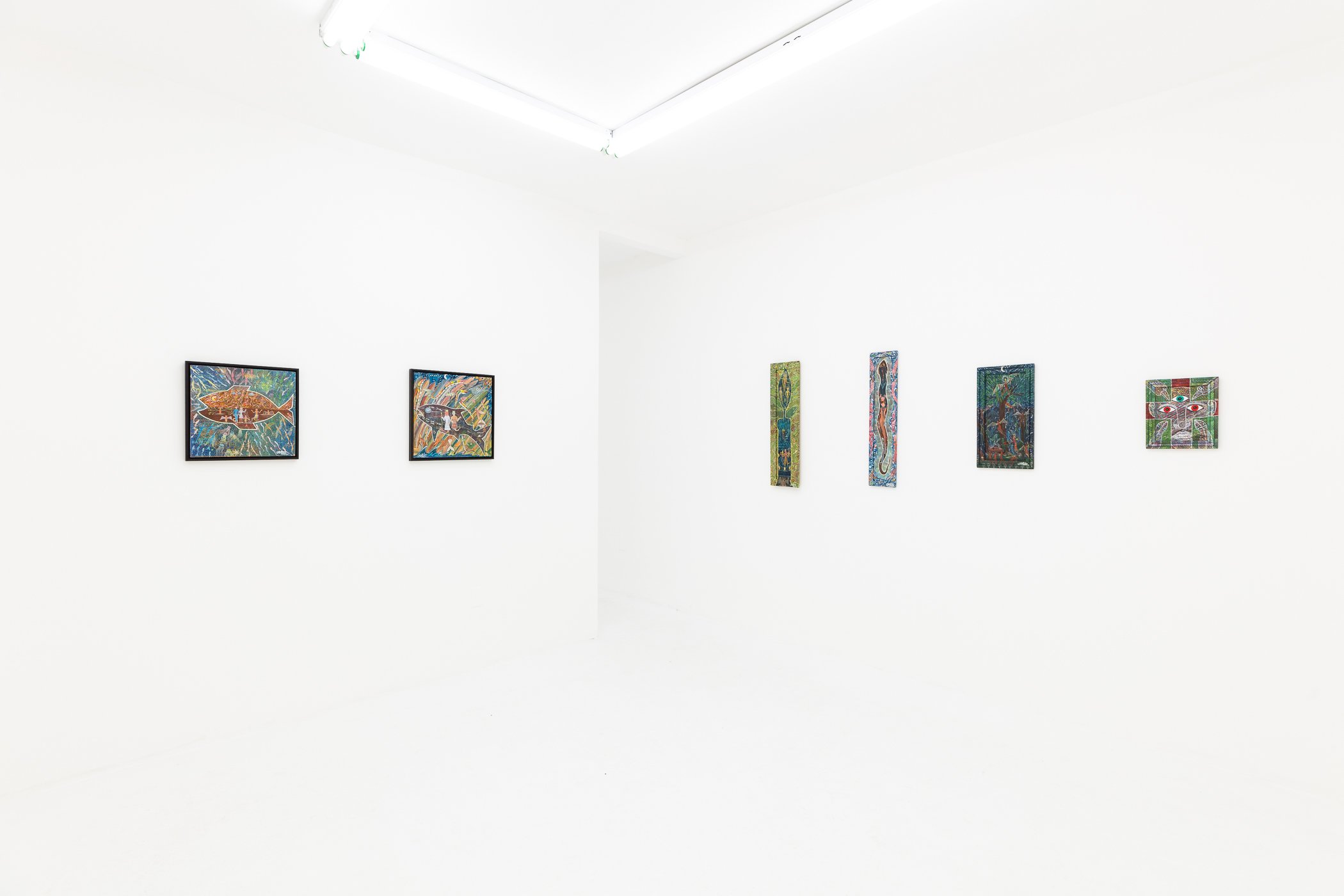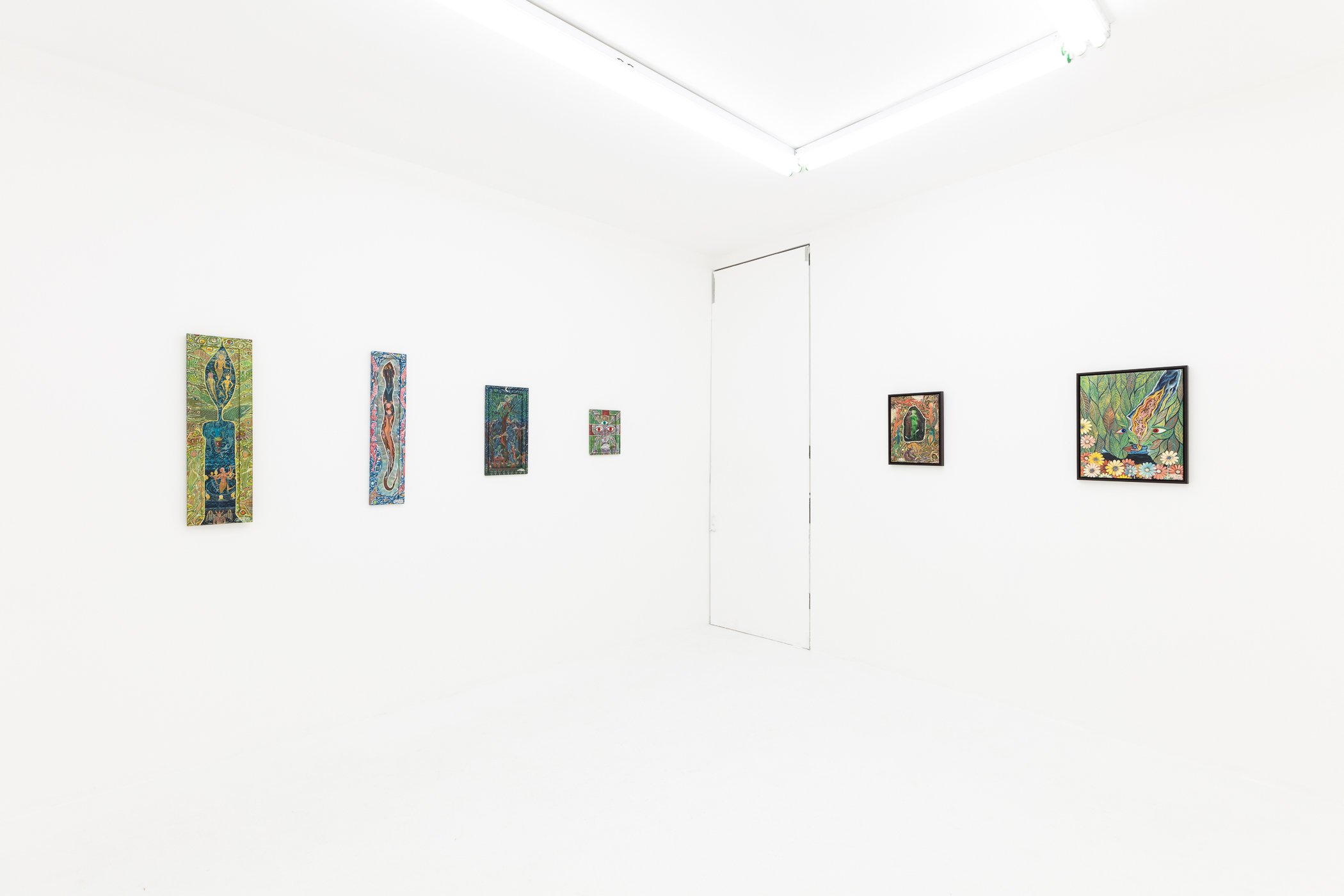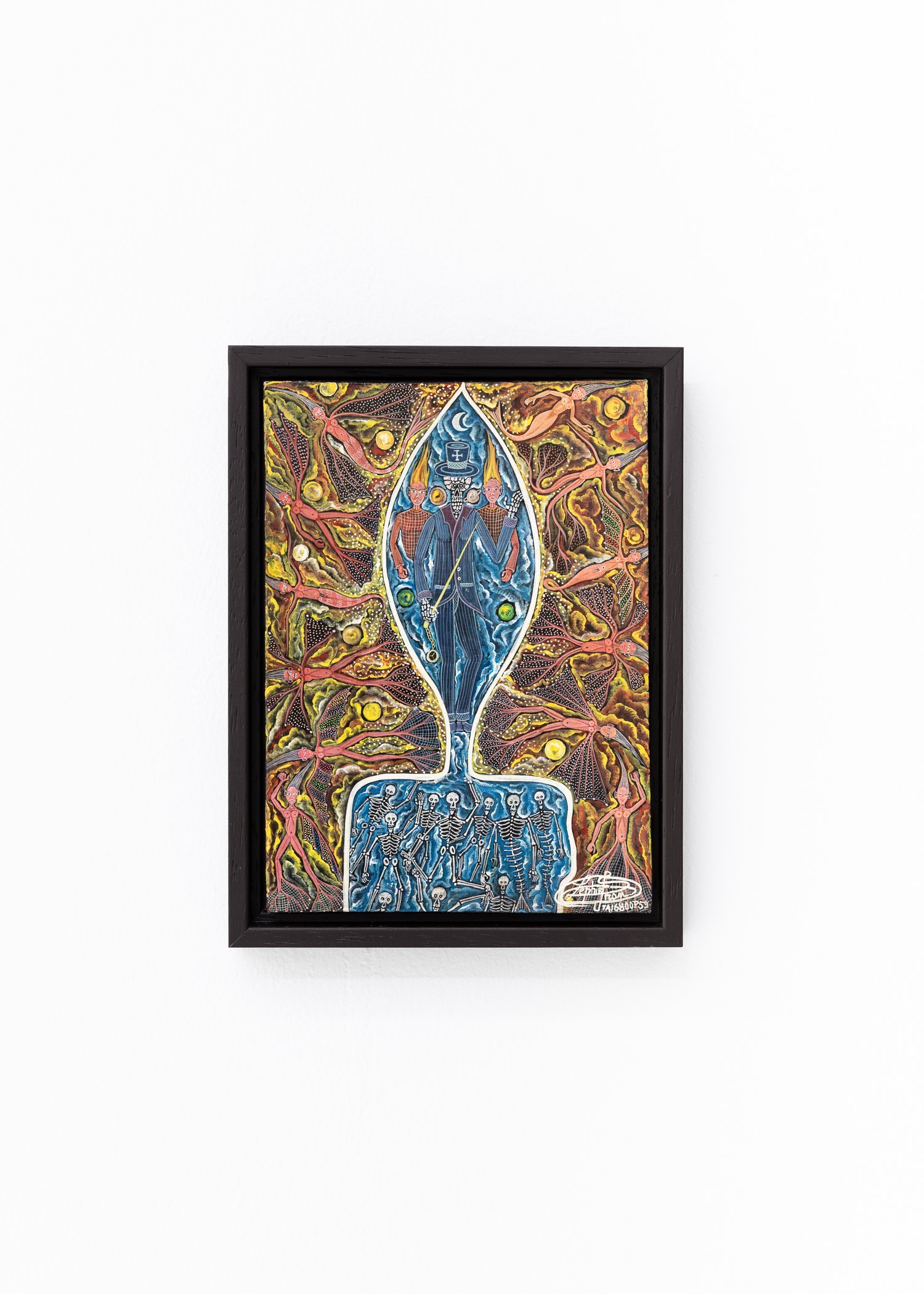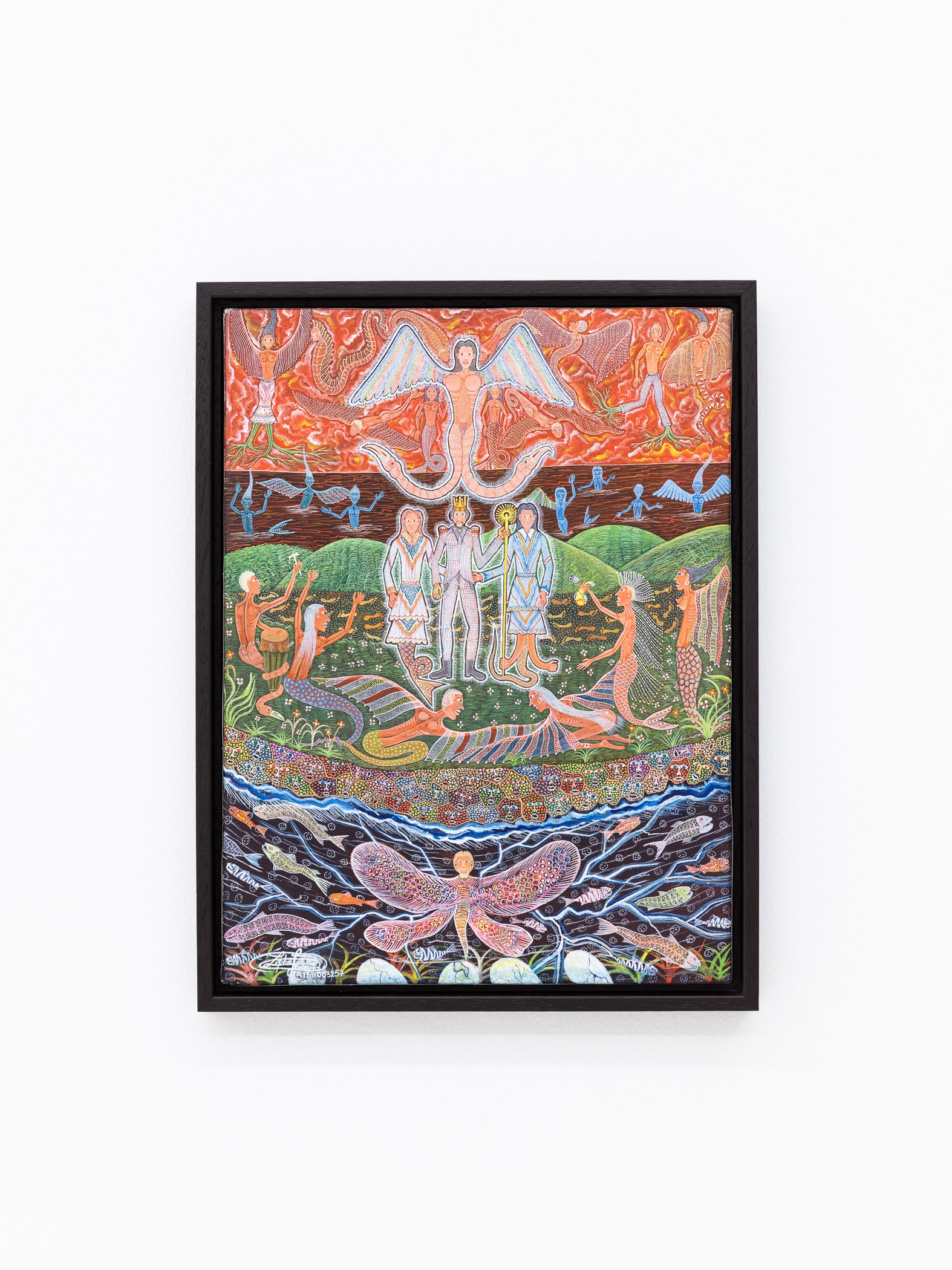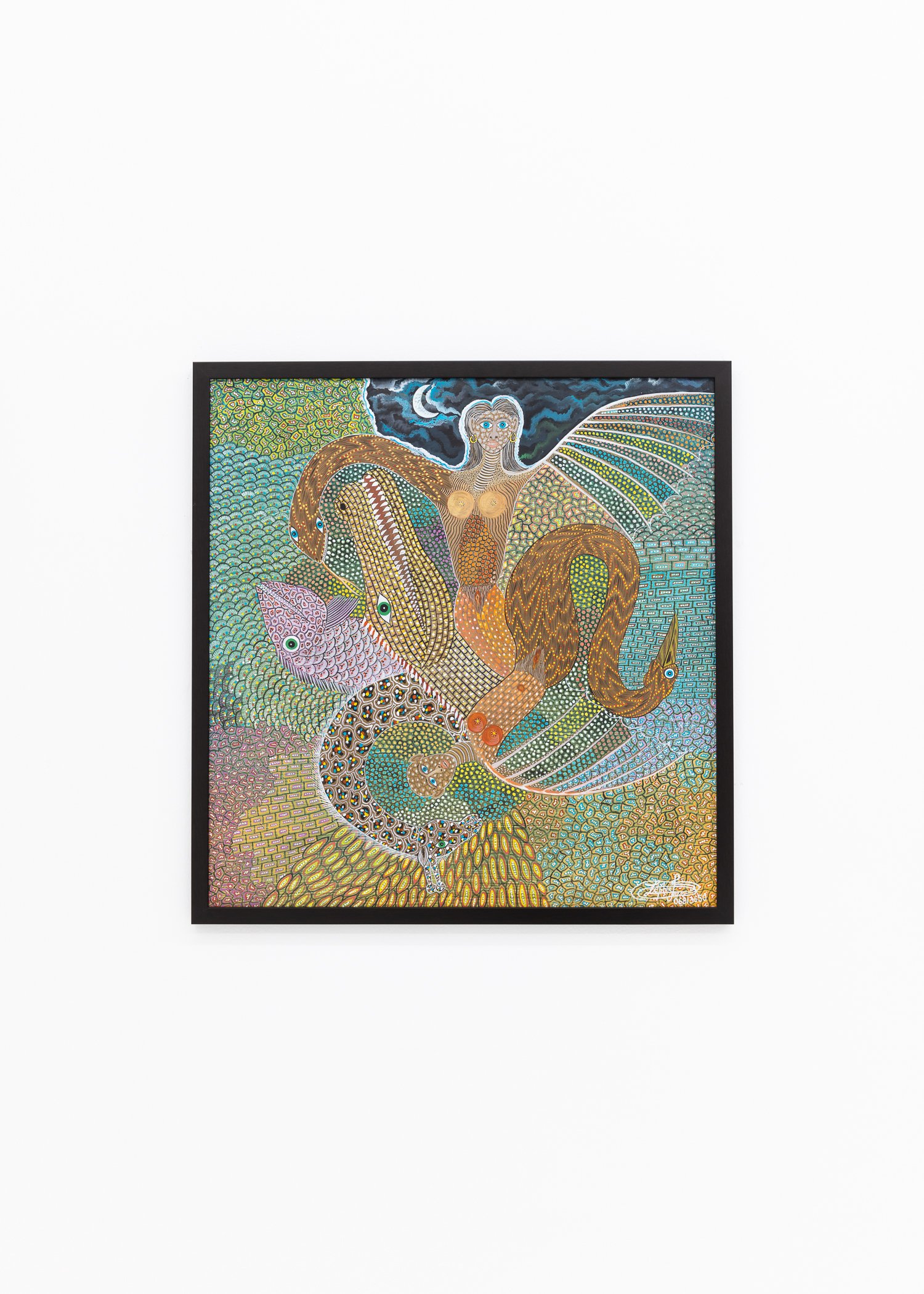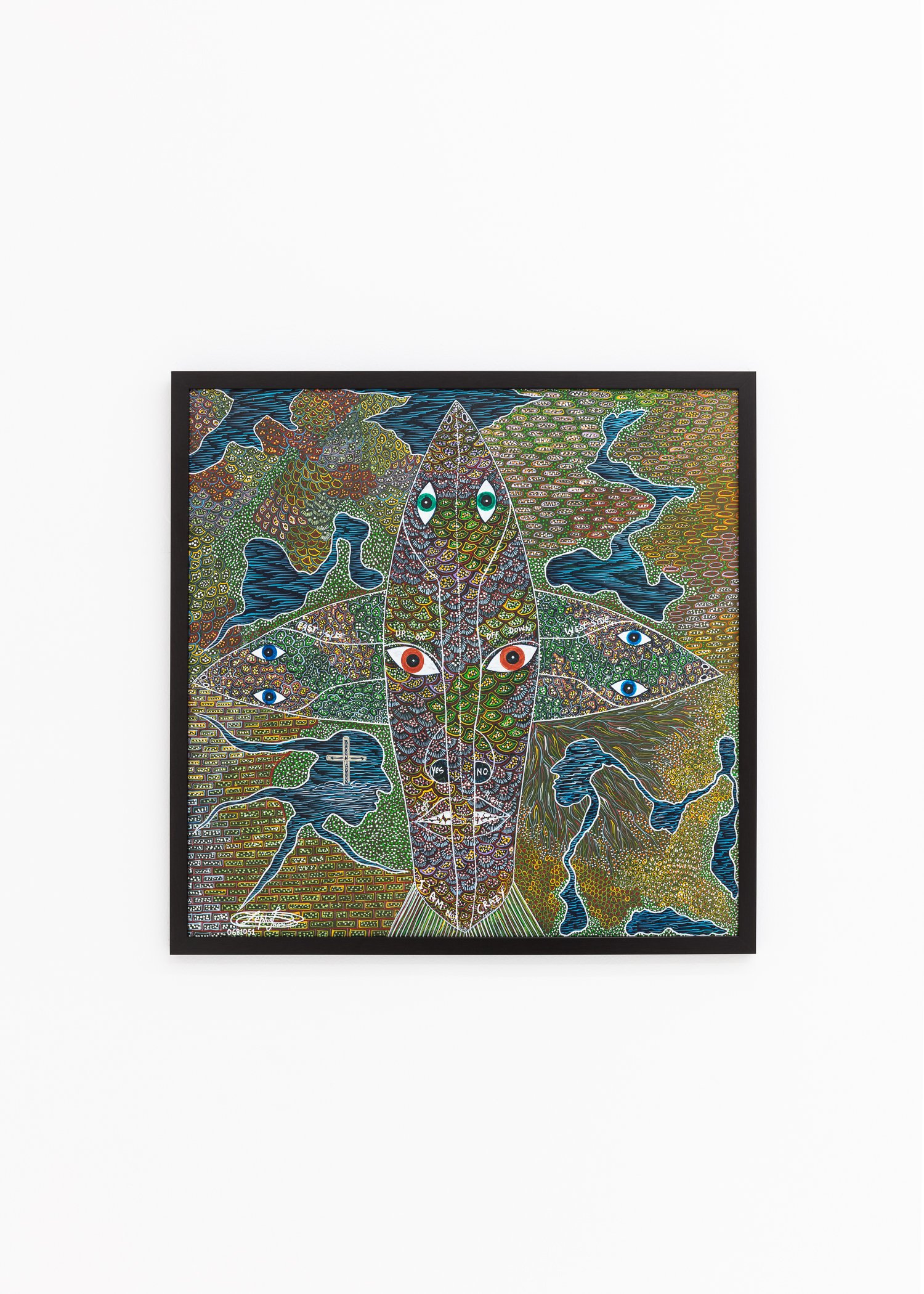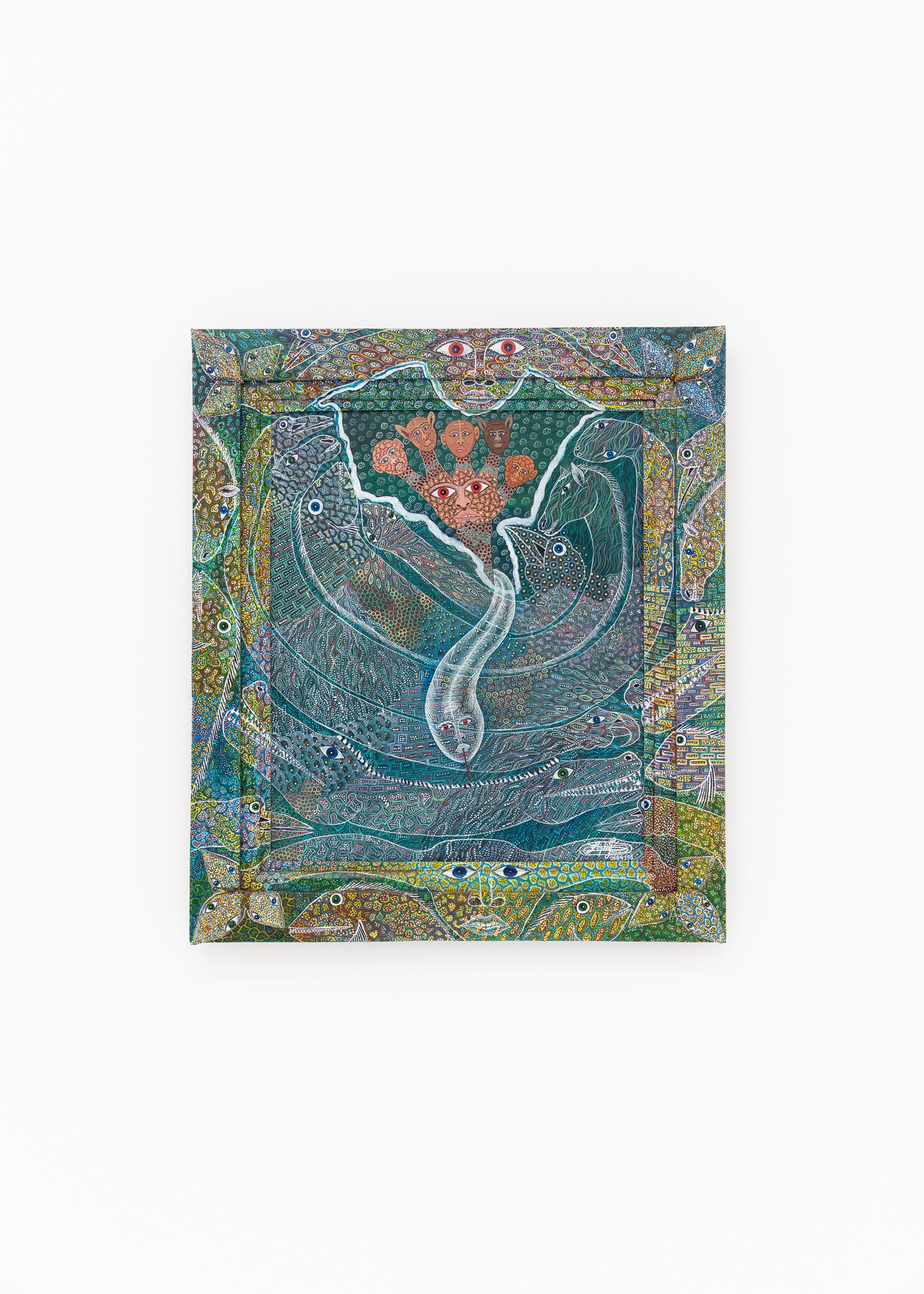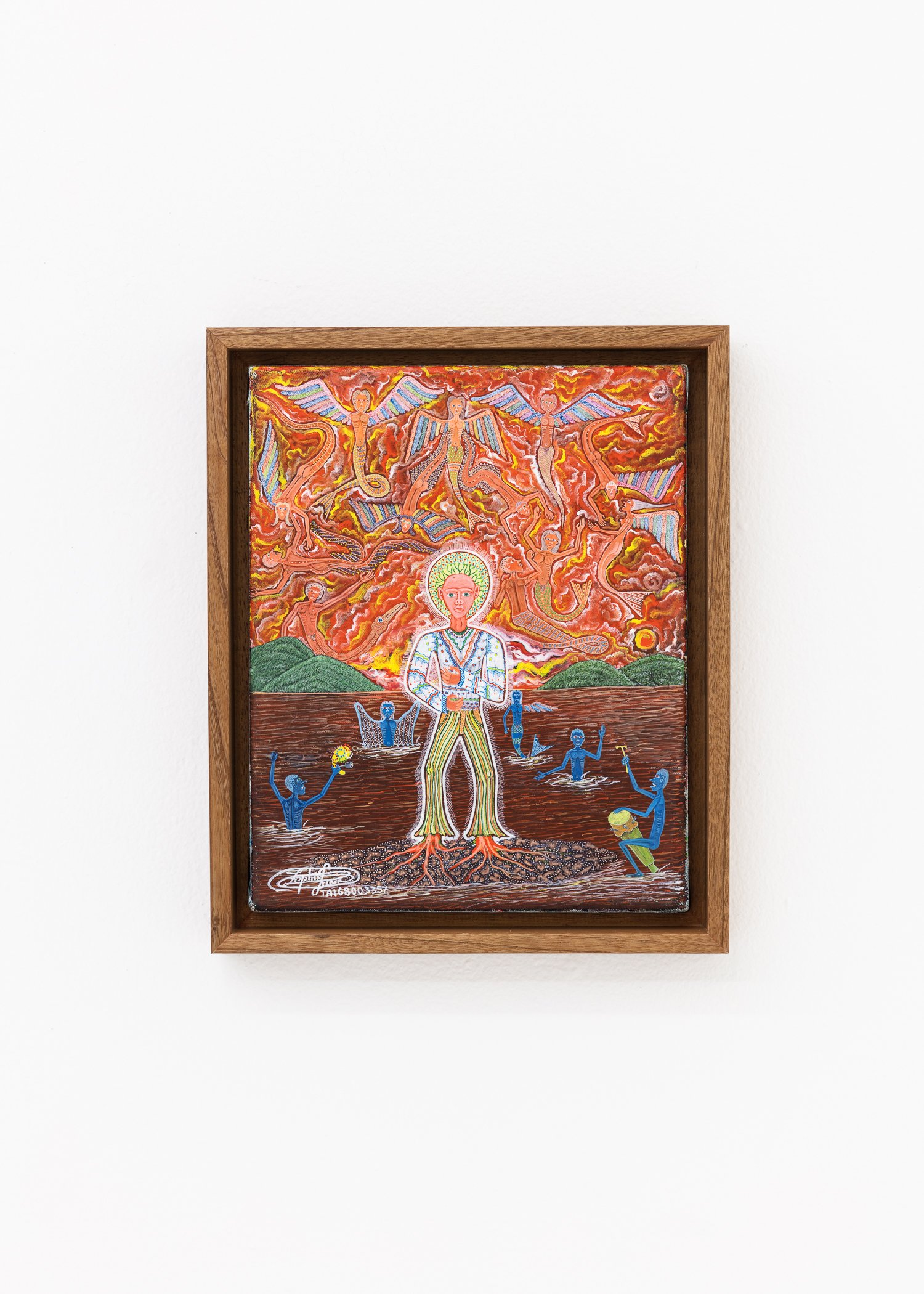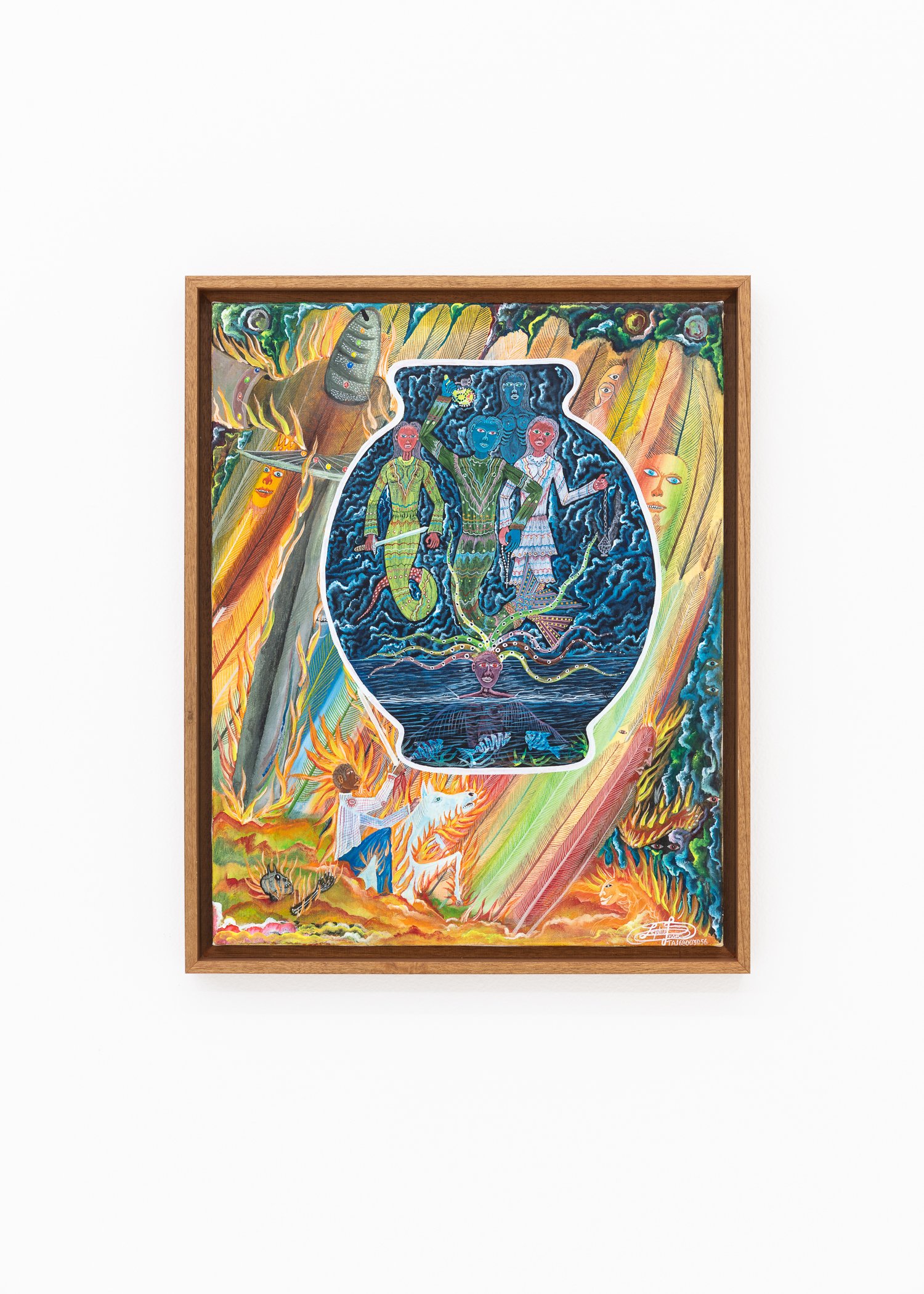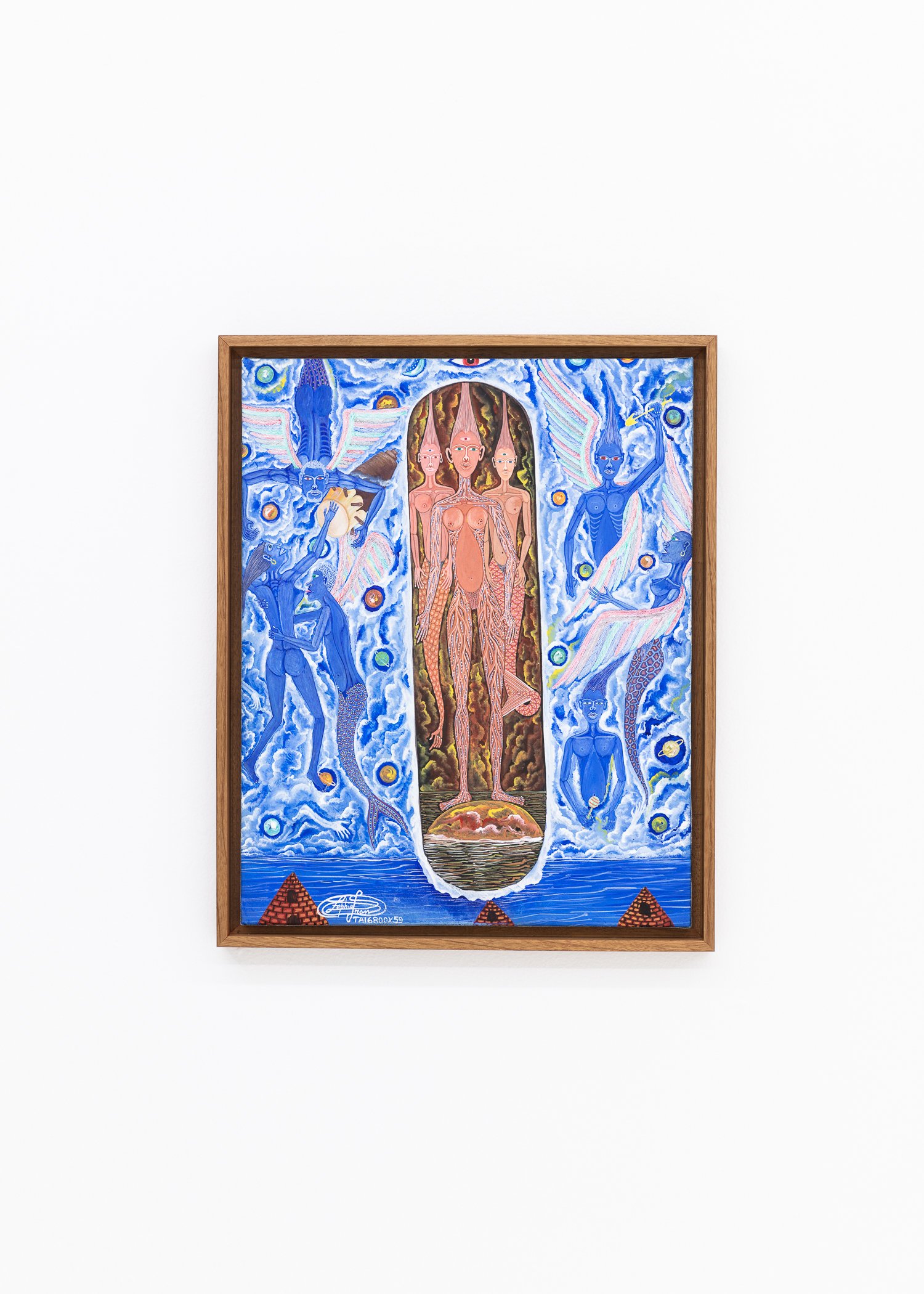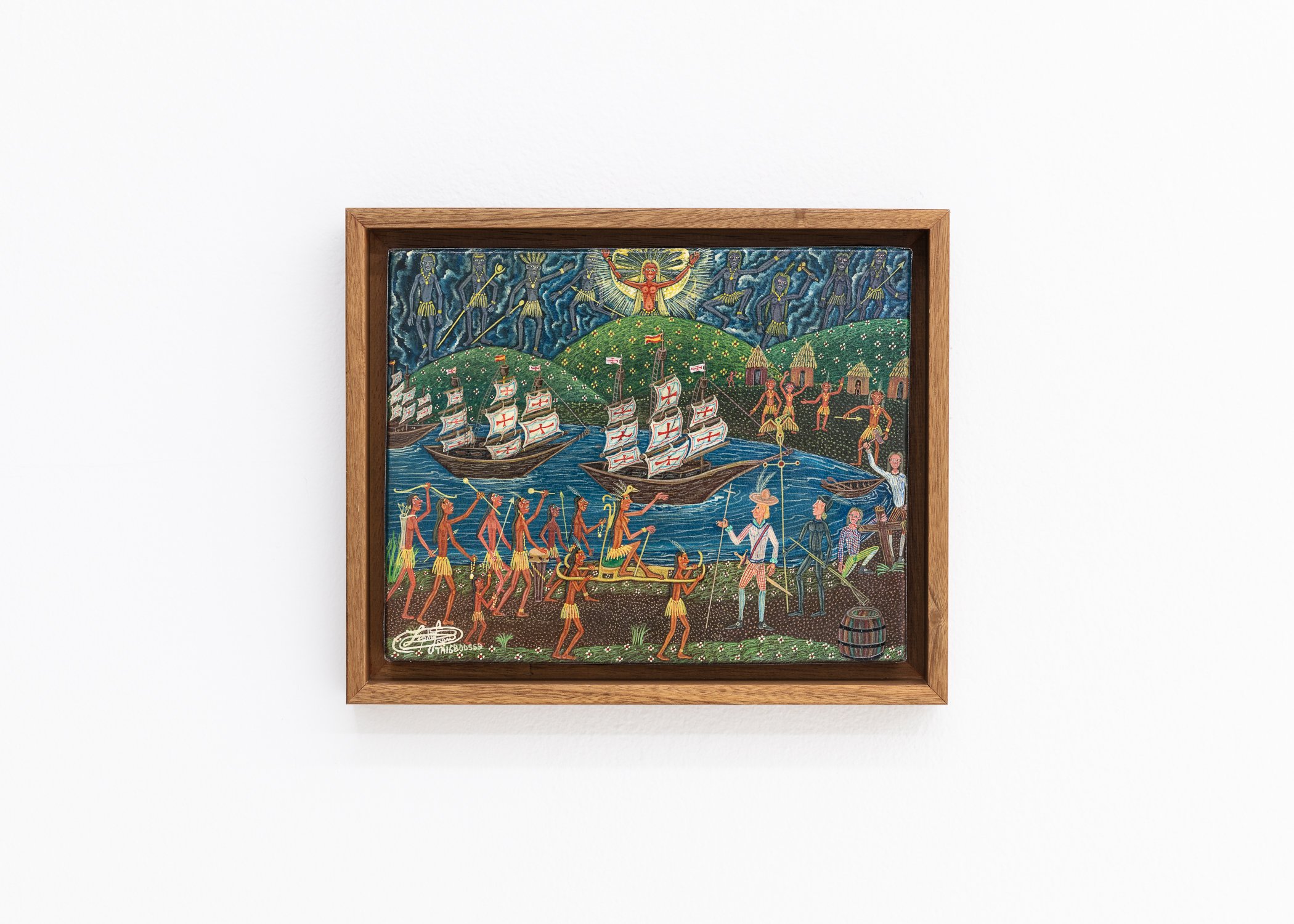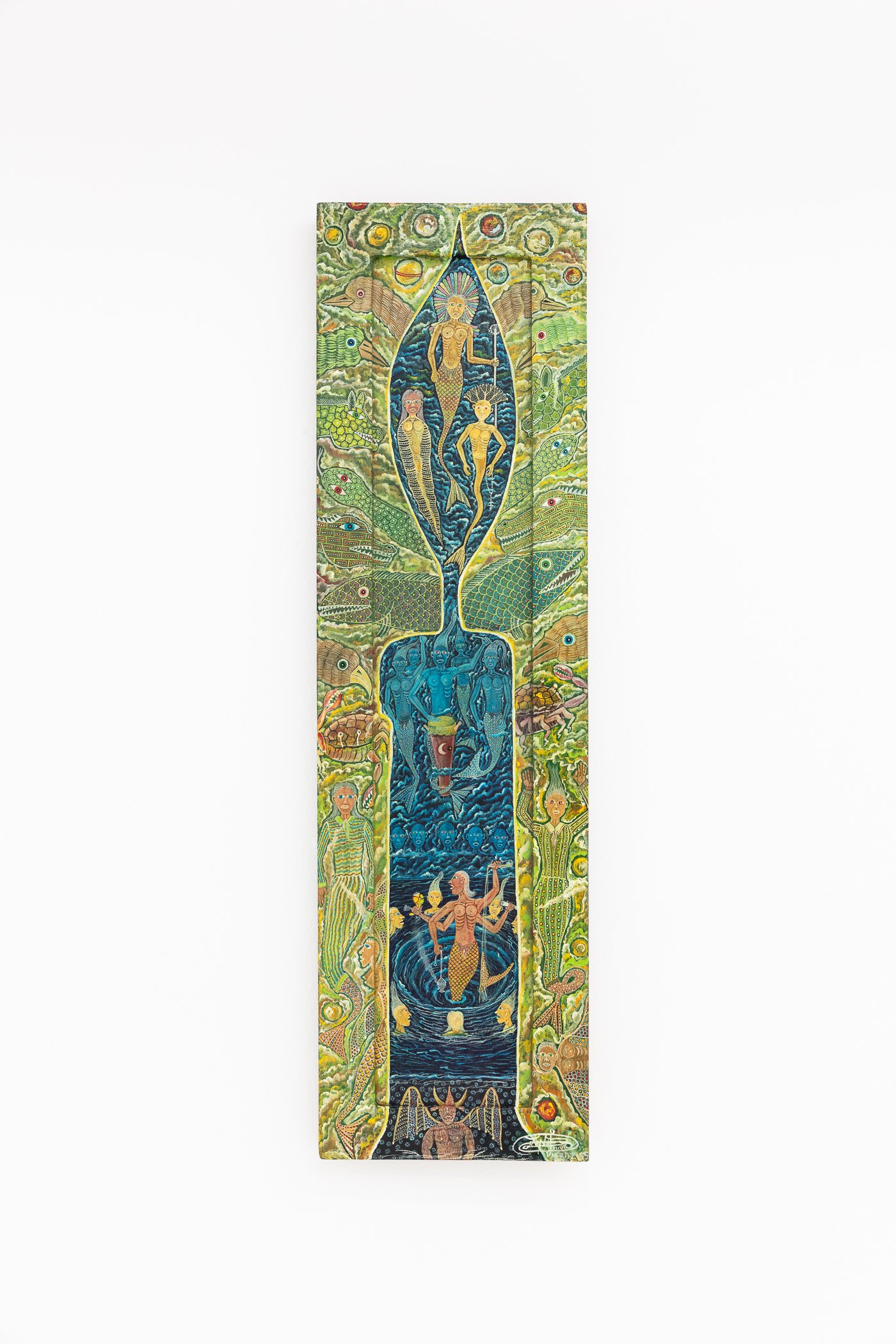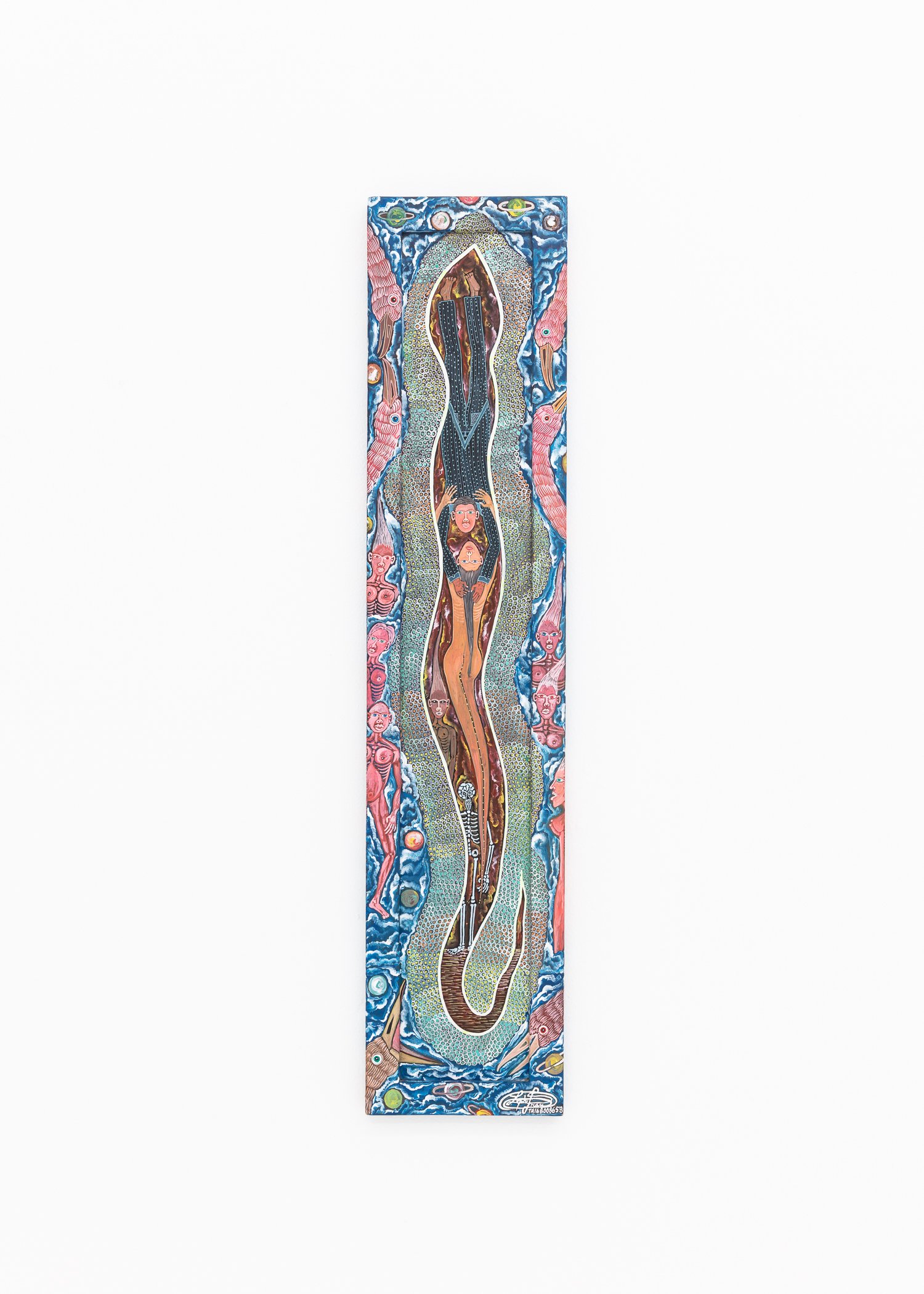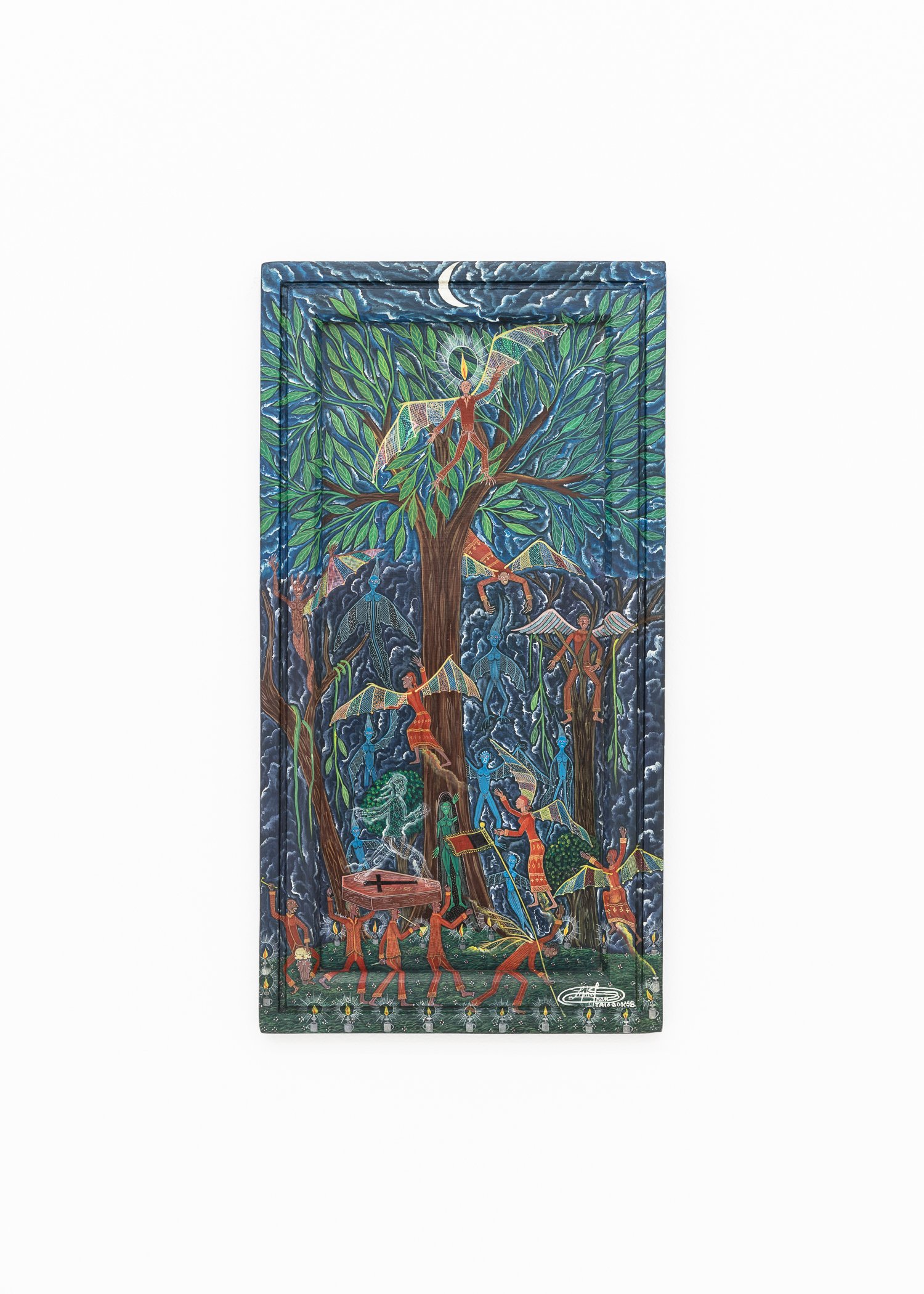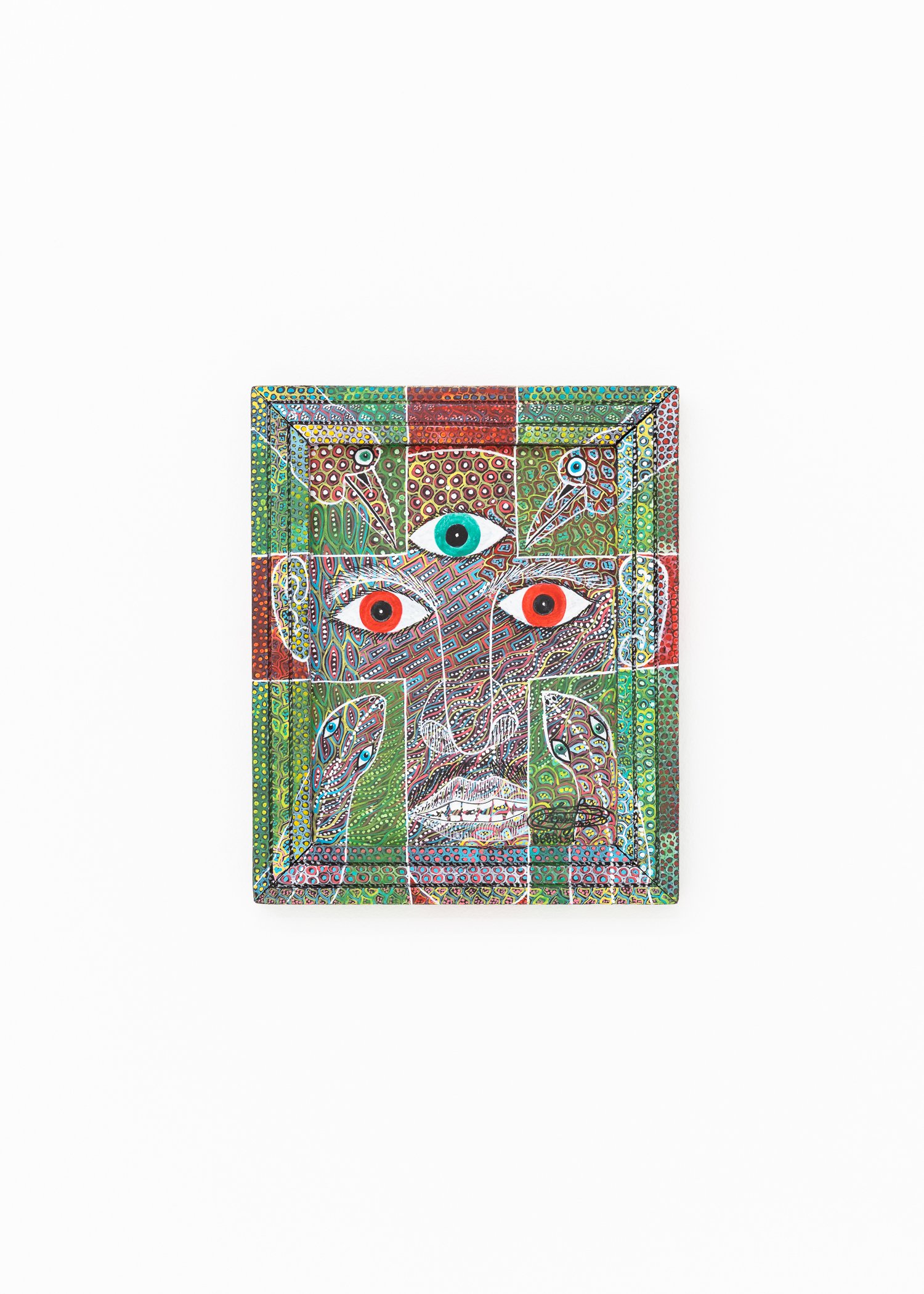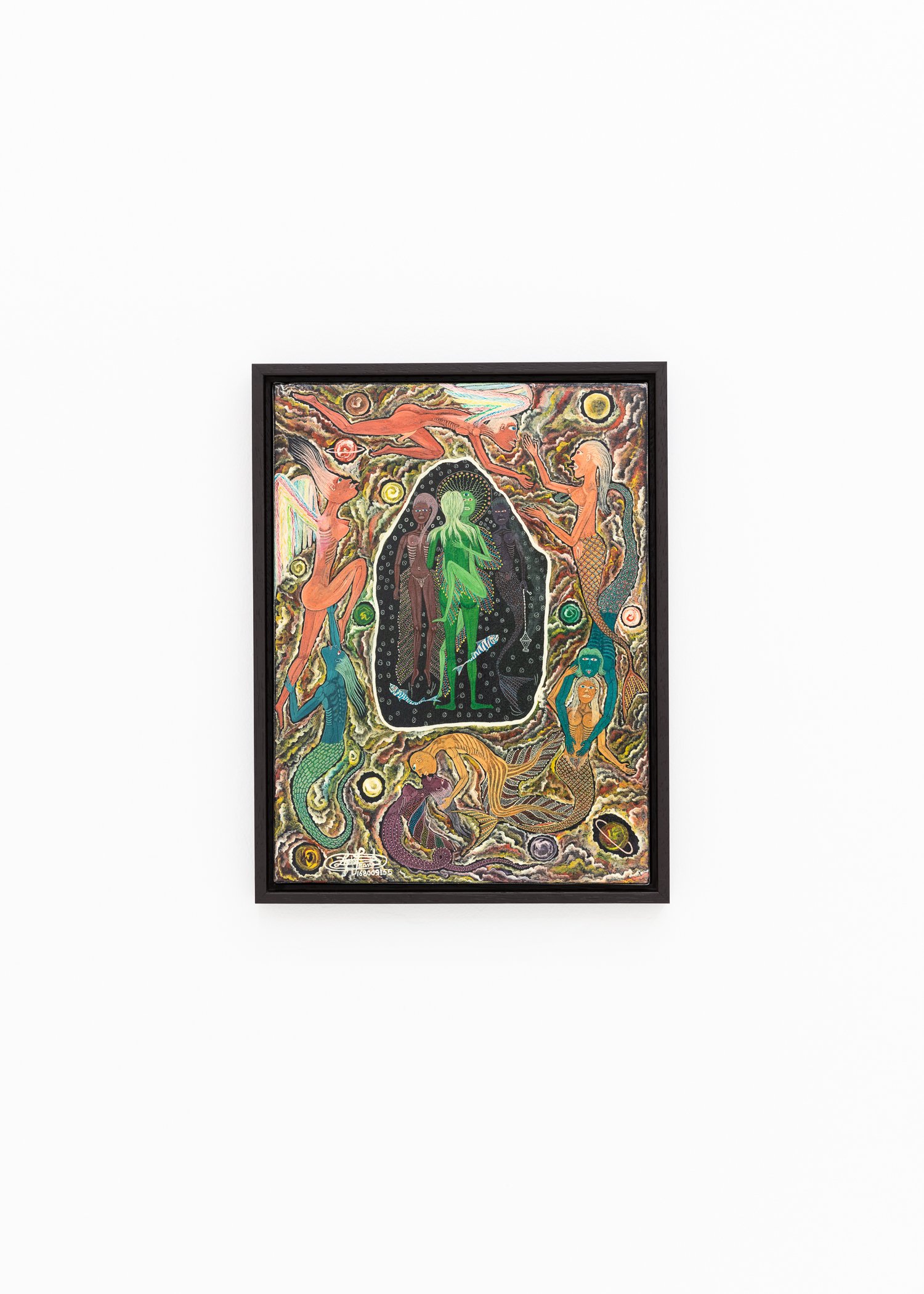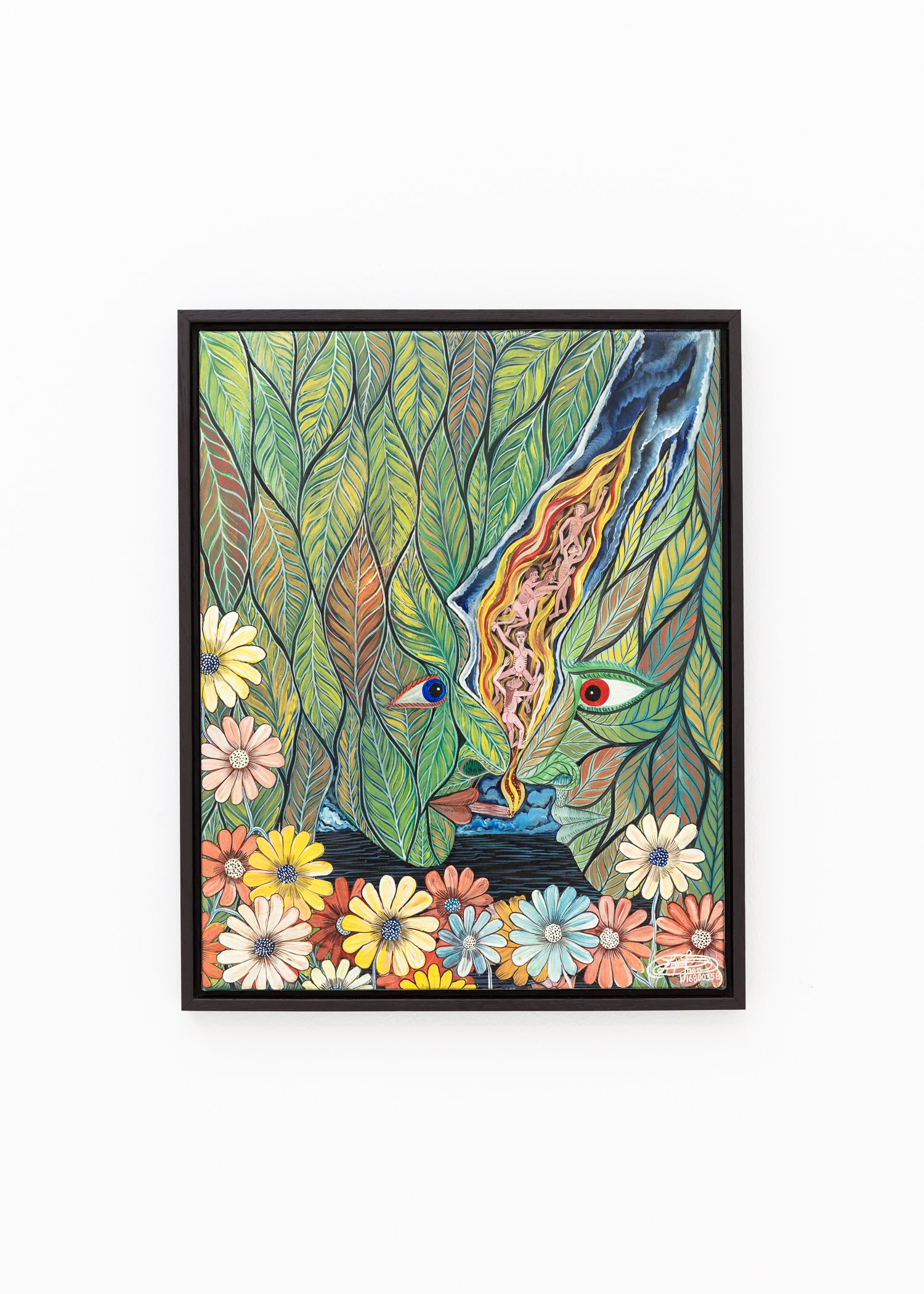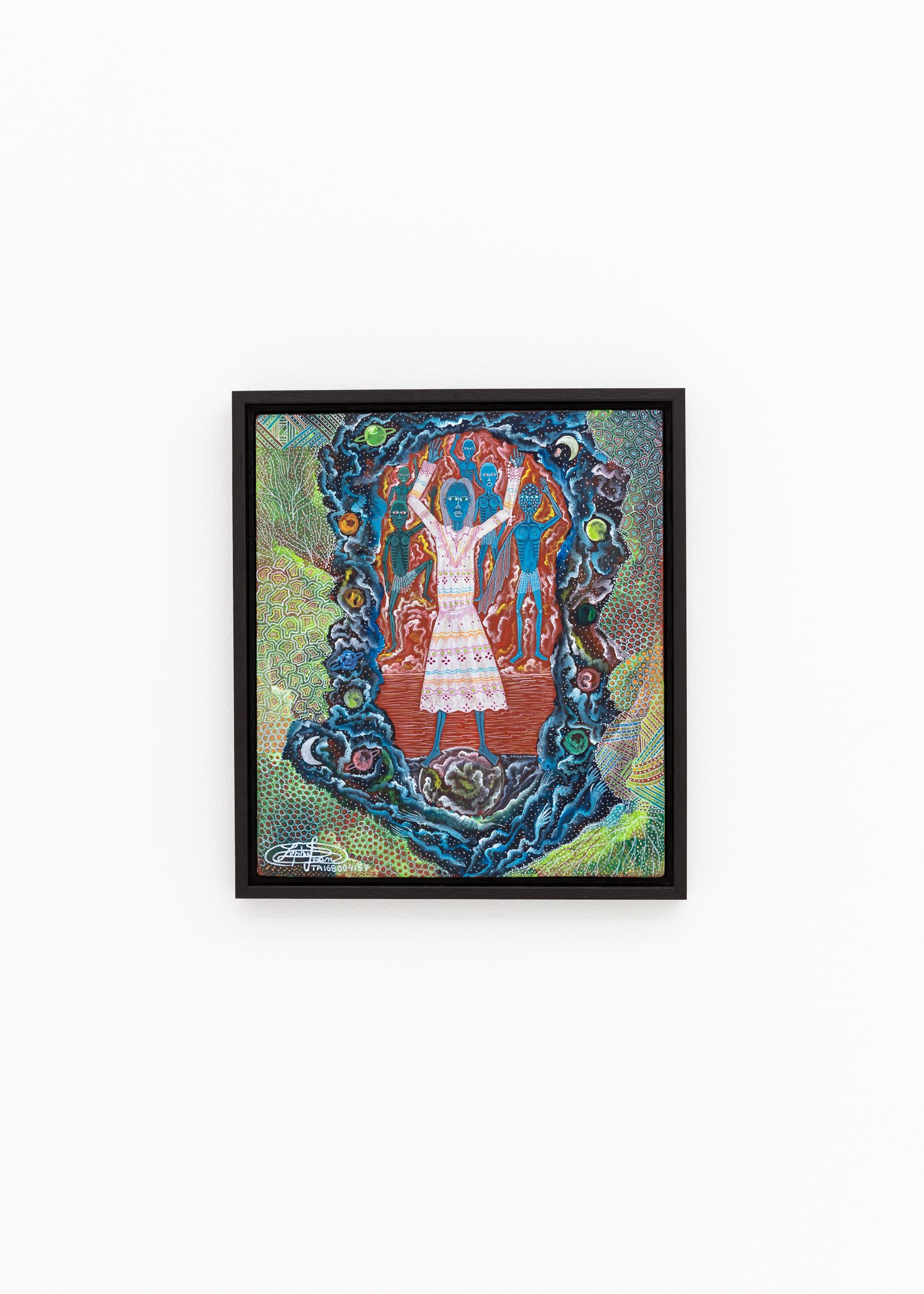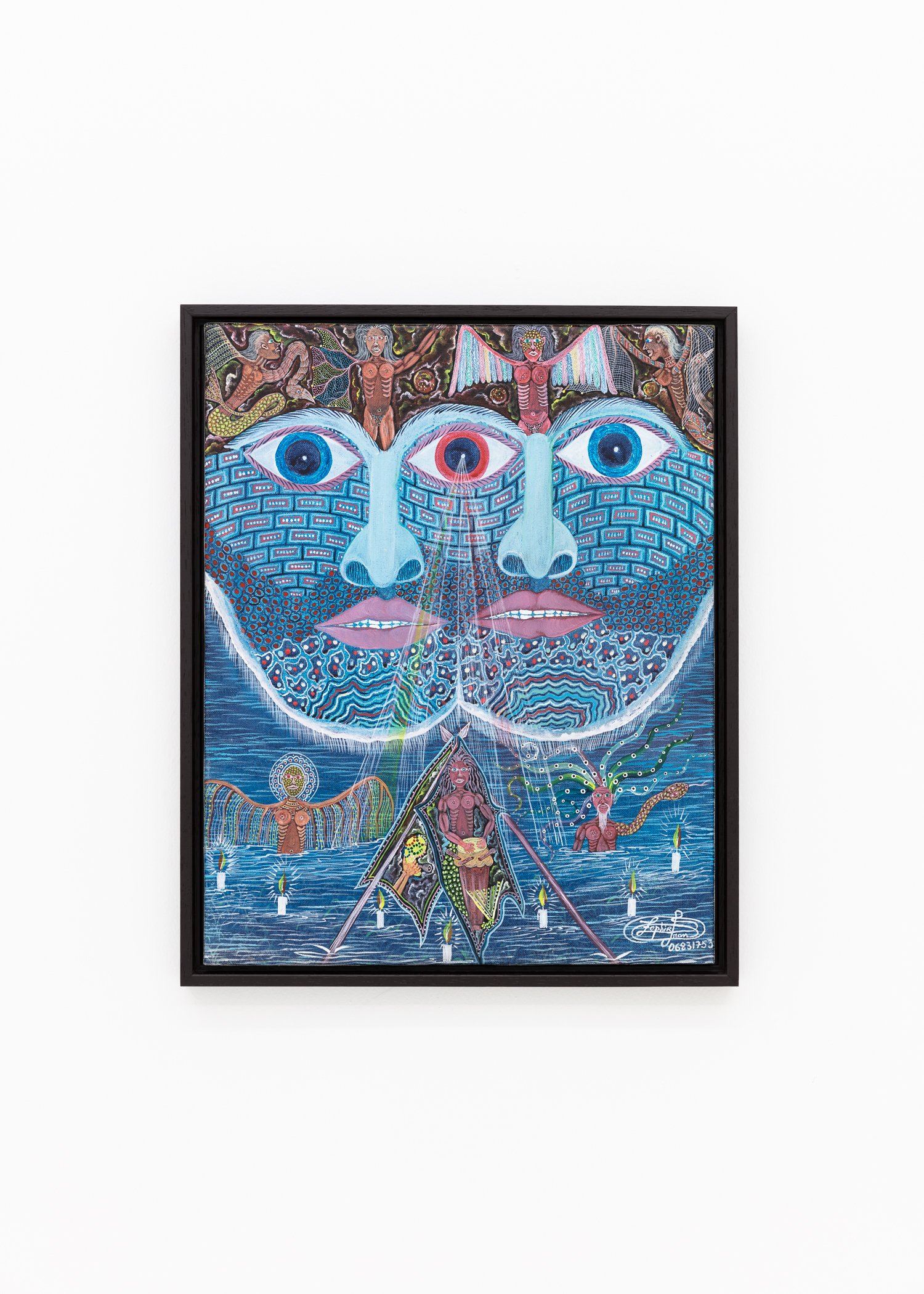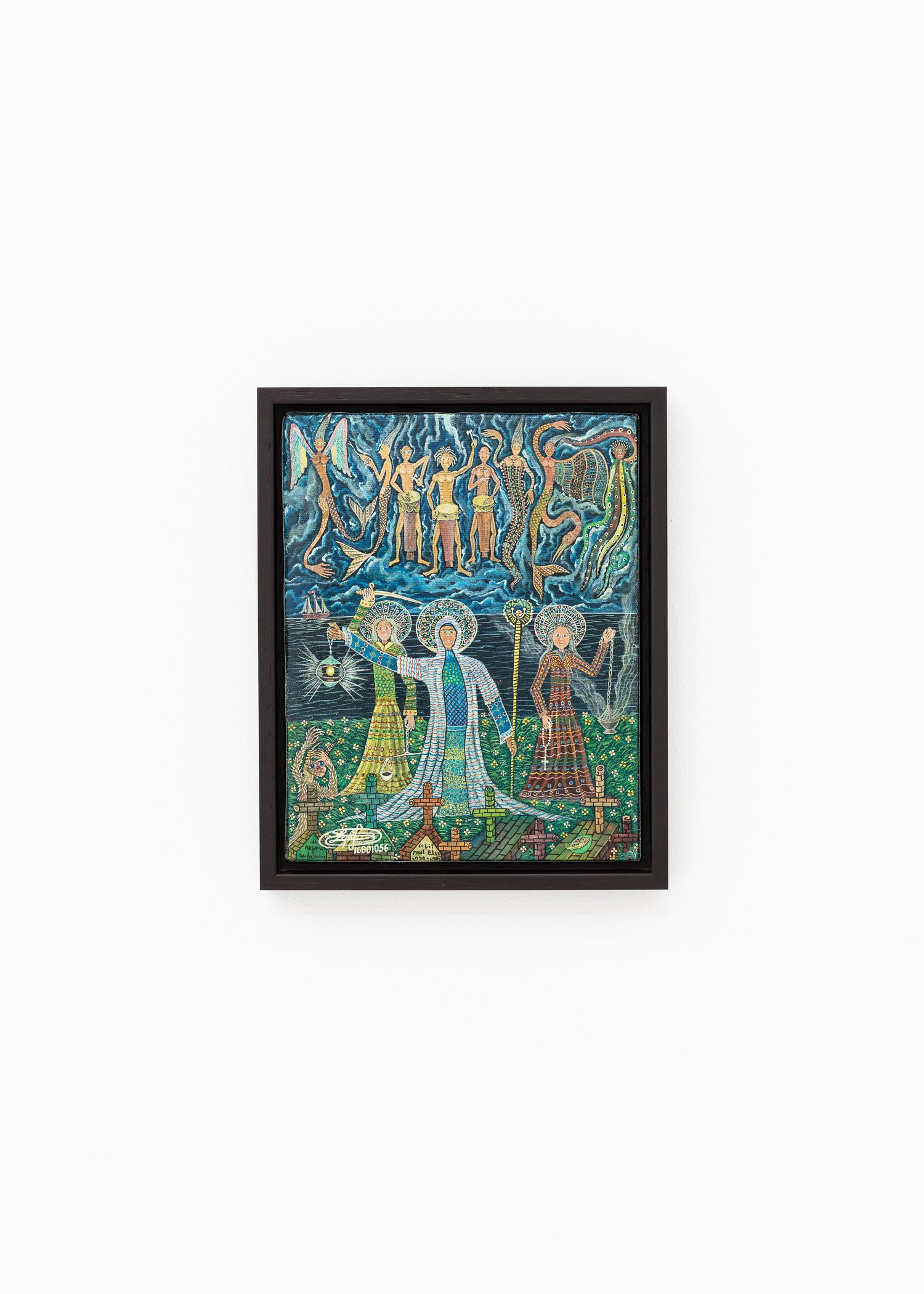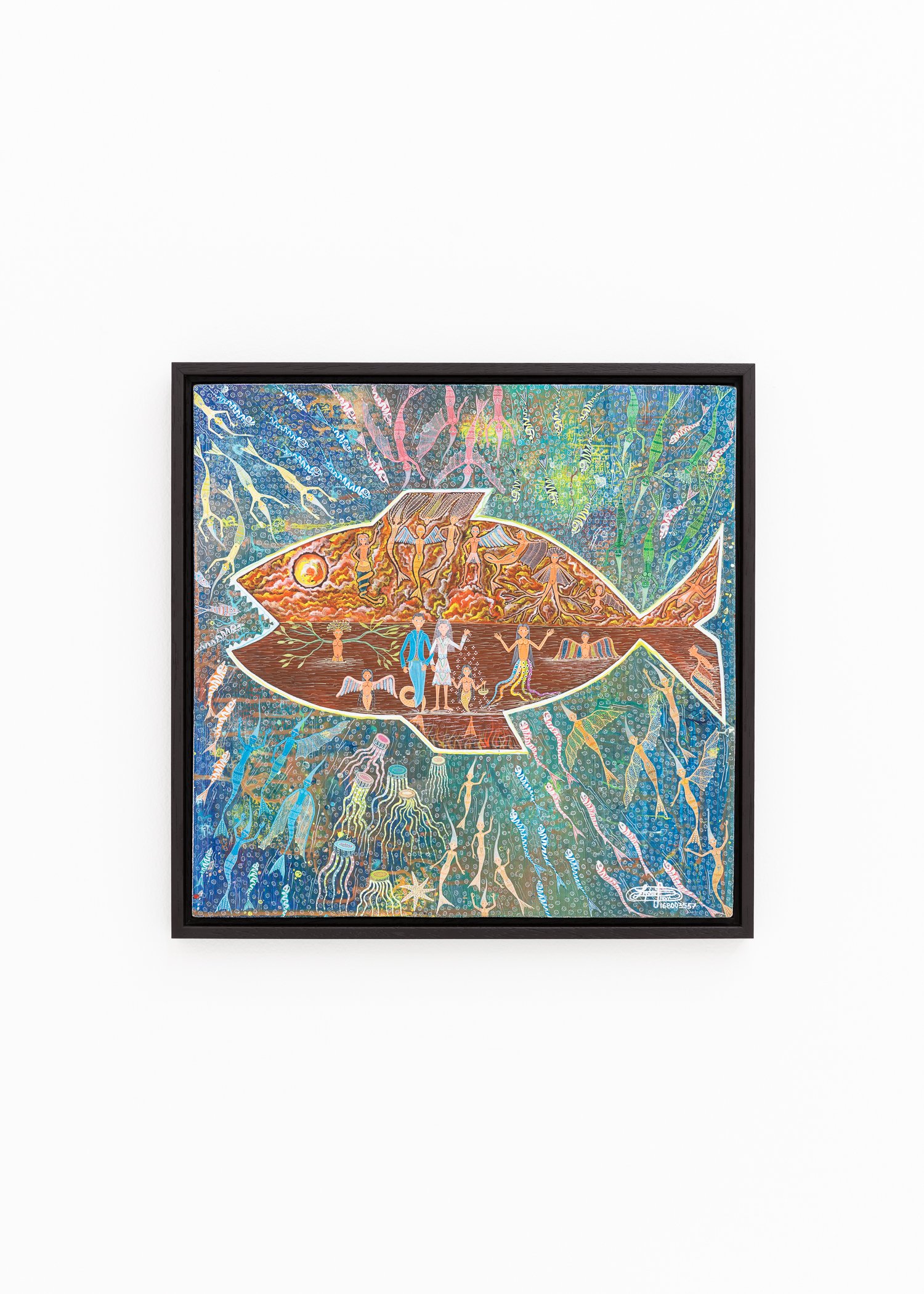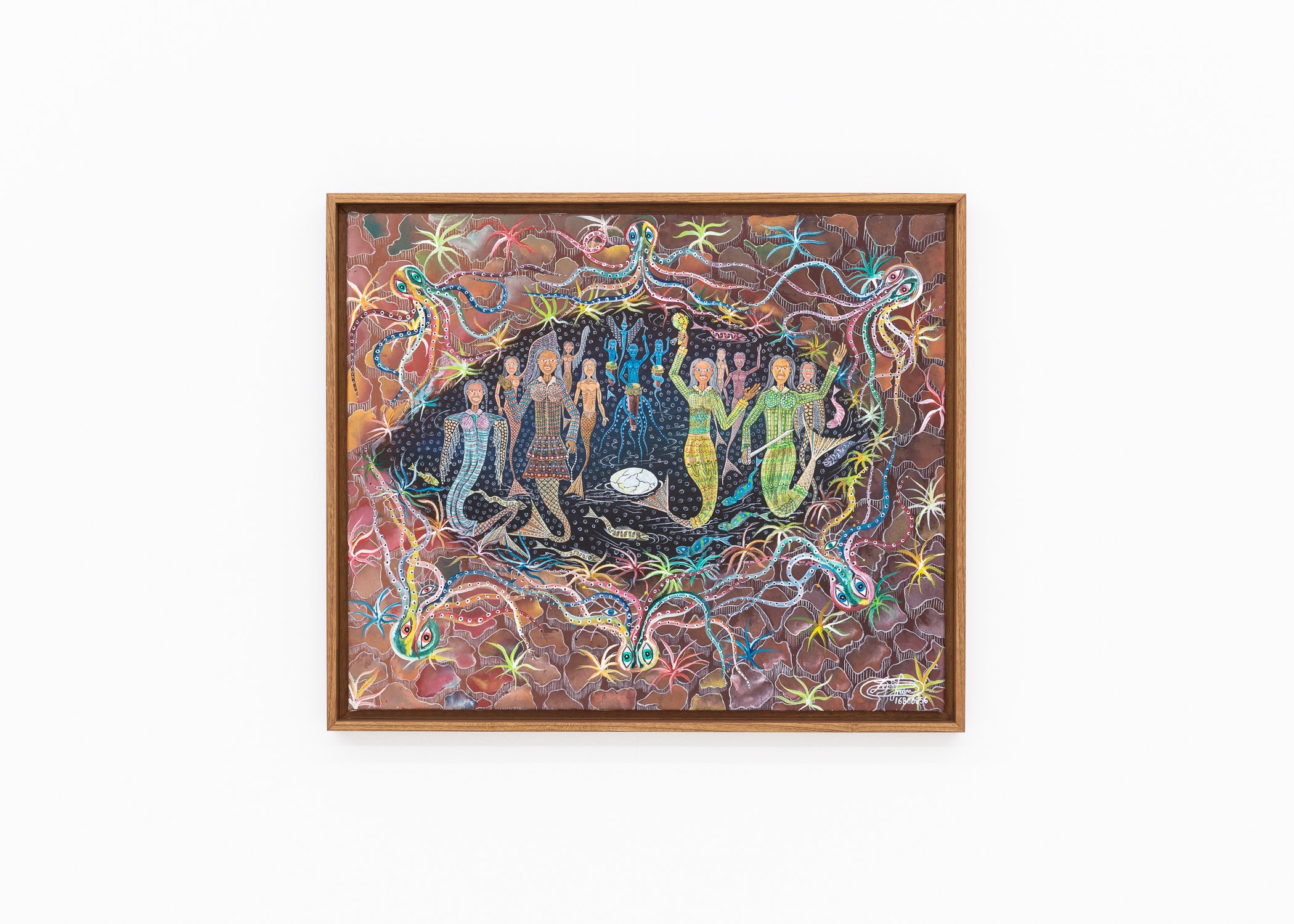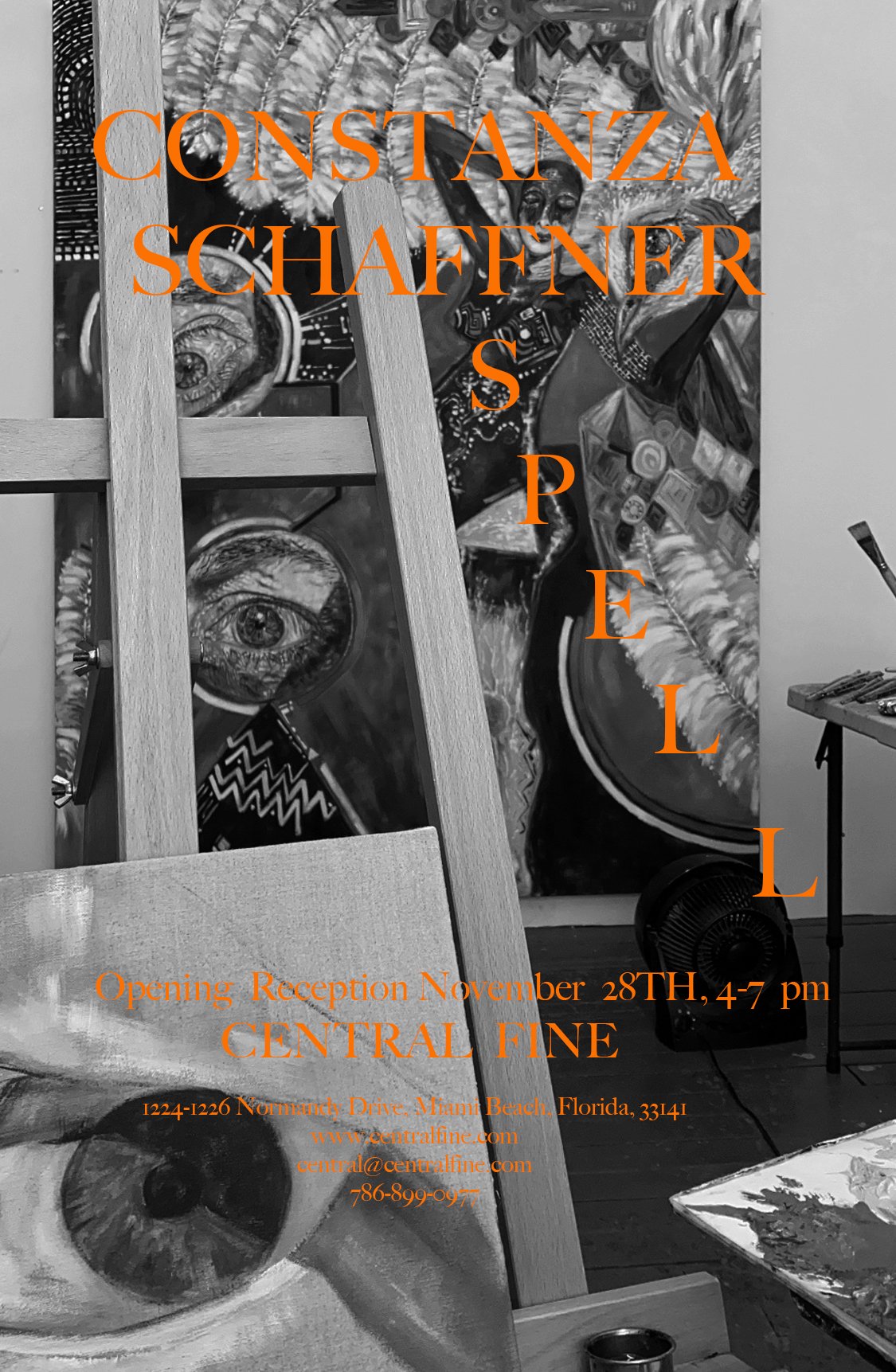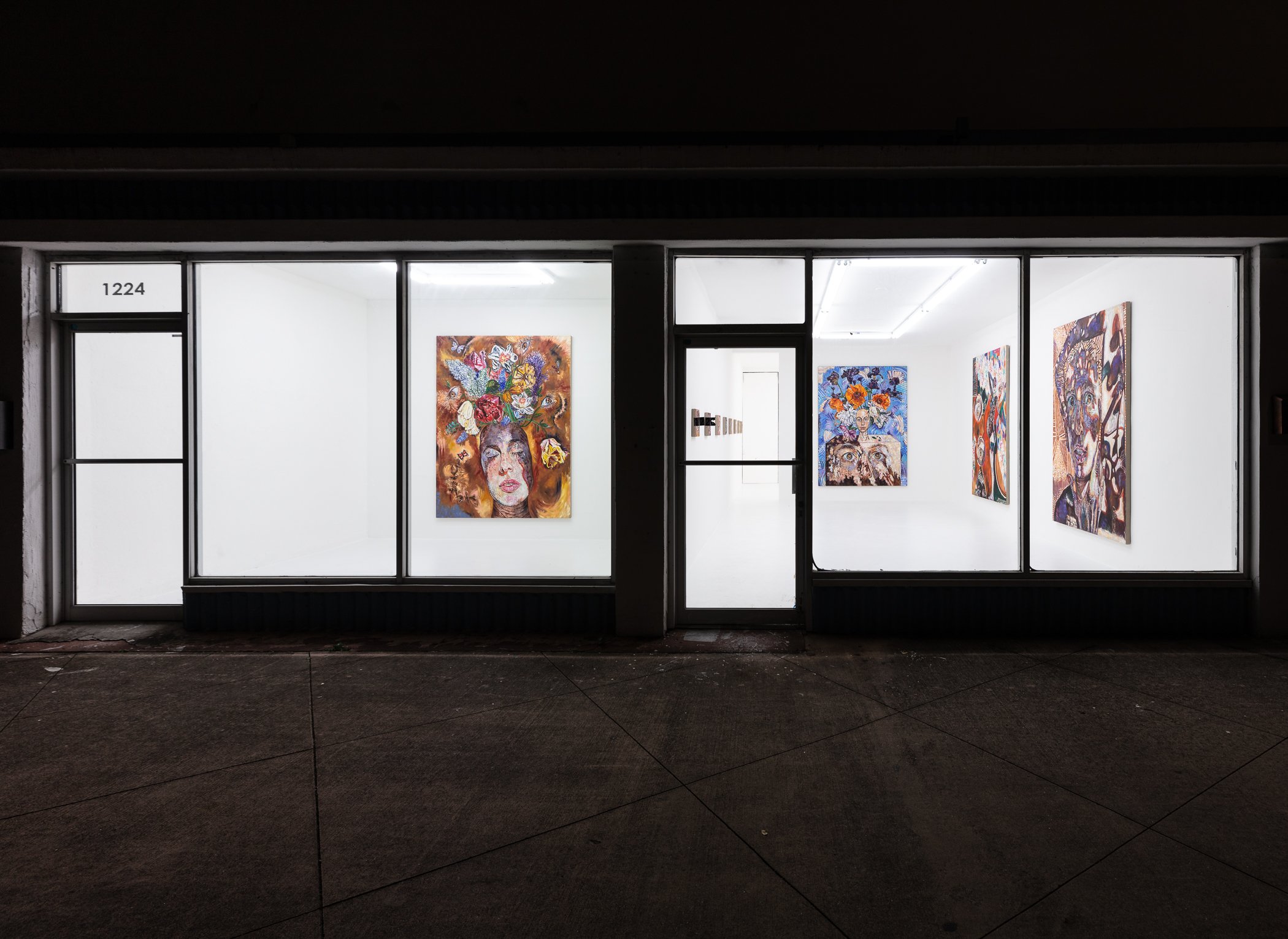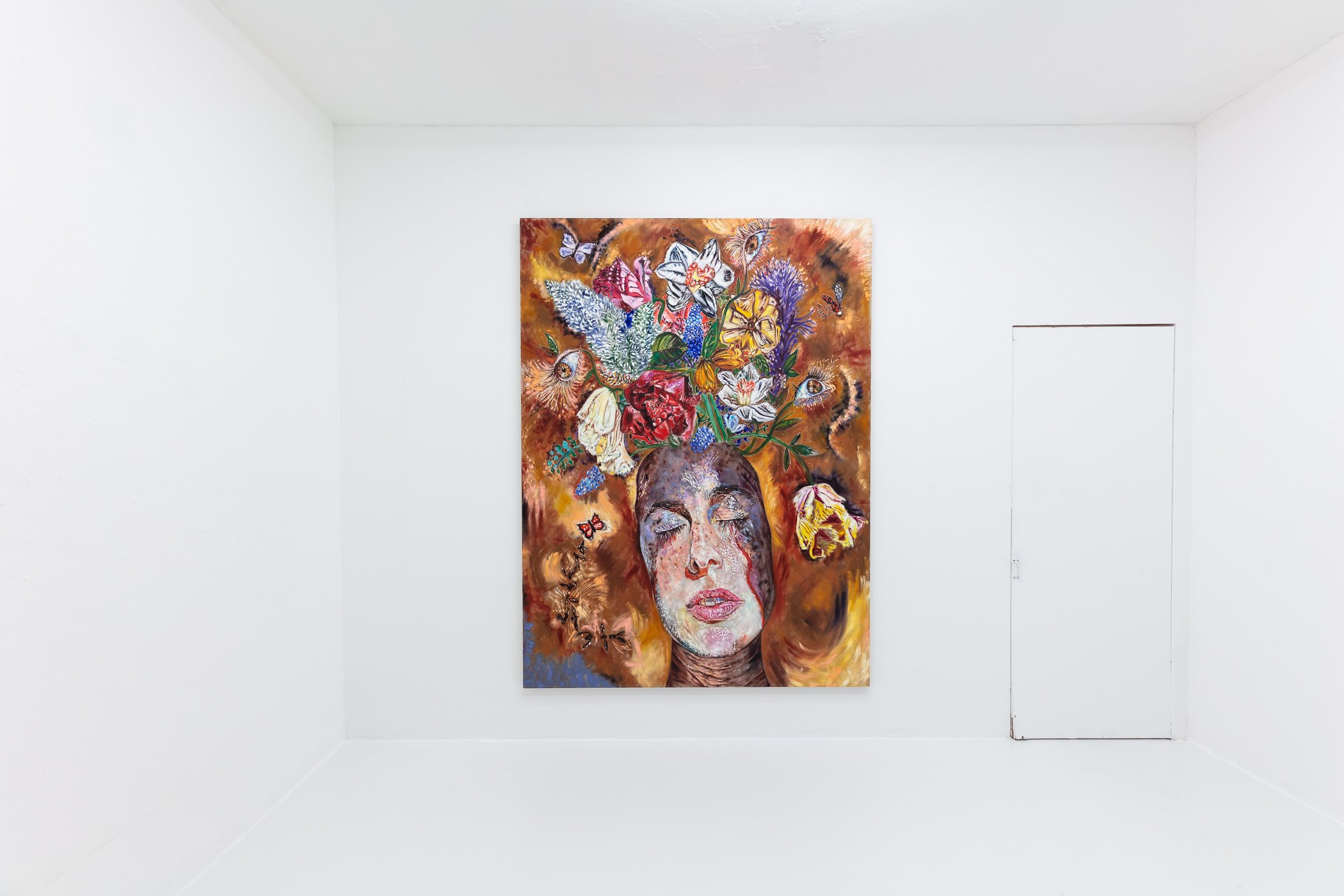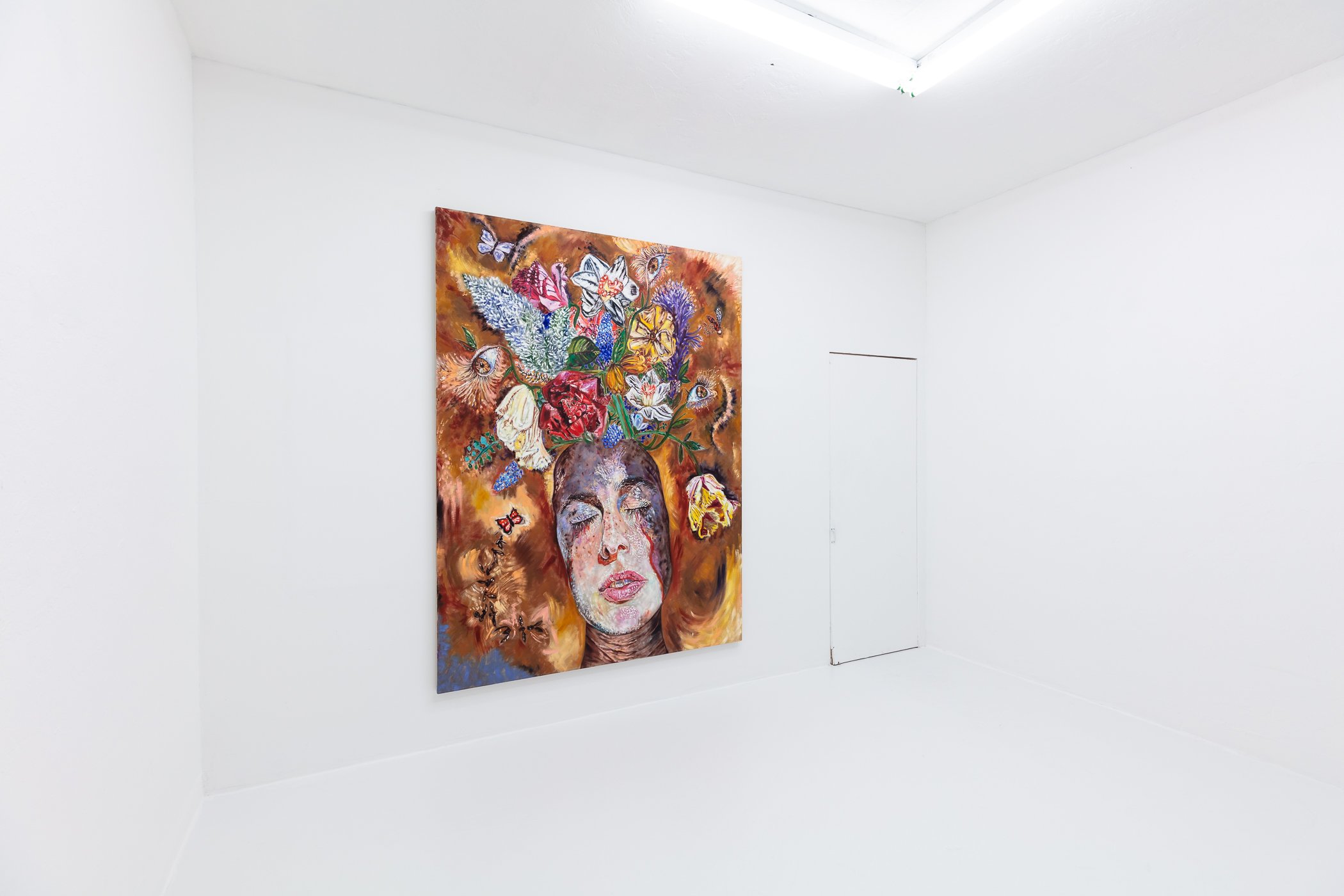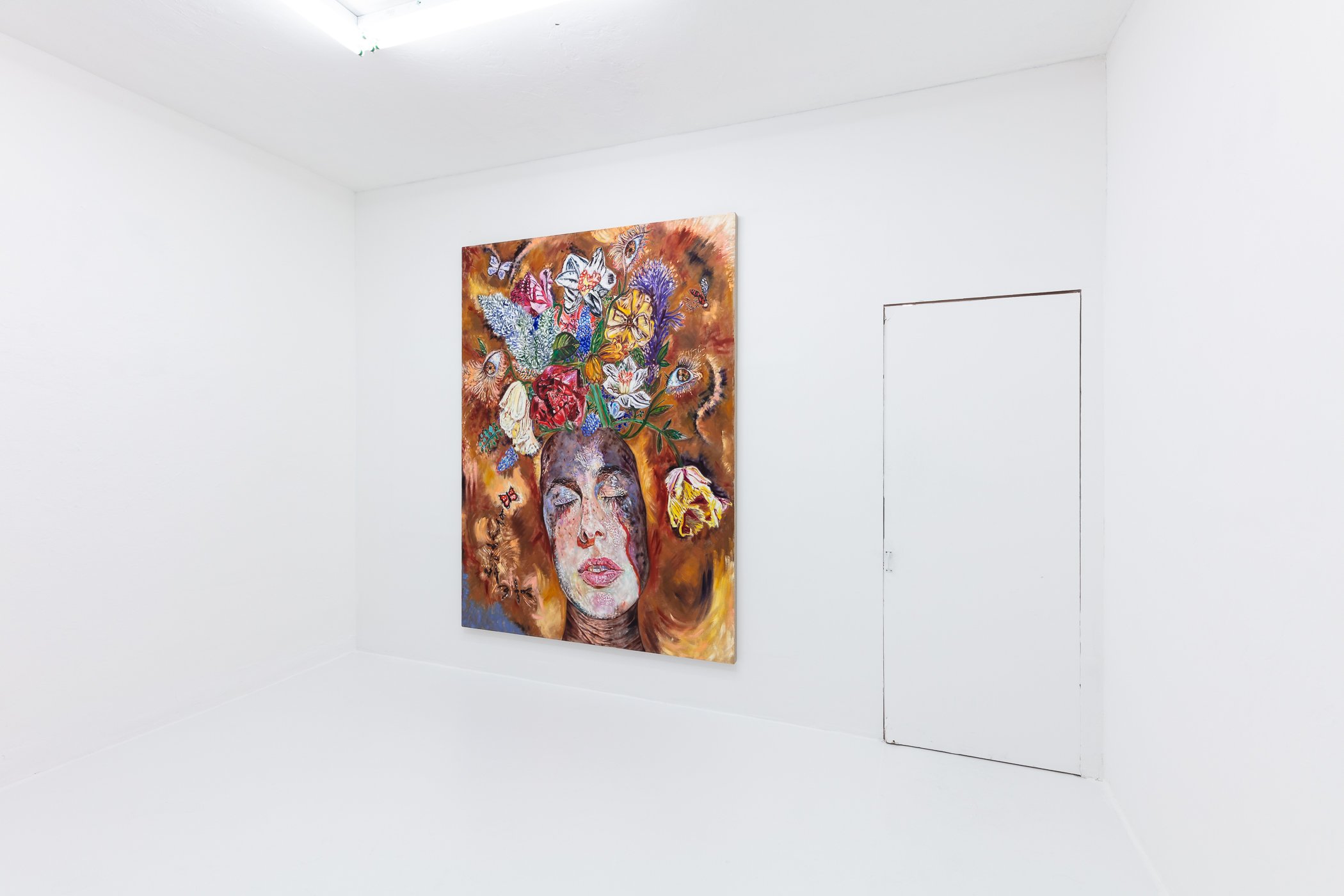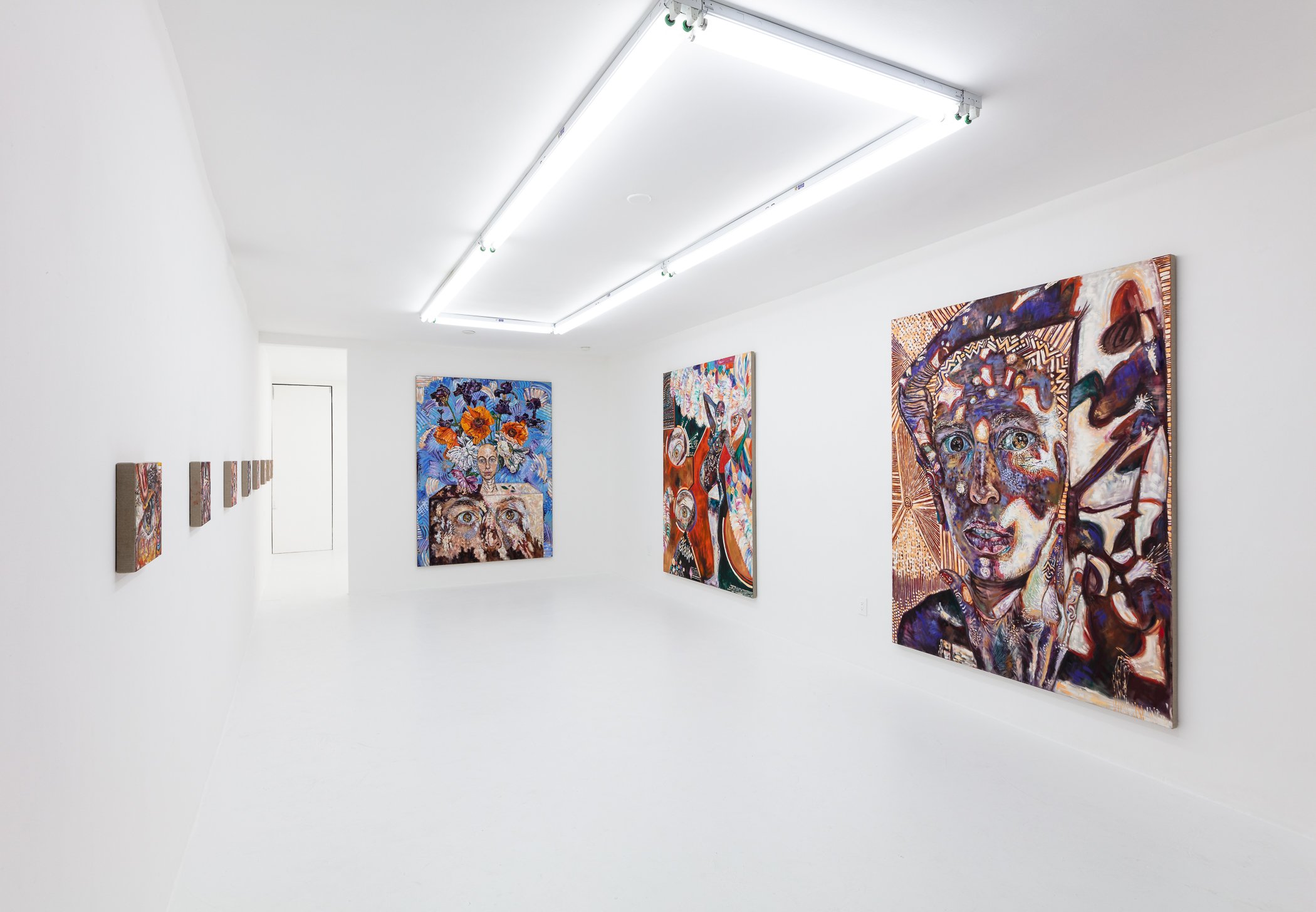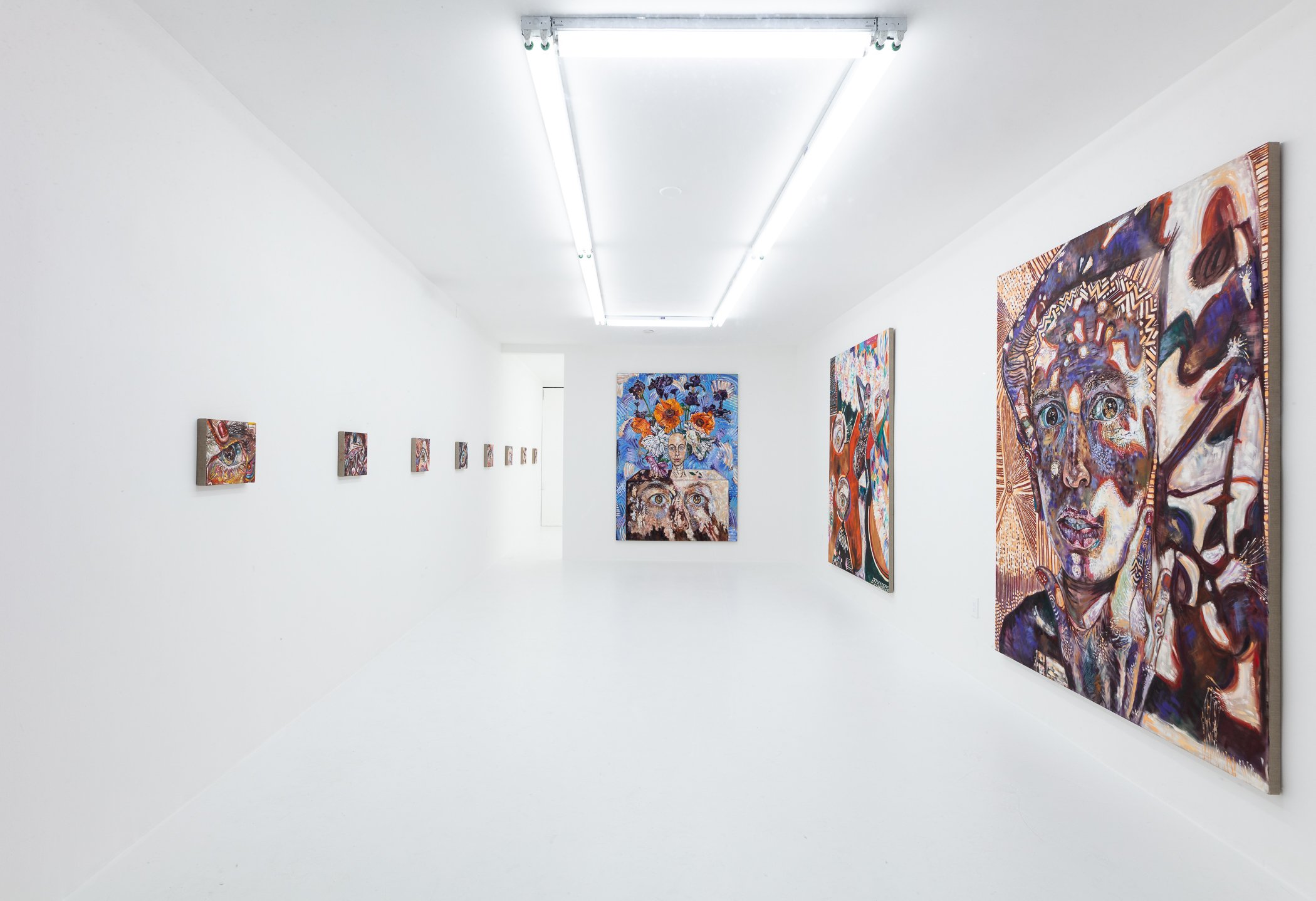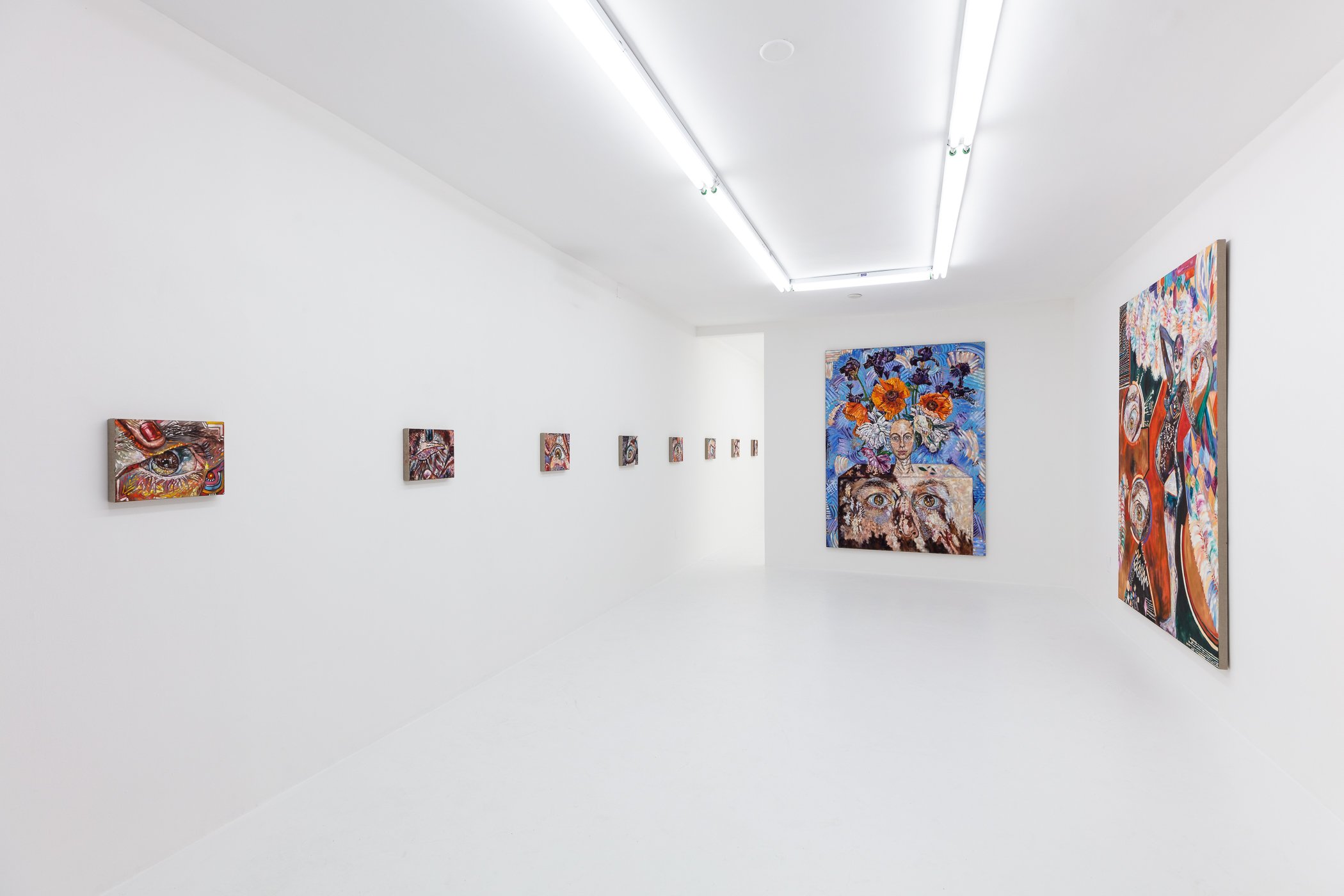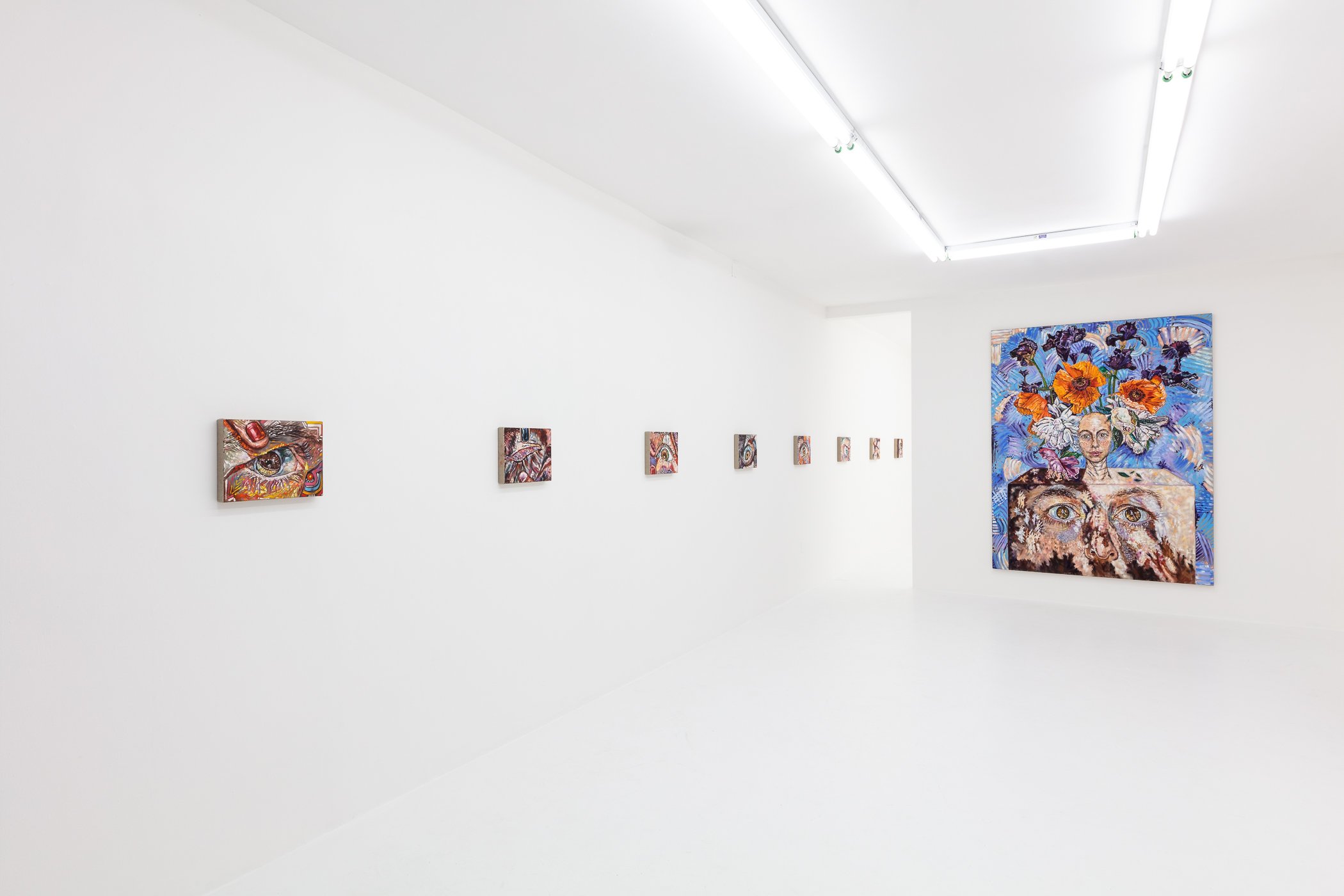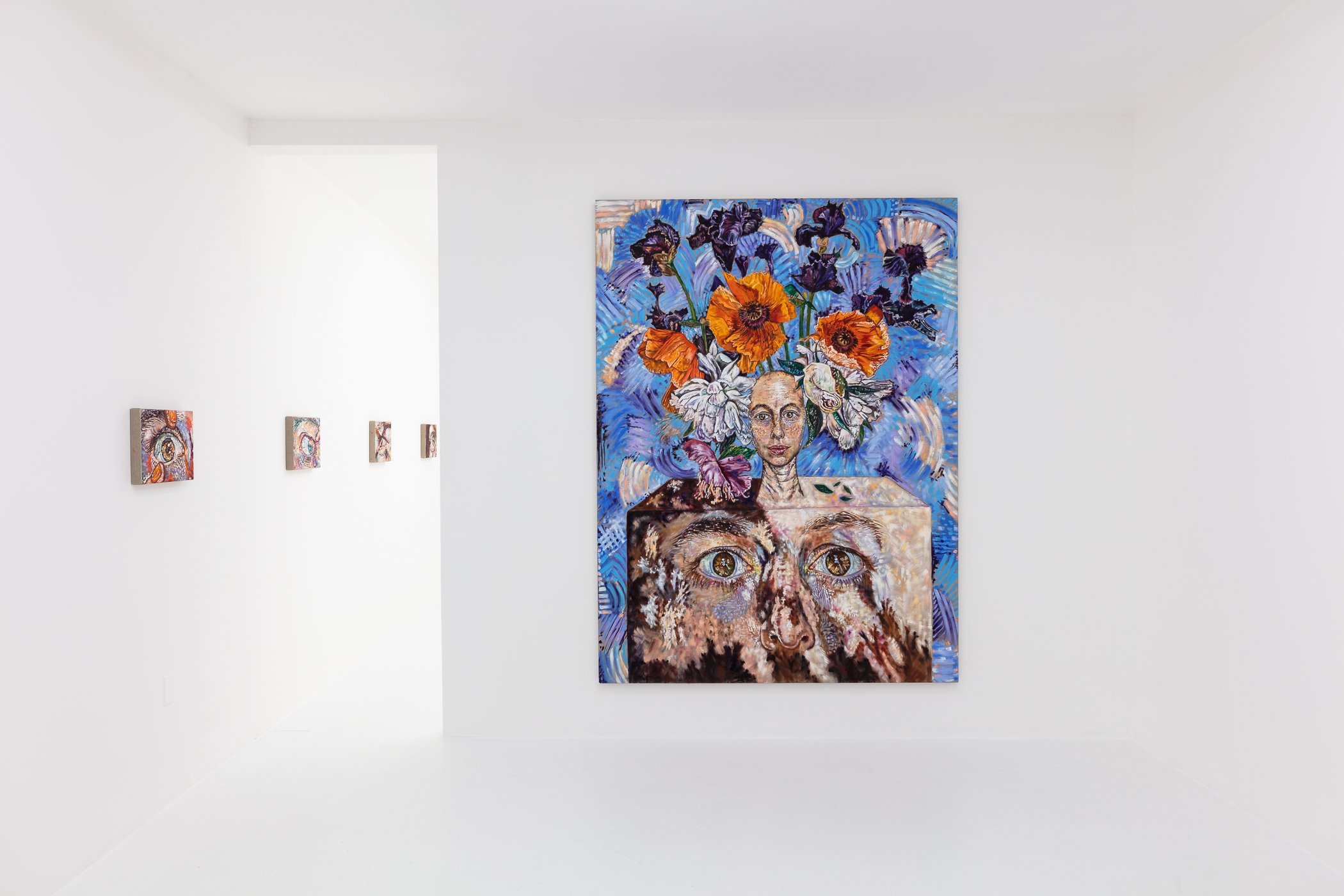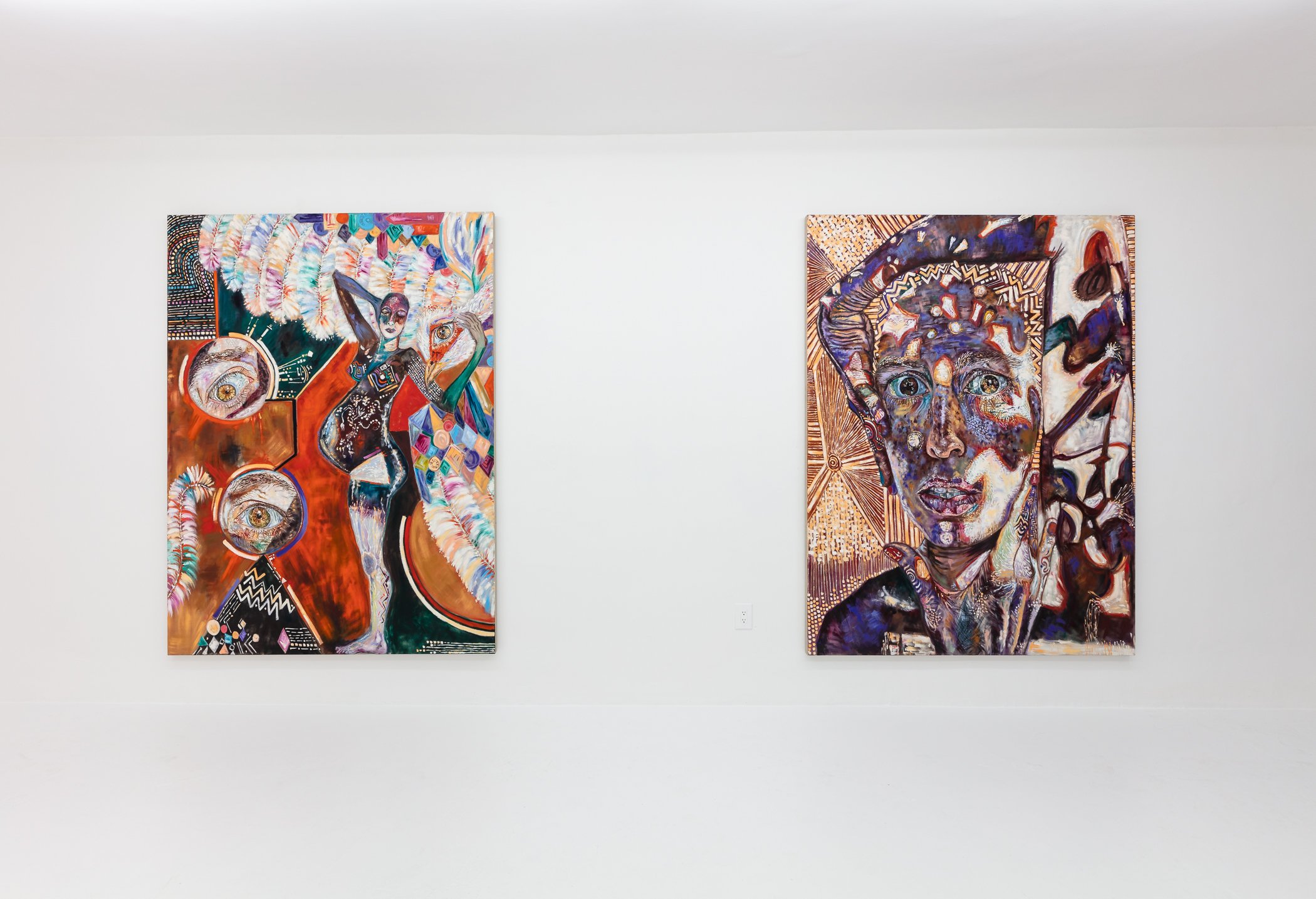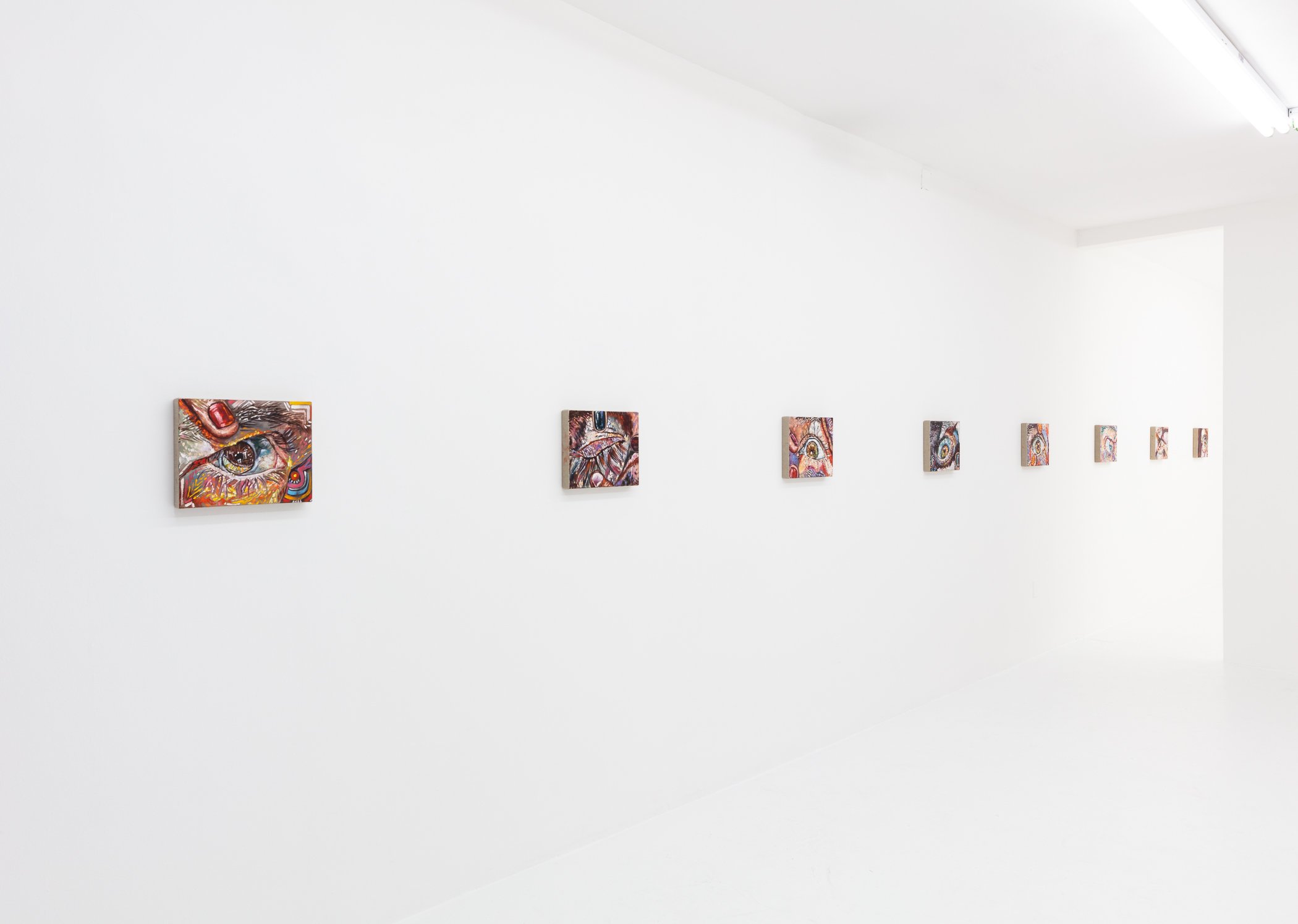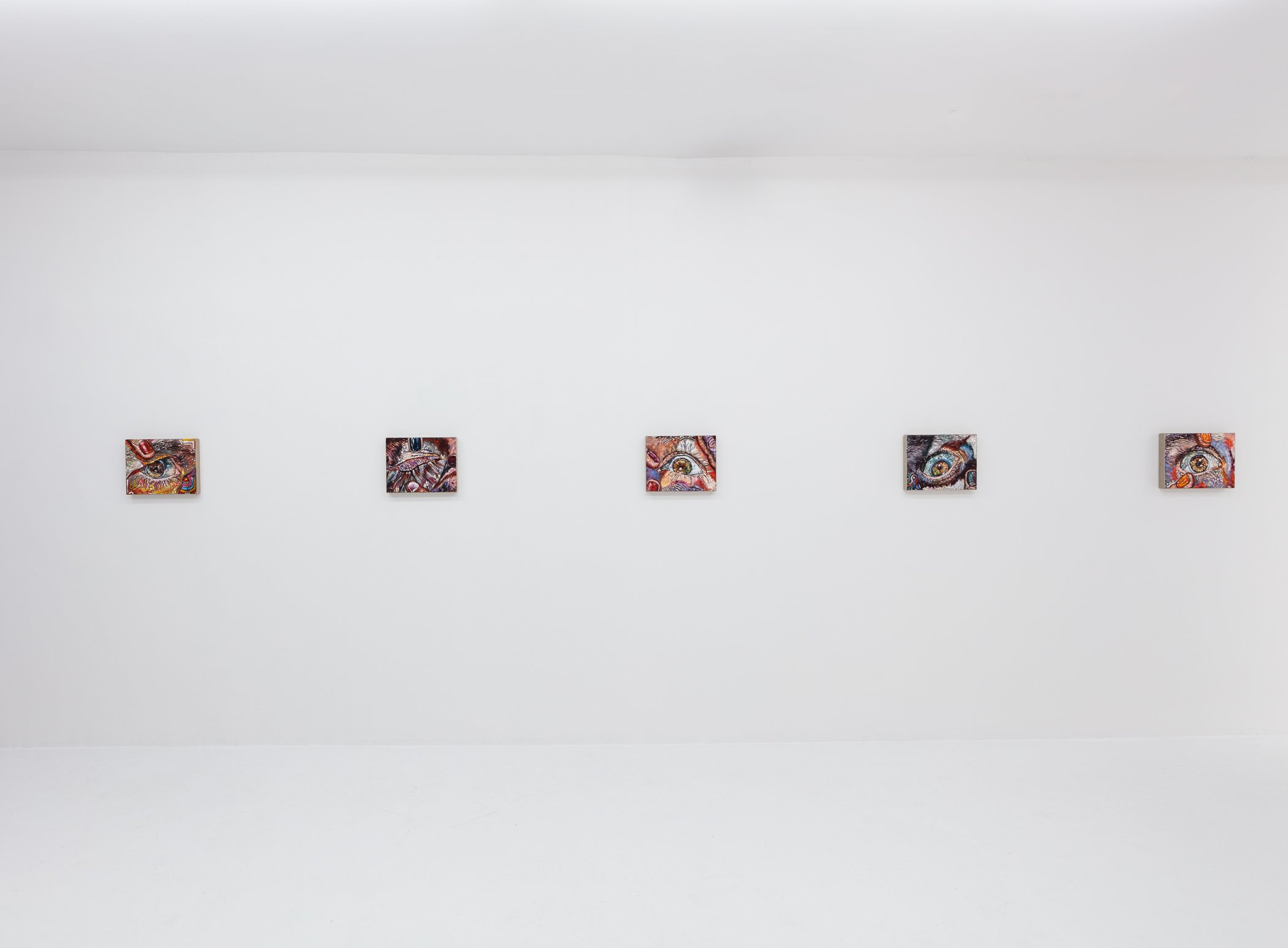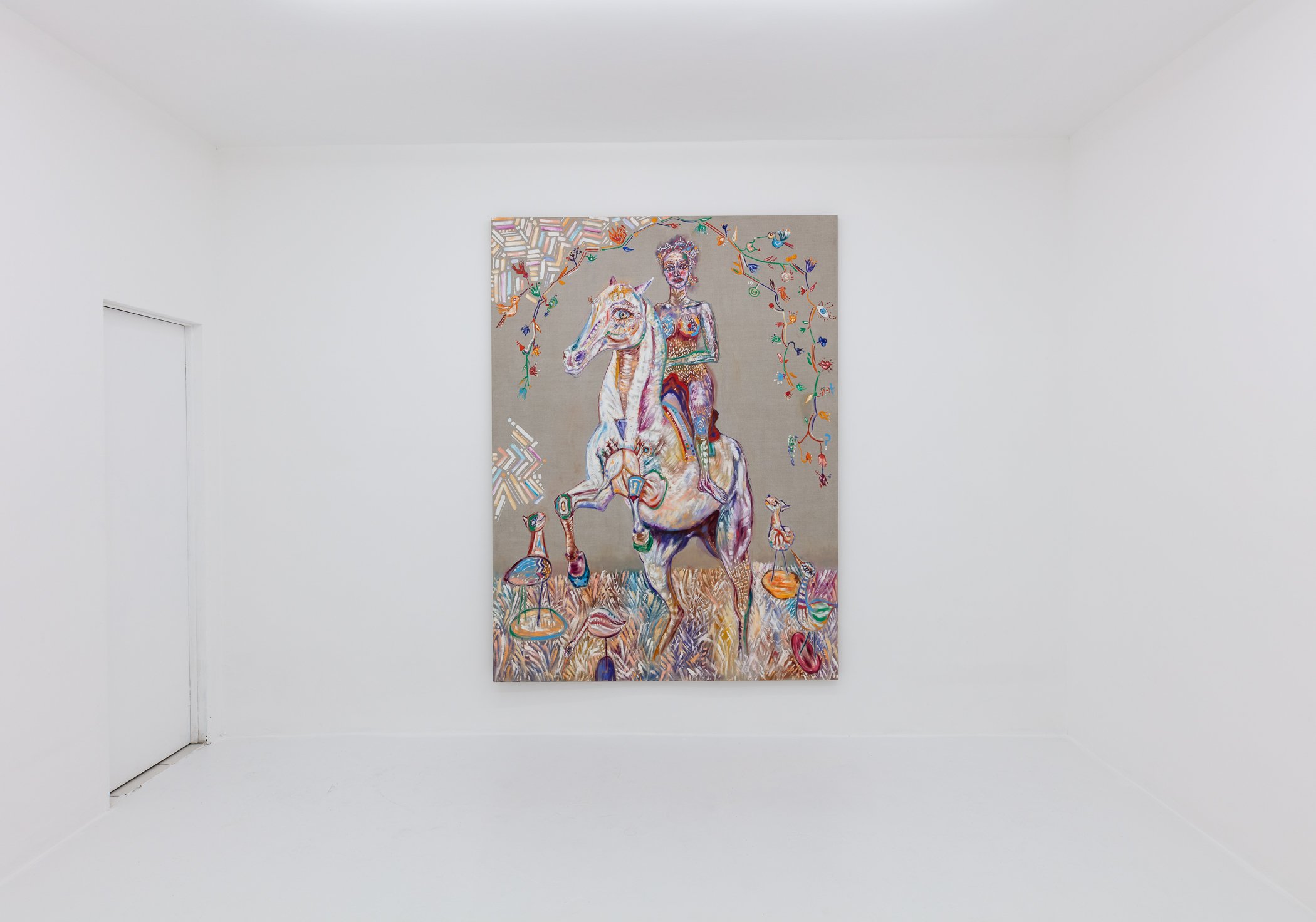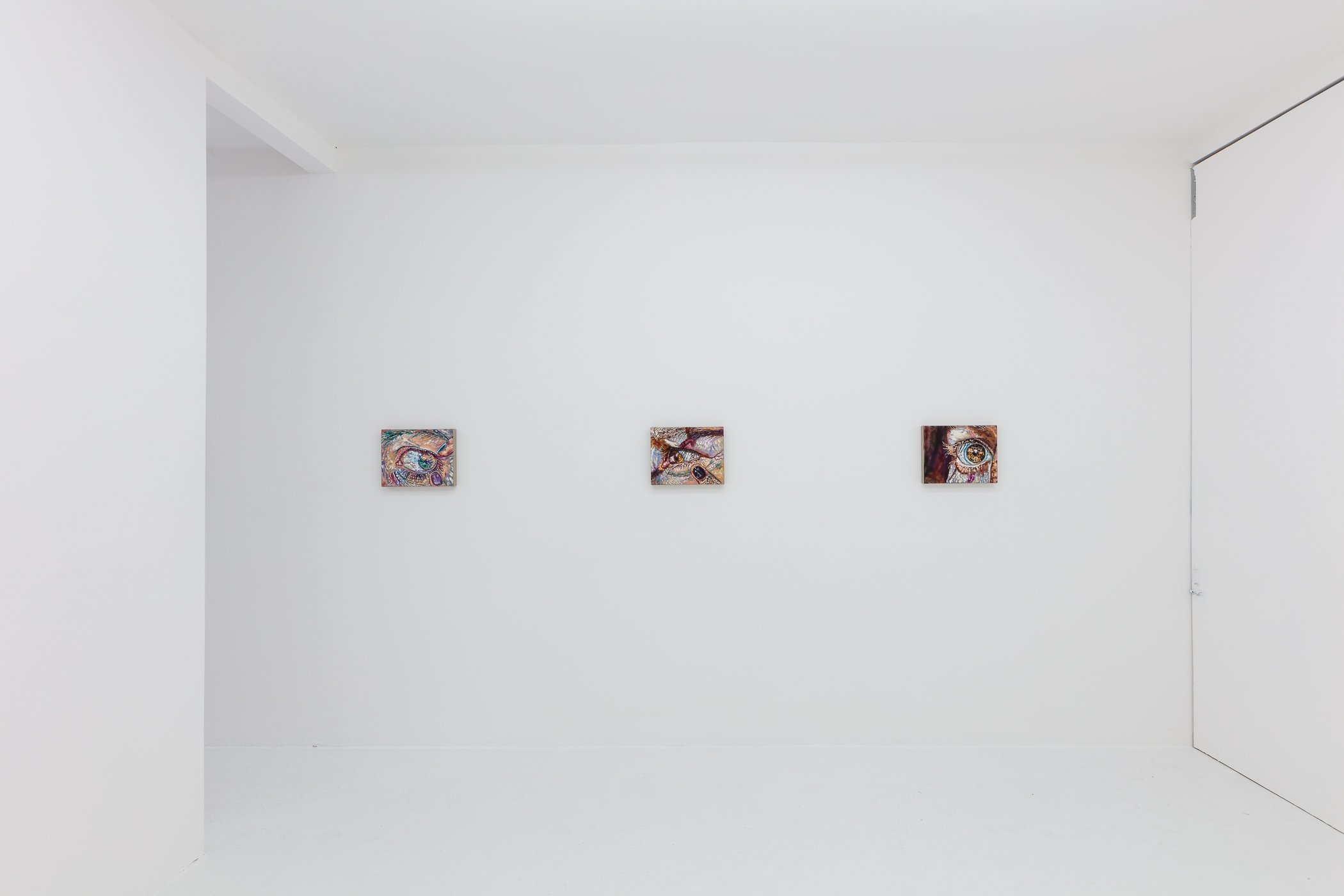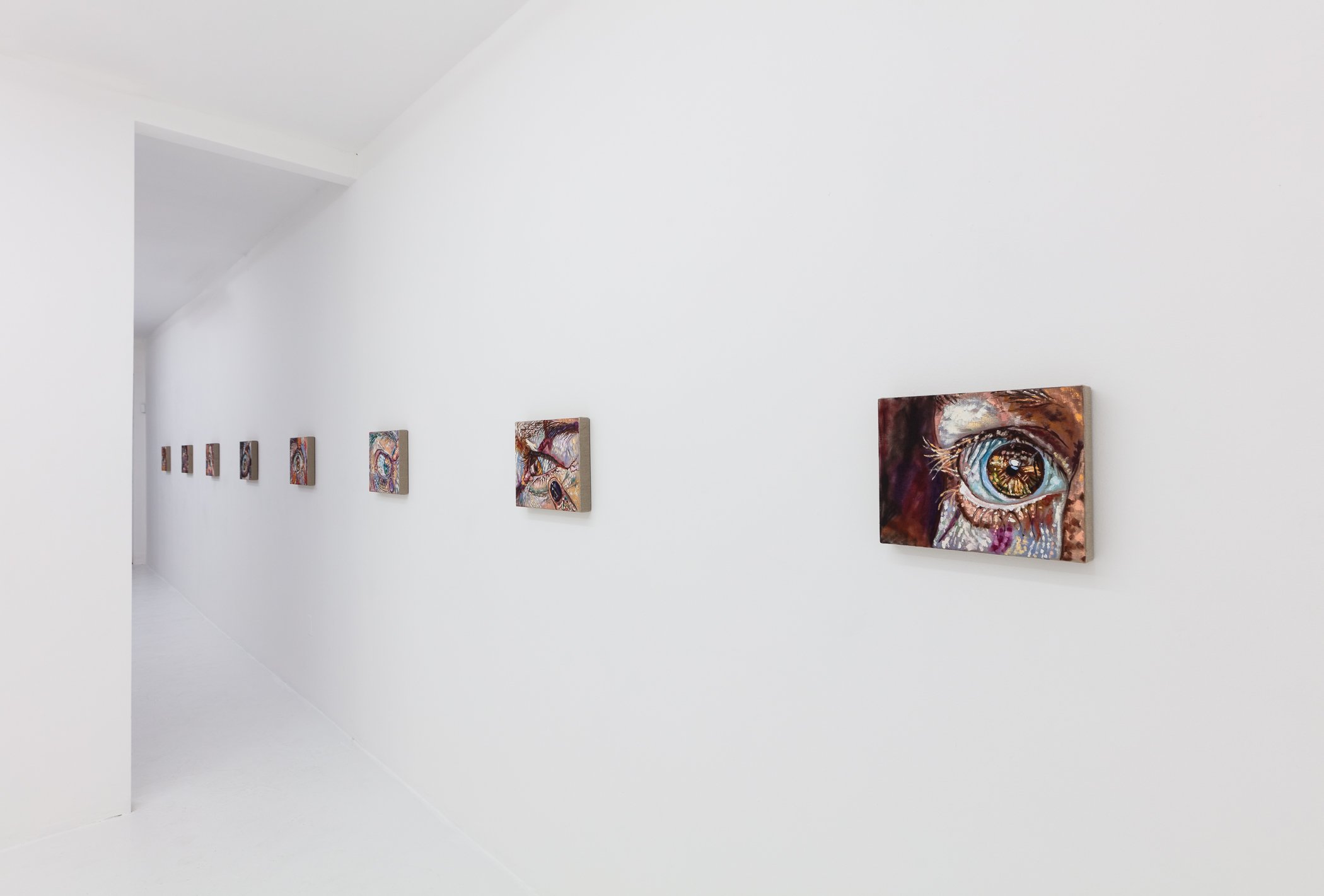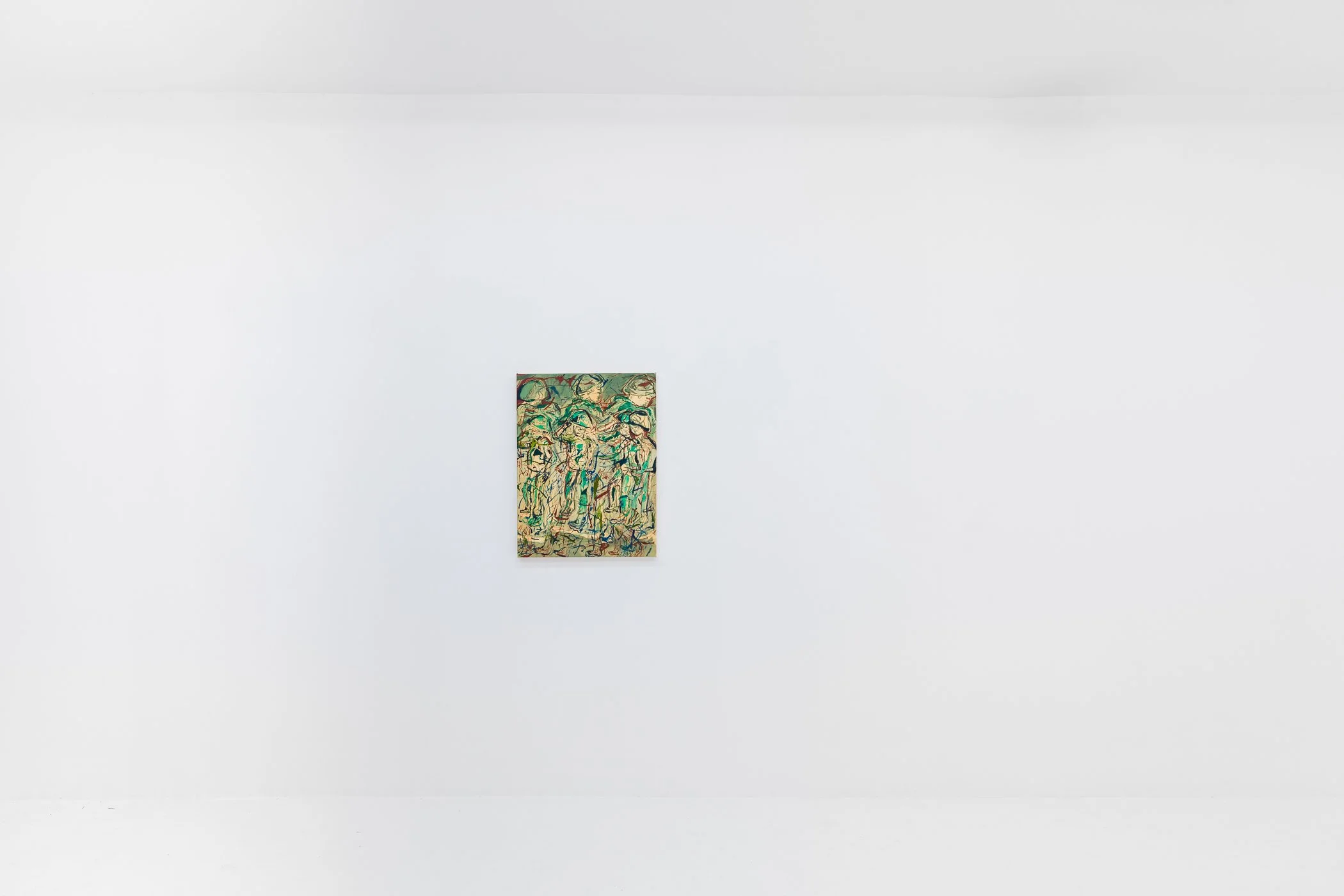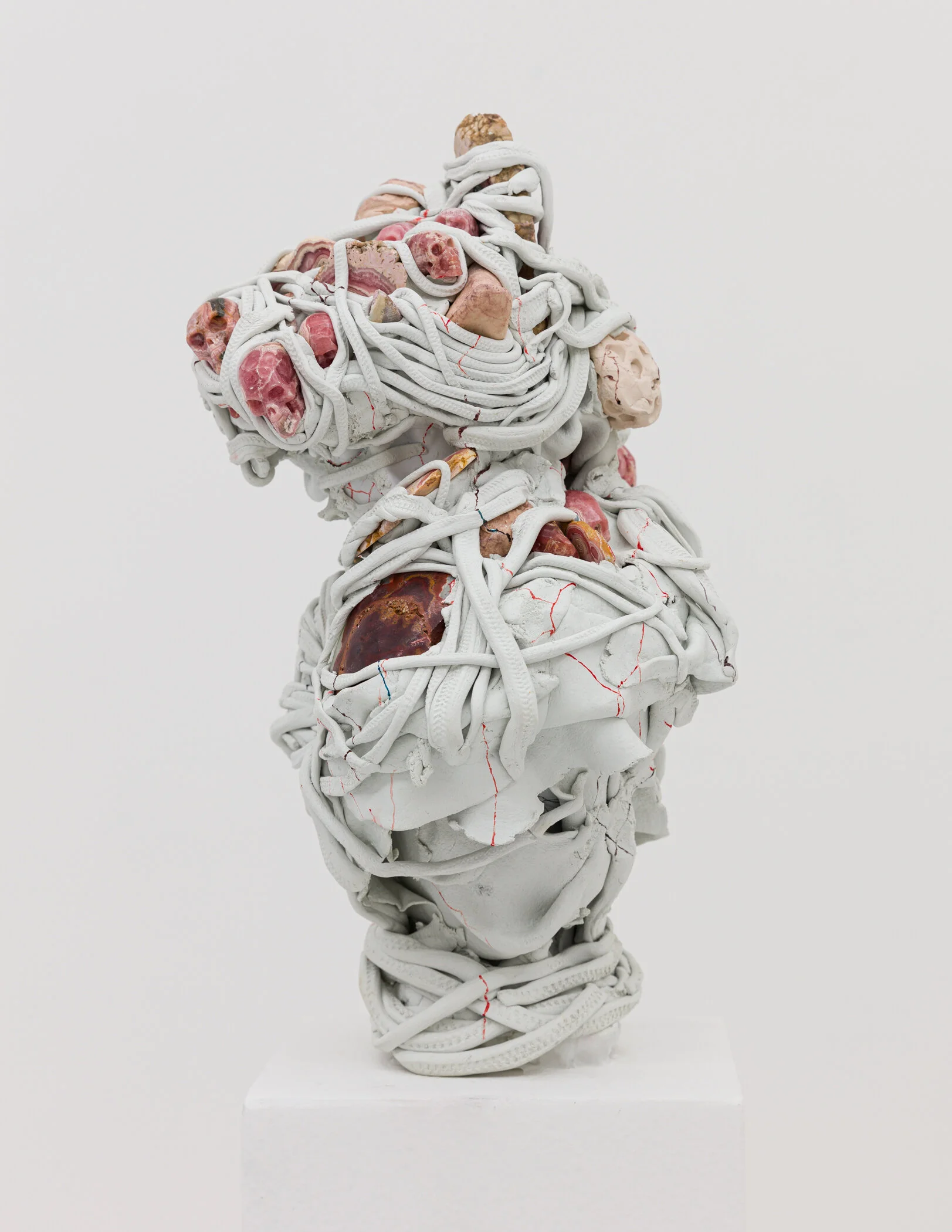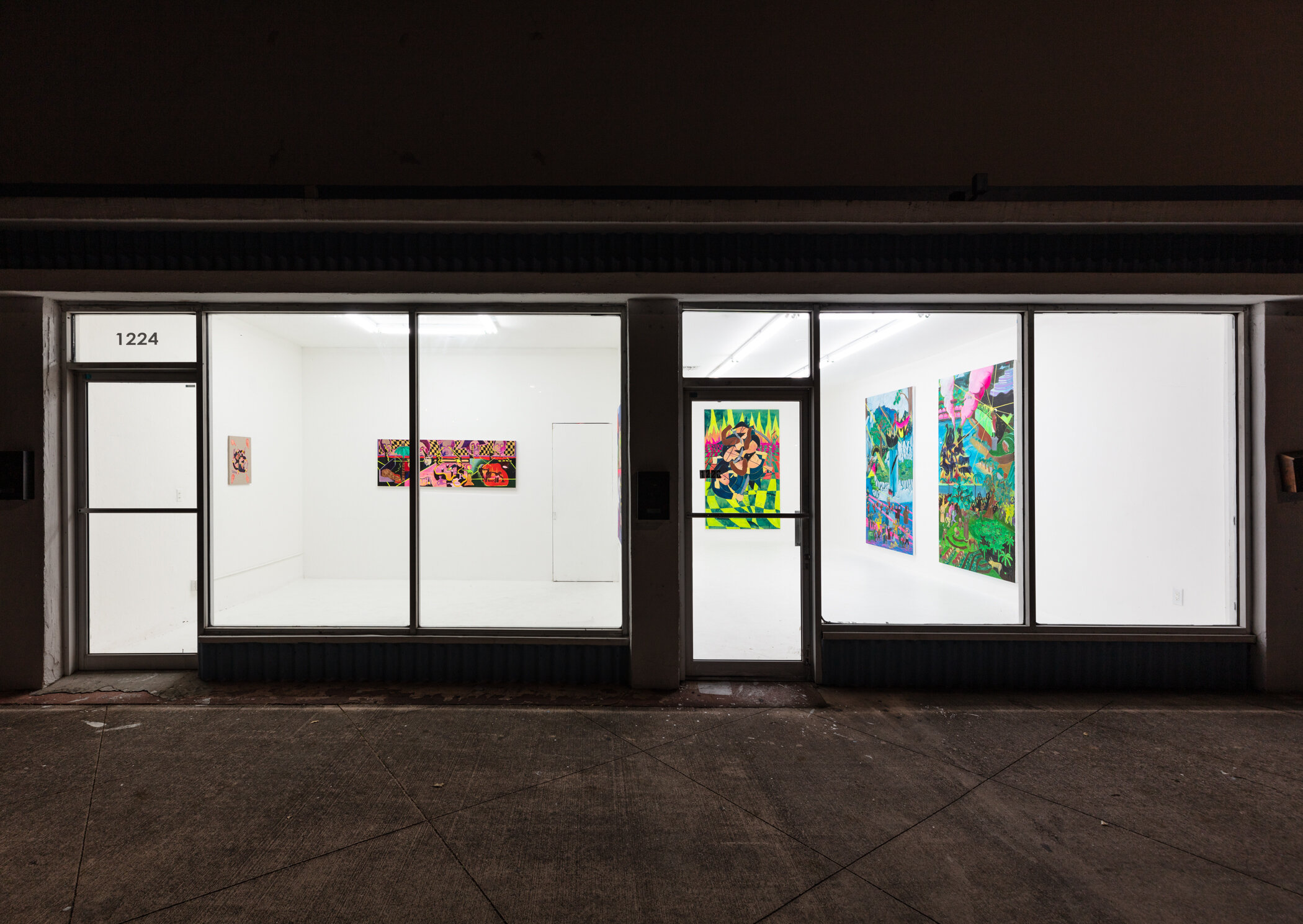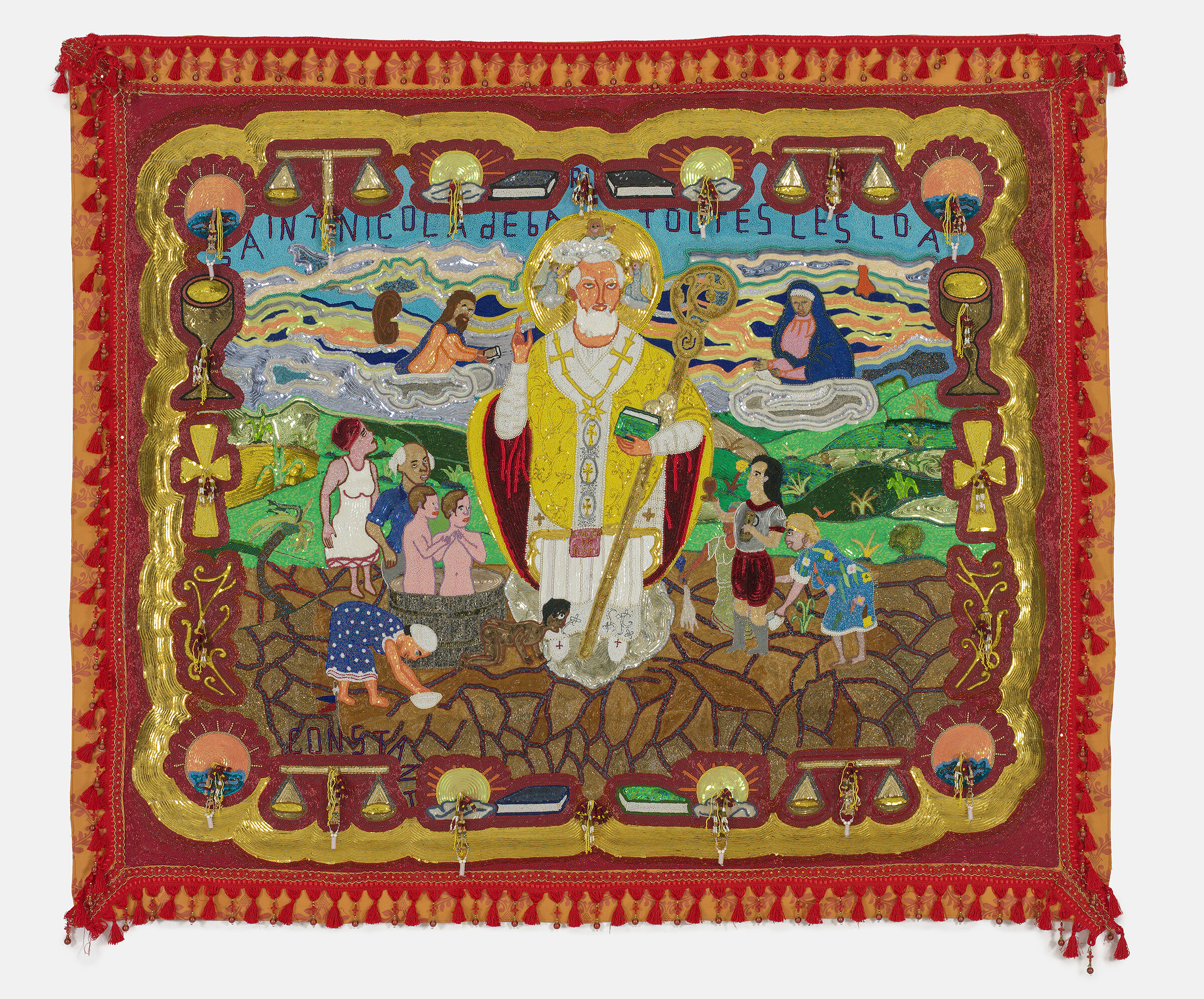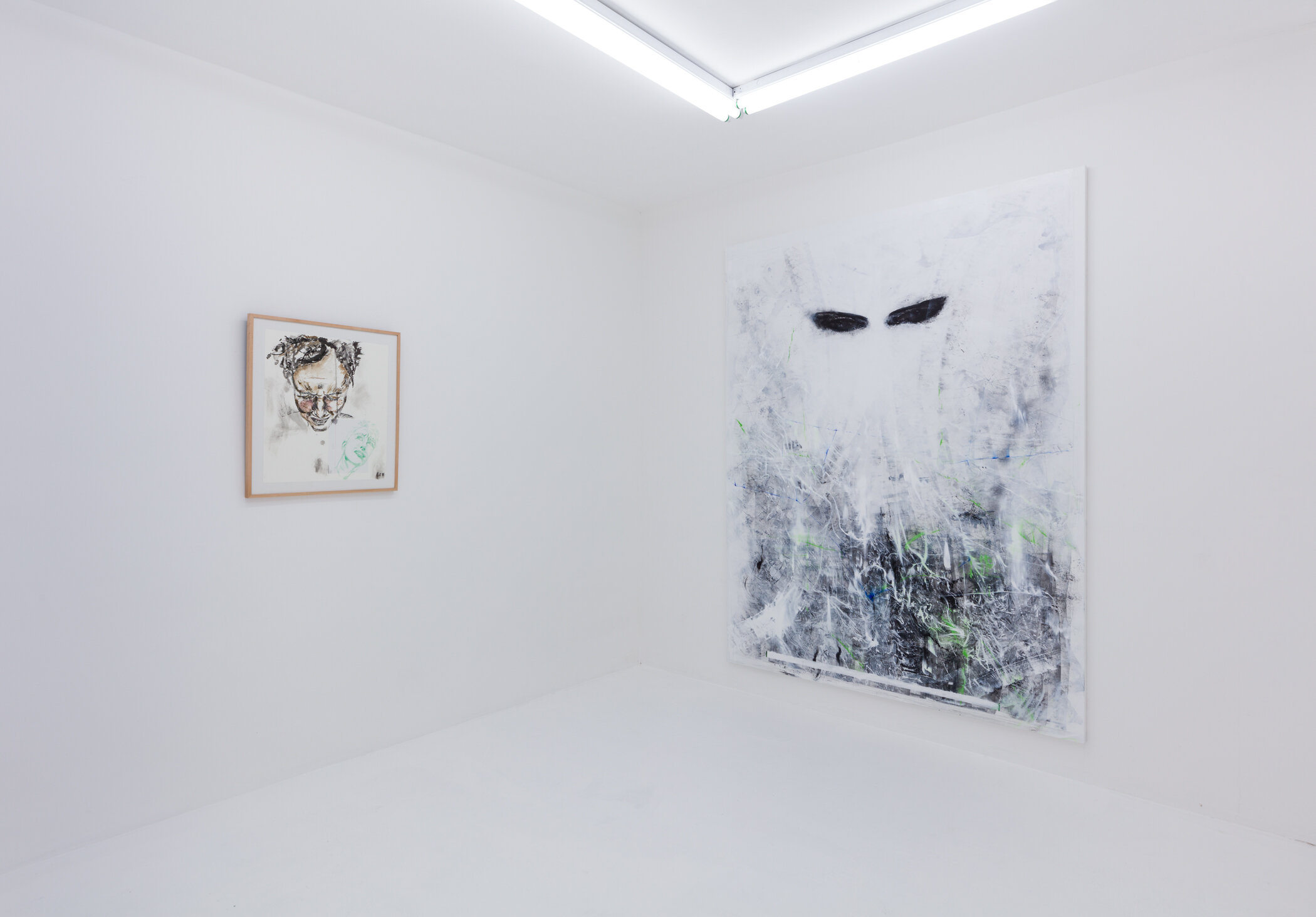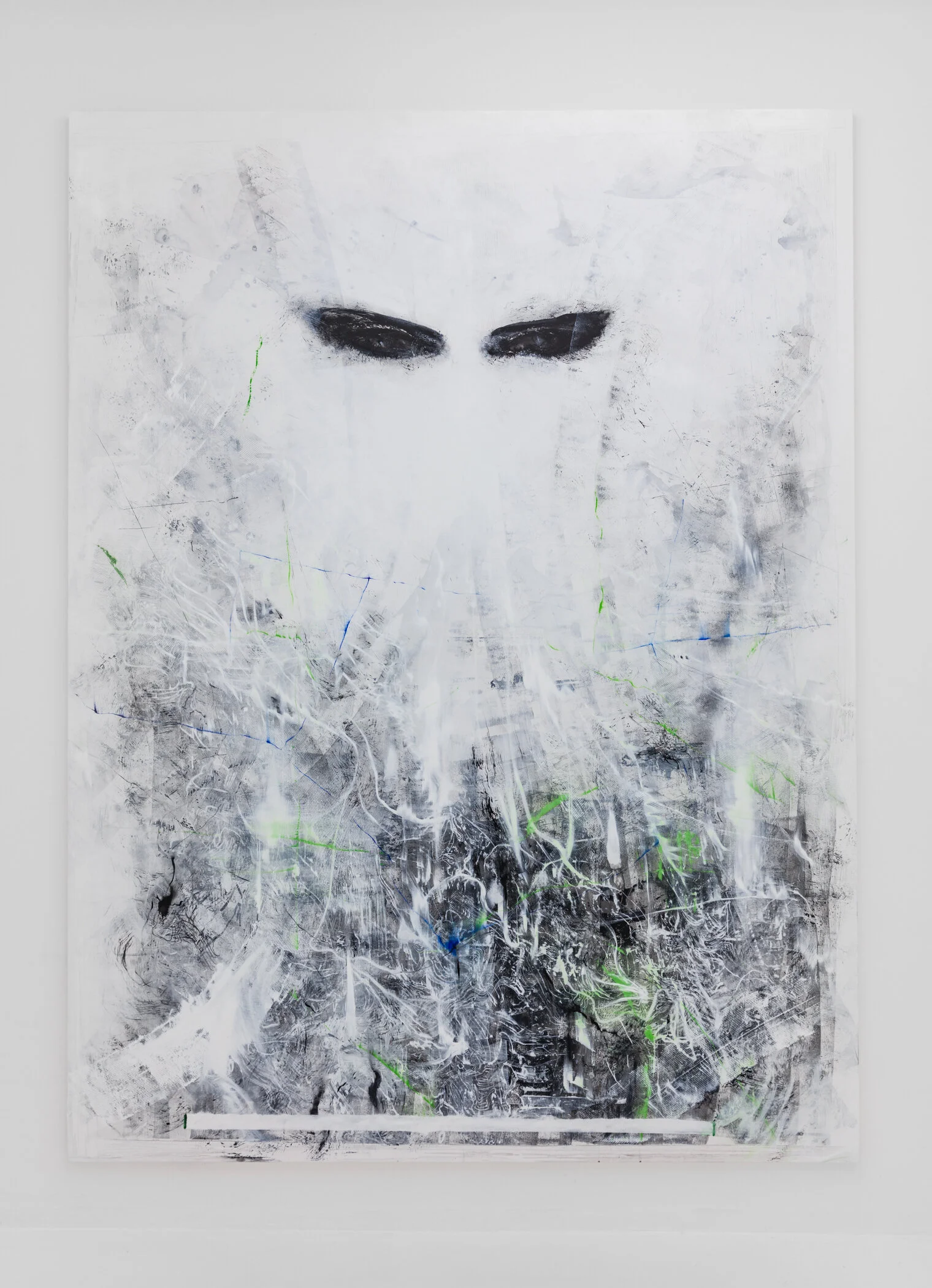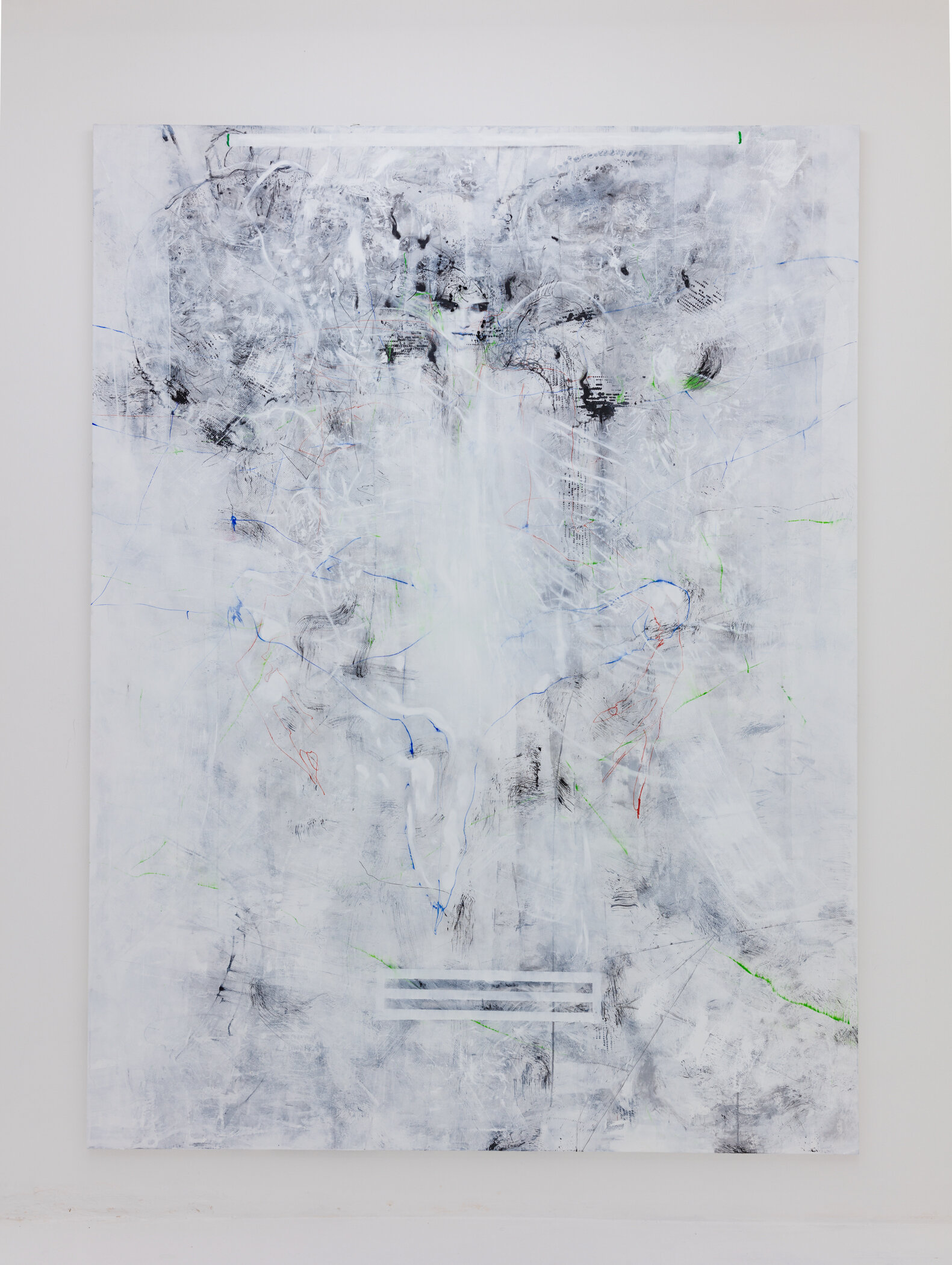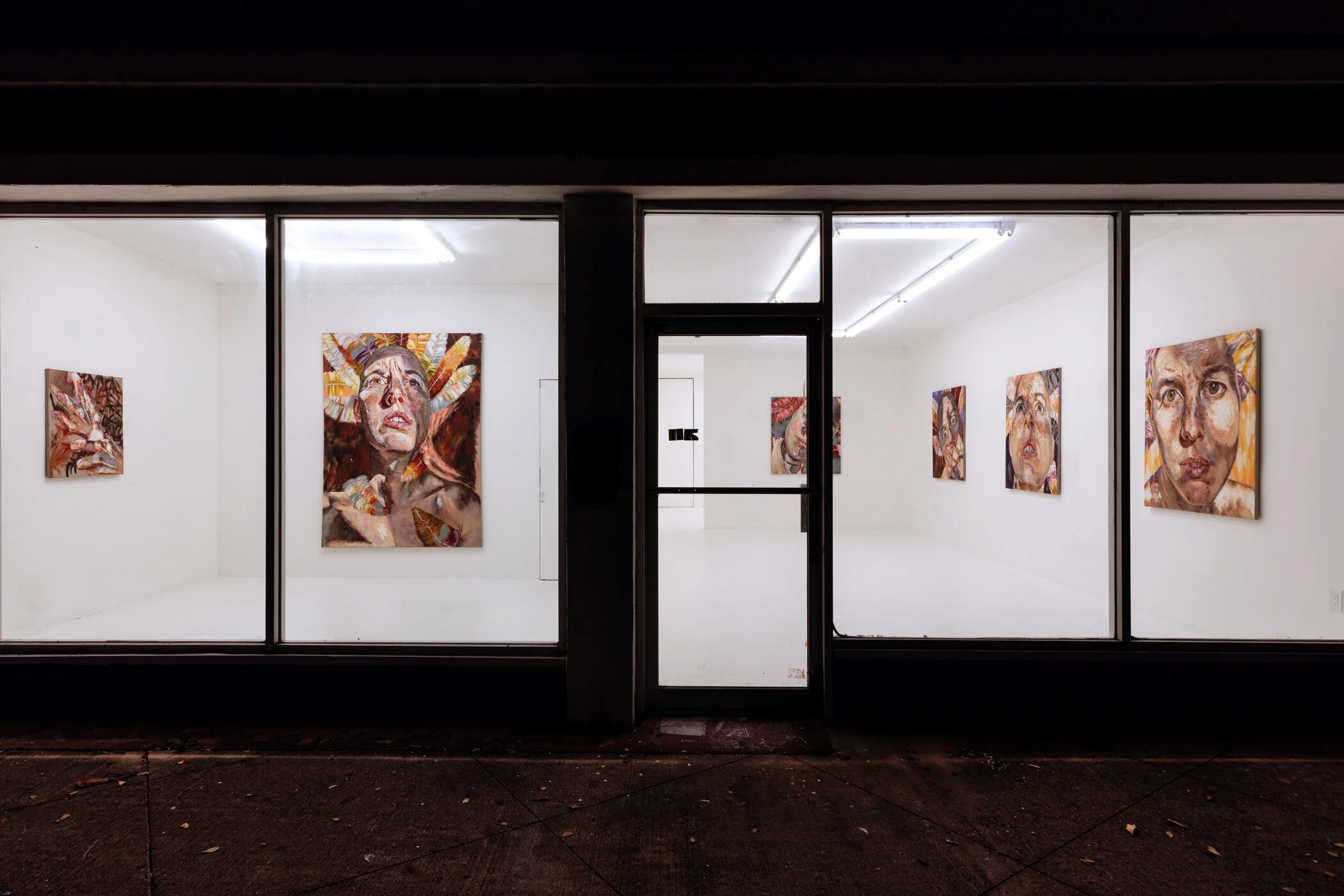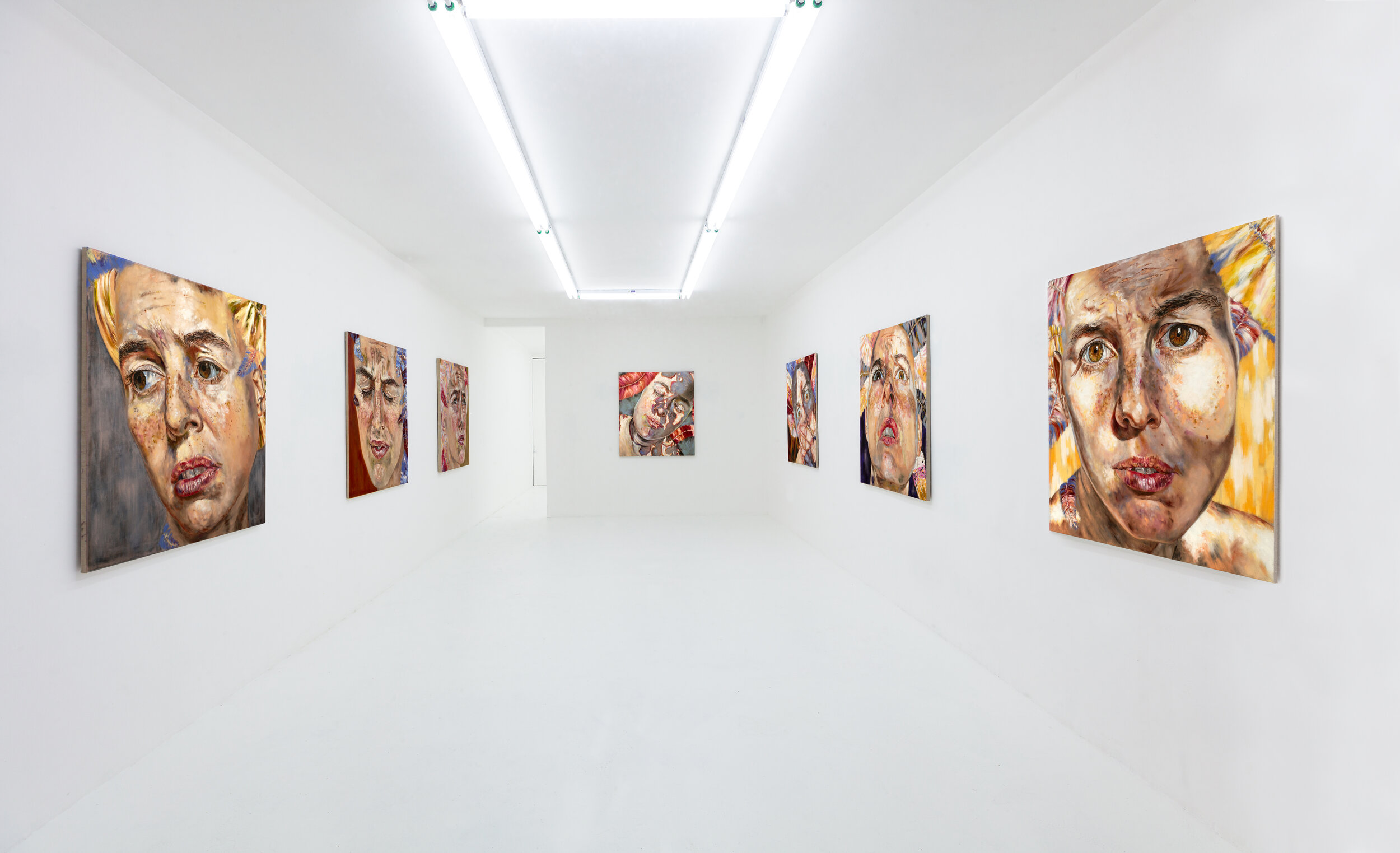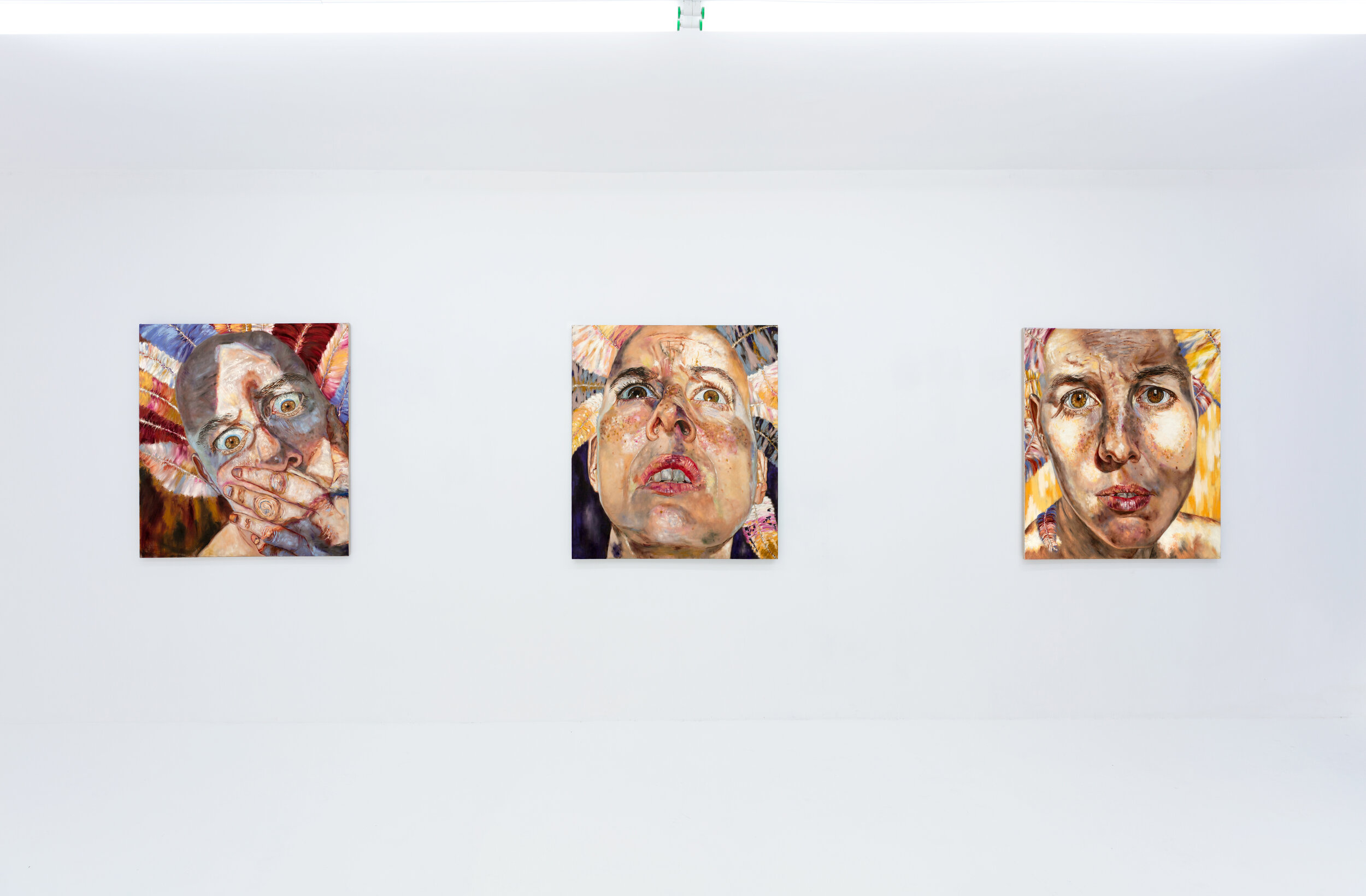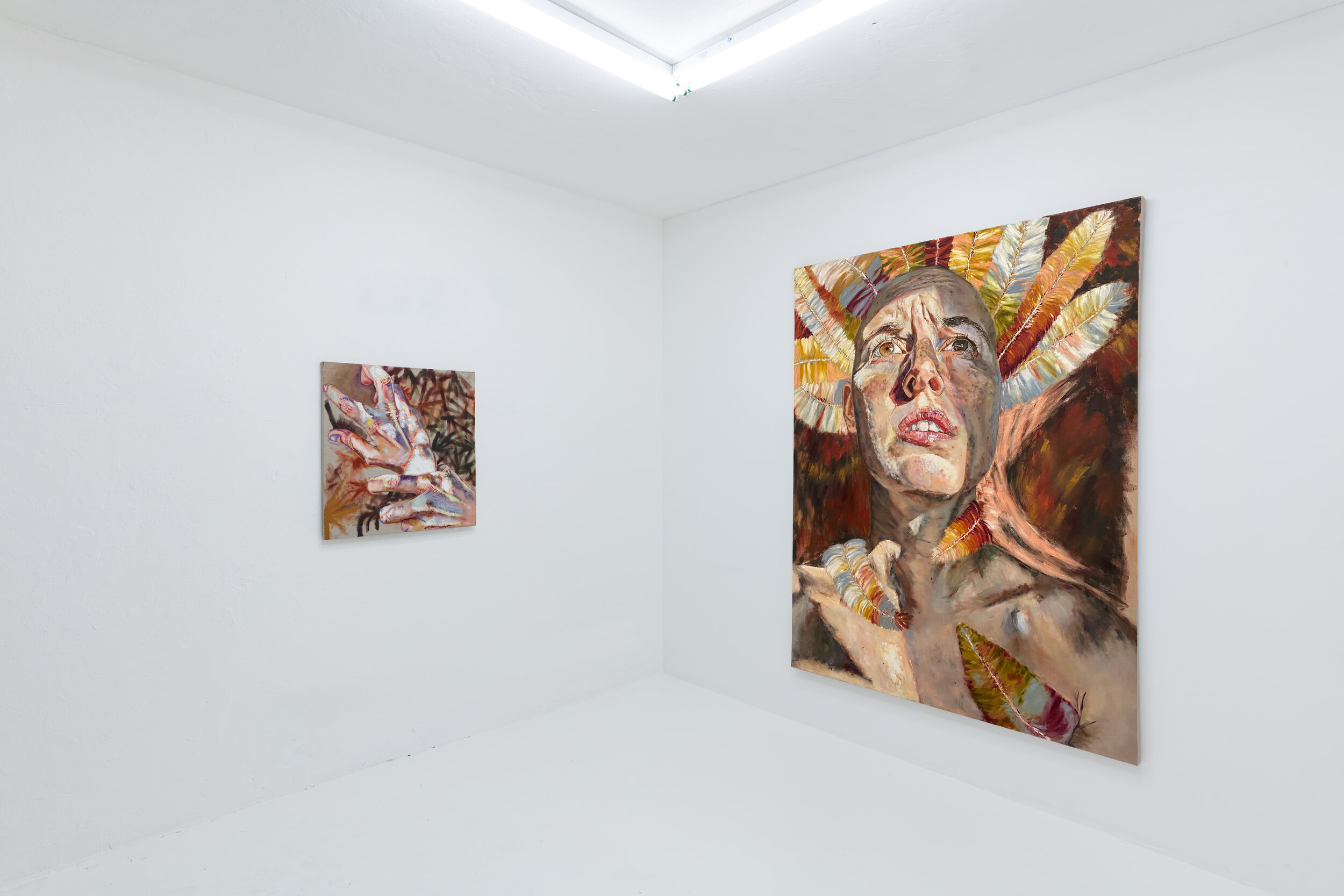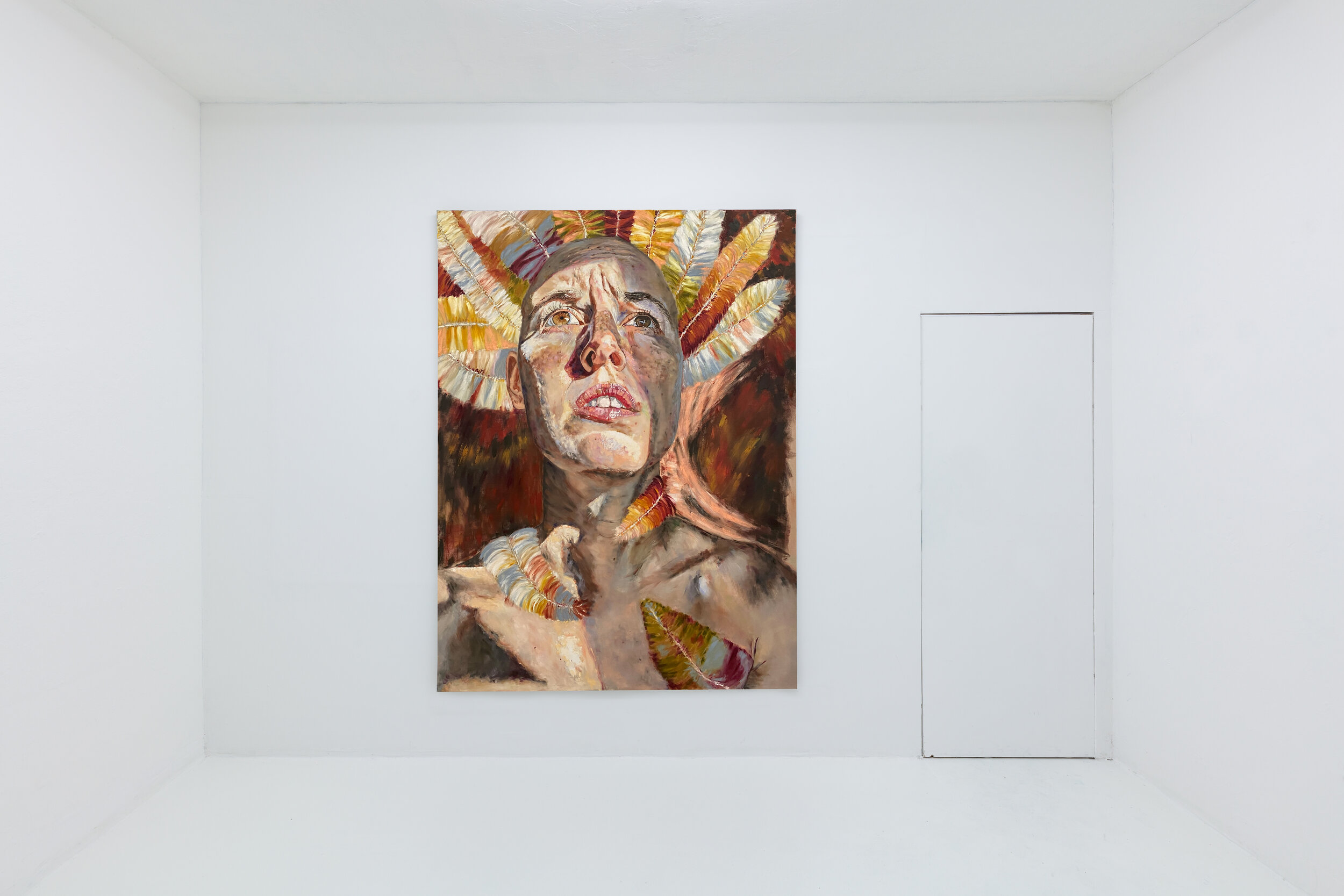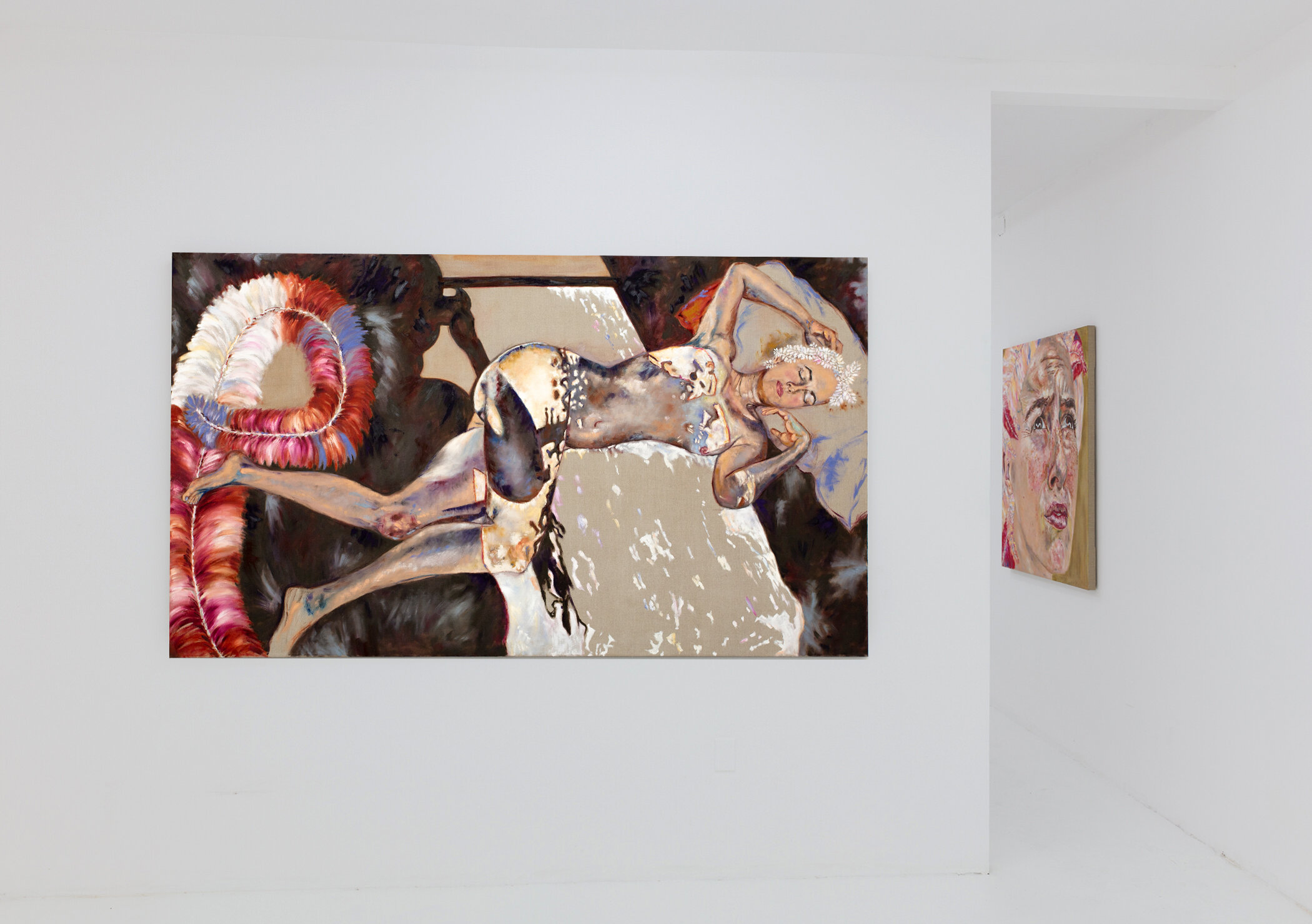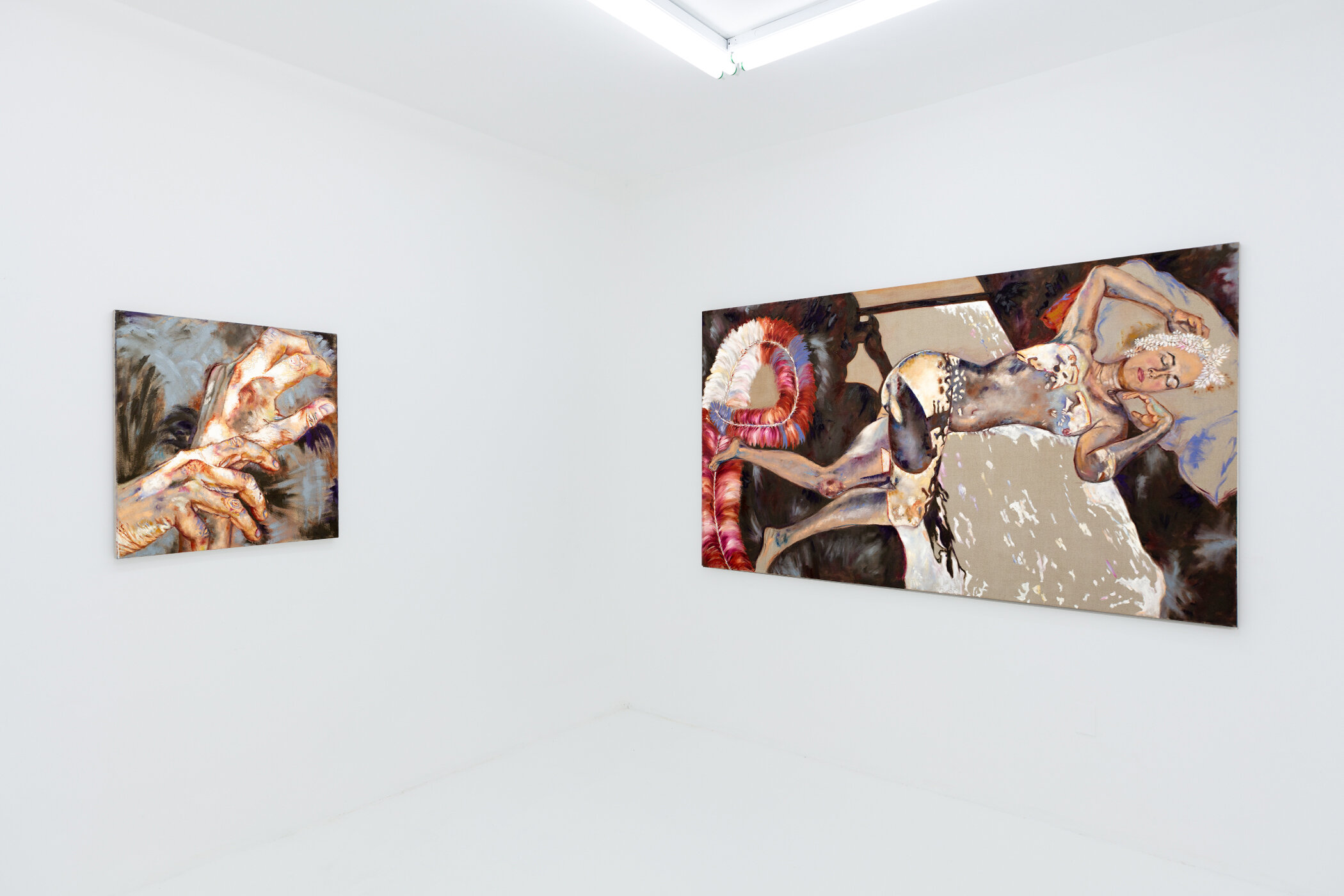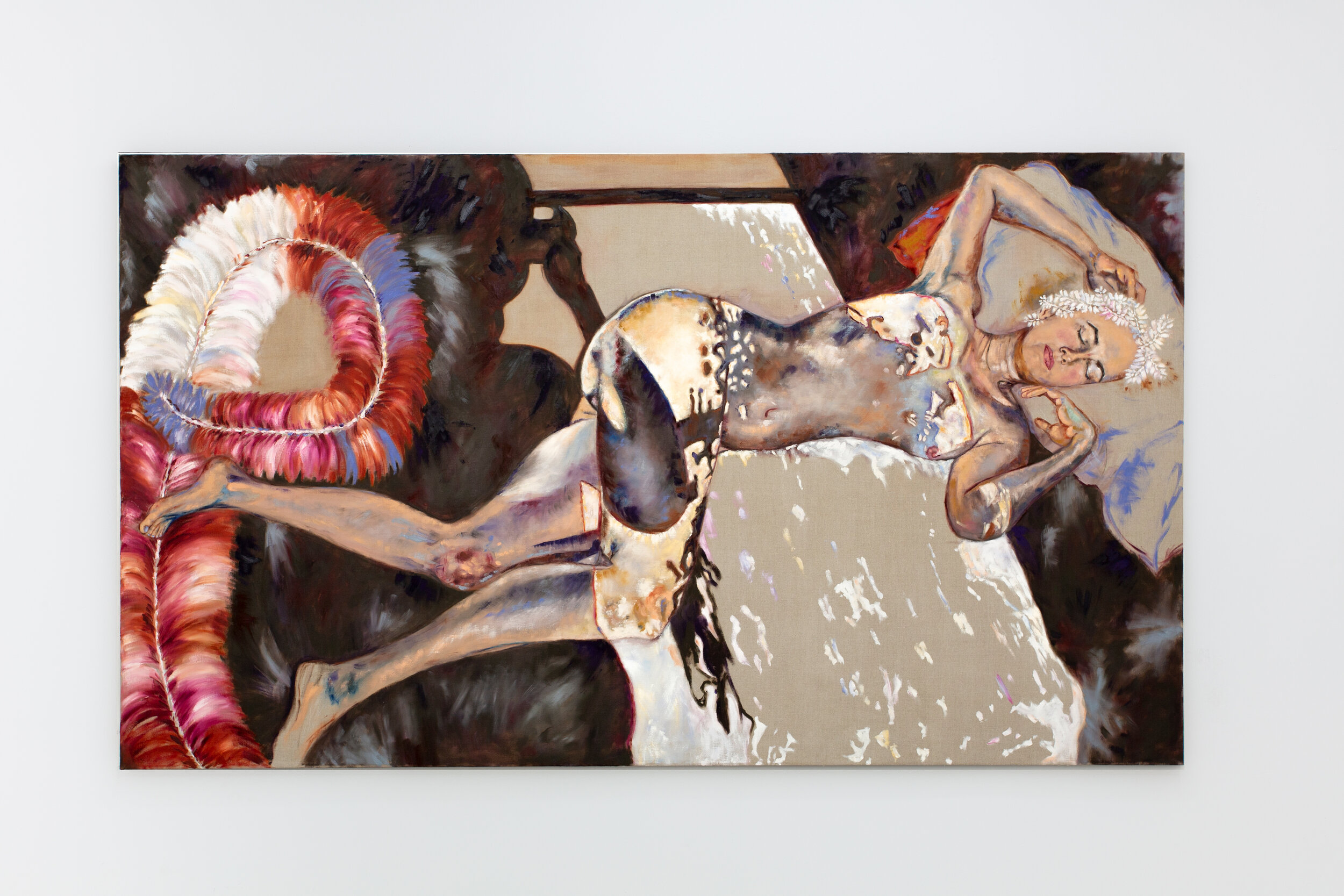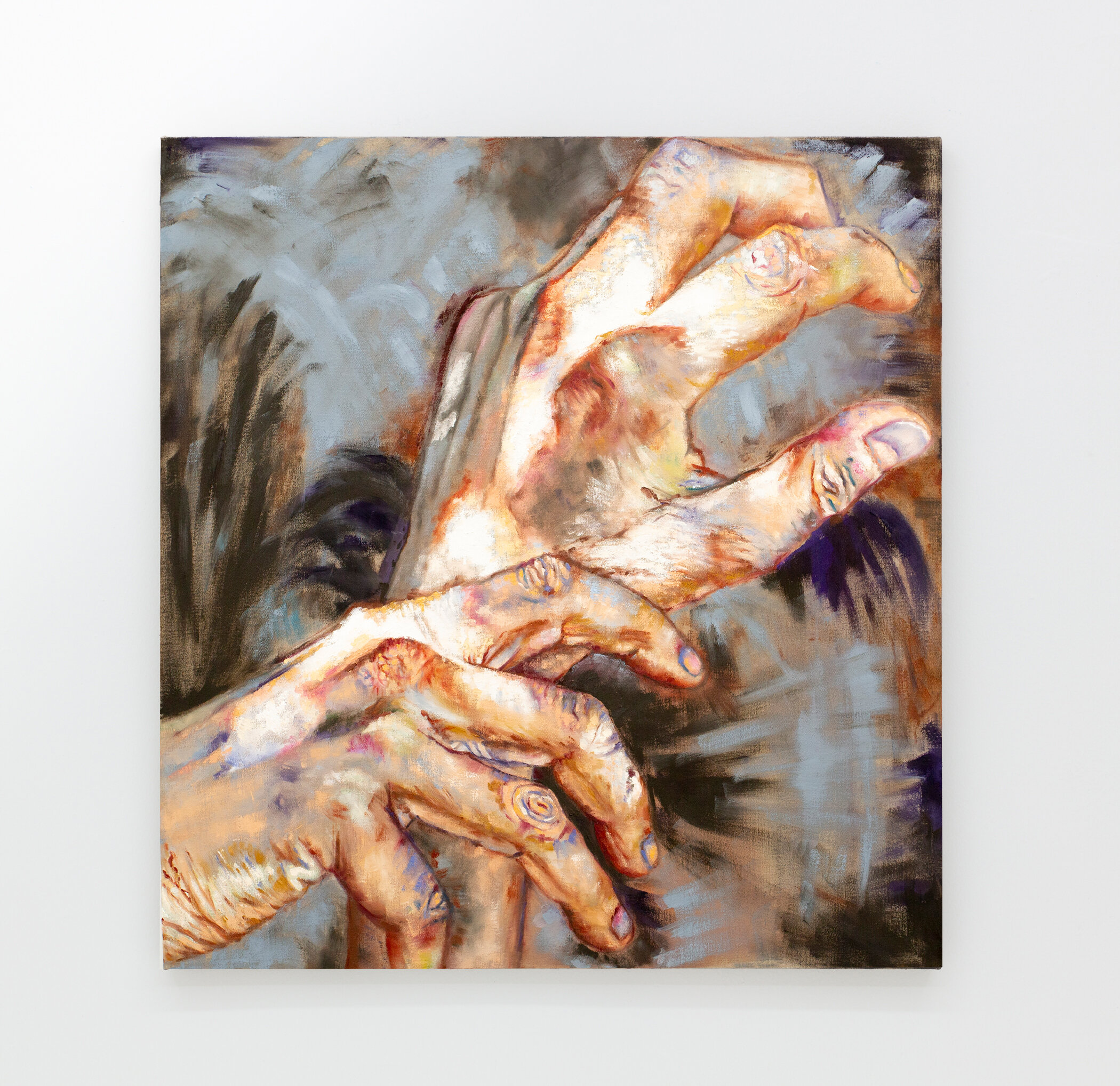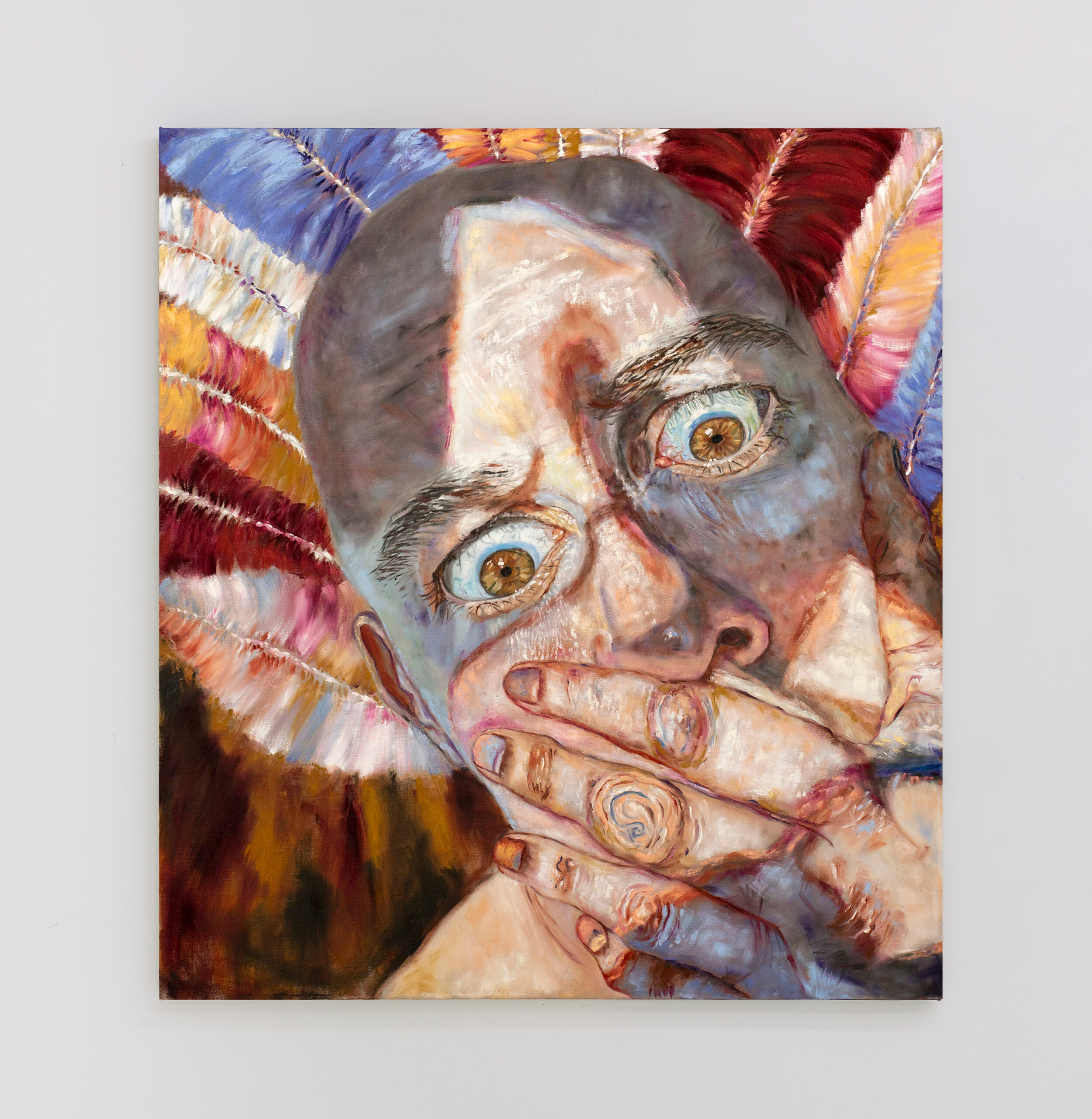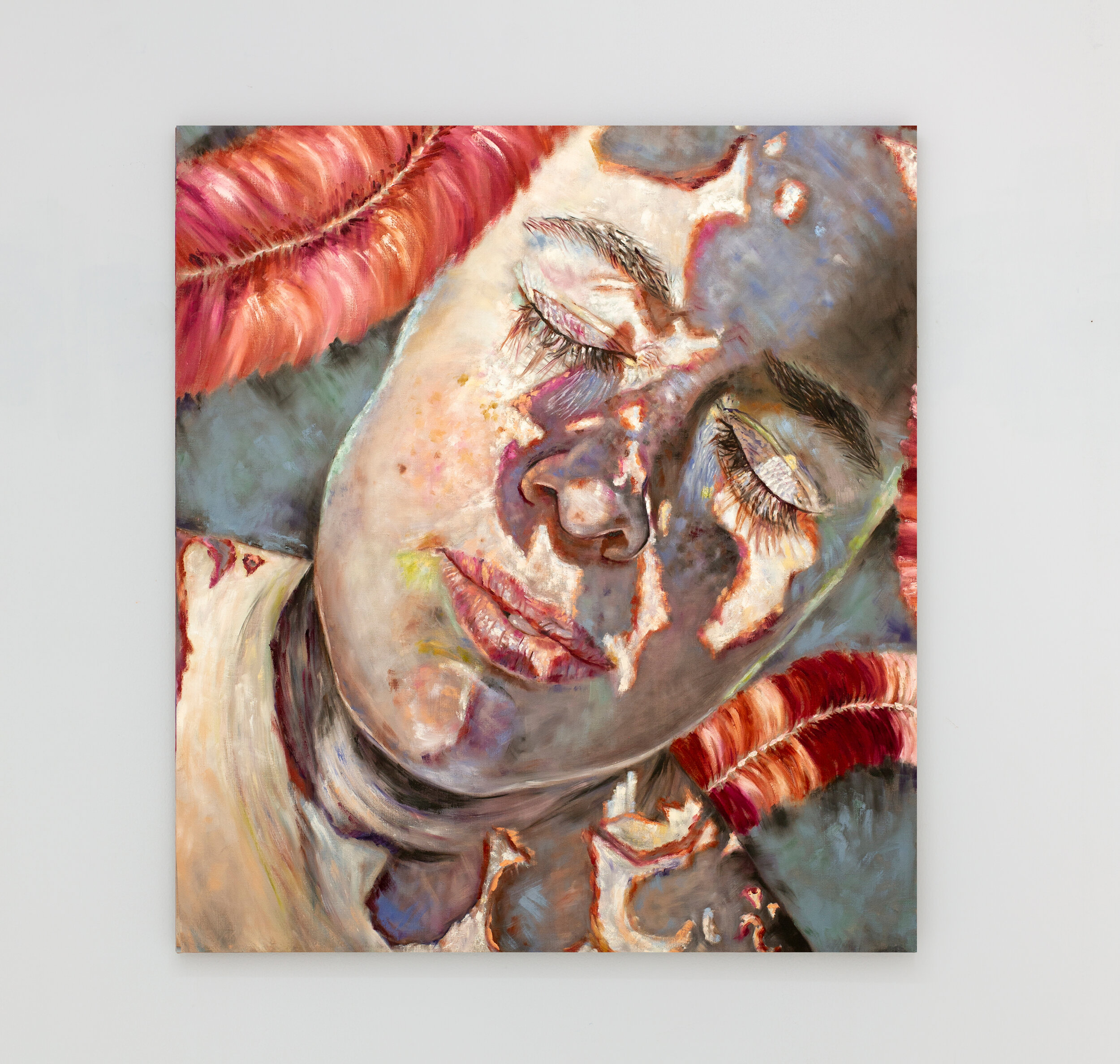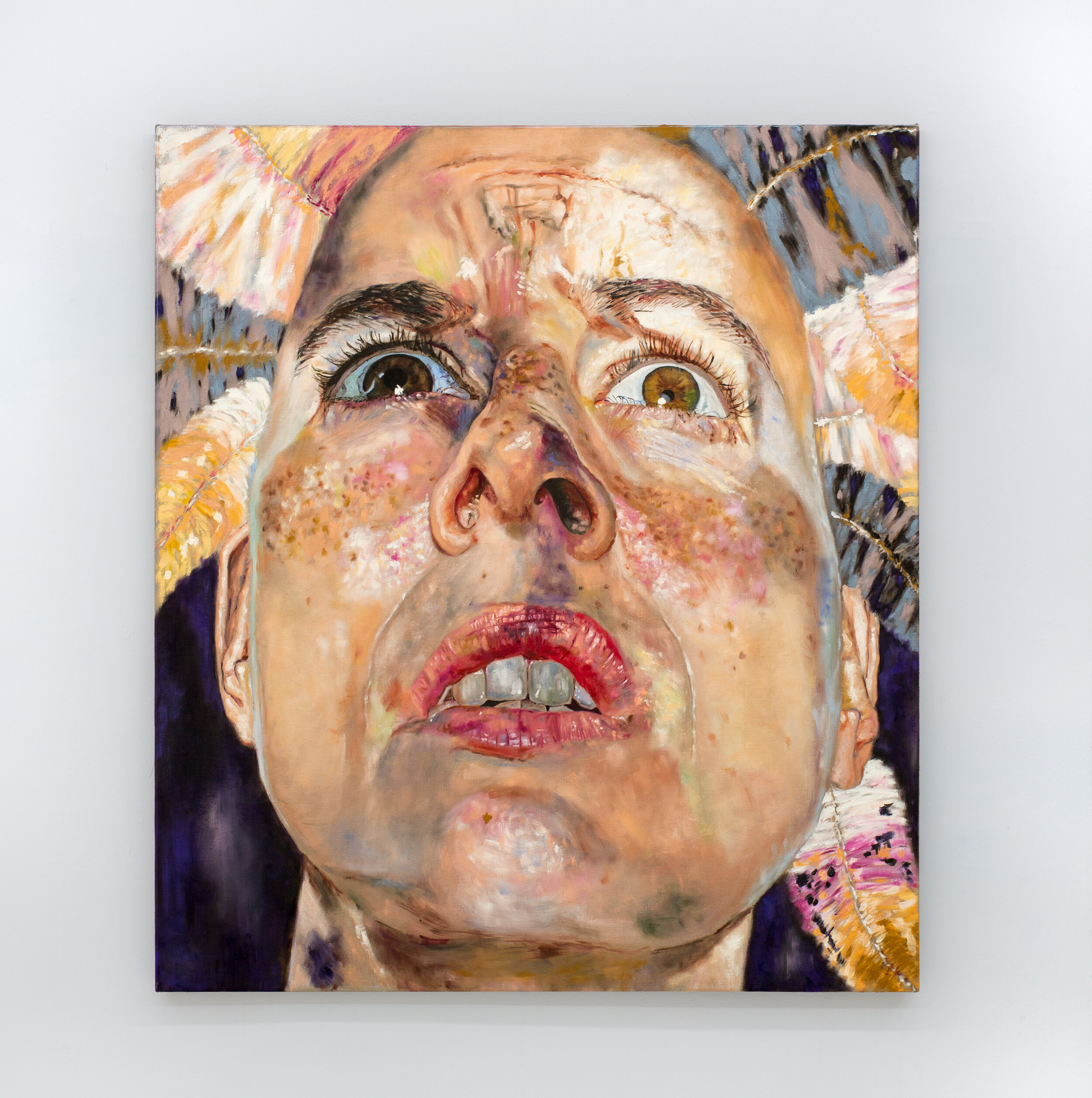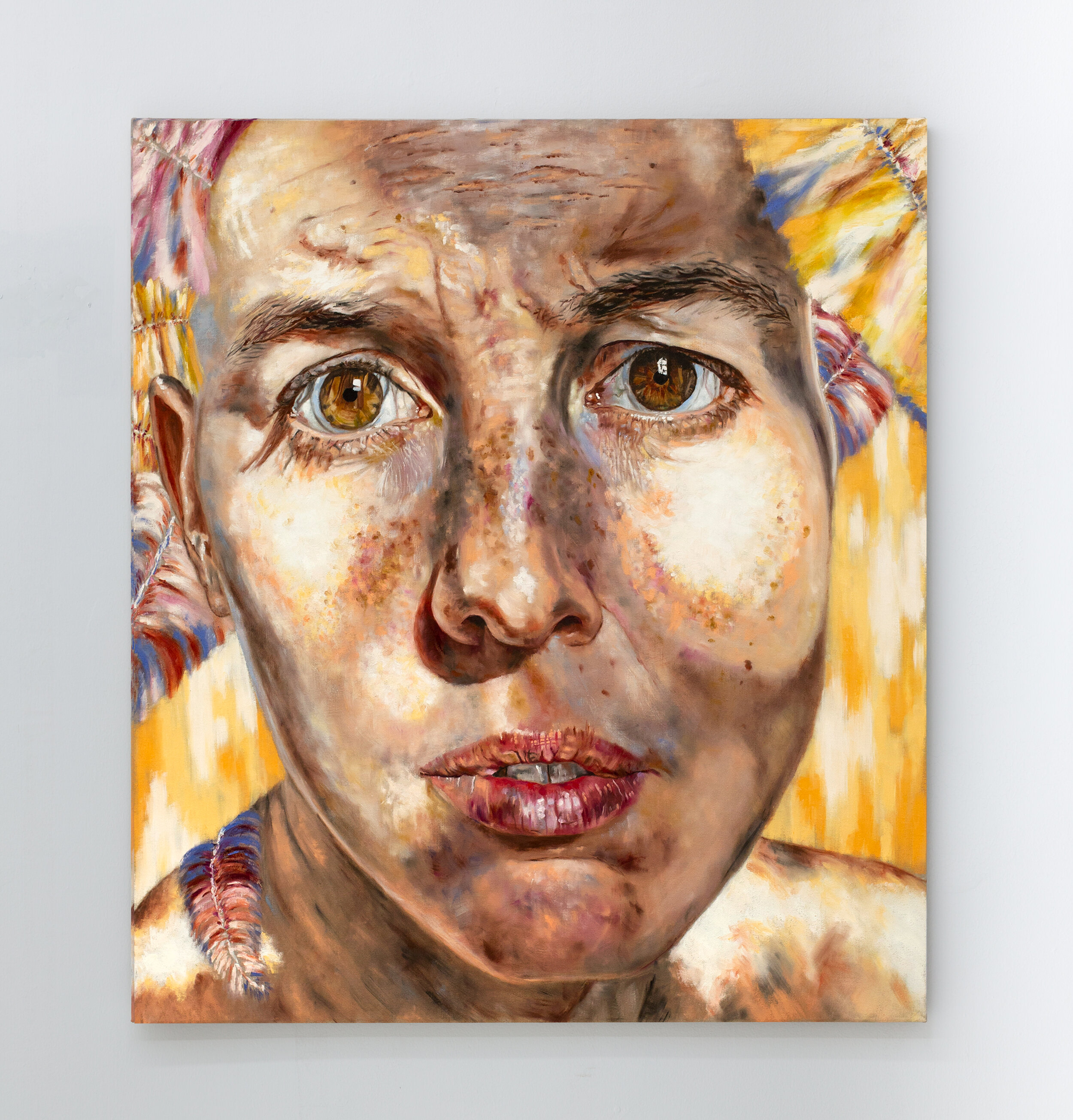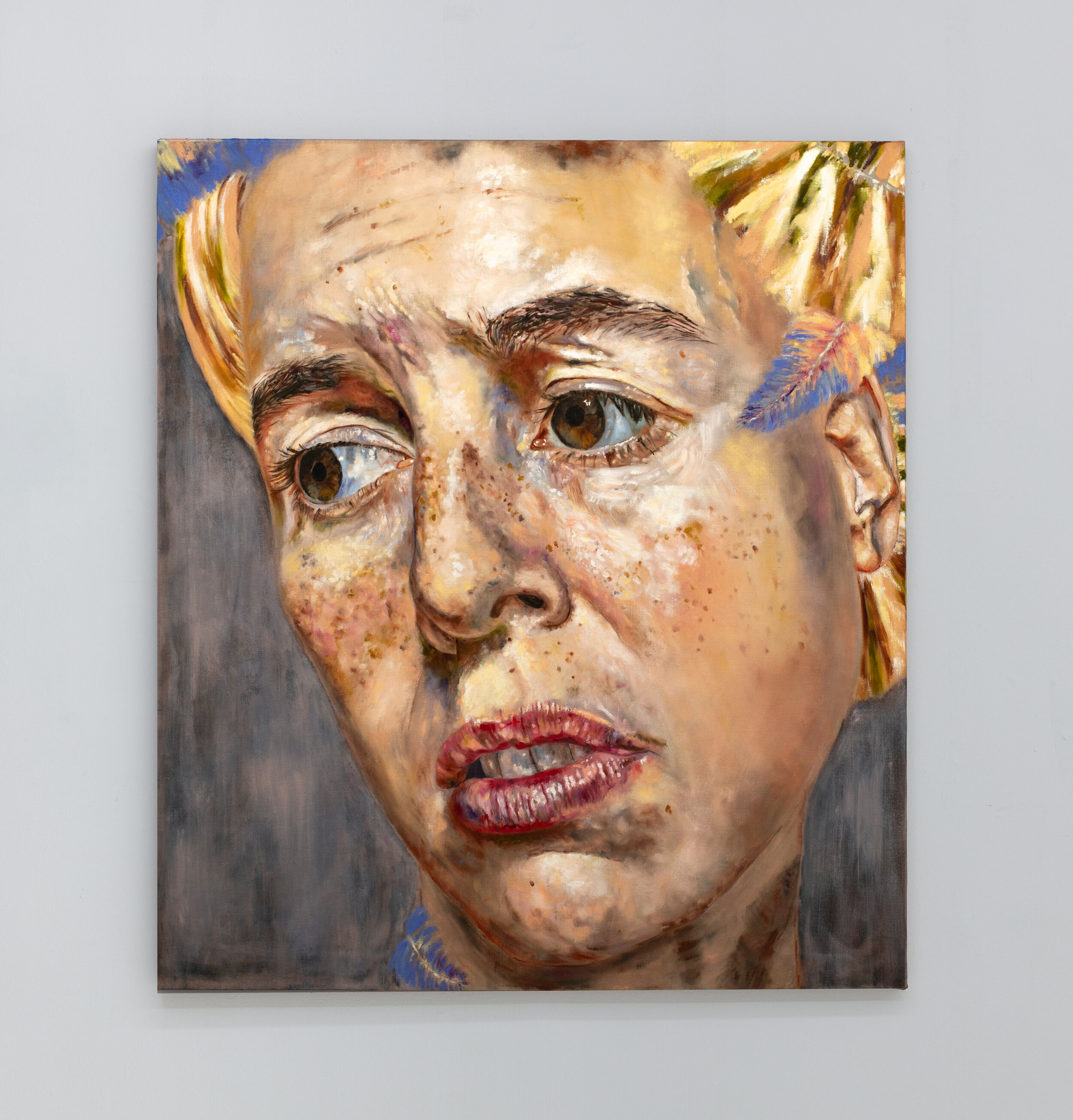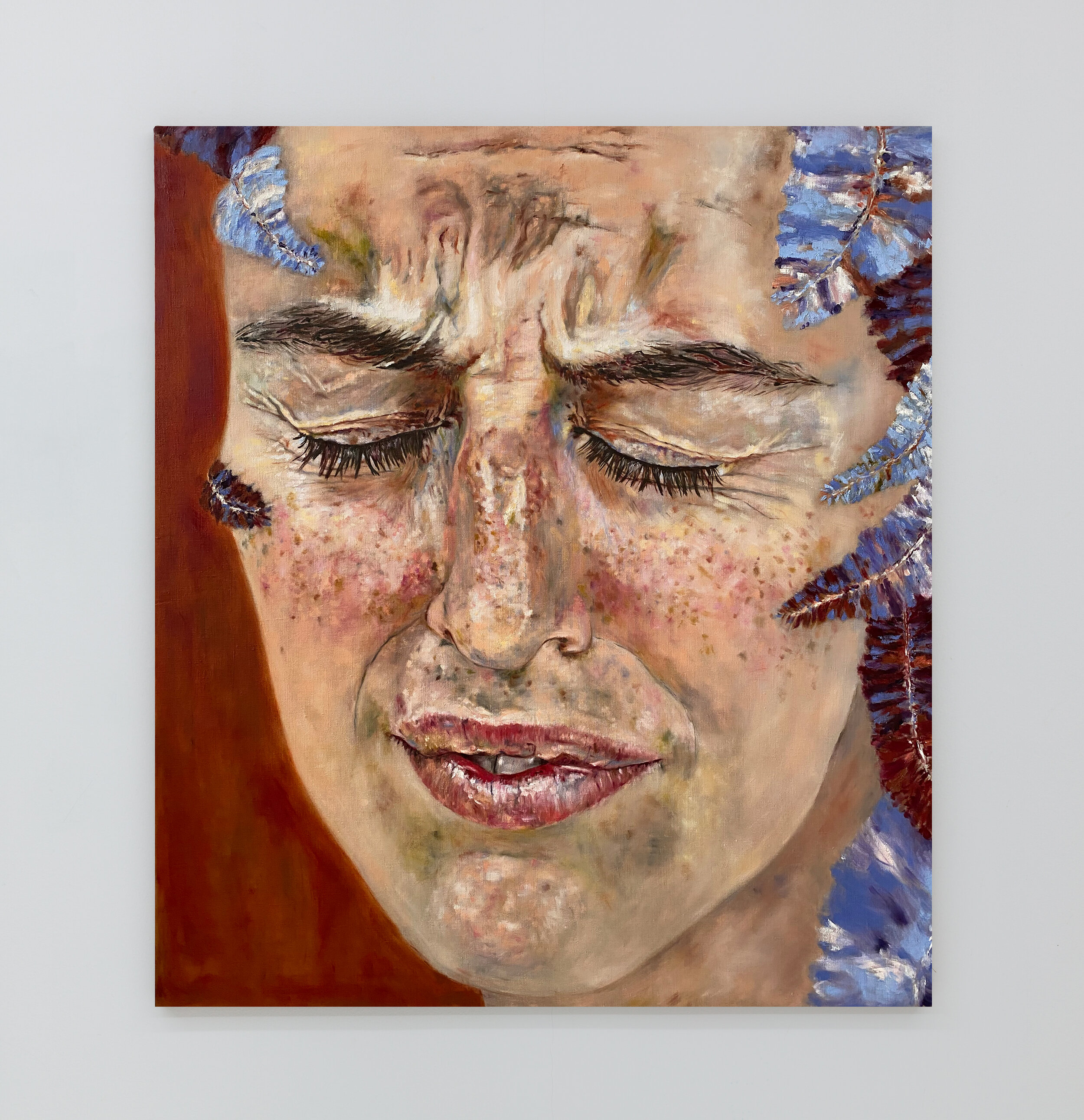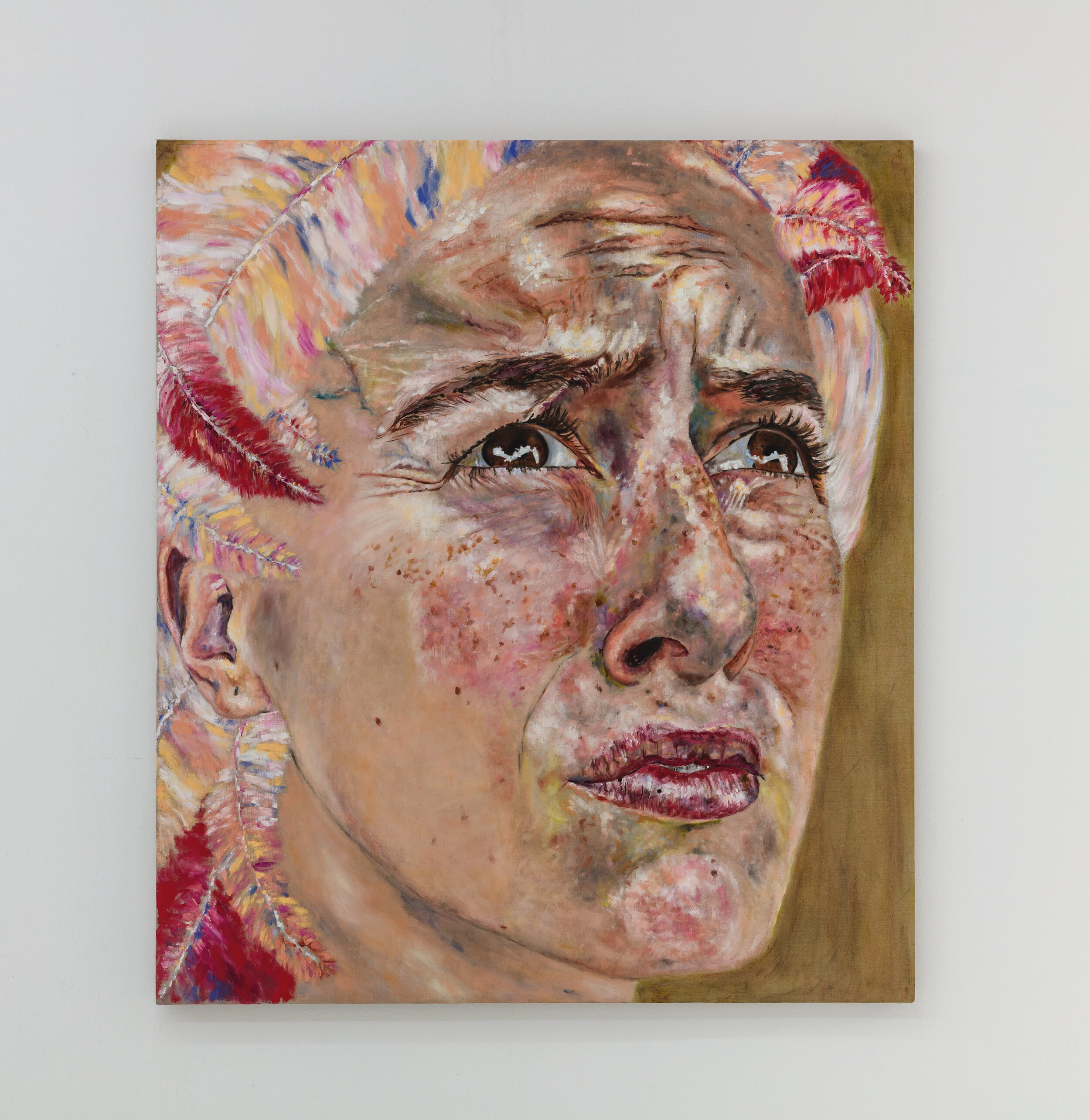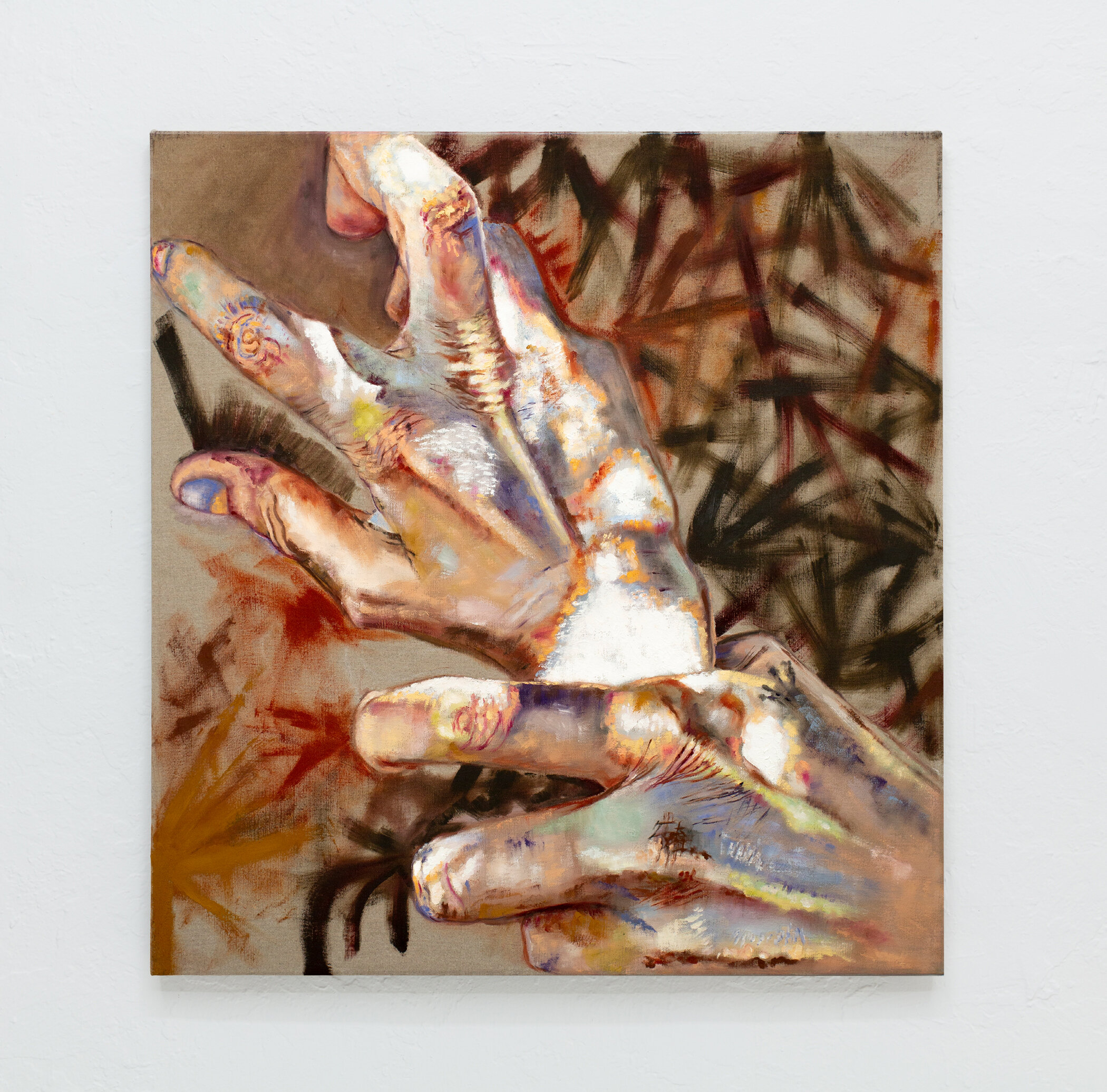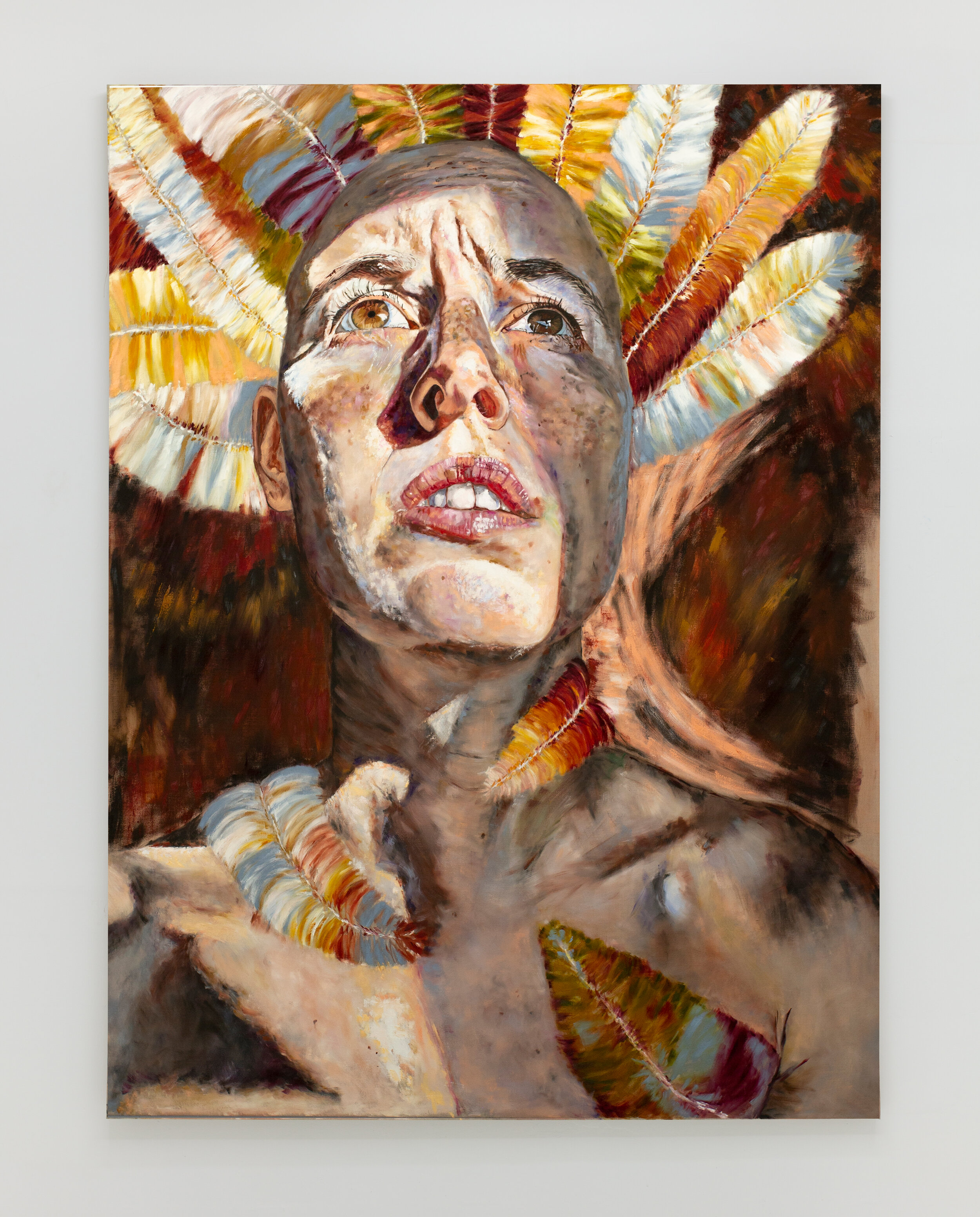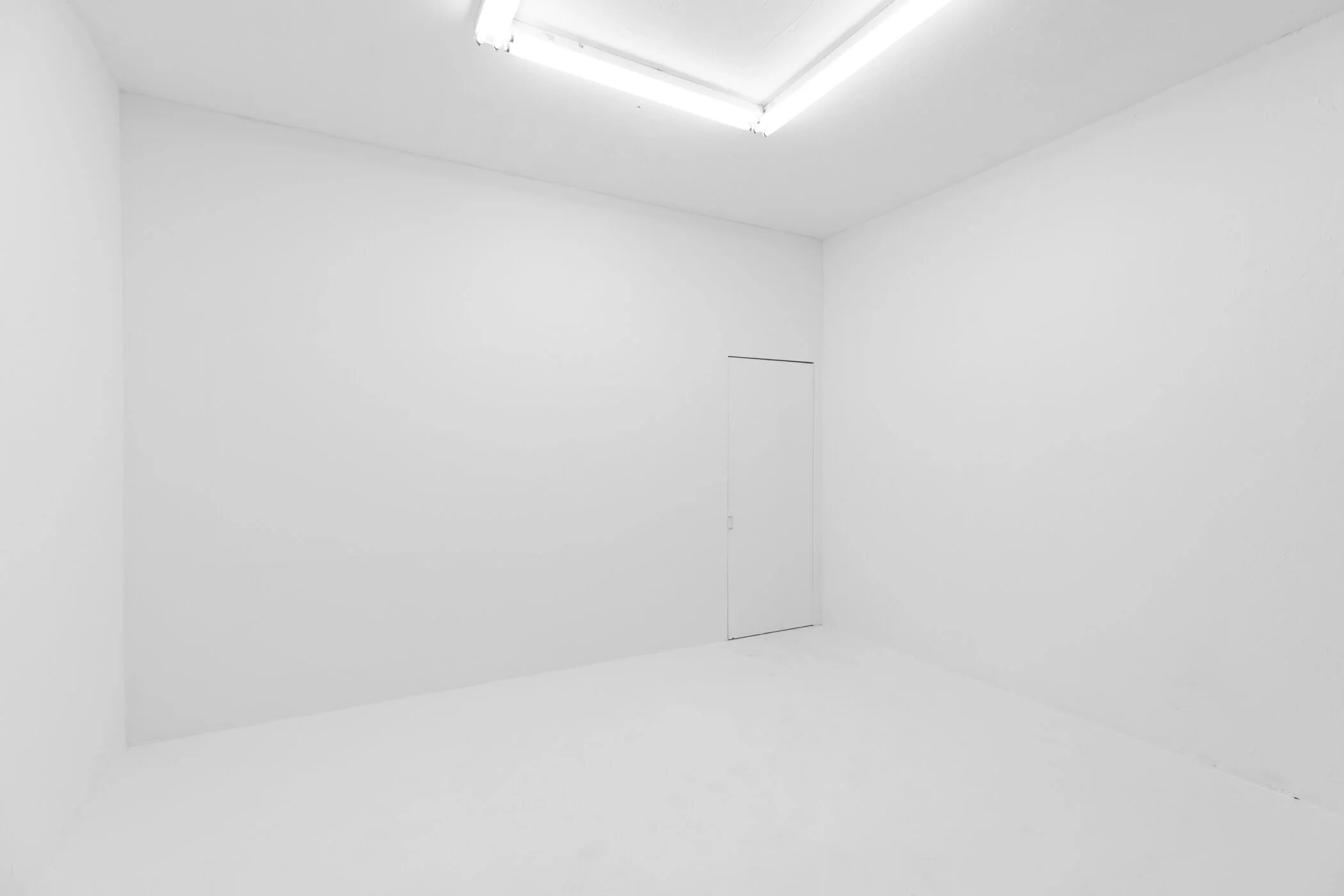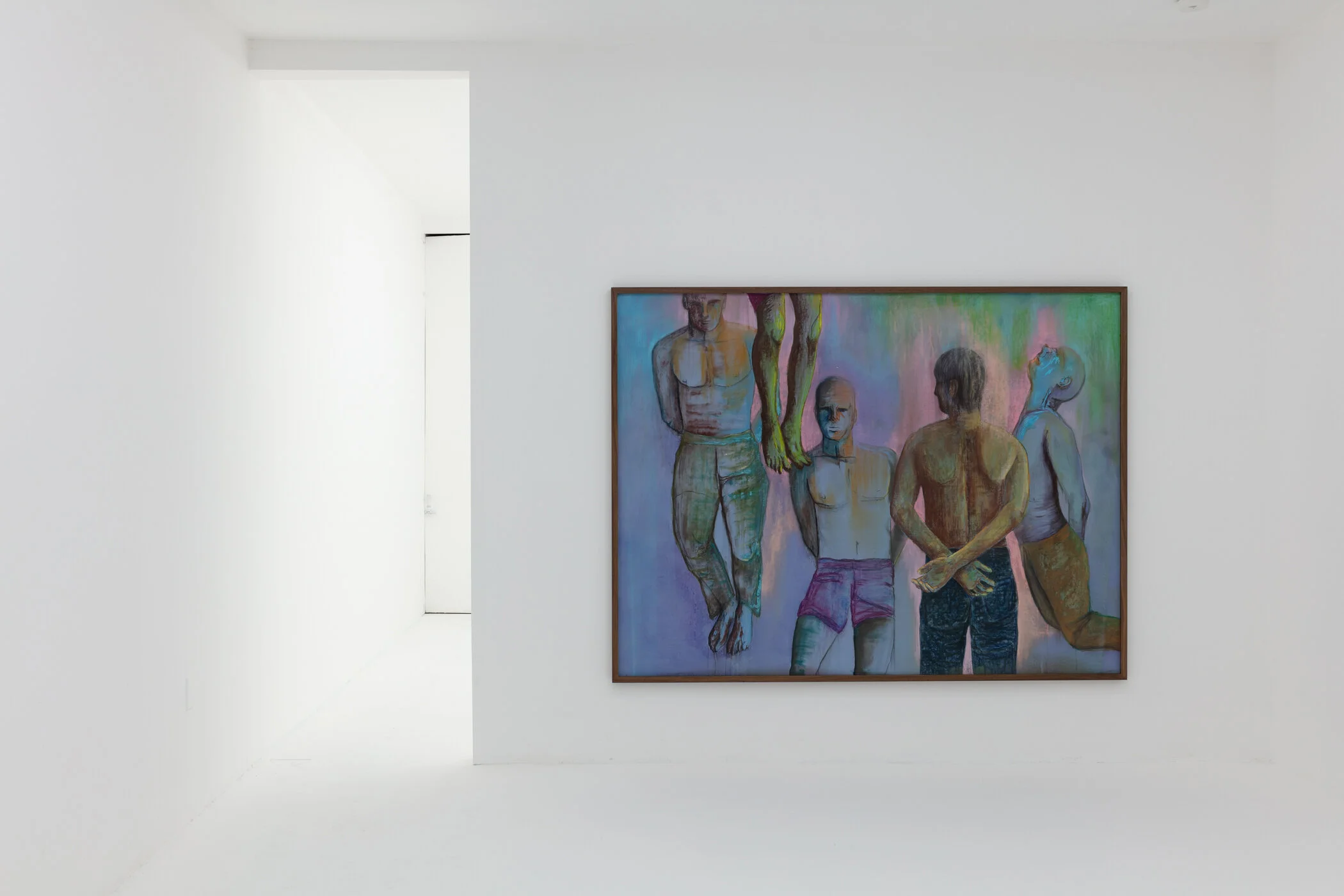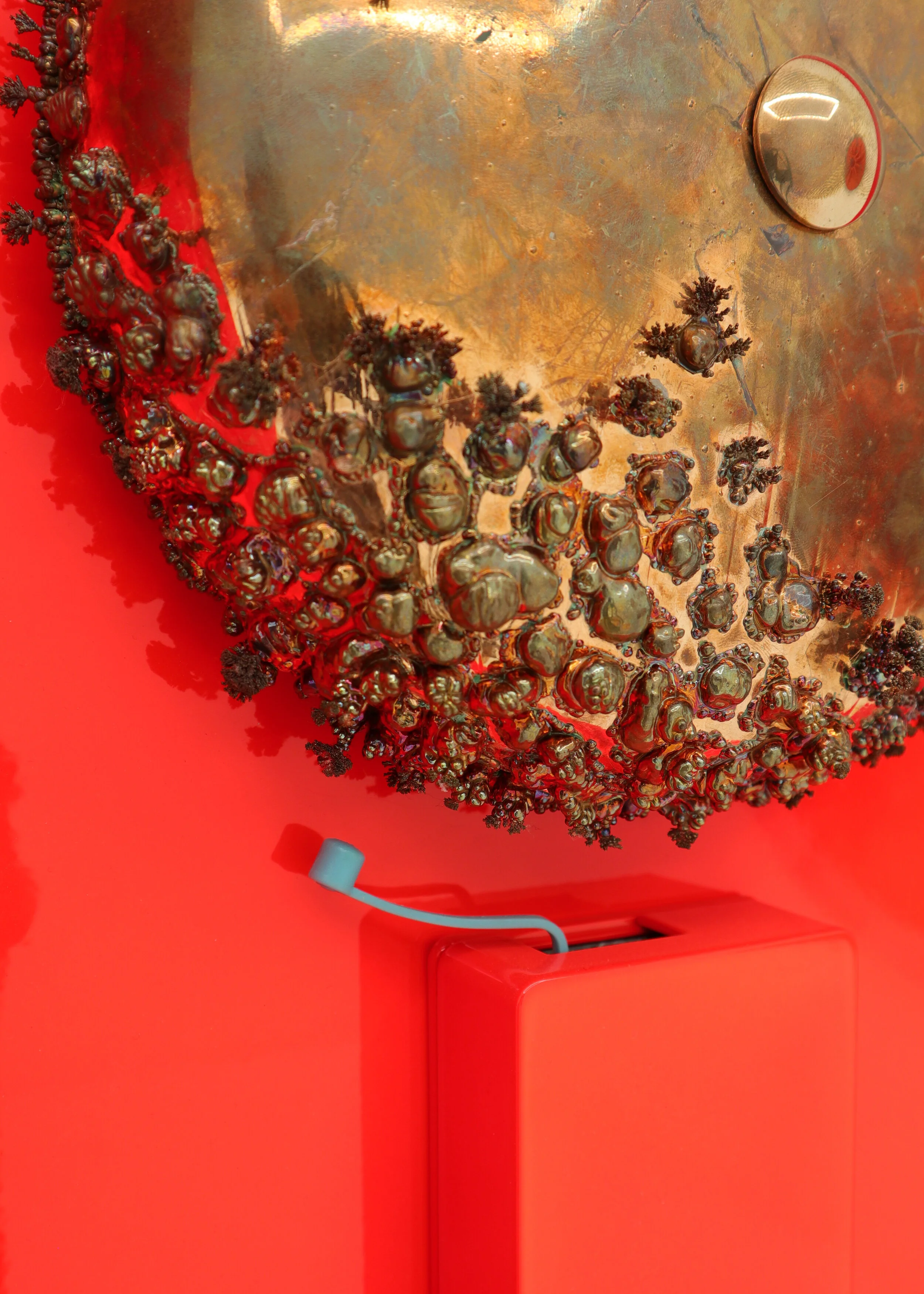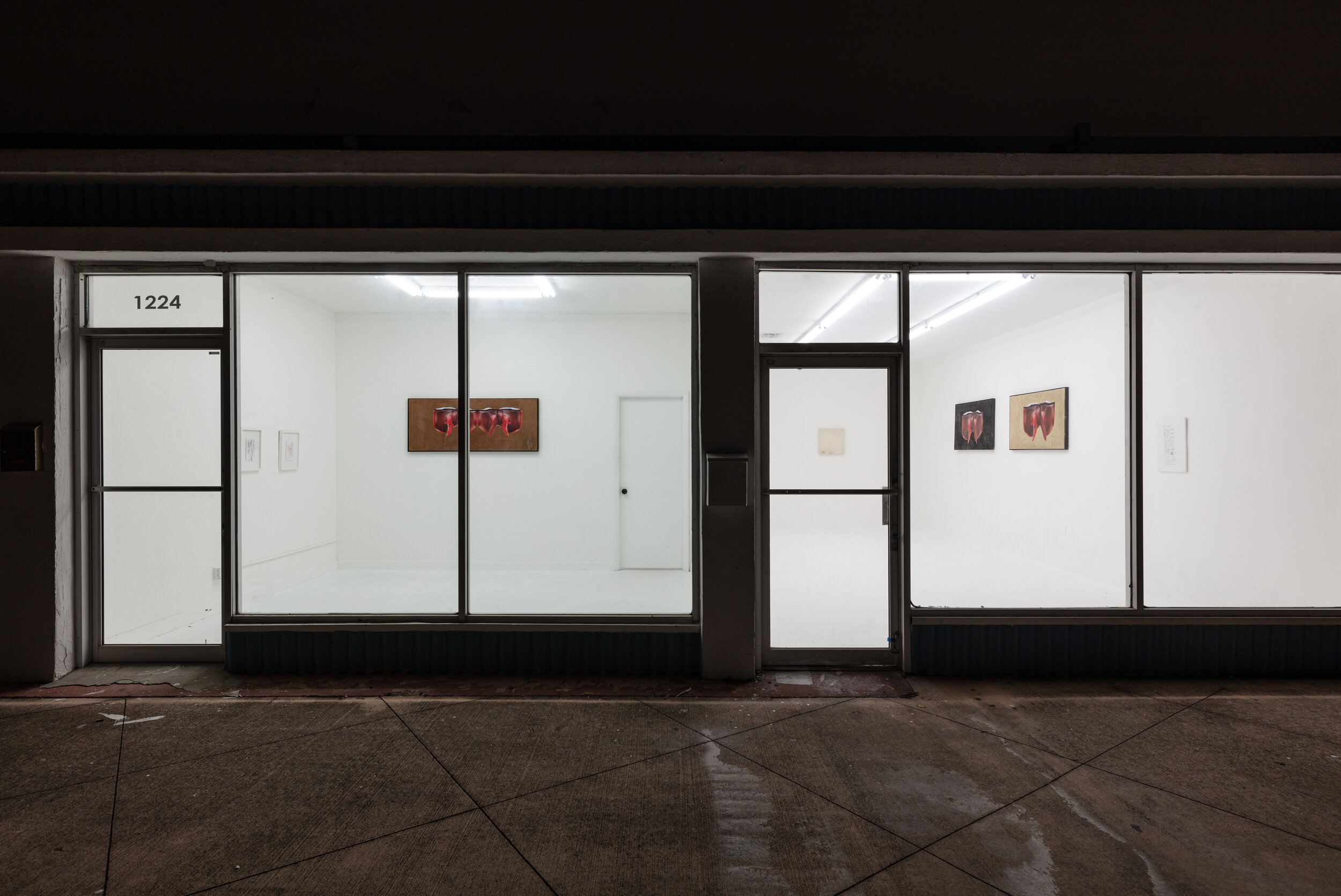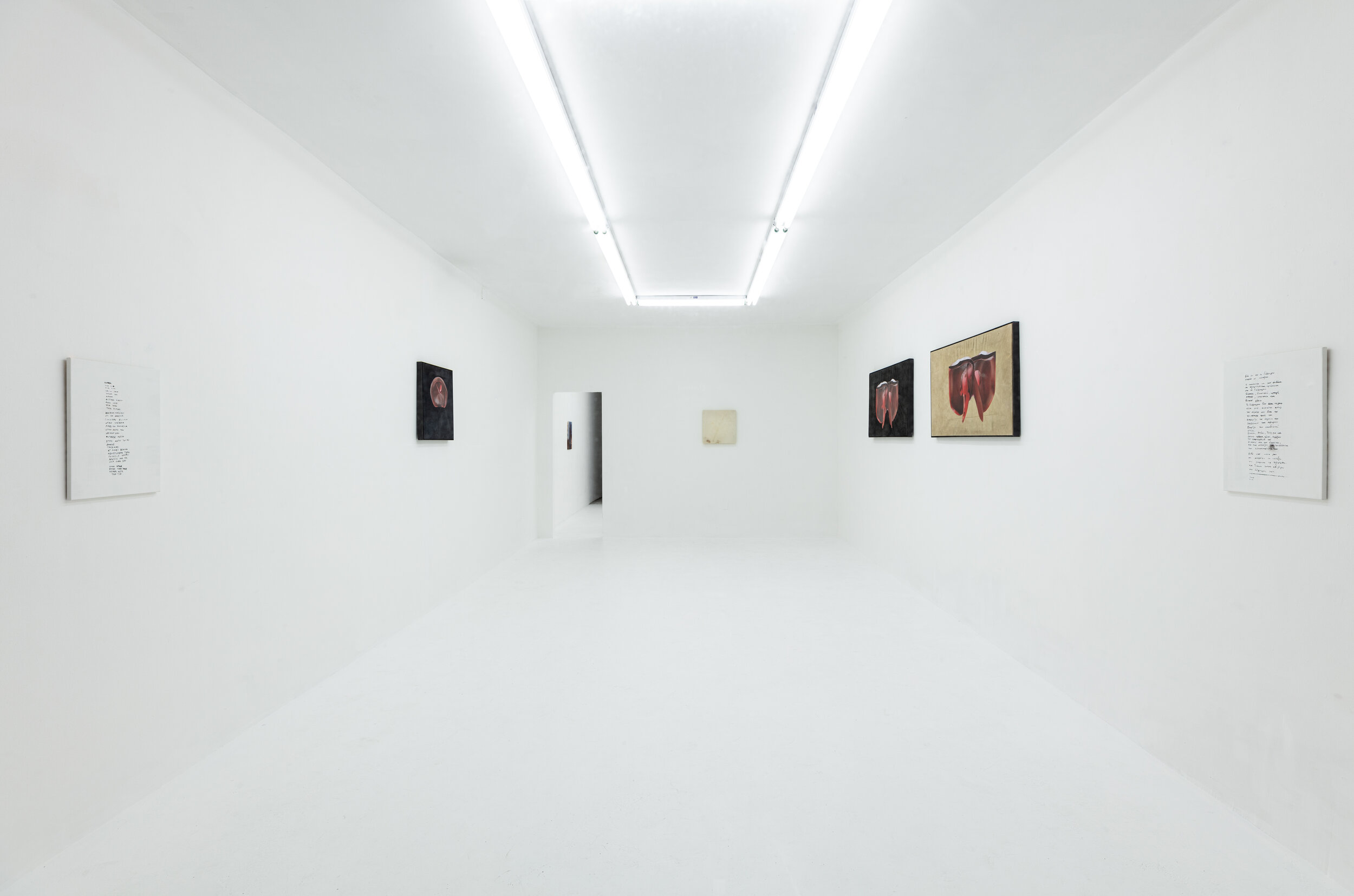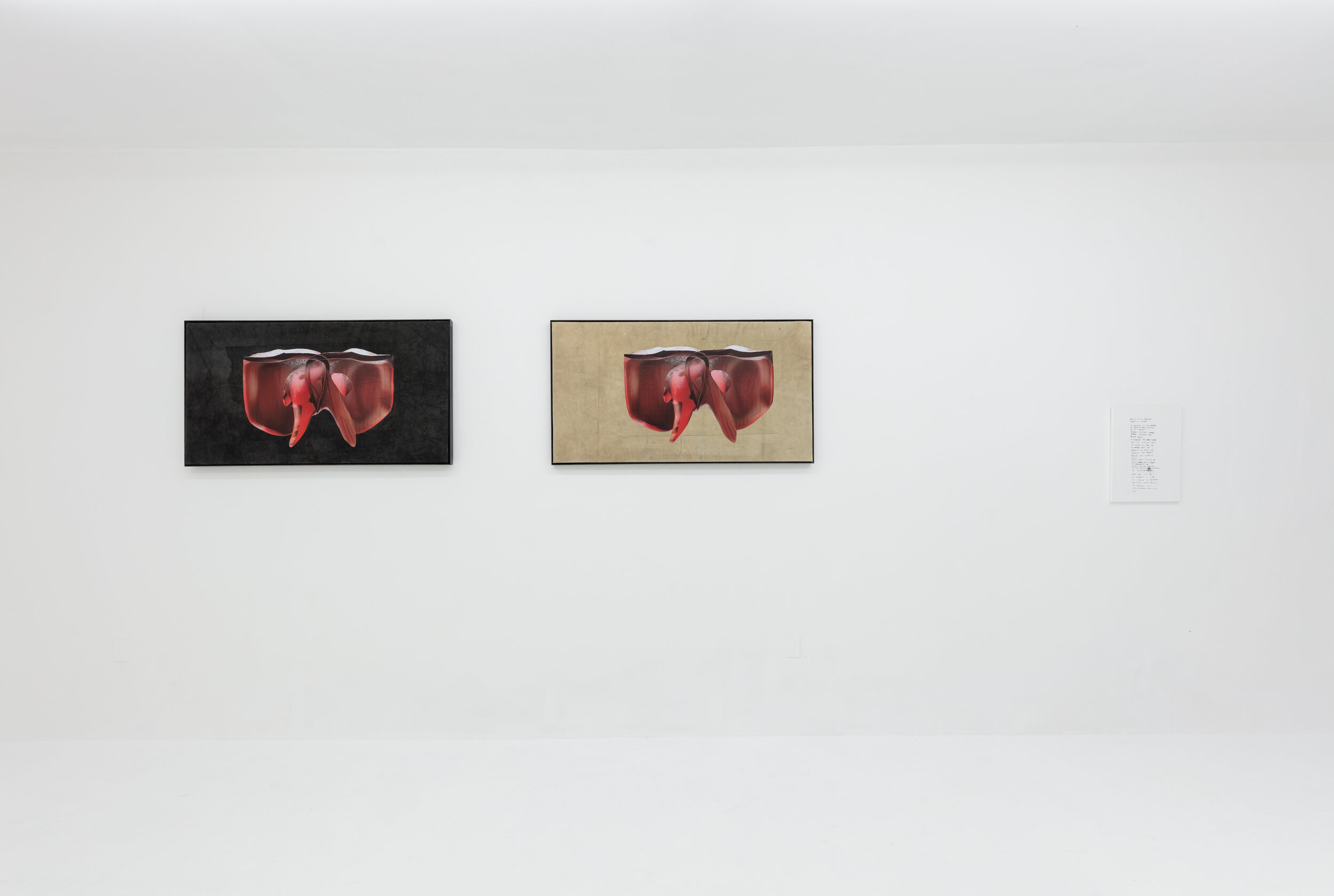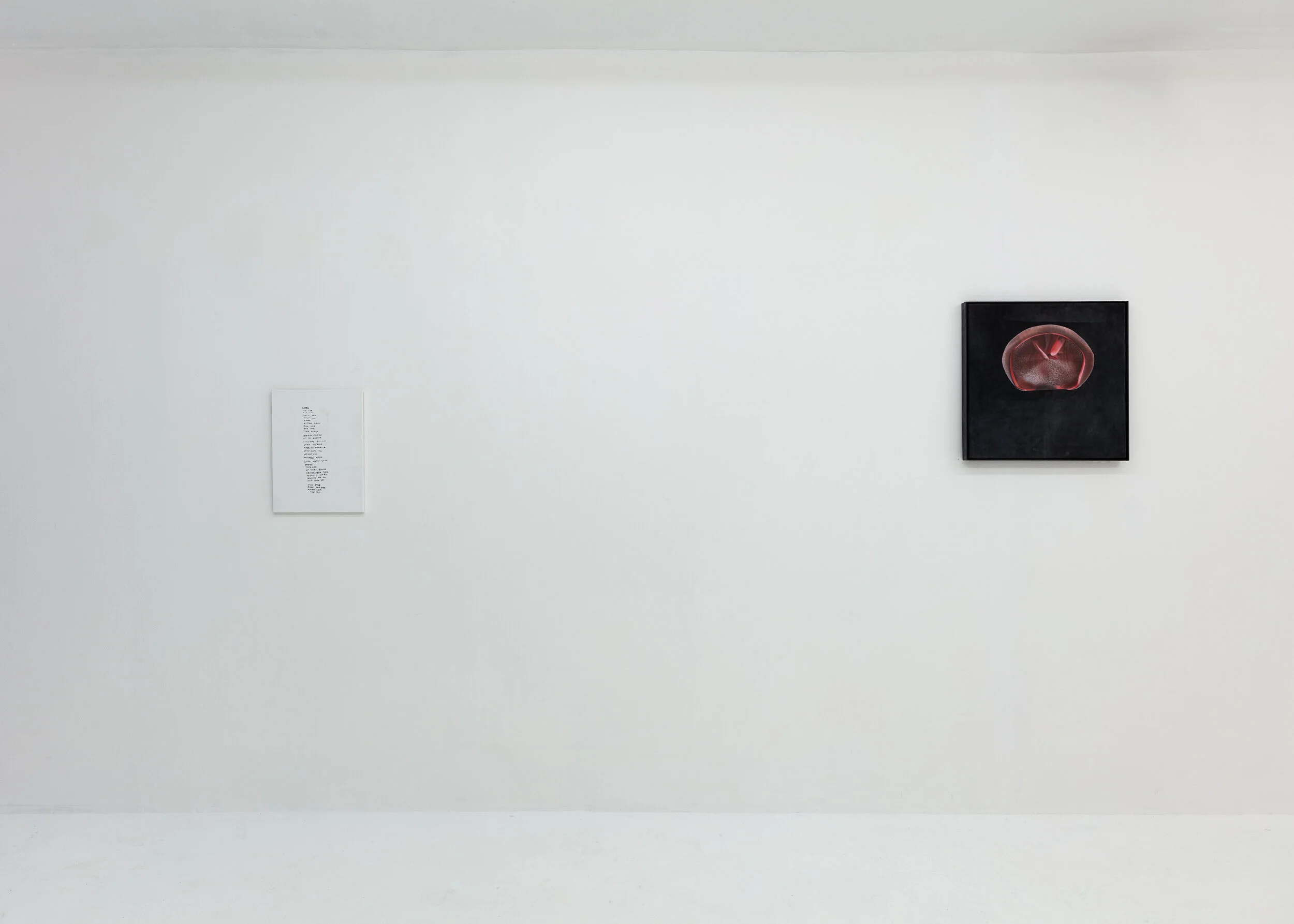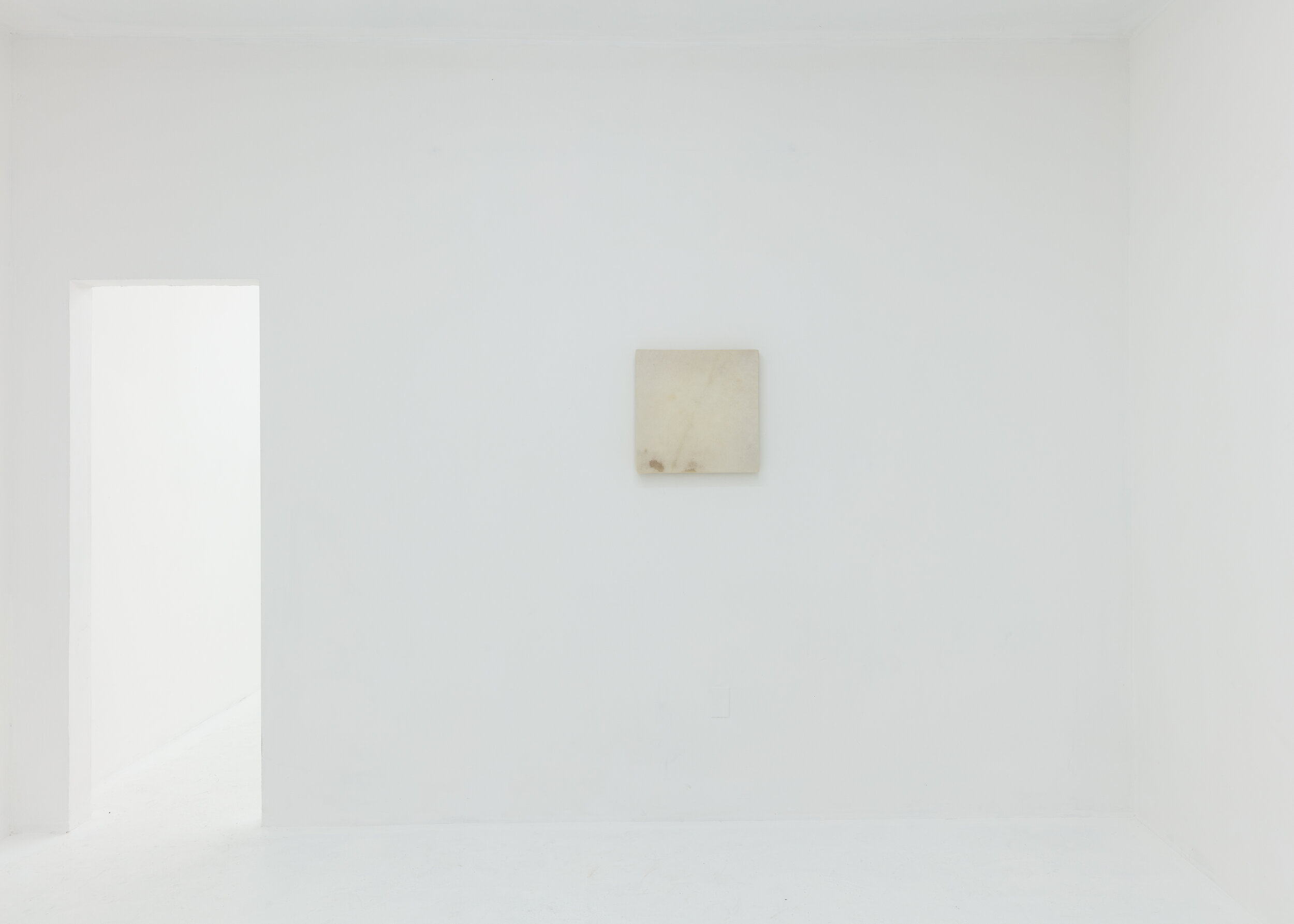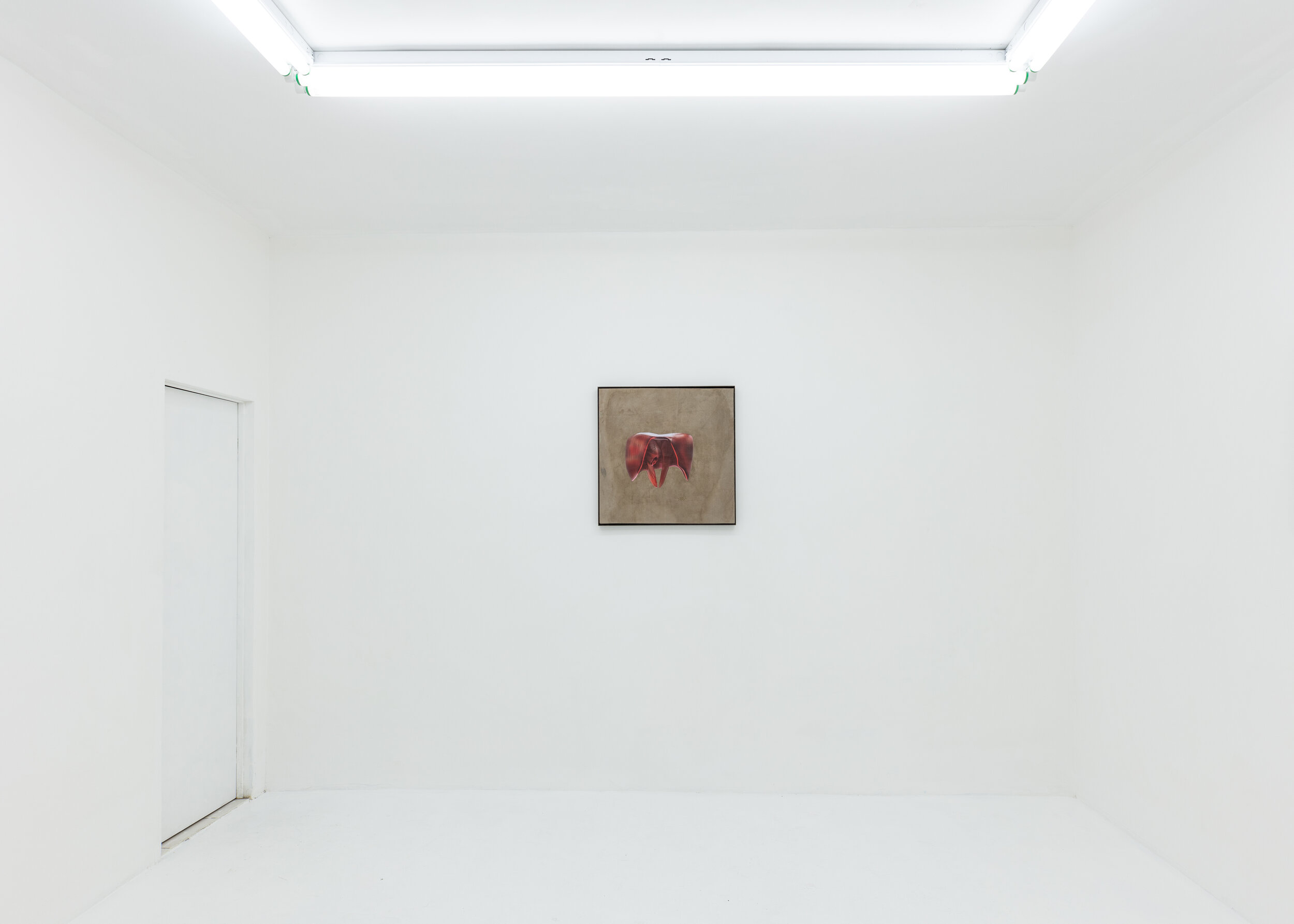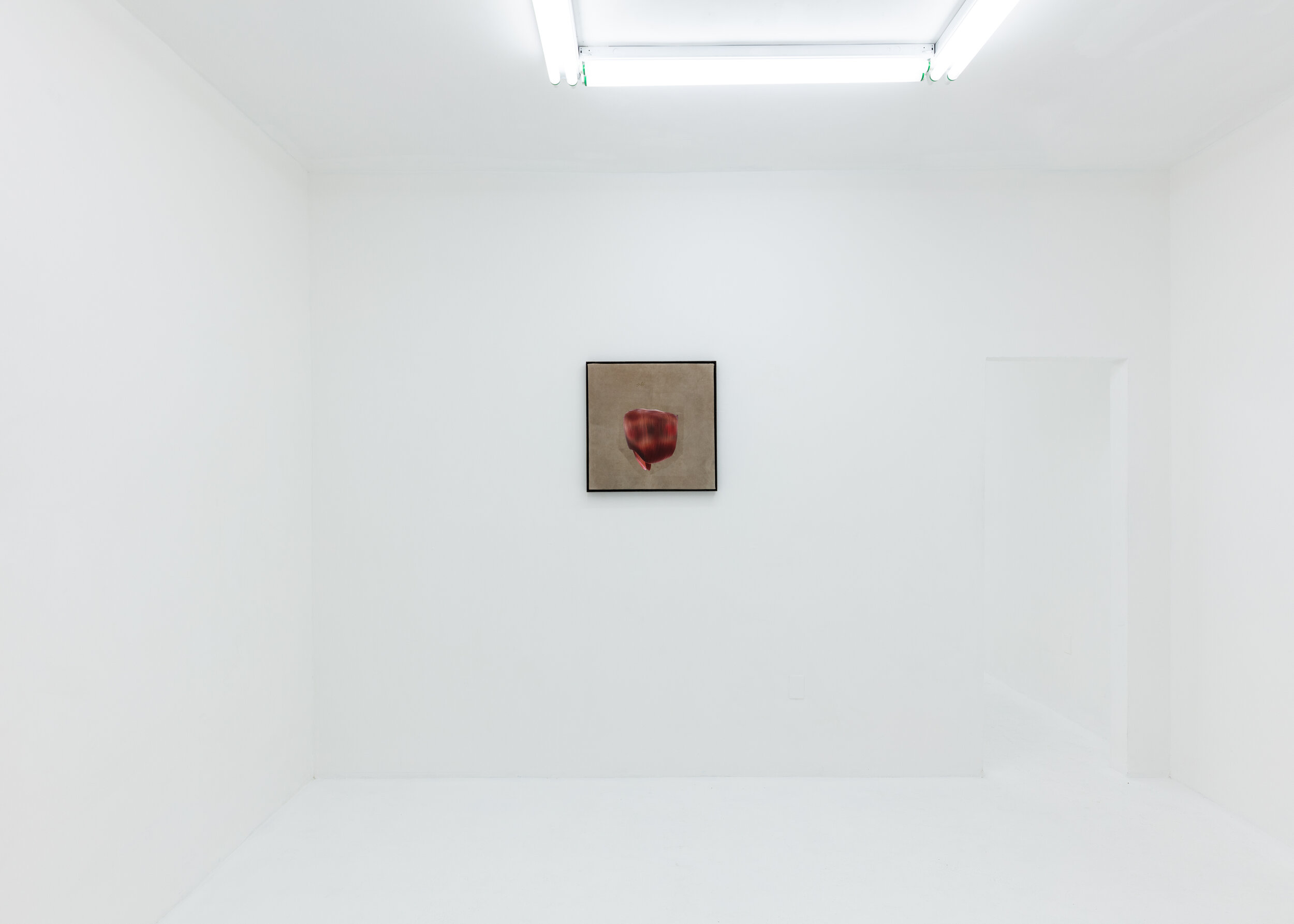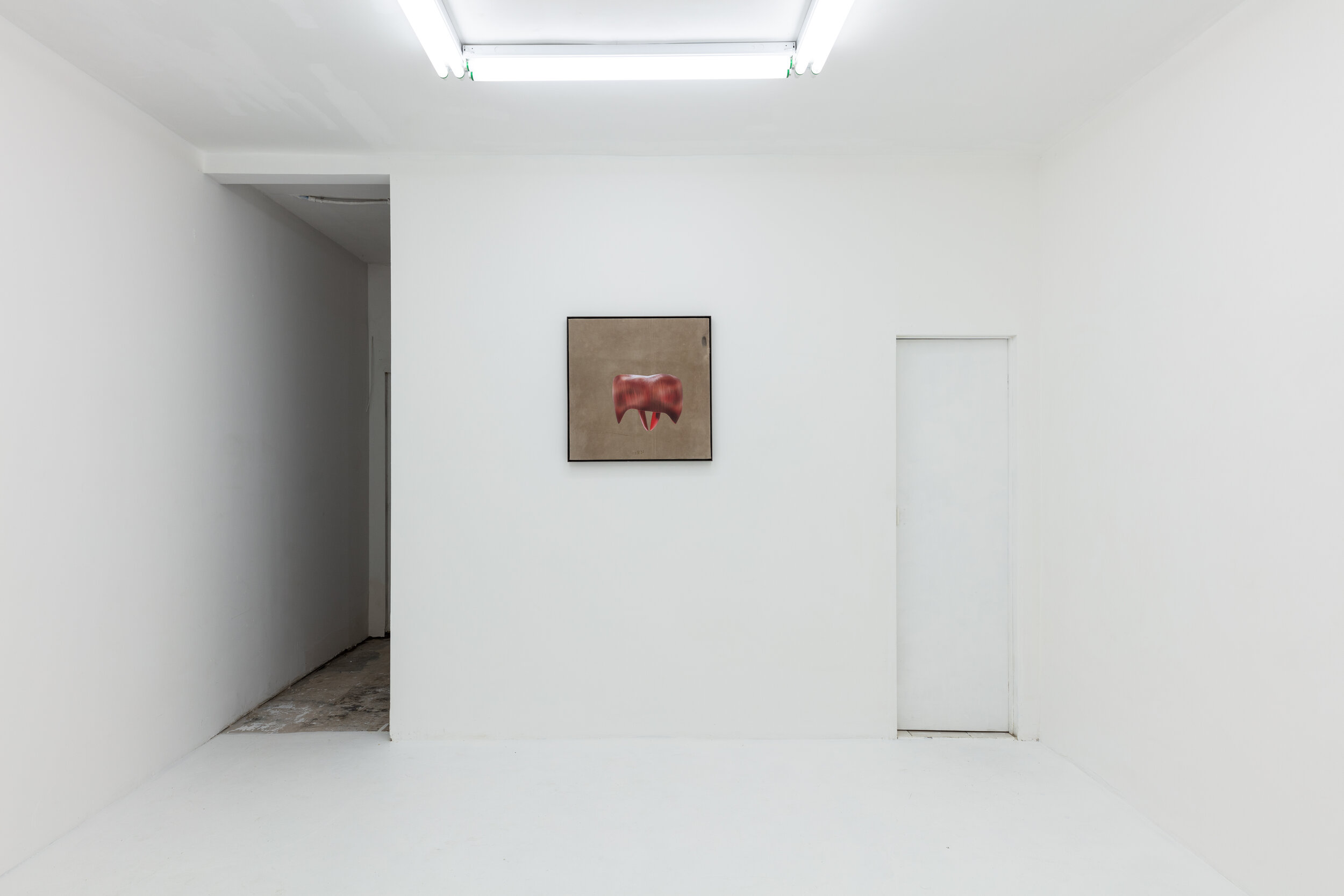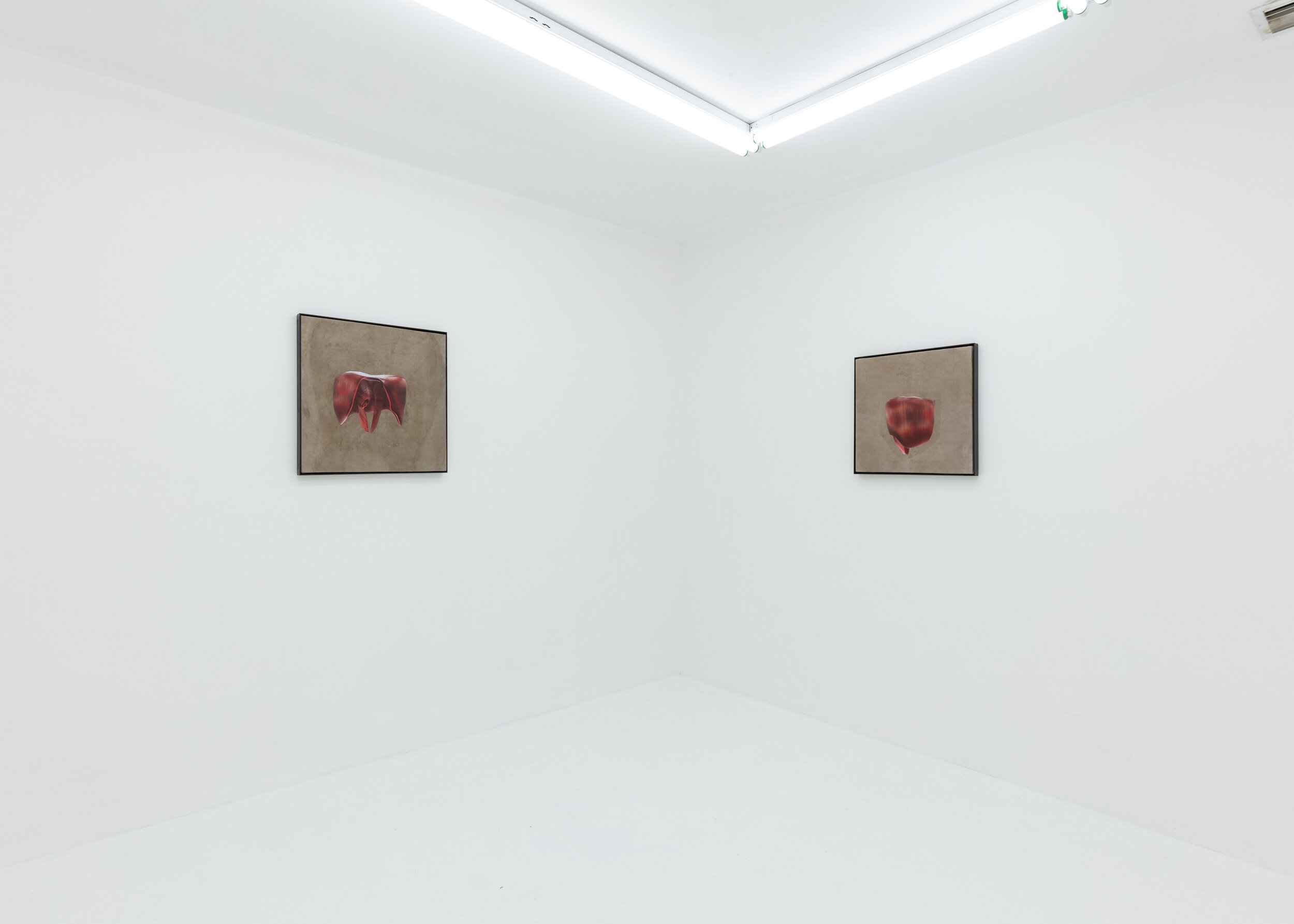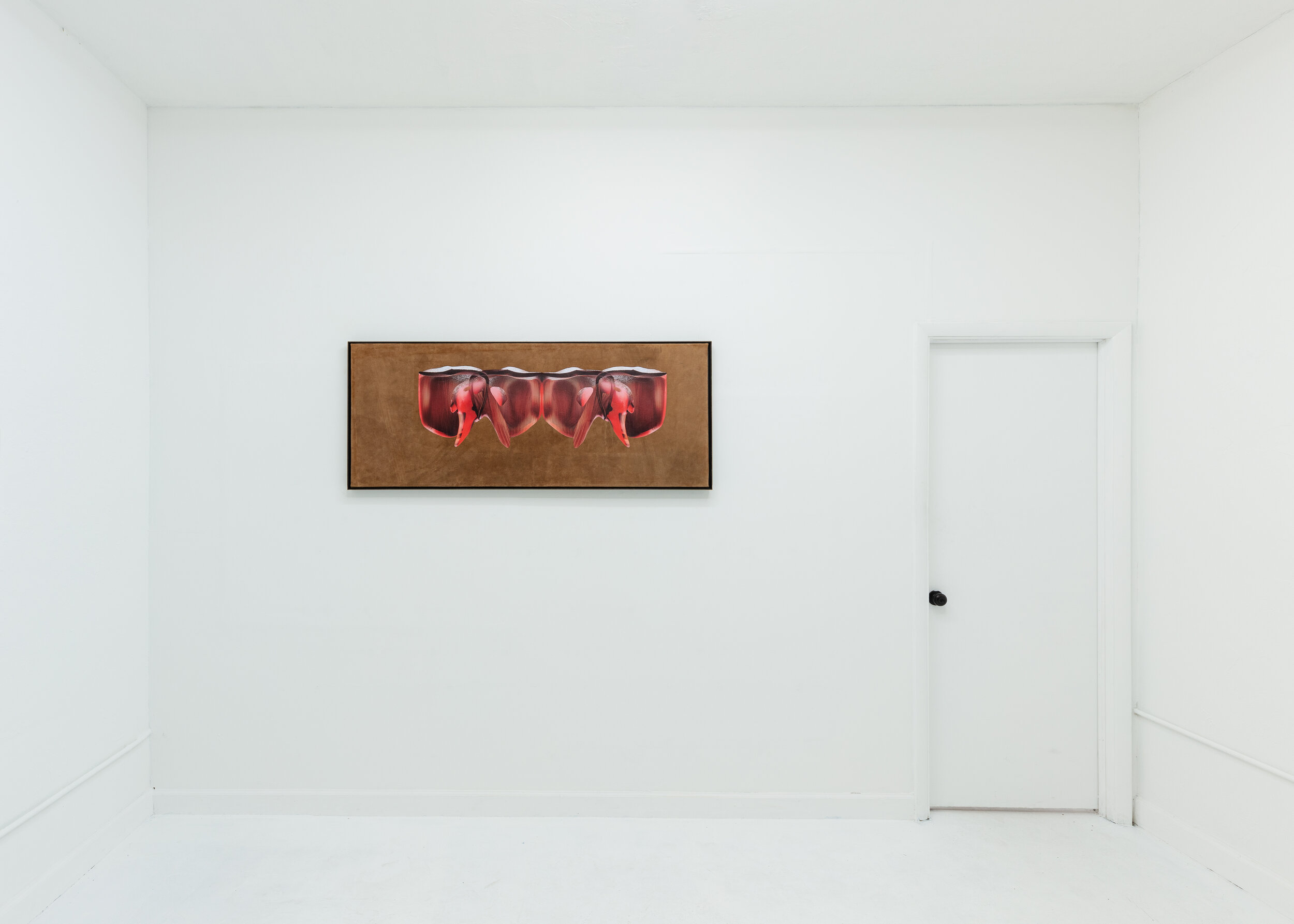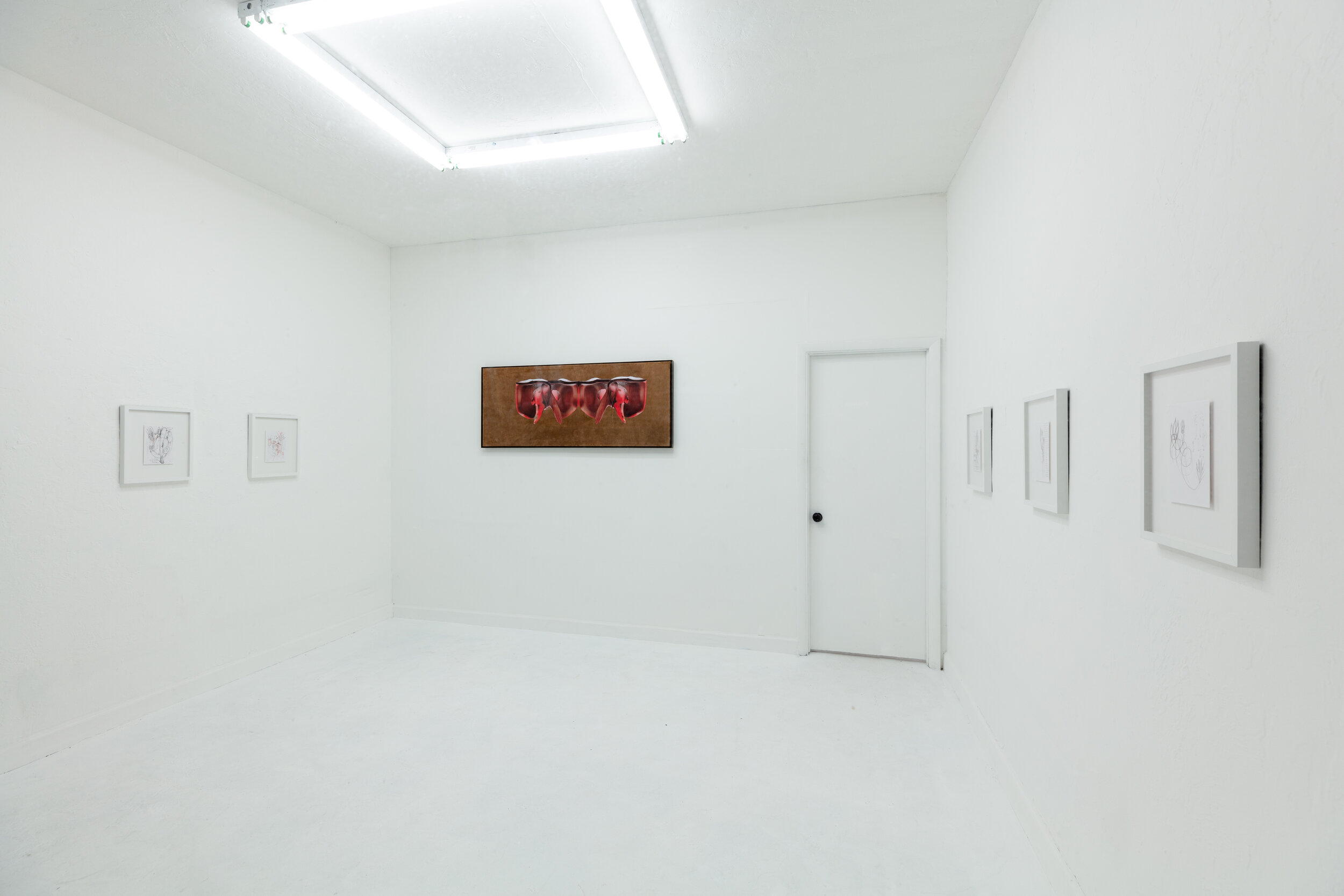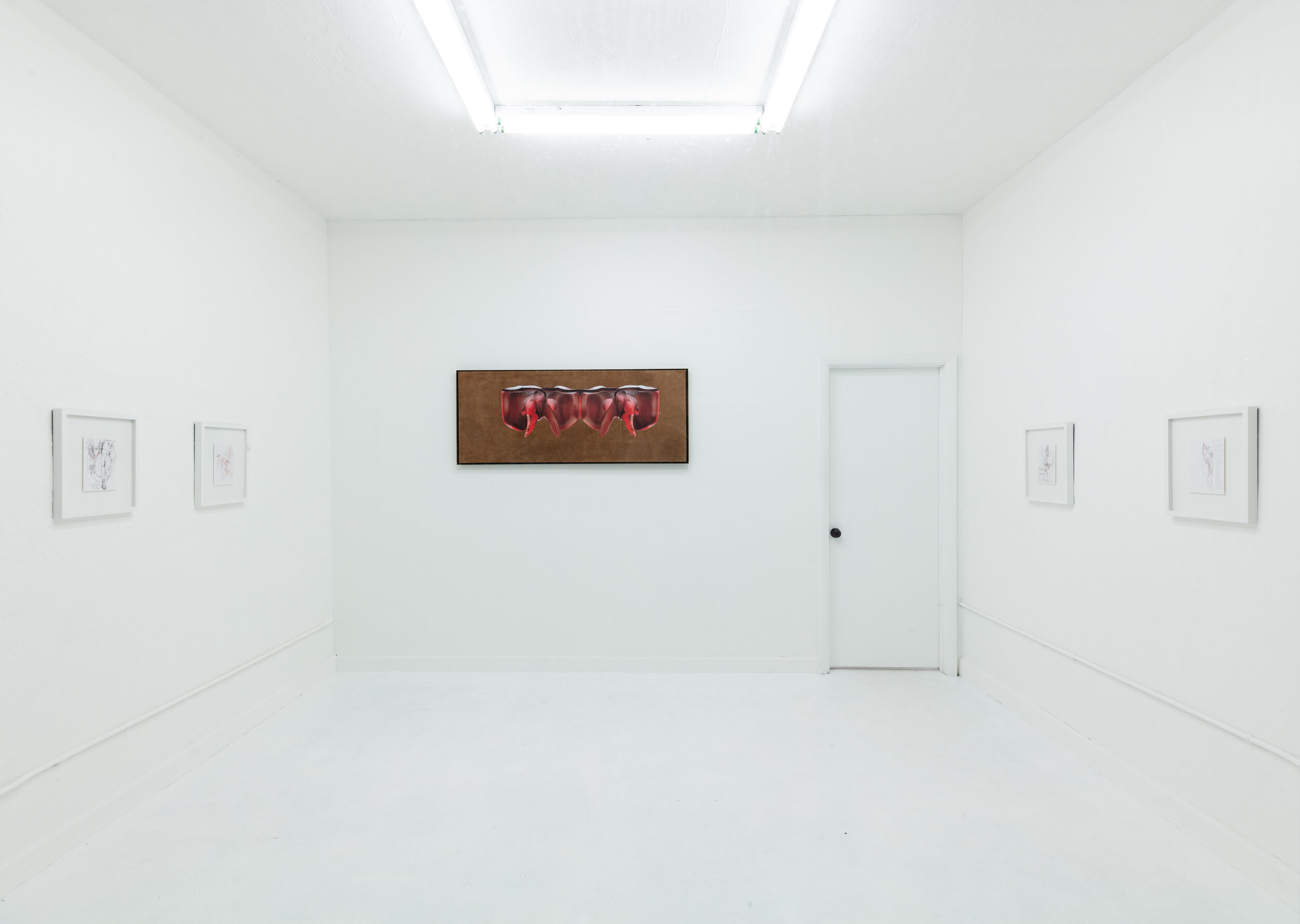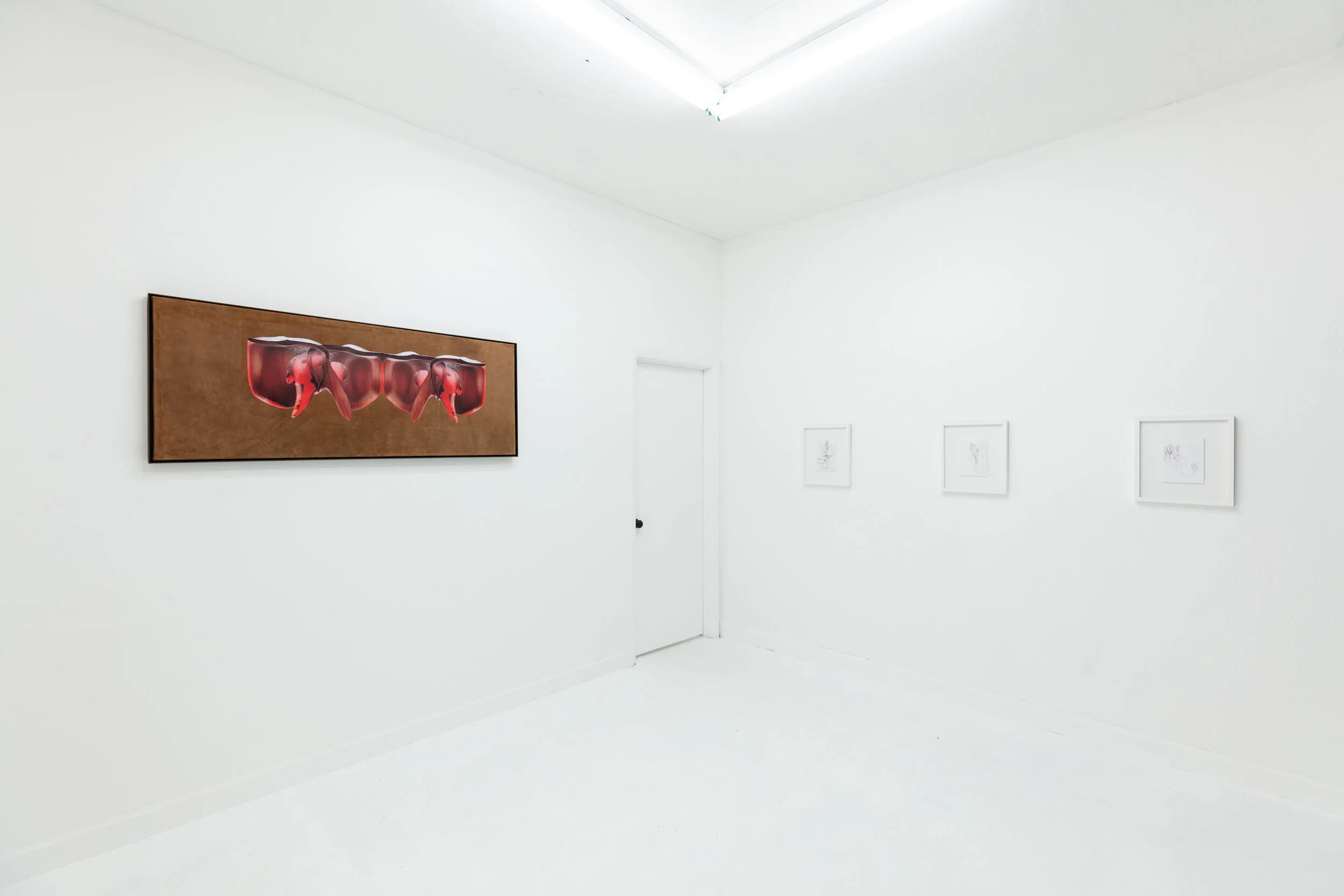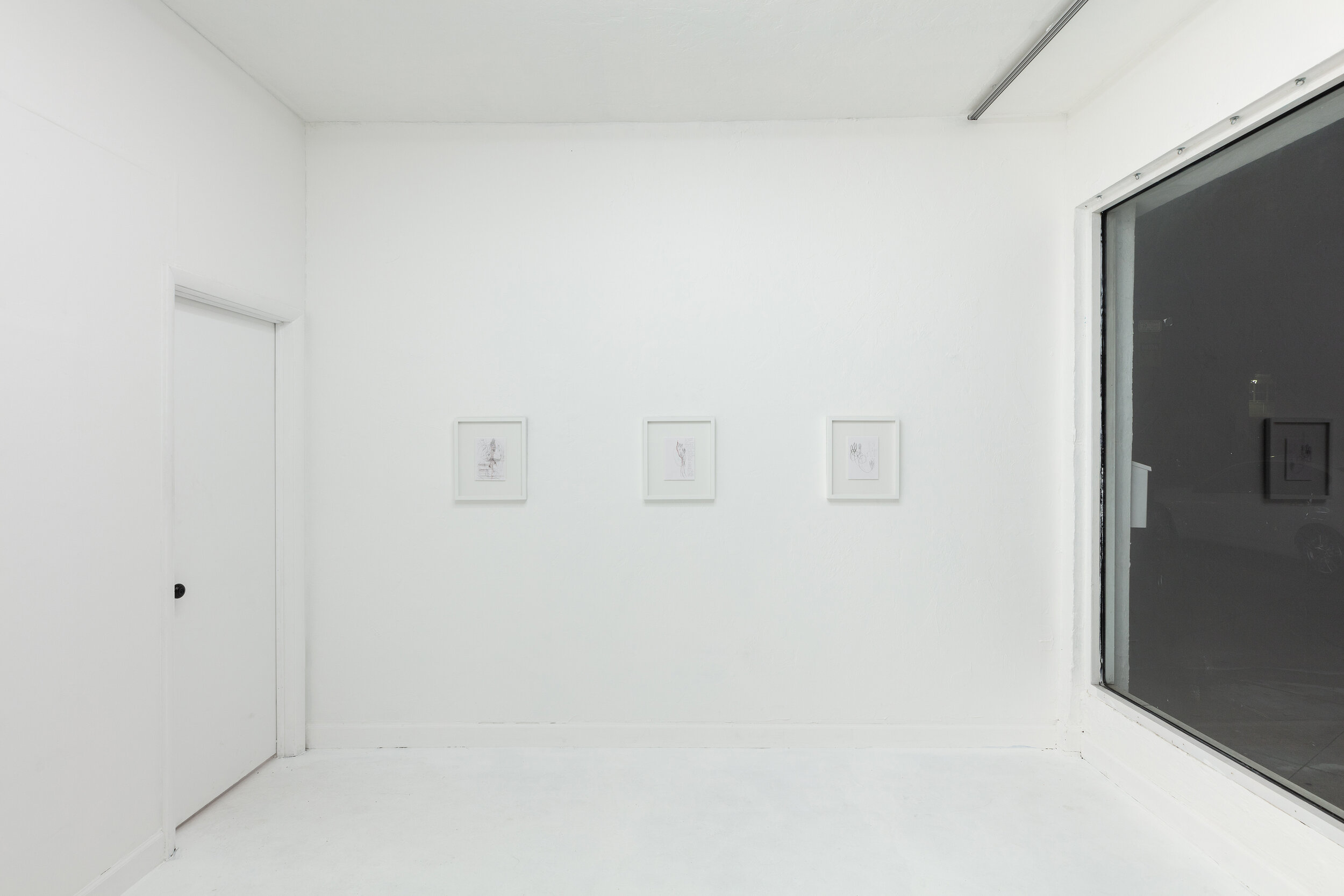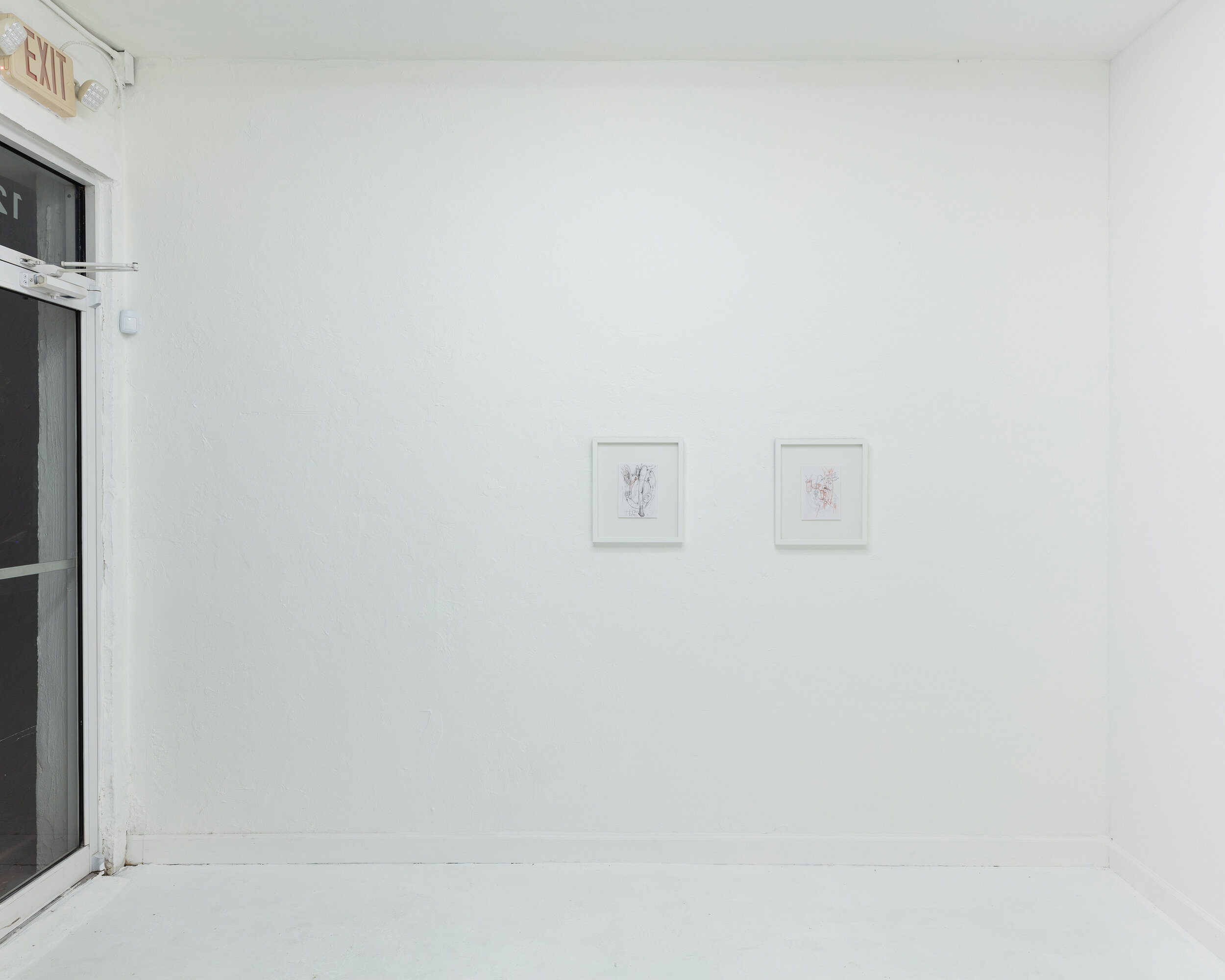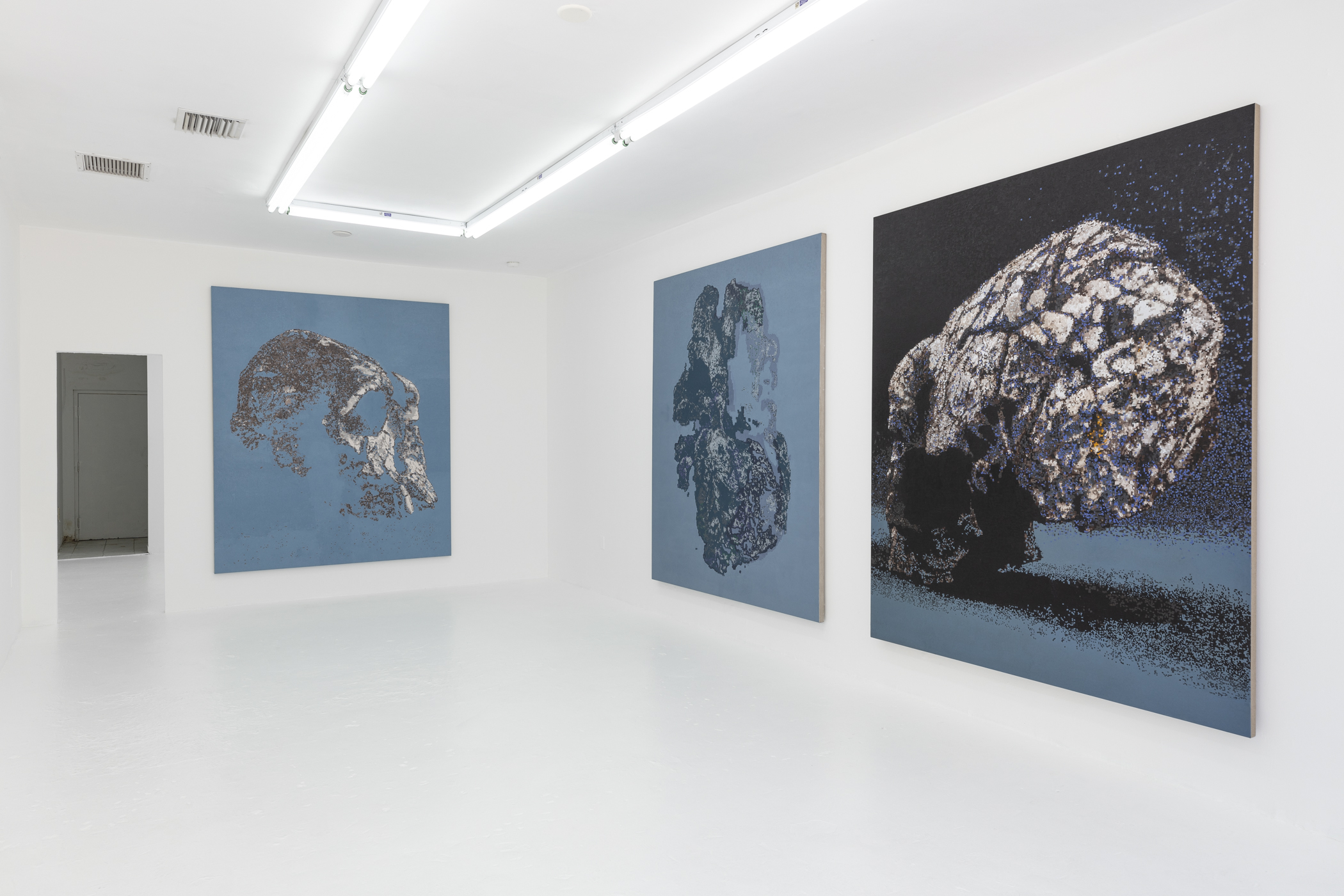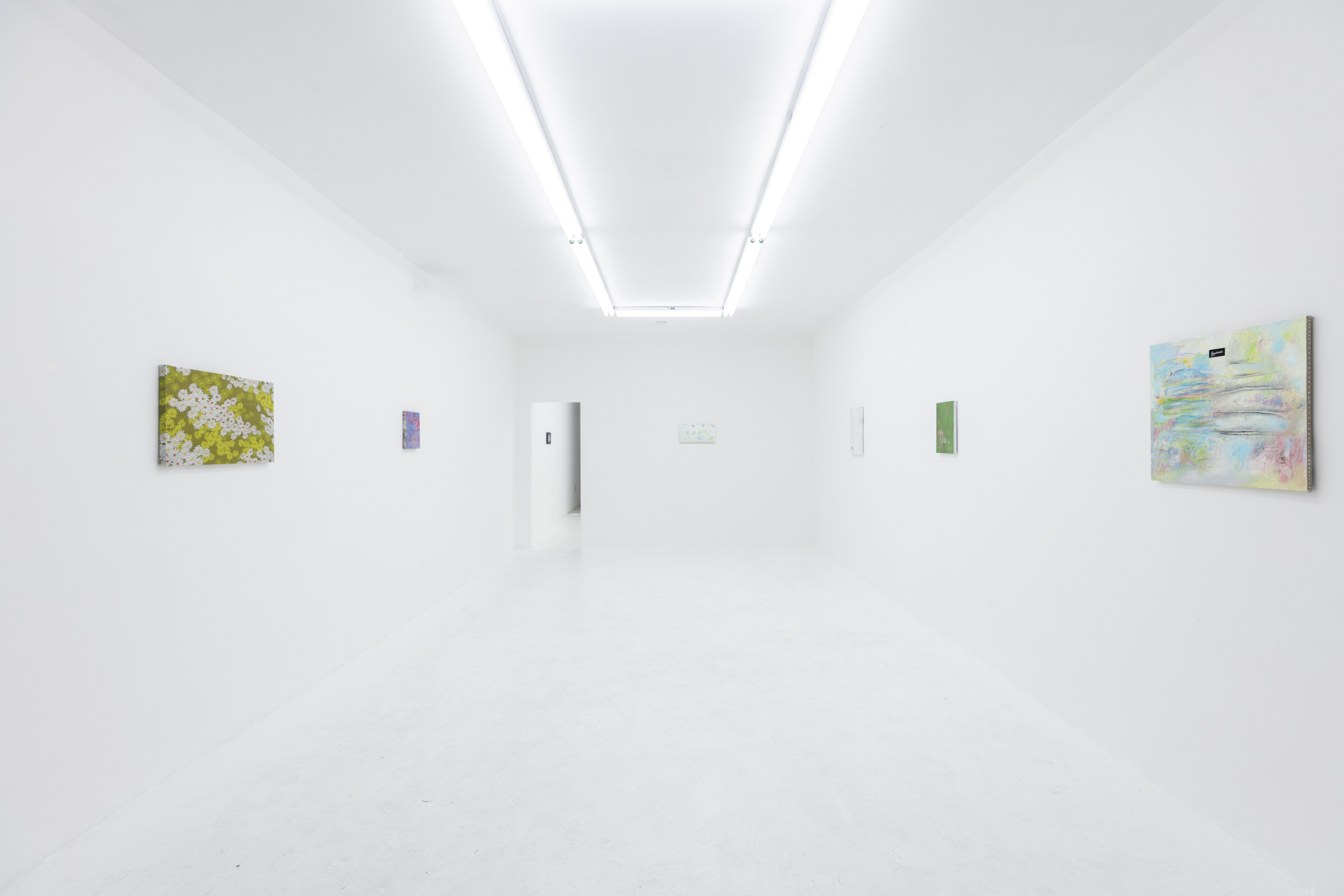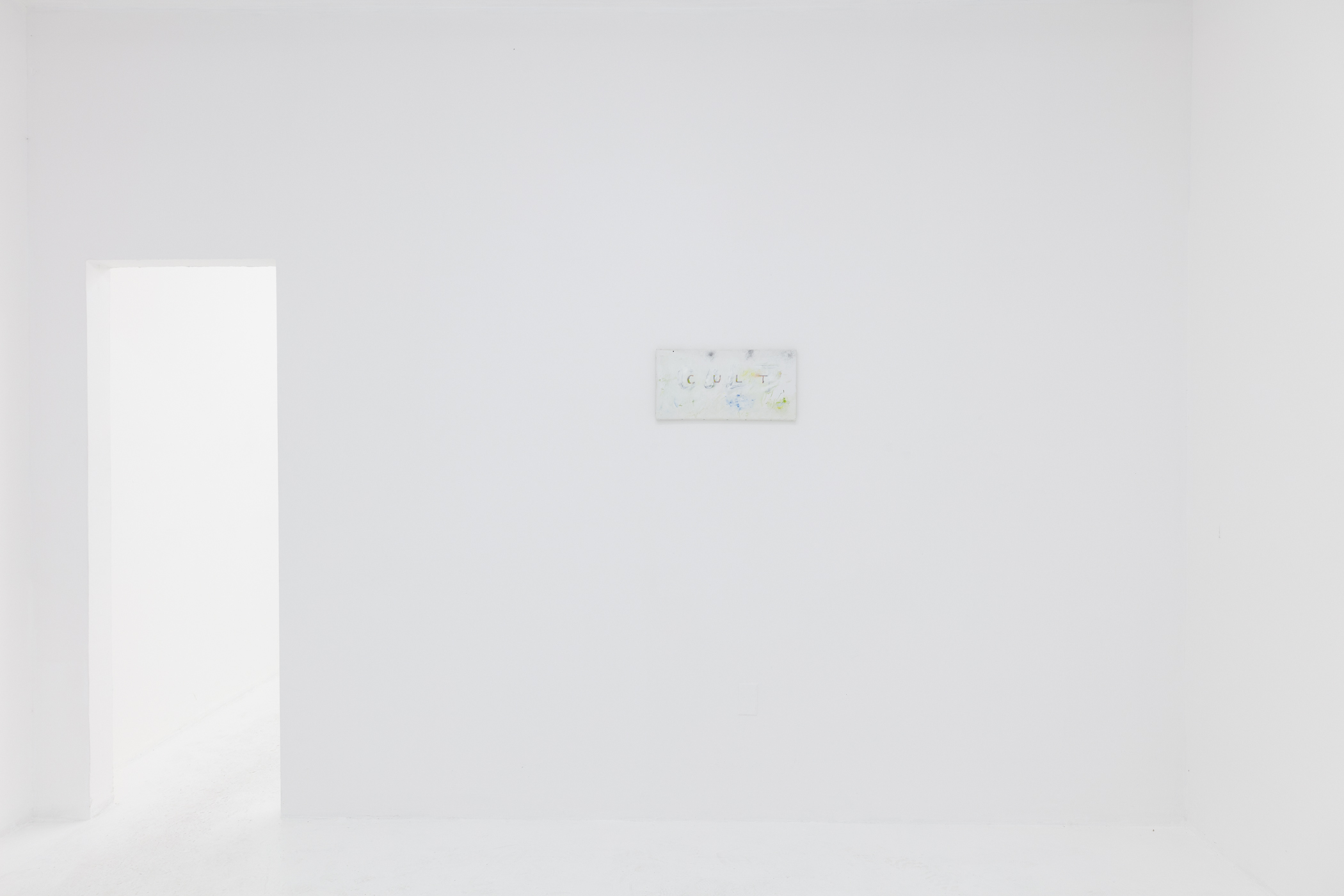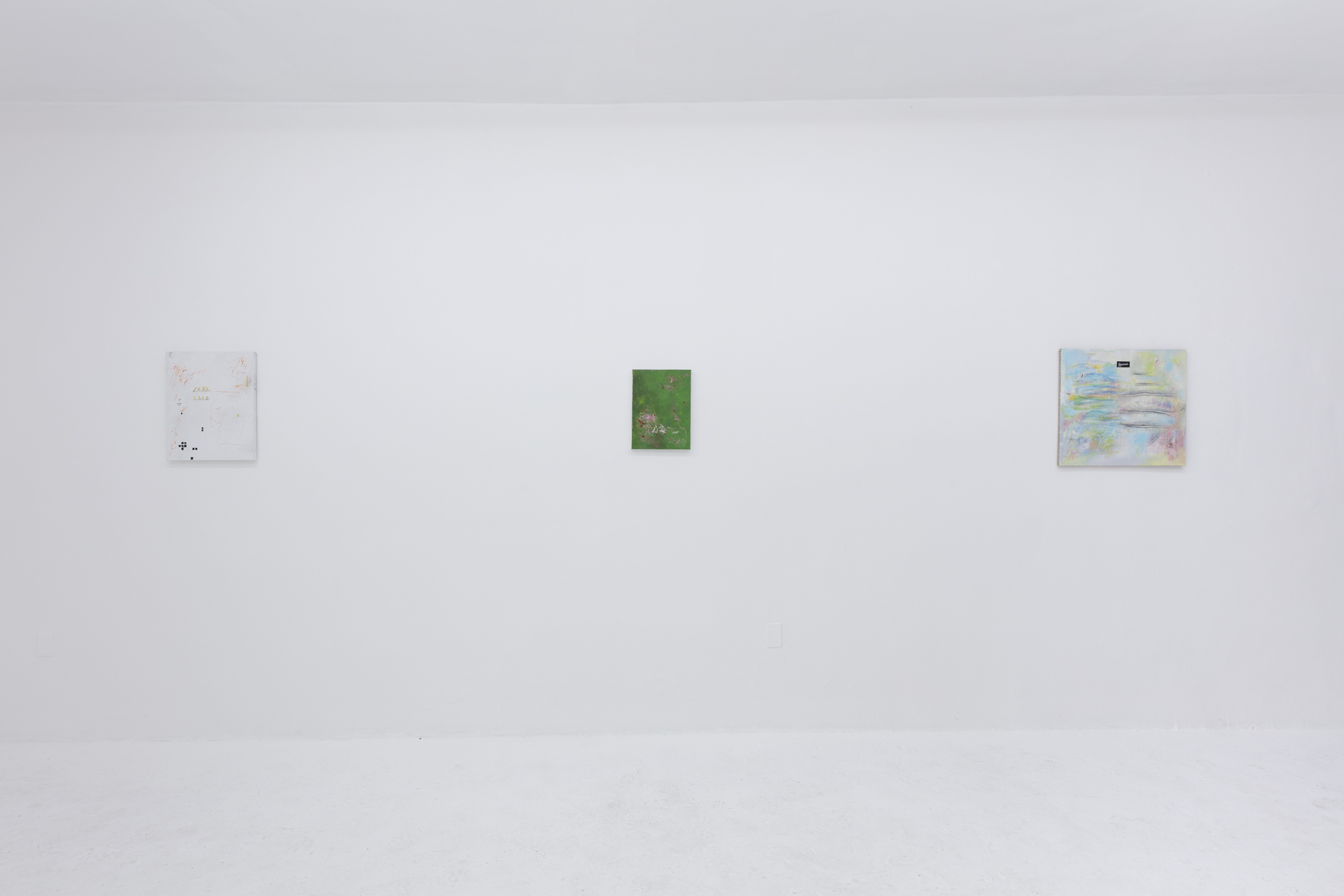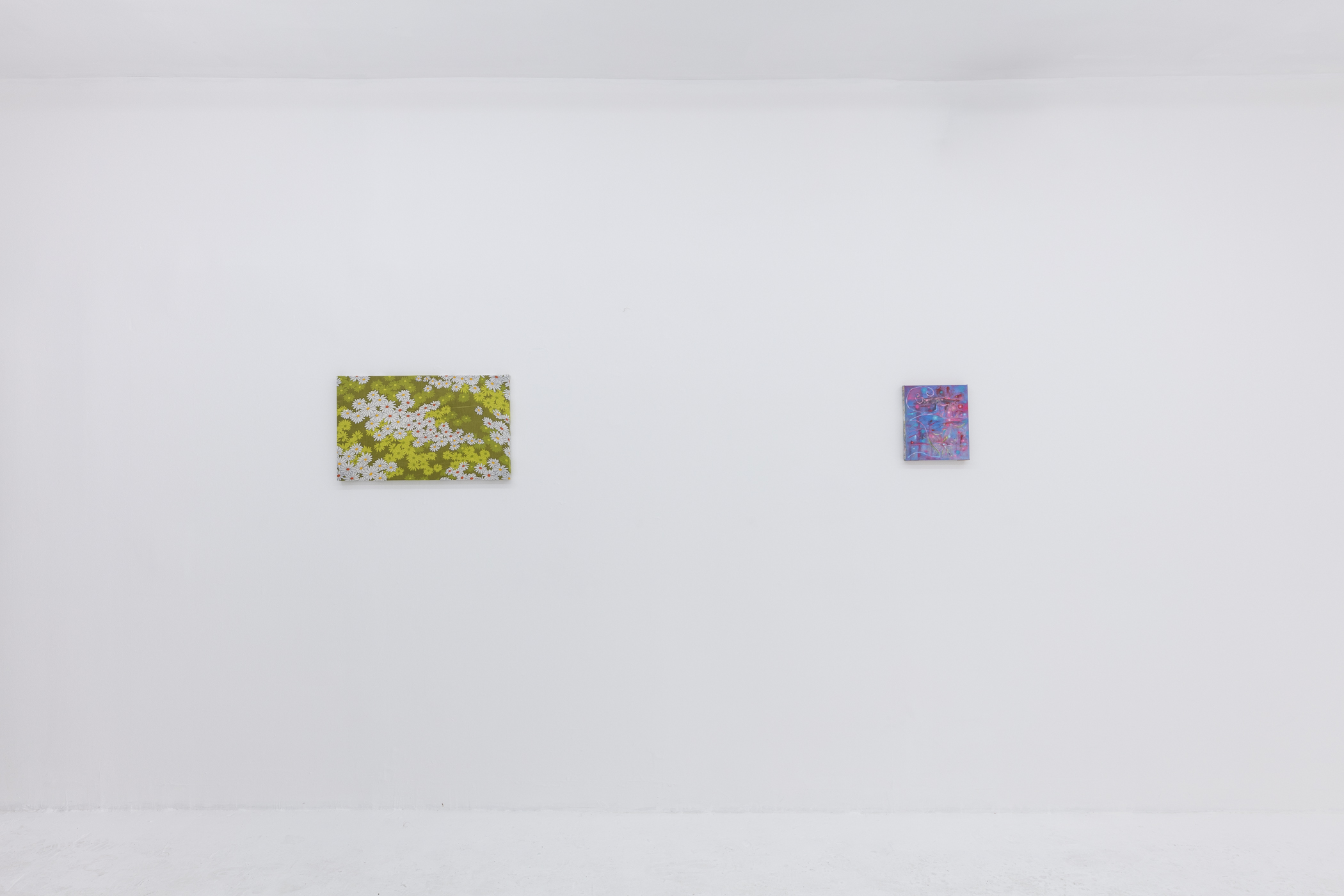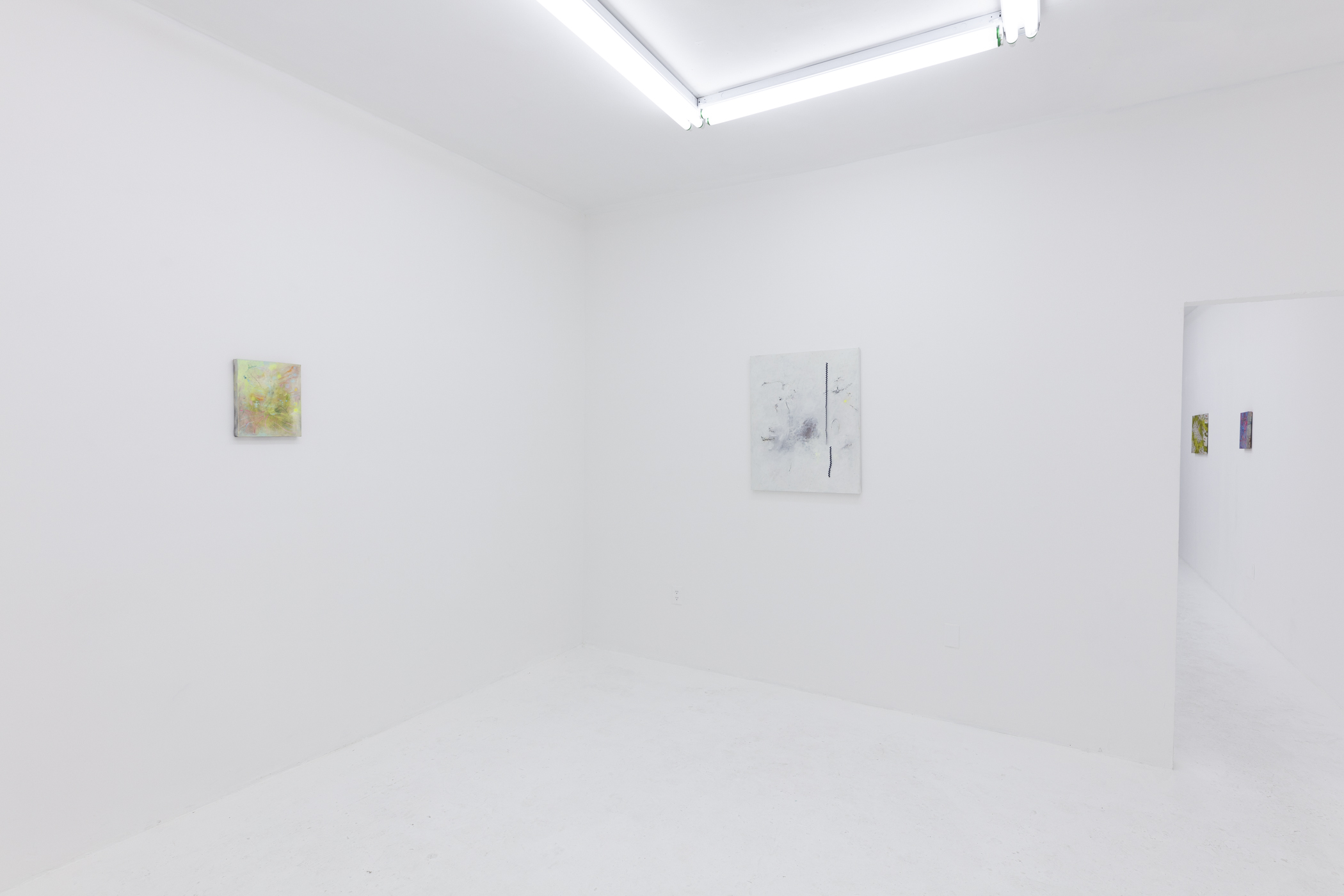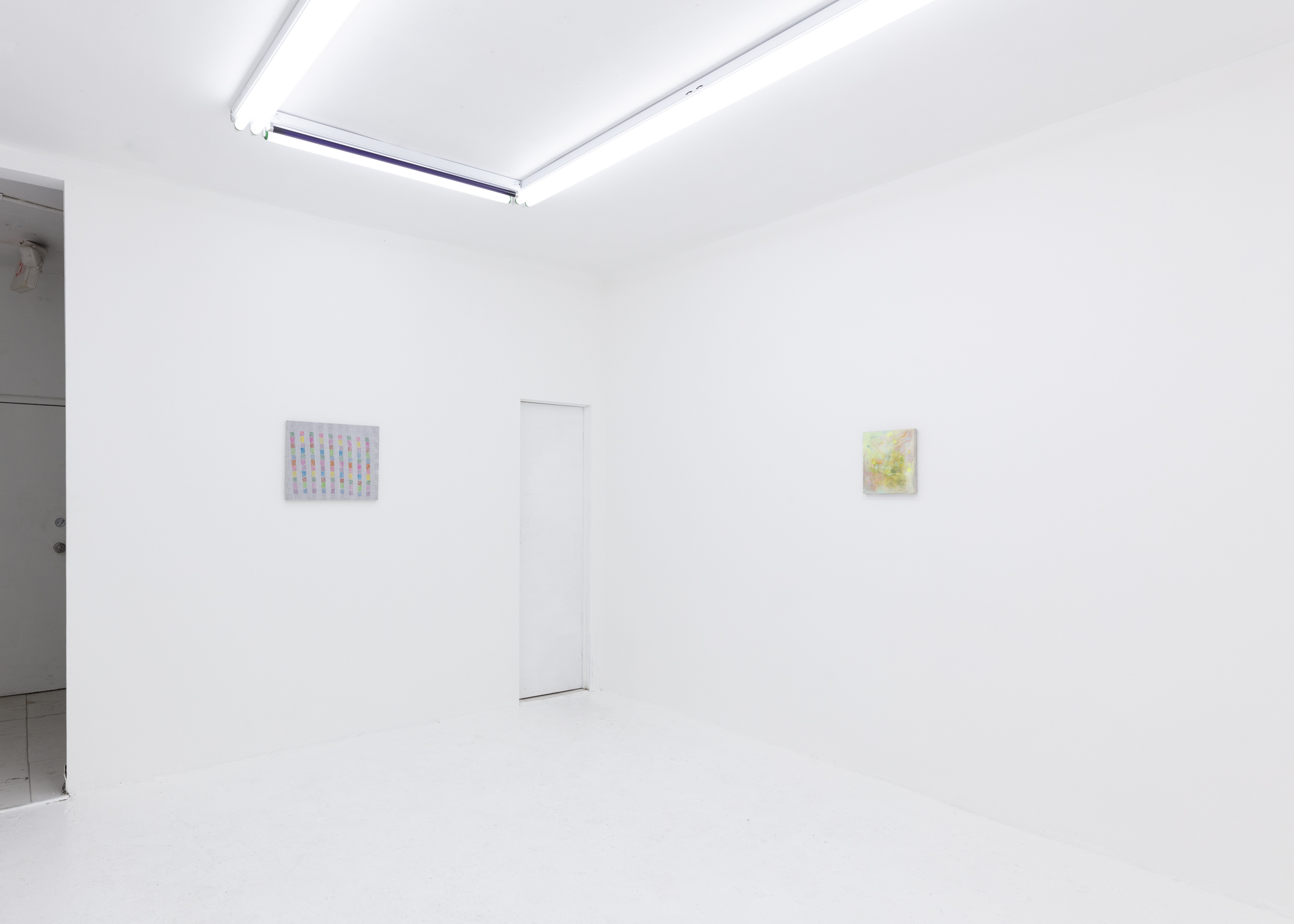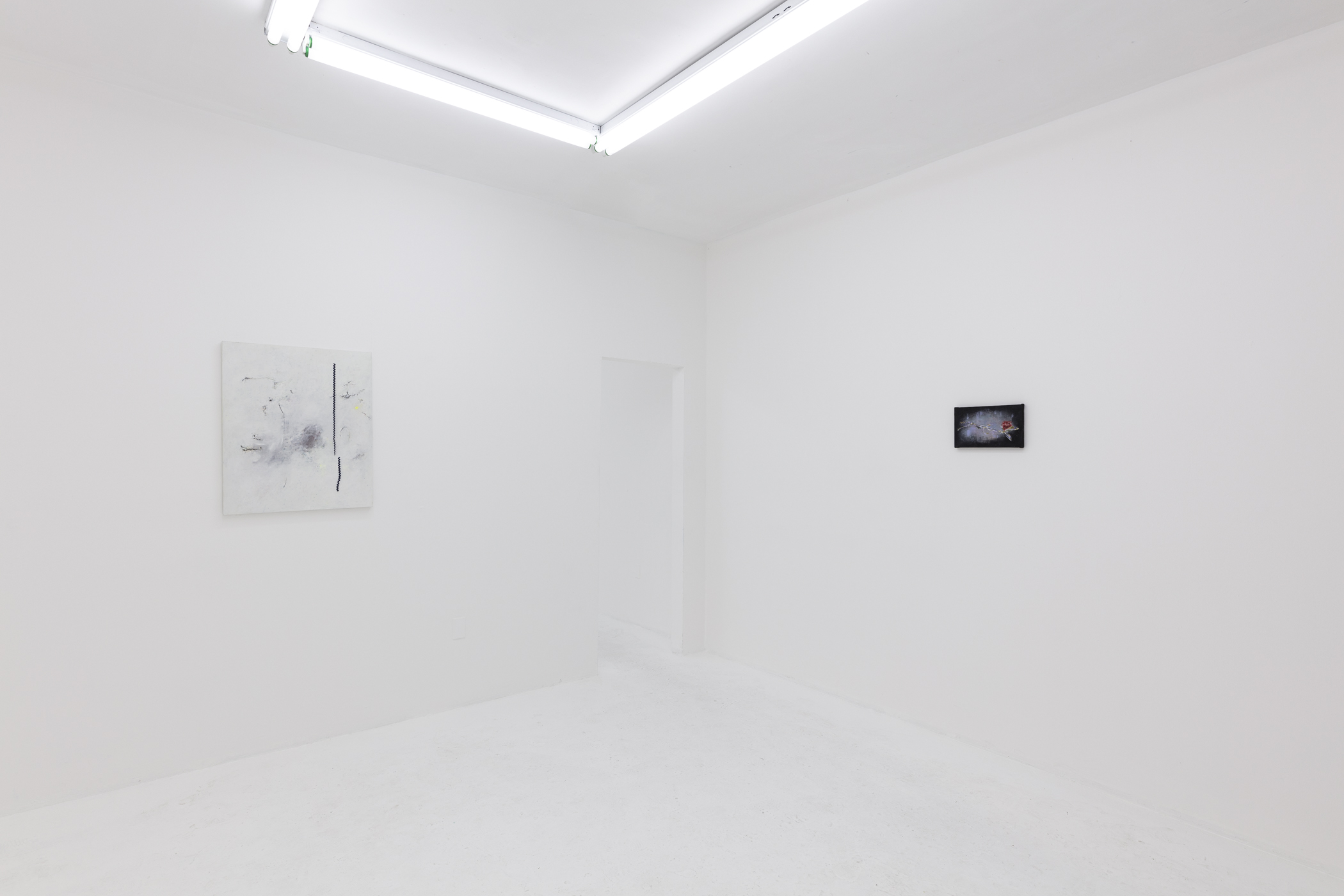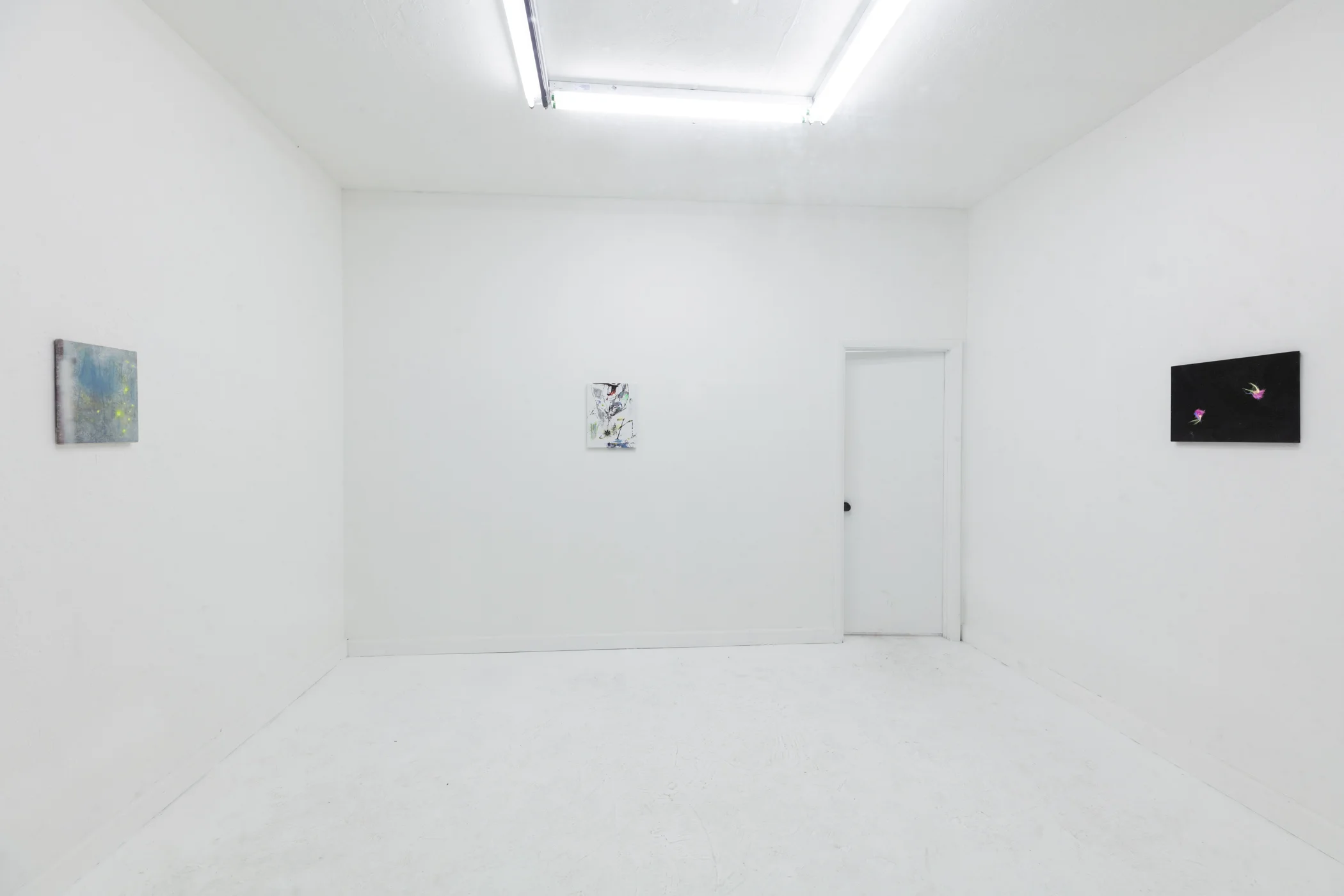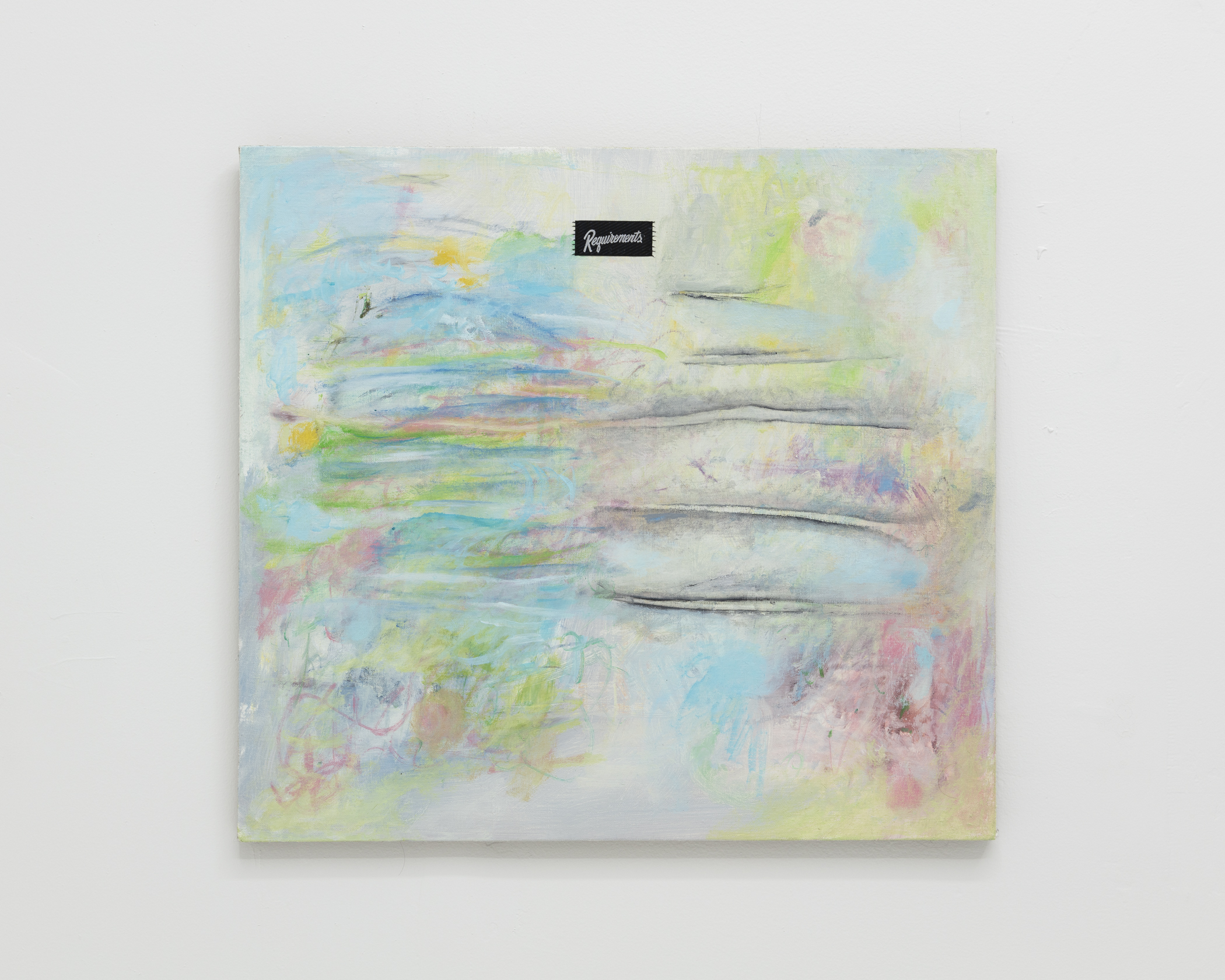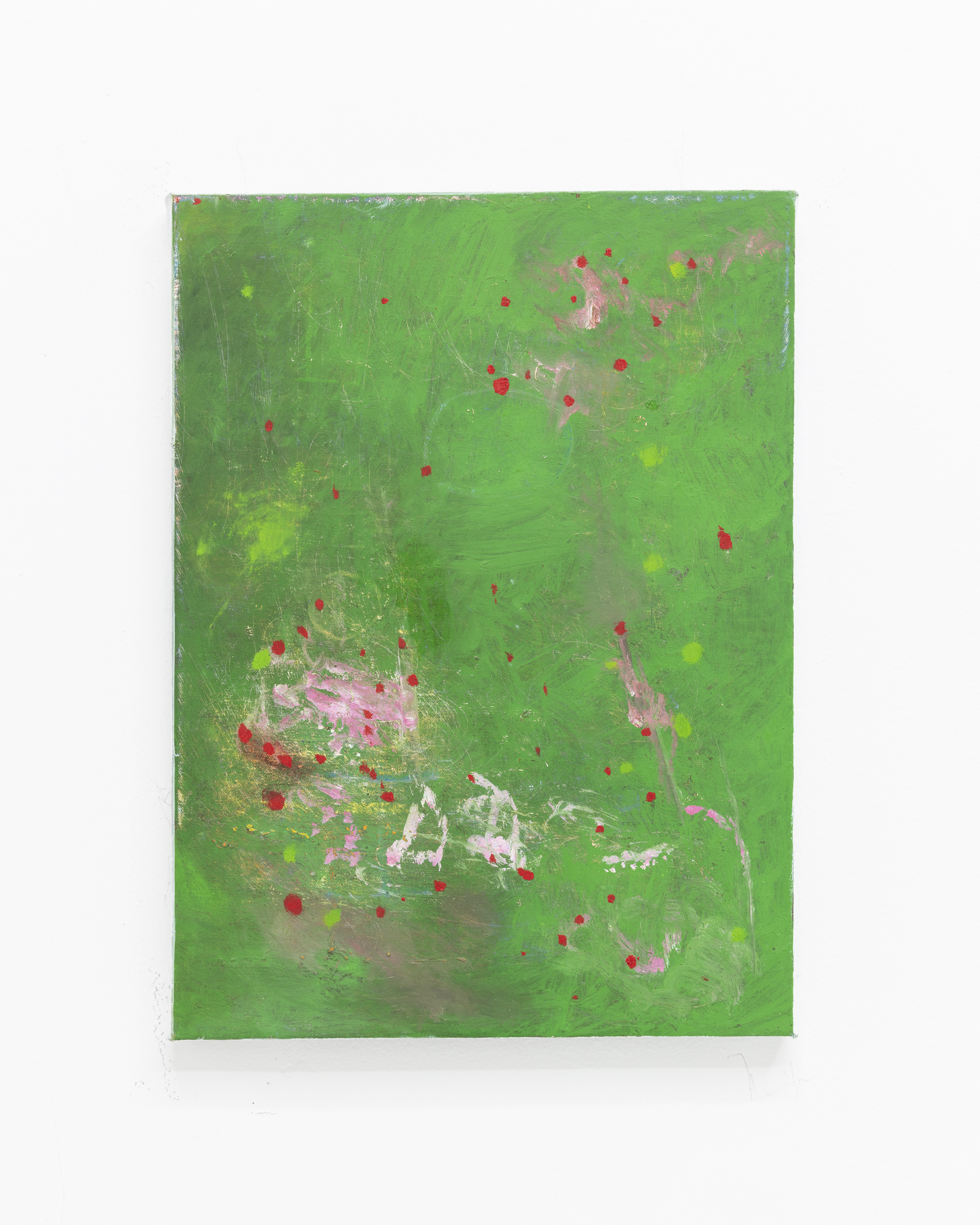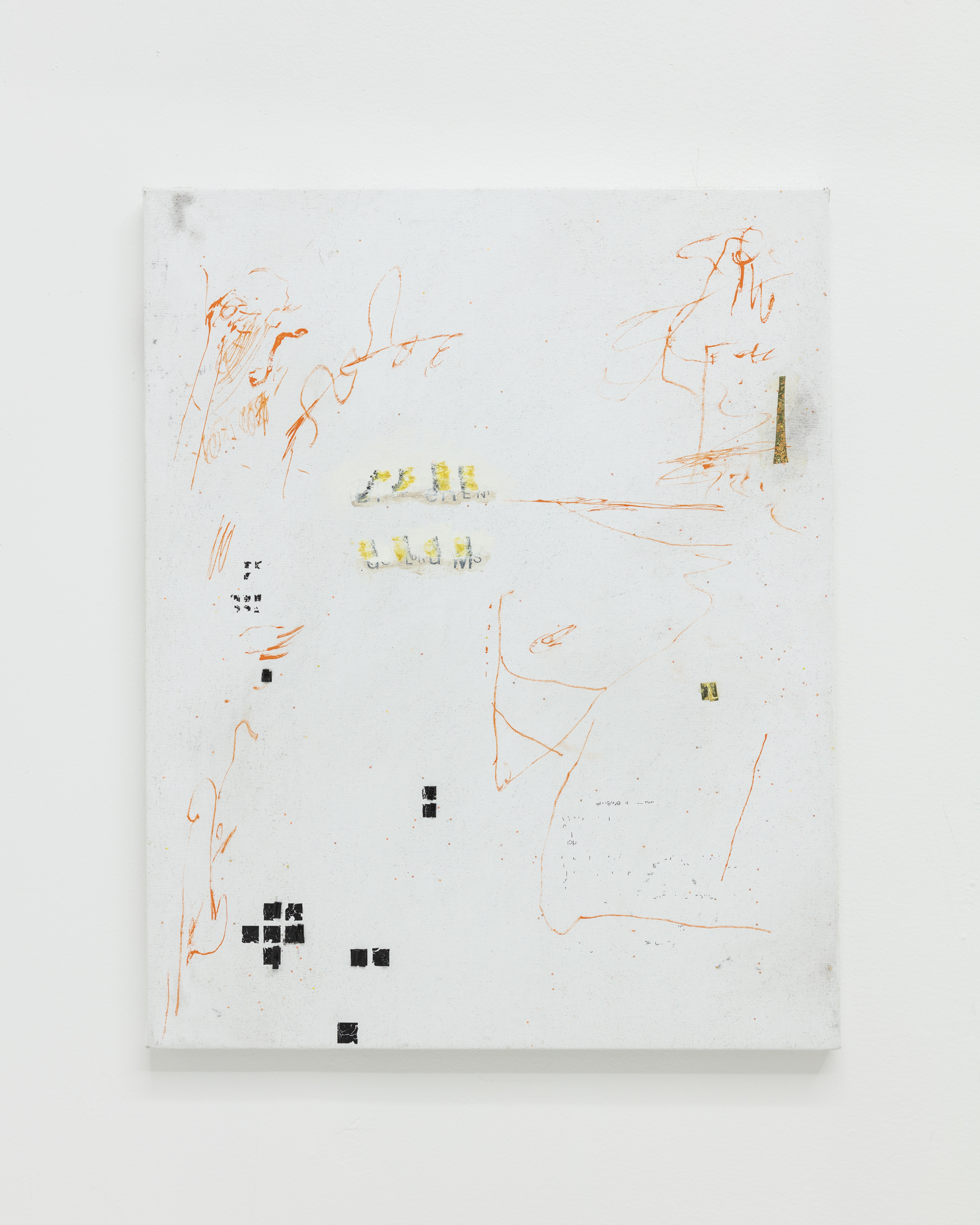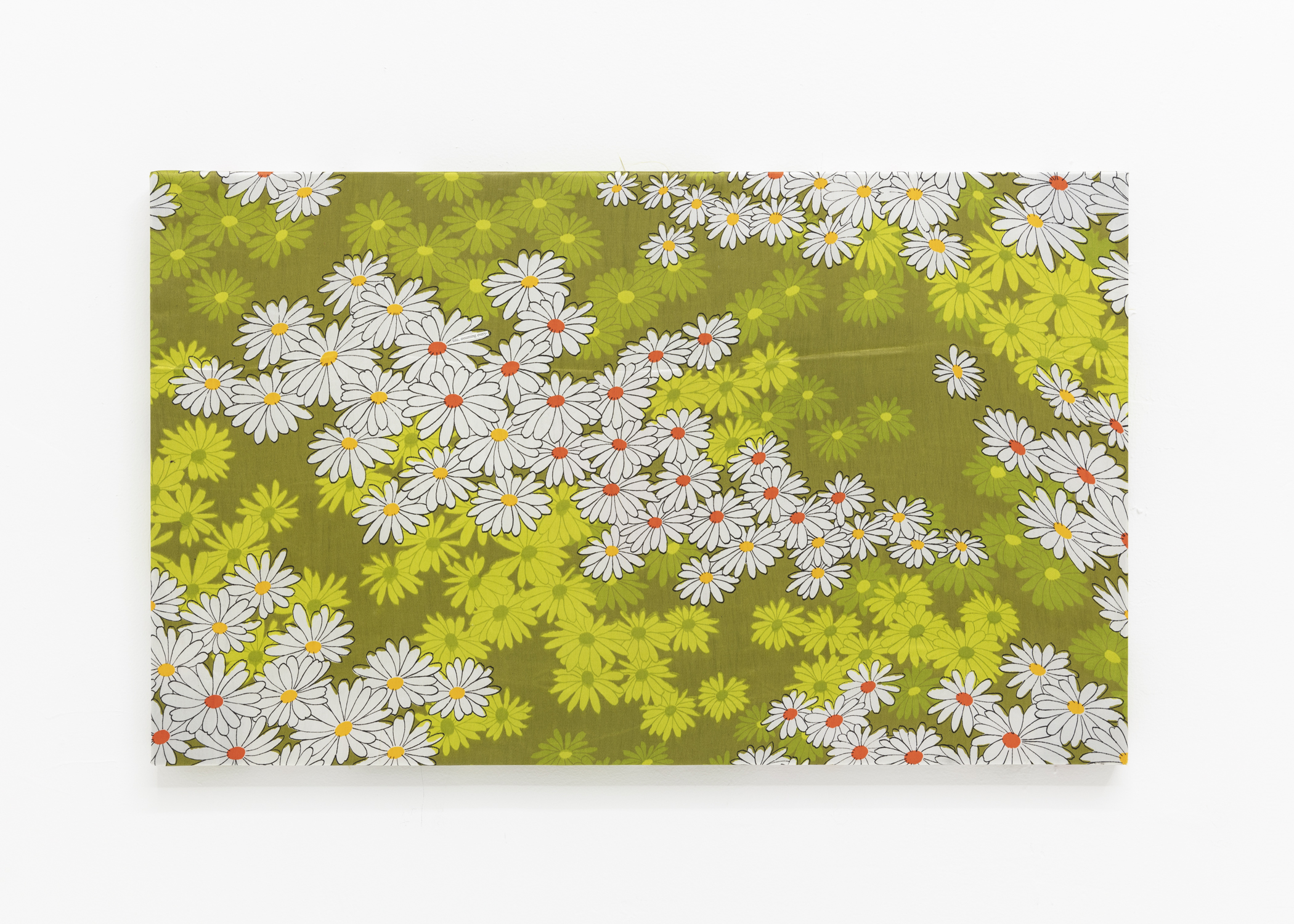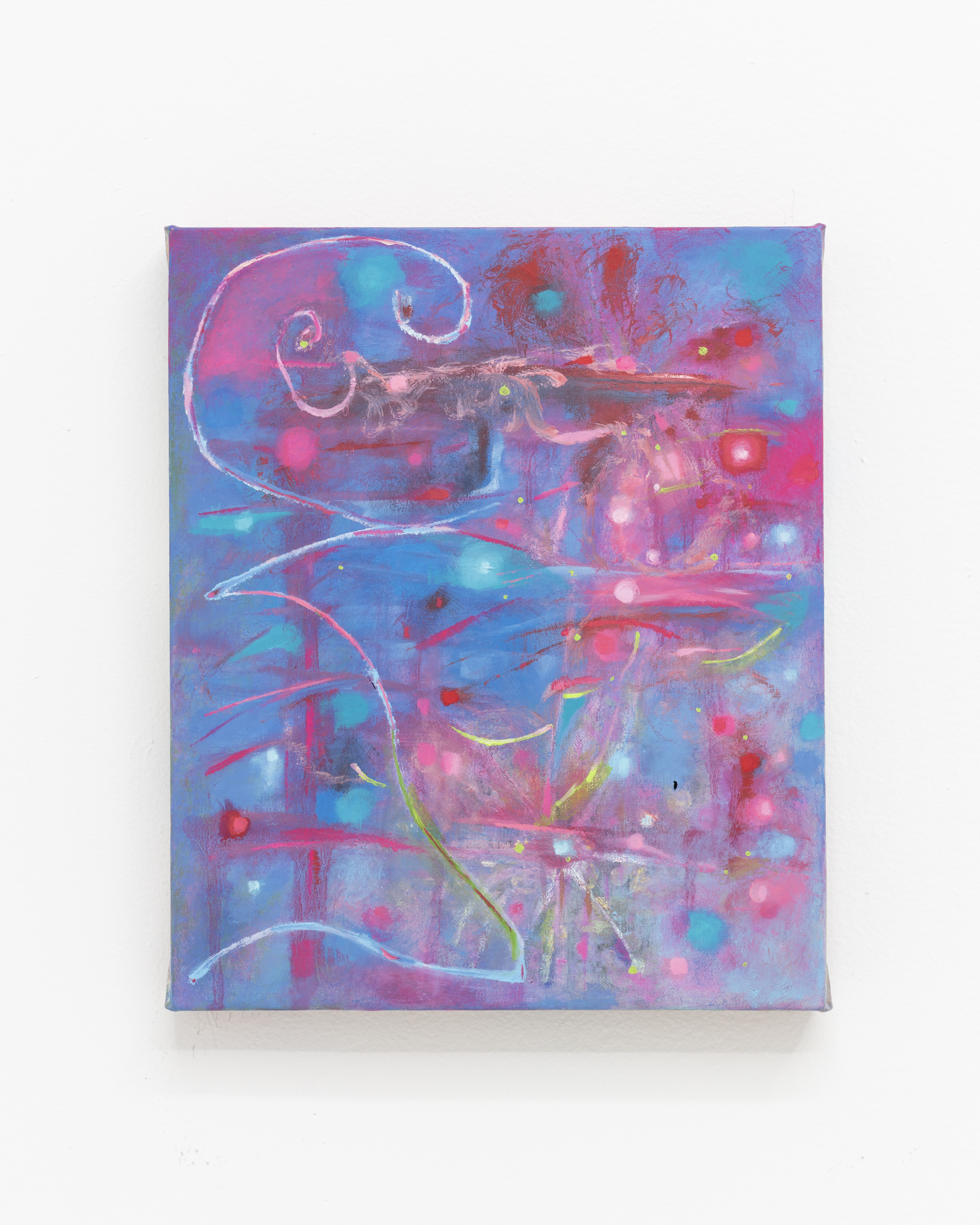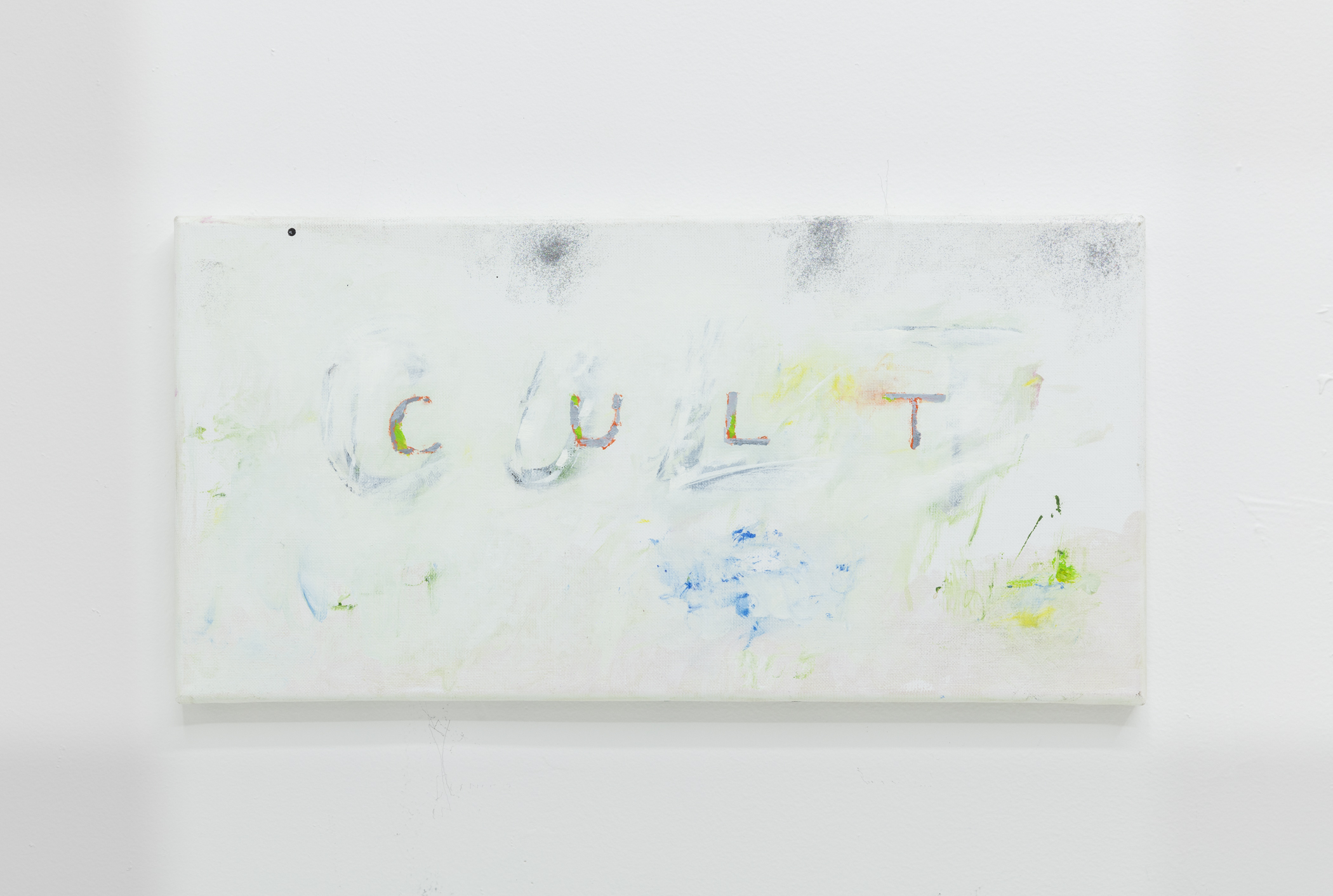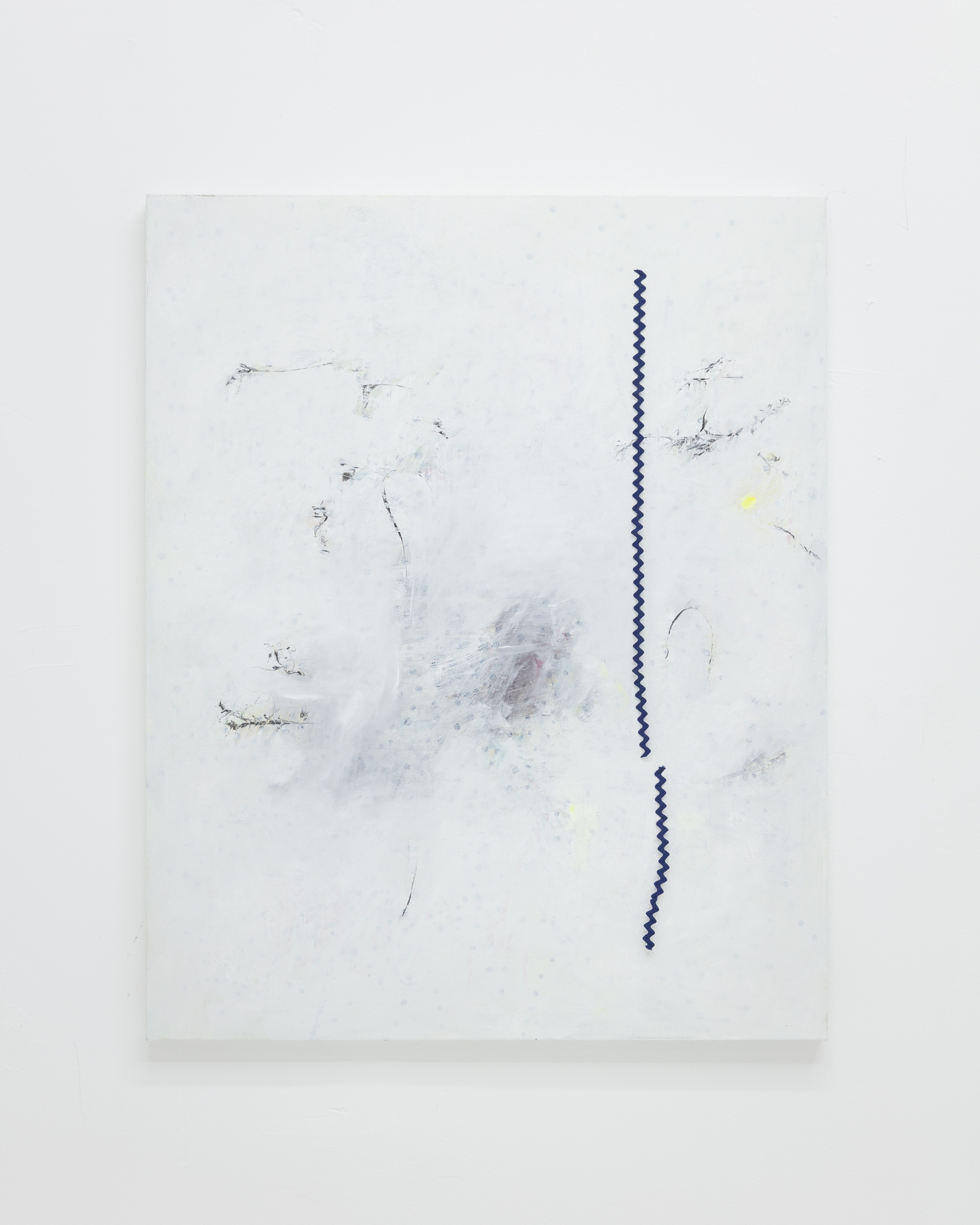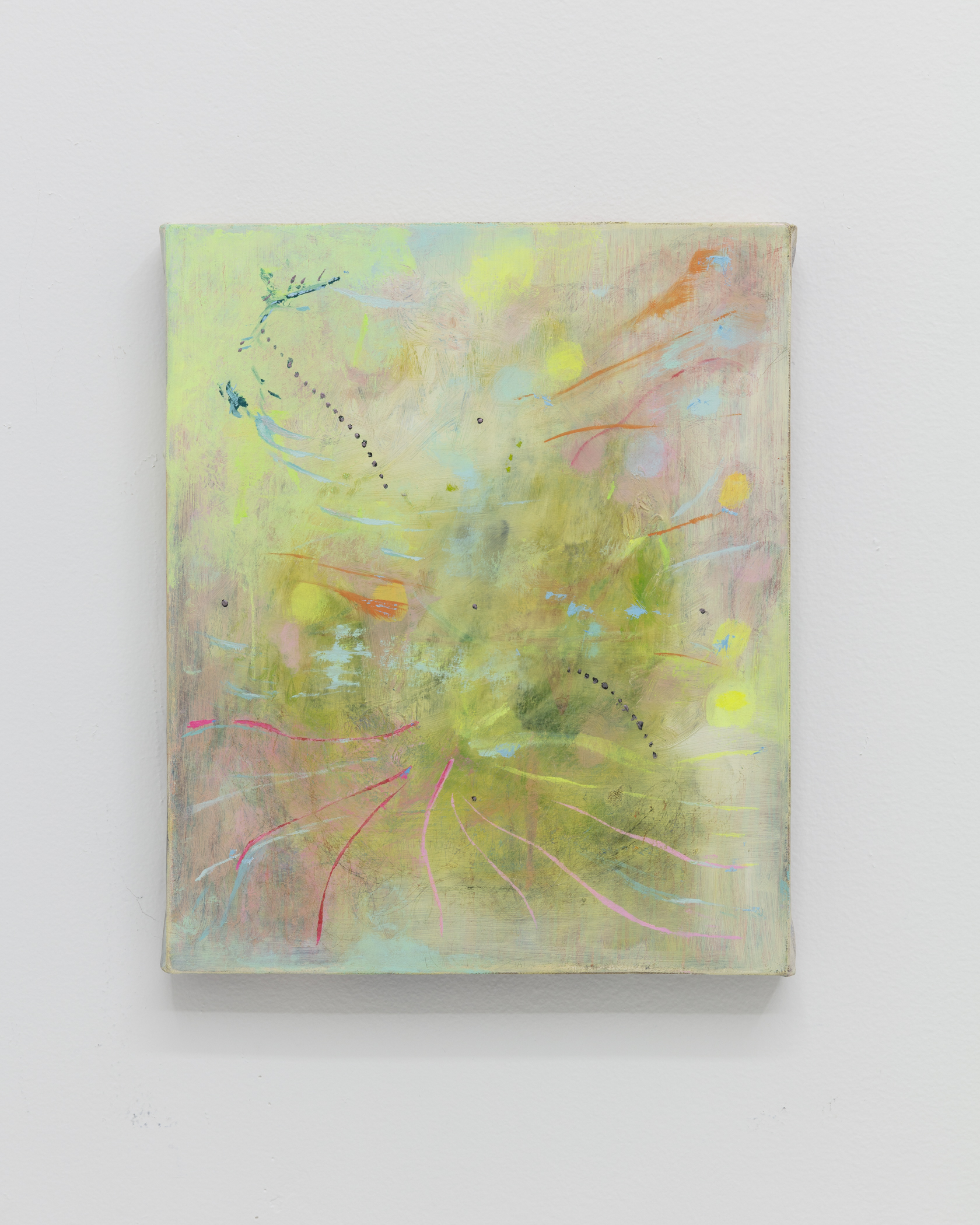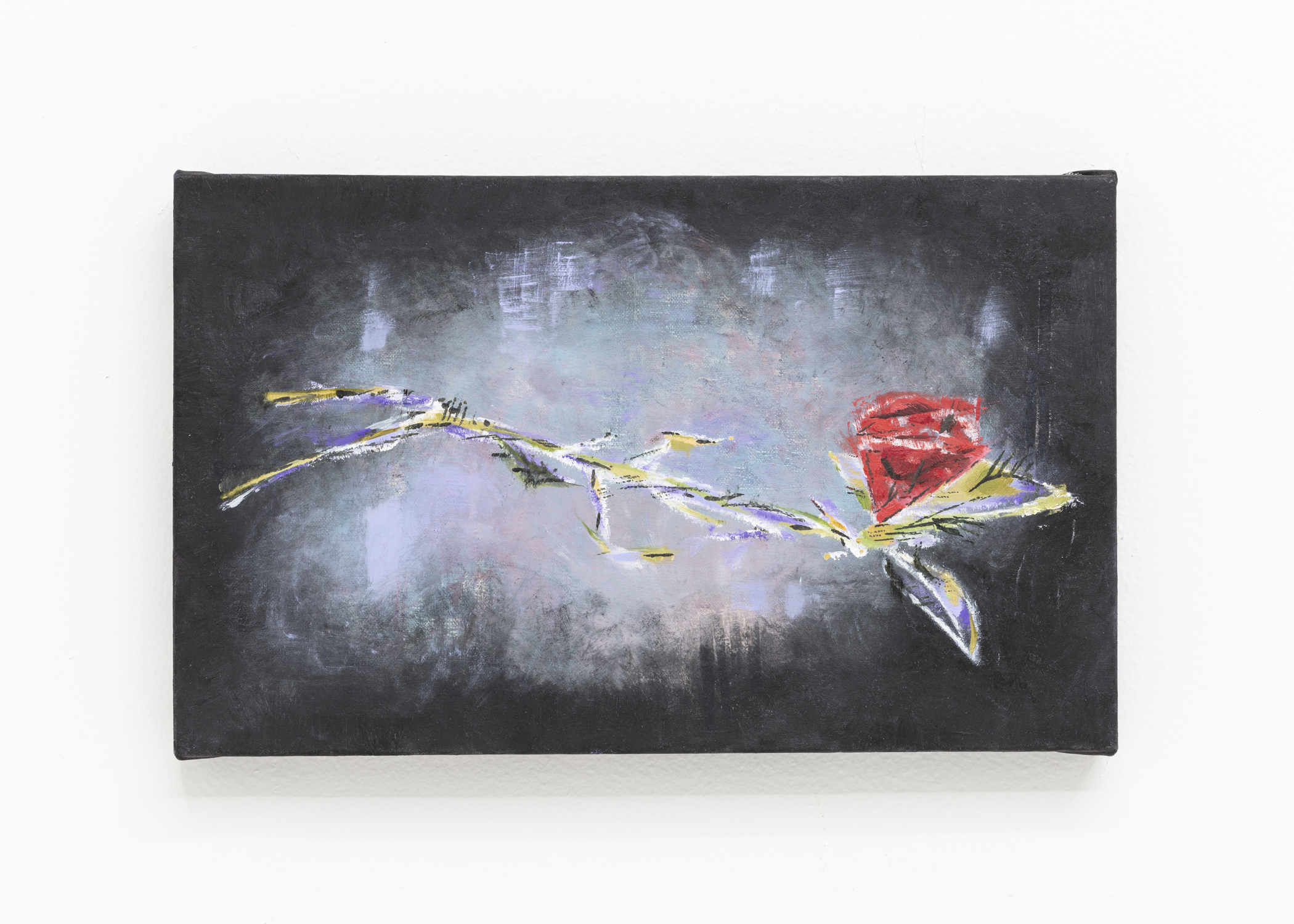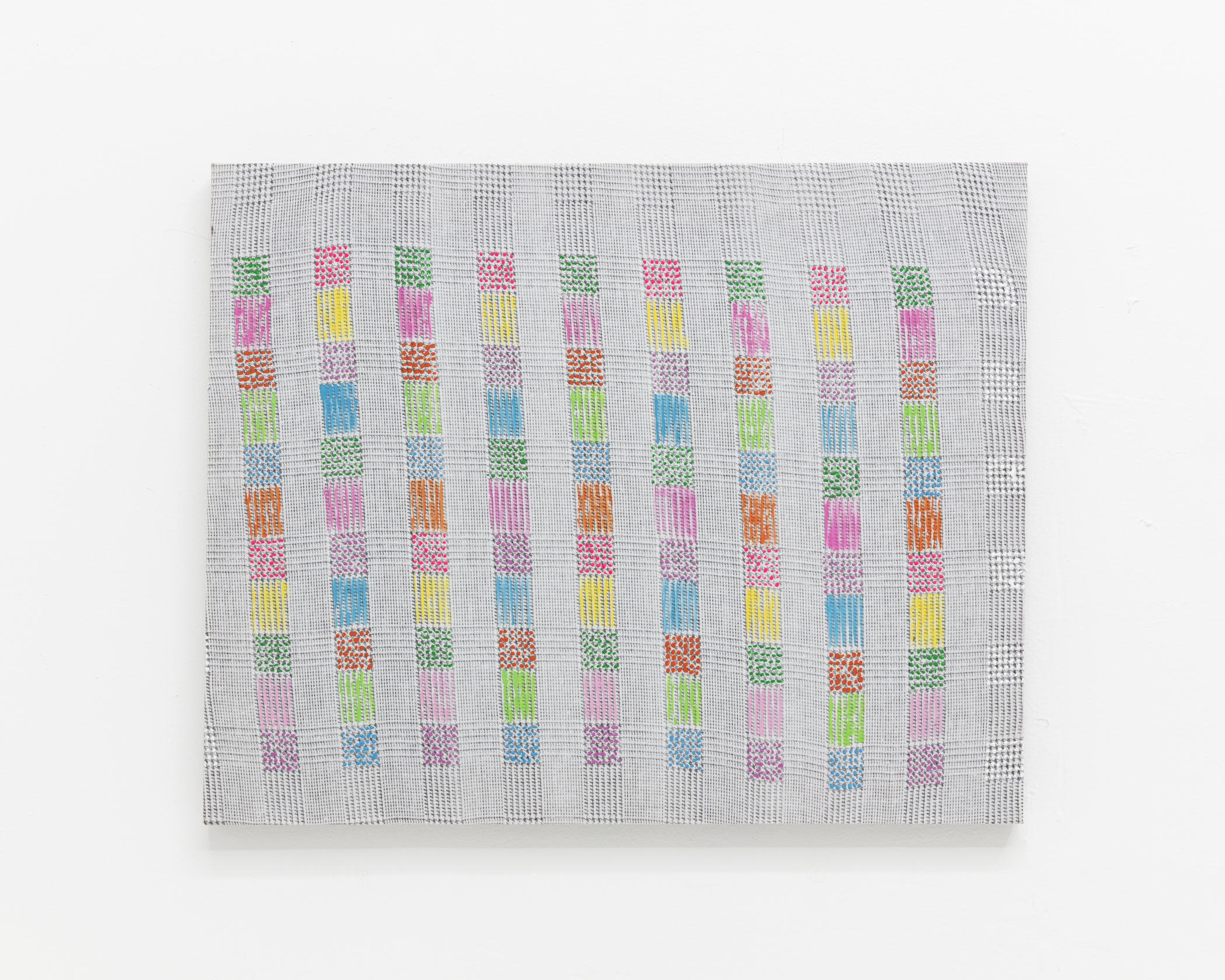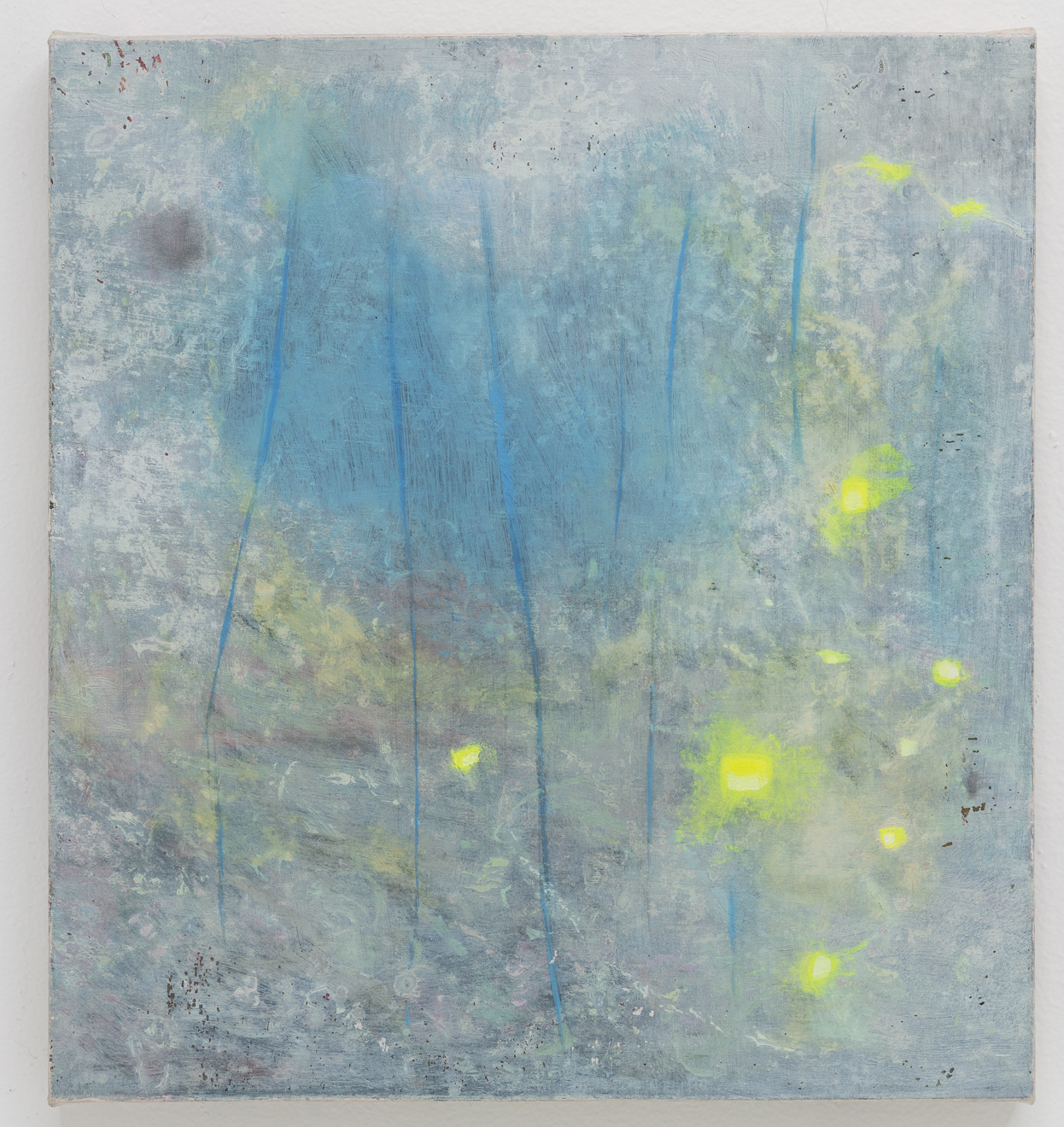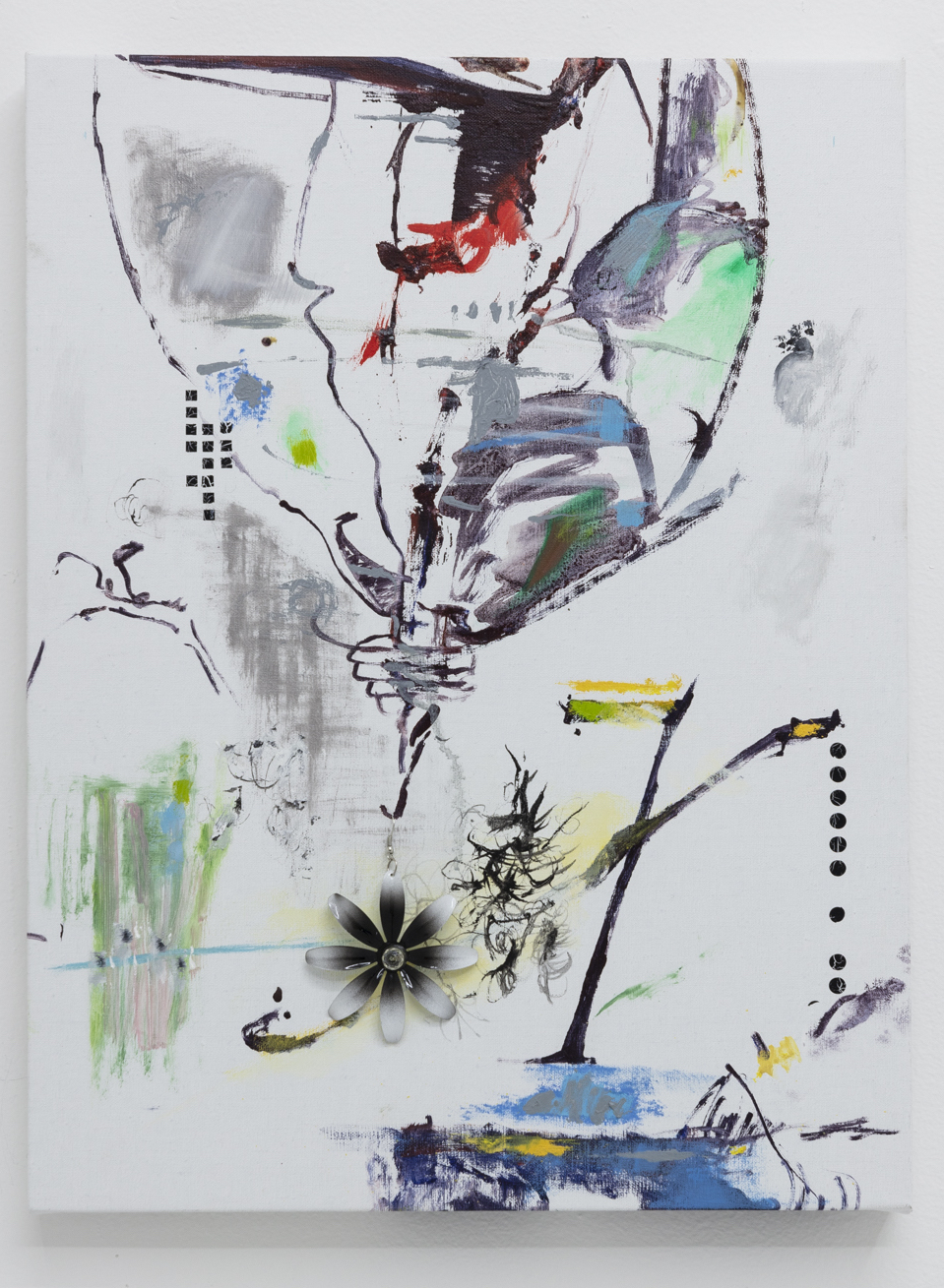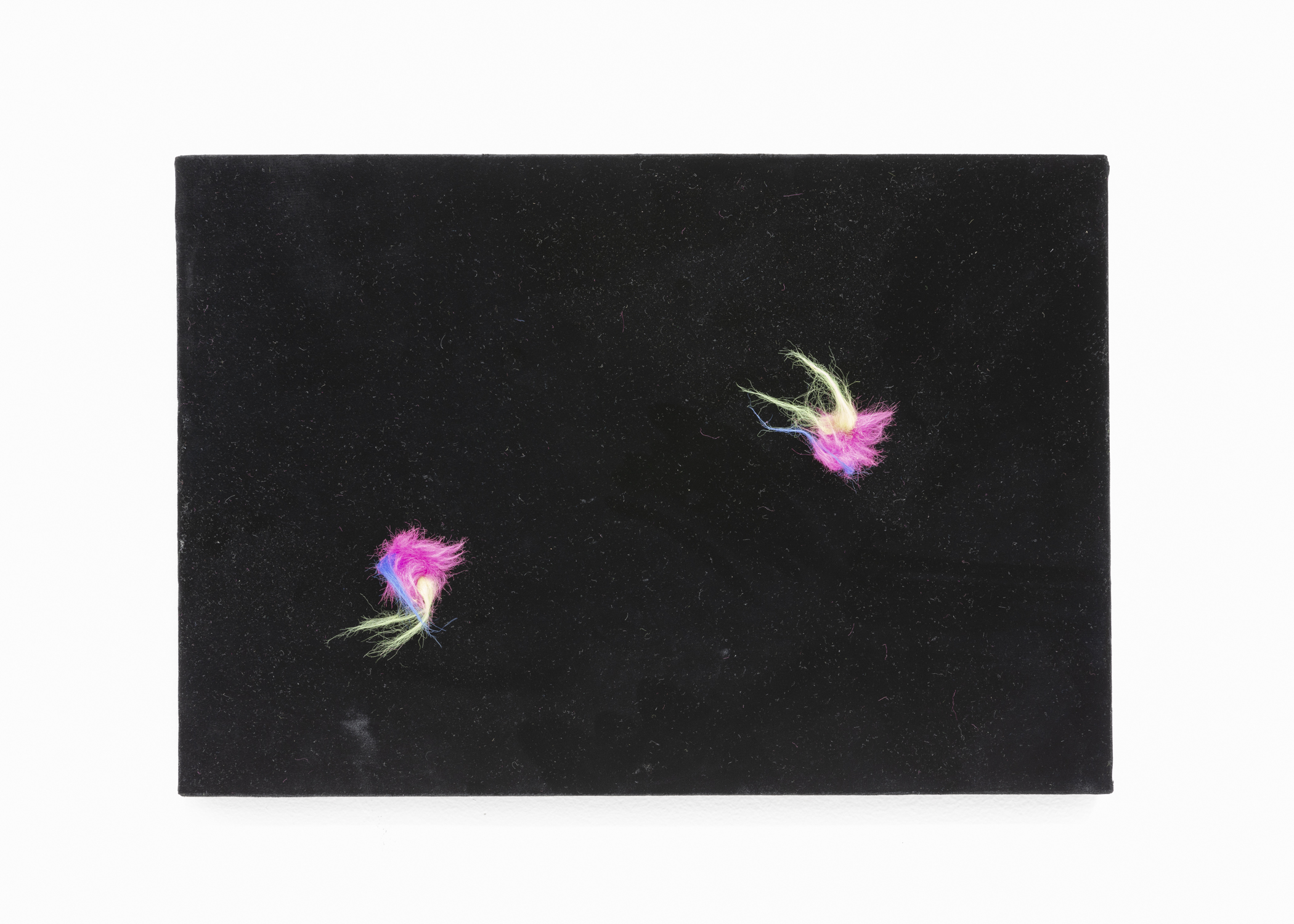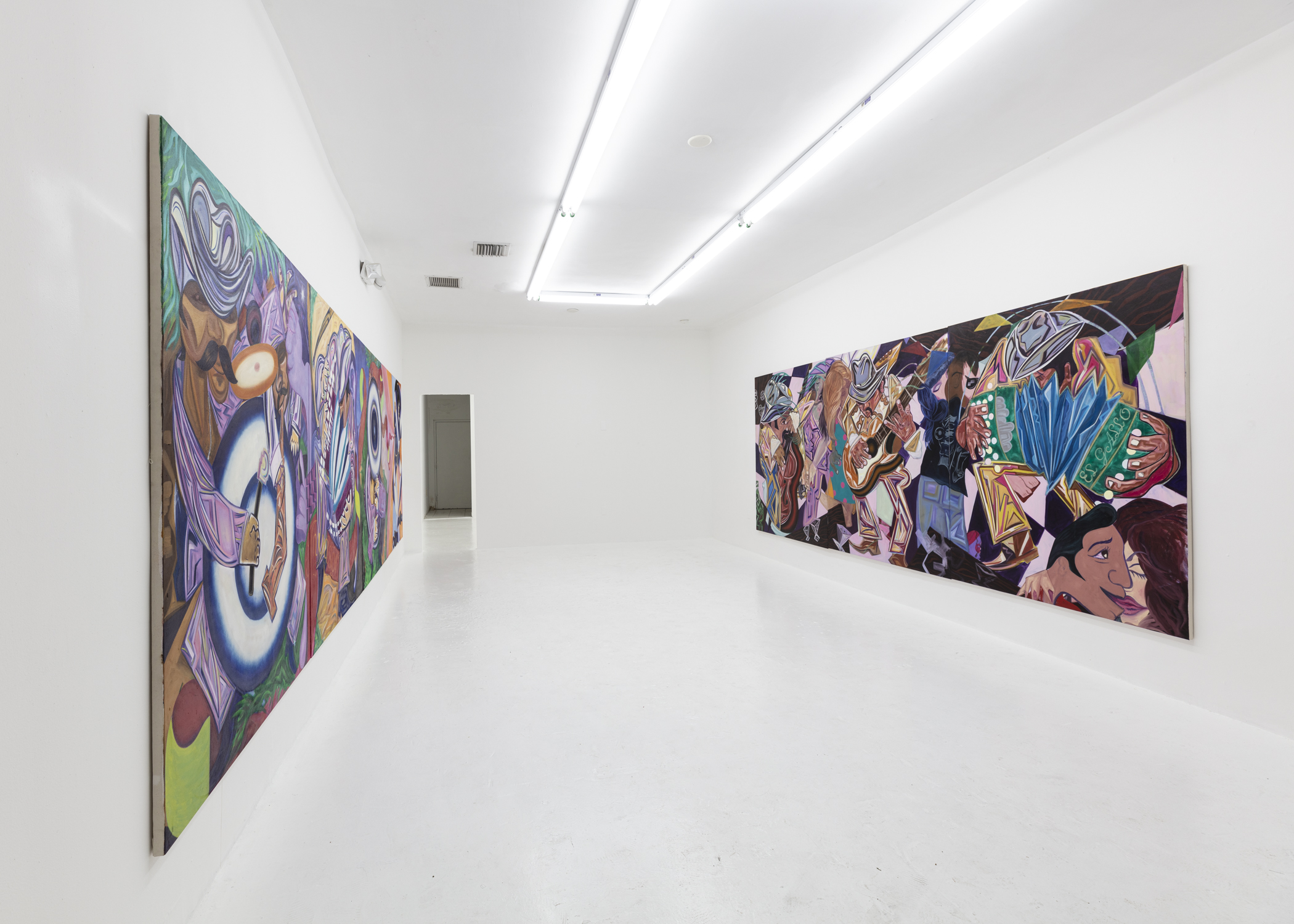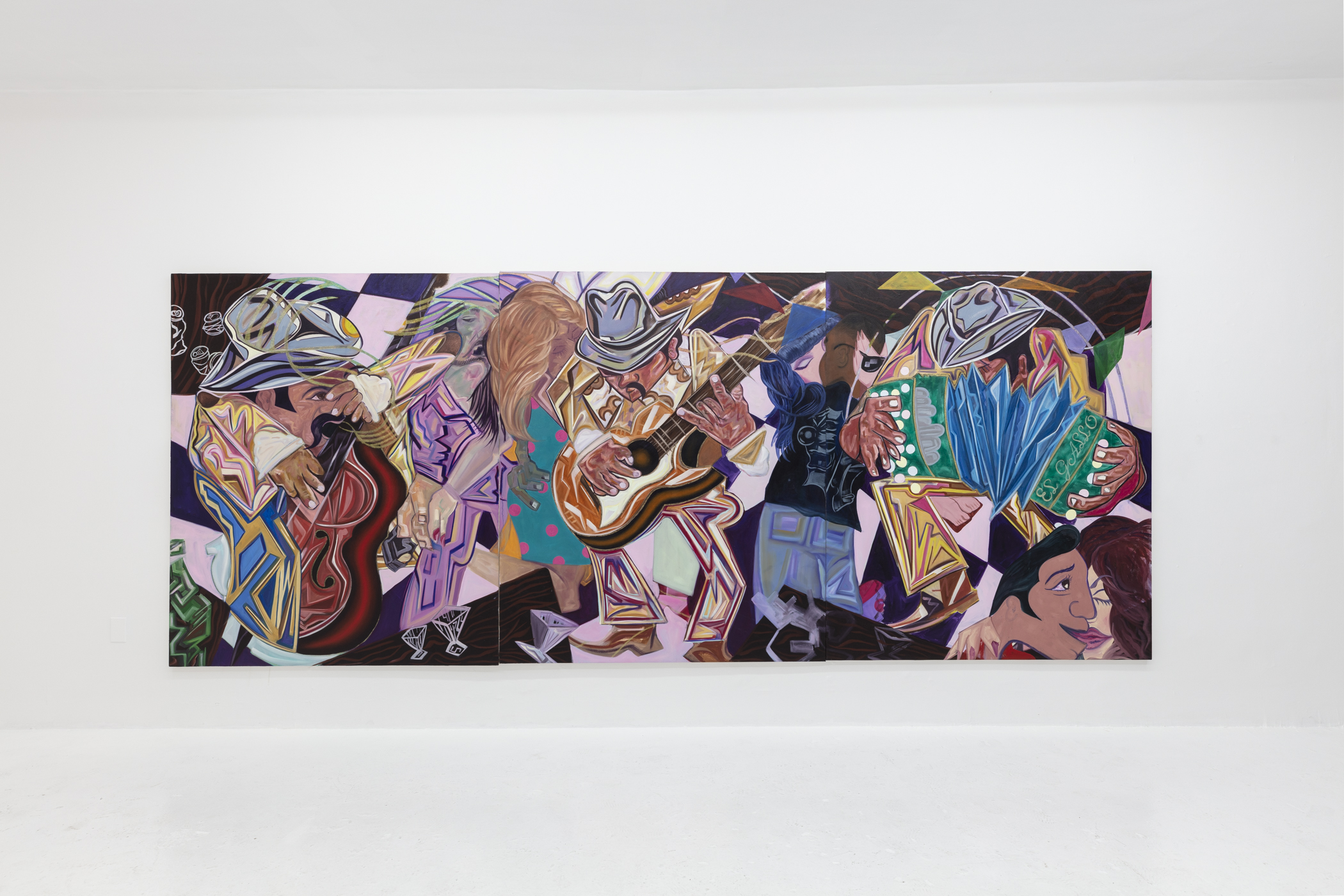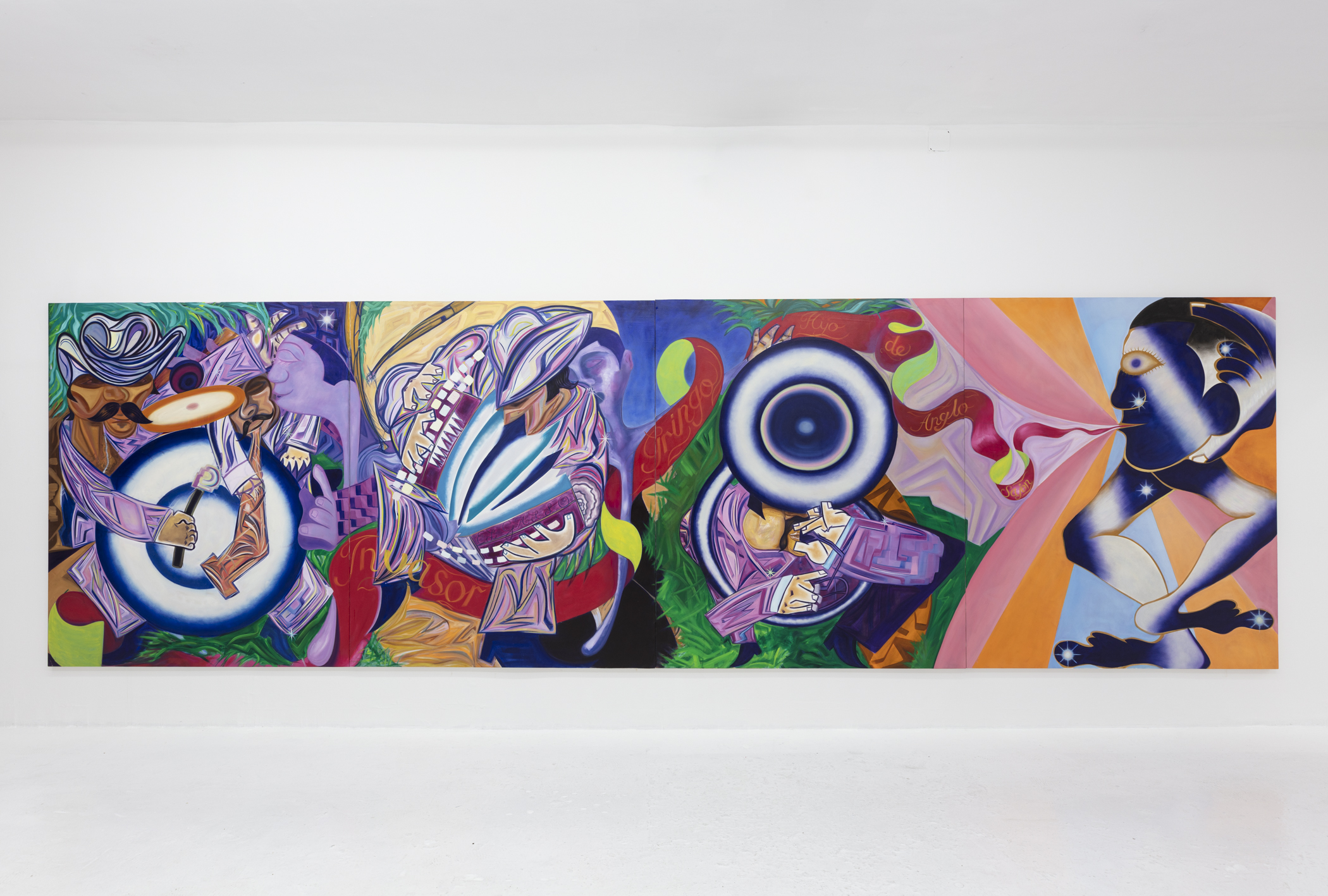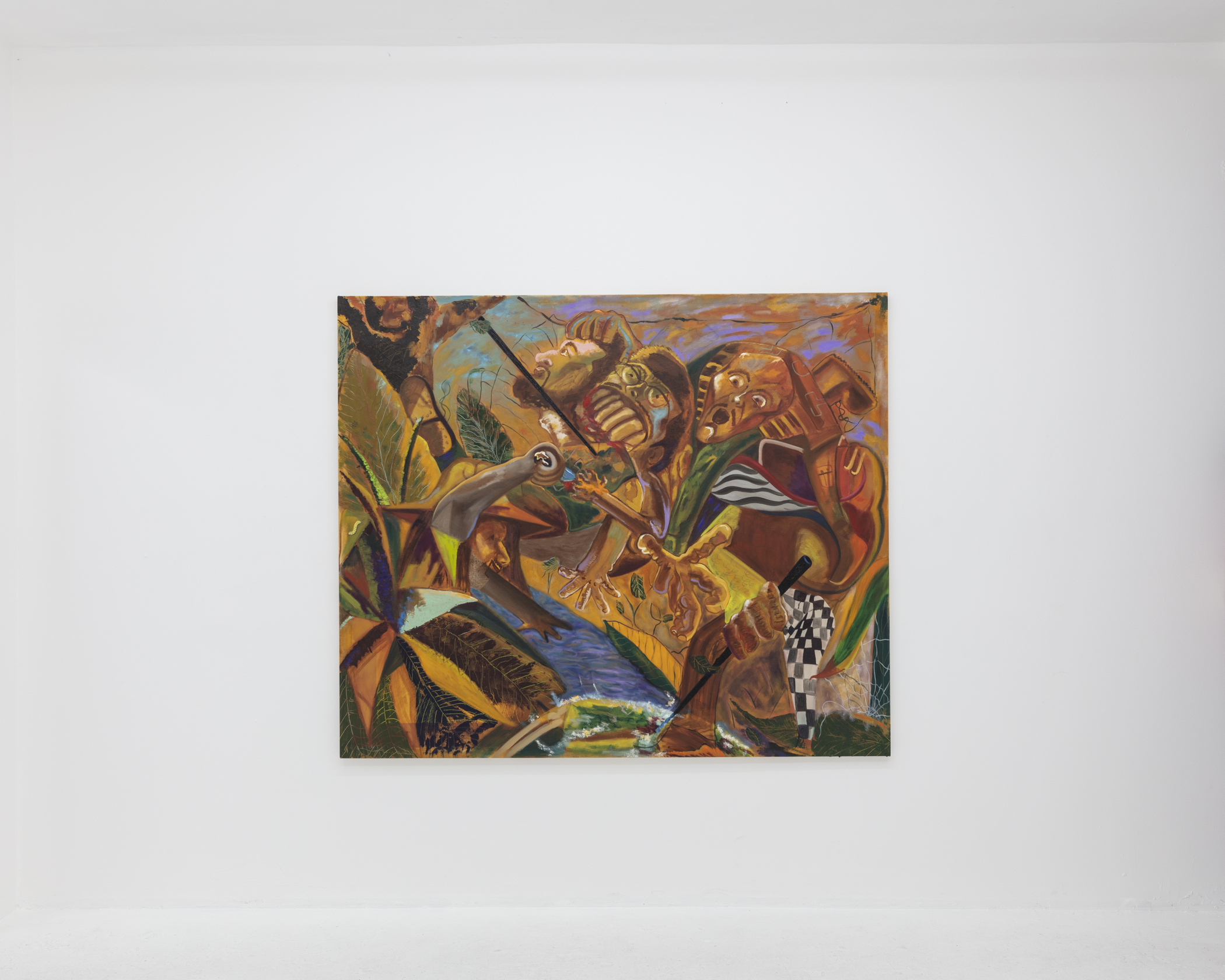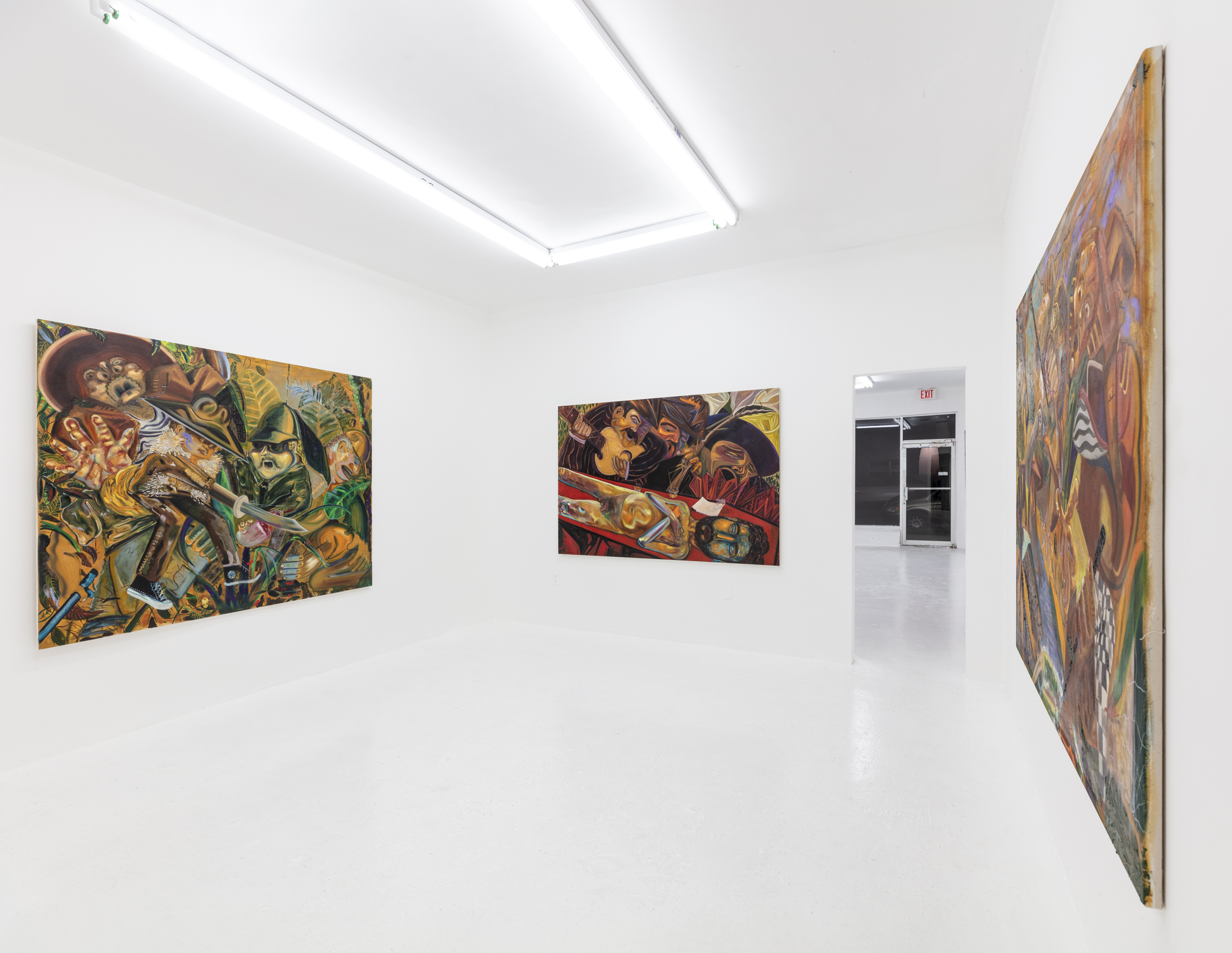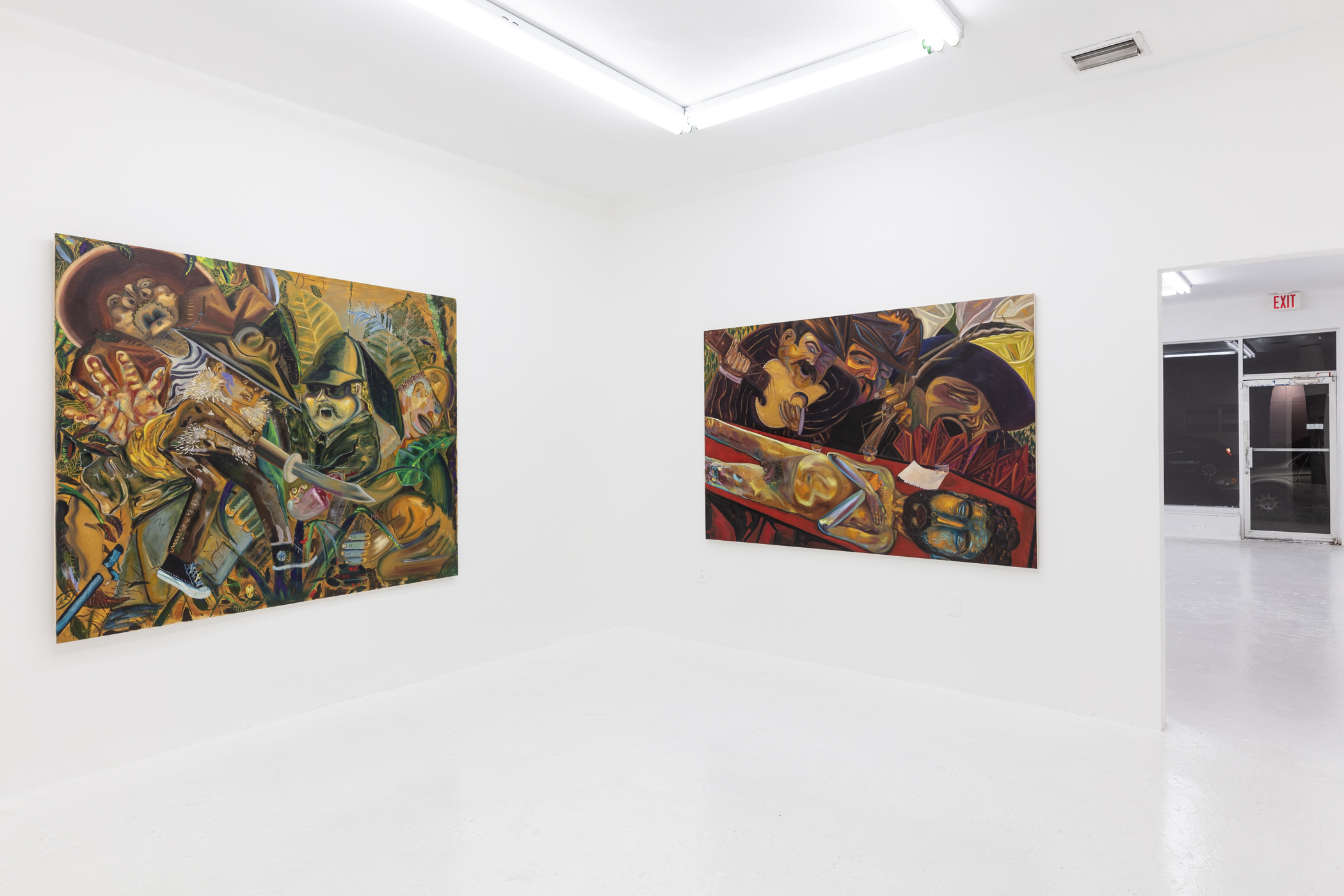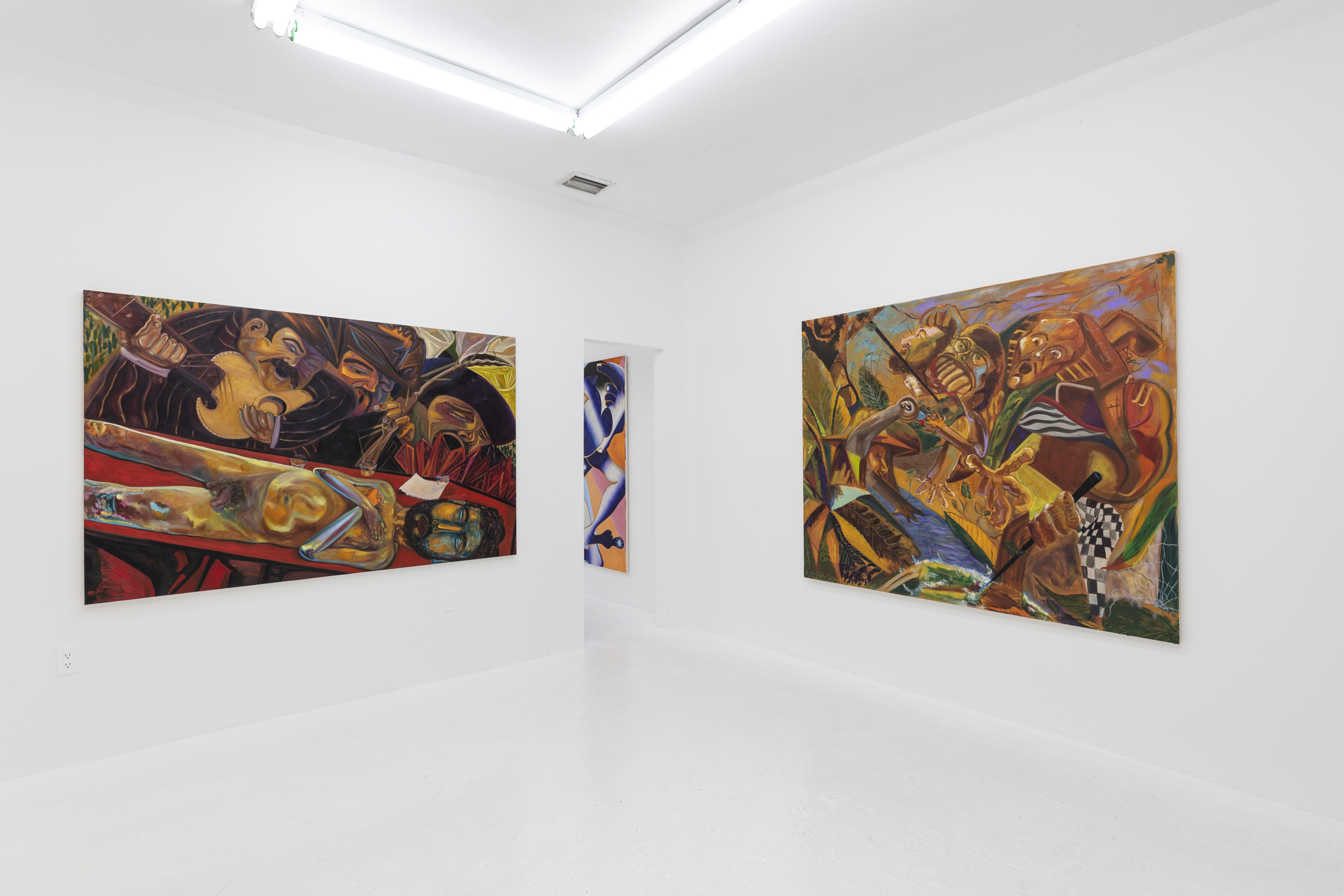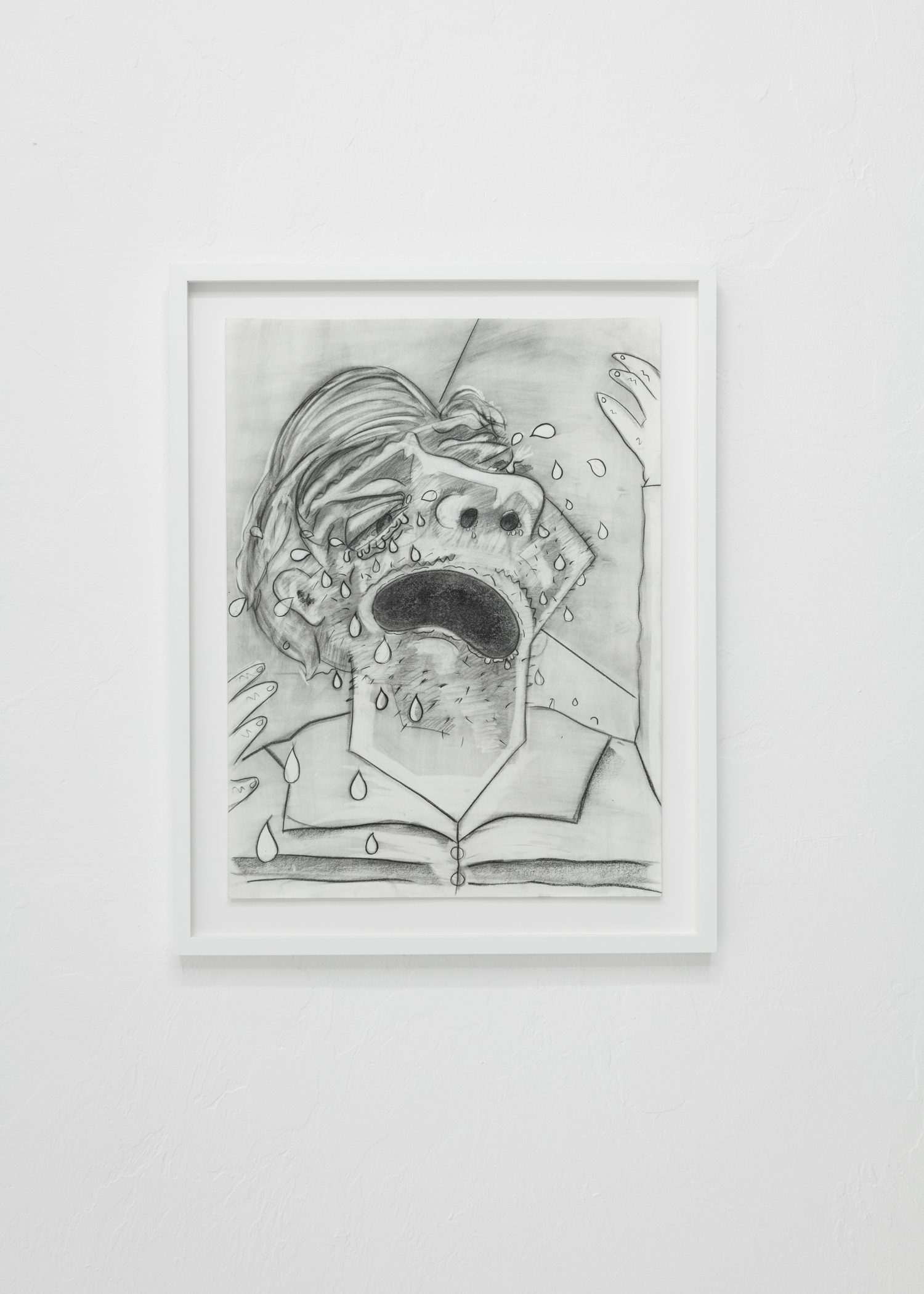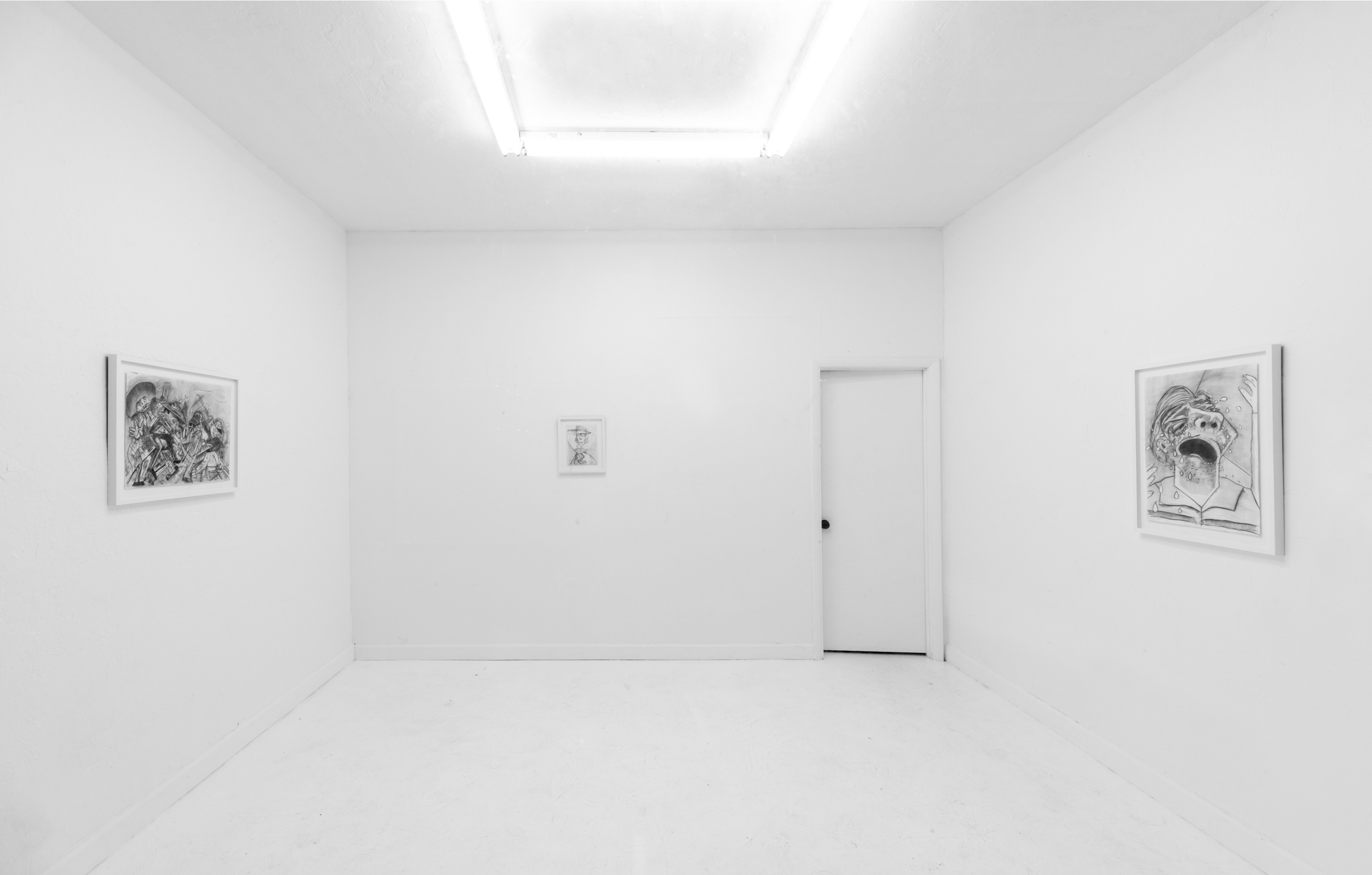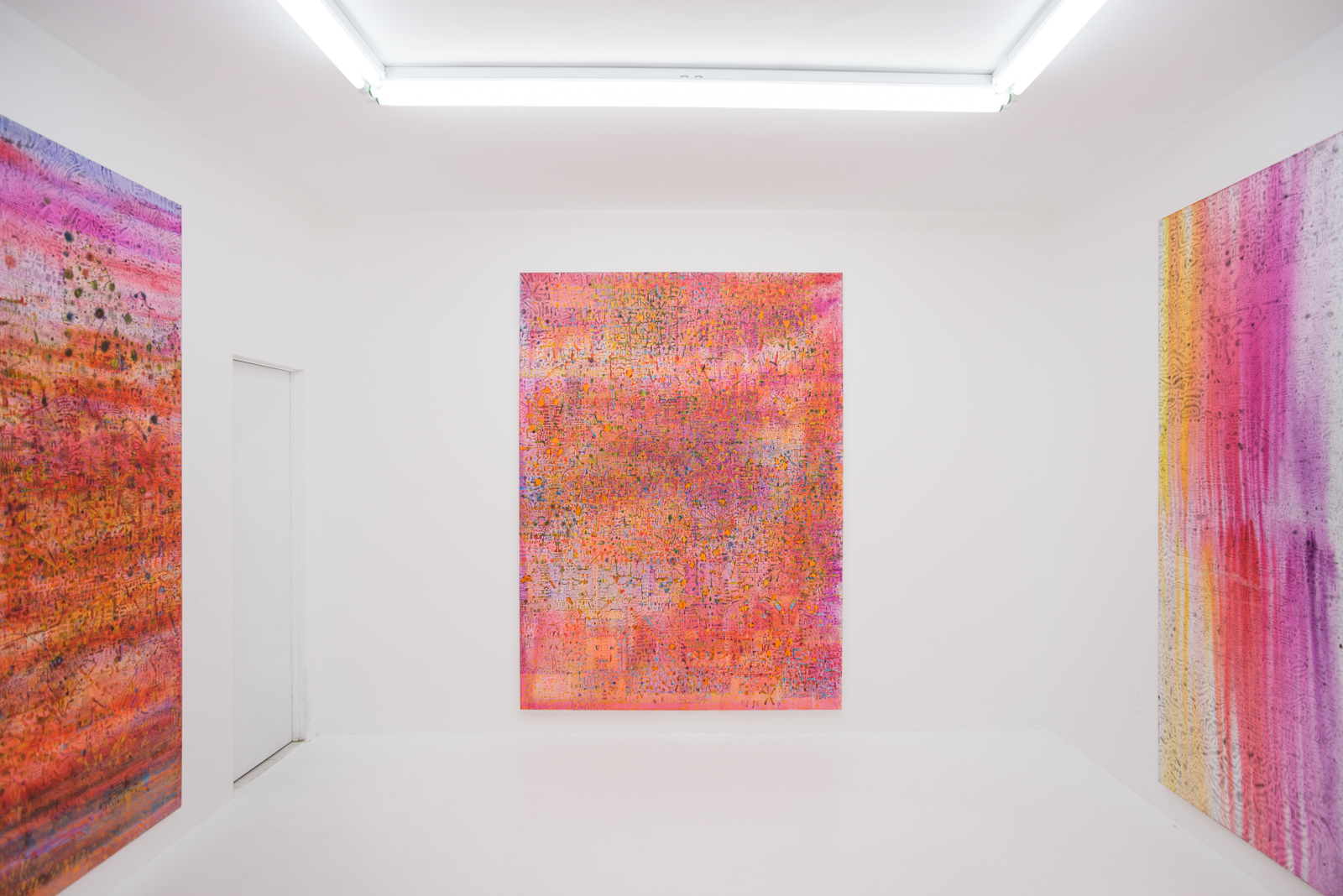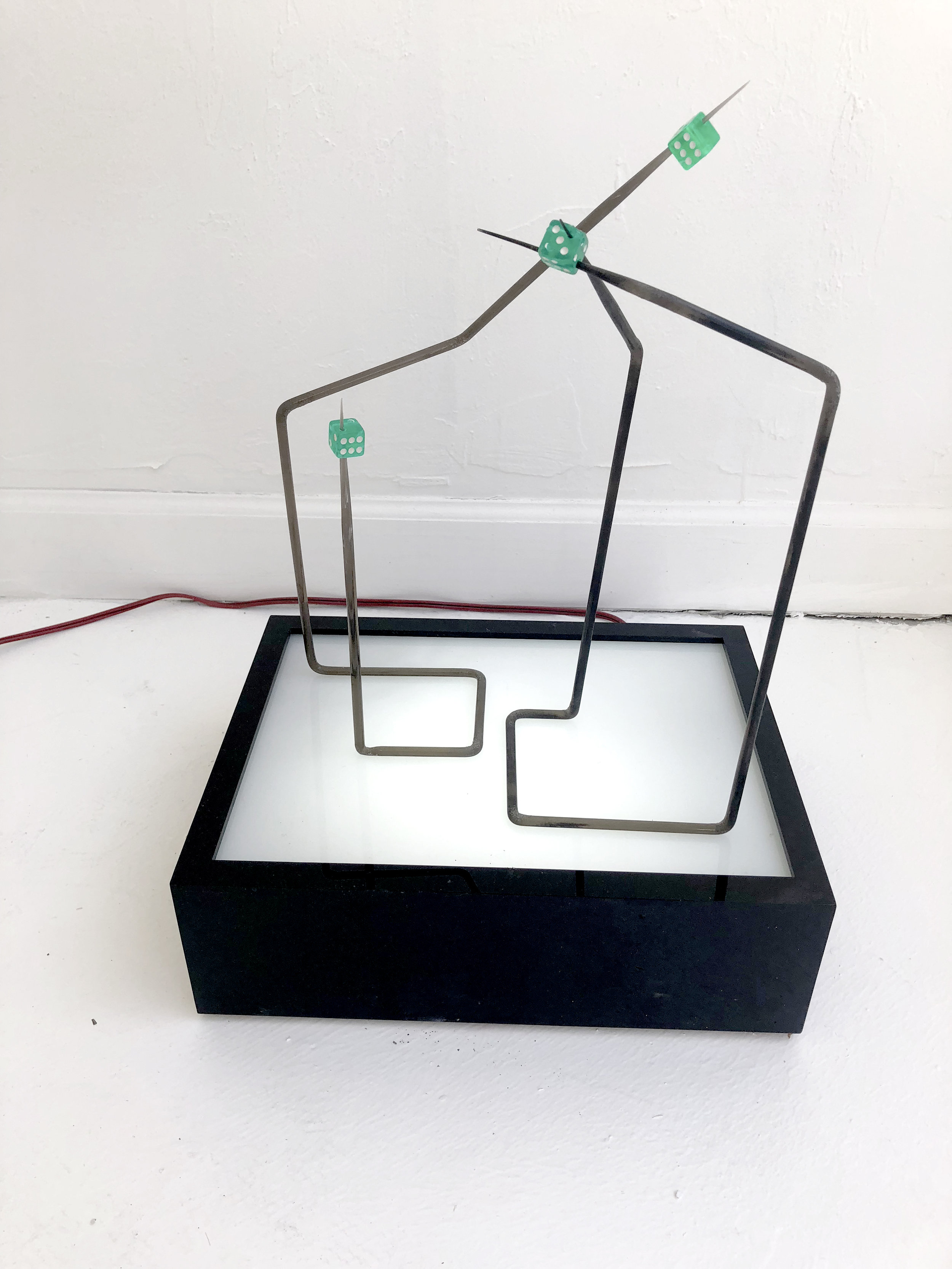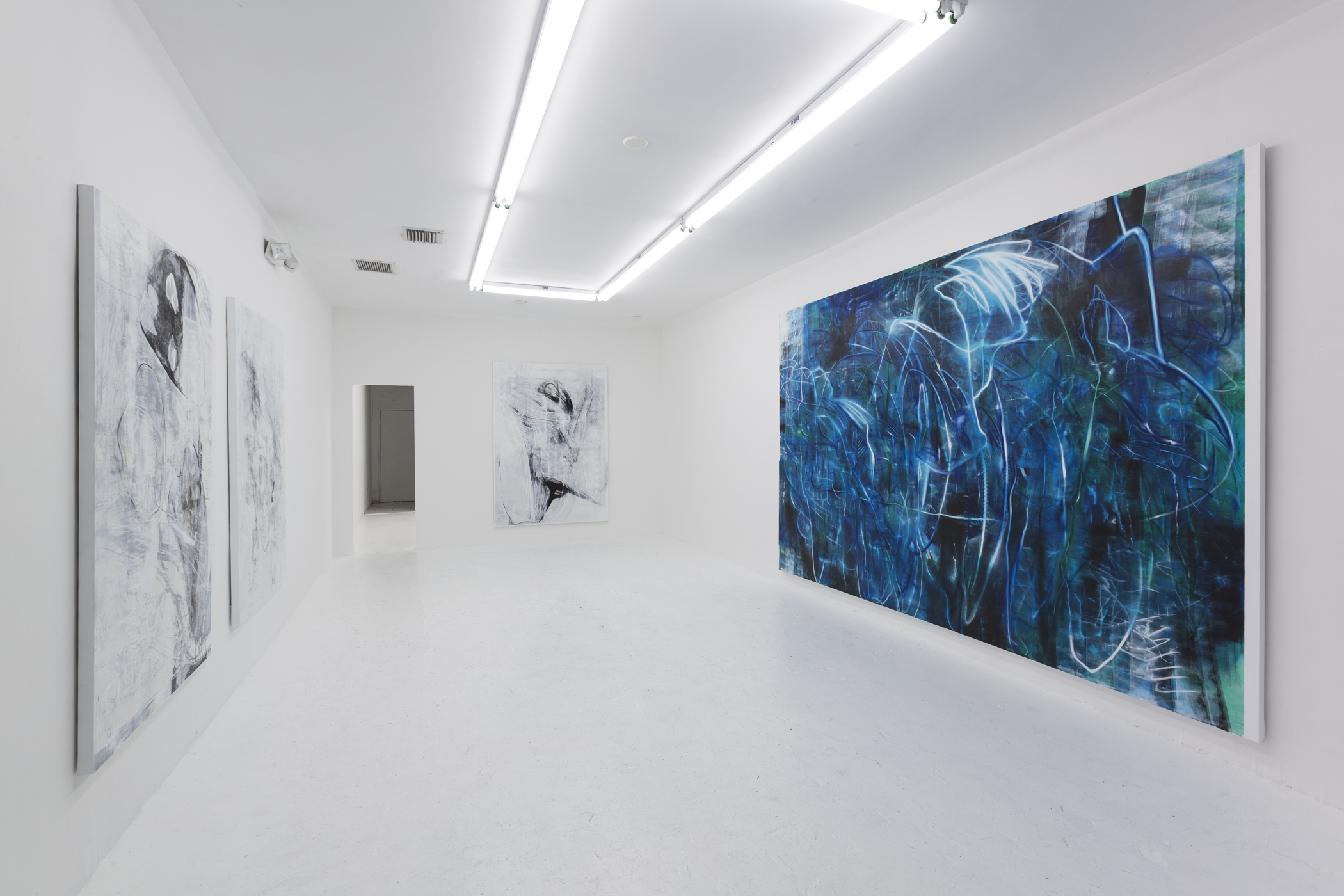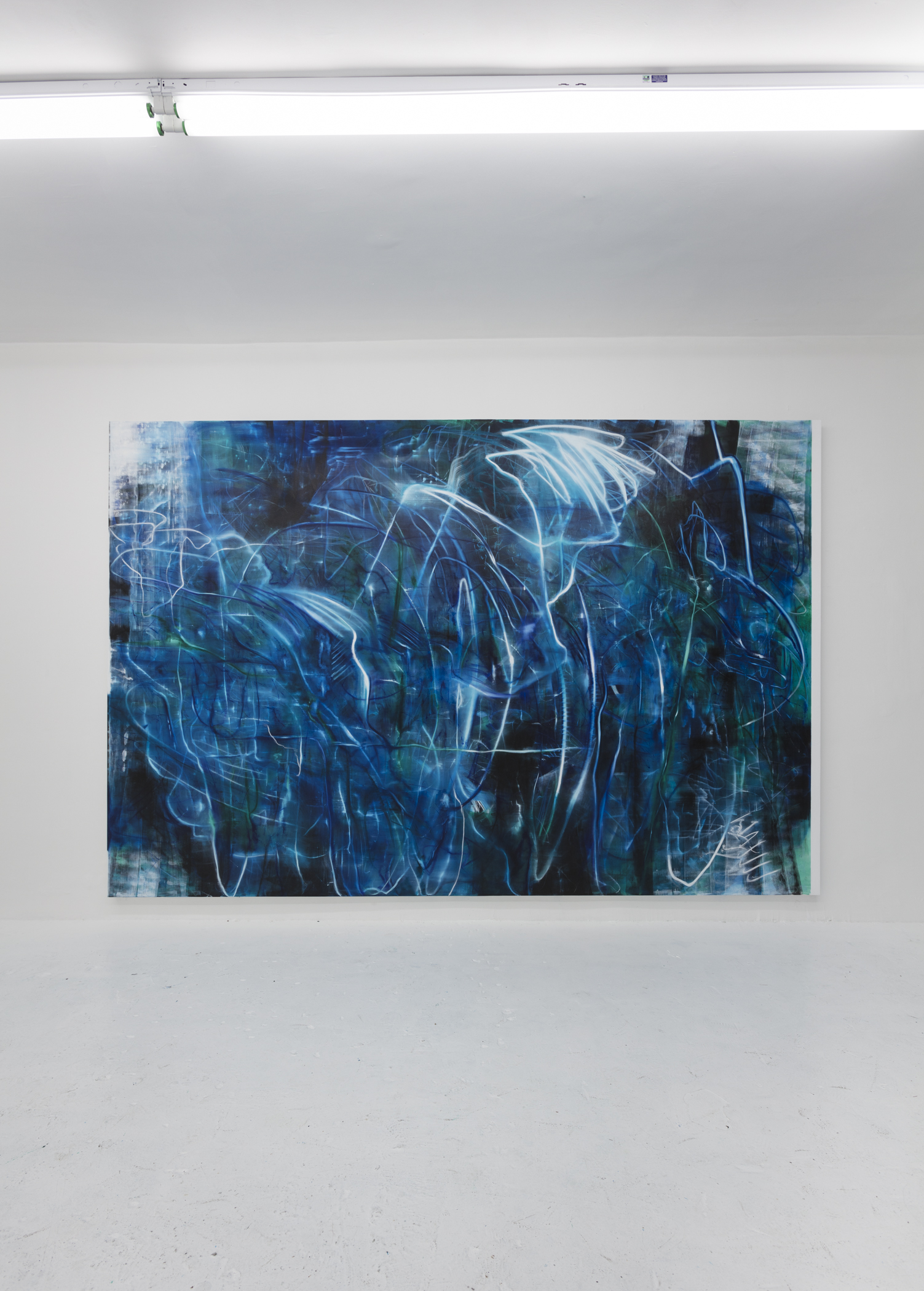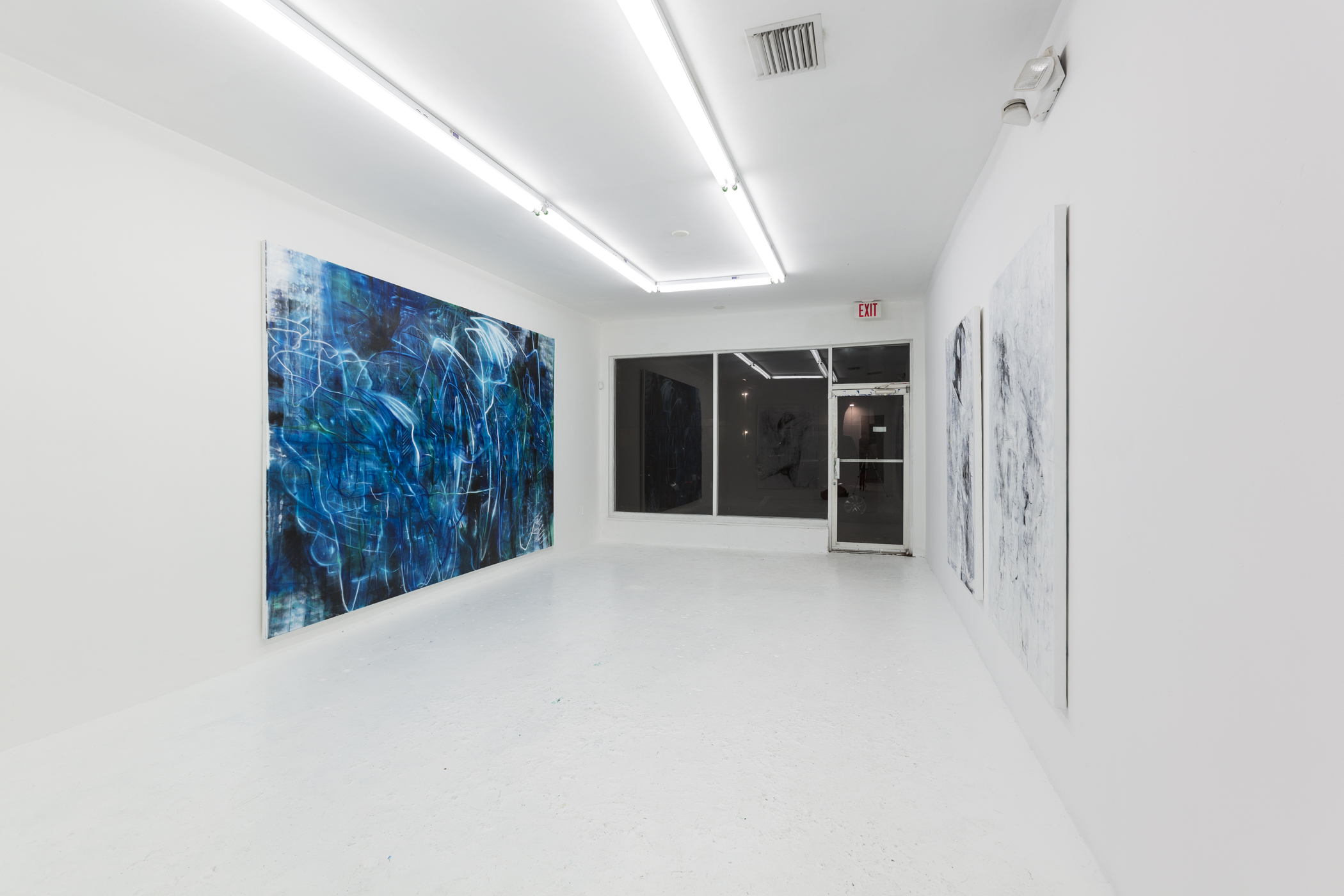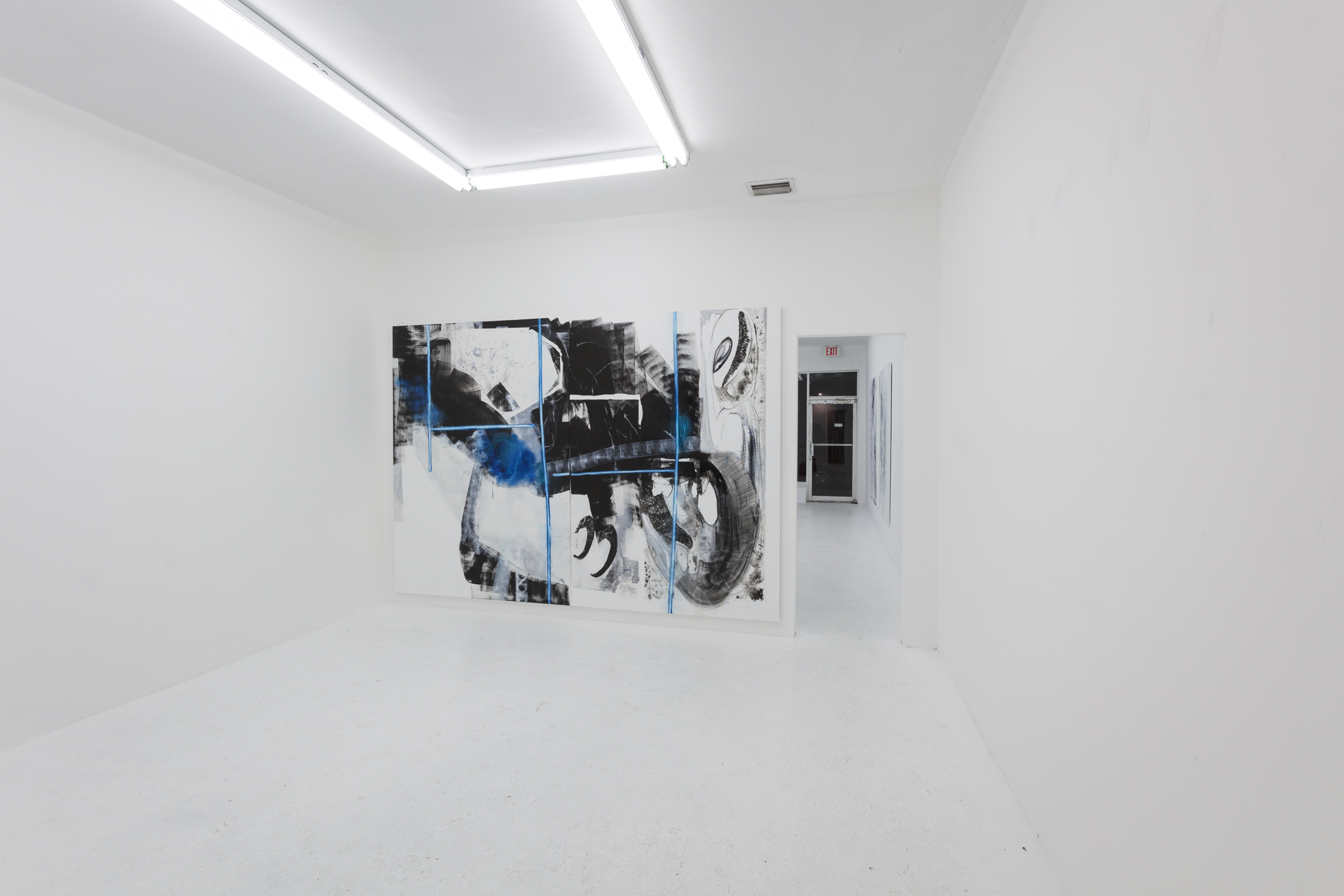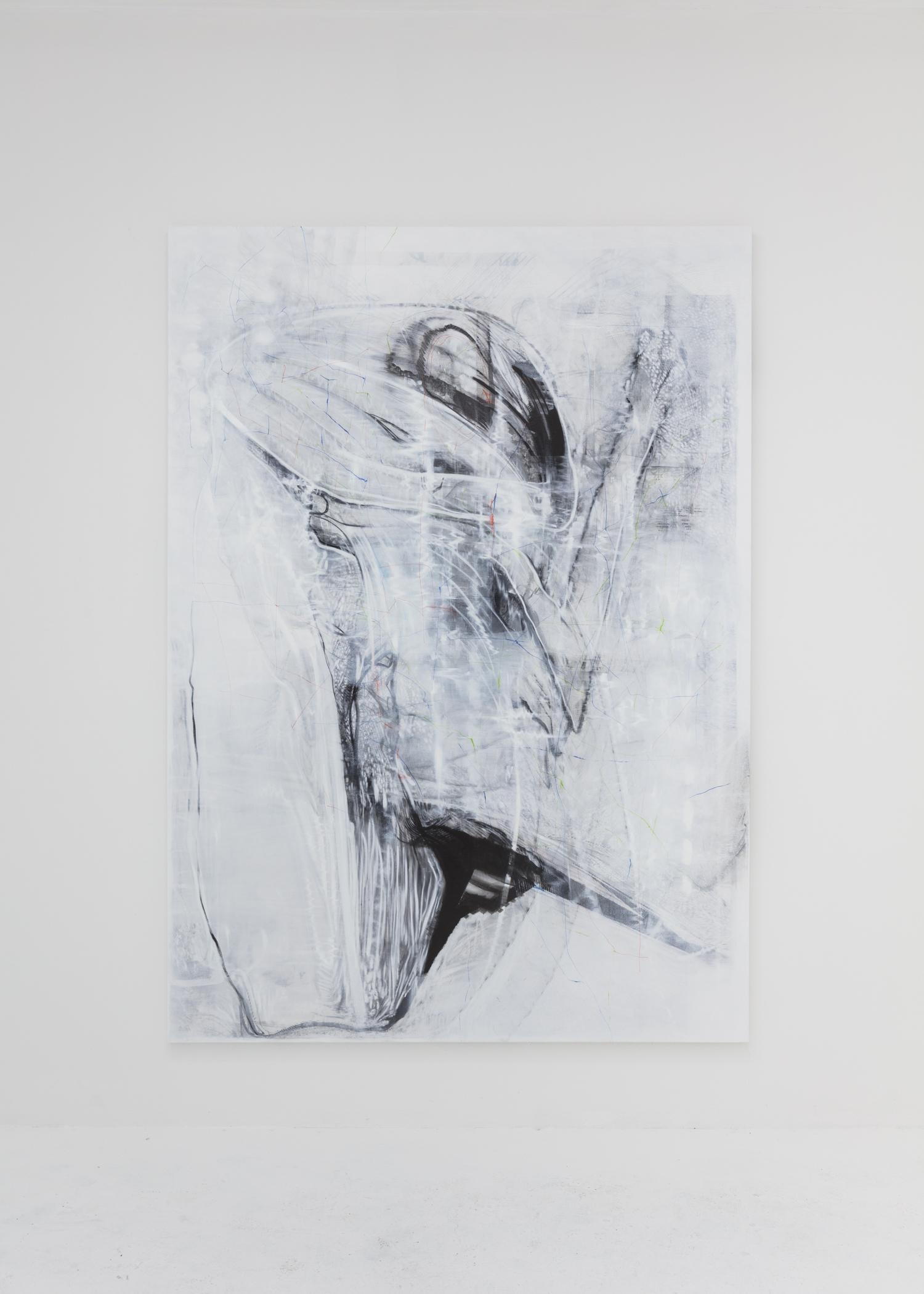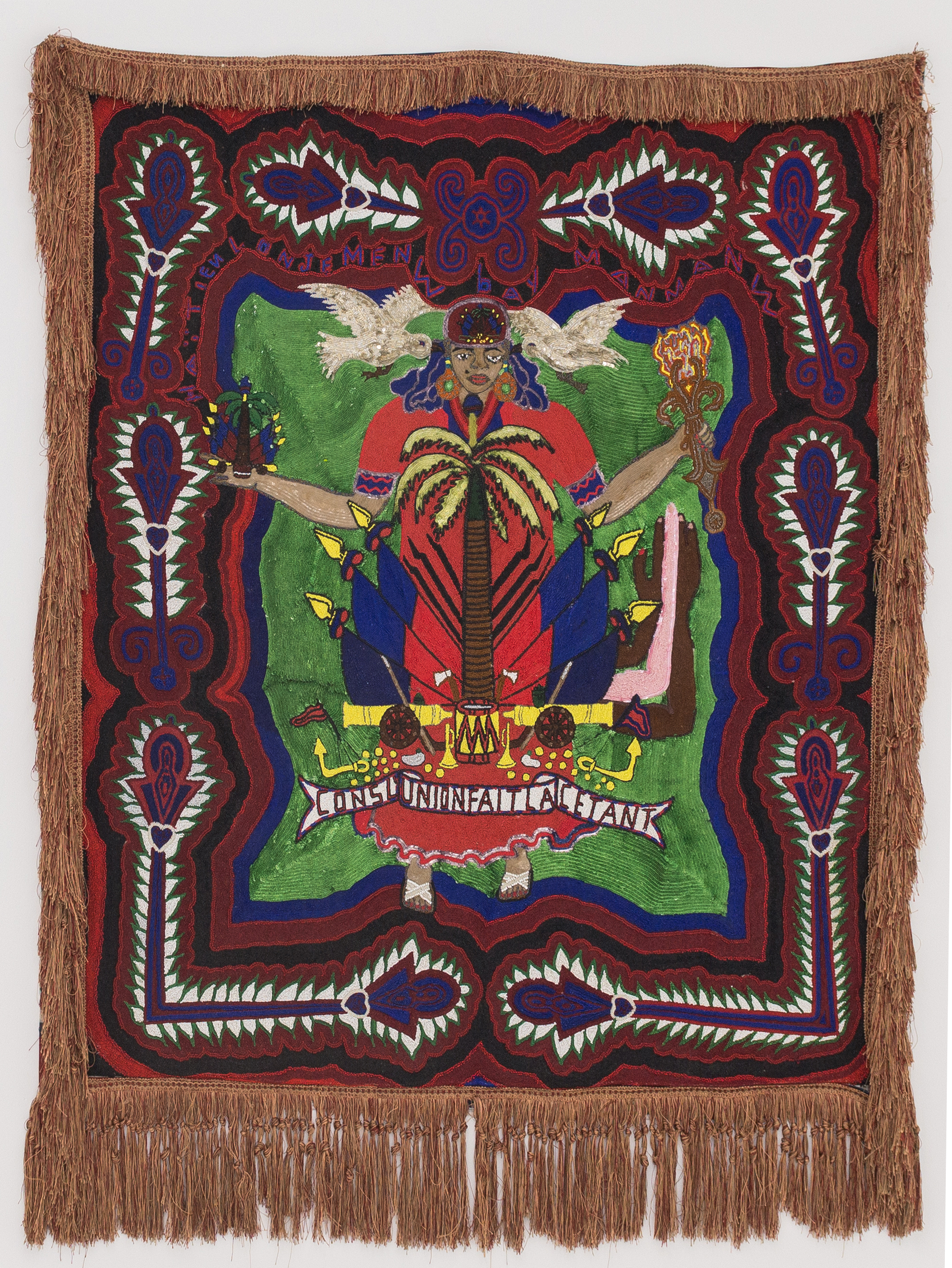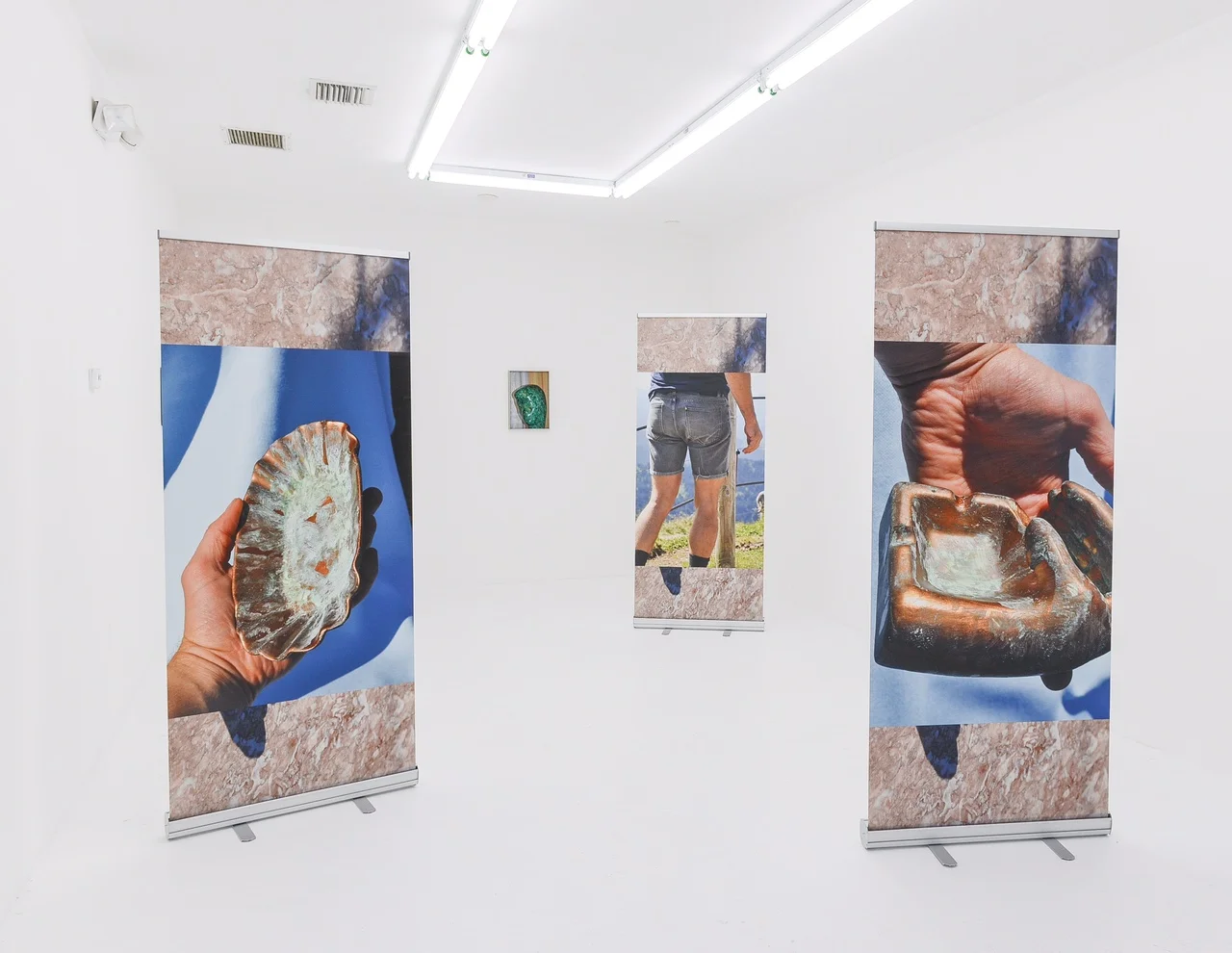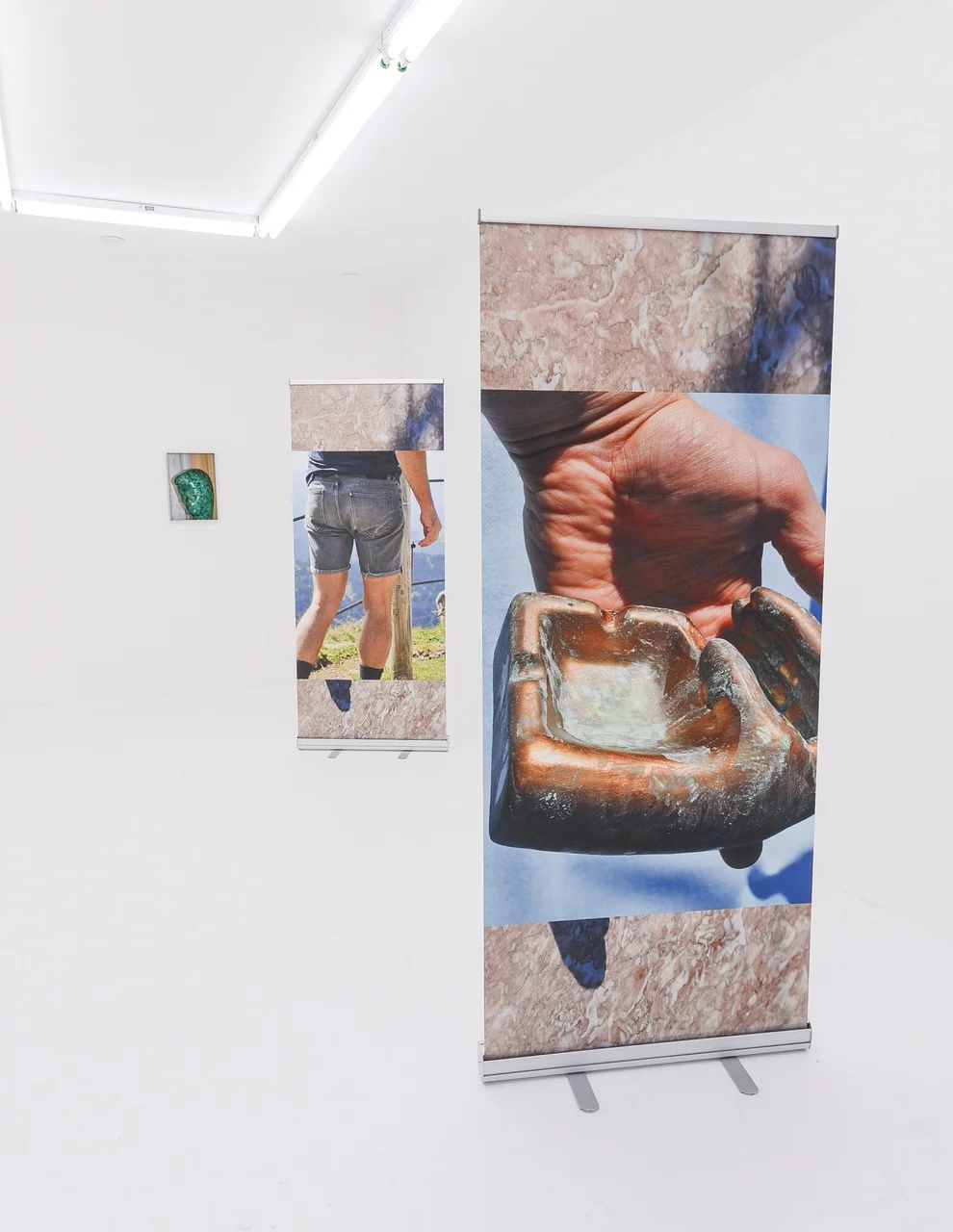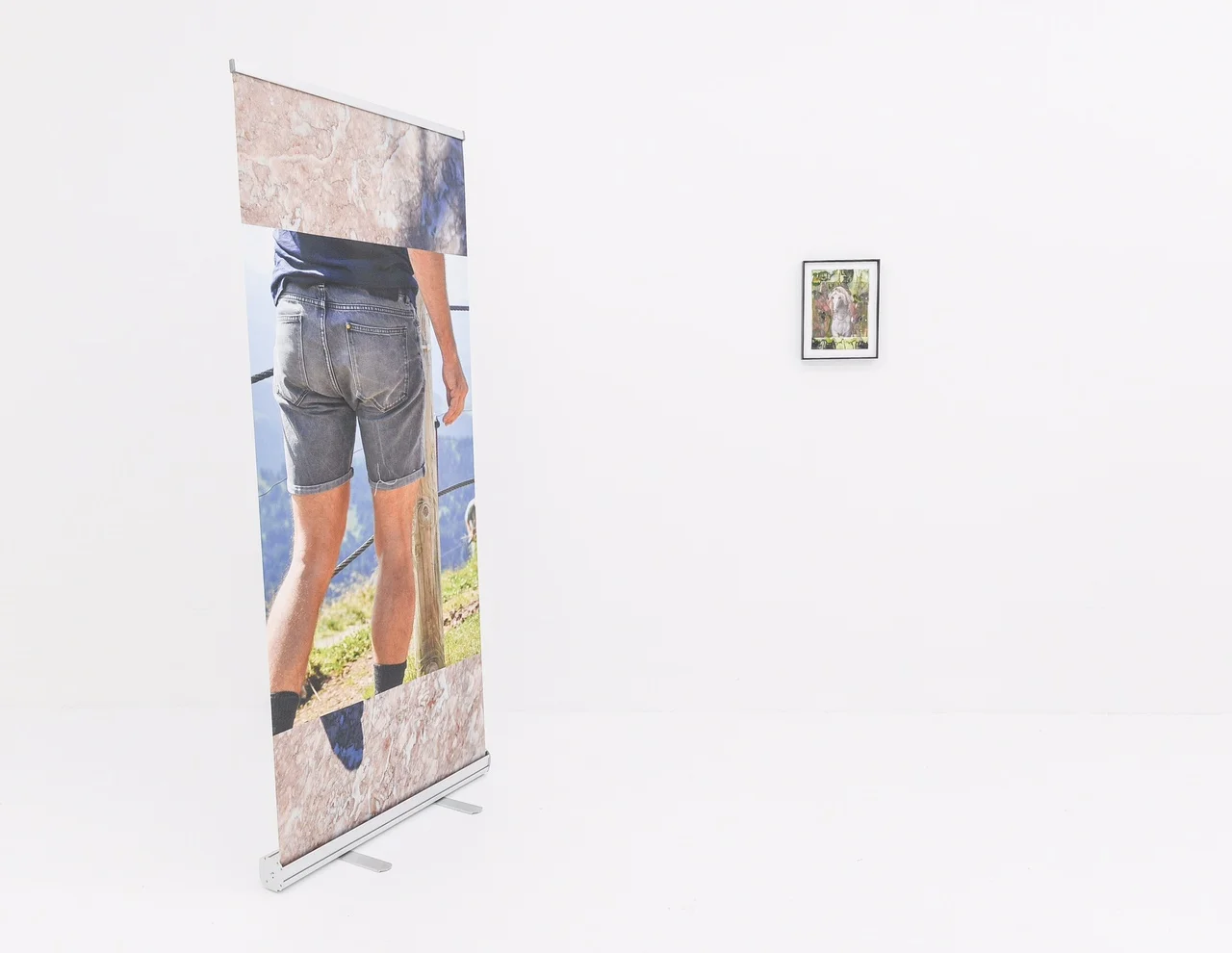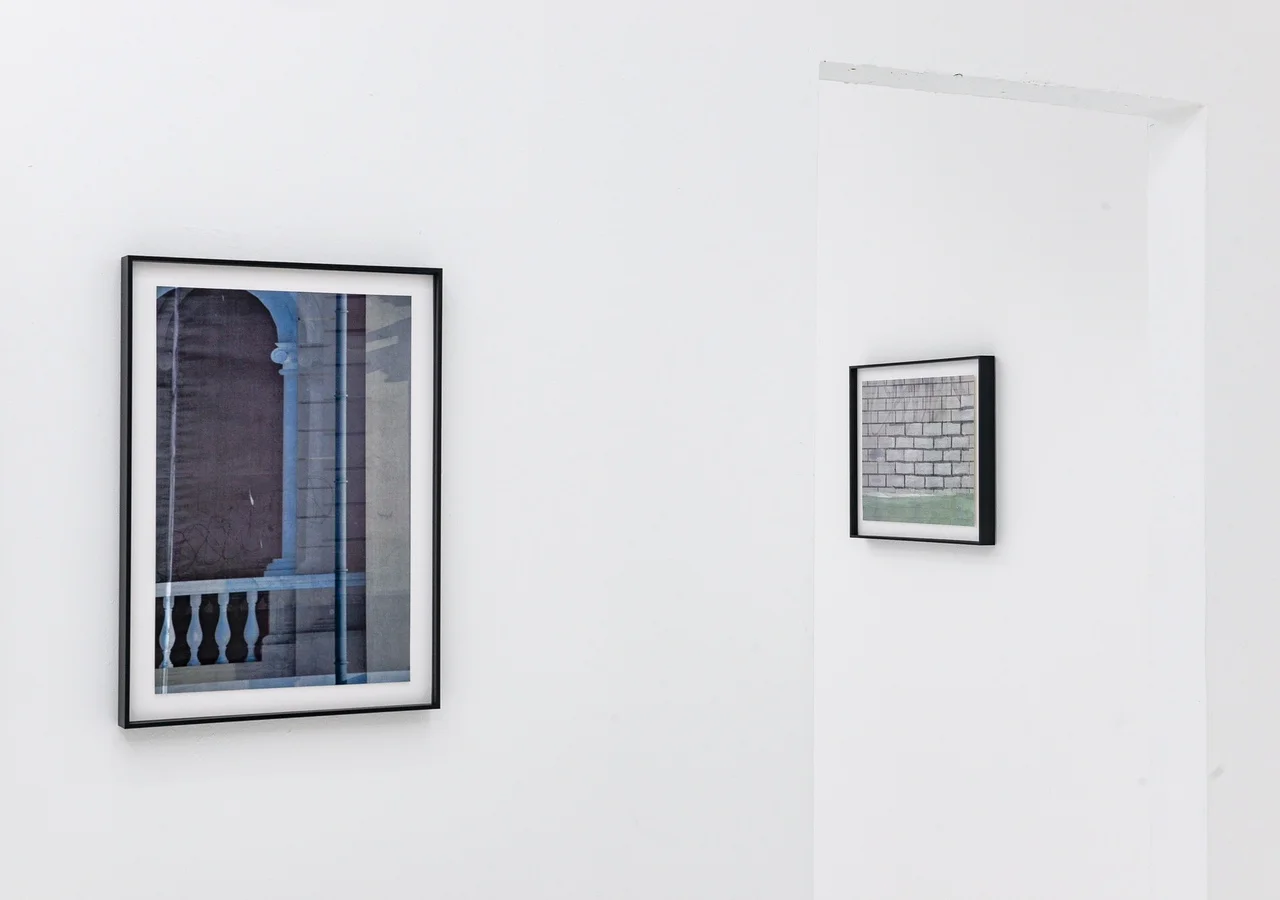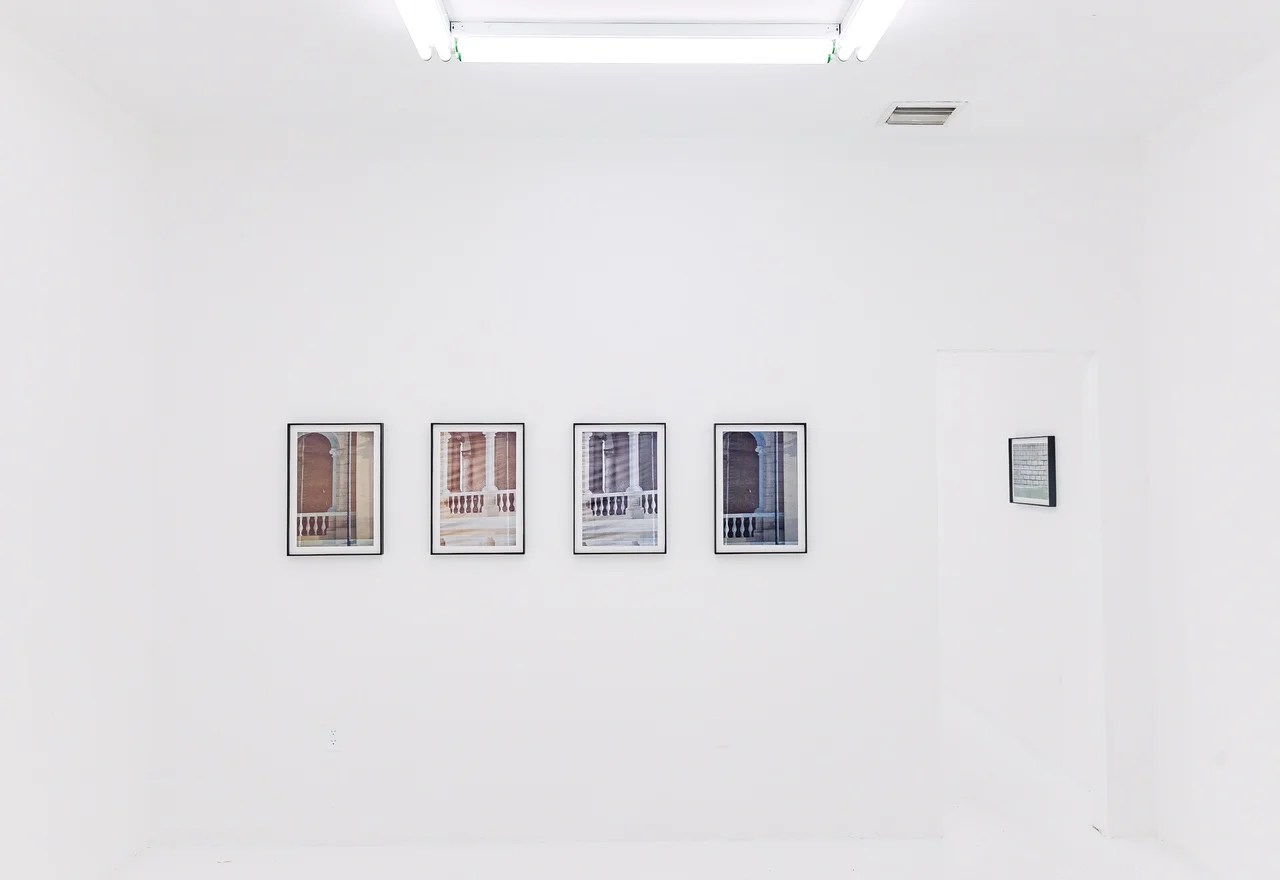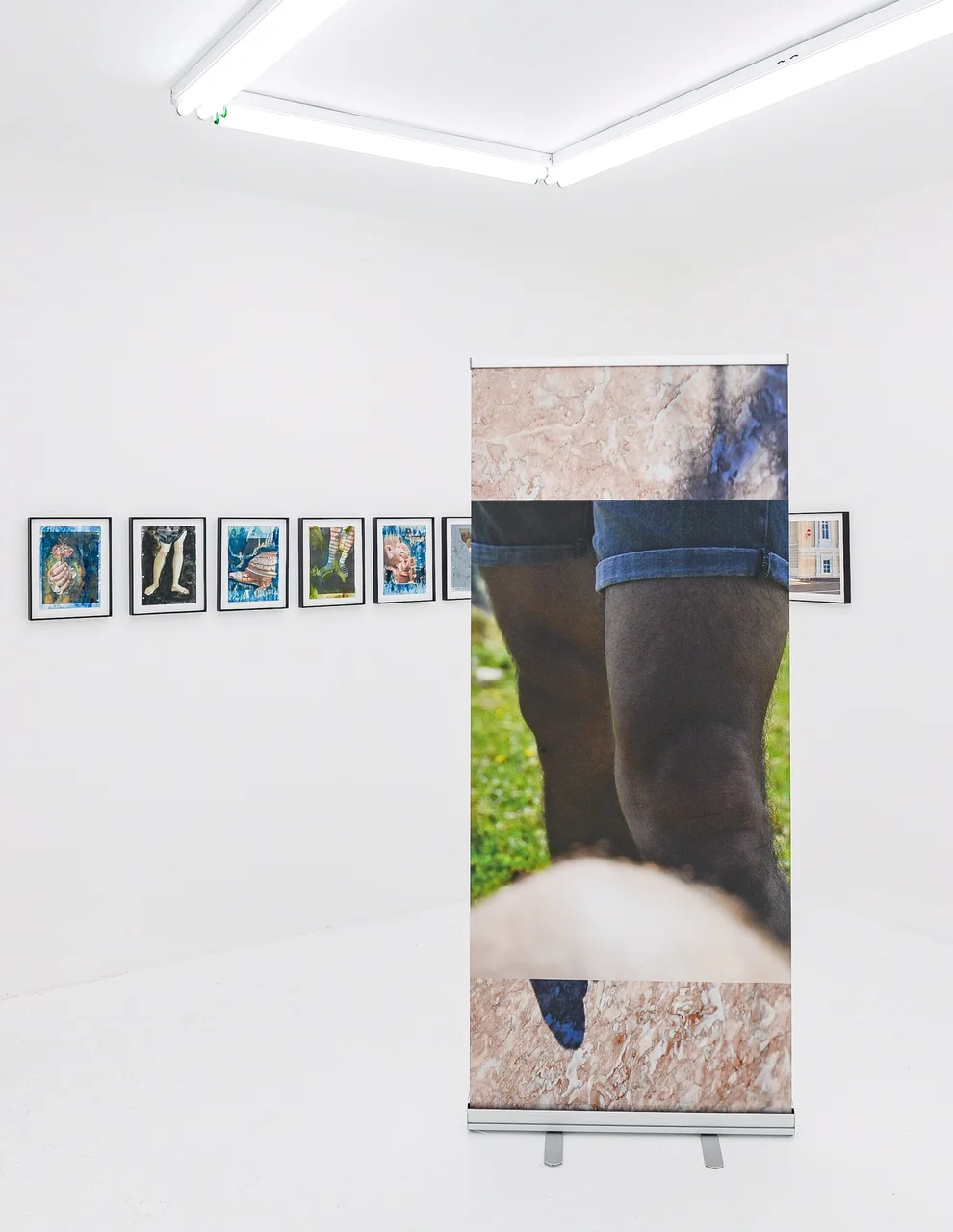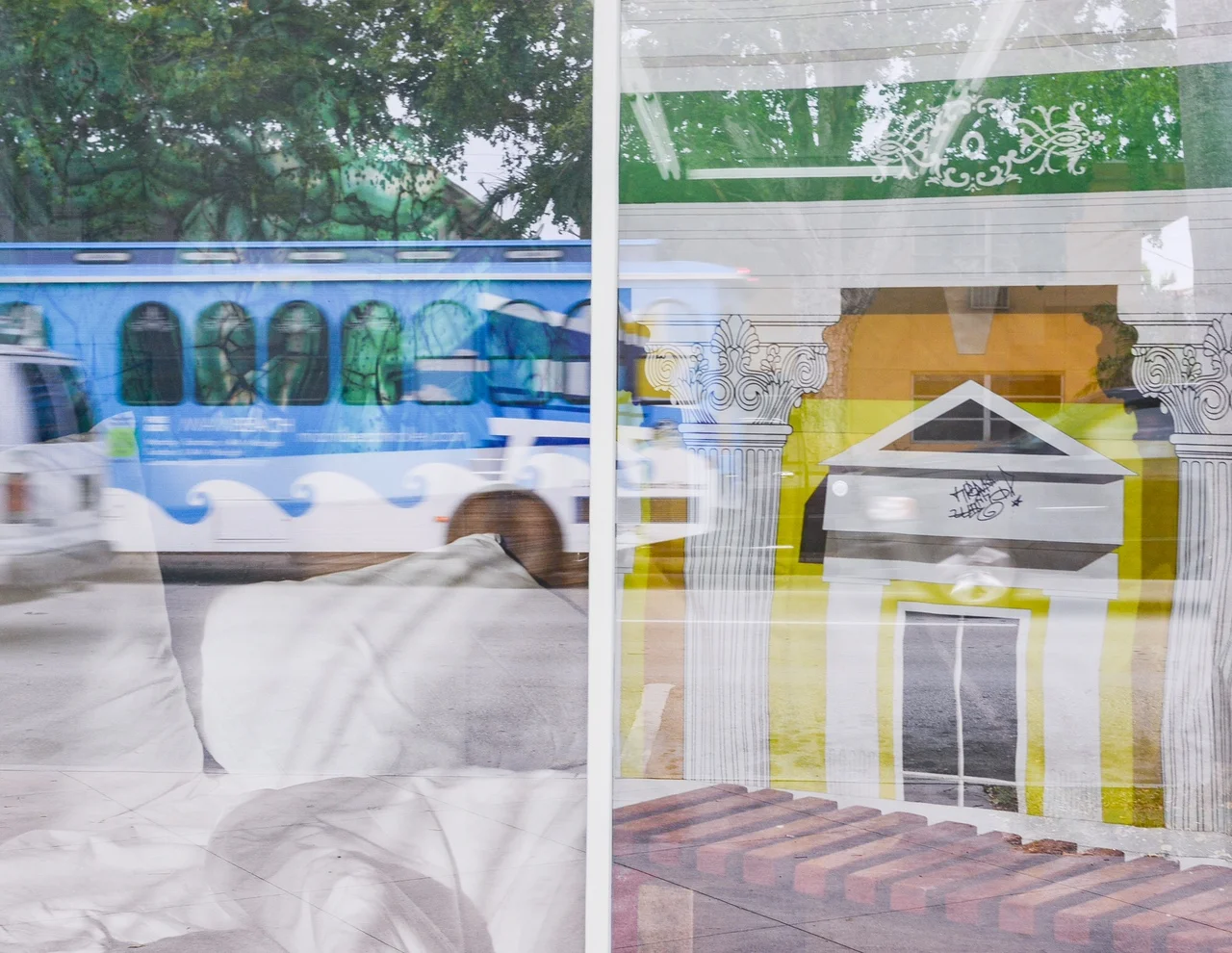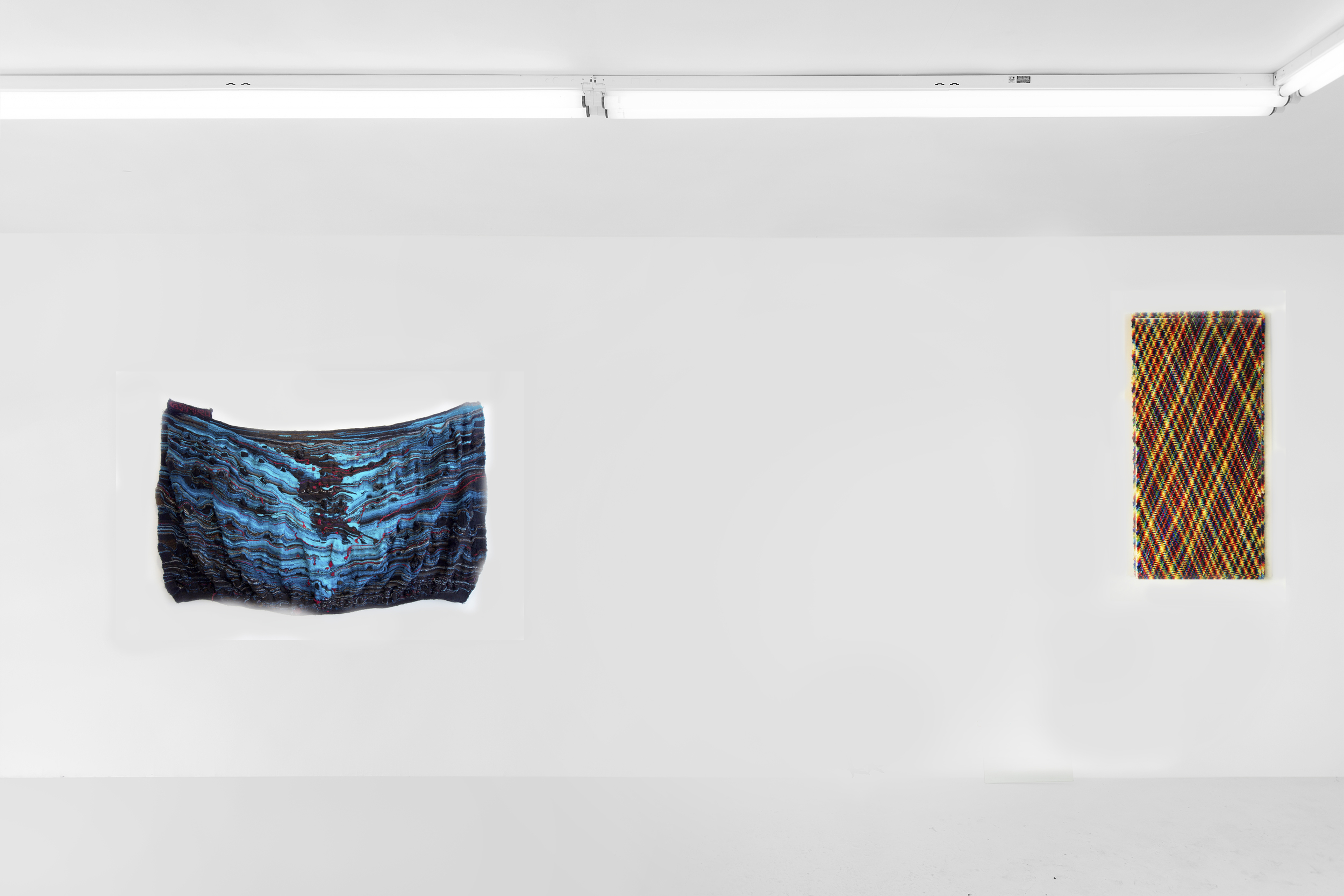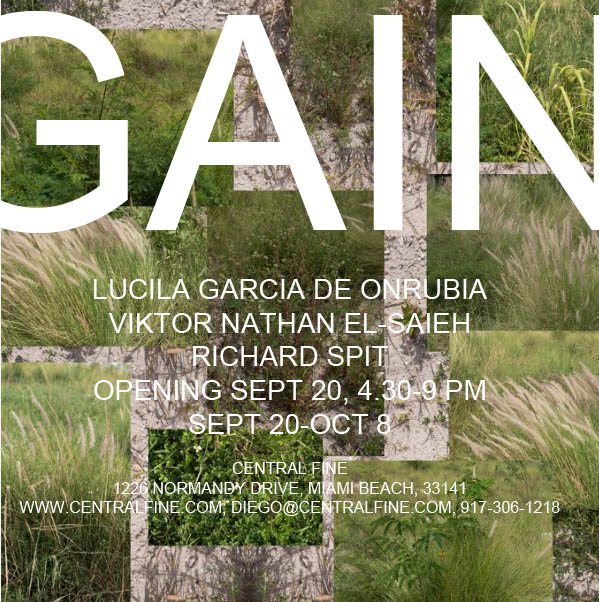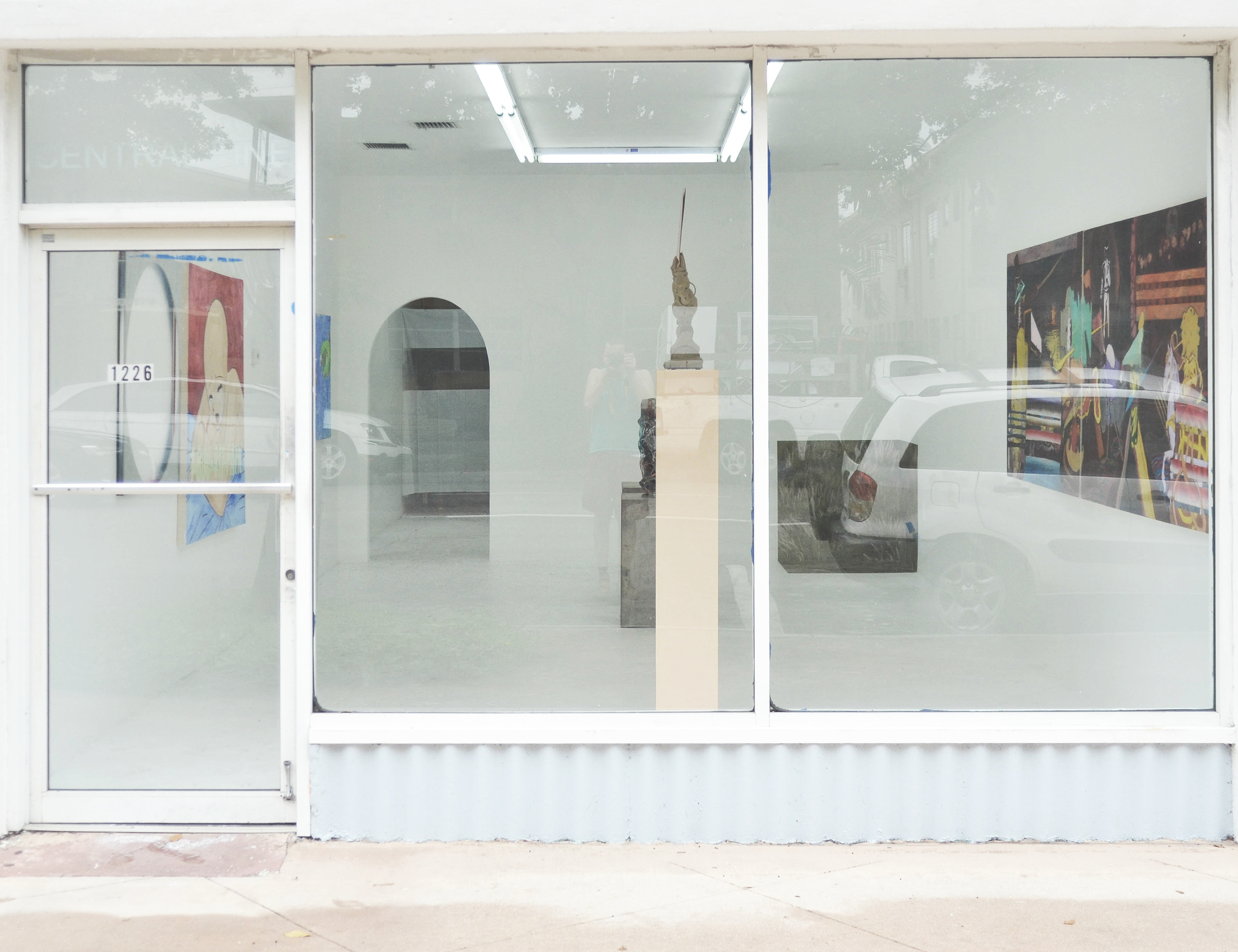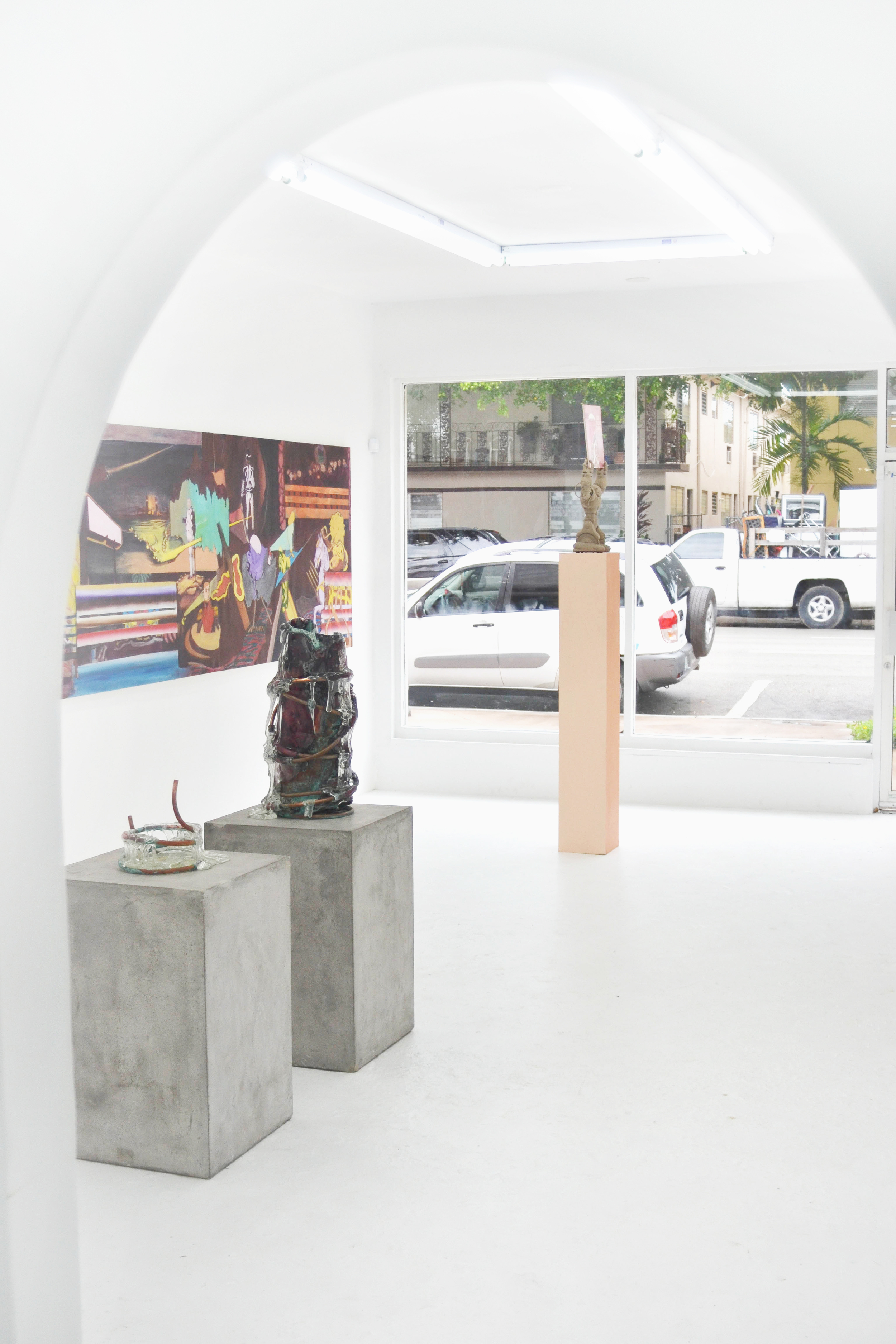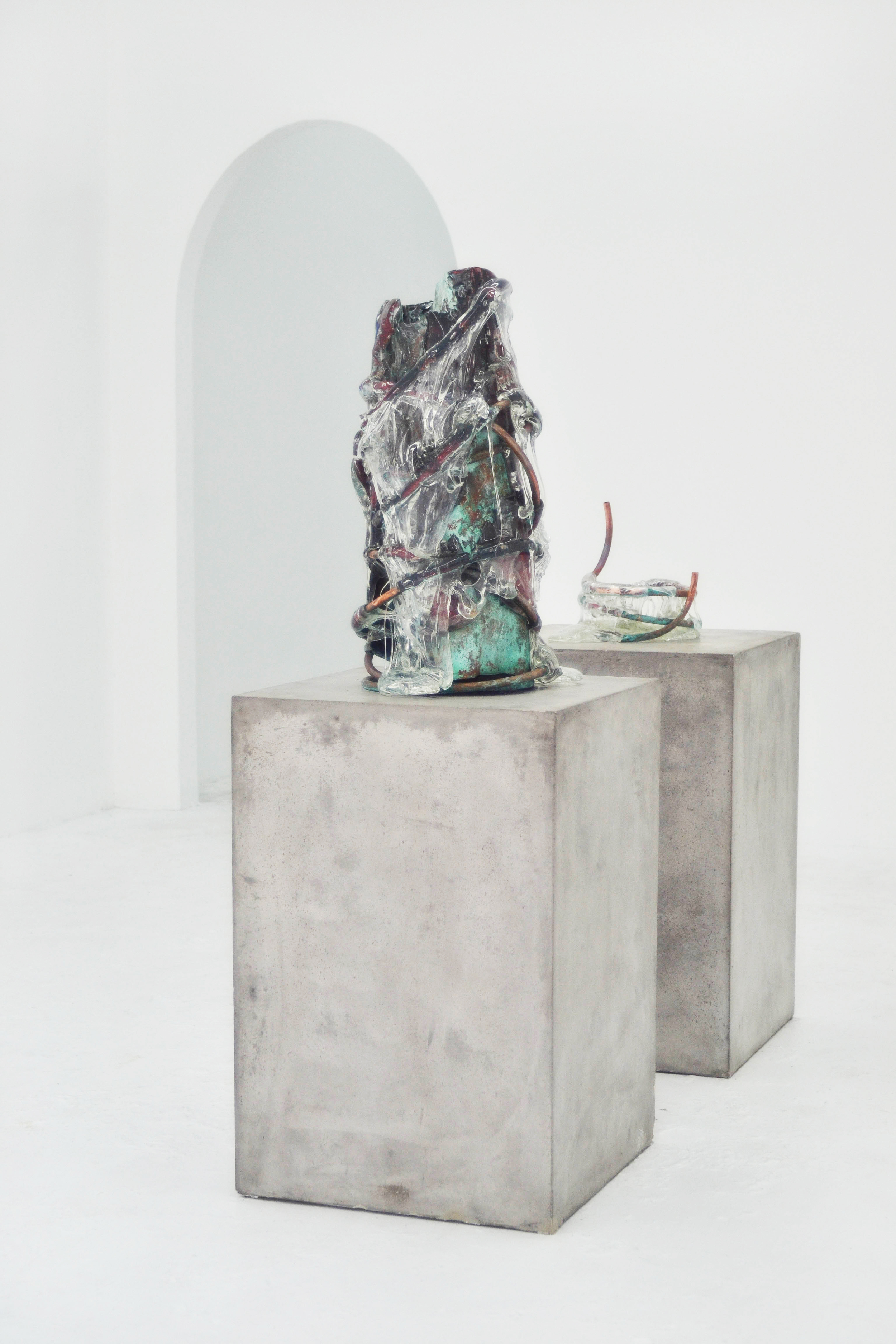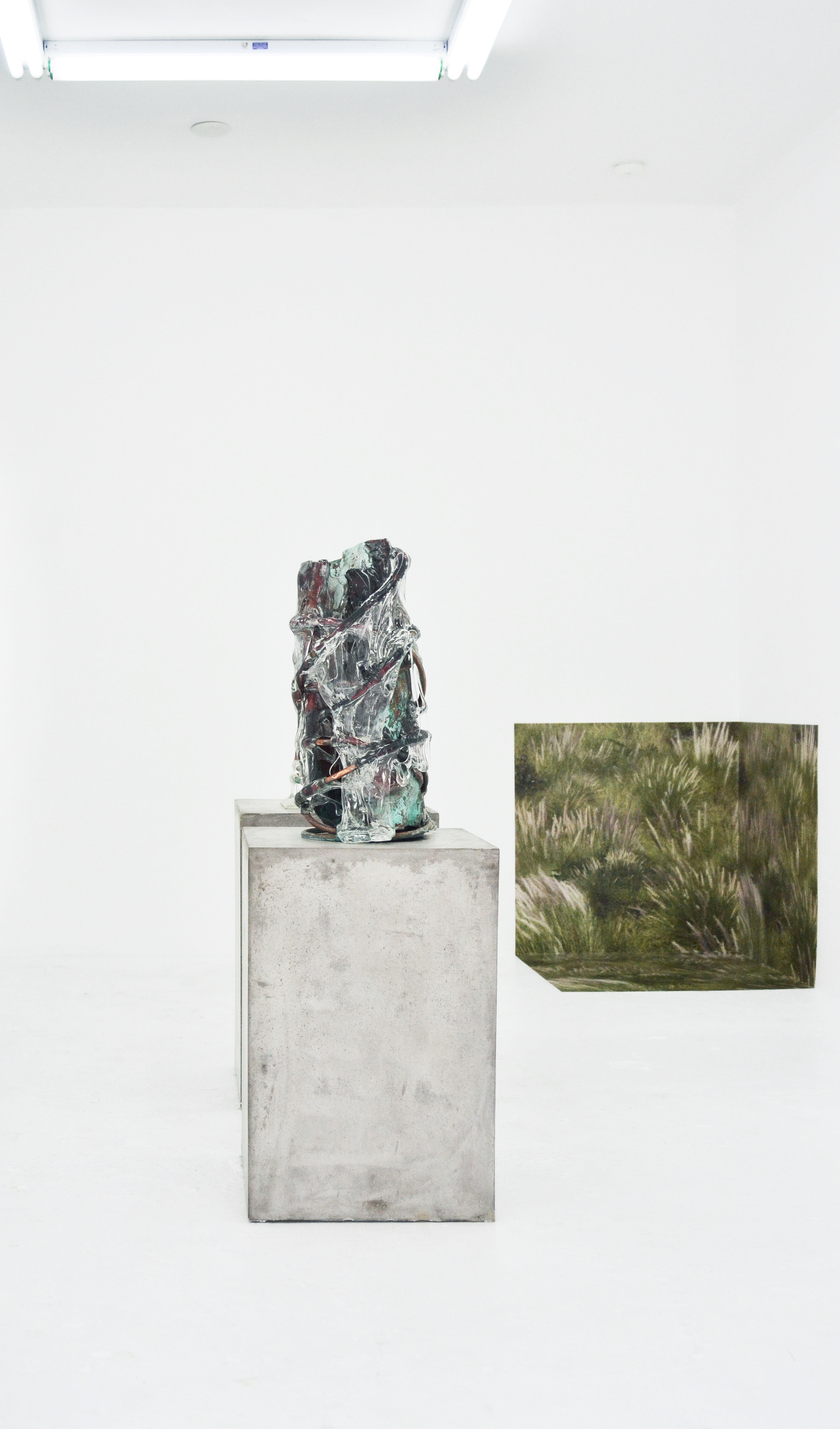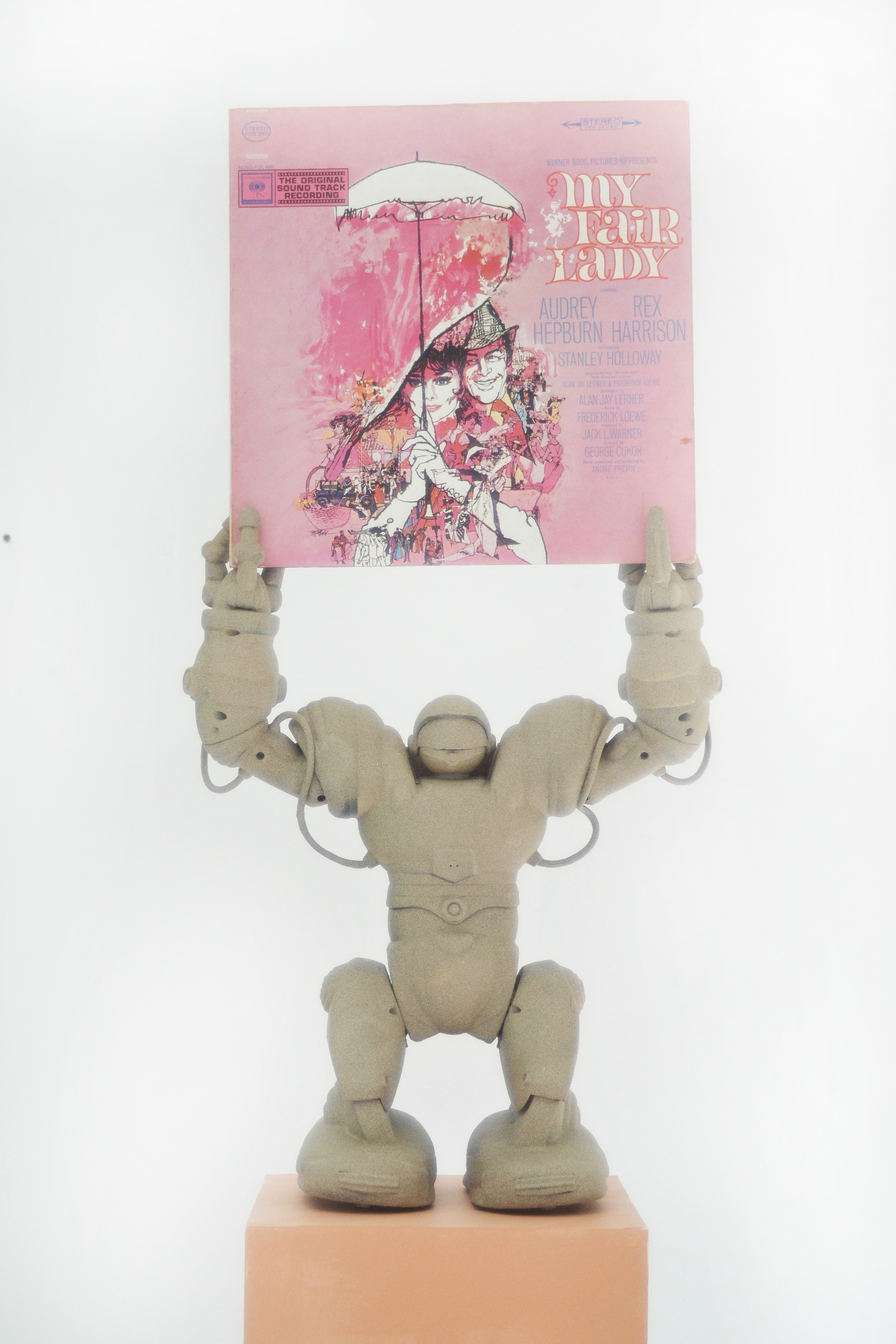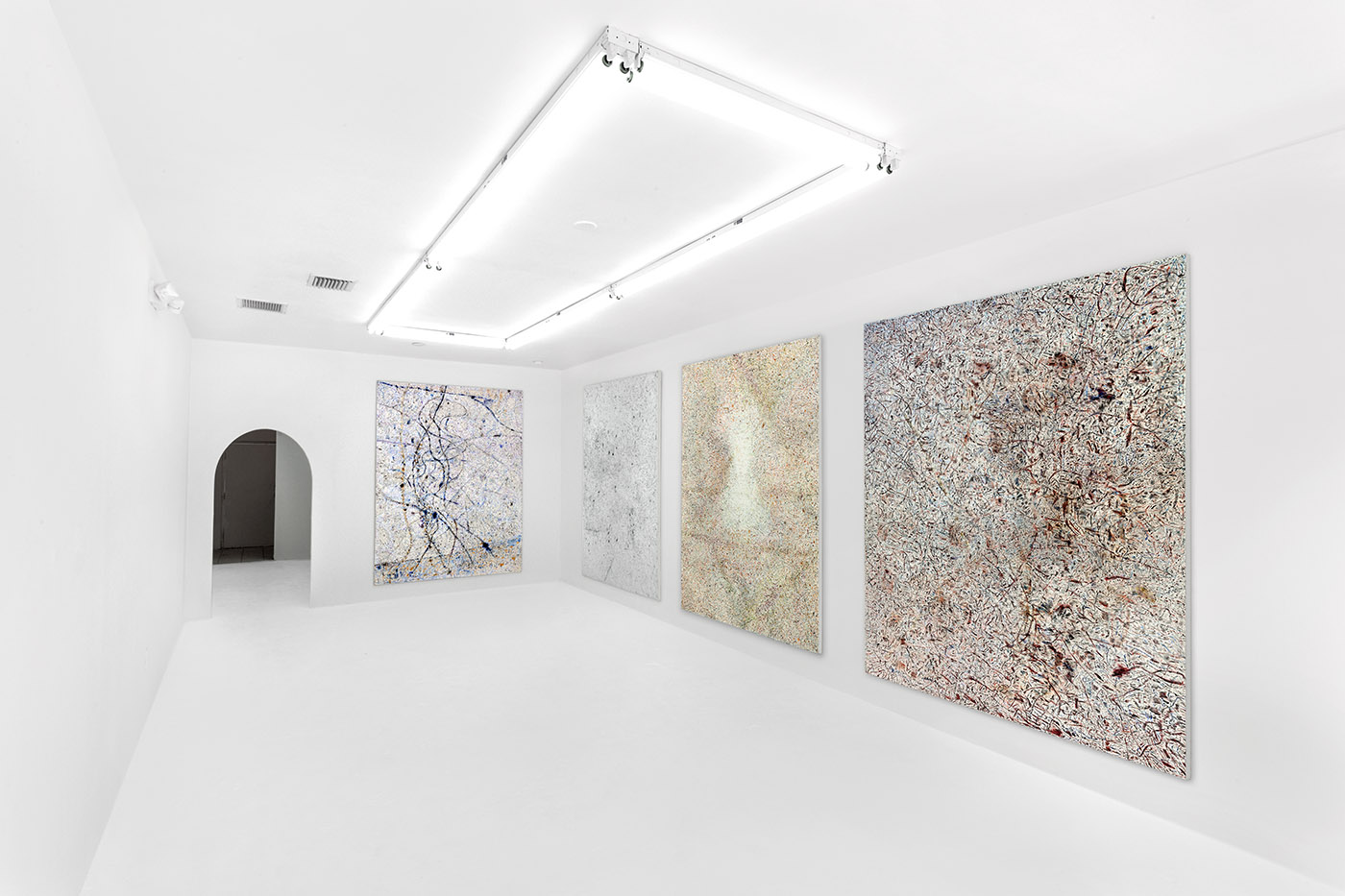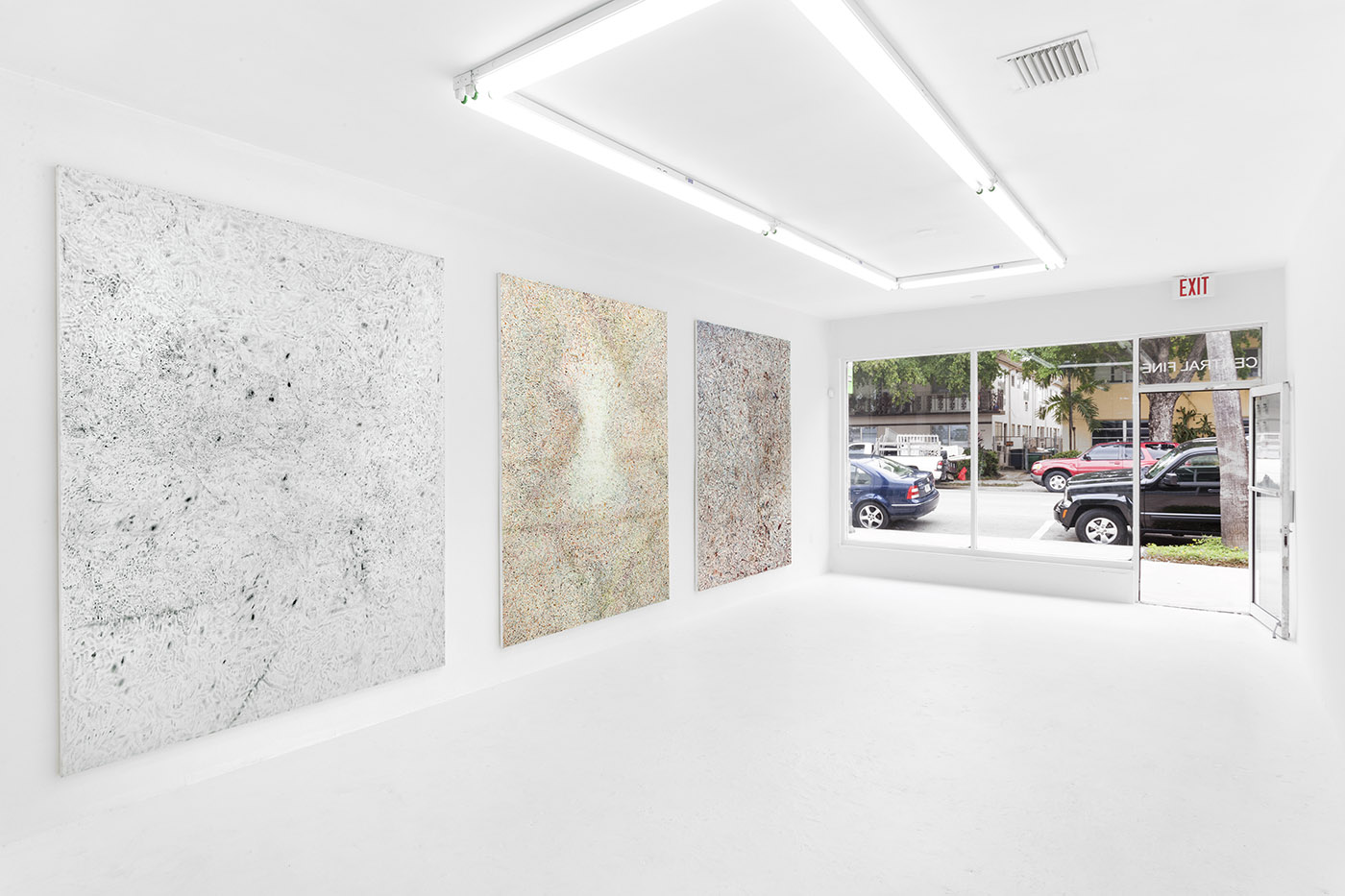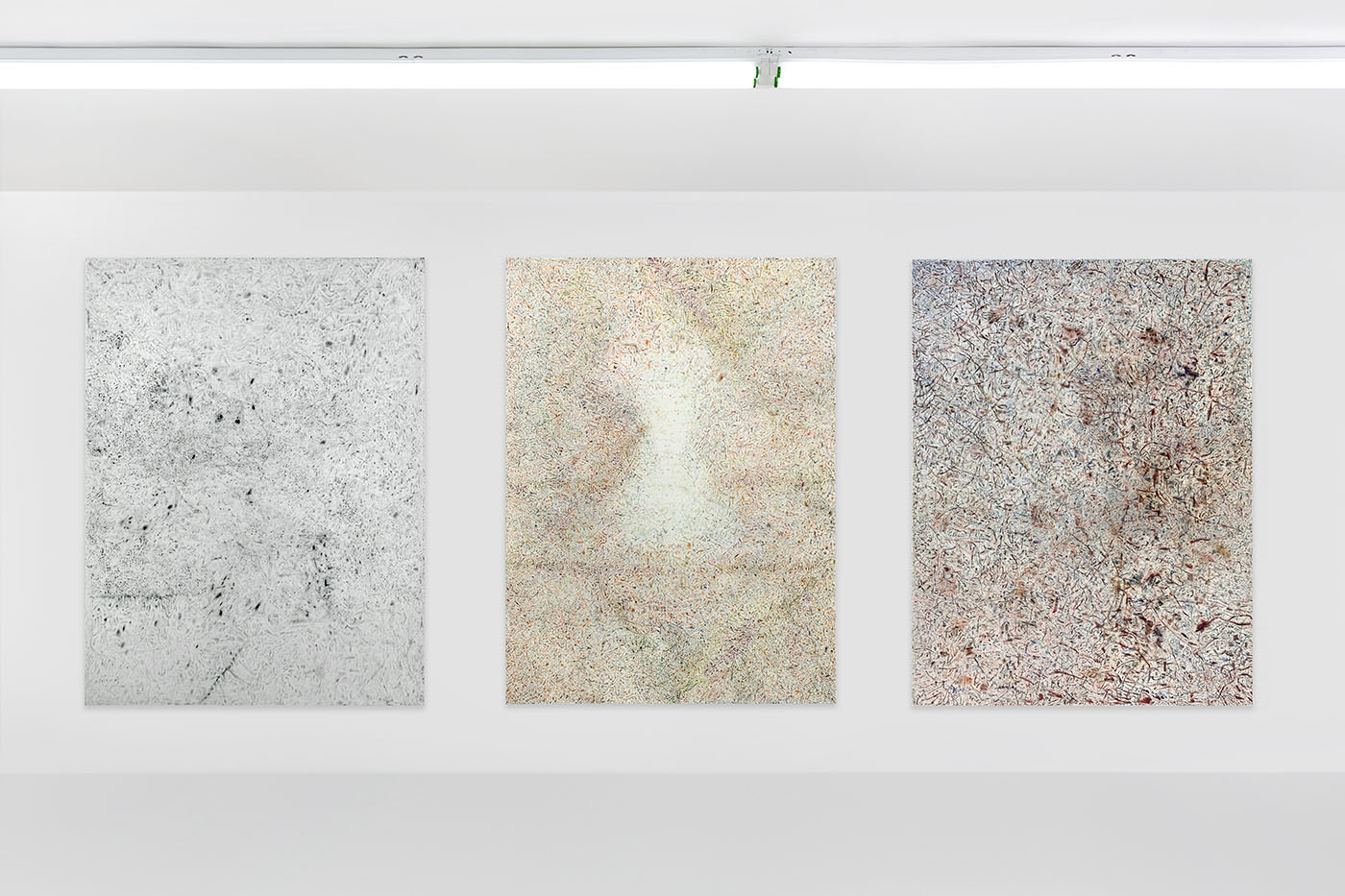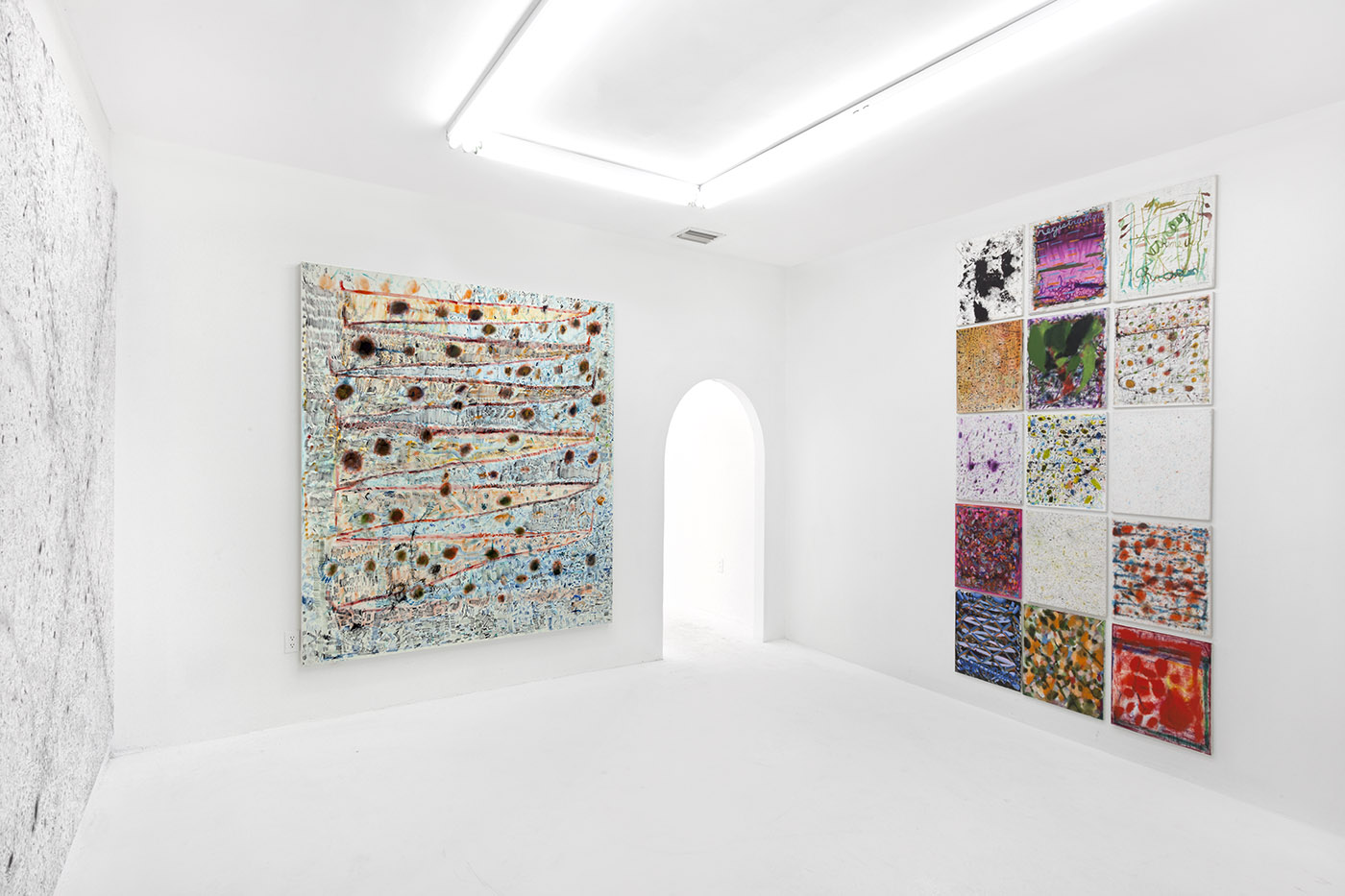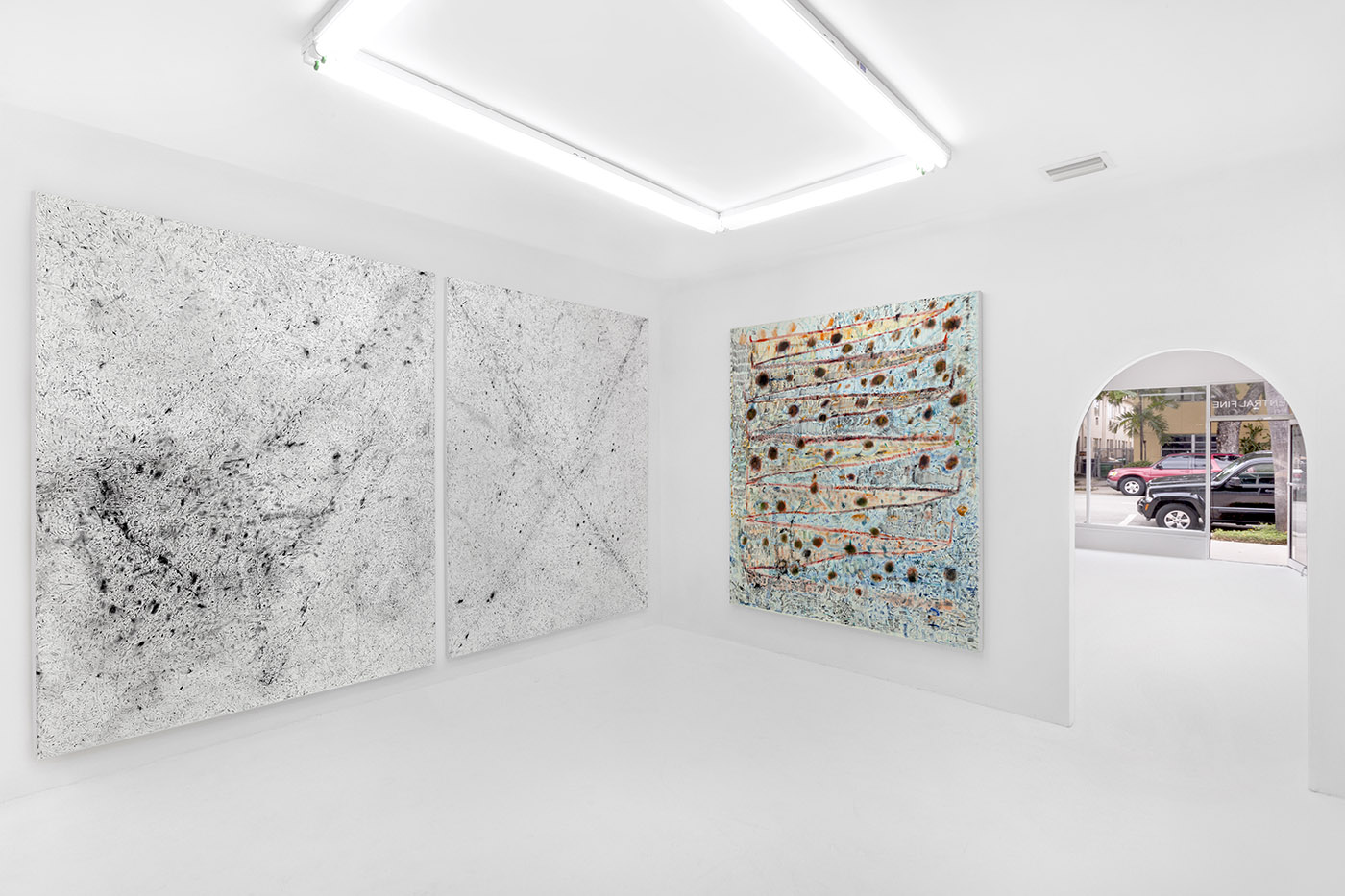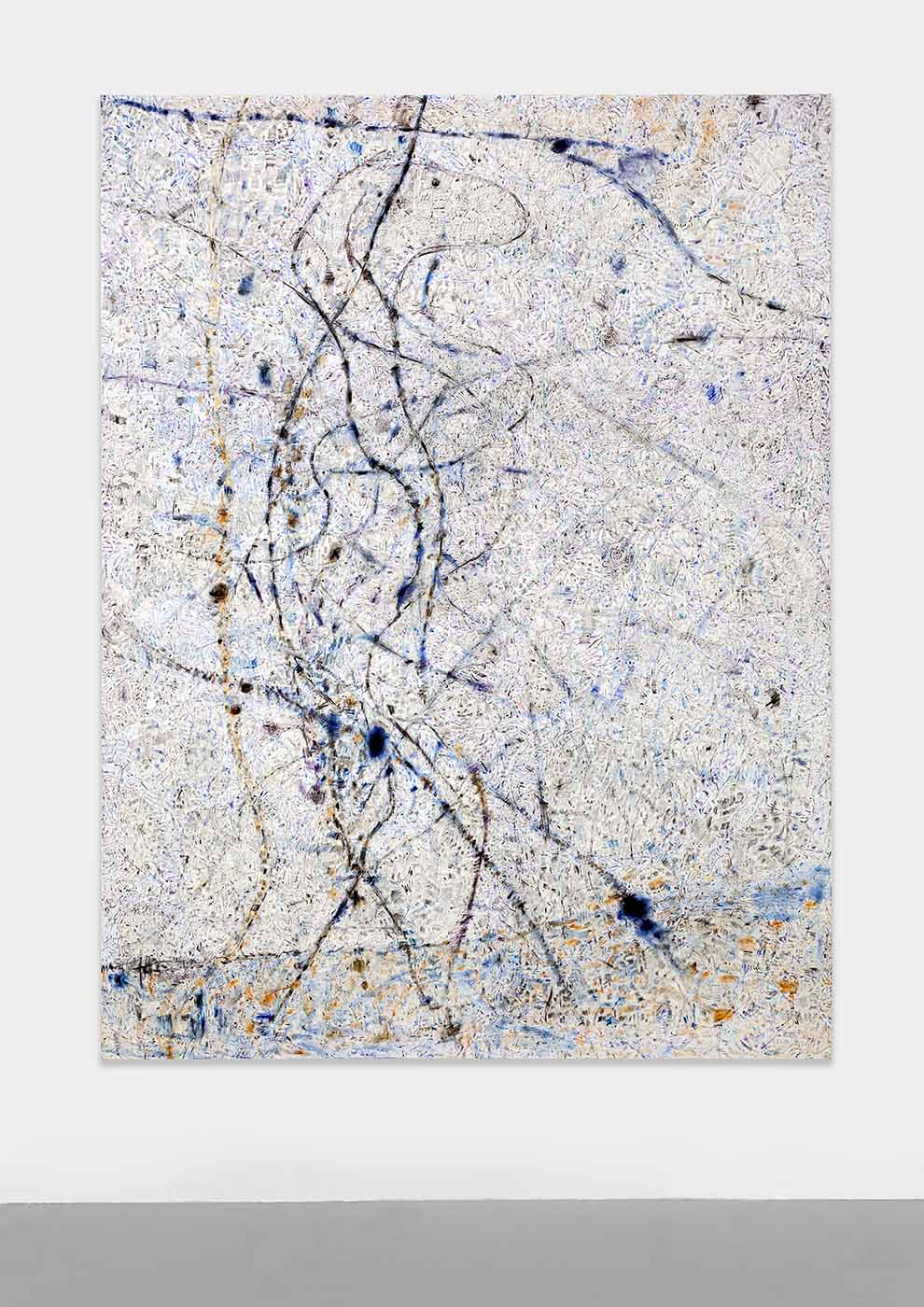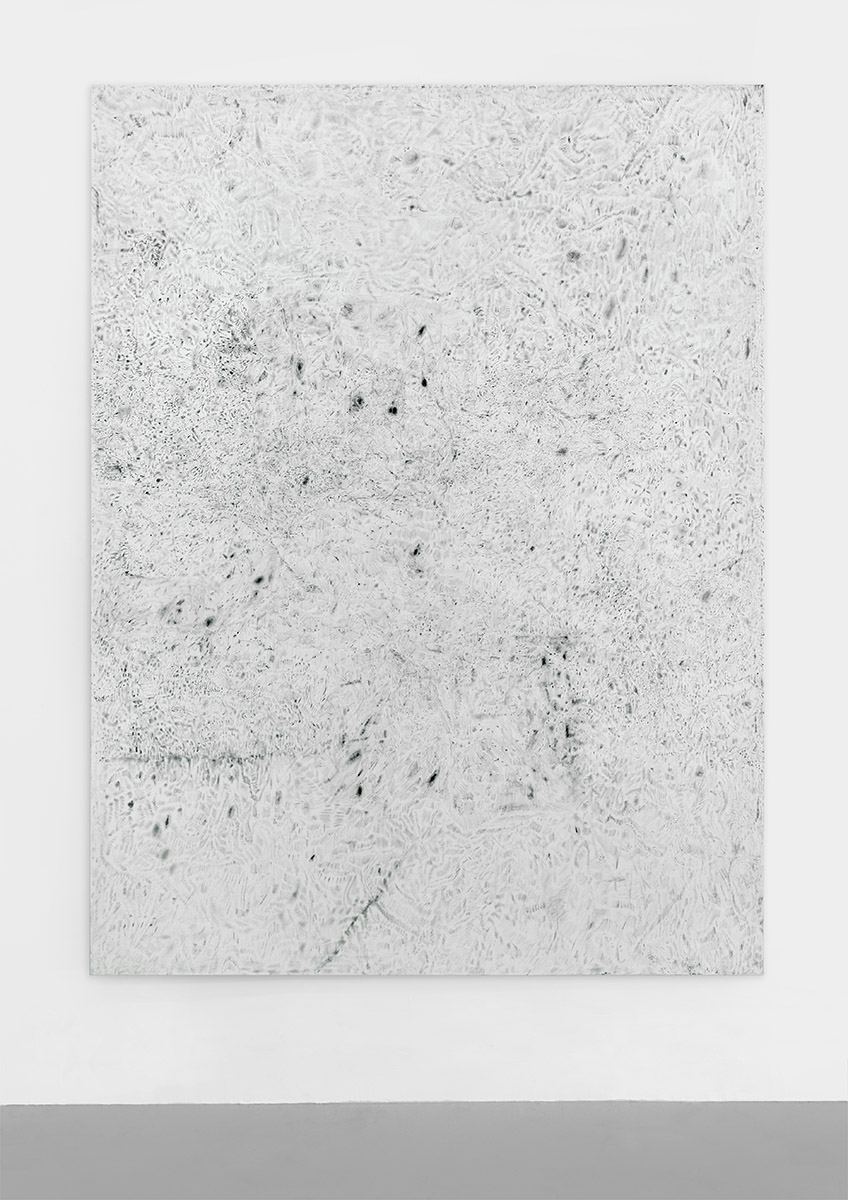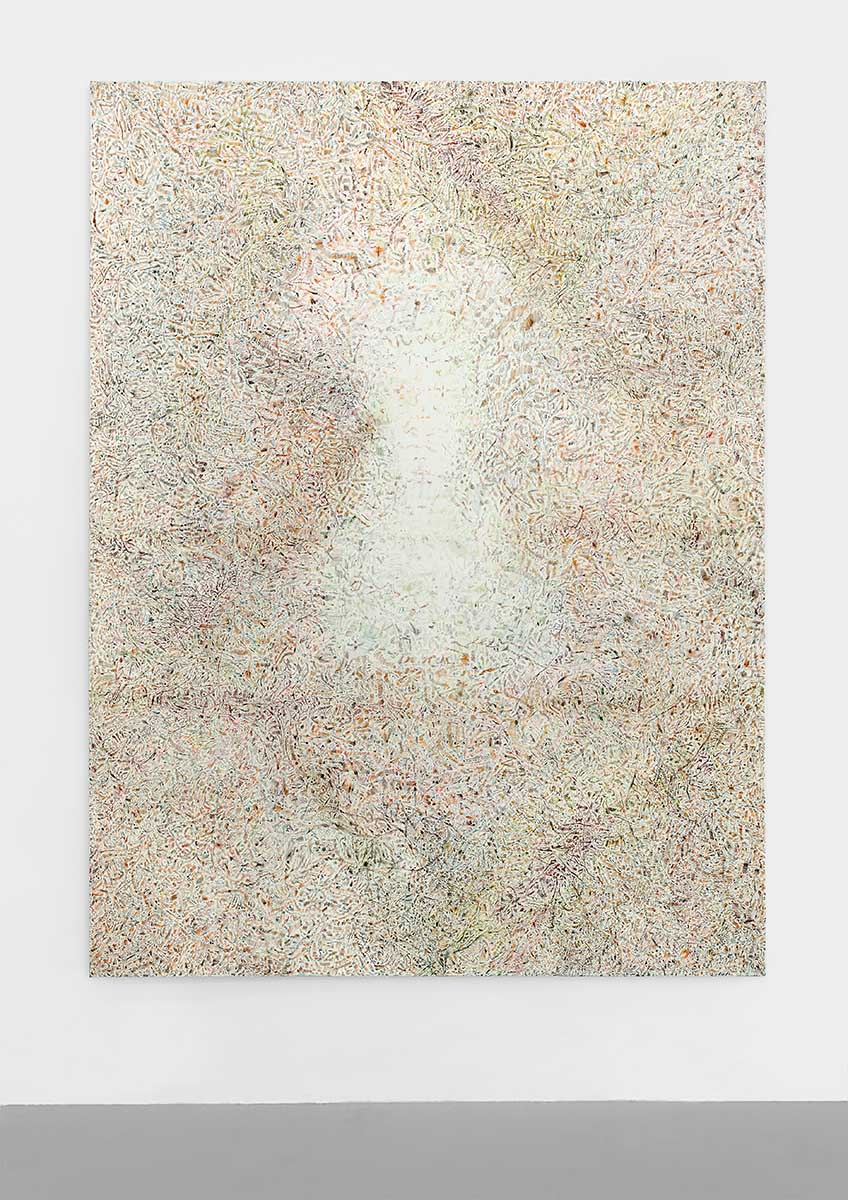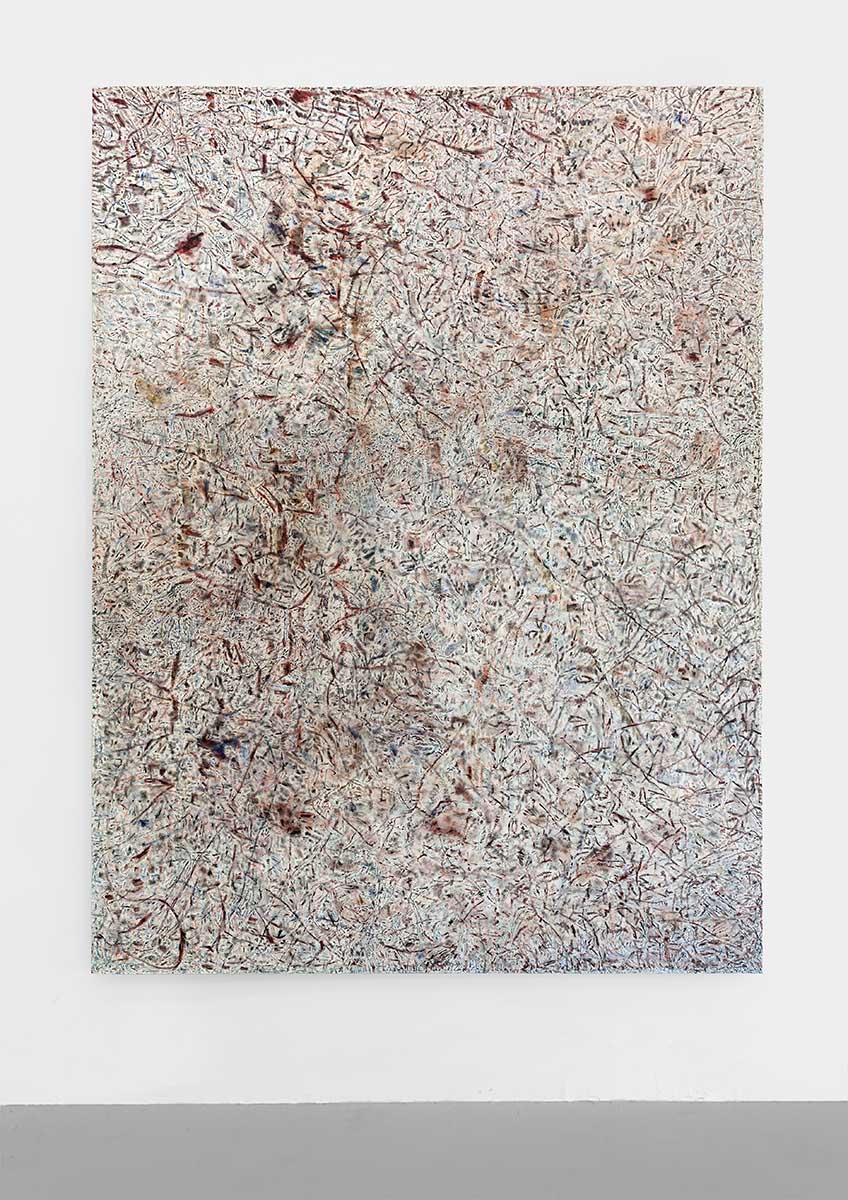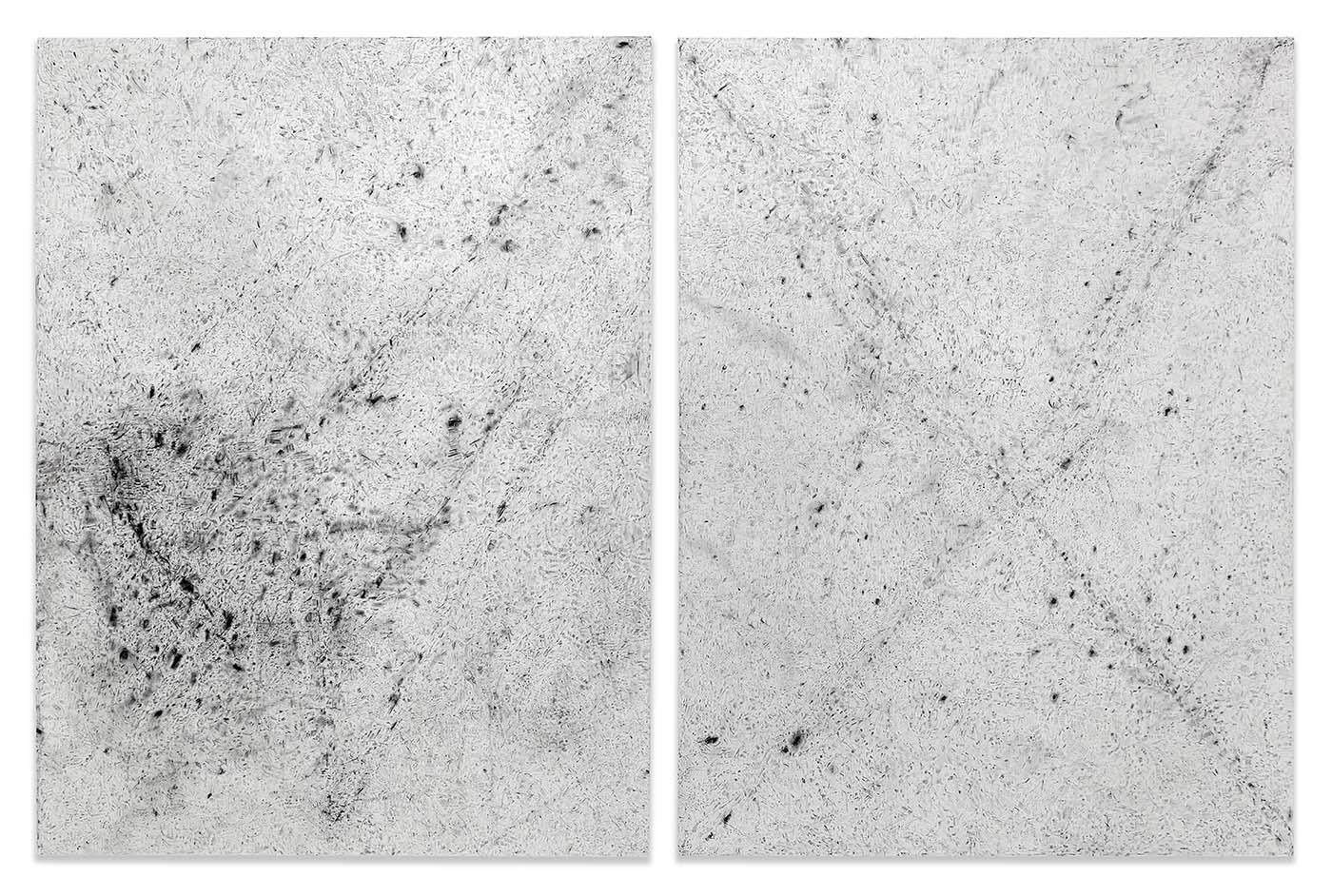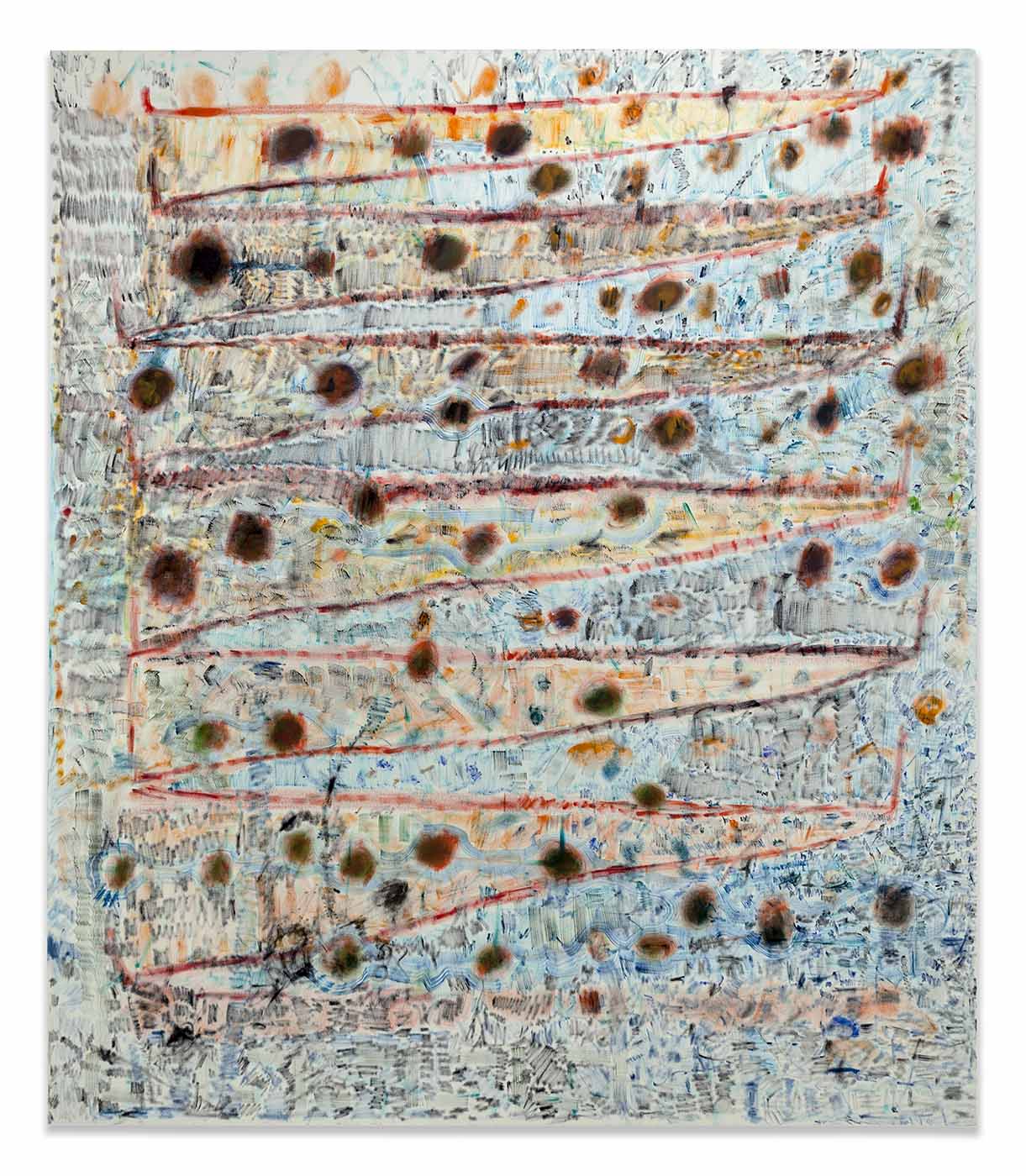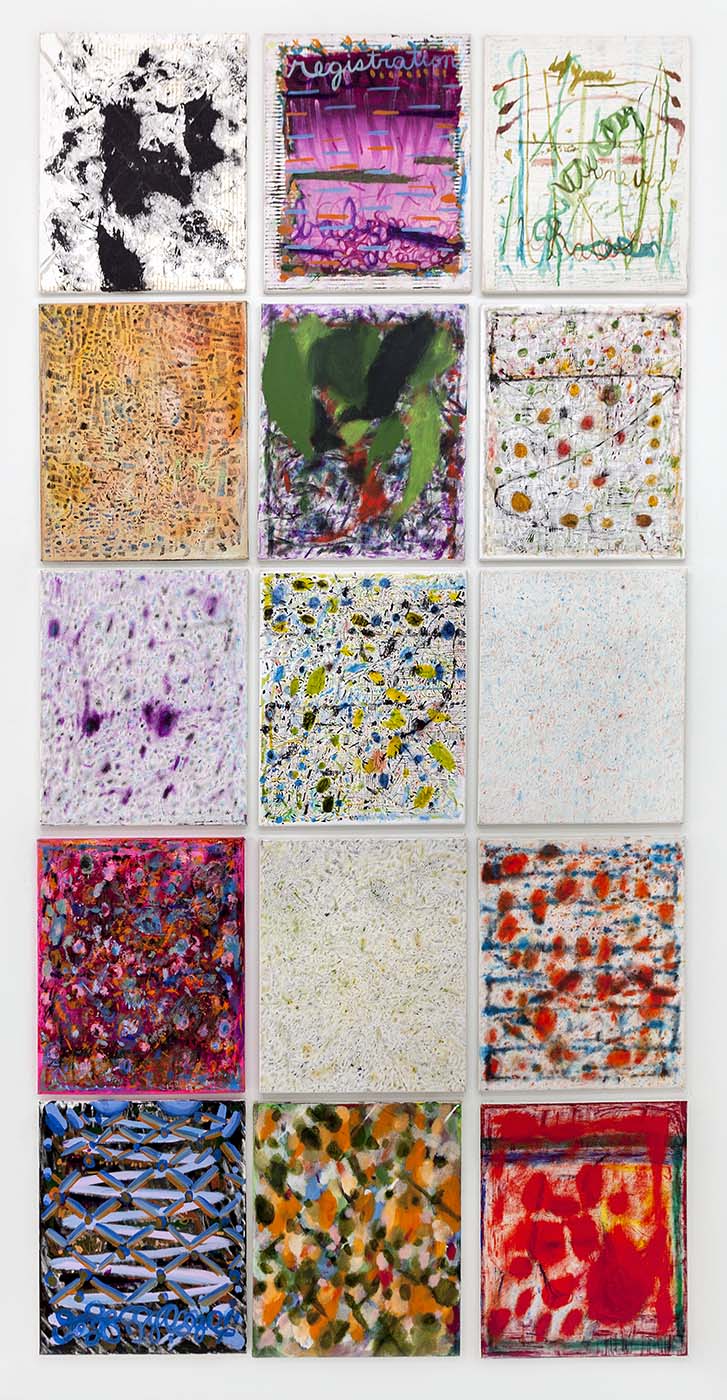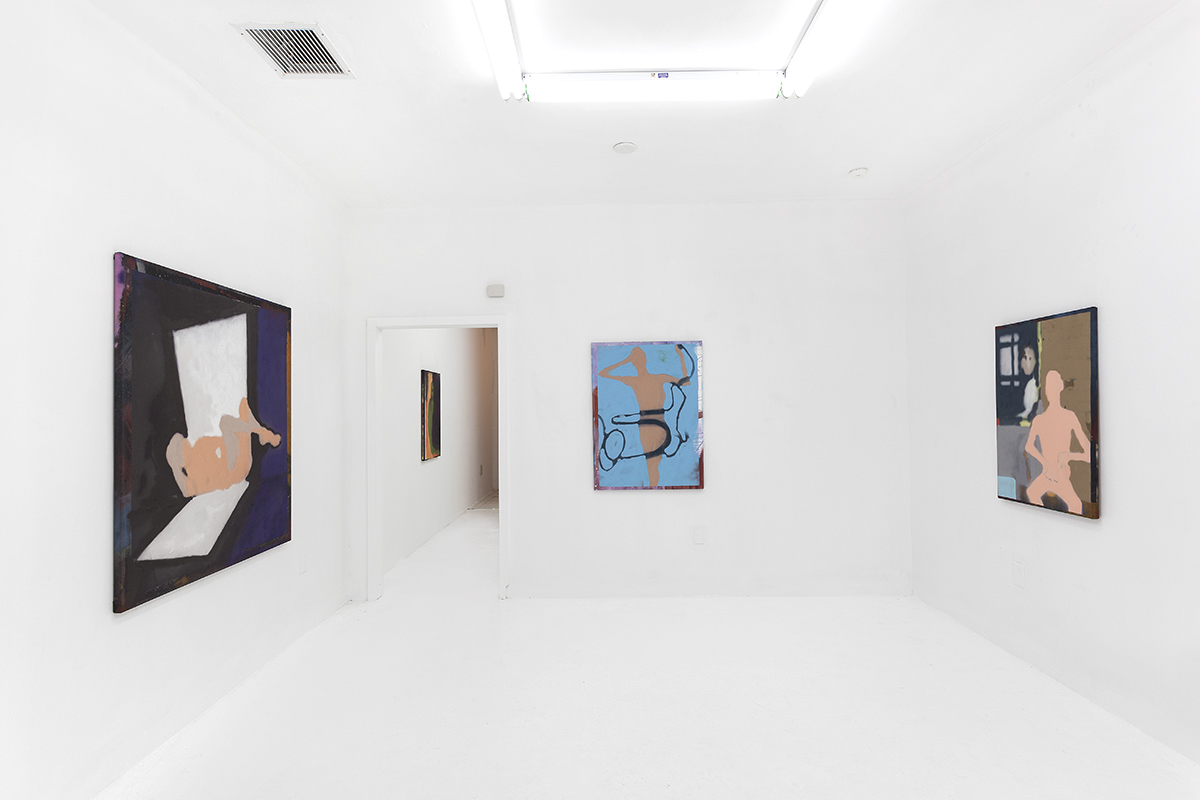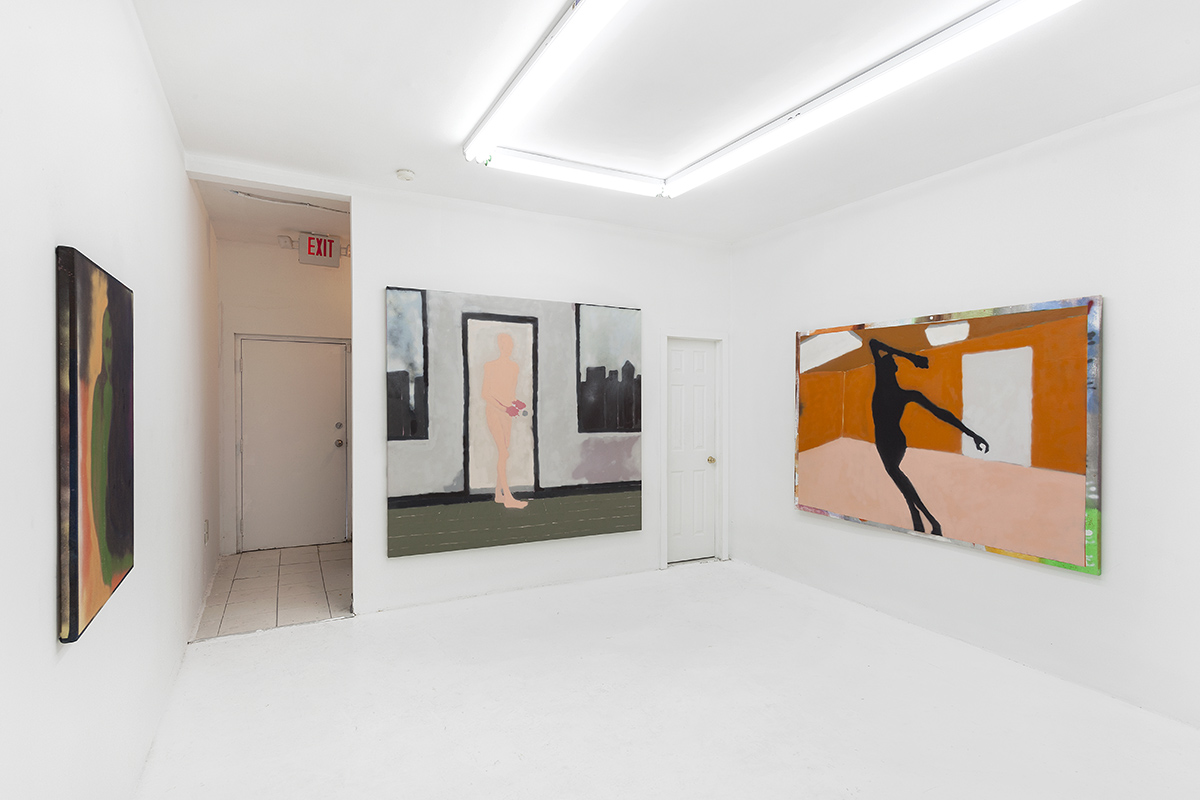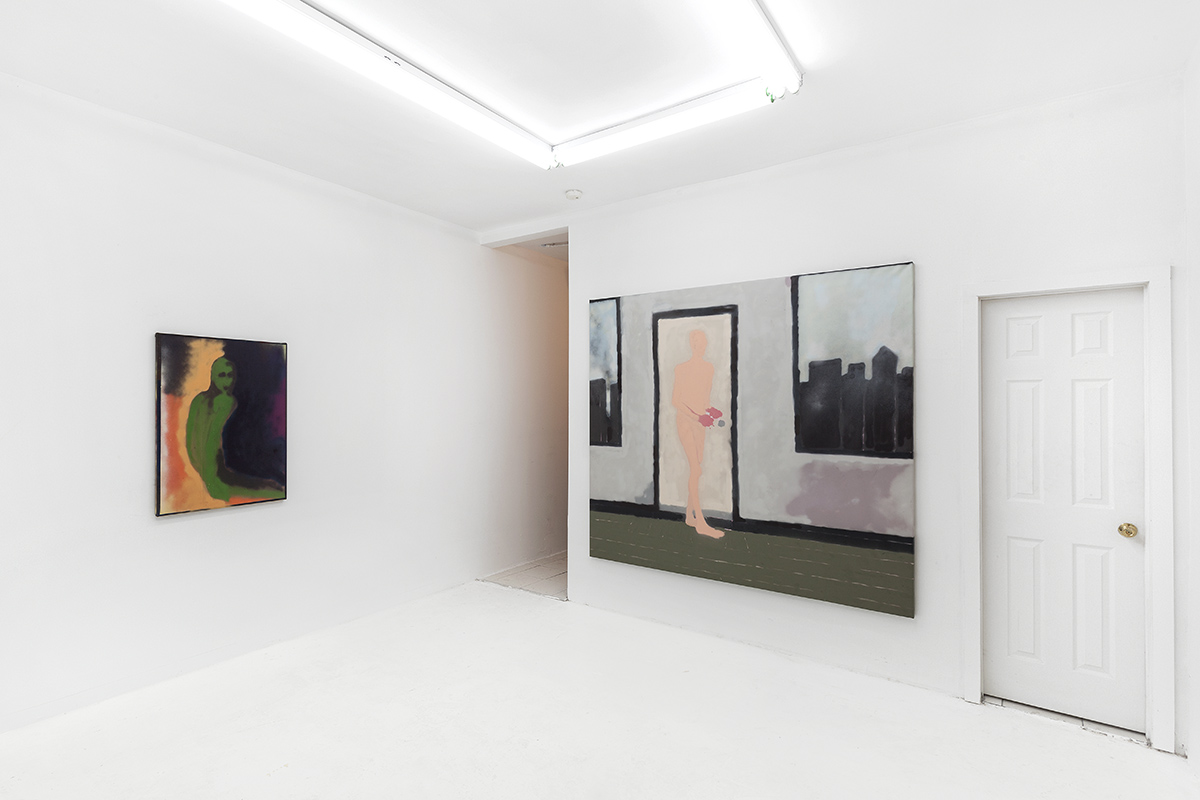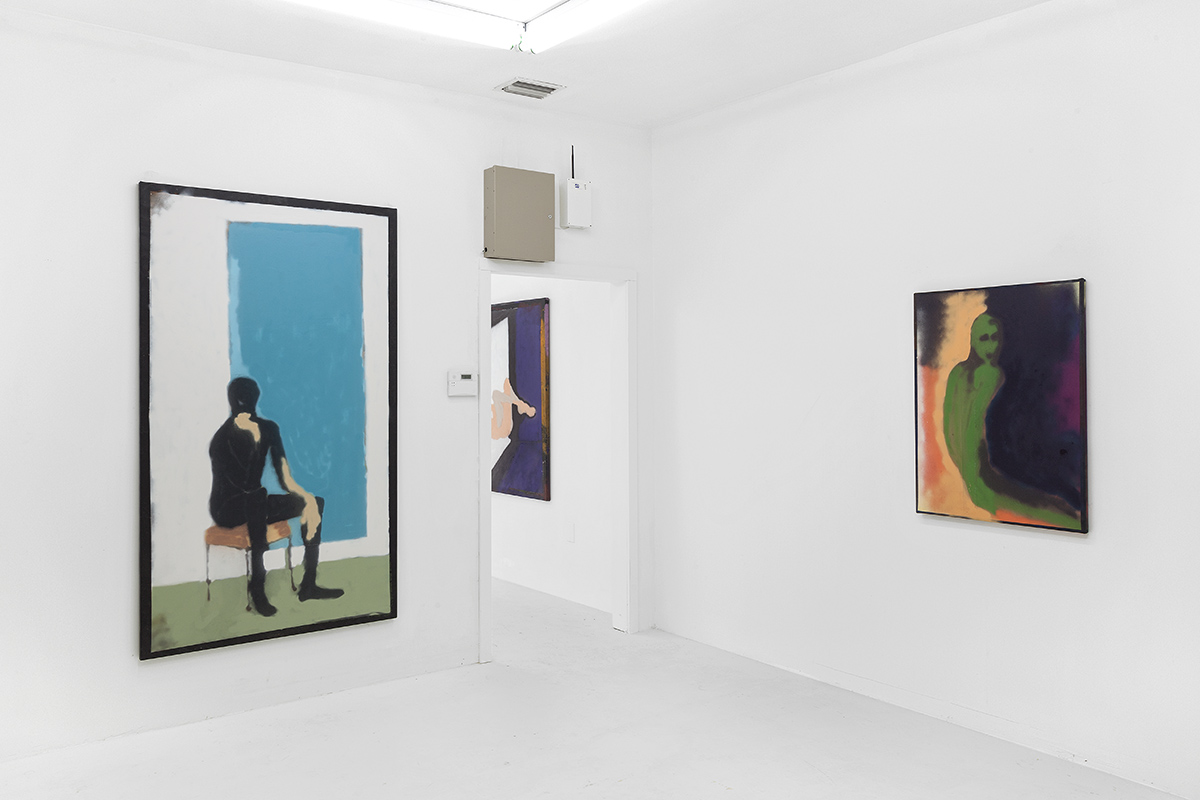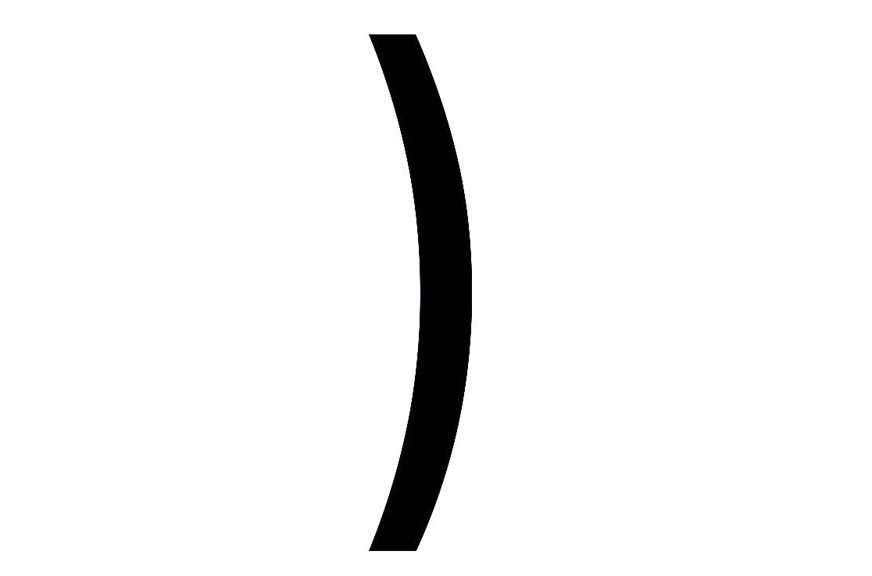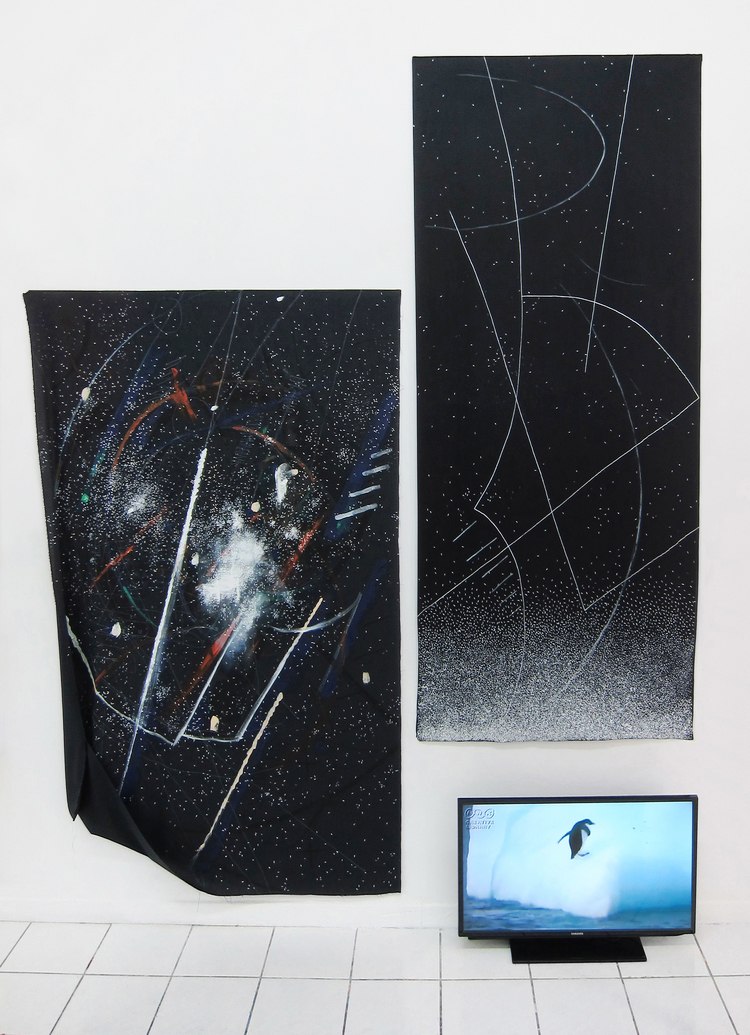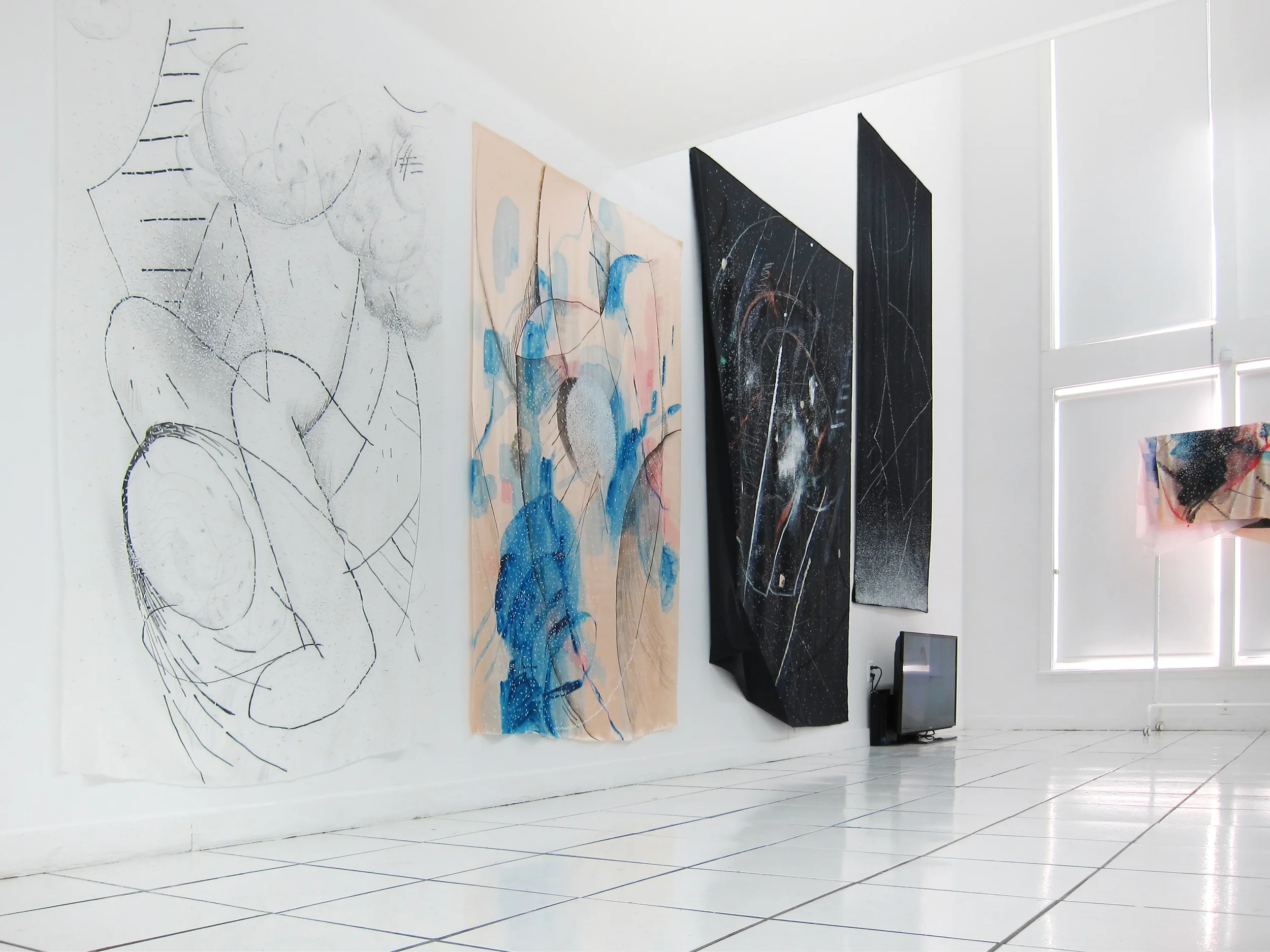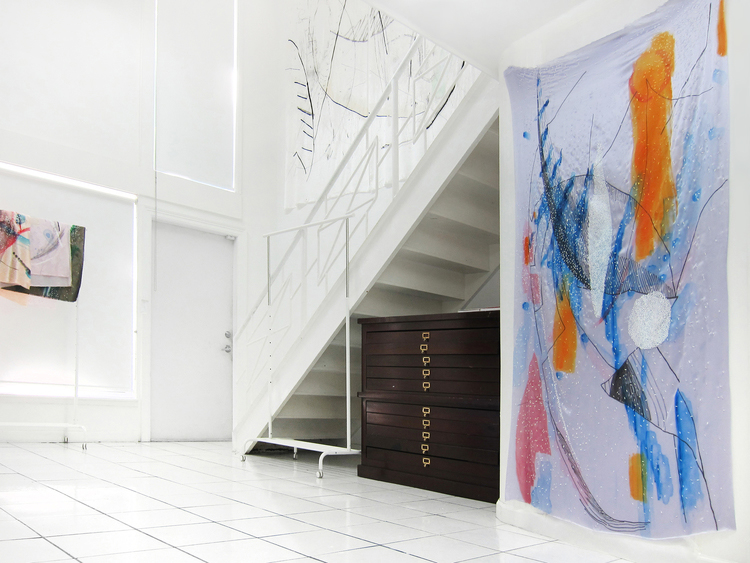Myrlande Constant, José Delgado Zuñiga, Chemu Ng’ok, Georgia Sagri, Constanza Schaffner, Diego Singh, Kyle Thurman
September 25 – October 19, 2021
Disclosure: This presentation does not address the concept of Aletheia(1 ) as truth per-se, but rather as an unveiling of something that appears once filters, language, and voices are allowed to voice the ID.
Clashes are to be expected.
With every space, the calligram (2) announces a sense of pause and a threshold.
As one unzipped something, what was unveiled remained, inevitably, in flux. What was revealed wasn’t the material or the object (naked now), but rather, the tension.
Myrlande Constant’s works could be seen as offerings or incantations, re-linking the realm of the invisible ones (The Mysteries or Loas) and this plane. In representing the Loas, she opens a series of relationships that affect reality. Her works are both sacred and secular objects, and when positioned in certain spaces, they act as offerings or portals or spells that (according to Myrlande’s beliefs) can resonate with reality, opening channels for the spiritual to bless, access, possess, or even affect a space.
In Myrlande’s work, the merging of the religious, political, and sexual, offers a new type of “visibility” that establishes a set of certainties that lies beyond what remains empirically verifiable and stays profoundly rooted in the subjective. Constant’s work redefines the religious artifact (a Voodoo flag) by incorporating sexuality, feminist theory, race, and the quotidian into the plane of the sacred. The point of intersection is where Aletheia, or an unveiling, takes place.
Georgia Sagri’s work approaches the forces that mark a body, a body of work, institutions, the planet, etc, and their relationships. These relationships generate an arch that is constantly being crossed, acted upon, which, in turn, reveals the dynamics that remain in the terrain of the symptomatic, both in the body and in society. Through various mediums such as, poetry, video, painting, sculpture, drawings, performance, or one on one sessions that engage with the other as a participant; through writing or organizing political activities; Sagri constantly opens her practice, engaging in a Rimbaudian way, with the infrastructures of language/body/action and their potential to produce change, to resist the dichotomies that aim at division, levels, categories.
The works presented in Aletheia are part of Sagri’s ongoing project, ίαση (pron. iasi), which refers to the time and process by which a body changes through illness. Language and its impact on the body, and its resonances, puncture and embrace what remains mobile, invisible, and elusive. This force, which is often perceived in poetry, marks Sagri’s approach to presences —addressing bodies in conflict, bodies healing, bodies of words, and their internal/external reverberations.
José Delgado Zuñiga’s practice accesses the space were politics and dreams shake each other up. His paintings question traditional genres (such as Mexican Muralism or Surrealism) by engaging with subjective, private experiences, rather than the universal propositions or scenarios that were almost exclusively addressed by these movements. Each drawing in Aletheia suggests circumstances that unearth aspects of what’s taboo, violent, or politicized by appealing to a sense of drama and humor that charges the facade of his work, and its always evolving surface, with pathos.
The works in Aletheia accumulate concepts and influences, and pile them up like sounds and bodies often found in a mass grave of white noise. Zuñiga’s works evoke a bombardment of love and loss, hope and its musicality, all joined by an artist set on observing dialectical relationships.
Constanza Schaffner’s self-portraits show the figure right at a moment of transformation—evoking another kind of truth, a truth that goes beyond correspondence with notions of reality.
In her work, we can see the concept of transformation, where a poetic presence bypasses the limitations deposited on perception, or people, and especially on women, by the establishment.
Her training in philosophy and comparative literature informs her praxis, which draws influences from Magical Realism, mythology, literature, or cinema; presenting confrontational and direct openings to self-reflection; reconsidering painting as a field, punctuated by the complexity inherent in human interaction, art history, or, Painting’s relationship with other mediums (poetry, theater philosophy. Etc.-). Schaffner’s approach to Painting actively defies the optimization of texts/surfaces, making contact with the ‘negativity’ attributed to whatever escapes a censorship that insists on flattening and eliminating subjectivities.
In his work, Diego Singh (who’s writing this text in the third person, by the way) draws a Borromean knot that allows him to enter and exit the notion of identity as an abstraction and a construct, while observing embarrassment, as a disguise for the traumatic: One is veiled and exposed.
“Embarrassing” things, like Martha Stewart’s catalogue of craft tools, are used to compose large-scale paintings that oscillate between Minimalism, Modernism, glam rock, and gore. Or an incrusted pearl, and a souvenir from the tourism industry, show up on precariously made sculptures or a painting: The foreign body crashes the parties. An identity is always at stake. It unravels and frees itself of the imperiousness of certainties, of style and its boundaries. A head becomes a gun, a bowling ball, or a place to insert fingers. A painting or a sculpture becomes a press release, a gallery, a self-portrait. Repression, oppression, and liberation are coded in Singh’s works —something is concealed, passing by, participating in another knot of associations, always in the process of burying or pulling out, one thing or another.
Kyle Thurman’s work presents the body as a territory where demands, identity politics, jobs, and art history meet on the skin of the subjects. His work shows states of emotional vulnerability/openness, which can sometimes morph into translucent and vibrantly monstrous shapes. What Thurman conveys is the act of undressing the apparent by providing access to social and psychological tensions, which in turn, charge the portraits/self-portraits with the force of a million possibilities (ranging from a performative self-awareness to the liberation of a libidinal energy that mutates into the unpredictable). Thurman mentions that a type of presence, that manifests itself through pigment, appears in these works, hovering over them…It could be a materiality that rests, colors, and up to a certain point, defines the subjects. This undefined presence, both a skin or a cloud, coats the works in full ambiguity and possibility.
Chemu Ng’ok’s work presents power dynamics observed as a set of enigmatic strategies. Chess figures, armies, groups of people, the law, soldiers, and the weight of oppression seem to permeate her practice in ways that are both urgent and lyrical. In her works, dialectical relationships are always at play, zooming into the frailty of human experience in contrast with institutions and their pressure. What Ng’ok paints is ‘said’ at once with potency and tenderness, pulsating with the tempo and the echoes of what’s intimate, in a stark encounter with the weight of internal and external agents of trauma.
© Diego Singh
Miami Beach, July–September 2021
Ed. Zelmira Rizo-Patrón
About the artists
Myrlande Constant (b. Port-au-Prince, Haiti) has exhibited her work at Pioneer Works, New York; the Museum of Contemporary Art, North Miami; Le Grand Palais, Paris; Brown University, Providence; Luhring Augustine, New York; David Lewis Gallery, New York; Faena Art Foundation, Miami; El-Saieh Gallery, Port-au-Prince; and CENTRAL FINE, Miami Beach; among other institutions and galleries.
She will present an upcoming a solo project with Luhring Augustine, New York at the ADAA curated by Tomm El-Saieh, as well as an upcoming solo presentation at CENTRAL FINE, Miami Beach (2022). A survey of Constant’s work, curated by Katherine Smith, will take place at the Fowler Museum, University of California, Los Angeles in 2023.
Constant’s work can be found in the following permanent collections: the Fowler Museum, UCLA; Pérez Art Museum (PAMM); Institute of Contemporary Art, Miami, among others.
José Delgado Zuñiga (b. Ventura, California) completed his MFA in Painting at Columbia University, New York (2017), where he was also an adjunct professor in painting and drawing (2017–2019).
Zuñiga has presented his work at CENTRAL FINE, Miami Beach; Yale Divinity School of Sacred Music, CT; Columbia University, NY; among other institutions and galleries. His awards and recognitions include Lead Teaching Artist and Muralist at Groundswell, Brooklyn, New York (2017–2020); the Rema Hort Mann Emerging Artist Grant, and the Rema Hort Mann Artist Community Grant (both, 2018). He presented his first solo exhibition at CENTRAL FINE, Miami Beach in 2019, followed by his second solo exhibition at the gallery, in February 2021.
Zuñiga’s work is now part of the permanent collection of the Institute of Contemporary Art, Miami.
Chemu Ng'ok (b. Nairobi, Kenya) completed her MFA in Painting at Rhodes University (2017) and is a recipient of the Mellon Foundation’s Visual and Performing Arts of Africa Masters Bursary (2016).
Solo presentations include her masters show, Riot (2017); her graduate solo exhibition Social Revolution (2014); and a solo booth at the FNB Joburg Art Fair titled Self Esteem for Girls (2017).
In 2018, Ng’ok was included in the New Museum Triennial, Songs for Sabotage, curated by Alex Gartenfeld and Gary Carrion-Murayari. Other group exhibitions include Speaking back at the Goodman Gallery, Johannesburg (2015); LUSH, Smac Gallery, Stellenbosch, South Africa (2015); Surface Tension at the GUS Gallery, Stellenbosch (2016); My Kind of Protest at Pippy Houldsworth Gallery (2019).
Ng’ok was an artist resident at the Fountainhead Residency in Miami, FL in collaboration with the Africa Centre, Capetown, South Africa (2019). Ng’ok will present her first solo exhibition in the United States at CENTRAL FINE, in October 2021.
Georgia Sagri (b. Athens, Greece) studied music and cello at the National Music School of Athens, holds a BFA from The Athens School of Fine Arts, Athens (2002) and an MFA from Columbia University, New York (2008).
She has exhibited internationally in various solo and group exhibitions: de Appel, Amsterdam; Mimosa House, London; Tavros, Athens; Portikus, Frankfurt/ Main, Germany (2018); Kunstverein Braunschweig, Germany (2017, 2018); Cycladic Museum, Athens (2017); Museum of Modern Art, Warsaw, Poland (2016); Sculpture Center, New York (2016); KW Institute for Contemporary Art, Berlin (2016, 2015); Forde, Geneva (2015); Kunsthalle Basel, Switzerland (2014); MoMA PS1, New York (2013); Museum of Modern Art, Warsaw, Poland (2013); Guggenheim Bilbao, Spain (2011); MoMA, New York (2011); The Dakis Joannou Collection, DESTE Foundation, Athens (2006).
Sagri has also participated in documenta 14 (2017), Manifesta 11 (2016), Istanbul Biennial (2015), Lyon Biennial (2013), Whitney Biennial (2012), Thessaloniki Biennial (2011), and Athens Biennial (2007). In 2014 Sagri initiated Ύλη[matter]HYLE (hyle.gr) a semipublic/semiprivate space in the center of Athens, Greece. Her first monograph catalogue was published by Sternberg Press following her solo exhibitions Georgia Sagri Georgia Sagri at Kunstverein Braunschweig, and Georgia Sagri and I at Portikus, Frankfurt.
In the summer of 2019, Sagri was offered a Tenure Position in the School of Fine Arts in Athens to organize and run their first Performance Art studio.
Her awards include Ettore e Ines Fico Award, Museo Ettore Fico, Torino, Italy (2018), the Artadia Award (Excellence), New York, US (2015); Joan Sovern Sculpture Award (1st year MFA Columbia University), New York, US (2007); Spyropoulos Foundation, 2nd Award, Athens, Greece (2005); 2nd Deste Foundation Award, 1st Prize, Performance, In the Shop Window, Athens, Greece (2001).
Sagri has recently published Stage of Recovery with Divided Publishing, Brussels; a book compiling texts that range from political activism to poetry, she will hold an upcoming solo presentation at CENTRAL FINE in 2022.
Constanza Schaffner (b. Buenos Aires, Argentina) won a MacCracken Fellowship, New York University (2013-2018) and is a PHD candidate at the Department of Comparative Literature, New York University. Advisor: Boris Groys.
Schaffner has presented her work at Plymouth Rock, Zurich; CENTRAL FINE, Miami Beach; Bortolami Gallery, New York; Pippy Houldsworth Gallery, London; Park View, Los Angeles, Galerie Houssenot, Paris.
Schaffner’s work is included in the Hall Collection.
She will present her second solo show at CENTRAL FINE, Miami Beach in November 2021.
Diego Singh (b. Salta, Argentina) studied Social Communications and was a research assistant at the National Council for Technological and Scientific Investigation (CONICET), as part of the investigation team of Graciela Maturo, PhD. His research while at the CONICET focused on surrealist poetry from Argentina during the 1940s.
Singh has presented his work internationally in various venues including The American University Museum, Washington, DC; Pérez Art Museum (PAMM), Miami; the Museum of Contemporary Art, San Diego; de la Cruz Collection, Miami; Tomio Koyama Gallery, Tokyo; Mendes Wood DM, Sao Paulo; Various Small Fires, Los Angeles; Fondazzione Malvina Menegaz, Castelbasso; Palazzo Fruscione, Salerno; Galleria Macca, Sardegna; Frederic Snitzer Gallery, Miami, among others.
His work is in the permanent collection of the Pérez Art Museum (PAMM); the Institute of Contemporary Art, Miami; NSU Art Museum, Fort Lauderdale; the Museum of Contemporary Art, San Diego; and the de la Cruz Collection, among others.
Singh is the founder of CENTRAL FINE and has served as a regional advisor for the Future Generation Prize, granted by the Pinchuk Foundation since 2014. He has published various texts on artists, most recently on the work of Georgia Sagri, in Georgia Sagri Georgia Sagri published by Sternberg Press; and upcoming, a text on the work of Jen DeNike, published by FELD+HAUS Publishing, and signs and symbols. He will hold upcoming solo presentations at CENTRAL FINE, Miami Beach, Galleria Macca and a Residency at Fondazione MACC, Sardegna.
Kyle Thurman (b. West Chester, Philadelphia) received his BA in Film Studies and Visual Arts from Columbia University in 2009. He later studied as a guest student at the Kunstakademie Düsseldorf in the classes of Christopher Williams and Peter Doig (2011–2012) and completed his MFA in painting at Bard College (2016).
Thurman has presented his work at the Whitney Biennial 2019; CENTRAL FINE, Miami Beach; David Lewis gallery, New York; Platform New York, (David Lewis in collaboration with David Zwirner); Sophie Tappheiner, Vienna; Planet Eart LLC (dual show with Hadi Fallahpisheh), among others.
He has participated in group shows at 1301PE, Los Angeles; ‘FRONT International: Cleveland Triennial’, Cleveland; Off Vendome, New York (US); Hanna Hoffman Gallery, Los Angeles; Cookie Butcher, Antwerp; Clifton Benevento, New York (US); MOCA Tuscon; and The de la Cruz Collection (currently on view), among others.
Thurman’s work is included in the permanent collections of the Whitney Museum of Art, New York; Institute of Contemporary Art, Miami; de la Cruz Collection, Miami; and the Allen Memorial Art Museum, Oberlin, Ohio.
Thurman will present his second solo show at David Lewis gallery, New York in 2022; and a third solo presentation at CENTRAL FINE, Miami Beach in October 2022.
Notes:
(1) Aletheia: (Ancient Greek: ἀλήθεια) is truth or disclosure in philosophy.
In the early to mid-20th-century, Martin Heidegger brought renewed attention to the concept of aletheia, by relating it to the notion of disclosure, or the way in which things appear as entities in the world. While he initially referred to aletheia as "truth", specifically a form that is pre-Socratic origin, Heidegger eventually corrected this interpretation, writing: “To raise the question of aletheia, of disclosure as such, is not the same as raising the question of truth. For this reason, it was inadequate and misleading to call aletheia, in the sense of opening, truth." Heidegger revised his views on aletheia as truth, after nearly forty years, in the essay "The End of Philosophy and the Task of Thinking," in On Time and Being.
( 2) Calligram (noun)—a word or piece of text in which the design and layout of the letters creates a visual image related to the meaning of the words themselves. In the current presentation, the spacing after quotation marks, before the word Aletheia, the space before the coma, and the space between the coma and the quotation marks signal the flexibility of the hinge, the opening, and the pause before the next term, and so forth.
